Antibody-drug conjugates (ADCs) of KSP inhibitors with aglycosylated anti-TWEAKR antibodies
Lerchen , et al. Nov
U.S. patent number 10,485,880 [Application Number 15/536,112] was granted by the patent office on 2019-11-26 for antibody-drug conjugates (adcs) of ksp inhibitors with aglycosylated anti-tweakr antibodies. This patent grant is currently assigned to Bayer Pharma Aktiengesellschaft. The grantee listed for this patent is Bayer Pharma Aktiengesellschaft. Invention is credited to Sandra Berndt, Yolanda Cancho Grande, Simone Greven, Hans-Georg Lerchen, Christoph Mahlert, Anne-Sophie Rebstock, Anette Sommer, Beatrix Stelte-Ludwig, Carsten Terjung, Sven Wittrock.



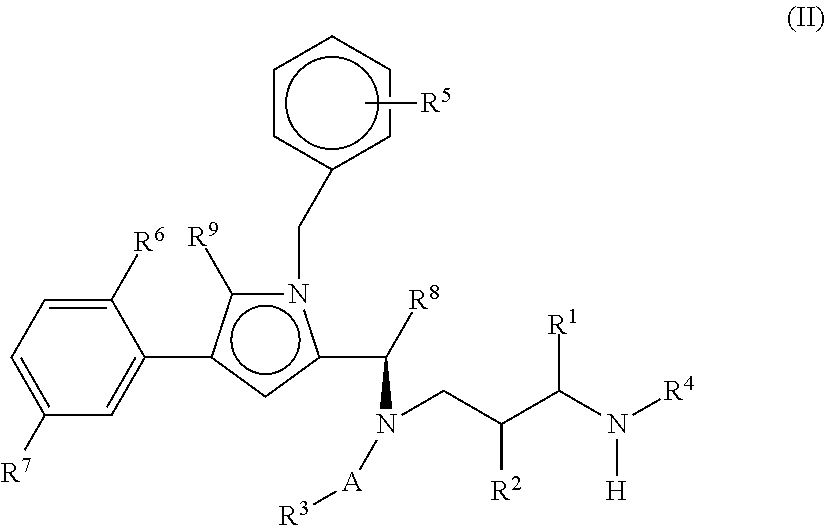




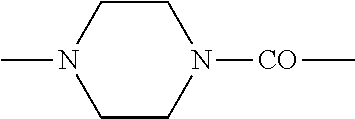



View All Diagrams
| United States Patent | 10,485,880 |
| Lerchen , et al. | November 26, 2019 |
Antibody-drug conjugates (ADCs) of KSP inhibitors with aglycosylated anti-TWEAKR antibodies
Abstract
The present application relates to novel binder drug conjugates (ADCs), to active metabolites of these ADCs, to processes for preparing these ADCs, to the use of these ADCs for the treatment and/or prophylaxis of diseases and to the use of these ADCs for preparing medicaments for treatment and/or prophylaxis of diseases, in particular hyperproliferative and/or angiogenic disorders such as, for example, cancer diseases. Such treatments can be effected as monotherapy or else in combination with other medicaments or further therapeutic measures.
| Inventors: | Lerchen; Hans-Georg (Leverkusen, DE), Wittrock; Sven (Berlin, DE), Cancho Grande; Yolanda (Leverkusen, DE), Stelte-Ludwig; Beatrix (Wulfrath, DE), Sommer; Anette (Berlin, DE), Berndt; Sandra (Hohen Neuendorf, DE), Mahlert; Christoph (Wuppertal, DE), Rebstock; Anne-Sophie (Champagne au Mont d'Or, FR), Terjung; Carsten (Bochum, DE), Greven; Simone (Dormagen, DE) | ||||||||||
|---|---|---|---|---|---|---|---|---|---|---|---|
| Applicant: |
|
||||||||||
| Assignee: | Bayer Pharma Aktiengesellschaft
(Berlin, DE) |
||||||||||
| Family ID: | 55024076 | ||||||||||
| Appl. No.: | 15/536,112 | ||||||||||
| Filed: | December 10, 2015 | ||||||||||
| PCT Filed: | December 10, 2015 | ||||||||||
| PCT No.: | PCT/EP2015/079273 | ||||||||||
| 371(c)(1),(2),(4) Date: | June 14, 2017 | ||||||||||
| PCT Pub. No.: | WO2016/096610 | ||||||||||
| PCT Pub. Date: | June 23, 2016 |
Prior Publication Data
| Document Identifier | Publication Date | |
|---|---|---|
| US 20180015176 A1 | Jan 18, 2018 | |
Foreign Application Priority Data
| Jun 15, 2015 [EP] | 15172051 | |||
| Current U.S. Class: | 1/1 |
| Current CPC Class: | A61P 9/00 (20180101); A61P 35/00 (20180101); A61K 47/6803 (20170801); A61K 31/03 (20130101); A61K 47/6851 (20170801); A61P 43/00 (20180101); A61K 31/131 (20130101); A61K 31/4025 (20130101); A61K 31/497 (20130101); A61K 31/4192 (20130101); A61K 38/00 (20130101); A61K 31/16 (20130101) |
| Current International Class: | A61K 31/4025 (20060101); A61K 31/03 (20060101); A61K 31/131 (20060101); A61K 47/68 (20170101); A61K 38/00 (20060101); A61K 31/497 (20060101); A61K 31/16 (20060101); A61K 31/4192 (20060101) |
References Cited [Referenced By]
U.S. Patent Documents
| 4474893 | October 1984 | Reading |
| 4714681 | December 1987 | Reading |
| 4816397 | March 1989 | Boss |
| 4816567 | March 1989 | Cabilly |
| 4925648 | May 1990 | Hansen |
| 5573920 | November 1996 | Randle |
| 5601819 | February 1997 | Wong |
| 10022453 | July 2018 | Lerchen |
| 2016/0346402 | December 2016 | Lerchen |
| WO199100360 | Jan 1991 | WO | |||
| WO199205793 | Apr 1992 | WO | |||
| WO199208802 | May 1992 | WO | |||
| WO199317715 | Sep 1993 | WO | |||
| WO199708320 | Mar 1997 | WO | |||
| WO2003060064 | Dec 2003 | WO | |||
| WO200349527 | Mar 2004 | WO | |||
| WO2005051922 | Jun 2005 | WO | |||
| WO200602236 | Jan 2006 | WO | |||
| WO2006066896 | Jun 2006 | WO | |||
| WO2006060737 | Sep 2006 | WO | |||
| WO2006100036 | Sep 2006 | WO | |||
| WO2006044825 | Oct 2006 | WO | |||
| WO2005081711 | Nov 2006 | WO | |||
| WO2007070538 | Jan 2009 | WO | |||
| WO2009020933 | Jul 2009 | WO | |||
| WO2009140177 | Aug 2010 | WO | |||
| WO200340979 | May 2012 | WO | |||
| WO2012171020 | Dec 2012 | WO | |||
| WO2013087579 | Jun 2013 | WO | |||
| WO2014151030 | Sep 2014 | WO | |||
| WO2014131739 | Dec 2014 | WO | |||
Other References
|
Berger, S.L. (1987), "Isolation of Cytoplamic RNA: Ribonucleoside-Vanadyl Complexes," Methods in Enzymology 152:227-234. cited by applicant . Chothia, C. et al. (1987), "Canonical Structures for the Hypervariable Regions of Immunoglobulins," J. Mol. Biol, 196:901-917. cited by applicant . Clackson, T. et al. (1991), "Making Antibody Fragments Using Phage Display Libraries," Nature 352:624-628. cited by applicant . Culp P.A. et al. (2010), "Antibodies to TWEAK Receptor Inhibit Human Tumor Growth through Dual Mechanisms," Clin Cancer Res, 16(2):497-508. cited by applicant . Delfourne E. et al. (2003), "Synthesis and in Vitro Antitumor Activity of Phenanthrolin-7-one Derivatives, Analogus of the Marine Pyridoacridine Alkaloids Ascididemin and Meridine: Structure--Activity Relationship," J. Med. Chem. 46(16):3536-3545. cited by applicant . Doronina S.O. et al. (2003), "Development of potent monoclonal antibody auristatin conjugates for cancer therapy," Nature Biotechnol. 21(7):778-784. cited by applicant . Dubowchik G.M. et al. (1998), "Cathepsin B-Sensitive Dipeptide Prodrugs. 1. A Model Study of Structural Requirements for Efficient Release of Doxorubicin," Bioorg Med Chem Lett 8(23):3341-3346. cited by applicant . Dubowchik G.M. et al. (2002), "Cathepsin B-Labile Dipeptide Linkers for Lysosomal Release of Doxorubicin from Internalizing Immunoconjugates: Model Studies of Enzymatic Drug Release and Antigen-Specific in Vitro Anticancer Activity," Chem. 13(4):855-869. cited by applicant . Ducry, L. et al. (2010), "Antibody--Drug Conjugates: Linking Cytotoxic Payloads to Monoclonal Antibodies," Bioconjugate Chem. 21(1): 5-13. cited by applicant . Hoet, R.M. et al. (2005), "Generation of high-affinity human antibodies by combining donor-derived and synthetic complementarity-determining-region diversity," Nat Biotechnol, 23(3):344-348. cited by applicant . Hoogenboom H.R. et al. (2005), "Selecting and screening recombinant antibody libraries," Nat Biotechnol. 23(9)1105-1116. cited by applicant . Junutula J.R. et al. (2008), "Site-specific conjugation of cytotoxic drug to an antibody improves the therapeutic index," Nat Biotechnol. 26(8):925-932. cited by applicant . Kostelny, S.A. et al. (Mar. 1, 1992), "Formation of a Bispecitic Antibody by the Use of Leucine Zippers," J. Immunol. 148(5):1547-1553. cited by applicant . Kohler G. et al. (1975), "Continuous cultures of fused cells secreting antibody of predefined specificity," Nature 256:495-497. cited by applicant . Lambert, J. (2005), "Drug-conjugated monoclonal antibodies for the treatment of cancer," Current Opinion in Pharmacology 5:543-549. cited by applicant . Lang K. et al. (2014), "Cellular Incorporation of Unnatural Amino Acids and Bioorthogonal Labeling of Proteins," Chem. Rev. 114(9):4764-4806. cited by applicant . Lonberg N. et al. (1995), "Human Antibodies from Transgenic Mice," Int Rev Immunol. 13(1):65-93. cited by applicant . Mayer, T.U. et al. (1999), "Small Molecule Inhibitor of Mitotic Spindle Bipolarity Identified in a Phenotype-Based Screen," Science 286:971-974. cited by applicant . Michaelson J.S. et al. (2011), "Development of an Fn14 agonistic antibody as an anti-tumor agent," mAbs. 3(4):362-375. cited by applicant . Olsson L. et al. (1983), "[1] Human-Human Monoclonal Antibody-Producing Hybridomas: Technical Aspects," Meth Enzymol. 92:3-16. cited by applicant . Pellegrini M. et al. (2013), "Structures of the extracellular domains of human and Xenopus Fn14: implications in the evolution of TWEAK and Fn14 interactions," FEBS 280:1818-1829. cited by applicant . Peterson J.J. et al. (1998), "Cathepsin Substrates as Cleavable Peptide Linkers in Bioconjugates, Selected from a Fluorescence Quench Combinatorial Library," Bioconjug Chem 9(5):618-626. cited by applicant . Polson A.G. et al. (2007), "Antibody-drug conjugates targeted to CD79 for the treatment of non-Hodgkin lymphoma," Blood 110(2):616-623. cited by applicant . Polson A.G. et al. (2009), "Antibody-Drug Conjugates for the Treatment of Non-Hodgkin's Lymphoma: Target and Linker-Drug Selection," Cancer Res. 69(6):2358-2364. cited by applicant . Queen, C. et al. (Dec. 1989), "A Humanized Antibody That Binds to the Interleukin 2 Receptor," Proc. Natl Acad. Sci. USA 86:10029-10033. cited by applicant . Rashidian M. et al. (2013), "Enzymatic Labeling of Proteins: Techniques and Approaches," Bioconjugate Chem. 24(8)1277-1294. cited by applicant . Sambrook, J. et al. (1989), "Molecular Cloning: A Laboratory Manual", 2nd ed., Cold Spring Harbor Laboratory, Cold Spring Harbor Laboratory Press, Cold Spring Harbor, N.Y., pp. v-xxxii. (Table of Contents Only). cited by applicant . Schinkel A.H. et al. (1995), "Absence of the mdr1a P-Glycoprotein in Mice Affects Tissue Distribution and Pharmacokinetics of Dexamethasone, Digoxin, and Cyclosporin A," J. Clin. Invest. 96:1698-1705. cited by applicant . Schwab D. et al. (2003), "Comparison of in Vitro P-Glycoprotein Screening Assays: Recommendations for Their Use in Drug Discovery," J. Med. Chem. 46:1716-1725. cited by applicant . Seki M. et al. (2000), "Practical Synthesis of (R)-4-Mercaptopyrrolidine-2-thione from L-Aspartic Acid. Preparation of a Novel Orally Active 1-.beta.-Methycarbapenem, TA-949," J.Org.Chem. 65(2):517-522. cited by applicant . Senter, P.D. (2009), "Potent antibody drug conjugates for cancer therapy," Current Opinion in Chemical Biology 13:235-244. cited by applicant . Soderlind E. et al. (2000), "Recombining germline-derived CDR sequences for creating diverse single-framework antibody libraries," Nature Biotech. 18:852-856. cited by applicant . Tao, W. et al. (2005), "Induction of apoptosis by an inhibitor of the mitotic kinesin KSP requires both activation of the spindle assembly checkpoint and mitotic slippage," Cancer Cell 8(1): 49-59. cited by applicant . Tom R. et al. (2007), "Transient expression in HEK293-EBNA1 cells," in Expression Systems: Methods Express, Dyson, M.R. et al. eds., Scion Publishing Ltd: Oxfordshire, pp. 204-223. cited by applicant . Troutman M.D. et al. (2003), "Novel Experimental Parameters to Quantify the Modulation of Absorptive and Secretory Transport of Compounds by P-Glycoprotein in Cell Culture Models of Intestinal Epithelium," Pharm. Res. 20(8):1210-1224. cited by applicant . Tutt, A. et al. (Jul. 1, 1991), "Trispecific F(ab')3 Derivatives That Use Cooperative Signaling Via the TCR/CD3 Complex and CD2 to Activate and Redirect Resting Cytotoxic T Cells," J. Immunol. 147:60-69. cited by applicant . Wu, A. et al. (2005). "Arming antibodies: prospects and challenges for immunoconjugates," Nature Biotechnology 23(9): 1137-1146. cited by applicant. |
Primary Examiner: Puttlitz; Karl J
Attorney, Agent or Firm: Morrison & Foerster LLP
Claims
The invention claimed is:
1. A conjugate of an antibody with one or more drug molecules of the formula below: ##STR00896## wherein BINDER is an aglycosylated anti-TWEAKR antibody, L is a linker, n is a number from 1 to 50, and KSP is a compound of the formula (I) below: ##STR00897## wherein: R.sup.1 is H, -L-#1, -MOD or --(CH.sub.2).sub.0-3Z, wherein Z is --H, --NHY.sup.3, --OY.sup.3, --SY.sup.3, halogen, --CO--NY.sup.1Y.sup.2 or --CO--OY.sup.3, wherein Y.sup.1 and Y.sup.2 are independently of one another represent H, NH.sub.2, --(CH.sub.2CH.sub.2O).sub.0-3--(CH.sub.2).sub.0-3Z' or --CH(CH.sub.2W)Z', and Y.sup.3 is H or --(CH.sub.2).sub.0-3Z', wherein Z' is H, NH.sub.2, SO.sub.3H, COOH, --NH--CO--CH.sub.2--CH.sub.2--CH(NH.sub.2)COOH or --(CO--NH--CHY.sup.4).sub.1-3COOH, wherein W is H or OH, wherein Y.sup.4 is straight-chain or branched C.sub.1-6 alkyl which is optionally substituted by --NHCONH.sub.2, or is aryl or benzyl which are optionally substituted by --NH.sub.2; R.sup.2 is H, -MOD, --CO--CHY.sup.4--NHY.sup.5 or --(CH.sub.2).sub.0-3Z, wherein Z is --H, halogen, --OY.sup.3, --SY.sup.3, NHY.sup.3, --CO--NY.sup.1Y.sup.2 or --CO--OY.sup.3, wherein Y.sup.1 and Y.sup.2 are independently H, NH.sub.2 or --(CH.sub.2).sub.0-3Z', and Y.sup.3 is H or --(CH.sub.2).sub.0-3Z', wherein Z' is H, SO.sub.3H, NH.sub.2 or COOH; Y.sup.4 is straight-chain or branched C.sub.1-6-alkyl which is optionally substituted by --NHCONH.sub.2, or is aryl or benzyl which are optionally substituted by --NH.sub.2, and Y.sup.5 is s H or CO--CHY.sup.6--NH.sub.2, wherein Y.sup.6 is straight-chain or branched C.sub.1-6-alkyl; R.sup.4 is H, -L-#1, -SG.sub.lys-(CO).sub.0-1--R.sup.4', --CO--CHY.sup.4--NHY.sup.5 or --(CH.sub.2).sub.0-3Z, wherein SG.sub.lys is a group cleavable by lysosomal enzymes, R.sup.4' is a C.sub.1-10-alkyl, C.sub.5-10-aryl or C.sub.6-10-aralkyl, C.sub.5-10-heteroalkyl, C.sub.1-10-alkyl-O--C.sub.6-10-aryl, C.sub.5-10-heterocycloalkyl, heteroaryl, heteroarylalkyl, heteroarylalkoxy, C.sub.1-10-alkoxy, C.sub.6-10-aryloxy or C.sub.6-10-aralkoxy, C.sub.5-10-heteroaralkoxy, C.sub.1-10-alkyl-O--C.sub.6-10-aryloxy, C.sub.5-10-heterocycloalkoxy group which may be mono- or polysubstituted by --NH.sub.2, --NH-alkyl, --N(alkyl).sub.2, NH--CO-alkyl, N(alkyl)-CO-alkyl, --SO.sub.3H, --SO.sub.2NH.sub.2, --SO.sub.2--N(alkyl).sub.2, --COOH, CONH.sub.2, --CON(alkyl).sub.2 or --OH, or R.sup.4' is --H or a group --O.sub.x--(CH.sub.2CH.sub.2O).sub.y--R.sup.4'', wherein x is 0 or 1, and y is a number from 1 to 10, and R.sup.4'' is --H, -alkyl, CH.sub.2--COOH, CH.sub.2--CH.sub.2--COOH, or CH.sub.2--CH.sub.2--NH.sub.2; Z is --H, halogen, --OY.sup.3, --SY.sup.3, NHY.sup.3, --CO--NY.sup.1Y.sup.2 or --CO--OY.sup.3, Y.sup.1 and Y.sup.2 are independently H, NH.sub.2 or --(CH.sub.2).sub.0-3Z', and Y.sup.3 is H or --(CH.sub.2).sub.0-3Z', wherein Z' is H, SO.sub.3H, NH.sub.2 or COOH; Y.sup.4 is straight-chain or branched C.sub.1-6-alkyl which is optionally substituted by --NHCONH.sub.2, or Y.sup.4 is aryl or benzyl which are optionally substituted by --NH.sub.2, and Y.sup.5 is H or CO CHY.sup.6--NH.sub.2, wherein Y.sup.6 is straight-chain or branched C.sub.1-6-alkyl; or R.sup.2 and R.sup.4 together (with formation of a pyrrolidine ring) represent are --CH.sub.2--CHR.sup.11-- or --CHR.sup.11--CH.sub.2--, wherein R.sup.11 is H, NH.sub.2, SO.sub.3H, COOH, SH, halogen C.sub.1-4-alkyl, C.sub.1-4-haloalkyl, C.sub.1-4-alkoxy, hydroxyl-substituted C.sub.1-4-alkyl, COO(C.sub.1-4-alkyl) or OH; A is CO, SO, SO.sub.2, SO.sub.2NH or CNNH; R.sup.3 is -L-#1, -MOD or an optionally substituted alkyl, cycloalkyl, aryl, heteroaryl, heteroalkyl, heterocycloalkyl group, which may be substituted by 1-3 --OH groups, 1-3 halogen atoms, 1-3 halogenated alkyl groups (each having 1-3 halogen atoms), 1-3 O-alkyl groups, 1-3 --SH groups, 1-3 --S-alkyl groups, 1-3 --O--CO-alkyl groups, 1-3 --O--CO--NH-alkyl groups, 1-3 --NH--CO-alkyl groups, 1-3 --NH--CO--NH-alkyl groups, 1-3 --S(O).sub.n-alkyl groups, 1-3 --SO.sub.2--NH-alkyl groups, 1-3 --NH-alkyl groups, 1-3 --N(alkyl).sub.2 groups, 1-3 --NH.sub.2 groups or 1-3 --(CH.sub.2).sub.0-3Z groups, wherein Z is --H, halogen, --OY.sup.3, --SY.sup.3, --NHY.sup.3, --CO--NY.sup.1Y.sup.2 or --CO--OY.sup.3, wherein Y.sup.1 and Y.sup.2 are H, NH.sub.2 or --(CH.sub.2).sub.0-3Z' and Y.sup.3 is H, --(CH.sub.2).sub.0-3--CH(NHCOCH.sub.3)Z', --(CH.sub.2).sub.0-3--CH(NH.sub.2)Z' or --(CH.sub.2).sub.0-3Z', wherein Z' is H, SO.sub.3H, NH.sub.2 or COOH; R.sup.5 is H, NH.sub.2, NO.sub.2, halogen, CN, CF.sub.3, --OCF.sub.3, --CH.sub.2F, --CH.sub.2F, SH or --(CH.sub.2).sub.0-3Z, wherein Z is --H, --OY.sup.3, --SY.sup.3, halogen, NHY.sup.3, --CO--NY.sup.1Y.sup.2 or --CO--OY.sup.3, wherein Y.sup.1 and Y.sup.2 are independently H, NH.sub.2 or --(CH.sub.2).sub.0-3Z', and Y.sup.3 is H or --(CH.sub.2).sub.0-3Z', wherein Z' is H, SO.sub.3H, NH.sub.2 or COOH; R.sup.6 and R.sup.7 are independently H, cyano, optionally fluorinated C.sub.1-10-alkyl, optionally fluorinated C.sub.2-10-alkenyl, optionally fluorinated C.sub.2-10-alkynyl, hydroxy, NO.sub.2, NH.sub.2, COOH or halogen, R.sup.8 is optionally fluorinated C.sub.1-10-alkyl, optionally fluorinated C.sub.2-10-alkenyl, optionally fluorinated C.sub.2-10-alkynyl, optionally fluorinated C.sub.4-10-cycloalkyl or --(CH.sub.2).sub.0-2--(HZ.sup.2), wherein HZ.sup.2 is a 4- to 7-membered heterocycle having up to two heteroatoms selected from the group consisting of N, O and S, wherein each of these groups may be substituted by --OH, CO.sub.2H or NH.sub.2; R.sup.9 is H, F, CH.sub.3, CF.sub.3, CH.sub.2F or CHF.sub.2; wherein one of the substituents R.sup.1, R.sup.3 and R.sup.4 is -L-#1, L is the linker and #1 is the bond to the antibody, wherein -MOD is (NR.sup.10).sub.n-(G1).sub.o-G2-H, wherein R.sup.10 is H, NH.sub.2, or C.sub.1-C.sub.3-alkyl; G1 is --NHCO--, --CONH-- or ##STR00898## wherein if G1 is --NHCO-- or ##STR00899## R.sup.10 is not NH.sub.2; n is 0 or 1; o is 0 or 1; and G2 is a straight-chain and/or branched hydrocarbon group which has 1 to 10 carbon atoms and which may be interrupted once or more than once by one or more of the groups --O--, --S--, --SO--, --SO.sub.2, --NR.sup.y--, --NR.sup.yCO--, CONR.sup.y--, --NR.sup.yNR.sup.y--, --SO.sub.2NR.sup.yNR.sup.y--, --CONR.sup.yNR.sup.y--, --CO--, or --CR.sup.x.dbd.N--O--, wherein the hydrocarbon chain including any side chains may be substituted by --NHCONH.sub.2, --COOH, --OH, --NH.sub.2, NH--CNNH.sub.2, sulphonamide, sulphone, sulphoxide or sulphonic acid; wherein R.sup.y is H, phenyl, C.sub.1-C.sub.10-alkyl, C.sub.2-C.sub.10-alkenyl or C.sub.2-C.sub.10-alkynyl, each of which may be substituted by --NHCONH.sub.2, --COOH, --OH, --NH.sub.2, NH--CNNH.sub.2, sulphonamide, sulphone, sulphoxide or sulphonic acid; wherein Rx is H, C.sub.1-C.sub.3-alkyl or phenyl; or a salt, a solvate, or a salt of the solvate thereof.
2. The conjugate according to claim 1, wherein A is CO (carbonyl).
3. The conjugate according to claim 1, wherein R.sup.1 is H, -L-#1, --COOH, --CONHNH.sub.2, --(CH.sub.2).sub.1-3NH.sub.2, --CONZ''(CH.sub.2).sub.1-3NH.sub.2 or --CONZ''CH.sub.2COOH, wherein Z'' is H or NH.sub.2.
4. The conjugate according to claim 1, wherein R.sup.2 and R.sup.4 represent are H, or R.sup.2 and R.sup.4 together (with formation of a pyrrolidine ring) are --CHR.sup.11--CH.sub.2-- or --CH.sub.2--CHR.sup.11--, wherein R.sup.11 is H, COOH, F, Me, CH.sub.2F, OMe, CH.sub.2OH, COO(C.sub.1-4-alkyl) or OH.
5. The conjugate according to claim 1, wherein R.sup.3 is -L-#1 or a phenyl group which may be mono- or polysubstituted by halogen or optionally fluorinated C.sub.1-3-alkyl, or is an optionally fluorinated C.sub.1-10-alkyl group which may optionally be substituted by --OY.sup.4, --SY.sup.4, --O--CO--Y.sup.4, --O--CO--NH--Y.sup.4, NH--CO--Y.sup.4, --NH--CO--NH--Y.sup.4, S(O).sub.n--Y.sup.4--SO.sub.2--NH--Y.sup.4, NH--Y.sup.4 or N(Y.sup.4).sub.2, wherein n is 0, 1, or 2; and wherein Y.sup.4 is H, phenyl, wherein said phenyl is optionally mono- or polysubstituted by halogen or optionally fluorinated C.sub.1-3-alkyl, or alkyl, wherein the alkyl group may be substituted by --OH, --COOH, or --NHCO--C.sub.1-3-alkyl.
6. The conjugate according to claim 5, wherein the conjugate has the formula (IIj) below: ##STR00900## wherein: R.sup.3 is -L-#1; A is CO; R.sup.6 and R.sup.7 are independently H, cyano, optionally fluorinated C.sub.1-10-alkyl, optionally fluorinated C.sub.2-10-alkenyl, optionally fluorinated C.sub.2-10-alkynyl, hydroxy, NO.sub.2, NH.sub.2, COOH or halogen; R.sup.8 is optionally fluorinated C.sub.1-10-alkyl, optionally fluorinated C.sub.2-10-alkenyl, optionally fluorinated C.sub.2-10-alkynyl, optionally fluorinated C.sub.4-10-cycloalkyl or --(CH.sub.2).sub.0-2--(HZ.sup.2), wherein HZ.sup.2 is a 4- to 7-membered heterocycle having up to two heteroatoms selected from the group consisting of N, O and S, wherein each of these groups may be substituted by --OH, CO.sub.2H or NH.sub.2; and R.sup.9 is H, F, CH.sub.3, CF.sub.3, CH.sub.2F or CHF.sub.2.
7. The conjugate according to claim 1, wherein R.sup.1 is -L-#1.
8. The conjugate according to claim 7, wherein the conjugate has the formula (IIk): ##STR00901## wherein: R.sup.1 is -L-#1; A is CO; R.sup.3 is --CH.sub.2OH; R.sup.6 and R.sup.7 are independently H, cyano, optionally fluorinated C.sub.1-10-alkyl, optionally fluorinated C.sub.2-10-alkenyl, optionally fluorinated C.sub.2-10-alkynyl, hydroxy, NO.sub.2, NH.sub.2, COOH or halogen; R.sup.8 is optionally fluorinated C.sub.1-10-alkyl, optionally fluorinated C.sub.2-10-alkenyl, optionally fluorinated C.sub.2-10-alkynyl, optionally fluorinated C.sub.4-10-cycloalkyl or --(CH.sub.2).sub.0-2--(HZ.sup.2), wherein HZ.sup.2 is a 4- to 7-membered heterocycle having up to two heteroatoms selected from the group consisting of N, O and S, wherein each of these groups may be substituted by --OH, CO.sub.2H or NH.sub.2; and R.sup.9 is H, F, CH.sub.3, CF.sub.3, CH.sub.2F or CHF.sub.2.
9. The conjugate according to claim 1, wherein R.sup.5 is H or F.
10. The conjugate according to claim 1, wherein R.sup.6 and R.sup.7 are independently H, optionally fluorinated C.sub.1-3-alkyl, optionally fluorinated C.sub.2-4-alkenyl, optionally fluorinated C.sub.2-4-alkynyl, hydroxy or halogen.
11. The conjugate according to claim 1, wherein R.sup.8 is a branched C.sub.1-5-alkyl group or cyclohexyl.
12. The conjugate according to claim 1, wherein R.sup.9 is H or F.
13. The conjugate according to claim 1, wherein the anti-TWEAKR antibody binds specifically to the amino acid D in position 47 (D47) of TWEAKR.
14. The conjugate according to claim 1, wherein the linker -L- has one of the basic structures (i) to (iv) below: --(CO).sub.m-SG1-L1-L2-; (i) --(CO).sub.m-L1-SG-L1-L2-; (ii) --(CO).sub.m-L1-L2-; (iii) --(CO).sub.m-L1-SG-L2; (iv) wherein m is 0 or 1, SG and SG1 represent are in vivo cleavable groups, each L1 is independently an organic group not cleavable in vivo, and L2 is a coupling group to the binder.
15. The conjugate according to claim 14, wherein the in vivo cleavable group SG is a 2-8 oligopeptide group, or a disulphide, a hydrazone, an acetal or an aminal; and SG1 is a 2-8 oligopeptide group.
16. The conjugate according to claim 1, wherein the linker is attached to a cysteine side chain or a cysteine residue and has the formula below: .sctn. --(CO)m-L1-L2-.sctn..sctn. wherein m is 0 or 1; .sctn. represents the bond to the active compound molecule and .sctn..sctn. represents the bond to the antibody, and -L2 is ##STR00902## wherein #.sup.1 denotes the point of attachment to the sulphur atom of the antibody, #.sup.2 denotes the point of attachment to group L.sup.1, L1 is --(NR.sup.10)n-(G1)o-G2-, wherein R.sup.10 is H, NH.sub.2 or C1-C3-alkyl; G1 is --NHCO-- or ##STR00903## n is 0 or 1; o is 0 or 1; and G2 is a straight-chain or branched hydrocarbon chain having 1 to 100 carbon atoms from arylene groups and/or straight-chain and/or branched and/or cyclic alkylene groups and which may be interrupted once or more than once by one or more of the groups --O--, --S--, --SO--, SO2, --NH--, --CO--, --NMe-, --NHNH--, --SO2NHNH--, --NHCO--, --CONH--, --CONHNH-- and a 5- to 10-membered aromatic or non-aromatic heterocycle having up to 4 heteroatoms selected from the group consisting of N, O and S, --SO-- or --SO2-, wherein the side chains, if present, may be substituted by --NHCONH.sub.2, --COOH, --OH, --NH.sub.2, NH--CNNH.sub.2, sulphonamide, sulphone, sulphoxide or sulphonic acid, or is one of the groups below: ##STR00904## wherein Rx is H, C.sub.1-C.sub.3-alkyl or phenyl.
17. The conjugate according to claim 16, wherein L2 is represented by one or both of the formulae below: ##STR00905## wherein #.sup.1 denotes the point of attachment to the sulphur atom of the binder, #.sup.2 denotes the point of attachment to group L.sup.1, R.sup.22 is COOH and more than 80% (based on the total number of bonds of the linker to the binder) of the bonds to the sulphur atom of the binder are present in one of these two structures.
18. The conjugate according to claim 16, wherein L.sup.1 has the formula below: ##STR00906## wherein r is a number from 0 to 8.
19. The conjugate according to claim 1, wherein the conjugate has one of the formulae below: ##STR00907## wherein AK.sub.1A is an aglycosylated antibody which is attached via a sulphur atom of the binder; n is a number from 1 to 20; and L1 is a straight-chain or branched hydrocarbon chain having 1 to 100 carbon atoms from arylene groups and/or straight-chain and/or branched and/or cyclic alkylene groups and which may be interrupted once or more than once by one or more of the groups --O--, --S--, --SO--, SO.sub.2, --NH--, --CO--, --CONH--, --NHCO--, --NMe-, --NHNH--, --SO.sub.2NHNH--, --CONHNH-- and a 5- to 10-membered aromatic or non-aromatic heterocycle having up to 4 heteroatoms selected from the group consisting of N, O and S, --SO--or --SO.sub.2-- ##STR00908## wherein the side chains, if present, may be substituted by --NHCONH.sub.2, --COOH, --OH, --NH.sub.2, NH--CNNH.sub.2, sulphonamide, sulphone, sulphoxide or sulphonic acid.
20. The conjugate according to claim 1, wherein the linker -L- is attached to a cysteine side chain or a cysteine residue and has the formula below: ##STR00909## wherein .sctn. is the bond to the active compound molecule and .sctn..sctn. is the bond to the antibody, m is 0, 1, 2 or 3; n is 0, 1 or 2; p is 0 to 20; and L3 is ##STR00910## wherein o is 0 or 1; and G3 is a straight-chain or branched hydrocarbon chain having 1 to 100 carbon atoms from arylene groups and/or straight-chain and/or branched and/or cyclic alkylene groups and which may be interrupted once or more than once by one or more of the groups --O--, --S--,--SO--, SO.sub.2, --NH--, --CO--, --NHCO--, --CONH-- and a 5- to 10-membered aromatic or non-aromatic heterocycle having up to 4 heteroatoms selected from the group consisting of N, O and S, --NMe-, --NHNH--, --SO.sub.2NHNH--, --CONHNH--, --SO-- or --SO.sub.2-- ##STR00911## wherein the side chains, if present, may be substituted by --NHCONH.sub.2, --COOH, --OH, sulphone, sulphoxide or sulphonic acid.
21. The conjugate according to claim 1, wherein the anti-TWEAKR antibody is an agonistic antibody.
22. The conjugate according to claim 1, which comprises: a variable heavy chain comprising: a. a CDR1 of the heavy chain encoded by an amino acid sequence comprising the formula PYPMX (SEQ ID NO: 171), wherein X is I or M; b. a CDR2 of the heavy chain encoded by an amino acid sequence comprising the formula YISPSGGXTHYADSVKG (SEQ ID NO: 172), wherein X is S or K; and c. a CDR3 of the heavy chain encoded by an amino acid sequence comprising the formula GGDTYFDYFDY (SEQ ID NO: 173); and a variable light chain comprising: d. a CDR1 of the light chain encoded by an amino acid sequence comprising the formula RASQSISXYLN (SEQ ID NO: 174), wherein X is G or S; e. a CDR2 of the light chain encoded by an amino acid sequence comprising the formula XASSLQS (SEQ ID NO: 175), wherein X is Q, A or N; and f. a CDR3 of the light chain encoded by an amino acid sequence comprising the formula QQSYXXPXIT (SEQ ID NO: 176), wherein X in position 5 is T or S, X in position 6 is T or S and X in position 8 is G or F.
23. A pharmaceutical composition comprising a conjugate according to claim 1 in combination with an inert non-toxic pharmaceutically suitable auxiliary.
24. A method for the treatment of a hyperproliferative or angiogenic disorder, the method comprising administering to a patient in need thereof a conjugate according to claim 1.
25. A compound selected from the group consisting of: 4-[(2-{[(2R)-2-({(2S)-2-amino-4-[{(1R)-1-[1-benzyl-4-(2,5-difluorophenyl)- -1H-pyrrol-2-yl]-2,2-dimethylpropyl}(glycoloyl)amino]butanoyl}amino)-2-car- boxyethyl]amino}-2-oxoethyl)amino]-2-{[(2R)-2-amino-2-carboxyethyl]sulphan- yl}-4-oxobutanoic acid; S-(1-{2-[2-({(2S)-2-amino-4-[{(1R)-1-[1-benzyl-4-(2,5-difluorophenyl)-1H-- pyrrol-2-yl]-2,2-dimethylpropyl}(glycoloyl)amino]butanoyl}amino)ethoxy]eth- yl}-2,5-dioxopyrrolidin-3-yl)-L-cysteine; (3R,7S)-7-amino-17-{[(2R)-2-amino-2-carboxyethyl]sulphanyl}-3-[1-benzyl-4- -(2,5-difluorophenyl)-1H-pyrrol-2-yl]-4-glycoloyl-2,2-dimethyl-8,16-dioxo-- 12-oxa-4,9,15-triazanonadecan-19-oic acid; (3R,7S)-7-amino-18-{[(2R)-2-amino-2-carboxyethyl]sulphanyl}-3-[1-benzyl-4- -(2,5-difluorophenyl)-1H-pyrrol-2-yl]-4-glycoloyl-2,2-dimethyl-8,16-dioxo-- 12-oxa-4,9,15-triazanonadecan-19-oic acid; 2-{[(2R)-2-amino-2-carboxyethyl]sulphanyl}-4-({(14R)-13-(3-aminopropyl)-1- 4-[1-benzyl-4-(2,5-difluorophenyl)-1H-pyrrol-2-yl]-15,15-dimethyl-2,7,12-t- rioxo-10-thia-3,6,13-triazahexadec-1-yl}amino)-4-oxobutanoic acid; 3-{[(2R)-2-amino-2-carboxyethyl]sulphanyl}-4-({(14R)-13-(3-aminopropyl)-1- 4-[1-benzyl-4-(2,5-difluorophenyl)-1H-pyrrol-2-yl]-15,15-dimethyl-2,7,12-t- rioxo-10-thia-3,6,13-triazahexadec-1-yl}amino)-4-oxobutanoic acid; S-(2-{[2-({(2S)-2-amino-4-[{(1R)-1-[1-benzyl-4-(2,5-difluorophenyl)-1H-py- rrol-2-yl]-2,2-dimethylpropyl}(glycoloyl)amino]butanoyl}amino)ethyl]amino}- -2-oxoethyl)-L-cysteine: (3R)-6-{(11S,15R)-11-amino-15-[1-benzyl-4-(2,5-difluorophenyl)-1H-pyrrol-- 2-yl]-14-glycoloyl-16,16-dimethyl-2,5,10-trioxo-3,6,9,14-tetraazaheptadec-- 1-yl}-5-oxothiomorpholine-3-carboxylic acid; (2R,28R)-28-amino-2-[({2-[(3-aminopropyl){(1R)-1-[1-benzyl-4-(2,5-difluor- ophenyl)-1H-pyrrol-2-yl]-2,2-dimethylpropyl}amino]-2-oxoethyl}sulphanyl)me- thyl]-25-(carboxymethyl)-4,20,24-trioxo-7,10,13,16-tetraoxa-26-thia-3,19,2- 3-triazanonacosane-1,29-dioic acid; (1R,28R,34R)-1-amino-33-(3-aminopropyl)-34-[1-benzyl-4-(2,5-difluoropheny- l)-1H-pyrrol-2-yl]-35,35-dimethyl-6,10,26,32-tetraoxo-14,17,20,23-tetraoxa- -3,30-dithia-7,11,27,33-tetraazahexatriacontane-1,4,28-tricarboxylic acid; S-{2-[(3-aminopropyl){(1R)-1-[1-benzyl-4-(2,5-difluorophenyl)-1H-pyrrol-2- -yl]-2,2-dimethylpropyl}amino]-2-oxoethyl}-L-cysteine; 4-{[(1R)-2-({2-[(3-aminopropyl){(1R)-1-[1-benzyl-4-(2,5-difluorophenyl)-1- H-pyrrol-2-yl]-2,2-dimethylpropyl}amino]-2-oxoethyl}sulphanyl)-1-carboxyet- hyl]amino}-4-oxobutanoic acid; (1R,4R,27R,33R)-1-amino-32-(3-aminopropyl)-33-[1-benzyl-4-(2,5-difluoroph- enyl)-1H-pyrrol-2-yl]-34,34-dimethyl-6,9,25,31-tetraoxo-13,16,19,22-tetrao- xa-3,29-dithia-7,10,26,32-tetraazapentatriacontane-1,4,27-tricarboxylic acid; and (2R,24S,27R)-27-amino-2-[({2-[(3-aminopropyl){(1R)-1-[1-benzyl-- 4-(2,5-difluorophenyl)-1H-pyrrol-2-yl]-2,2-dimethylpropyl}amino]-2-oxoethy- l}sulphanyl)methyl]-24-(carboxymethyl)-4,20,23-trioxo-7,10,13,16-tetraoxa-- 25-thia-3,19,22-triazaoctacosane-1,28-dioic acid; or a salt, a solvate, or salt of the solvate thereof.
26. The conjugate according to claim 1, wherein n is a number from 1.2 to 20.
27. The conjugate according to claim 1, wherein n is a number from 2 to 8.
28. The conjugate according to claim 1, wherein R.sup.3 is -L-#1 or a C.sub.1-10-alkyl, C.sub.6-10-aryl or C.sub.6-10-aralkyl, C.sub.5-10-heteroalkyl, C.sub.1-10-alkyl-O--C.sub.6-10-aryl or C.sub.5-10-heterocycloalkyl group which may be substituted by 1-3 --OH groups, 1-3 halogen atoms, 1-3 halogenated alkyl groups (each having 1-3 halogen atoms), 1-3 O-alkyl groups, 1-3 --SH groups, 1-3 --S-alkyl groups, 1-3 --O--CO-alkyl groups, 1-3 --O--CO--NH-alkyl groups, 1-3 --NH--CO-alkyl groups, 1-3 --NH--CO--NH-alkyl groups, 1-3 --S(O).sub.n-alkyl groups, 1-3 --SO.sub.2--NH-alkyl groups, 1-3 --NH-alkyl groups, 1-3 --N(alkyl).sub.2 groups, 1-3 --NH.sub.2 groups or 1-3 --(CH.sub.2).sub.0-3Z groups, wherein Z is --H, halogen, --OY.sup.3, --SY.sup.3, --NHY.sup.3, --CO--NY.sup.1Y.sup.2 or --CO--OY.sup.3, wherein Y.sup.1 and Y.sup.2 are independently H, NH.sub.2 or --(CH.sub.2).sub.0-3Z' and Y.sup.3 is H, --(CH.sub.2).sub.0-3--CH(NHCOCH.sub.3)Z', --(CH.sub.2).sub.0-3--CH(NH.sub.2)Z' or --(CH.sub.2).sub.0-3Z', wherein Z' is H, SO.sub.3H, NH.sub.2 or COOH.
29. The conjugate according to claim 13, wherein the anti-TWEAKR antibody is anti-TWEAKR antibody TPP-2658.
Description
CROSS REFERENCE TO RELATED APPLICATIONS
This application is the national stage of International Application No. PCT/EP2015/079273, filed internationally on Dec. 10, 2015, which claims the benefit of European Application No. 14197999.7, filed Dec. 15, 2014, and European Application No. 15172051.3, filed Jun. 15, 2015, the disclosures of which are hereby incorporated by reference in their entireties for all purposes.
SUBMISSION OF SEQUENCE LISTING ON ASCII TEXT FILE
The content of the following submission on ASCII text file is incorporated herein by reference in its entirety: a computer readable form (CRF) of the Sequence Listing (file name: 777052016100SeqList.txt, date recorded: Jun. 14, 2017, size: 274 KB).
INTRODUCTION AND STATE OF THE ART
The invention relates to binder drug conjugates (ADCs) of kinesin spindle protein inhibitors, to active metabolites of these ADCs, to processes for preparing these ADCs, to the use of these ADCs for the treatment and/or prophylaxis of diseases and to the use of these ADCs for preparing medicaments for treatment and/or prevention of diseases, in particular hyperproliferative and/or angiogenic disorders such as, for example, cancer diseases. Such treatments can be effected as monotherapy or else in combination with other medicaments or further therapeutic measures.
Cancers are the consequence of uncontrolled cell growth of the most diverse tissues. In many cases the new cells penetrate into existing tissue (invasive growth), or they metastasize into remote organs. Cancers occur in a wide variety of different organs and often have tissue-specific courses.
The term "cancer" as a generic term therefore describes a large group of defined diseases of different organs, tissue and cell types.
Some tumours at early stages can be removed by surgical and radiotherapy measures. Metastased tumours as a rule can only be treated palliatively by chemotherapeutics. The aim here is to achieve the optimum combination of an improvement in the quality of life and prolonging of life.
Conjugates of binder proteins with one or more active compound molecules are known, in particular in the form of antibody drug conjugates (ADCs) in which an internalising antibody directed against a tumour-associated antigen is covalently attached via a linker to a cytotoxic agent. Following introduction of the ADCs into the tumour cell and subsequent dissociation of the conjugate, either the cytotoxic agent itself or a cytotoxic metabolite formed therefrom is released within the tumour cell and can unfold its action therein directly and selectively. In this manner, in contrast to conventional chemotherapy, damage to normal tissue is contained in significantly narrower limits [see, for example, J. M. Lambert, Curr. Opin. Pharmacol. 5, 543-549 (2005); A. M. Wu and P. D. Senter, Nat. Biotechnol. 23, 1137-1146 (2005); P. D. Senter, Curr. Opin. Chem. Biol. 13, 235-244 (2009); L. Ducry and B. Stump, Bioconjugate Chem. 21, 5-13 (2010)]. Thus, WO2012/171020 describes ADCs in which a plurality of toxophor molecules are attached via a polymeric linker to an antibody. As possible toxophors, WO2012/171020 mentions, among others, the substances SB 743921, SB 715992 (Ispinesib), MK-0371, AZD8477, AZ3146 and ARRY-520. The substances mentioned last are kinesin spindle protein inhibitors. Kinesin spindle protein (KSP, also known as Eg5, HsEg5, KNSL1 or KIF11) is a kinesin-like motorprotein which is essential for the bipolar mitotic spindle to function. Inhibition of KSP leads to mitotic arrest and, over a relatively long term, to apoptosis (Tao et al., Cancer Cell 2005 Jul. 8(1), 39-59). After the discovery of the first cell-permeable KSP inhibitor, monastrol, KSP inhibitors have established themselves as a class of novel chemotherapeutics (Mayer et al., Science 286: 971-974, 1999) and have been the subject of a number of patent applications (e.g. WO2006/044825; WO2006/002236; WO2005/051922; WO2006/060737; WO03/060064; WO03/040979; and WO03/049527). However, since KSP unfolds its action only during a relatively short period of time during the mitosis phase, KSP inhibitors have to be present in a sufficiently high concentration during this phase. WO2014/151030 discloses ADCs including certain KSP inhibitors.
SUMMARY OF THE INVENTION
Against this background it is an object of the present invention to provide substances which, after administration at a relatively low concentration, unfold apoptotic action and may therefore be of benefit for cancer therapy.
To achieve this object, the invention provides conjugates of an aglycosylated or aglycosyl anti-TWEAKR antibody with compounds of the formula (I) below, where one or more of the compounds of the formula (I) are attached to the antibody via a linker L. Aglycosylated antibodies are antibodies which do not have any glycans at the conserved N-binding site in the CH2 domain of the Fc region. The antibody is preferably a human, humanized or chimeric monoclonal antibody. Particular preference is given to an anti-TWEAKR antibody which binds specifically to the amino acid D in position 47 (D47) of TWEAKR (SEQ ID NO: 169), in particular the anti-TWEAKR antibody TPP-2658.
##STR00001##
where
R.sup.1 represents H, -L-#1, -MOD or --(CH.sub.2).sub.0-3Z, where Z represents --H, --NHY.sup.3, --OY.sup.3, --SY.sup.3, halogen, --CO--NY.sup.1Y.sup.2 or --CO--OY.sup.3,
where Y.sup.1 and Y.sup.2 independently of one another represent H, NH.sub.2, --(CH.sub.2CH.sub.2O).sub.0-3--(CH.sub.2).sub.0-3Z' (e.g. --(CH.sub.2).sub.0-3Z') or --CH(CH.sub.2W)Z', and Y.sup.3 represents H or --(CH.sub.2).sub.0-3Z', where Z' represents H, NH.sub.2, SO.sub.3H, COOH, --NH--CO--CH.sub.2--CH.sub.2--CH(NH.sub.2)COOH or --(CO--NH--CHY.sup.4).sub.1-3COOH, where W represents H or OH,
where Y.sup.4 represents straight-chain or branched C.sub.1-6 alkyl which is optionally substituted by --NHCONH.sub.2, or represents aryl or benzyl which are optionally substituted by --NH.sub.2;
R.sup.2 represents H, -MOD, --CO--CHY.sup.4--NHY.sup.5 or --(CH.sub.2).sub.0-3Z,
where Z represents --H, halogen, --OY.sup.3, --SY.sup.3, NHY.sup.3, --CO--NY.sup.1Y.sup.2 or --CO--OY.sup.3,
where Y.sup.1 and Y.sup.2 independently of one another represent H, NH.sub.2 or --(CH.sub.2).sub.0-3Z', and Y.sup.3 represents H or --(CH.sub.2).sub.0-3Z', where Z' represents H, SO.sub.3H, NH.sub.2 or COOH;
where Y.sup.4 represents straight-chain or branched C.sub.1-6-alkyl which is optionally substituted by --NHCONH.sub.2, or represents aryl or benzyl which are optionally substituted by --NH.sub.2, and Y.sup.5 represents H or --CO--CHY.sup.6--NH.sub.2, where Y.sup.6 represents straight-chain or branched C.sub.1-6-alkyl;
R.sup.4 represents H, -L-#1, -SG.sub.lys-(CO).sub.0-1--R.sup.4', --CO--CHY.sup.4--NHY.sup.5 or --(CH.sub.2).sub.0-3Z,
where SG.sub.lys represents a group cleavable by lysosomal enzymes, in particular a group consisting of a di- or tripeptide, R.sup.4' represents a C.sub.1-10-alkyl, C.sub.5-10-aryl or C.sub.6-10-aralkyl, C.sub.5-10-heteroalkyl, C.sub.1-10-alkyl-O--C.sub.6-10-aryl, C.sub.5-10-heterocycloalkyl, heteroaryl, heteroarylalkyl, heteroarylalkoxy, C.sub.1-10-alkoxy, C.sub.6-10-aryloxy or C.sub.6-10-aralkoxy, C.sub.5-10-heteroaralkoxy, C.sub.1-10-alkyl-O--C.sub.6-10-aryloxy, C.sub.5-10-heterocycloalkoxy group which may be mono- or polysubstituted by --NH.sub.2, --NH-- alkyl, --N(alkyl).sub.2, NH--CO-alkyl, N(alkyl)-CO-alkyl, --SO.sub.3H, --SO.sub.2NH.sub.2, --SO.sub.2--N(alkyl).sub.2, --COOH, --CONH.sub.2, --CON(alkyl).sub.2 or --OH, represents --H or a group --O.sub.x--(CH.sub.2CH.sub.2O)--R.sup.4', (where x represents 0 or 1 and n represents a number from 1 to 10, and R.sup.4'' represents --H, -alkyl (preferably C.sub.1-12-alkyl), --CH2-COOH, --CH2-CH2-COOH or --CH2-CH2-NH2), where, after cleavage, a primary amine group is present (corresponds to R.sup.4.dbd.H);
where Z represents --H, halogen, --OY.sup.3, --SY.sup.3, NHY.sup.3, --CO--NY.sup.1Y.sup.2 or --CO--OY.sup.3,
where Y.sup.1 and Y.sup.2 independently of one another represent H, NH.sub.2 or --(CH.sub.2).sub.0-3Z', and Y.sup.3 represents H or --(CH.sub.2).sub.0-3Z', where Z' represents H, SO.sub.3H, NH.sub.2 or COOH;
where Y.sup.4 represents straight-chain or branched C.sub.1-6-alkyl which is optionally substituted by --NHCONH.sub.2, or represents aryl or benzyl which are optionally substituted by --NH.sub.2, and Y.sup.5 represents H or --CO--CHY.sup.6--NH.sub.2, where Y.sup.6 represents straight-chain or branched C.sub.1-6-alkyl;
or R.sup.2 and R.sup.4 together (with formation of a pyrrolidine ring) represent --CH.sub.2--CHR.sup.11-- or --CHR.sup.11--CH.sub.2--, where R.sup.11 represents H, NH.sub.2, SO.sub.3H, COOH, SH, halogen (in particular F or Cl), C.sub.1-4-alkyl, C.sub.1-4-haloalkyl, C.sub.1-4-alkoxy, hydroxyl-substituted C.sub.1-4-alkyl, COO(C.sub.1-4-alkyl) or OH;
A represents CO, SO, SO.sub.2, SO.sub.2NH or CNNH;
R.sup.3 represents -L-#1, -MOD or an optionally substituted alkyl, cycloalkyl, aryl, heteroaryl, heteroalkyl, heterocycloalkyl group, preferably -L-#1 or a C.sub.1-10-alkyl, C.sub.6-10-aryl or C.sub.6-10-aralkyl, C.sub.5-10-heteroalkyl, C.sub.1-10-alkyl-O--C.sub.6-10-aryl or C.sub.5-10-heterocycloalkyl group which may be substituted by 1-3 --OH groups, 1-3 halogen atoms, 1-3 halogenated alkyl groups (each having 1-3 halogen atoms), 1-3 O-alkyl groups, 1-3 --SH groups, 1-3 --S-alkyl groups, 1-3 --O--CO-alkyl groups, 1-3 --O--CO--NH-alkyl groups, 1-3 --NH--CO-alkyl groups, 1-3 --NH--CO--NH-alkyl groups, 1-3 --S(O).sub.n-alkyl groups, 1-3 --SO.sub.2--NH-alkyl groups, 1-3 --NH-alkyl groups, 1-3 --N(alkyl).sub.2 groups, 1-3 --NH.sub.2 groups or 1-3 --(CH.sub.2).sub.0-3Z groups, where Z represents --H, halogen, --OY.sup.3, --SY.sup.3, --NHY.sup.3, --CO--NY.sup.1Y.sup.2 or --CO--OY.sup.3, where Y.sup.1 and Y.sup.2 independently of one another represent H, NH.sub.2 or --(CH.sub.2).sub.0-3Z' and Y.sup.3 represents H, --(CH.sub.2).sub.0-3--CH(NHCOCH.sub.3)Z', --(CH.sub.2).sub.0-3--CH(NH.sub.2)Z' or --(CH.sub.2).sub.0-3Z', where Z' represents H, SO.sub.3H, NH.sub.2 or COOH
(where "alkyl" preferably represents C.sub.1-10-alkyl);
R.sup.5 represents H, NH.sub.2, NO.sub.2, halogen (in particular F, Cl, Br), --CN, CF.sub.3, --OCF.sub.3, --CH.sub.2F, --CH.sub.2F, SH or --(CH.sub.2).sub.0-3Z, where Z represents --H, --OY.sup.3, --SY.sup.3, halogen, NHY.sup.3, --CO--NY.sup.1Y.sup.2 or --CO--OY.sup.3,
where Y.sup.1 and Y.sup.2 independently of one another represent H, NH.sub.2 or --(CH.sub.2).sub.0-3Z', and Y.sup.3 represents H or --(CH.sub.2).sub.0-3Z', where Z' represents H, SO.sub.3H, NH.sub.2 or COOH;
R.sup.6 and R.sup.7 independently of one another represent H, cyano, (optionally fluorinated) C.sub.1-10-alkyl, (optionally fluorinated) C.sub.2-10-alkenyl, (optionally fluorinated) C.sub.2-10-alkynyl, hydroxy, NO.sub.2, NH.sub.2, COOH or halogen (in particular F, Cl, Br),
R.sup.8 represents (optionally fluorinated) C.sub.1-10-alkyl, (optionally fluorinated) C.sub.2-10-alkenyl, (optionally fluorinated) C.sub.2-10-alkynyl, (optionally fluorinated) C.sub.4-10-cycloalkyl or --(CH.sub.2).sub.0-2--(HZ.sup.2), where HZ.sup.2 represents a 4- to 7-membered heterocycle having up to two heteroatoms selected from the group consisting of N, O and S, where each of these groups may be substituted by --OH, CO.sub.2H or NH.sub.2;
R.sup.9 represents H, F, CH.sub.3, CF.sub.3, CH.sub.2F or CHF.sub.2;
where one of the substituents R.sup.1, R.sup.3 or R.sup.4 represents or (in the case of R.sup.8) contains -L-#1,
L represents the linker and #1 represents the bond to the binder or derivative thereof,
where -MOD represents --(NR.sup.10).sub.n-(G1).sub.o-G2-H, where
R.sup.10 represents H or C.sub.1-C.sub.3-alkyl;
G1 represents --NHCO--, --CONH-- or
##STR00002## (where, if G1 represents --NHCO-- or
##STR00003## R.sup.10 does not represent NH.sub.2);
n represents 0 or 1;
o represents 0 or 1; and
G2 represents a straight-chain and/or branched hydrocarbon group which has 1 to 10 carbon atoms and which may be interrupted once or more than once by one or more of the groups --O--, --S--, --SO--, SO.sub.2, --NR.sup.y--, --NR.sup.yCO--, CONR.sup.y--, --NR.sup.yNR.sup.y--, --SO.sub.2NR.sup.yNR.sup.y--, --CONR.sup.yNR.sup.y-- (where R.sup.y represents H, phenyl, C.sub.1-C.sub.10-alkyl, C.sub.2-C.sub.10-alkenyl or C.sub.2-C.sub.10-alkynyl, each of which may be substituted by NHCONH.sub.2, --COOH, --OH, --NH.sub.2, NH--CNNH.sub.2, sulphonamide, sulphone, sulphoxide or sulphonic acid), --CO--, or --CR.sup.x.dbd.N--O-- (where Rx represents H, C.sub.1-C.sub.3-alkyl or phenyl), where the hydrocarbon chain including any side chains may be substituted by --NHCONH.sub.2, --COOH, --OH, --NH.sub.2, NH--CNNH.sub.2, sulphonamide, sulphone, sulphoxide or sulphonic acid, where the group -MOD preferably has at least one group --COOH;
and the salts, solvates and salts of the solvates thereof.
The conjugates according to the invention can have chemically labile linkers, enzymatically labile linkers or stable linkers. Particular preference is given to stable linkers and linkers which can be cleaved by cathepsin.
The invention furthermore provides processes for preparing the conjugates according to the invention, and also precursors and intermediates for the preparation.
The preparation of the conjugates according to the invention regularly comprises the following steps:
preparation of a linker precursor which optionally carries protective groups and has a reactive group which is capable of coupling to the antibody;
conjugation of the linker precursor to the derivative, which optionally carries protective groups, of a KSP inhibitor of the formula (I), where in these formulae there is as yet no bond to a linker, giving a reactive KSP inhibitor/linker conjugate which optionally carries protective groups;
removal of any protective groups present in the KSP inhibitor/linker conjugate and
conjugation of the antibody to the KSP inhibitor/linker conjugate, giving the antibody/KSP inhibitor conjugate according to the invention.
Attachment of the reactive group may also take place after the construction of an optionally protected KSP inhibitor/linker precursor conjugate.
Depending on the linker, succinimide-linked ADCs may, after conjugation, be converted according to Scheme 26 into the open-chain succinamides, which have an advantageous stability profile.
As illustrated above, conjugation of the linker precursor to a low-molecular-weight KSP inhibitor can be by substitution of a hydrogen atom at R.sup.1, R.sup.3 or R.sup.4 in formula (I) by the linker. In the synthesis steps prior to the conjugation, any functional groups present may also be present in protected form. Prior to the conjugation step, these protective groups are removed by known methods of peptide chemistry. The conjugation can take place chemically by various routes, as shown in an exemplary manner in Schemes 20 to 31 in the examples. In particular, it is optionally possible to modify the low-molecular weight KSP inhibitor for conjugation to the linker, for example by introduction of protective groups or leaving groups to facilitate substitution.
In particular, the invention provides novel low-molecular-weight KSP inhibitors conjugated to an anti-TWEAKR antibody. These KSP inhibitors or their antibody conjugates have the following general formula (II):
##STR00004##
where
R.sup.1 represents H, -L-BINDER, -MOD or --(CH.sub.2).sub.0-3Z, where Z represents --H, --NHY.sup.3, --OY.sup.3, --SY.sup.3, halogen, --CO--NY.sup.1Y.sup.2 or --CO--OY.sup.3,
where Y.sup.1 and Y.sup.2 independently of one another represent H, NH.sub.2, --(CH.sub.2CH.sub.2O).sub.0-3--(CH.sub.2).sub.0-3Z' (e.g. --(CH.sub.2).sub.0-3Z') or --CH(CH.sub.2W)Z', and Y.sup.3 represents H or --(CH.sub.2).sub.0-3Z', where Z' represents H, NH.sub.2, SO.sub.3H, COOH, --NH--CO--CH.sub.2--CH.sub.2--CH(NH.sub.2)COOH or --(CO--NH--CHY.sup.4).sub.1-3COOH, where W represents H or OH,
where Y.sup.4 represents straight-chain or branched C.sub.1-6 alkyl which is optionally substituted by --NHCONH.sub.2, or represents aryl or benzyl which are optionally substituted by --NH.sub.2;
R.sup.2 represents H, -MOD, --CO--CHY.sup.4--NHY.sup.5 or --(CH.sub.2).sub.0-3Z, or R.sup.2 and R.sup.4 together (with formation of a pyrrolidine ring) represent --CH.sub.2--CHR.sup.10-- or --CHR.sup.10--CH.sub.2--, where R.sup.10 represents H, NH.sub.2, SO.sub.3H, COOH, SH, or OH;
where Z represents --H, halogen, --OY.sup.3, --SY.sup.3, NHY.sup.3, --CO--NY.sup.1Y.sup.2 or --CO--OY.sup.3,
where Y.sup.1 and Y.sup.2 independently of one another represent H, NH.sub.2 or --(CH.sub.2).sub.0-3Z', and Y.sup.3 represents H or --(CH.sub.2).sub.0-3Z', where Z' represents H, SO.sub.3H, NH.sub.2 or COOH;
where Y.sup.4 represents straight-chain or branched C.sub.1-6-alkyl which is optionally substituted by --NHCONH.sub.2, or represents aryl or benzyl which are optionally substituted by --NH.sub.2, and Y.sup.5 represents H or --CO--CHY.sup.6--NH.sub.2, where Y.sup.6 represents straight-chain or branched C.sub.1-6-alkyl;
R.sup.4 represents H, -L-BINDER, -SG.sub.lys-(CO).sub.0-1--R.sup.4', --CO--CHY.sup.4--NHY.sup.5 or --(CH.sub.2).sub.0-3Z,
where SG.sub.lys represents a group cleavable by lysosomal enzymes, in particular a group consisting of a di- or tripeptide, R.sup.4' represents a C.sub.1-10-alkyl, C.sub.5-10-aryl or C.sub.6-10-aralkyl, C.sub.5-10-heteroalkyl, C.sub.1-10-alkyl-O--C.sub.6-10-aryl, C.sub.5-10-heterocycloalkyl, heteroaryl, heteroarylalkyl, heteroarylalkoxy, C.sub.1-10-alkoxy, C.sub.6-10-aryloxy or C.sub.6-10-aralkoxy, C.sub.5-10-heteroaralkoxy, C.sub.1-10-alkyl-O--C.sub.6-10-aryloxy, C.sub.5-10-heterocycloalkoxy group which may be mono- or polysubstituted by --NH.sub.2, --NH-- alkyl, --N(alkyl).sub.2, NH--CO-alkyl, N(alkyl)-CO-alkyl, --SO.sub.3H, --SO.sub.2NH.sub.2, --SO.sub.2--N(alkyl).sub.2, --COOH, --CONH.sub.2, --CON(alkyl).sub.2 or --OH, represents --H or a group --O.sub.x--(CH.sub.2CH.sub.2O)--R.sup.4', (where x represents 0 or 1 and n represents a number from 1 to 10, and R.sup.4' represents --H, -alkyl (preferably C1-12-alkyl), --CH2-COOH, --CH2-CH2-COOH or --CH2-CH2-NH2), where, after cleavage, a primary amine group is present (corresponds to R.sup.4.dbd.H);
where Z represents --H, halogen, --OY.sup.3, --SY.sup.3, NHY.sup.3, --CO--NY.sup.1Y.sup.2 or --CO--OY.sup.3,
where Y.sup.1 and Y.sup.2 independently of one another represent H, NH.sub.2 or --(CH.sub.2).sub.0-3Z', and Y.sup.3 represents H or --(CH.sub.2).sub.0-3Z', where Z' represents H, SO.sub.3H, NH.sub.2 or COOH;
where Y.sup.4 represents straight-chain or branched C.sub.1-6-alkyl which is optionally substituted by --NHCONH.sub.2, or represents aryl or benzyl which are optionally substituted by --NH.sub.2, and Y.sup.5 represents H or --CO--CHY.sup.6--NH.sub.2, where Y.sup.6 represents straight-chain or branched C.sub.1-6-alkyl; or R.sup.2 and R.sup.4 together (with formation of a pyrrolidine ring) represent --CH.sub.2--CHR.sup.11-- or --CHR.sup.11--CH.sub.2--, where R.sup.11 represents H, NH.sub.2, SO.sub.3H, COOH, SH, halogen (in particular F or Cl), C.sub.1-4-alkyl, C.sub.1-4-haloalkyl, C.sub.1-4-alkoxy, hydroxyl-substituted C.sub.1-4-alkyl, COO(C.sub.1-4-alkyl) or OH;
A represents CO, SO, SO.sub.2, SO.sub.2NH or CNNH;
R.sup.3 represents -L-BINDER, -MOD or an optionally substituted alkyl, cycloalkyl, aryl, heteroaryl, heteroalkyl, heterocycloalkyl group, preferably -L-BINDER or a C.sub.1-10-alkyl, C.sub.6-10-aryl or C.sub.6-10-aralkyl, C.sub.5-10-heteroalkyl, C.sub.1-10-alkyl-O--C.sub.6-10-aryl or C.sub.5-10-heterocycloalkyl group which may be substituted by 1-3 --OH groups, 1-3 halogen atoms, 1-3 halogenated alkyl groups (each having 1-3 halogen atoms), 1-3 O-alkyl groups, 1-3 --SH groups, 1-3 --S-alkyl groups, 1-3 --O--CO-alkyl groups, 1-3 --O--CO--NH-alkyl groups, 1-3 --NH--CO-alkyl groups, 1-3 --NH--CO--NH-alkyl groups, 1-3 --S(O).sub.n-alkyl groups, 1-3 --SO.sub.2--NH-alkyl groups, 1-3 --NH-alkyl groups, 1-3 --N(alkyl).sub.2 groups, 1-3 --NH.sub.2 groups or 1-3 --(CH.sub.2).sub.0-3Z groups, where Z represents --H, halogen, --OY.sup.3, --SY.sup.3, --NHY.sup.3, --CO--NY.sup.1Y.sup.2 or --CO--OY.sup.3, where Y.sup.1 and Y.sup.2 independently of one another represent H, NH.sub.2 or --(CH.sub.2).sub.0-3Z' and Y.sup.3 represents H, --(CH.sub.2).sub.0-3--CH(NHCOCH.sub.3)Z', --(CH.sub.2).sub.0-3--CH(NH.sub.2)Z' or --(CH.sub.2).sub.0-3Z', where Z' represents H, SO.sub.3H, NH.sub.2 or COOH
(where "alkyl" preferably represents C.sub.1-10-alkyl);
R.sup.5 represents H, NH.sub.2, NO.sub.2, halogen (in particular F, Cl, Br), --CN, CF.sub.3, --OCF.sub.3, --CH.sub.2F, --CH.sub.2F, SH or --(CH.sub.2).sub.0-3Z, where Z represents --H, --OY.sup.3, --SY.sup.3, halogen, NHY.sup.3, --CO--NY.sup.1Y.sup.2 or --CO--OY.sup.3,
where Y.sup.1 and Y.sup.2 independently of one another represent H, NH.sub.2 or --(CH.sub.2).sub.0-3Z', and Y.sup.3 represents H or --(CH.sub.2).sub.0-3Z', where Z' represents H, SO.sub.3H, NH.sub.2 or COOH;
R.sup.8 represents (optionally fluorinated) C.sub.1-10-alkyl, (optionally fluorinated) C.sub.2-10-alkenyl, (optionally fluorinated) C.sub.2-10-alkynyl, (optionally fluorinated) C.sub.4-10-cycloalkyl or --(CH.sub.2).sub.0-2--(HZ.sup.2), where HZ.sup.2 represents a 4- to 7-membered heterocycle having up to two heteroatoms selected from the group consisting of N, O and S (preferably oxetane), where each of these groups may be substituted by --OH, CO.sub.2H or NH.sub.2;
R.sup.9 represents H, F, CH.sub.3, CF.sub.3, CH.sub.2F or CHF.sub.2;
where L represents a linker and BINDER represents an aglycosylated anti-TWEAKR antibody, where the binder may optionally be attached to a plurality of active compound molecules,
where one or no representative of R.sup.1, R.sup.3 and R.sup.4 represents -L-BINDER;
R.sup.6 and R.sup.7 independently of one another represent H, cyano, (optionally fluorinated) C.sub.1-10-alkyl, (optionally fluorinated) C.sub.2-10-alkenyl, (optionally fluorinated) C.sub.2-10-alkynyl, hydroxy, NO.sub.2, NH.sub.2, COOH or halogen (in particular F, Cl, Br),
where -MOD represents --(NR.sup.10).sub.n-(G1).sub.o-G2-H, where
R.sup.10 represents H or C.sub.1-C.sub.3-alkyl;
G1 represents --NHCO--, --CONH-- or
##STR00005## (where, if G1 represents --NHCO-- or
##STR00006## R.sup.10 does not represent NH.sub.2);
n represents 0 or 1;
o represents 0 or 1; and
G2 represents a straight-chain and/or branched hydrocarbon group which has 1 to 10 carbon atoms and which may be interrupted once or more than once by one or more of the groups --O--, --S--, --SO--, SO.sub.2, --NR.sup.y--, --NR.sup.yCO--, CONR.sup.y--, --NR.sup.yNR.sup.y--, --SO.sub.2NR.sup.yNR.sup.y--, --CONR.sup.yNR.sup.y-- (where R.sup.y represents H, phenyl, C.sub.1-C.sub.10-alkyl, C.sub.2-C.sub.10-alkenyl or C.sub.2-C.sub.10-alkynyl, each of which may be substituted by NHCONH.sub.2, --COOH, --OH, --NH.sub.2, NH--CNNH.sub.2, sulphonamide, sulphone, sulphoxide or sulphonic acid), --CO--, --CR.sup.x.dbd.N--O-- (where Rx represents H, C.sub.1-C.sub.3-alkyl or phenyl), where the hydrocarbon chain including any side chains may be substituted by --NHCONH.sub.2, --COOH, --OH, --NH.sub.2, NH--CNNH.sub.2, sulphonamide, sulphone, sulphoxide or sulphonic acid, where the group -MOD preferably has at least one group --COOH;
and the salts, solvates and salts of the solvates thereof.
DESCRIPTION OF THE FIGURES
FIG. 1 shows the alignment of the TWEAKR-cysteine-rich domain (amino acid 34 to 68) of different species. (The numbers indicate the amino acid position in full-length constructs including the signal sequences; SEQ ID NO: 169).
FIG. 2A shows a schematic diagram of the structure of TWEAKR (SEQ ID NO: 169). The diagram shows the extracellular domain (amino acids 28-80) (SEQ ID NO: 168) including the cysteine-rich domain (36-67), the transmembrane domain--TM (81-101) and the intracellular domain (102-129). TPP-2202 the complete ectodomain (28-80) fused to the Fc domain of hIgG1. TPP-2203--extracellular domain with N- and C-terminal truncation (34-68), fused to the Fc domain of hIgG1. The disulphide bridges Cys36-Cys49, Cys52-Cys67 and Cys55-Cys64 are indicated by black bars. N-terminally, TPP-2203 contains two amino acids and C-terminally one amino acid more than the pure cysteine-rich domain, to ensure correct folding. TPP-1984--extracellular domain with C-terminal truncation (28-68), fused to an HIS6 tag. All three constructs show comparable binding to the antibodies according to the invention and PDL-192 (TPP-1104). P4A8 (TPP-1324) binds only to the full-length extracellular domain (TPP-2202).
FIG. 2B shows the amino acid sequence of the extracellular domain. It has been published that the amino acid 64 is essential for TWEAK ligand binding; and the amino acid 47 is essential for binding of the antibodies according to the invention, as determined here.
DETAILED DESCRIPTION OF THE INVENTION
The invention provides conjugates of an aglycosyl anti-TWEAKR antibody with one or more active compound molecules, the active compound molecule being a kinesin spindle protein inhibitor (KSP inhibitor) attached to the antibody via a linker L.
The conjugate according to the invention can be represented by the general formula
##STR00007##
where BINDER represents the anti-TWEAKR antibody, L represents the linker, KSP represents the KSP inhibitor and n represents a number from 1 to 50, preferably from 1.2 to 20 and particularly preferably from 2 to 8. Here, n is the mean of the number of KSP inhibitor/linker conjugates per BINDER. Preferably, KSP-L has the formula (I) shown above. Furthermore, the linker is preferably attached to different amino acids of the antibody. Particular preference is given to binding to different cysteine residues of the binder. The aglycosylated anti-TWEAKR antibody is preferably a human, humanized or chimeric monoclonal antibody. Particular preference is given to an anti-TWEAKR antibody which binds specifically to the amino acid D in position 47 (D47) of TWEAKR (SEQ ID NO: 169), in particular the anti-TWEAKR antibody TPP-2658.
Antibodies which can be used according to the invention, KSP inhibitors which can be used according to the invention and linkers which can be used according to the invention which can be used in combination without any limitation are described below. In particular, the binders represented in each case as preferred or particularly preferred can be employed in combination with the KSP inhibitors represented in each case as preferred or particularly preferred, optionally in combination with the linkers represented in each case as preferred or particularly preferred.
KSP Inhibitors and their Binder Conjugates
C.sub.1-10-Alkyl in the context of the invention (i.e. in the formulae above and also in the formulae that follow) represents a straight-chain or branched alkyl radical having 1 to 10 carbon atoms. By way of example and with preference, mention may be made of: methyl, ethyl, n-propyl, isopropyl, n-butyl, isobutyl, 1-methylpropyl and tert-butyl.
C.sub.6-10-Aryl- in the context of the invention represents a mono- or bicyclic aromatic homocycle, for example phenyl and naphthyl.
C.sub.6-10-Aralkyl group in the context of the invention represents a monocyclic aromatic homocycle, by way of example phenyl, to which a C.sub.1-C.sub.4-alkyl group is attached. An exemplary C.sub.6-10-aralkyl group is benzyl.
C.sub.5-10-Heteroaryl in the context of the invention represents a mono- or bicyclic aromatic heterocycle having a total of 6 to 10 ring atoms, where the ring(s) contains/contain one or two ring heteroatoms from the group consisting of N, O, S, SO and SO.sub.2 and which is attached via a ring carbon atom or optionally a ring nitrogen atom. Examples which may be mentioned are pyridyl, furanyl, pyrimidyl, imidazolyl, thienyl, thiophenyl, isoxazoyl, isothiazoyl, 1,2,3-oxadiazoyl, furazanyl, 1,2,3-triazoyl, 1,2,4-triazoyl, pyridazyl, pyrrolyl, triazinyl, indolyl, quinolinyl, quinazolinyl, 1,3-benzodioxol, isoindolyl, indazolyl, 1H-pyrazolo[3,4-d]pyrimidyl, benzotriazolyl, isoquinolinyl, cinolinyl, phthalazinyl, pteridinyl, naphthyridinyl, benzimidazolinyl, benzothiazolinyl, benzoxazolinyl, 3,4-methylenedioxyphenyl and benzo[6]furanyl.
Mono- or bicyclic heterocycle in the context of the invention represents a mono- or bicyclic heterocycle having a total of 5 to 10 ring carbon atoms, where the ring(s) contains/contain one to three ring heteroatoms from the group consisting of N, O, S, SO and SO.sub.2 and which is attached via a ring carbon atom or optionally a ring nitrogen atom. Examples which may be mentioned are piperidyl, pyrrolinyl, morpholinyl, 3,4-methylenedioxyphenyl and tetrahydrofuranyl.
Halogen atom in the context of the invention represents F, Cl, Br or I.
The conjugation of the KSP inhibitor to the antibody can take place chemically by various routes, as shown in an exemplary manner in Schemes 20 to 31 in the examples. In particular, it is optionally possible to modify the low-molecular weight KSP inhibitor for the conjugation to the linker, for example by introducing protective groups or leaving groups to facilitate substitution (such that in the reaction said leaving group, and not a hydrogen atom, is substituted by the linker). The KSP inhibitor--linker molecule obtained in this manner (where the linker has a reactive group for coupling to the binder) can then be reacted with the binder to give a binder conjugate according to the invention. In the experimental section, this procedure is illustrated in an exemplary manner by a large number of examples.
Other particularly preferred compounds have the formula (I) or (Ia) below:
##STR00008##
where
R.sup.1 represents H, -L-#1, -MOD or --(CH.sub.2).sub.0-3Z, where Z represents --H, --NHY.sup.3, --OY.sup.3, --SY.sup.3, halogen, --CO--NY.sup.1Y.sup.2 or --CO--OY.sup.3,
where Y.sup.1 and Y.sup.2 independently of one another represent H, NH.sub.2, --(CH2CH.sub.2O).sub.0-3--(CH.sub.2).sub.0-3Z' (e.g. --(CH.sub.2).sub.0-3Z') or --CH(CH.sub.2W)Z', and Y.sup.3 represents H or --(CH.sub.2).sub.0-3Z', where Z' represents H, NH.sub.2, SO.sub.3H, COOH, --NH--CO--CH.sub.2--CH.sub.2--CH(NH.sub.2)COOH or --(CO--NH--CHY.sup.4).sub.1-3COOH, where W represents H or OH,
where Y.sup.4 represents straight-chain or branched C.sub.1-6 alkyl which is optionally substituted by --NHCONH.sub.2, or represents aryl or benzyl which are optionally substituted by --NH.sub.2;
R.sup.2 represents H, -MOD, --CO--CHY.sup.4--NHY.sup.5 or --(CH.sub.2).sub.0-3Z,
where Z represents --H, halogen, --OY.sup.3, --SY.sup.3, NHY.sup.3, --CO--NY.sup.1Y.sup.2 or --CO--OY.sup.3,
where Y.sup.1 and Y.sup.2 independently of one another represent H, NH.sub.2 or --(CH.sub.2).sub.0-3Z', and Y.sup.3 represents H or --(CH.sub.2).sub.0-3Z', where Z' represents H, SO.sub.3H, NH.sub.2 or COOH;
where Y.sup.4 represents straight-chain or branched C.sub.1-6-alkyl which is optionally substituted by --NHCONH.sub.2, or represents aryl or benzyl which are optionally substituted by --NH.sub.2, and Y.sup.5 represents H or --CO--CHY.sup.6--NH.sub.2, where Y.sup.6 represents straight-chain or branched C.sub.1-6-alkyl;
R.sup.4 represents H, -L-#1, -SG.sub.lys-(CO).sub.0-1--R.sup.4', --CO--CHY.sup.4--NHY.sup.5 or --(CH.sub.2).sub.0-3Z,
where SG.sub.lys represents a group cleavable by lysosomal enzymes, in particular a group consisting of a di- or tripeptide, R.sup.4' represents a C.sub.1-10-alkyl, C.sub.5-10-aryl or C.sub.6-10-aralkyl, C.sub.5-10-heteroalkyl, C.sub.1-10-alkyl-O--C.sub.6-10-aryl, C.sub.5-10-heterocycloalkyl, heteroaryl, heteroarylalkyl, heteroarylalkoxy, C.sub.1-10-alkoxy, C.sub.6-10-aryloxy or C.sub.6-10-aralkoxy, C.sub.5-10-heteroaralkoxy, C.sub.1-10-alkyl-O--C.sub.6-10-aryloxy, C.sub.5-10-heterocycloalkoxy group which may be mono- or polysubstituted by --NH.sub.2, --NH-- alkyl, --N(alkyl).sub.2, NH--CO-alkyl, N(alkyl)-CO-alkyl, --SO.sub.3H, --SO.sub.2NH.sub.2, --SO.sub.2--N(alkyl).sub.2, --COOH, --CONH.sub.2, --CON(alkyl).sub.2 or --OH, represents --H or a group --O.sub.x--(CH.sub.2CH.sub.2O)--R.sup.4, (where x represents 0 or 1 and n represents a number from 1 to 10, and R.sup.4'' represents --H, -alkyl (preferably C.sub.1-12-alkyl), --CH2-COOH, --CH2-CH2-COOH or --CH2-CH2-NH2);
where Z represents --H, halogen, --OY.sup.3, --SY.sup.3, NHY.sup.3, --CO--NY.sup.1Y.sup.2 or --CO--OY.sup.3,
where Y.sup.1 and Y.sup.2 independently of one another represent H, NH.sub.2 or --(CH.sub.2).sub.0-3Z', and Y.sup.3 represents H or --(CH.sub.2).sub.0-3Z', where Z' represents H, SO.sub.3H, NH.sub.2 or COOH;
where Y.sup.4 represents straight-chain or branched C.sub.1-6-alkyl which is optionally substituted by --NHCONH.sub.2, or represents aryl or benzyl which are optionally substituted by --NH.sub.2, and Y.sup.5 represents H or --CO--CHY.sup.6--NH.sub.2, where Y.sup.6 represents straight-chain or branched C.sub.1-6-alkyl; or R.sup.2 and R.sup.4 together (with formation of a pyrrolidine ring) represent --CH.sub.2--CHR.sup.10-- or --CHR.sup.10--CH.sub.2--, where R.sup.10 represents H, NH.sub.2, SO.sub.3H, COOH, SH, halogen (in particular F or Cl), C.sub.1-4-alkyl, C.sub.1-4-haloalkyl, C.sub.1-4-alkoxy, hydroxyl-substituted C.sub.1-4-alkyl, COO(C.sub.1-4-alkyl) or OH;
A represents CO, SO, SO.sub.2, SO.sub.2NH or CNNH;
R.sup.3 represents -L-#1, -MOD or an optionally substituted alkyl, cycloalkyl, aryl, heteroaryl, heteroalkyl, heterocycloalkyl group, preferably a C.sub.1-10-alkyl, C.sub.6-10-aryl or C.sub.6-10-aralkyl, C.sub.5-10-heteroalkyl, C.sub.1-10-alkyl-O--C.sub.6-10-aryl or C.sub.5-10-heterocycloalkyl group which may be substituted by 1-3 --OH groups, 1-3 halogen atoms, 1-3 halogenated alkyl groups (each having 1-3 halogen atoms), 1-3 O-alkyl groups, 1-3 --SH groups, 1-3 --S-alkyl groups, 1-3 --O--CO-alkyl groups, 1-3 --O--CO--NH-alkyl groups, 1-3 --NH--CO-alkyl groups, 1-3 --NH--CO--NH-alkyl groups, 1-3 --S(O).sub.n-alkyl groups, 1-3 --SO.sub.2--NH-alkyl groups, 1-3 --NH-alkyl groups, 1-3 --N(alkyl).sub.2 groups, 1-3 --NH((CH.sub.2CH.sub.2O)1-20H) groups, 1-3 --NH2 groups or 1-3 --(CH2).sub.0-3Z groups, where Z represents --H, halogen, --OY.sup.3, --SY.sup.3, --NHY.sup.3, --CO--NY.sup.1Y.sup.2 or --CO--OY.sup.3, where Y.sup.1 and Y.sup.2 independently of one another represent H, NH.sub.2 or --(CH.sub.2).sub.0-3Z' and Y.sup.3 represents H, --(CH.sub.2).sub.0-3--CH(NHCOCH.sub.3)Z', --(CH.sub.2).sub.0-3--CH(NH.sub.2)Z' or --(CH.sub.2).sub.0-3Z', where Z' represents H, SO.sub.3H, NH.sub.2 or COOH (where "alkyl" is preferably C.sub.1-10-alkyl);
R.sup.5 represents H, -MOD, NH.sub.2, NO.sub.2, halogen (in particular F, Cl, Br), --CN, CF.sub.3, --OCF.sub.3, --CH.sub.2F, --CH.sub.2F, SH or --(CH.sub.2).sub.0-3Z, where Z represents --H, --OY.sup.3, --SY.sup.3, halogen, NHY.sup.3, --CO--NY.sup.1Y.sup.2 or --CO--OY.sup.3,
where Y.sup.1 and Y.sup.2 independently of one another represent H, NH.sub.2 or --(CH.sub.2).sub.0-3Z', and Y.sup.3 represents H or --(CH.sub.2).sub.0-3Z', where Z' represents H, SO.sub.3H, NH.sub.2 or COOH;
R.sup.6 and R.sup.7 independently of one another represent H, cyano, (optionally fluorinated) C.sub.1-10-alkyl, (optionally fluorinated) C.sub.2-10-alkenyl, (optionally fluorinated) C.sub.2-10-alkynyl, hydroxy, NO.sub.2, NH.sub.2, COOH or halogen (in particular F, Cl, Br),
R.sup.8 represents (optionally fluorinated) C.sub.1-10-alkyl, (optionally fluorinated) C.sub.2-10-alkenyl, (optionally fluorinated) C.sub.2-10-alkynyl, (optionally fluorinated) C.sub.4-10-cycloalkyl or --(CH.sub.2).sub.0-2--(HZ.sup.2), where HZ.sup.2 represents a 4- to 7-membered heterocycle having up to two heteroatoms selected from the group consisting of N, O and S (preferably oxetane), where each of these groups may be substituted by --OH, CO.sub.2H or NH.sub.2;
where one of the substituents R.sup.1, R.sup.3 and R.sup.4 represents -L-#1,
L represents the linker and #1 represents the bond to the antibody,
R.sup.9 represents H, F, CH.sub.3, CF.sub.3, CH.sub.2F or CHF.sub.2;
where -MOD represents --(NR.sup.10).sub.n-(G1).sub.o-G2-H, where
R.sup.10 represents H or C.sub.1-C.sub.3-alkyl;
G1 represents --NHCO--, --CONH-- or
##STR00009## (where, if G1 represents --NHCO-- or
##STR00010## R.sup.10 does not represent NH.sub.2);
n represents 0 or 1;
o represents 0 or 1; and
G2 represents a straight-chain and/or branched hydrocarbon group which has 1 to 10 carbon atoms and which may be interrupted once or more than once by one or more of the groups --O--, --S--, --SO--, SO.sub.2, --NR.sup.y--, --NR.sup.yCO--, CONR.sup.y--, --NR.sup.yNR.sup.y--, --SO.sub.2NR.sup.yNR.sup.y--, --CONR.sup.yNR.sup.y-- (where R.sup.y represents H, phenyl, C.sub.1-C.sub.10-alkyl, C.sub.2-C.sub.10-alkenyl or C.sub.2-C.sub.10-alkynyl, each of which may be substituted by NHCONH.sub.2, --COOH, --OH, --NH.sub.2, NH--CNNH.sub.2, sulphonamide, sulphone, sulphoxide or sulphonic acid), --CO-- or --CR.sup.x.dbd.N--O-- (where Rx represents H, C.sub.1-C.sub.3-alkyl or phenyl), where the hydrocarbon chain including any side chains may be substituted by --NHCONH.sub.2, --COOH, --OH, --NH.sub.2, NH--CNNH.sub.2, sulphonamide, sulphone, sulphoxide or sulphonic acid, where the group -MOD preferably has at least one group --COOH;
and the salts, solvates and salts of the solvates thereof.
In a preferred embodiment of the formula (I), one of the substituents R.sup.1 oder R.sup.3 represents -L-#1. In this embodiment, it is particularly preferred if R.sup.4 represents H or -SG.sub.lys-(CO).sub.0-1--R.sup.4', where SG.sub.lys and R.sup.4' are as defined above. In another preferred embodiment of the formula (I), the substituent R.sup.4 represents -L-#1, where the linker is a linker which can be cleaved at the nitrogen atom which binds to R.sup.4, so that a primary amino group is present after cleavage (corresponds to R.sup.4.dbd.H). Such cleavable groups are described in detail below.
##STR00011##
where
R.sup.1 represents H, -L-#1 or --(CH.sub.2).sub.0-3Z, where Z represents --H, --NHY.sup.3, --OY.sup.3, --SY.sup.3, halogen, --CO--NY.sup.1Y.sup.2 or --CO--OY.sup.3,
where Y.sup.1 and Y.sup.2 independently of one another represent H, NH.sub.2, --(CH2CH.sub.2O).sub.3--(CH.sub.2).sub.0-3Z' (e.g. --(CH.sub.2).sub.0-3Z') or --CH(CH.sub.2W)Z', and Y.sup.3 represents H or --(CH.sub.2).sub.0-3Z', where Z' represents H, NH.sub.2, SO.sub.3H, COOH, --NH--CO--CH.sub.2--CH.sub.2--CH(NH.sub.2)COOH or --(CO--NH--CHY.sup.4).sub.1-3COOH, where W represents H or OH;
where Y.sup.4 represents straight-chain or branched C.sub.1-6 alkyl which is optionally substituted by --NHCONH.sub.2, or represents aryl or benzyl which are optionally substituted by --NH.sub.2.
R.sup.2 and R.sup.4 independently of one another represent H, -SG.sub.lys-(CO).sub.0-1--R.sup.4', --CO--CHY.sup.4--NHY.sup.5 or --(CH.sub.2).sub.0-3Z,
where SG.sub.lys represents a group cleavable by lysosomal enzymes, in particular a group consisting of a di- or tripeptide, R.sup.4' represents a C.sub.1-10-alkyl, C.sub.5-10-aryl or C.sub.6-10-aralkyl, C.sub.5-10-heteroalkyl, C.sub.1-10-alkyl-O--C.sub.6-10-aryl, C.sub.5-10-heterocycloalkyl, heteroaryl, heteroarylalkyl, heteroarylalkoxy, C.sub.1-10-alkoxy, C.sub.6-10-aryloxy or C.sub.6-10-aralkoxy, C.sub.5-10-heteroaralkoxy, C.sub.1-10-alkyl-O--C.sub.6-10-aryloxy, C.sub.5-10-heterocycloalkoxy group which may be mono- or polysubstituted by --NH.sub.2, --NH-- alkyl, --N(alkyl).sub.2, NH--CO-alkyl, N(alkyl)-CO-alkyl, --SO.sub.3H, --SO.sub.2NH.sub.2, --SO.sub.2--N(alkyl).sub.2, --COOH, --CONH.sub.2, --CON(alkyl).sub.2 or --OH, represents --H or a group --O.sub.x--(CH.sub.2CH.sub.2O)--R.sup.4'', (where x represents 0 or 1 and n represents a number from 1 to 10, and R.sup.4'' represents --H, -alkyl (preferably C.sub.1-12-alkyl), --CH2-COOH, --CH2-CH2-COOH or --CH2-CH2-NH2);
or R.sup.2 and R.sup.4 together represent (with formation of a pyrrolidine ring) --CH.sub.2--CHR.sup.10-- or --CHR.sup.10--CH.sub.2--, where R.sup.10 represents H, NH.sub.2, SO.sub.3H, COOH, SH, halogen (in particular F or Cl), C.sub.1-4-alkyl, C.sub.1-4-haloalkyl, C.sub.1-4-alkoxy, hydroxyl-substituted C.sub.1-4-alkyl, COO(C.sub.1-4-alkyl) or OH; or R.sup.2 represents H, --CO--CHY.sup.4--NHY.sup.5 or --(CH.sub.2).sub.0-3Z and R.sup.4 represents -L-#1 darstellt, and where Z represents --H, halogen, --OY.sup.3, --SY.sup.3, --NHY.sup.3, --CO--NY.sub.1Y.sub.2 or --CO--OY.sup.3,
where Y.sup.1 and Y.sup.2 independently of one another represent H, NH.sub.2 or --(CH.sub.2).sub.0-3Z', and Y.sup.3 represents H or --(CH.sub.2).sub.0-3Z', where Z' represents H, SO.sub.3H, NH.sub.2 or COOH;
where Y.sup.4 independently of one another represents straight-chain or branched C.sub.1-6-alkyl which is optionally substituted by --NHCONH.sub.2 or represents aryl or benzyl which are optionally substituted by --NH.sub.2, where Y.sup.4 represents straight-chain or branched C.sub.1-6-alkyl which is optionally substituted by --NHCONH.sub.2 or represents aryl or benzyl which are optionally substituted by --NH.sub.2 and Y.sup.5 represents H or --CO--CHY.sup.6--NH.sub.2, where Y.sup.6 represents straight-chain or branched C.sub.1-6-alkyl;
A represents CO, SO, SO.sub.2, SO.sub.2NH or CNNH;
R.sup.3 represents an optionally substituted alkyl, aryl, heteroaryl, heteroalkyl, heterocycloalkyl group, preferably -L-#1 or a C.sub.1-10-alkyl, C.sub.6-10-aryl or C.sub.6-10-aralkyl, C.sub.5-10-heteroalkyl, C.sub.1-10-alkyl-O--C.sub.6-10-aryl or C.sub.5-10-heterocycloalkyl group which may be substituted by 1-3 --OH groups, 1-3 halogen atoms, 1-3 halogenated alkyl groups (each having 1-3 halogen atoms), 1-3 O-alkyl groups, 1-3 --SH groups, 1-3 --S-alkyl groups, 1-3 --O--CO-alkyl groups, 1-3 --O--CO--NH-alkyl groups, 1-3 --NH--CO-alkyl groups, 1-3 --NH--CO--NH-alkyl groups, 1-3 --S(O).sub.n-alkyl groups, 1-3 --SO.sub.2--NH-alkyl groups, 1-3 --NH-alkyl groups, 1-3 --N(alkyl).sub.2 groups, 1-3 --NH.sub.2 groups or 1-3 --(CH.sub.2).sub.0-3Z groups, where Z represents --H, halogen, --OY.sup.3, --SY.sup.3, --NHY.sup.3, --CO--NY.sup.1Y.sup.2 or --CO--OY.sup.3, where Y.sup.1 and Y.sup.2 independently of one another represent H, NH.sub.2 or --(CH.sub.2).sub.0-3Z' and Y.sup.3 represents H, --(CH.sub.2).sub.0-3--CH(NHCOCH.sub.3)Z', --(CH.sub.2).sub.0-3--CH(NH.sub.2)Z' or --(CH.sub.2).sub.0-3Z', where Z' represents H, SO.sub.3H, NH.sub.2 or COOH
(where "alkyl" preferably represents C.sub.1-10-alkyl);
R.sup.5 represents H, F, NH.sub.2, NO.sub.2, halogen, SH or --(CH.sub.2).sub.0-3Z, where Z represents --H, halogen, --OY.sup.3, --SY.sup.3, NHY.sup.3, --CO--NY.sup.1Y.sup.2 or --CO--OY.sup.3,
where Y.sup.1 and Y.sup.2 independently of one another represent H, NH.sub.2 or --(CH.sub.2).sub.0-3Z', and Y.sup.3 represents H or --(CH.sub.2).sub.0-3Z', where Z' represents H, SO.sub.3H, NH.sub.2 or COOH;
R.sup.6 and R.sup.7 independently of one another represent H, cyano, (optionally fluorinated) C.sub.1-10-alkyl, (optionally fluorinated) C.sub.2-10-alkenyl, (optionally fluorinated) C.sub.2-10-alkynyl, hydroxy or halogen,
R.sup.8 represents (optionally fluorinated) C.sub.1-10-alkyl, (optionally fluorinated) C.sub.4-10-cycloalkyl or optionally substituted oxetane; and
R.sup.9 represents H, F, CH.sub.3, CF.sub.3, CH.sub.2F or CHF.sub.2;
and the salts, solvates and salts of the solvates thereof.
By substitution of a hydrogen atom at R.sup.1, R.sup.3 or R.sup.4, it is possible to attach a compound of the formula (I) or (Ia) in which none of the substituents R.sup.1, R.sup.3 and R.sup.4 represents -L-#1 to a linker in a manner known to the person skilled in the art. This gives conjugates of the formula (I) or (Ia) where one of the substituents R.sup.1, R.sup.3 or R.sup.4 represents -L-#1, L represents the linker and #1 represents the bond to the antibody. If the KSP inhibitor according to formula (I) or (Ia) is conjugated with a binder, one of the substituents R.sup.1, R.sup.3 oder R.sup.4 thus represents -L-#1, where L represents the linker and #1 represents the bond to the antibody. That is, in the case of the conjugates one of the substituents R.sup.1, R.sup.3 or R.sup.4 represents -L-#1, where -L-#1 represents the bond to the antibody. The binder is preferably a human, humanized or chimeric monoclonal antibody or an antigen-binding fragment thereof. In a preferred embodiment of the formula (I) or (Ia), one of the substituents R.sup.1 oder R.sup.3 represents -L-#1. In this embodiment, it is particularly preferred if R.sup.4 represents H or -SG.sub.lys-(CO).sub.0-1--R.sup.4', where SG.sub.lys and R.sup.4' are as defined above. In another preferred embodiment of the formula (I), the substituent R.sup.4 represents -L-#1, where the linker is a linker which can be cleaved at the nitrogen atom which binds to R.sup.4, so that a primary amino group is present after cleavage (corresponds to R.sup.4.dbd.H). Such cleavable groups are described in detail below. Particular preference is given to an anti-TWEAKR antibody which binds specifically to the amino acid D in position 47 (D47) of TWEAKR (SEQ ID NO: 169), in particular the anti-TWEAKR antibody TPP-2658.
Instead of -L-#1, it is also possible for the group -L-#3 to be present in the compound, where L represents the linker and #3 represents the reactive group for binding to the antibody. Compounds comprising -L-#3 are reactive compounds which react with the antibody. #3 is preferably a group which reacts with an amino or thiol group with formation of a covalent bond, preferably with the cysteine residue in a protein. The cysteine residue in a protein may be present naturally in the protein, may be introduced by biochemical methods or, preferably, may be generated by prior reduction of disulphides of the binder.
For A, preference is given to CO (carbonyl).
Preferred for R.sup.1 are -L-#1, H, --COOH, --CONHNH.sub.2, --(CH.sub.2).sub.1-3NH.sub.2, --CONZ''(CH.sub.2).sub.1-3 NH.sub.2 and --CONZ''CH.sub.2COOH, where Z'' represents H or NH.sub.2.
Preferred for R.sup.2 and R.sup.4 is H, or R.sup.2 and R.sup.4 together (with formation of a pyrrolidine ring) represent --CH.sub.2--CHR.sup.11-- or --CHR.sup.11--CH.sub.2--, where R.sup.11 represents H or F. Also preferred for R.sup.4 is -L-#1, where -L-#1 is a cleavable linker, preferably a linker which can be cleaved intracellularly by enzymes.
Preferred for R.sup.3 is -L-#1 or C.sub.1-10-alkyl-, which may optionally be substituted by --OH, O-alkyl, SH, S-alkyl, O--CO-alkyl, O--CO--NH-alkyl, NH--CO-alkyl, NH--CO--NH-alkyl, S(O).sub.n-alkyl, SO.sub.2--NH-alkyl, NH-alkyl, N(alkyl).sub.2 or NH.sub.2 (where alkyl is preferably C.sub.1-3-alkyl).
Preferred for R.sup.5 is H or F.
Preferred for R.sup.6 and R.sup.7, independently of one another, are H, (optionally fluorinated) C.sub.1-3-alkyl, (optionally fluorinated) C.sub.2-4-alkenyl, (optionally fluorinated) C.sub.2-4-alkynyl, hydroxy or halogen.
Preferred for R.sup.8 is a branched C.sub.1-5-alkyl group, in particular a group of the formula --C(CH.sub.3).sub.2--(CH.sub.2).sub.0-2--R.sub.y, where R.sub.y represents --H, --OH, CO.sub.2H or NH.sub.2, or an (optionally fluorinated) C.sub.5-7-cycloalkyl. Particular preference is given to a group of the formula --C(CH.sub.3).sub.3 or a cyclohexyl group.
Preferred for R.sup.9 is H or F.
Especially preferred are compounds of the formula (I) or (Ia) in which
A represents CO (carbonyl);
R.sup.1 represents H, -L-#1, --COOH, --CONHNH.sub.2, --(CH.sub.2).sub.1-3NH.sub.2, --CONZ''(CH.sub.2).sub.1-3 NH.sub.2 or --CONZ''CH.sub.2COOH, where Z'' represents H or NH.sub.2;
R.sup.2 and R.sup.4 represent H or R.sup.2 and R.sup.4 together (with formation of a pyrrolidine ring) represent --CH.sub.2--CHR.sup.11-- or --CHR.sup.11--CH.sub.2--, where R.sup.11 represents H or F; or R.sup.4 represents -L-#1 and R.sup.2 represents H;
R.sup.3 represents -L-#1 or a phenyl group which may be mono- or polysubstituted by halogen (in particular F) or optionally fluorinated C.sub.1-3-alkyl, or represents an optionally fluorinated C.sub.1-10-alkyl group which may optionally be substituted by --OY.sup.4, --SY.sup.4, --O--CO--Y.sup.4, --O--CO--NH--Y.sup.4, NH--CO--Y.sup.4, --NH--CO--NH--Y.sup.4, S(O)--Y.sup.4 (where n represents 0, 1 or 2), --SO.sub.2--NH--Y.sup.4, NH--Y.sup.4 or N(Y.sup.4).sub.2, where Y.sup.4 represents H, phenyl (optionally mono- or polysubstituted by halogen (in particular F) or optionally fluorinated C.sub.1-3-alkyl), or alkyl (where the alkyl group may be substituted by --OH, --COOH, and/or --NHCO--C.sub.1-3-alkyl and where alkyl preferably represents C.sub.1-3-alkyl);
where particularly preferably R.sup.3 may be substituted by --OH, O-alkyl, SH, S-alkyl, O--CO-alkyl, O--CO--NH-alkyl, NH--CO-alkyl, NH--CO--NH-alkyl, S(O).sub.n-alkyl, SO.sub.2--NH-alkyl, NH-alkyl, N(alkyl).sub.2 or NH.sub.2 (where alkyl preferably means C.sub.1-3-alkyl);
R.sup.5 represents H or F;
R.sup.6 and R.sup.7 independently of one another represent H, (optionally fluorinated) C.sub.1-3-alkyl, (optionally fluorinated) C.sub.2-4-alkenyl, (optionally fluorinated) C.sub.2-4-alkynyl, hydroxy or halogen;
R.sup.8 represents a branched C.sub.1-5-alkyl group or cyclohexyl; and
R.sup.9 represents H or F.
Furthermore, it is preferred when (alone or in combination)
R.sup.1 represents -L-#1, COOH or H,
R.sup.2 and R.sup.4 represent H or R.sup.2 and R.sup.4 together (with formation of a pyrrolidine ring) represent --CH.sub.2--CHR.sup.11-- or --CHR.sup.11--CH.sub.2--, where R.sup.11 represents H, or R.sup.4 represents -L-#1 and R.sup.2 represents H;
A represents CO,
R.sup.3 represents --(CH.sub.2)OH, --CH(CH.sub.3)OH, --CH.sub.2SCH.sub.2CH(COOH)NHCOCH.sub.3, --CH(CH.sub.3)OCH.sub.3, a phenyl group which may be substituted by 1-3 halogen atoms, 1-3 amino groups or 1-3 alkyl groups (which may optionally be halogenated), or represents -L-#1,
R.sup.5 represents or H,
R.sup.6 and R.sup.7 independently of one another represent H, C.sub.1-3-alkyl or halogen; in particular, R.sup.6 and R.sup.7 represent F;
R.sup.8 represents C.sub.1-4-alkyl (preferably tert-butyl) or cyclohexyl; and/or
R.sup.9 represents H.
Additionally, in accordance with the invention it is preferred when
R.sup.1 represents -L-#1, COOH or H,
R.sup.2 and R.sup.4 represent H or R.sup.2 and R.sup.4 together (with formation of a pyrrolidine ring) represent --CH.sub.2--CHR.sup.11-- or --CHR.sup.11--CH.sub.2--, where R.sup.11 represents H,
A represents CO,
R.sup.3 represents --(CH.sub.2)OH, --CH(CH.sub.3)OH, --CH.sub.2SCH.sub.2CH(COOH)NHCOCH.sub.3, --CH(CH.sub.3)OCH.sub.3, a phenyl group which may be substituted by 1-3 halogen atoms, 1-3 amino groups or 1-3 alkyl groups (which may optionally be halogenated), or represents -L-#1,
R.sup.5 represents H,
R.sup.6 and R.sup.7 independently of one another represent H, C.sub.1-3-alkyl or halogen; in particular, R.sup.6 and R.sup.7 represent F;
R.sup.8 represents C.sub.1-4-alkyl (preferably tert-butyl); and
R.sup.9 represents H.
Other particularly preferred compounds have the formula (II) or (IIa) below:
##STR00012##
where
R.sup.1 represents H, -L-BINDER, -MOD or --(CH.sub.2).sub.0-3Z, where Z represents --H, --NHY.sup.3, --OY.sup.3, --SY.sup.3, halogen, --CO--NY.sup.1Y.sup.2 or --CO--OY.sup.3,
where Y.sup.1 and Y.sup.2 independently of one another represent H, NH.sub.2, --(CH.sub.2CH.sub.2O).sub.0-3--(CH.sub.2)O.sub.3Z' (e.g. --(CH.sub.2).sub.0-3Z') or --CH(CH.sub.2W)Z', and Y.sup.3 represents H or --(CH.sub.2).sub.0-3Z', where Z' represents H, NH.sub.2, SO.sub.3H, --COOH, --NH--CO--CH.sub.2--CH.sub.2--CH(NH.sub.2)COOH or --(CO--NH--CHY.sup.4).sub.1-3COOH, where W represents H or OH,
where Y.sup.4 represents straight-chain or branched C.sub.1-6 alkyl which is optionally substituted by --NHCONH.sub.2, or represents aryl or benzyl which are optionally substituted by --NH.sub.2;
R.sup.2 represents H, -MOD, --CO--CHY.sup.4--NHY.sup.5 or --(CH.sub.2).sub.0-3Z, where Y.sup.4 represents straight-chain or branched C.sub.1-6 alkyl which is optionally substituted by --NHCONH.sub.2, or represents aryl or benzyl which are optionally substituted by --NH.sub.2, and Y.sup.5 represents H or --CO--CHY.sup.6--NH.sub.2, where Y.sup.6 represents straight-chain or branched C.sub.1-6-alkyl,
where Z represents --H, halogen, --OY.sup.3, --SY.sup.3, NHY.sup.3, --CO--NY.sup.1Y.sup.2 or --CO--OY.sup.3,
where Y.sup.1 and Y.sup.2 independently of one another represent H, NH.sub.2 or --(CH.sub.2).sub.0-3Z', and Y.sup.3 represents H or --(CH.sub.2).sub.0-3Z', where Z' represents H, SO.sub.3H, NH.sub.2 or COOH;
R.sup.4 represents H, -L-BINDER, -SG.sub.lys-(CO).sub.0-1--R.sup.4', --CO--CHY.sup.4--NHY.sup.5 or --(CH2).sub.0-3Z,
where SG.sub.lys represents a group cleavable by lysosomal enzymes, in particular a group consisting of a di- or tripeptide, R.sup.4' represents a C.sub.1-10-alkyl, C.sub.5-10-aryl or C.sub.6-10-aralkyl, C.sub.5-10-heteroalkyl, C.sub.1-10-alkyl-O--C.sub.6-10-aryl, C.sub.5-10-heterocycloalkyl, heteroaryl, heteroarylalkyl, heteroarylalkoxy, C.sub.1-10-alkoxy, C.sub.6-10-aryloxy or C.sub.6-10-aralkoxy, C.sub.5-10-heteroaralkoxy, C.sub.1-10-alkyl-O--C.sub.6-10-aryloxy, C.sub.5-10-heterocycloalkoxy group which may be mono- or polysubstituted by --NH.sub.2, --NH-- alkyl, --N(alkyl).sub.2, NH--CO-alkyl, N(alkyl)-CO-alkyl, --SO.sub.3H, --SO.sub.2NH.sub.2, --SO.sub.2--N(alkyl).sub.2, --COOH, --CONH.sub.2, --CON(alkyl).sub.2 or --OH, represents --H or a group --O.sub.x--(CH.sub.2CH.sub.2O)--R.sup.4, (where x represents 0 or 1 and n represents a number from 1 to 10, and R.sup.4' represents --H, -alkyl (preferably C.sub.1-12-alkyl), --CH2-COOH, --CH2-CH2-COOH or --CH2-CH2-NH2);
where Z represents --H, halogen, --OY.sup.3, --SY.sup.3, NHY.sup.3, --CO--NY.sup.1Y.sup.2 or --CO--OY.sup.3,
where Y.sup.1 and Y.sup.2 independently of one another represent H, NH.sub.2 or --(CH.sub.2).sub.0-3Z', and Y.sup.3 represents H or --(CH.sub.2).sub.0-3Z', where Z' represents H, SO.sub.3H, NH.sub.2 or COOH;
where Y.sup.4 represents straight-chain or branched C.sub.1-6-alkyl which is optionally substituted by --NHCONH.sub.2, or represents aryl or benzyl which are optionally substituted by --NH.sub.2, and Y.sup.5 represents H or --CO--CHY.sup.6--NH.sub.2, where Y.sup.6 represents straight-chain or branched C.sub.1-6-alkyl;
or R.sup.2 and R.sup.4 together (with formation of a pyrrolidine ring) represent --CH.sub.2--CHR.sup.11-- or --CHR.sup.11--CH.sub.2--, where R.sup.11 represents H, NH.sub.2, SO.sub.3H, COOH, SH, halogen (in particular F or Cl), C.sub.1-4-alkyl, C.sub.1-4-haloalkyl, C.sub.1-4-alkoxy, hydroxyl-substituted C.sub.1-4-alkyl, COO(C.sub.1-4-alkyl) or OH;
A represents CO, SO, SO.sub.2, SO.sub.2NH or CNNH;
R.sup.3 represents -L-BINDER, -MOD or an optionally substituted alkyl, cycloalkyl, aryl, heteroaryl, heteroalkyl, heterocycloalkyl group, preferably -L-BINDER or a C.sub.1-10-alkyl, C.sub.6-10-aryl or C.sub.6-10-aralkyl, C.sub.5-10-heteroalkyl, C.sub.1-10-alkyl-O--C.sub.6-10-aryl or C.sub.5-10-heterocycloalkyl group which may be substituted by 1-3 --OH groups, 1-3 halogen atoms, 1-3 halogenated alkyl groups (each having 1-3 halogen atoms), 1-3 O-alkyl groups, 1-3 --SH groups, 1-3 --S-alkyl groups, 1-3 --O--CO-alkyl groups, 1-3 --O--CO--NH-alkyl groups, 1-3 --NH--CO-alkyl groups, 1-3 --NH--CO--NH-alkyl groups, 1-3 --S(O).sub.n-alkyl groups, 1-3 --SO.sub.2--NH-alkyl groups, 1-3 --NH-alkyl groups, 1-3 --N(alkyl).sub.2 groups, 1-3 --NH.sub.2 groups or 1-3 --(CH.sub.2).sub.0-3Z groups, where Z represents --H, halogen, --OY.sup.3, --SY.sup.3, --NHY.sup.3, --CO--NY.sup.1Y.sup.2 or --CO--OY.sup.3, where Y.sup.1 and Y.sup.2 independently of one another represent H, NH.sub.2 or --(CH.sub.2).sub.0-3Z' and Y.sup.3 represents H, --(CH.sub.2).sub.0-3--CH(NHCOCH.sub.3)Z', --(CH.sub.2).sub.0-3--CH(NH.sub.2)Z' or --(CH.sub.2).sub.0-3Z', where Z' represents H, SO.sub.3H, NH.sub.2 or COOH
(where "alkyl" preferably represents C.sub.1-10-alkyl);
R.sup.5 represents H, NH.sub.2, NO.sub.2, halogen (in particular F, Cl, Br), --CN, CF.sub.3, --OCF.sub.3, --CH.sub.2F, --CH.sub.2F, SH or --(CH.sub.2).sub.0-3Z, where Z represents --H, --OY.sup.3, --SY.sup.3, halogen, NHY.sup.3, --CO--NY.sup.1Y.sup.2 or --CO--OY.sup.3,
where Y.sup.1 and Y.sup.2 independently of one another represent H, NH.sub.2 or --(CH.sub.2).sub.0-3Z', and Y.sup.3 represents H or --(CH.sub.2).sub.0-3Z', where Z' represents H, SO.sub.3H, NH.sub.2 or COOH;
R.sup.6 and R.sup.7 independently of one another represent H, cyano, (optionally fluorinated) C.sub.1-10-alkyl, (optionally fluorinated) C.sub.2-10-alkenyl, (optionally fluorinated) C.sub.2-10-alkynyl, hydroxy, NO.sub.2, NH.sub.2, COOH or halogen (in particular F, Cl, Br),
R.sup.8 represents (optionally fluorinated) C.sub.1-10-alkyl, (optionally fluorinated) C.sub.2-10-alkenyl, (optionally fluorinated) C.sub.2-10-alkynyl, (optionally fluorinated) C.sub.4-10-cycloalkyl or --(CH.sub.2).sub.0-2--(HZ.sup.2), where HZ.sup.2 represents a 4- to 7-membered heterocycle having up to two heteroatoms selected from the group consisting of N, O and S, where each of these groups may be substituted by --OH, CO.sub.2H or NH.sub.2;
R.sup.9 represents H, F, CH.sub.3, CF.sub.3, CH.sub.2F or CHF.sub.2;
where -MOD represents --(NR.sup.10).sub.n-(G1).sub.o-G2-H, where
R.sup.10 represents H or C.sub.1-C.sub.3-alkyl;
G1 represents --NHCO--, --CONH-- or
##STR00013## (where, if G1 represents --NHCO-- or
##STR00014## R.sup.10 does not represent NH.sub.2);
n represents 0 or 1;
o represents 0 or 1; and
G2 represents a straight-chain and/or branched hydrocarbon group which has 1 to 10 carbon atoms and which may be interrupted once or more than once by one or more of the groups --O--, --S--, --SO--, SO.sub.2, --NR.sup.y--, --NR.sup.yCO--, CONR.sup.y--, --NR.sup.yNR.sup.y--, --SO.sub.2NR.sup.yNR.sup.y--, --CONR.sup.yNR.sup.y-- (where R.sup.y represents H, phenyl, C.sub.1-C.sub.10-alkyl, C.sub.2-C.sub.10-alkenyl or C.sub.2-C.sub.10-alkynyl, each of which may be substituted by NHCONH.sub.2, --COOH, --OH, --NH.sub.2, NH--CNNH.sub.2, sulphonamide, sulphone, sulphoxide or sulphonic acid), --CO--, --CR.sup.x.dbd.N--O-- (where Rx represents H, C.sub.1-C.sub.3-alkyl or phenyl), where the hydrocarbon chain including any side chains may be substituted by --NHCONH.sub.2, --COOH, --OH, --NH.sub.2, NH--CNNH.sub.2, sulphonamide, sulphone, sulphoxide or sulphonic acid, where the group -MOD preferably has at least one group --COOH;
and the salts, solvates and salts of the solvates thereof.
In the case of binder conjugates of the KSP inhibitors of the formula (II), at most one representative of R.sup.1, R.sup.3 and R.sup.4 (alternatively to one of the conditions given above) may represent -L-BINDER, where L represents a linker and BINDER represents an antibody, where the antibody may optionally be attached to a plurality of active compound molecules.
##STR00015##
where
R.sup.1 represents -L-BINDER, H or --(CH.sub.2).sub.0-3Z, where Z represents --H, --NHY.sup.3, --OY.sup.3, --SY.sup.3, halogen, --CO--NY.sup.1Y.sup.2 or --CO--OY.sup.3,
where Y.sup.1 and Y.sup.2 independently of one another represent H, NH.sub.2, --(CH.sub.2CH.sub.2O).sub.0-3--(CH.sub.2).sub.0-3Z' or --CH(CH.sub.2W)Z', and Y.sup.3 represents H or --(CH.sub.2).sub.0-3Z', where Z' represents H, NH.sub.2, SO.sub.3H, COOH, --NH--CO--CH.sub.2--CH.sub.2--CH(NH.sub.2)COOH or --(CO--NH--CHY.sup.4).sub.13COOH; where W represents H or OH;
where Y.sup.4 represents straight-chain or branched C.sub.1-6 alkyl which is optionally substituted by --NHCONH.sub.2, or represents aryl or benzyl which are optionally substituted by --NH.sub.2;
R.sup.2 and R.sup.4 independently of one another represent H, -SG.sub.lys-(CO).sub.0-1--R.sup.4', --CO--CHY.sup.4--NHY.sup.5 or --(CH.sub.2).sub.0-3Z,
or R.sup.2 and R.sup.4 together (with formation of a pyrrolidine ring) represent --CH.sub.2--CHR.sup.11-- or --CHR.sup.11--CH.sub.2--, or R.sup.2 represents H, --CO--CHY.sup.4--NHY.sup.5 or --(CH.sub.2).sub.0-3Z and R.sup.4 represents -L-#1, where R.sup.11 represents H, NH.sub.2, SO.sub.3H, COOH, SH, halogen (in particular F or Cl), C.sub.1-4-alkyl, C.sub.1-4-haloalkyl, C.sub.1-4-alkoxy, hydroxyl-substituted C.sub.1-4-alkyl, COO(C.sub.1-4-alkyl) or OH;
where SG.sub.lys represents a group cleavable by lysosomal enzymes, in particular a group consisting of a di- or tripeptide, R.sup.4' represents a C.sub.1-10-alkyl, C.sub.5-10-aryl or C.sub.6-10-aralkyl, C.sub.5-10-heteroalkyl, C.sub.1-10-alkyl-O--C.sub.6-10-aryl, C.sub.5-10-heterocycloalkyl, heteroaryl, heteroarylalkyl, heteroarylalkoxy, C.sub.1-10-alkoxy, C.sub.6-10-aryloxy or C.sub.6-10-aralkoxy, C.sub.5-10-heteroaralkoxy, C.sub.1-10-alkyl-O--C.sub.6-10-aryloxy, C.sub.5-10-heterocycloalkoxy group which may be mono- or polysubstituted by --NH.sub.2, --NH-- alkyl, --N(alkyl).sub.2, NH--CO-alkyl, N(alkyl)-CO-alkyl, --SO.sub.3H, --SO.sub.2NH.sub.2, --SO.sub.2--N(alkyl).sub.2, --COOH, --CONH.sub.2, --CON(alkyl).sub.2 or --OH, represents --H or a group --O.sub.x--(CH.sub.2CH.sub.2O)--R.sup.4, (where x represents 0 or 1 and n represents a number from 1 to 10, and R.sup.4'' represents --H, -alkyl (preferably C1-12-alkyl), --CH2-COOH, --CH2-CH2-COOH or --CH2-CH2-NH2);
where Z represents --H, halogen, --OY.sup.3, --SY.sup.3, NHY.sup.3, --CO--NY.sup.1Y.sup.2 or --CO--OY.sup.3,
where Y.sup.1 and Y.sup.2 independently of one another represent H, NH.sub.2 or --(CH.sub.2).sub.0-3Z', and Y.sup.3 represents H or --(CH.sub.2).sub.0-3Z', where Z' represents H, SO.sub.3H, NH.sub.2 or COOH;
where Y.sup.4 represents straight-chain or branched C.sub.1-6-alkyl which is optionally substituted by --NHCONH.sub.2, or represents aryl or benzyl which are optionally substituted by --NH.sub.2, and Y.sup.5 represents H or --CO--CHY.sup.6--NH.sub.2, where Y.sup.6 represents straight-chain or branched C.sub.1-6-alkyl;
A represents CO, SO, SO.sub.2, SO.sub.2NH or CNNH;
R.sup.3 represents -L-BINDER or an optionally substituted alkyl, aryl, heteroaryl, heteroalkyl, heterocycloalkyl group, preferably -L-BINDER or a C.sub.1-10-alkyl, C.sub.6-10-aryl or C.sub.6-10-aralkyl, C.sub.5-10-heteroalkyl, C.sub.1-10-alkyl-O--C.sub.6-10-aryl or C.sub.5-10-heterocycloalkyl group which may be substituted by 1-3 --OH groups, 1-3 halogen atoms, 1-3 halogenated alkyl groups (each having 1-3 halogen atoms), 1-3 O-alkyl groups, 1-3 --SH groups, 1-3 --S-alkyl groups, 1-3 --O--CO-alkyl groups, 1-3 --O--CO--NH-alkyl groups, 1-3 --NH--CO-alkyl groups, 1-3 --NH--CO--NH-alkyl groups, 1-3 --S(O).sub.n-alkyl groups, 1-3 --SO.sub.2--NH-alkyl groups, 1-3 --NH-alkyl groups, 1-3 --N(alkyl).sub.2 groups, 1-3 --NH.sub.2 groups or 1-3 --(CH.sub.2).sub.0-3Z groups, where Z represents --H, halogen, --OY.sup.3, --SY.sup.3, --NHY.sup.3, --CO--NY.sup.1Y.sup.2 or --CO--OY.sup.3, where Y.sup.1 and Y.sup.2 independently of one another represent H, NH.sub.2 or --(CH.sub.2).sub.0-3Z' and Y.sup.3 represents H, --(CH.sub.2).sub.0-3--CH(NHCOCH.sub.3)Z', --(CH.sub.2).sub.0-3--CH(NH.sub.2)Z' or --(CH.sub.2).sub.0-3Z', where Z' represents H, SO.sub.3H, NH.sub.2 or COOH
(where "alkyl" preferably represents C.sub.1-10-alkyl);
R.sup.5 represents H, F, NH.sub.2, NO.sub.2, halogen, SH or --(CH.sub.2).sub.0-3Z, where Z represents --H, halogen, --OY.sup.3, --SY.sup.3, --NHY.sup.3, --CO--NY.sup.1Y.sup.2 or --CO--OY.sup.3,
where Y.sup.1 and Y.sup.2 independently of one another represent H, NH.sub.2 or --(CH.sub.2).sub.0-3Z', and Y.sup.3 represents H or --(CH.sub.2).sub.0-3Z', where Z' represents H, SO.sub.3H, NH.sub.2 or COOH;
where L represents a linker and BINDER represents a binder or a derivative thereof, where the binder may optionally be attached to a plurality of active compound molecules,
R.sup.6 and R.sup.7 independently of one another represent H, cyano, (optionally fluorinated) C.sub.1-10-alkyl, (optionally fluorinated) C.sub.2-10-alkenyl, (optionally fluorinated) C.sub.2-10-alkynyl, hydroxy or halogen,
R.sup.8 represents (optionally fluorinated) C.sub.1-10-alkyl, (optionally fluorinated) C.sub.4-10-cycloalkyl or optionally substituted oxetane; and
R.sup.9 represents H, F, CH.sub.3, CF.sub.3, CH.sub.2F or CHF.sub.2;
and the salts, solvates and salts of the solvates thereof.
Preference according to the invention is furthermore given to the KSP inhibitor/antibody conjugates below:
##STR00016##
where R.sup.1, R.sup.2, R.sup.4, R.sup.5, R.sup.6, R.sup.7, R.sup.8 and R.sup.9 have the same meaning as in formula (II) or (IIa), A represents CO, B represents a single bond, --O--CH.sub.2-- or --CH.sub.2--O-- and R.sup.20 represents NH.sub.2, F, CF.sub.3 or CH.sub.3, and n represents 0, 1 or 2.
##STR00017##
where A, R.sup.1, R.sup.3, R.sup.6, R.sup.7, R.sup.8 and R.sup.9 have the same meaning as in formula (II) or (IIa), where A preferably represents CO and R.sup.3 represents --CH.sub.2OH, --CH.sub.2OCH.sub.3, CH(CH.sub.3)OH or CH(CH.sub.3)OCH.sub.3.
##STR00018##
where A, R.sup.3, R.sup.6, R.sup.7, R.sup.8 and R.sup.9 have the same meaning as in formula (II) or (IIa), where A preferably represents CO and R.sup.3 represents --CH.sub.2--S.sub.x--(CH.sub.2).sub.0-4--CHY.sup.5--COOH, where x represents 0 or 1 and Y.sup.5 represents H or NHY.sup.6, where Y.sup.6 represents H or --COCH.sub.3.
##STR00019##
where A, R.sup.2, R.sup.3, R.sup.4, R.sup.6, R.sup.7, R.sup.8 and R.sup.9 have the same meaning as in formula (II) or (IIa) and R.sup.1 represents -L-BINDER.
##STR00020##
where A, R.sup.1, R.sup.2, R.sup.3, R.sup.6, R.sup.7, R.sup.8 and R.sup.9 have the same meaning as in formula (II) or (IIa) and R.sup.4 represents -L-BINDER, preferably an enzymatically cleavable binder, so that after cleavage R.sup.4.dbd.H. R.sup.1 or R.sup.3 particularly preferably represent -MOD.
##STR00021## where R.sup.3 represents -L-#1; A represents CO; and R.sup.6, R.sup.7, R.sup.8 and R.sup.9 have the same meaning as in formula (I)
##STR00022## where R.sup.1 represents -L-#1; A represents CO and R.sup.3 represents --CH.sub.2OH; R.sup.3, R.sup.6, R.sup.7, R.sup.8 and R.sup.9 have the same meaning as in formula (I).
Furthermore, it is preferred when in the compounds of the formulae (II), (IIa), (IIb), (IIc), (IId), (IIe), (IIi), (IIj) and (IIk) (alone or in combination):
Z represents Cl or Br;
R.sup.1 represents --(CH.sub.2).sub.0-3Z, where Z represents --COOH or --CO--NY.sup.1Y.sup.2, where Y.sup.2 represents --(CH.sub.2CH.sub.2O).sub.0-3--(CH.sub.2).sub.0-3Z' and Y.sup.1 represents H, NH.sub.2 or --(CH.sub.2CH.sub.2O).sub.0-3--(CH.sub.2).sub.0-3Z';
Y.sup.1 represents H, Y.sup.2 represents --(CH.sub.2CH.sub.2O).sub.3--CH.sub.2CH.sub.2Z' and Z' represents --COOH;
Y.sup.1 represents H, Y.sup.2 represents --CH.sub.2CH.sub.2Z' and Z' represents --(CONHCHY.sup.4).sub.2COOH;
Y.sup.1 represents H, Y.sup.2 represents --CH.sub.2CH.sub.2Z', Z' represents --(CONHCHY.sup.4).sub.2COOH and one of the Y.sup.4 radicals represents i-propyl and the other --(CH.sub.2).sub.3--NHCONH.sub.2;
Y.sup.1 represents H, Y.sup.2 represents --CH.sub.2CH.sub.2Z', Z' represents --(CONHCHY.sup.4).sub.2COOH and one of the Y.sup.4 radicals represents --CH.sub.3 and the other --(CH.sub.2).sub.3--NHCONH.sub.2;
Y.sup.4 represents straight-chain or branched C.sub.1-6-alkyl which is optionally substituted by --NHCONH.sub.2; at least one Y.sup.4 representative is selected from the group consisting of i-propyl and --CH.sub.3;
Y.sup.1 represents H, Y.sup.2 represents --CH.sub.2CH.sub.2Z', Z' represents --CONHCHY.sup.4COOH and Y.sup.4 represents aryl or benzyl which are optionally substituted by --NH.sub.2;
Y.sup.4 represents aminobenzyl;
R.sup.2 represents --(CH.sub.2).sub.0-3Z and Z represents --SY.sup.3;
R.sup.4 represents --CO--CHY.sup.4--NHY.sup.5 and Y.sup.5 represents H;
R.sup.4 represents --CO--CHY.sup.4--NHY.sup.5 and Y.sup.5 represents --CO--CHY.sup.6--NH.sub.2; or
Y.sup.4 represents straight-chain or branched C.sub.1-6-alkyl which is optionally substituted by --NHCONH.sub.2.
Furthermore, it is preferred when in the formula (I) or (II) R.sup.1, R.sup.2 or R.sup.3 represents -MOD.
Particularly preferably, R.sup.3 represents -MOD and R.sup.1 or R.sup.4 represents -L-#1 or -L-BINDER,
where -MOD represents --(NR.sup.10)n-(G1)o-G2-H, where
R.sup.10 represents H or C.sub.1-C.sub.3-alkyl;
G1 represents --NHCO--, --CONH-- or
##STR00023## (where, if G1 represents --NHCO-- or
##STR00024## R.sup.10 does not represent NH.sub.2);
n represents 0 or 1;
o represents 0 or 1; and
G2 represents a straight-chain and/or branched hydrocarbon group which has 1 to 10 carbon atoms and which may be interrupted once or more than once by one or more of the groups --O--, --S--, --SO--, SO.sub.2, --NR.sup.y--, --NR.sup.yCO--, CONR.sup.y--, --NR.sup.yNR.sup.y--, --SO.sub.2NR.sup.yNR.sup.y--, --CONR.sup.yNR.sup.y-- (where R.sup.y represents H, phenyl, C.sub.1-C.sub.10-alkyl, C.sub.2-C.sub.10-alkenyl or C.sub.2-C.sub.10-alkynyl, each of which may be substituted by NHCONH.sub.2, --COOH, --OH, --NH.sub.2, --NH--CNNH.sub.2, sulphonamide, sulphone, sulphoxide or sulphonic acid), --CO--, --CR.sup.x.dbd.N--O-- (where Rx represents H, C.sub.1-C.sub.3-alkyl or phenyl), where the hydrocarbon chain including any side chains may be substituted by NHCONH.sub.2, --COOH, --OH, --NH.sub.2, NH--CNNH.sub.2, sulphonamide, sulphone, sulphoxide or sulphonic acid, where the group -MOD preferably has at least one group --COOH;
Particularly preferably, the group -MOD has a (preferably terminal) --COOH group, for example in a betaine group. Preferably, the group -MOD has the formula --CH.sub.2--S.sub.x--(CH.sub.2).sub.0-4--CHY.sup.5--COOH where x is 0 or 1, and Y.sup.5 represents H or NHY.sup.6, where Y.sup.6 represents H or --COCH.sub.3.
Other particularly preferred compounds have the formula (III) below:
##STR00025##
where
R.sup.1 represents -L-BINDER, H or --(CH.sub.2).sub.0-3Z, where Z represents --H, --NHY.sup.3, --OY.sup.3, --SY.sup.3, halogen, --CO--NY.sup.1Y.sup.2 or --CO--OY.sup.3,
where Y.sup.1 and Y.sup.2 independently of one another represent H, NH.sub.2, --(CH.sub.2CH.sub.2O).sub.0-3--(CH.sub.2).sub.0-3Z' or --CH(CH.sub.2W)Z', and Y.sup.3 represents H or --(CH.sub.2).sub.0-3Z', where Z' represents H, NH.sub.2, SO.sub.3H, COOH, --NH--CO--CH.sub.2--CH.sub.2--CH(NH.sub.2)COOH or --(CO--NH--CHY.sup.4).sub.1-3COOH;
where Y.sup.4 represents straight-chain or branched C.sub.1-6 alkyl which is optionally substituted by --NHCONH.sub.2, or represents aryl or benzyl which are optionally substituted by --NH.sub.2;
R.sup.2 and R.sup.4 independently of one another represent H, -SG.sub.lys-(CO).sub.0-1--R.sup.4', --CO--CHY.sup.4--NHY.sup.5 or --(CH.sub.2).sub.0-3Z,
or R.sup.2 and R.sup.4 together (with formation of a pyrrolidine ring) represent --CH.sub.2--CHR.sup.11-- or --CHR.sup.11--CH.sub.2--, where R.sup.11 represents H, NH.sub.2, SO.sub.3H, COOH, SH, halogen (in particular F or Cl), C.sub.1-4-alkyl, C.sub.1-4-haloalkyl, C.sub.1-4-alkoxy, hydroxyl-substituted C.sub.1-4-alkyl, COO(C.sub.1-4-alkyl) or OH; where SG.sub.lys represents a group cleavable by lysosomal enzymes, in particular a group consisting of a di- or tripeptide, R.sup.4' represents a C.sub.1-10-alkyl, C.sub.5-10-aryl or C.sub.6-10-aralkyl, C.sub.5-10-heteroalkyl, C.sub.1-10-alkyl-O--C.sub.6-10-aryl, C.sub.5-10-heterocycloalkyl, heteroaryl, heteroarylalkyl, heteroarylalkoxy, C.sub.1-10-alkoxy, C.sub.6-10-aryloxy or C.sub.6-10-aralkoxy, C.sub.5-10-heteroaralkoxy, C.sub.1-10-alkyl-O--C.sub.6-10-aryloxy, C.sub.5-10-heterocycloalkoxy group which may be mono- or polysubstituted by --NH.sub.2, --NH-- alkyl, --N(alkyl).sub.2, NH--CO-alkyl, N(alkyl)-CO-alkyl, --SO.sub.3H, --SO.sub.2NH.sub.2, --SO.sub.2--N(alkyl).sub.2, --COOH, --CONH.sub.2, --CON(alkyl).sub.2 or --OH, represents --H or a group --O.sub.x--(CH.sub.2CH.sub.2O)--R.sup.4'', (where x represents 0 or 1 and n represents a number from 1 to 10, and R.sup.4'' represents --H, -alkyl (preferably C1-12-alkyl), --CH2-COOH, --CH2-CH2-COOH or --CH2-CH2-NH2);
where Z represents --H, halogen, --OY.sup.3, --SY.sup.3, NHY.sup.3, --CO--NY.sup.1Y.sup.2 or --CO--OY.sup.3,
where Y.sup.1 and Y.sup.2 independently of one another represent H, NH.sub.2 or --(CH.sub.2).sub.0-3Z', and Y.sup.3 represents H or --(CH.sub.2).sub.0-3Z', where Z' represents H, SO.sub.3H, NH.sub.2 or COOH;
where Y.sup.4 represents straight-chain or branched C.sub.1-6-alkyl which is optionally substituted by --NHCONH.sub.2, or represents aryl or benzyl which are optionally substituted by --NH.sub.2, and Y.sup.5 represents H or --CO--CHY.sup.6--NH.sub.2, where Y.sup.6 represents straight-chain or branched C.sub.1-6-alkyl;
A represents CO, SO, SO.sub.2, SO.sub.2NH or CNNH;
R.sup.3 represents -L-BINDER or an optionally substituted alkyl, aryl, heteroaryl, heteroalkyl, heterocycloalkyl group, or --CH.sub.2--S.sub.x--(CH.sub.2).sub.0-4--CHY.sup.5--COOH, where x represents 0 or 1 and Y.sup.5 represents H or NHY.sup.6, where Y.sup.6 represents H or --COCH.sub.3, preferably -L-BINDER or a C.sub.1-10-alkyl, C.sub.6-10-aryl or C.sub.6-10-aralkyl, C.sub.5-10-heteroalkyl, C.sub.1-10-alkyl-O--C.sub.6-10-aryl or C.sub.1-10-heterocycloalkyl group which may be substituted by 1-3 --OH groups, 1-3 halogen atoms, 1-3 halogenated alkyl groups (each having 1-3 halogen atoms), 1-3 O-alkyl groups, 1-3 --SH groups, 1-3 --S-alkyl groups, 1-3 --O--CO-alkyl groups, 1-3 --O--CO--NH-alkyl groups, 1-3 --NH--CO-alkyl groups, 1-3 --NH--CO--NH-alkyl groups, 1-3 --S(O).sub.n-alkyl groups, 1-3 --SO.sub.2--NH-alkyl groups, 1-3 --NH-alkyl groups, 1-3 --N(alkyl).sub.2 groups, 1-3 --NH.sub.2 groups or 1-3 --(CH.sub.2).sub.0-3Z groups, where Z represents --H, halogen, --OY.sup.3, --SY.sup.3, --NHY.sup.3, --CO--NY.sup.1Y.sup.2 or --CO--OY.sup.3, where Y.sup.1 and Y.sup.2 independently of one another represent H, NH.sub.2 or --(CH.sub.2).sub.0-3Z' and Y.sup.3 represents H, --(CH.sub.2).sub.0-3--CH(NHCOCH.sub.3)Z', --(CH.sub.2).sub.0-3--CH(NH.sub.2)Z' or --(CH.sub.2).sub.0-3Z', where Z' represents H, SO.sub.3H, NH.sub.2 or COOH,
(where "alkyl" preferably represents C.sub.1-10-alkyl);
R.sup.5 represents H, F, NH.sub.2, NO.sub.2, halogen, SH or --(CH.sub.2).sub.0-3Z, where Z represents --H, halogen, --OY.sup.3, --SY.sup.3, --NHY.sup.3, --CO--NY.sup.1Y.sup.2 or --CO--OY.sup.3,
where Y.sup.1 and Y.sup.2 independently of one another represent H, NH.sub.2 or --(CH.sub.2).sub.0-3Z', and Y.sup.3 represents H or --(CH.sub.2).sub.0-3Z', where Z' represents H, SO.sub.3H, NH.sub.2 or COOH;
where L represents a linker and BINDER represents the antibody, where the binder may optionally be attached to a plurality of active compound molecules,
R.sup.6 and R.sup.7 independently of one another represent H, cyano, (optionally fluorinated) C.sub.1-10-alkyl, (optionally fluorinated) C.sub.2-10-alkenyl, (optionally fluorinated) C.sub.2-10-alkynyl, hydroxy or halogen,
R.sup.8 represents (optionally fluorinated) C.sub.1-10-alkyl, (optionally fluorinated) C.sub.4-10-cycloalkyl or optionally substituted oxetane; and
R.sup.9 represents H, F, CH.sub.3, CF.sub.3, CH.sub.2F or CHF.sub.2;
and the salts, solvates and salts of the solvates thereof.
Furthermore, it is preferred when (alone or in combination) in the formula (I), (Ia), (II), (IIa), (IIb), (IIc), (IId), (IIe), (IIi), (IIj), (IIk) or (III):
Z represents Cl or Br;
R.sup.1 represents --(CH.sub.2).sub.0-3Z, where Z represents --CO--NY.sup.1Y.sup.2, where Y.sup.2 represents --(CH.sub.2CH.sub.2O).sub.0-3--(CH.sub.2).sub.0-3Z' and Y.sup.1 represents H, NH.sub.2 or --(CH.sub.2CH.sub.2O).sub.0-3--(CH2).sub.0-3Z';
Y.sup.1 represents H, Y.sup.2 represents --(CH.sub.2CH.sub.2O).sub.3--CH.sub.2CH.sub.2Z' and Z' represents --COOH;
Y.sup.1 represents H, Y.sup.2 represents --CH.sub.2CH.sub.2Z' and Z' represents --(CONHCHY.sup.4).sub.2COOH;
Y.sup.1 represents H, Y.sup.2 represents --CH.sub.2CH.sub.2Z', Z' represents --(CONHCHY.sup.4).sub.2COOH and one Y.sup.4 representative represents i-propyl and the other represents --(CH.sub.2).sub.3--NHCONH.sub.2;
Y.sup.1 represents H, Y.sup.2 represents --CH.sub.2CH.sub.2Z', Z' represents --(CONHCHY.sup.4).sub.2COOH and one Y.sup.4 representative represents --CH.sub.3 and the other represents --(CH.sub.2).sub.3--NHCONH.sub.2;
Y.sup.4 represents straight-chain or branched C.sub.1-6-alkyl which is optionally substituted by --NHCONH.sub.2; at least one Y.sup.4 representative is selected from the group consisting of i-propyl and --CH.sub.3;
Y.sup.1 represents H, Y.sup.2 represents --CH.sub.2CH.sub.2Z', Z' represents --CONHCHY.sup.4COOH and Y.sup.4 represents aryl or benzyl which are optionally substituted by --NH.sub.2;
Y.sup.4 represents aminobenzyl;
R.sup.2 represents --(CH.sub.2).sub.0-3Z and Z represents --SY.sup.3;
R.sup.4 represents --CO--CHY.sup.4--NHY.sup.5 and Y.sup.5 represents H;
R.sup.4 represents --CO--CHY.sup.4--NHY.sup.5 and Y.sup.5 represents --CO--CHY.sup.6--NH.sub.2; or
Y.sup.4 represents straight-chain or branched C.sub.1-6-alkyl which is optionally substituted by --NHCONH.sub.2.
Preference is furthermore given to compounds of the formula (I), (Ia), (II), (IIa) or (III) where
R.sup.1 represents H, -L-#1 or -L-BINDER, -MOD or --(CH.sub.2).sub.0-3Z, where Z represents --H, --NHY.sup.3, --OY.sup.3, --SY.sup.3, halogen, --CO--NY.sup.1Y.sup.2 or --CO--OY.sup.3,
where Y.sup.1 and Y.sup.2 independently of one another represent H, NH.sub.2, --(CH2CH.sub.2O).sub.0-3--(CH.sub.2).sub.0-3Z' (e.g. --(CH.sub.2).sub.0-3Z') or --CH(CH.sub.2W)Z', and Y.sup.3 represents H or --(CH.sub.2).sub.0-3Z', where Z' represents H, NH.sub.2, SO.sub.3H, COOH, --NH--CO--CH.sub.2--CH.sub.2--CH(NH.sub.2)COOH or --(CO--NH--CHY.sup.4).sub.1-3COOH, where W represents H or OH,
where Y.sup.4 represents straight-chain or branched C.sub.1-6 alkyl which is optionally substituted by --NHCONH.sub.2, or represents aryl or benzyl which are optionally substituted by --NH.sub.2;
R.sup.2 represents H, --CO--CHY.sup.4--NHY.sup.5 or --(CH.sub.2).sub.0-3Z,
where Z represents --H, halogen, --OY.sup.3, --SY.sup.3, NHY.sup.3, --CO--NY.sup.1Y.sup.2 or --CO--OY.sup.3,
where Y.sup.1 and Y.sup.2 independently of one another represent H, NH.sub.2 or --(CH.sub.2).sub.0-3Z', and Y.sup.3 represents H or --(CH.sub.2).sub.0-3Z', where Z' represents H, SO.sub.3H, NH.sub.2 or COOH;
where Y.sup.4 independently of one another represents straight-chain or branched C.sub.1-6-alkyl which is optionally substituted by --NHCONH.sub.2, or represents aryl or benzyl which are optionally substituted by --NH.sub.2, and Y.sup.5 represents H or --CO--CHY.sup.6--NH.sub.2, where Y.sup.6 represents straight-chain or branched C.sub.1-6-alkyl;
R.sup.4 represents H or -L-#1 or -L-BINDER (where -L-#1 or -L-BINDER is an enzymatically cleavable linker leading to the conversion of R.sup.4 into H);
A represents CO, SO, SO.sub.2, SO.sub.2NH or CNNH;
R.sup.3 represents -L-#1 or -L-BINDER, -MOD or an optionally substituted alkyl, cycloalkyl, aryl, heteroaryl, heteroalkyl, heterocycloalkyl group, preferably a C.sub.1-10-alkyl, C.sub.6-10-aryl or C.sub.6-10-aralkyl, C.sub.5-10-heteroalkyl, C.sub.1-10-alkyl-O--C.sub.6-10-aryl or C.sub.5-10-heterocycloalkyl group which may be substituted by 1-3 --OH groups, 1-3 halogen atoms, 1-3 halogenated alkyl groups (each having 1-3 halogen atoms), 1-3 O-alkyl groups, 1-3 --SH groups, 1-3 --S-alkyl groups, 1-3 --O--CO-alkyl groups, 1-3 --O--CO--NH-alkyl groups, 1-3 --NH--CO-alkyl groups, 1-3 --NH--CO--NH-alkyl groups, 1-3 --S(O).sub.n-alkyl groups, 1-3 --SO.sub.2--NH-alkyl groups, 1-3 --NH-alkyl groups, 1-3 --N(alkyl).sub.2 groups, 1-3 --NH((CH.sub.2CH.sub.2O)1-20H) groups, 1-3 --NH.sub.2 groups or 1-3 --(CH.sub.2).sub.0-3Z groups, where Z represents --H, halogen, --OY.sup.3, --SY.sup.3, --NHY.sup.3, --CO--NY.sup.1Y.sup.2 or --CO--OY.sup.3, where Y.sup.1 and Y.sup.2 independently of one another represent H, NH.sub.2 or --(CH.sub.2).sub.0-3Z' and Y.sup.3 represents H, --(CH.sub.2).sub.0-3--CH(NHCOCH.sub.3)Z', --(CH.sub.2).sub.0-3--CH(NH.sub.2)Z' or --(CH.sub.2).sub.0-3Z', where Z' represents H, SO.sub.3H, NH.sub.2 or COOH (where "alkyl" is preferably C.sub.1-10-alkyl);
R.sup.5 represents H, -MOD, NH.sub.2, NO.sub.2, halogen (in particular F, Cl, Br), --CN, CF.sub.3, --OCF.sub.3, --CH.sub.2F, --CH.sub.2F, SH or --(CH.sub.2).sub.0-3Z, where Z represents --H, --OY.sup.3, --SY.sup.3, halogen, NHY.sup.3, --CO--NY.sup.1Y.sup.2 or --CO--OY.sup.3,
where Y.sup.1 and Y.sup.2 independently of one another represent H, NH.sub.2 or --(CH.sub.2).sub.0-3Z', and Y.sup.3 represents H or --(CH.sub.2).sub.0-3Z', where Z' represents H, SO.sub.3H, NH.sub.2 or COOH;
R.sup.6 and R.sup.7 independently of one another represent H, cyano, (optionally fluorinated)C.sub.1-10-alkyl, (optionally fluorinated) C.sub.2-10-alkenyl, (optionally fluorinated) C.sub.2-10-alkynyl, hydroxy, NO.sub.2, NH.sub.2, COOH or halogen (in particular F, Cl, Br),
R.sup.8 represents (optionally fluorinated) C.sub.1-10-alkyl, (optionally fluorinated) C.sub.2-10-alkenyl, (optionally fluorinated) C.sub.2-10-alkynyl or (optionally fluorinated) C.sub.4-10-cycloalkyl;
where one of the substituents R.sup.1 and R.sup.3 represents -L-#1 or -L-BINDER,
L represents the linker and #1 represents the bond to the antibody and BINDER represents the antibody,
R.sup.9 represents H, F, CH.sub.3, CF.sub.3, CH.sub.2F or CHF.sub.2;
where -MOD represents --(NR.sup.10).sub.n-(G1).sub.o-G2-H, where
R.sup.10 represents H or C.sub.1-C.sub.3-alkyl;
G1 represents --NHCO--, --CONH-- or
##STR00026## (where, if G1 represents --NHCO-- or
##STR00027## R.sup.10 does not represent NH.sub.2);
n represents 0 or 1;
o represents 0 or 1; and
G2 represents a straight-chain and/or branched hydrocarbon group which has 1 to 10 carbon atoms and which may be interrupted once or more than once by one or more of the groups --O--, --S--, --SO--, SO.sub.2, --NR.sup.y--, --NR.sup.yCO--, CONR.sup.y--, --NR.sup.yNR.sup.y--, --SO.sub.2NR.sup.yNR.sup.y--, --CONR.sup.yNR.sup.y-- (where R.sup.y represents H, phenyl, C.sub.1-C.sub.10-alkyl, C.sub.2-C.sub.10-alkenyl or C.sub.2-C.sub.10-alkynyl, each of which may be substituted by NHCONH.sub.2, --COOH, --OH, --NH.sub.2, NH--CNNH.sub.2, sulphonamide, sulphone, sulphoxide or sulphonic acid), --CO--, --CR.sup.x.dbd.N--O-- (where Rx represents H, C.sub.1-C.sub.3-alkyl or phenyl), where the hydrocarbon chain including any side chains may be substituted by --NHCONH.sub.2, --COOH, --OH, --NH.sub.2, NH--CNNH.sub.2, sulphonamide, sulphone, sulphoxide or sulphonic acid, where the group -MOD preferably has at least one group --COOH;
and the salts, solvates and salts of the solvates thereof.
Preference is furthermore given to compounds of the formula (I), (Ia), (II), (IIa) or (III) in which
R.sup.1 represents H, -L-#1 or -L-BINDER, -MOD or --(CH.sub.2).sub.0-3Z, where Z represents --H, --NHY.sup.3, --OY.sup.3, --SY.sup.3, halogen, --CO--NY.sup.1Y.sup.2 or --CO--OY.sup.3,
where Y.sup.1 and Y.sup.2 independently of one another represent H, NH.sub.2, --(CH2CH.sub.2O).sub.0-3--(CH.sub.2).sub.0-3Z' (e.g. --(CH.sub.2).sub.0-3Z') or --CH(CH.sub.2W)Z', and Y.sup.3 represents H or --(CH.sub.2).sub.0-3Z', where Z' represents H, NH.sub.2, SO.sub.3H, COOH, --NH--CO--CH.sub.2--CH.sub.2--CH(NH.sub.2)COOH or --(CO--NH--CHY.sup.4).sub.1-3COOH, where W represents H or OH,
where Y.sup.4 represents straight-chain or branched C.sub.1-6 alkyl which is optionally substituted by --NHCONH.sub.2, or represents aryl or benzyl which are optionally substituted by --NH.sub.2;
R.sup.2 represents H, --CO--CHY.sup.4--NHY.sup.5 or --(CH2).sub.0-3Z,
where Z represents --H, halogen, --OY.sup.3, --SY.sup.3, NHY.sup.3, --CO--NY.sup.1Y.sup.2 or --CO--OY.sup.3,
where Y.sup.1 and Y.sup.2 independently of one another represent H, NH.sub.2 or --(CH.sub.2).sub.0-3Z', and Y.sup.3 represents H or --(CH.sub.2).sub.0-3Z', where Z' represents H, SO.sub.3H, NH.sub.2 or COOH;
where Y.sup.4 represents straight-chain or branched C.sub.1-6-alkyl which is optionally substituted by --NHCONH.sub.2, or represents aryl or benzyl which are optionally substituted by --NH.sub.2, and Y.sup.5 represents H or --CO--CHY.sup.6--NH.sub.2, where Y.sup.6 represents straight-chain or branched C.sub.1-6-alkyl;
R.sup.4 represents H,
A represents CO, SO, SO.sub.2, SO.sub.2NH or CNNH;
R.sup.3 represents -L-#1 or -L-BINDER, -MOD or an optionally substituted alkyl, cycloalkyl, aryl, heteroaryl, heteroalkyl, heterocycloalkyl group, preferably a C.sub.1-10-alkyl, C.sub.6-10-aryl or C.sub.6-10-aralkyl, C.sub.5-10-heteroalkyl, C.sub.1-10-alkyl-O--C.sub.6-10-aryl or C.sub.5-10-heterocycloalkyl group which may be substituted by 1-3 --OH groups, 1-3 halogen atoms, 1-3 halogenated alkyl groups (each having 1-3 halogen atoms), 1-3 O-alkyl groups, 1-3 --SH groups, 1-3 --S-alkyl groups, 1-3 --O--CO-alkyl groups, 1-3 --O--CO--NH-alkyl groups, 1-3 --NH--CO-alkyl groups, 1-3 --NH--CO--NH-alkyl groups, 1-3 --S(O).sub.n-alkyl groups, 1-3 --SO.sub.2--NH-alkyl groups, 1-3 --NH-alkyl groups, 1-3 --N(alkyl).sub.2 groups, 1-3 --NH((CH.sub.2CH.sub.2O)1-20H) groups, 1-3 --NH.sub.2 groups or 1-3 --(CH.sub.2).sub.0-3Z groups, where Z represents --H, halogen, --OY.sup.3, --SY.sup.3, --NHY.sup.3, --CO--NY.sup.1Y.sup.2 or --CO--OY.sup.3, where Y.sup.1 and Y.sup.2 independently of one another represent H, NH.sub.2 or --(CH.sub.2).sub.0-3Z' and Y.sup.3 represents H, --(CH.sub.2).sub.0-3--CH(NHCOCH.sub.3)Z', --(CH.sub.2).sub.0-3--CH(NH.sub.2)Z' or --(CH.sub.2).sub.0-3Z', where Z' represents H, SO.sub.3H, NH.sub.2 or COOH (where "alkyl" is preferably C.sub.1-10-alkyl);
R.sup.5 represents H, -MOD, NH.sub.2, NO.sub.2, halogen (in particular F, Cl, Br), --CN, CF.sub.3, --OCF.sub.3, --CH.sub.2F, --CH.sub.2F, SH or --(CH.sub.2).sub.0-3Z, where Z represents --H, --OY.sup.3, --SY.sup.3, halogen, NHY.sup.3, --CO--NY.sup.1Y.sup.2 or --CO--OY.sup.3,
where Y.sup.1 and Y.sup.2 independently of one another represent H, NH.sub.2 or --(CH.sub.2).sub.0-3Z', and Y.sup.3 represents H or --(CH.sub.2).sub.0-3Z', where Z' represents H, SO.sub.3H, NH.sub.2 or COOH;
R.sup.6 and R.sup.7 independently of one another represent H or halogen (in particular F, Cl, Br);
R.sup.8 represents (optionally fluorinated) C.sub.1-10-alkyl;
where one of the substituents R.sup.1 and R.sup.3 represents -L-#1 or -L-BINDER,
L represents the linker and #1 represents the bond to the antibody and BINDER represents the antibody,
R.sup.9 represents H, F, CH.sub.3, CF.sub.3, CH.sub.2F or CHF.sub.2; where -MOD represents --CH.sub.2--S.sub.x--(CH.sub.2).sub.0-4--CHY.sup.5--COOH where x is 0 or 1, and Y.sup.5 represents H or NHY.sup.6, where Y.sup.6 represents H or --COCH.sub.3,
and the salts, solvates and salts of the solvates thereof.
Preference is furthermore given to the following compounds which may optionally be present together with an acid such as, for example, trifluoroacetic acid. These compounds may be attached via the positions corresponding to the positions R.sup.1, R.sup.3 and R.sup.4 via a linker to the antibody (where a hydrogen atom is substituted by the linker): N-(3-Aminopropyl)-N-{(1R)-1-[1-benzyl-4-(2,5-difluorophenyl)-1H-pyrrol-2-- yl]-2,2-dimethylpropyl}-2-hydroxyacetamide; (2S)-2-amino-4-[{(1R)-1-[1-benzyl-4-(2,5-difluorophenyl)-1H-pyrrol-2-yl]-- 2,2-dimethylpropyl}(glycoloyl)amino]-N-methylbutanamide (1:1); N-(3-aminopropyl)-N-{(1S)-1-[1-benzyl-4-(2,5-difluorophenyl)-1H-pyrrol-2y- l]-2,2-dimethylpropyl}acetamide; N-(3-aminopropyl)-N-{(1S)-1-[1-benzyl-4-(2,5-difluorophenyl)-1H-pyrrol-2-- yl]-2,2-dimethylpropyl}-2-hydroxyacetamide; S-(1-{2-[(N-{(2S)-2-amino-4-[{(1R)-1-[1-benzyl-4-(2,5-difluorophenyl)-1H-- pyrrol-2-yl]-2,2-dimethylpropyl}(glycoloyl)amino]butanoyl}-beta-alanyl)ami- no]ethyl}-2,5-dioxopyrrolidin-3-yl)-L-cysteine; S-(1-{2-[(N-{(2S)-2-amino-4-[{(1R)-1-[1-benzyl-4-(2,5-difluorophenyl)-1H-- pyrrol-2-yl]-2,2-dimethylpropyl}(glycoloyl)amino]butanoyl}-beta-alanyl)ami- no]ethyl}-2,5-dioxopyrrolidin-3-yl)-L-cysteine; S-[1-(2-{[2-({(2S)-2-amino-4-[{(1R)-1-[1-benzyl-4-(2,5-difluorophenyl)-1H- -pyrrol-2-yl]-2,2-dimethylpropyl}(glycoloyl)amino]butanoyl}amino)ethyl]ami- no}-2-oxoethyl)-2,5-dioxopyrrolidin-3-yl]-L-cysteine; N-[19-(3(R/S)-{[(2R)-2-amino-2-carboxyethyl]sulphanyl}-2,5-dioxopyrrolidi- n-1-yl)-17-oxo-4,7,10,13-tetraoxa-16-azanonadecan-1-oyl]-R/S-{2-[(3-aminop- ropyl) {(1R)-1-[1-benzyl-4-(2,5-difluorophenyl)-1H-pyrrol-2-yl]-2,2-dimeth- ylpropyl}amino]-2-oxoethyl}homocysteine; S-{(3R/S)-1-[2-({(2S)-2-amino-4-[{(1R)-1-[1-benzyl-4-(2,5-difluorophenyl)- -1H-pyrrol-2-yl]-2,2-dimethylpropyl}(glycoloyl)amino]butanoyl}amino)ethyl]- -2,5-dioxopyrrolidin-3-yl}-L-cysteine; S-[(3R/S)-1-(2-{[6-({2-[(3-aminopropyl) {(1R)-1-[1-benzyl-4-(2,5-difluorophenyl)-1H-pyrrol-2-yl]-2,2-dimethylprop- yl}amino]-2-oxoethyl}sulphanyl)hexanoyl]amino}ethyl)-2,5-dioxopyrrolidin-3- -yl]-L-cysteine; S-{1-[2-({[(1R,3S)-3-({(2S)-2-amino-4-[{(1R)-1-[1-benzyl-4-(2,5-difluorop- henyl)-1H-pyrrol-2-yl]-2,2-dimethylpropyl}(glycoloyl)amino]butanoyl}amino)- cyclopentyl]carbonyl}amino)ethyl]-2,5-dioxopyrrolidin-3-yl}-L-cysteine; S-(2-{[2-({(2S)-2-amino-4-[{(1R)-1-[1-benzyl-4-(2,5-difluorophenyl)-1H-py- rrol-2-yl]-2,2-dimethylpropyl}(glycoloyl)amino]butanoyl}amino)ethyl]amino}- -2-oxoethyl)-L-cysteine; N.sup.6--(N-{(2S)-2-amino-4-[{(1R)-1-[1-benzyl-4-(2,5-difluorophenyl)-1H-- pyrrol-2-yl]-2,2-dimethylpropyl}(glycoloyl)amino]butanoyl}-beta-alanyl)-N.- sup.2--{N-[6-(3-{[(2R)-2-amino-2-carboxyethyl]sulphanyl}-2,5-dioxopyrrolid- in-1-yl)hexanoyl]-L-valyl-L-alanyl}-L-lysine; N-[2-({(2S)-2-amino-4-[{(1R)-1-[1-benzyl-4-(2,5-difluorophenyl)-1H-pyrrol- -2-yl]-2,2-dimethylpropyl}(glycoloyl)amino]butanoyl}amino)ethyl]-L-glutami- ne; N.sup.6--(N-{(2S)-2-amino-4-[{(1R)-1-[1-benzyl-4-(2,5-difluorophenyl)-- 1H-pyrrol-2-yl]-2,2-dimethylpropyl}(glycoloyl)amino]butanoyl}-beta-alanyl)- -L-lysine; N-(3-aminopropyl)-N-{(1R)-1-[1-benzyl-4-(2,5-difluorophenyl)-1H- -pyrrol-2-yl]-2,2-dimethylpropyl}-3,3,3-trifluoropropanamide; N-(3-aminopropyl)-N-{(1R)-1-[1-benzyl-4-(2,5-difluorophenyl)-1H-pyrrol-2-- yl]-2,2-dimethylpropyl}-4-fluorobenzamide; N-(3-aminopropyl)-N-{(1R)-1-[1-benzyl-4-(2,5-difluorophenyl)-1H-pyrrol-2-- yl]-2,2-dimethylpropyl}acetamide; N-(3-aminopropyl)-N-{(1R)-1-[1-benzyl-4-(2,5-difluorophenyl)-1H-pyrrol-2-- yl]-2,2-dimethylpropyl}-4-(trifluoromethyl)benzamide; (2S)-2-amino-4-[{(1R)-1-[1-benzyl-4-(2,5-difluorophenyl)-1H-pyrrol-2-yl]-- 2,2-dimethylpropyl}(glycoloyl)amino]butanoic acid; (2S)-2-amino-N-(2-aminoethyl)-4-[{(1R)-1-[1-benzyl-4-(2,5-difluorophenyl)- -1H-pyrrol-2-yl]-2,2-dimethylpropyl}(glycoloyl)amino]butanamide; 4-[(2-{[2-({(2S)-2-amino-4-[{(1R)-1-[1-benzyl-4-(2,5-difluorophenyl)-1H-p- yrrol-2-yl]-2,2-dimethylpropyl}(glycoloyl)amino]butanoyl}amino)ethyl]amino- }-2-oxoethyl)amino]-3-{[(2R)-2-amino-2-carboxyethyl]sulphanyl}-4-oxobutano- ic acid; 4-[(2-{[2-({(2S)-2-amino-4-[{(1R)-1-[1-benzyl-4-(2,5-difluorophen- yl)-1H-pyrrol-2-yl]-2,2-dimethylpropyl}(glycoloyl)amino]butanoyl}amino)eth- yl]amino}-2-oxoethyl)amino]-2-{[(2R)-2-amino-2-carboxyethyl]sulphanyl}-4-o- xobutanoic acid; N-{(2S)-2-amino-4-[{(1R)-1-[1-benzyl-4-(2,5-difluorophenyl)-1H-pyrrol-2-y- l]-2,2-dimethylpropyl}(glycoloyl)amino]butanoyl}-beta-alanine; N-{(2S)-2-amino-4-[{(1R)-1-[1-benzyl-4-(2,5-difluorophenyl)-1H-pyrrol-2-y- l]-2,2-dimethylpropyl}(glycoloyl)amino]butanoyl}-L-serine; N-{(2S)-2-amino-4-[{(1R)-1-[1-benzyl-4-(2,5-difluorophenyl)-1H-pyrrol-2-y- l]-2,2-dimethylpropyl}(glycoloyl)amino]butanoyl}-L-alanine; N-{(2S)-2-amino-4-[{(1R)-1-[1-benzyl-4-(2,5-difluorophenyl)-1H-pyrrol-2-y- l]-2,2-dimethylpropyl}(glycoloyl)amino]butanoyl}glycine; N-(3-aminopropyl)-N-{(1R)-1-[1-benzyl-4-(2,5-difluorophenyl)-1H-pyrrol-2-- yl]-2,2-dimethylpropyl}-4-methylbenzamide; N-(3-aminopropyl)-N-{(1R)-1-[1-benzyl-4-(2,5-difluorophenyl)-1H-pyrrol-2-- yl]-2,2-dimethylpropyl}-4-(methylsulphanyl)benzamide; (2S)--N-(3-aminopropyl)-N-{(1R)-1-[1-benzyl-4-(2,5-difluorophenyl)-1H-pyr- rol-2-yl]-2,2-dimethylpropyl}-2-hydroxypropanamide; N-(3-aminopropyl)-N-{(1R)-1-[1-benzyl-4-(2,5-difluorophenyl)-1H-pyrrol-2-- yl]-2,2-dimethylpropyl}-2-(methylsulphanyl) acetamide; (2S)--N-(3-aminopropyl)-N-{(1R)-1-[4-benzyl-1-(2,5-difluorophenyl)-1H-pyr- azol-3-yl]-2,2-dimethylpropyl}-2-hydroxypropanamide; methyl 4-[(3-aminopropyl) {(1R)-1-[1-benzyl-4-(2,5-difluorophenyl)-1H-pyrrol-2-yl]-2,2-dimethylprop- yl}amino]-4-oxobutanoate; 4-[(3-aminopropyl) {(1R)-1-[1-benzyl-4-(2,5-difluorophenyl)-1H-pyrrol-2-yl]-2,2-dimethylprop- yl}amino]-4-oxobutanoic acid; (2R)-22-[(3R/S)-3-{[(2R)-2-amino-2-carboxyethyl]sulphanyl}-2,5-dioxopyrro- lidin-1-yl]-2-[({2-[(3-aminopropyl) {(1R)-1-[1-benzyl-4-(2,5-difluorophenyl)-1H-pyrrol-2-yl]-2,2-dimethylprop- yl}amino]-2-oxoethyl}sulphanyl)methyl]-4,20-dioxo-7,10,13,16-tetraoxa-3,19- -diazadocosan-1-oic acid; N-acetyl-S-{2-[(3-aminopropyl) {(1R)-1-[1-benzyl-4-(2,5-difluorophenyl)-1H-pyrrol-2-yl]-2,2-dimethylprop- yl}amino]-2-oxoethyl}-L-cysteine; N-acetyl-S-[2-([3-(L-alanylamino)propyl]{(1R)-1-[1-benzyl-4-(2,5-difluoro- phenyl)-1H-pyrrol-2-yl]-2,2-dimethylpropyl}amino)-2-oxoethyl]-L-cysteine; (2S)--N-(3-aminopropyl)-N-{(1R)-1-[1-benzyl-4-(2,5-difluorophenyl)-1H-pyr- rol-2-yl]-2,2-dimethylpropyl}tetrahydrofuran-2-carboxamide; 3-({2-[(3-aminopropyl) {(1R)-1-[1-benzyl-4-(2,5-difluorophenyl)-1H-pyrrol-2-yl]-2,2-dimethylprop- yl}amino]-2-oxoethyl}sulphanyl)propanoic acid; S-{2-[(3-aminopropyl) {(1R)-1-[1-benzyl-4-(2,5-difluorophenyl)-1H-pyrrol-2-yl]-2,2-dimethylprop- yl}amino]-2-oxoethyl}homocysteine; 4-amino-N-(3-aminopropyl)-N-{(1R)-1-[1-benzyl-4-(2,5-difluorophenyl)-1H-p- yrrol-2-yl]-2,2-dimethylpropyl}benzamide; 4-[(2-{[(2R)-2-({(2S)-2-amino-4-[{(1R)-1-[1-benzyl-4-(2,5-difluorophenyl)- -1H-pyrrol-2-yl]-2,2-dimethylpropyl}(glycoloyl)amino]butanoyl}amino)-2-car- boxyethyl]amino}-2-oxoethyl)amino]-3-{[(2R)-2-amino-2-carboxyethyl]sulphan- yl}-4-oxobutanoic acid; 4-[(2-{[(2R)-2-({(2S)-2-amino-4-[{(1R)-1-[1-benzyl-4-(2,5-difluorophenyl)- -1H-pyrrol-2-yl]-2,2-dimethylpropyl}(glycoloyl)amino]butanoyl}amino)-2-car- boxyethyl]amino}-2-oxoethyl)amino]-2-{[(2R)-2-amino-2-carboxyethyl]sulphan- yl}-4-oxobutanoic acid.
Particular preference according to the invention is given to the following compounds of the formula IV where R.sup.1, R.sup.2, R.sup.3, R.sup.4 and R.sup.5 have the meanings mentioned above (as mentioned, for example for formula (I) or (II)):
##STR00028##
Particular preference is given to the compounds of the formula IV where R.sup.1 and R.sup.5 represent H or -L-#1; R.sup.2 and R.sup.4 represent H or R.sup.2 and R.sup.4 together (with formation of a pyrrolidine ring) represent --CH.sub.2--CHR.sup.11-- or --CHR.sup.11--CH.sub.2--, where R.sup.11 represents H; and R.sup.3 represents CH.sub.2OH, CH(CH.sub.3)OH or -L-#1, where one of the substituents R.sup.1 and R.sup.3 represents -L-#1. In addition, particular preference is given to the compounds of the formula IV where R.sup.1 represents H or COOH; R.sup.2 and R.sup.5 represent H; R.sup.4 represents -L-#1; and R.sup.3 represents CH.sub.2OH or CH(CH.sub.3)OH, where -L-#1 is an enzymatically cleavable linker leading to the conversion of R.sup.4 into H.
Linkers
The literature discloses various options for covalently coupling (conjugating) organic molecules to binders such as, for example antibodies (see, for example, K. Lang and J. W. Chin. Chem. Rev. 2014, 114, 4764-4806, M. Rashidian et al. Bioconjugate Chem. 2013, 24, 1277-1294). Preference according to the invention is given to conjugation of the KSP inhibitors to an antibody via one or more sulphur atoms of cysteine residues of the antibody which are either already present as free thiols or generated by reduction of disulphide bridges, and/or via one or more NH groups of lysine residues of the antibody. However, it is also possible to attach the KSP inhibitor to the antibody via tyrosine residues, via glutamine residues, via residues of unnatural amino acids, via free carboxyl groups or via sugar residues of the antibody. For coupling, use is made of linkers. Linkers can be categorized into the group of the linkers which can be cleaved in vivo and the group of the linkers which are stable in vivo (see L. Ducry and B. Stump, Bioconjugate Chem. 21, 5-13 (2010)). The linkers which can be cleaved in vivo have a group which can be cleaved in vivo, where, in turn, a distinction may be made between groups which are chemically cleavable in vivo and groups which are enzymatically cleavable in vivo. "Chemically cleavable in vivo" and "enzymatically cleavable in vivo" means that the linkers or groups are stable in circulation and are cleaved only at or in the target cell by the chemically or enzymatically different environment therein (lower pH; elevated glutathione concentration; presence of lysosomal enzymes such as cathepsin or plasmin, or glyosidases such as, for example, .beta.-glucuronidases), thus releasing the low-molecular weight KSP inhibitor or a derivative thereof. Groups which can be cleaved chemically in vivo are in particular disulphide, hydrazone, acetal and aminal; groups which can be cleaved enzymatically in vivo, in particular those which are cleavable by lysosomal enzymes, are in particular the 2-8-oligopeptide group, especially a tri- or dipeptide group or glycoside. Peptide cleaving sites are disclosed in Bioconjugate Chem. 2002, 13, 855-869 and Bioorganic & Medicinal Chemistry Letters 8 (1998) 3341-3346 and also Bioconjugate Chem. 1998, 9, 618-626. These include, for example, valine-alanine, valine-lysine, valine-citrulline, alanine-lysine and phenylalanine-lysine (optionally with additional amide group).
Linkers which are stable in vivo are distinguished by a high stability (less than 5% metabolites after 24 hours in plasma) and do not have the chemically or enzymatically in vivo cleavable groups mentioned above.
The linker -L- preferably has one of the basic structures (i) to (iv) below: --(CO).sub.m-SG1-L1-L2- --(CO).sub.m-L1-SG-L1-L2- --(CO).sub.m-L1-L2- --(CO).sub.m-L1-SG-L2 where m is 0 or 1; SG is a (chemically or enzymatically) in vivo cleavable group (in particular disulphide, hydrazone, acetal and aminal; or a 2-8-oligopeptide group which can be cleaved by cathepsin or plasmin), SG1 is an oligopeptide group or preferably a dipeptide group, L1 independently of one another represent in vivo stable organic groups, and L2 represents a coupling group to the binder or a single bond. Here, coupling is preferably to a cysteine residue or a lysine residue of the antibody. Alternatively, coupling can be to a tyrosine residue, glutamine residue or to an unnatural amino acid of the antibody. The unnatural amino acids may contain, for example, aldehyde or keto groups (such as, for example, formylglycine) or azide or alkyne groups (see Lan & Chin, Cellular Incorporation of Unnatural Amino Acids and Bioorthogonal Labeling of Proteins, Chem. Rev. 2014, 114, 4764-4806).
Particular preference according to the invention is given to the basic linker structure (iii). Via metabolization, the administration of a conjugate according to the invention having a basic linker structure (iii) and coupling of the linker to a cysteine or lysine residue of the antibody leads to cysteine or lysine derivatives of the formulae below:
##STR00029##
where L1 is in each case attached to the low-molecular weight KSP inhibitor, for example a compound of the formula (I), (Ia), (II), (IIa), (IIb), (IIca), (IId), (IIe), (IIf), (III) or (IV).
Preference according to the invention is also given to the basic linker structures (ii) and (iv), in particular when attachment is at position R.sup.1, in particular when group L1 has one of the following structures:
(a) --NH--(CH.sub.2).sub.0-4--(CHCH.sub.3).sub.0-4--CHY.sup.5--CO--Y.sup.- 7, where Y.sup.5 represents H or NHY.sup.6, where Y.sup.6 represents H or --COCH.sub.3, and Y.sup.7 represents a single bond or --NH--(CH.sub.2).sub.0-4--CHNH.sub.2--CO--, so that after cleavage the corresponding structure --NH--(CH.sub.2).sub.0-4--(CHCH.sub.3).sub.0-4--CHY.sup.5--COOH or --NH--(CH.sub.2).sub.0-4--(CHCH.sub.3).sub.0-4--CHY.sup.5--CO--NH--(CH.su- b.2).sub.0-4--CHNH.sub.2--COOH is obtained.
(b) --CH.sub.2--S.sub.x--(CH.sub.2).sub.0-4--CHY.sup.5--CO--, where x is 0 or 1, and Y.sup.5 represents H or NHY.sup.6, where Y.sup.6 represents H or --COCH.sub.3, such that after cleavage the corresponding structure --CH.sub.2--S.sub.x--(CH.sub.2).sub.0-4--CHY.sup.5--COOH is obtained.
Preference according to the invention is also given to the basic linker structure (i) when attached to position R.sup.4, in particular if m=0.
If the linker is attached to a cysteine side chain or a cysteine residue, L2 is preferably derived from a group which reacts with the sulphhydryl group of the cysteine. These include haloacetyls, maleimides, aziridines, acryloyls, arylating compounds, vinylsulphones, pyridyl disulphides, TNB thiols and disulphide-reducing agents. These groups generally react in an electrophilic manner with the sulphhydryl bond, forming a sulphide (e.g. thioether) or disulphide bridge. Preference is given to stable sulphide bridges. L2 is preferably
##STR00030##
where #.sup.1 denotes the point of attachment to the sulphur atom of the antibody, #.sup.2 denotes the point of attachment to group L.sup.1, and R.sup.22 represents COOH, COOR, COR, CONHR, CONR.sub.2 (where R in each case represents C1-3-alkyl), CONH.sub.2, preferably COOH.
Particularly preferred for L2 is:
##STR00031##
where #.sup.1 denotes the point of attachment to the sulphur atom of the antibody, #.sup.2 denotes the point of attachment to the active compound, x represents 1 or 2, and R.sup.22 represents COOH, COOR, COR, CONR.sub.2, CONHR (where R in each case represents C.sub.1-3-alkyl), CONH.sub.2, preferably COOH. It is preferred when x=1 and R.sup.22 represents COOH.
In a conjugate according to the invention or in a mixture of the conjugates according to the invention, the bonds to a cysteine residue of the antibody are present, to an extent of preferably more than 80%, particularly preferably more than 90% (in each case based on the total number of bonds of the linker to the antibody), particularly preferably as one of the two structures of the formula A3 or A4. Here, the structures of the formula A3 or A4 are generally present together, preferably in a ratio of from 60:40 to 40:60, based on the number of bonds to the antibody. The remaining bonds are then present as the structure
##STR00032##
According to the invention, L1 is preferably represented by the formula #1-(NR.sup.10).sub.n-(G1).sub.o-G2-#2 where R.sup.10 represents H, NH.sub.2 or C.sub.1-C.sub.3-alkyl;
G1 represents --NHCO--, --CONH-- or
##STR00033## (R.sup.10 is preferably not NH.sub.2, if G1 represents NHCO or
##STR00034##
n represents 0 or 1;
o represents 0 or 1; and
G2 represents a straight-chain or branched hydrocarbon chain which has 1 to 100 carbon atoms from arylene groups and/or straight-chain and/or branched and/or cyclic alkylene groups and which may be interrupted once or more than once by one or more of the groups --O--, --S--, --SO--, SO.sub.2, --NR.sup.y--, --NR.sup.yCO--, --C(NH)NR.sup.y--, CONR.sup.y--, --NR.sup.yNR.sup.y--, --SO.sub.2NR.sup.yNR.sup.y--, --CONR.sup.yNR.sup.y-- (where R.sup.y represents H, phenyl, C.sub.1-C.sub.10-alkyl, C.sub.2-C.sub.10-alkenyl or C.sub.2-C.sub.10-alkynyl, each of which may be substituted by NHCONH.sub.2, --COOH, --OH, --NH.sub.2, NH--CNNH.sub.2, sulphonamide, sulphone, sulphoxide or sulphonic acid), --CO--, --CR.sup.x.dbd.N--O-- (where R.sup.x represents H, C.sub.1-C.sub.3-alkyl or phenyl) and/or a 3- to 10-membered aromatic or non-aromatic heterocycle having up to 4 heteroatoms selected from the group consisting of N, O and S, --SO-- or --SO.sub.2-- (preferably
##STR00035## where the hydrocarbon chain including any side chains may be substituted by --NHCONH.sub.2, --COOH, --OH, --NH.sub.2, NH--CNNH.sub.2, sulphonamide, sulphone, sulphoxide or sulphonic acid.
G2 represents a straight-chain or branched hydrocarbon chain having 1 to 100 carbon atoms from arylene groups and/or straight-chain and/or branched and/or cyclic alkylene groups and which may be interrupted once or more than once by one or more of the groups --O--, --S--, --SO--, SO.sub.2, --NH--, --CO--, --NHCO--, --CONH--, --NMe-, --NHNH--, --SO.sub.2NHNH--, --CONHNH-- and a 5- to 10-membered aromatic or non-aromatic heterocycle having up to 4 heteroatoms selected from the group consisting of N, O and S, or --SO-- (preferably
##STR00036## where the side chains, if present, may be substituted by --NHCONH.sub.2, --COOH, --OH, --NH.sub.2, NH--CNNH.sub.2, sulphonamide, sulphone, sulphoxide or sulphonic acid.
G2 preferably represents a straight-chain or branched hydrocarbon chain having 1 to 100 carbon atoms from arylene groups and/or straight-chain and/or branched and/or cyclic alkylene groups and which may be interrupted once or more than once by one or more of the groups --O--, --S--, --SO--, SO.sub.2, --NH--, --CO--, --NHCO--, --CONH--, --NMe-, --NHNH--, --SO.sub.2NHNH--, --CONHNH--, --CR.sup.x.dbd.N--O-- (where R.sup.x represents H, C.sub.1-C.sub.3-alkyl or phenyl) and a 3- to 10-membered, for example 5- to 10-membered, aromatic or non-aromatic heterocycle having up to 4 heteroatoms selected from the group consisting of N, O and S, --SO-- or --SO.sub.2-- (preferably
##STR00037## where the hydrocarbon chain including the side chains, if present, may be substituted by --NHCONH.sub.2, --COOH, --OH, --NH.sub.2, NH--CNNH.sub.2, sulphonamide, sulphone, sulphoxide or sulphonic acid.
Further interrupting groups in G2 are preferably
##STR00038##
where R.sup.x represents H, C.sub.1-C.sub.3-alkyl or phenyl.
Here, #.sup.1 is the bond to the KSP inhibitor and #.sup.2 is the bond to the coupling group to the antibody (e.g. L2).
A straight-chain or branched hydrocarbon chain of arylene groups and/or straight-chain and/or branched and/or cyclic alkylene groups generally comprises a .alpha.,.omega.-divalent alkyl radical having the respective number of carbon atoms stated. The following may be mentioned by way of example and as preferred: methylene, ethane-1,2-diyl (1,2-ethylene), propane-1,3-diyl (1,3-propylene), butane-1,4-diyl (1,4-butylene), pentane-1,5-diyl (1,5-pentylene), hexane-1,6-diyl (1,6-hexylene), heptane-1,7-diyl (1,7-hexylene), octane-1,8-diyl (1,8-octylene), nonane-1,9-diyl (1,9-nonylene), decane-1,10-diyl (1,10-decylene). However, the alkylene groups in the hydrocarbon chain may also be branched, i.e. one or more hydrogen atoms of the straight-chain alkylene groups mentioned above may optionally be substituted by C.sub.1-10-alkyl groups, thus forming side chains. The hydrocarbon chain may furthermore contain cyclic alkylene groups (cycloalkanediyl), for example 1,4-cyclohexanediyl or 1,3-cyclopentanediyl. These cyclic groups may be unsaturated. In particular, aromatic groups (arylene groups), for example phenylene, may be present in the hydrocarbon group. In turn, in the cyclic alkylene groups and the arylene groups, too, one or more hydrogen atoms may optionally be substituted by C1-10-alkyl groups. In this way, an optionally branched hydrocarbon chain is formed. This hydrocarbon chain has a total of 0 to 100 carbon atoms, preferably 1 to 50, particularly preferably 2 to 25 carbon atoms.
The side chains, if present, may be substituted by --NHCONH.sub.2, --COOH, --OH, --NH.sub.2, NH--CNNH.sub.2, sulphonamide, sulphone, sulphoxide or sulphonic acid.
The hydrocarbon chain may be interrupted once or more than once by one or more of the groups --O--, --S--, --SO--, SO.sub.2, --NH--, --CO--, --NHCO--, --CONH--, --NMe-, --NHNH--, --SO.sub.2NHNH--, --CONHNH-- and a 5- to 10-membered aromatic or non-aromatic heterocycle having up to 4 heteroatoms selected from the group consisting of N, O and S, --SO-- or --SO.sub.2-- (preferably
##STR00039##
Further interrupting groups in G2 are preferably
##STR00040## ##STR00041## ##STR00042##
Preferably, the linker corresponds to the formula below: .sctn. --(CO)m-L1-L2-.sctn..sctn.
where
m represents 0 or 1;
.sctn. represents the bond to the active compound molecule and
.sctn..sctn. represents the bond to the binder peptide or protein, and
L1 and L2 have the meaning given above.
Particularly preferably, L1 has the formula --NR11B--, where
R.sup.11 represents H or NH.sub.2;
B represents --[(CH.sub.2).sub.x--(X.sup.4).sub.y].sub.w--(CH.sub.2).sub.z--,
w=0 to 20;
x=0 to 5;
y=0 or 1;
z=0 to 5; and
X.sup.4 represents --O--, --CONH--, --NHCO-- or
##STR00043##
Linkers L which are preferred in accordance with the invention have the formula below:
##STR00044##
where
#3 represents the bond to the active compound molecule,
#4 represents the bond to the binder peptide or protein,
R11 represents H or NH.sub.2;
B represents --[(CH.sub.2).sub.x--(X.sup.4).sub.y]w-(CH.sub.2).sub.z--,
w=0 to 20;
x=0 to 5;
y=0 or 1;
z=1 to 5; and
X.sup.4 represents --O--, --CONH--, --NHCO-- or
##STR00045##
The linkers mentioned above are especially preferred in conjugates of the formula (I) or (II) in which the linker couples by substitution of a hydrogen atom at R1 or in combination with a cleavable linker SG1 at R4, i.e. R1 represents -L-#1 or R4 represents -SG1-L-#1, where #1 represents the bond to the antibody.
Preference in accordance with the invention is furthermore given to the linkers below: In a conjugate according to the invention or in a mixture of the conjugates according to the invention, the bonds to a cysteine residue of the antibody are present, to an extent of preferably more than 80%, particularly preferably more than 90% (in each case based on the total number of bonds of the linker to the antibody), particularly preferably as one of the two structures of the formula A5 or A6:
##STR00046##
where #.sup.1 denotes the point of attachment to the sulphur atom of the antibody, #.sup.2 denotes the point of attachment to group L.sup.1, and
R.sup.22 represents COOH, COOR, COR, CONR.sub.2, CONHR (where R in each case represents C1-3-alkyl), CONH.sub.2, preferably COOH.
Here, the structures of the formula A5 or A6 are generally present together, preferably in a ratio of from 60:40 to 40:60, based on the number of bonds to the antibody. The remaining bonds are then present as the structure
##STR00047##
Other linkers -L- attached to a cysteine side chain or cysteine residue have the formula below:
##STR00048##
where
.sctn. represents the bond to the active compound molecule and
.sctn..sctn. represents the bond to the binder peptide or protein,
m represents 0, 1, 2 or 3;
n represents 0, 1 or 2;
p represents 0 to 20; and
L3 represents
##STR00049##
where
o represents 0 or 1;
and
G3 represents a straight-chain or branched hydrocarbon chain having 1 to 100 carbon atoms from arylene groups and/or straight-chain and/or cyclic alkylene groups and which may be interrupted once or more than once by one or more of the groups --O--, --S--, --SO--, SO.sub.2, --NH--, --CO--, --NHCO--, --CONH--, --NMe-, --NHNH--, --SO.sub.2NHNH--, --CONHNH-- and a 3- to 10-membered (preferably 5- to 10-membered) aromatic or non-aromatic heterocycle having up to 4 heteroatoms selected from the group consisting of N, O and S, --SO-- or SO.sub.2 (preferably
##STR00050## where the side chains, if present, may be substituted by --NHCONH.sub.2, --COOH, --OH, --NH.sub.2, NH--CNNH.sub.2, sulphonamide, sulphone, sulphoxide or sulphonic acid.
In the formula above, preferably
m represents 1;
p represents 0;
n represents 0;
and L3 represents
##STR00051##
where
o represents 0 or 1; and
G.sub.3 represents --(CH.sub.2CH.sub.2O).sub.s(CH.sub.2).sub.t(CONH).sub.uCH.sub.2CH.sub.2O)- .sub.v(CH.sub.2).sub.w--, where
s, t, v and w each independently of one another are from 0 to 20 and u is 0 or 1.
Preferred groups L1 in the formula .sctn. --(CO)m-L1-L2-.sctn..sctn. above are those below, where r in each case independently of one another represents a number from 0 to 20, preferably from 0 to 15, particularly preferably from 1 to 20, especially preferably from 2 to 10:
##STR00052## ##STR00053## ##STR00054## ##STR00055## ##STR00056## ##STR00057## ##STR00058## ##STR00059##
Further examples of L1 are given in Table C, in which this group is highlighted in a box.
Examples of a linker moiety L1 are given in Tables A and A' below. The table furthermore states with which group L2 these examples of L1 are preferably combined, and also the preferred coupling point (R.sup.1 or R.sup.3 or R.sup.4) and the preferred value for m, this is whether there is a carbonyl group in front of L1 or not (cf. .sctn. --(CO)m-L1-L2-.sctn..sctn.). These linkers are preferably coupled to a cysteine residue. If L2 is a succinimide or derived therefrom, this imide may also be fully or partially in the form of the hydrolysed open-chain succinamide, as described above. Depending on L1, this hydrolysis to open-chain succinamides may be more or less pronounced or not present at all.
TABLE-US-00001 TABLE A Subst. m L1 L2 R.sup.1 1 ##STR00060## ##STR00061## R.sup.1 1 ##STR00062## ##STR00063## R.sup.1 1 ##STR00064## ##STR00065## R.sup.1 1 ##STR00066## ##STR00067## R.sup.1 1 ##STR00068## ##STR00069## R.sup.1 1 ##STR00070## ##STR00071## R.sup.1 1 ##STR00072## ##STR00073## R.sup.1 1 ##STR00074## ##STR00075## R.sup.1 1 ##STR00076## ##STR00077## R.sup.1 1 ##STR00078## ##STR00079## R.sup.1 1 ##STR00080## ##STR00081## R.sup.1 1 ##STR00082## ##STR00083## R.sup.1 1 ##STR00084## ##STR00085## R.sup.1 1 ##STR00086## ##STR00087## R.sup.1 1 ##STR00088## ##STR00089## R.sup.1 1 ##STR00090## ##STR00091## R.sup.1 1 ##STR00092## ##STR00093## R.sup.1 1 ##STR00094## ##STR00095## R.sup.1 1 ##STR00096## ##STR00097## R.sup.3 0 ##STR00098## ##STR00099## R.sup.1 1 ##STR00100## ##STR00101## R.sup.3 0 ##STR00102## ##STR00103## R.sup.1 1 ##STR00104## ##STR00105## R.sup.1 0 ##STR00106## ##STR00107## R.sup.3 0 ##STR00108## ##STR00109## R.sup.3 0 ##STR00110## ##STR00111## R.sup.1 1 ##STR00112## ##STR00113## R.sup.3 0 ##STR00114## ##STR00115## R.sup.3 0 ##STR00116## ##STR00117## R.sup.3 0 ##STR00118## ##STR00119## R.sup.3 0 ##STR00120## ##STR00121## R.sup.1 1 ##STR00122## ##STR00123## R.sup.1 1 ##STR00124## ##STR00125## R.sup.3 0 ##STR00126## ##STR00127## R.sup.3 0 ##STR00128## ##STR00129## R.sup.3 0 ##STR00130## ##STR00131## ** With particular preference, the linkers L1 given in these rows are attached to a linker L2 selected from: ##STR00132## ##STR00133## where #.sup.1 denotes the point of attachment to the sulphur atom of the binder, #.sup.2 denotes the point of attachment to group L.sup.1, R.sup.22 preferably represents COOH. In a conjugate according to the invention or in a mixture of the conjugates according to the invention, the bonds to a cysteine residue of the binder are present, to an extent of preferably more than 80%, particularly preferably more than 90% (in each case based on the total number of bonds of the linker to the binder), particularly preferably as one of the two structures of the formula A7 or A8. Here, the structures of the formula A7 or A8 are generally present together, preferably in a ratio of from 60:40 to 40:60, based on the number of bonds to the binder. The remaining bonds are then present as the structure ##STR00134##
TABLE-US-00002 TABLE A' Subst. m L1 L2 R.sup.1 1 ##STR00135## ##STR00136## R.sup.1 1 ##STR00137## ##STR00138## R.sup.1 1 ##STR00139## ##STR00140## R.sup.1 1 ##STR00141## ##STR00142## R.sup.1 1 ##STR00143## ##STR00144## R.sup.1 1 ##STR00145## ##STR00146## R.sup.3 0 ##STR00147## ##STR00148## R.sup.3 0 ##STR00149## ##STR00150## R.sup.3 0 ##STR00151## ##STR00152## R.sup.3 0 ##STR00153## ##STR00154## R.sup.3 0 ##STR00155## ##STR00156## R.sup.1 1 ##STR00157## ##STR00158## R.sup.1 1 ##STR00159## ##STR00160## R.sup.1 1 ##STR00161## ##STR00162## R.sup.1 1 ##STR00163## ##STR00164## R.sup.1 1 ##STR00165## ##STR00166## R.sup.1 1 ##STR00167## ##STR00168## R.sup.1 1 ##STR00169## ##STR00170## R.sup.1 0 ##STR00171## ##STR00172## R.sup.1 1 ##STR00173## ##STR00174## R.sup.1 1 ##STR00175## ##STR00176## ##STR00177## R.sup.1 1 ##STR00178## ##STR00179## R.sup.1 1 ##STR00180## ##STR00181## R.sup.1 1 ##STR00182## ##STR00183## R.sup.3 0 ##STR00184## ##STR00185## R.sup.3 0 ##STR00186## ##STR00187## R.sup.3 0 ##STR00188## ##STR00189## R.sup.3 0 ##STR00190## ##STR00191## R.sup.3 0 ##STR00192## ##STR00193## R.sup.3 0 ##STR00194## ##STR00195## R.sup.3 0 ##STR00196## ##STR00197## R.sup.3 0 ##STR00198## ##STR00199## R.sup.3 0 ##STR00200## ##STR00201## R.sup.2 0 ##STR00202## ##STR00203## R.sup.1 1 ##STR00204## ##STR00205## R.sup.1 1 ##STR00206## ##STR00207## R.sup.1 1 ##STR00208## ##STR00209## ##STR00210## R.sup.1 1 ##STR00211## ##STR00212## R.sup.1 1 ##STR00213## ##STR00214## R.sup.1 1 ##STR00215## ##STR00216## ##STR00217## R.sup.1 1 ##STR00218## ##STR00219## R.sup.1 1 ##STR00220## ##STR00221## R.sup.3 0 ##STR00222## ##STR00223## ##STR00224## R.sup.3 0 ##STR00225## ##STR00226## R.sup.3 0 ##STR00227## ##STR00228## R.sup.3 0 ##STR00229## ##STR00230## ##STR00231## R.sup.3 0 ##STR00232## ##STR00233## R.sup.3 0 ##STR00234## ##STR00235## R.sup.3 0 ##STR00236## ##STR00237## ##STR00238## R.sup.3 0 ##STR00239## ##STR00240## R.sup.3 0 ##STR00241## ##STR00242## R.sup.1 1 ##STR00243## ##STR00244## R.sup.1 1 ##STR00245## ##STR00246## ##STR00247## R.sup.1 1 ##STR00248## ##STR00249## R.sup.1 1 ##STR00250## ##STR00251## R.sup.1 1 ##STR00252## ##STR00253## ##STR00254## R.sup.1 1 ##STR00255## ##STR00256## R.sup.1 1 ##STR00257## ##STR00258## R3 0 ##STR00259## ##STR00260## R1 0 ##STR00261## ##STR00262## ##STR00263## R1 0 ##STR00264## ##STR00265## R1 0 ##STR00266## ##STR00267## R1 1 ##STR00268## ##STR00269## ##STR00270## R1 1 ##STR00271## ##STR00272## R1 1 ##STR00273## ##STR00274## ##STR00275## R.sup.1 1 ##STR00276## ##STR00277## R.sup.1 1 ##STR00278## ##STR00279## R.sup.1 1 ##STR00280## ##STR00281## R.sup.1 1 ##STR00282## ##STR00283## ##STR00284## R.sup.1 1 ##STR00285## ##STR00286## R.sup.1 1 ##STR00287## ##STR00288## ##STR00289## R.sup.1 1 ##STR00290## ##STR00291## R.sup.4 0 ##STR00292## ##STR00293## ##STR00294## R.sup.1 1 ##STR00295## ##STR00296## ##STR00297## R.sup.4 0 ##STR00298## ##STR00299## R.sup.1 1 ##STR00300## ##STR00301## ##STR00302## R.sup.3 0 ##STR00303## ##STR00304## R.sup.1 1 ##STR00305## ##STR00306## ##STR00307## R.sup.3 0 ##STR00308## ##STR00309## ##STR00310## R.sup.3 0 ##STR00311## ##STR00312## ##STR00313## R.sup.3 0 ##STR00314## ##STR00315## R.sup.3 0 ##STR00316## ##STR00317## ##STR00318## R.sup.3 0 ##STR00319## ##STR00320## ##STR00321## R.sup.3 0 ##STR00322## ##STR00323## R.sup.3 0 ##STR00324## ##STR00325## ##STR00326## R.sup.3 0 ##STR00327## ##STR00328## ##STR00329## R.sup.3 0 ##STR00330## ##STR00331## ##STR00332## R.sup.3 0 ##STR00333## ##STR00334## ##STR00335## R.sup.3 0 ##STR00336## ##STR00337## ##STR00338## R.sup.3 0 ##STR00339## ##STR00340## ##STR00341## R.sup.3 0 ##STR00342## ##STR00343## ##STR00344## R.sup.3 0 ##STR00345## ##STR00346## ##STR00347## R.sup.3 0 ##STR00348## ##STR00349## ##STR00350## R.sup.3 0 ##STR00351## ##STR00352## ##STR00353## R.sup.3 0 ##STR00354## ##STR00355## **: See note ** for Table A. ***: When this structure L2 is present, there may simultaneously be a structure L2 of the formula below: ##STR00356##
Examples of conjugates having corresponding linkers have the following structures, where X1 represents CH, X2 represents C and X3 represents N and L1 has the meaning given above, L2 and L3 have the same meaning as L1, AK1 represents an aglycosylated anti-TWEAKR antibody attached via a cysteine residue and n is a number from 1 to 10. With particular preference, AK1 is a human, humanized or chimeric monoclonal antibody. Particular preference is given to an aglycosylated anti-TWEAKR antibody which binds specifically to the amino acid D in position 47 (D47) of TWEAKR (SEQ ID NO: 169), in particular the anti-TWEAKR antibody TPP-2658.
##STR00357##
If the linker is attached to a lysine side chain or a lysine residue, it preferably has the formula below: -.sctn. -(SG).sub.x-L4-CO-.sctn..sctn.
where
.sctn. represents the bond to the active compound molecule and
.sctn..sctn. represents the bond to the binder peptide or protein,
x represents 0 or 1,
SG represents a cleavable group, preferably a 2-8 oligopeptide, particularly preferably a dipeptide, and
L4 represents a single bond or a group --(CO)-G4-, where y represents 0 or 1, and
G4 represents a straight-chain or branched hydrocarbon chain having 1 to 100 carbon atoms from arylene groups and/or straight-chain and/or branched and/or cyclic alkylene groups and which may be interrupted once or more than once by one or more of the groups --O--, --S--, --SO--, SO.sub.2, --NH--, --CO--, --NHCO--, --CONH--, --NMe-, --NHNH--, --SO.sub.2NHNH--, --CONHNH-- and a 5- to 10-membered aromatic or non-aromatic heterocycle having up to 4 heteroatoms selected from the group consisting of N, O and S, --SO-- or --SO.sub.2-- (preferably
##STR00358## where the side chains, if present, may be substituted by --NHCONH.sub.2, --COOH, --OH, --NH.sub.2, NH--CNNH.sub.2, sulphonamide, sulphone, sulphoxide or sulphonic acid.
Table B below gives examples of linkers to a lysine residue. The table furthermore gives the preferred coupling point (R.sup.1-R.sup.5). The first column furthermore states the example numbers in which the corresponding linkers are used.
TABLE-US-00003 TABLE B lysine linker -.sctn.-(SG).sub.x--L4--CO-.sctn..sctn. Ex. Subst. (SG).sub.x--L4 194, 294, 308, 312 R.sup.4 ##STR00359##
Examples of conjugates having corresponding linkers have the following structures, where X1 represents CH, X2 represents C and X3 represents N and L4 has the meaning given above, AK2 represents an antibody attached via a lysine residue and n is a number from 1 to 10. Particularly preferably, AK2 is a human, humanized or chimeric monoclonal, aglycosylated anti-TWEAKR antibody or an antigen-binding fragment thereof. Particular preference is given to an aglycosylated anti-TWEAKR antibody which binds specifically to the amino acid D in position 47 (D47) of TWEAKR (SEQ ID NO: 169), in particular the anti-TWEAKR antibody TPP-2658.
##STR00360##
Preference according to the invention is furthermore given to the basic structure (i), (ii) or (iv), where SG1 or SG represents a group which can be cleaved by cathepsin and L1 and L2 have the meanings given above. Particular preference is given to the following groups: --Val-Ala-CONH-- (hereby cleavage of the amide bond at the C-terminal amide of alanine) --NH-Val-Lys-CONH-- (cleavage of the amide bond at the C-terminal amide of lysine) --NH-Val-Cit-CONH-- (cleavage of the amide bond at the C-terminal amide of citrulline) --NH-Phe-Lys-CONH (cleavage of the amide bond at the C-terminal amide of lysine) --NH-Ala-Lys-CONH-- (cleavage of the amide bond at the C-terminal amide of lysine) --NH-Ala-Cit-CONH-- (cleavage of the amide bond at the C-terminal amide of citrulline)
SG1 or SG is particularly preferably
##STR00361##
where X represents H or a C.sub.1-10-alkyl group which may optionally be substituted by --NHCONH.sub.2, --COOH, --OH, NH.sub.2, --NH--CNNH.sub.2 or sulphonic acid.
Table C below gives examples of a linker moiety -SG1-L1- or -L1-SG-L1-, where SG1 and SG are groups which can be cleaved by cathepsin. Table C furthermore states with which group L2 these examples of -SG1-L1- and -L1-SG-L1- are preferably combined, and also the preferred coupling point (R.sup.1-R.sup.5) and the preferred value for m, thus whether there is a carbonyl group in front of L1 or not (cf. .sctn. --(CO)m-L1-L2-.sctn..sctn.). These linkers are preferably coupled to a cysteine residue. The L1 group is highlighted in a box. However, these groups L1 can be replaced by one of the groups L1 given for formula .sctn. --(CO)m-L1-L2-.sctn..sctn. above. If L2 is a succinamide or derived therefrom, this amide may also be fully or partially in the form of the hydrolysed open-chain succinamide, as described above.
TABLE-US-00004 TABLE C Subst. m --S--L1-- or --L1--SG--L1-- L2 R.sup.1 1 ##STR00362## ##STR00363## R.sup.1 1 ##STR00364## ##STR00365## R.sup.1 1 ##STR00366## ##STR00367## R.sup.1 1 ##STR00368## ##STR00369## R.sup.1 1 ##STR00370## ##STR00371## R.sup.1 1 ##STR00372## ##STR00373## R.sup.1 1 ##STR00374## ##STR00375## R.sup.1 1 ##STR00376## ##STR00377## R.sup.1 1 ##STR00378## ##STR00379## R.sup.1 1 ##STR00380## ##STR00381## R.sup.1 1 ##STR00382## ##STR00383## R.sup.1 1 ##STR00384## ##STR00385## R.sup.1 1 ##STR00386## ##STR00387## R.sup.1 0 ##STR00388## ##STR00389## R.sup.1 1 ##STR00390## ##STR00391## R.sup.1 0 ##STR00392## ##STR00393## R.sup.1 0 ##STR00394## ##STR00395## R.sup.1 0 ##STR00396## ##STR00397## R.sup.1 0 ##STR00398## ##STR00399## R.sup.1 0 ##STR00400## ##STR00401## R.sup.1 0 ##STR00402## ##STR00403## R.sup.1 0 ##STR00404## ##STR00405## R.sup.3 0 ##STR00406## ##STR00407## R.sup.3 0 ##STR00408## ##STR00409## R.sup.1 1 ##STR00410## ##STR00411## R.sup.1 1 ##STR00412## ##STR00413## R.sup.1 1 ##STR00414## ##STR00415## R.sup.3 0 ##STR00416## ##STR00417## R.sup.1 1 ##STR00418## ##STR00419## R.sup.1 1 ##STR00420## ##STR00421## R.sup.1 1 ##STR00422## ##STR00423## R.sup.1 1 ##STR00424## ##STR00425## R.sup.1 1 ##STR00426## ##STR00427## R.sup.1 1 ##STR00428## ##STR00429## R.sup.1 1 ##STR00430## ##STR00431## R.sup.1 1 ##STR00432## ##STR00433## R.sup.1 1 ##STR00434## ##STR00435## R.sup.1 1 ##STR00436## ##STR00437## R.sup.3 0 ##STR00438## ##STR00439## R.sup.1 1 ##STR00440## ##STR00441## R.sup.3 0 ##STR00442## ##STR00443##
Examples of conjugates having basic structure (i) have the following structure, where X1 represents CH, X2 represents C and X3 represents N, L4 has the same meaning as L1, AK1 represents an aglycosylated anti-TWEAKR antibody attached via a cysteine residue and n is a number from 1 to 10. Particular preference is given to the anti-TWEAKR antibody which binds specifically to the amino acid D in position 47 (D47) of TWEAKR (SEQ ID NO: 169), in particular the aglycosylated anti-TWEAKR antibody TPP-2658.
##STR00444## KSP Inhibitor--Linker-Intermediates and Preparation of the Conjugates
The conjugates according to the invention are prepared by initially providing the low-molecular weight KSP inhibitor with a linker. The intermediate obtained in this manner is then reacted with the binder (preferably antibody).
Preferably, for coupling to a cysteine residue, one of the compounds below is reacted with the cysteine-containing binder such as an antibody, which is optionally partially reduced for this purpose:
##STR00445## ##STR00446## ##STR00447## ##STR00448##
where R represents --H or --COOH,
where K represents straight-chain or branched C.sub.1-C.sub.6 alkyl which is optionally substituted by C.sub.1-C.sub.6-alkoxy or --OH, and
where X1 represents CH, X2 represents C and X3 represents N, SG1, L1, L2, L3 and L4 have the same meaning as described above.
In each of the above compounds and in the compounds below, the tert-butyl group may be replaced by cyclohexyl.
The compound may be employed, for example, in the form of its trifluoroacetic acid salt. For the reaction with the binder such as, for example, the antibody, the compound is preferably used in a 2- to 12-fold molar excess with respect to the binder.
Preferably, for coupling to a lysine residue, one of the compounds below is reacted with the lysine-containing binder such as an antibody:
##STR00449##
where X1 represents CH, X2 represents C and X3 represents N and L4 has the same meaning as L1 and L1 has the same meaning as described above.
For an intermediate coupling to a cysteine residue, the reactions can be illustrated as follows:
##STR00450##
The other intermediates and other antibodies can be reacted correspondingly.
For an intermediate coupling to a lysine residue, the reaction can be illustrated as follows:
##STR00451##
In accordance with the invention, this gives the following conjugates:
##STR00452## ##STR00453## ##STR00454## ##STR00455## ##STR00456##
Depending on the linker, succinimide-linked ADCs may, after conjugation, be converted into the open-chain succinamides, which have an advantageous stability profile.
##STR00457##
This reaction (ring opening) can be carried out at pH 7.5 to 9, preferably at pH 8, at a temperature of from 25.degree. C. to 37.degree. C., for example by stirring. The preferred stirring time is 8 to 30 hours.
In the above formulae, X1 represents CH, X2 represents C and X3 represents N, SG1 and L1 have the same meaning as described above and L2, L3 and L4 have the same meaning as L1; and R and K have the same meaning as described above. AK1 is an aglycosylated anti-TWEAKR antibody coupled via a cysteine residue, and AK2 is an aglycosylated anti-TWEAKR antibody coupled via a lysine residue. With particular preference, AK1 and AK2 represent an aglycosylated anti-TWEAKR antibody which binds specifically to the amino acid D in position 47 (D47) of TWEAKR (SEQ ID NO: 169), in particular the aglycosylated anti-TWEAKR antibody TPP-2658.
Aglycosylated Antibodies
Aglycosyl or aglycosylated antibodies are antibodies which do not have any glycans at the conserved N-binding site in the CH2 domain of the Fc region. The aglycosylated anti-TWEAKR antibody is preferably a human, humanized or chimeric monoclonal antibody. Particular preference is given to an anti-TWEAKR antibody which binds specifically to the amino acid D in position 47 (D47) of TWEAKR (SEQ ID NO: 169), in particular the anti-TWEAKR antibody TPP-2658.
The literature also discloses various options of covalent coupling (conjugation) of organic molecules to antibodies. Preference according to the invention is given to the conjugation of the toxophores to the antibody via one or more sulphur atoms of cysteine residues of the antibody and/or via one or more NH groups of lysine residues of the antibody. However, it is also possible to bind the toxophor to the antibody via free carboxyl groups or via sugar residues of the antibody.
The antibody can be attached to the linker via a bond. Attachment of the antibody can be via a heteroatom of the binder. Heteroatoms according to the invention of the antibody which can be used for attachment are sulphur (in one embodiment via a sulphhydryl group of the antibody), oxygen (according to the invention by means of a carboxyl or hydroxyl group of the antibody) and nitrogen (in one embodiment via a primary or secondary amine group or amide group of the antibody). These heteroatoms may be present in the natural antibody or are introduced by chemical methods or methods of molecular biology. According to the invention, the attachment of the antibody to the toxophor has only a minor effect on the binding activity of the antibody with respect to the target molecule. In a preferred embodiment, the attachment has no effect on the binding activity of the antibody with respect to the target molecule.
In accordance with the present invention, the term "antibody" is to be understood in its broadest meaning and comprises immunoglobulin molecules, for example intact or modified monoclonal antibodies, polyclonal antibodies or multispecific antibodies (e.g. bispecific antibodies). An immunoglobulin molecule preferably comprises a molecule having four polypeptide chains, two heavy chains (H chains) and two light chains (L chains) which are typically linked by disulphide bridges. Each heavy chain comprises a variable domain of the heavy chain (abbreviated VH) and a constant domain of the heavy chain. The constant domain of the heavy chain may, for example, comprise three domains CH1, CH2 and CH3. Each light chain comprises a variable domain (abbreviated VL) and a constant domain. The constant domain of the light chain comprises a domain (abbreviated CL). The VH and VL domains may be subdivided further into regions having hypervariability, also referred to as complementarity determining regions (abbreviated CDR) and regions having low sequence variability (framework region, abbreviated FR). Typically, each VH and VL region is composed of three CDRs and up to four FRs. For example from the amino terminus to the carboxy terminus in the following order: FR1, CDR1, FR2, CDR2, FR3, CDR3, FR4. An antibody may be obtained from any suitable species, e.g. rabbit, llama, camel, mouse or rat. In one embodiment, the antibody is of human or murine origin. An antibody may, for example, be human, humanized or chimeric.
The term "monoclonal" antibody refers to antibodies obtained from a population of substantially homogeneous antibodies, i.e. individual antibodies of the population are identical except for naturally occurring mutations, of which there may be a small number. Monoclonal antibodies recognize a single antigenic binding site with high specificity. The term monoclonal antibody does not refer to a particular preparation process.
The term "intact" antibody refers to antibodies comprising both an antigen-binding domain and the constant domain of the light and heavy chain. The constant domain may be a naturally occurring domain or a variant thereof having a number of modified amino acid positions.
The term "modified intact" antibody refers to intact antibodies fused via their amino terminus or carboxy terminus by means of a covalent bond (e.g. a peptide bond) with a further polypeptide or protein not originating from an antibody. Furthermore, antibodies may be modified such that, at defined positions, reactive cysteines are introduced to facilitate coupling to a toxophor (see Junutula et al. Nat Biotechnol. 2008, 26(8):925-32).
The term "human" antibody refers to antibodies which can be obtained from a human or which are synthetic human antibodies. A "synthetic" human antibody is an antibody which is partially or entirely obtainable in silico from synthetic sequences based on the analysis of human antibody sequences. A human antibody can be encoded, for example, by a nucleic acid isolated from a library of antibody sequences of human origin. An example of such an antibody can be found in Soderlind et al., Nature Biotech. 2000, 18:853-856.
The term "humanized" or "chimeric" antibody describes antibodies consisting of a non-human and a human portion of the sequence. In these antibodies, part of the sequences of the human immunoglobulin (recipient) is replaced by sequence portions of a non-human immunoglobulin (donor). In many cases, the donor is a murine immunoglobulin. In the case of humanized antibodies, amino acids of the CDR of the recipient are replaced by amino acids of the donor. Sometimes, amino acids of the framework, too, are replaced by corresponding amino acids of the donor. In some cases the humanized antibody contains amino acids present neither in the recipient nor in the donor, which were introduced during the optimization of the antibody. In the case of chimeric antibodies, the variable domains of the donor immunoglobulin are fused with the constant regions of a human antibody.
The term complementarity determining region (CDR) as used herein refers to those amino acids of a variable antibody domain which are required for binding to the antigen. Typically, each variable region has three CDR regions referred to as CDR1, CDR2 and CDR3. Each CDR region may embrace amino acids according to the definition of Kabat and/or amino acids of a hypervariable loop defined according to Chotia. The definition according to Kabat comprises, for example, the region from about amino acid position 24-34 (CDR1), 50-56 (CDR2) and 89-97 (CDR3) of the variable light chain and 31-35 (CDR1), 50-65 (CDR2) and 95-102 (CDR3) of the variable heavy chain (Kabat et al., Sequences of Proteins of Immunological Interest, 5th Ed. Public Health Service, National Institutes of Health, Bethesda, Md. (1991)). The definition according to Chotia comprises, for example, the region from about amino acid position 26-32 (CDR1), 50-52 (CDR2) and 91-96 (CDR3) of the variable light chain and 26-32 (CDR1), 53-55 (CDR2) and 96-101 (CDR3) of the variable heavy chain (Chothia and Lesk; J Mol Biol 196: 901-917 (1987)). In some cases, a CDR may comprise amino acids from a CDR region defined according to Kabat and Chotia.
Depending on the amino acid sequence of the constant domain of the heavy chain, antibodies may be categorized into different classes. There are five main classes of intact antibodies: IgA, IgD, IgE, IgG and IgM, and several of these can be divided into further subclasses. (Isotypes), e.g. IgG1, IgG2, IgG3, IgG4, IgA1 and IgA2. The constant domains of the heavy chain, which correspond to the different classes, are referred to as [alpha/.alpha.], [delta/.delta.], [epsilon/.epsilon.], [gamma/.gamma.] and [my/.mu.]. Both the three-dimensional structure and the subunit structure of antibodies are known.
The term "functional fragment" or "antigen-binding antibody fragment" of an antibody/immunoglobulin is defined as a fragment of an antibody/immunoglobulin (e.g. the variable domains of an IgG) which still comprise the antigen binding domains of the antibody/immunoglobulin. The "antigen binding domain" of an antibody typically comprises one or more hypervariable regions of an antibody, for example the CDR, CDR2 and/or CDR3 region. However, the "framework" or "skeleton" region of an antibody may also play a role during binding of the antibody to the antigen. The framework region forms the skeleton of the CDRs. Preferably, the antigen binding domain comprises at least amino acids 4 to 103 of the variable light chain and amino acids 5 to 109 of the variable heavy chain, more preferably amino acids 3 to 107 of the variable light chain and 4 to 111 of the variable heavy chain, particularly preferably the complete variable light and heavy chains, i.e. amino acids 1-109 of the VL and 1 to 113 of the VH (numbering according to WO97/08320).
"Functional fragments" or "antigen-binding antibody fragments" of the invention encompass, non-conclusively, Fab, Fab', F(ab')2 and Fv fragments, diabodies, Single Domain Antibodies (DAbs), linear antibodies, individual chains of antibodies (single-chain Fv, abbreviated to scFv); and multispecific antibodies, such as bi and tri-specific antibodies, for example, formed from antibody fragments C. A. K Borrebaeck, editor (1995) Antibody Engineering (Breakthroughs in Molecular Biology), Oxford University Press; R. Kontermann & S. Duebel, editors (2001) Antibody Engineering (Springer Laboratory Manual), Springer Verlag. Antibodies other than "multispecific" or "multifunctional" antibodies are those having identical binding sites. Multispecific antibodies may be specific for different epitopes of an antigen or may be specific for epitopes of more than one antigen (see, for example, WO 93/17715; WO 92/08802; WO 91/00360; WO 92/05793; Tutt, et al., 1991, J. Immunol. 147:60 69; U.S. Pat. Nos. 4,474,893; 4,714,681; 4,925,648; 5,573,920; 5,601,819; or Kostelny et al., 1992, J. Immunol. 148: 1547 1553). An F(ab').sub.2 or Fab molecule may be constructed such that the number of intermolecular disulphide interactions occurring between the Ch1 and the CL domains can be reduced or else completely prevented.
"Epitopes" refer to protein determinants capable of binding specifically to an immunoglobulin or T cell receptors. Epitopic determinants usually consist of chemically active surface groups of molecules such as amino acids or sugar side chains or combinations thereof, and usually have specific 3-dimensional structural properties and also specific charge properties.
"Functional fragments" or "antigen-binding antibody fragments" may be fused with another polypeptide or protein, not originating from an antibody, via the amino terminus or carboxyl terminus thereof, by means of a covalent bond (e.g. a peptide linkage). Furthermore, antibodies and antigen-binding fragments may be modified by introducing reactive cysteines at defined locations, in order to facilitate coupling to a toxophore (see Junutula et al. Nat Biotechnol. 2008 August; 26(8):925-32).
Polyclonal antibodies can be prepared by methods known to a person of ordinary skill in the art. Monoclonal antibodies may be prepared by methods known to a person of ordinary skill in the art (Kohler and Milstein, Nature, 256, 495-497, 1975). Human and humanized monoclonal antibodies may be prepared by methods known to a person of ordinary skill in the art (Olsson et al., Meth Enzymol. 92, 3-16 or Cabilly et al U.S. Pat. No. 4,816,567 or Boss et al U.S. Pat. No. 4,816,397).
A person of ordinary skill in the art is aware of diverse methods for preparing human antibodies and fragments thereof, such as, for example, by means of transgenic mice (N Lonberg and D Huszar, Int Rev Immunol. 1995; 13(1):65-93) or phage display technologies (Clackson et al., Nature. 1991 Aug. 15; 352(6336):624-8). Antibodies of the invention may be obtained from recombinant antibody libraries consisting for example of the amino acid sequences of a multiplicity of antibodies compiled from a large number of healthy volunteers. Antibodies may also be produced by means of known recombinant DNA technologies. The nucleic acid sequence of an antibody can be obtained by routine sequencing or is available from publically accessible databases.
An "isolated" antibody or binder has been purified to remove other constituents of the cell. Contaminating constituents of a cell which may interfere with a diagnostic or therapeutic use are, for example, enzymes, hormones, or other peptidic or non-peptidic constituents of a cell. A preferred antibody or binder is one which has been purified to an extent of more than 95% by weight, relative to the antibody or binder (determined for example by Lowry method, UV-Vis spectroscopy or by SDS capillary gel electrophoresis). Moreover an antibody which has been purified to such an extent that it is possible to determine at least 15 amino acids of the amino terminus or of an internal amino acid sequence, or which has been purified to homogeneity, the homogeneity being determined by SDS-PAGE under reducing or non-reducing conditions (detection may be determined by means of Coomassie Blau staining or preferably by silver coloration). However, an antibody is normally prepared by one or more purification steps.
The term "specific binding" or "binds specifically" refers to an antibody or binder which binds to a predetermined antigen/target molecule. Specific binding of an antibody or binder typically describes an antibody or binder having an affinity of at least 10.sup.-7 M (as Kd value; i.e. preferably those with Kd values smaller than 10.sup.-7 M), with the antibody or binder having an at least two times higher affinity for the predetermined antigen/target molecule than for a non-specific antigen/target molecule (e.g. bovine serum albumin, or casein) which is not the predetermined antigen/target molecule or a closely related antigen/target molecule. The antibodies preferably have an affinity of at least 10.sup.-7 M (as Kd value; in other words preferably those with smaller Kd values than 10.sup.-7 M), preferably of at least 10.sup.-8 M, more preferably in the range from 10.sup.-9 M to 10.sup.-11 M. The Kd values may be determined, for example, by means of surface plasmon resonance spectroscopy.
The antibody-drug conjugates of the invention likewise exhibit affinities in these ranges. The affinity is preferably not substantially affected by the conjugation of the drugs (in general, the affinity is reduced by less than one order of magnitude, in other words, for example, at most from 10.sup.-8 M to 10.sup.-7 M).
The antibodies used in accordance with the invention are also notable preferably for a high selectivity. A high selectivity exists when the antibody of the invention exhibits an affinity for the target protein which is better by a factor of at least 2, preferably by a factor of 5 or more preferably by a factor of 10, than for an independent other antigen, e.g. human serum albumin (the affinity may be determined, for example, by means of surface plasmon resonance spectroscopy).
Furthermore, the antibodies of the invention that are used are preferably cross-reactive. In order to be able to facilitate and better interpret preclinical studies, for example toxicological or activity studies (e.g. in xenograft mice), it is advantageous if the antibody used in accordance with the invention not only binds the human target protein but also binds the species target protein in the species used for the studies. In one embodiment the antibody used in accordance with the invention, in addition to the human target protein, is cross-reactive to the target protein of at least one further species. For toxicological and activity studies it is preferred to use species of the families of rodents, dogs and non-human primates. Preferred rodent species are mouse and rat. Preferred non-human primates are rhesus monkeys, chimpanzees and long-tailed macaques.
In one embodiment the antibody used in accordance with the invention, in addition to the human target protein, is cross-reactive to the target protein of at least one further species selected from the group of species consisting of mouse, rat and long-tailed macaque (Macaca fascicularis). Especially preferred are antibodies used in accordance with the invention which in addition to the human target protein are at least cross-reactive to the mouse target protein. Preference is given to cross-reactive antibodies whose affinity for the target protein of the further non-human species differs by a factor of not more than 50, more particularly by a factor of not more than ten, from the affinity for the human target protein.
Antibodies Directed Against a Cancer Target Molecule
The target molecule towards which the binder, for example an antibody or an antigen-binding fragment thereof, is directed is preferably a cancer target molecule. The term "cancer target molecule" describes a target molecule which is more abundantly present on one or more cancer cell species than on non-cancer cells of the same tissue type. Preferably, the cancer target molecule is selectively present on one or more cancer cell species compared with non-cancer cells of the same tissue type, where selectively describes an at least two-fold enrichment on cancer cells compared to non-cancer cells of the same tissue type (a "selective cancer target molecule"). The use of cancer target molecules allows the selective therapy of cancer cells using the conjugates according to the invention.
Particular preference is given here to the extracellular cancer target molecule TWEAKR (SEQ ID NO: 169 (protein); SEQ ID NO: 170 (DNA)).
Antibodies which bind cancer target molecules may be prepared by a person of ordinary skill in the art using known processes, such as, for example, chemical synthesis or recombinant expression. Binders for cancer target molecules may be acquired commercially or may be prepared by a person of ordinary skill in the art using known processes, such as, for example, chemical synthesis or recombinant expression. Further processes for preparing antibodies or antigen-binding antibody fragments are described in WO 2007/070538 (see page 22 "Antibodies"). The person skilled in the art knows how processes such as phage display libraries (e.g. Morphosys HuCAL Gold) can be compiled and used for discovering antibodies or antigen-binding antibody fragments (see WO 2007/070538, page 24 ff and AK Example 1 on page 70, AK Example 2 on page 72). Further processes for preparing antibodies that use DNA libraries from B cells are described for example on page 26 (WO 2007/070538). Processes for humanizing antibodies are described on page 30-32 of WO2007070538 and in detail in Queen, et al., Pros. Natl. Acad. Sci. USA 86:10029-10033, 1989 or in WO 90/0786. Furthermore, processes for the recombinant expression of proteins in general and of antibodies in particular are known to the person skilled in the art (see, for example, in Berger and Kimrnel (Guide to Molecular Cloning Techniques, Methods in Enzymology, Vol. 152, Academic Press, Inc.); Sambrook, et al., (Molecular Cloning: A Laboratory Manual, (Second Edition, Cold Spring Harbor Laboratory Press; Cold Spring Harbor, N.Y.; 1989) Vol. 1-3); Current Protocols in Molecular Biology, (F. M. Ausabel et al. [Eds.], Current Protocols, Green Publishing Associates, Inc./John Wiley & Sons, Inc.); Harlow et al., (Monoclonal Antibodies: A Laboratory Manual, Cold Spring Harbor Laboratory Press (19881, Paul [Ed.]); Fundamental Immunology, (Lippincott Williams & Wilkins (1998)); and Harlow, et al., (Using Antibodies: A Laboratory Manual, Cold Spring Harbor Laboratory Press (1998)). The person skilled in the art knows the corresponding vectors, promoters and signal peptides which are necessary for the expression of a protein/antibody. Commonplace processes are also described in WO 2007/070538 on pages 41-45. Processes for preparing an IgG1 antibody are described for example in WO 2007/070538 in Example 6 on page 74 ff. Processes which allow the determination of the internalization of an antibody after binding to its antigen are known to the skilled person and are described for example in WO 2007/070538 on page 80. The person skilled in the art is able to use the processes described in WO 2007/070538 that have been used for preparing carboanhydrase IX (Mn) antibodies in analogy for the preparation of antibodies with different target molecule specificity.
The antibodies according to the invention are aglycosylated, i.e. they do not have any glycans at the conserved N-binding site in the CH2 domain of the Fc region. Hereinbelow, in addition to such aglycosylated antibodies (such as the antibody TPP-2658), antibodies are described from which corresponding aglycosylated antibodies can be generated by substitutions of one or more amino acids N in the Fc part. One example of this is the antibody TPP-2090 from which the antibody TPP-2658 was obtained by mutation at N297.
Anti-TWEAKR Antibodies
According to the invention, use is made of an anti-TWEAKR antibody or an antigen-binding fragment thereof, preferably one selected from those described below or aglycosylated by suitable mutation. In addition, the person skilled in the art is familiar with antibodies binding to TWEAKR, see e.g. WO2009/020933 (A2) or WO2009140177 (A2).
The invention relates in particular to conjugates with antibodies or antigen-binding antibody fragments thereof or variants thereof leading to strong activation of TWEAKR (SEQ ID NO: 169 (protein); SEQ ID NO: 170 (DNA)), which results in a strong induction of apoptosis in various cancer cells showing overexpression of TWEAKR.
The agonistic activity of TWEAKR in relation to the induction of apoptosis and inhibition of proliferation of the anti-TWEAKR antibodies described earlier (e.g. PDL-192) is limited and does not reach the efficacy of the endogenous ligand TWEAK. This lack of agonistic activity is not based on reduced affinity, since these antibodies bind to TWEAKR with affinities which, compared to the endogenous ligand TWEAK, are in a similar range (Michaelson J S et al., MAbs. 2011 July-August; 3(4):362-75; Culp P A et al., Clin Cancer Res. 2010 Jan. 15; 16(2):497-508), and even antibodies with higher binding affinity do not necessarily display a more effective signalling activity (Culp P A, et al., Clin Cancer Res. 2010 Jan. 15; 16(2):497-508). In addition, it was shown that the antitumor activity of the antibodies described earlier depends on the Fc effector function, and it was shown that ADCC plays an important role for in vivo efficacy in mouse models.
Generation of Anti-TWEAKR Antibodies
A complete human antibody phage library (Hoet R M et al., Nat Biotechnol 2005; 23(3):344-8) was used to isolate TWEAKR-specific human monoclonal antibodies of the present invention by protein panning (Hoogenboom H. R., Nat Biotechnol 2005; 23(3):1105-16) using dimeric Fc-fused extracellular domains of human and mouse-TWEAKR as immobilized target. 11 different Fab phages were identified and the corresponding antibodies were recloned in a mammalian IgG expression vector which provides the CH2-CH3 domains missing in soluble FAb. Following identification of preferred antibodies, these were expressed as full-length IgGs. These constructs were, for example, expressed transiently in mammalian cells, as described by Tom et al., chapter 12 in Methods Express: Expression Systems, edited by Michael R. Dyson and Yves Durocher, Scion Publishing Ltd, 2007 (see AK Example 1). The antibodies were purified by protein A chromatography and characterized further by their binding affinity to soluble monomeric TWEAKR using ELISA and BIAcore analysis, as described in AK Example 2. To determine the cell binding characteristics of the anti-TWEAKR antibodies, binding to a number of cell lines (HT29, HS68, HS578) was tested by flow cytometry. NF.kappa.B reporter gene assays were carried out to assess the agonistic activity of all 11 antibodies identified (human IgG1). The antibody having the strongest in-vitro efficacy (TPP-883) was selected for further efficacy and affinity maturation (see AK Example 1 for details). A single substitution variant having improved agonistic activity was demonstrated: G102T of CDR-H3. In the end, 7 variants were selected based on increased affinity compared to the best single substitution variant G102T. The corresponding DNA thereof was recloned into a mammalian IgG expression vector and examined for functional activity in the NF-kappaB reporter gene assay mentioned above. In the end, the sequences obtained were compared to human germline sequences, and deviations without significant impact on affinity and efficacy were modified. The following antibodies were obtained by antibody library screening and by affinity and/or efficacy maturation: "TPP-2090", "TPP-2149", "TPP-2093", "TPP-2148", "TPP-2084", "TPP-2077", "TPP-1538", "TPP-883", "TPP-1854", "TPP-1853", "TPP-1857", and "TPP-1858".
Antibodies of the invention may furthermore be obtained by processes known in the art, such as antibody phage display screening (see, for example, Hoet R M et al., Nat Biotechnol 2005; 23(3):344-8), the well-established hybridome technology (see, for example, Kohler and Milstein Nature. 1975 Aug. 7; 256(5517):495-7), or immunization of mice, inter alia immunization of hMAb mice (e.g. VelocImmune Mouse.RTM.).
Special Embodiments of Anti-TWEAKR Antibodies
One embodiment of the invention is the provision of antibodies or antigen-binding antibody fragments thereof or variants thereof showing strong induction of caspase 3/7 in one or more TWEAKR-expressing cell lines. In a preferred embodiment, the one or more cell lines expressing TWEAKR are comprised in the group consisting of WiDr, A253, NCI-H322, HT29 and 786-0. "Induction of caspase 3/7" can be measured by customary methods known in the art, including the method described herein. In one embodiment, "induction of caspase 3/7" according to the present invention is determined using the activity determination with caspase 3/7 solution (Promega, #G8093) and reading of luminescence on a VICTOR V (Perkin Elmer). At the end of the incubation phase, the caspase 3/7 activity was determined and the induction factor of caspase 3/7 was determined in comparison to untreated cells. Antibodies are described as showing "strong induction" of caspase 3/7 if the induction factor is greater than 1.2, preferably greater than 1.5, even more preferably greater than 1.8, even more preferably greater than 2.1, even more preferably greater than 2.5. The invention provides anti-TWEAKR antibodies resulting in stronger induction of caspase 3/7 in HT29 cells compared to agonistic antibodies described earlier [e.g. PDL-192 (TPP-1104), P4A8 (TPP-1324), 136.1 (TPP-2194)], and also compared to 300 ng/ml of recombinant human TWEAK. This strong efficacy in inducing caspase 3/7 in cancer cells was also observed in WiDr, A253, NIC--H322 and 786-O cells, where the antibodies of the invention examined in most experiments induced higher change factors compared to the reference antibodies [PDL-192 (TPP-1104), P4A8 (TPP-1324)] and to 300 ng/ml of TWEAK. Some antibodies of the invention bind to TWEAKR only with moderate affinity (>10 nM), which is clearly less than the affinity of the endogenous ligand TWEAK, and also less than that of other known agonistic antibodies. This property offers further potential advantages, such as, for example, potentially deeper penetration into the tumour.
In this regard, one embodiment of the invention is the provision of antibodies or antigen-binding antibody fragments thereof binding specifically to a TWEAKR at a new epitope, distinguished by selective binding to aspartate (D) at position 47 (D47) of TWEAKR (SEQ ID NO: 169; see also FIG. 1). The identified dependencies of certain TWEAKR amino acids for antibody interaction correlate with the agonistic activity determined for these antibodies. The native ligand TWEAK shows effective activation of TWEAKR and binds as a function of leucine 46 in the cysteine-rich domain of TWEAKR (Pellegrini et al., FEBS 280:1818-1829). P4A8 shows very low agonistic activity and interacts at least partially with domains outside of the cysteine-rich domain of TWEAKR. PLD-192 shows moderate agonistic activity and binds as a function of R56 to the cysteine-rich domain, but opposite of the TWEAK ligand site. Antibodies of the present invention (e.g. TPP-2090) bind as a function of D47, and TWEAK binds as a function of L46. Thus, TWEAK binds to a similar, but distinguishable binding site (FIG. 7). Accordingly, the antibodies of the present invention, which show strong agonistic activity, bind to a new epitope (as a function of D47) which is associated with very strong agonistic activity.
The amino acid in position 47 (D47) of TWEAKR (SEQ ID NO: 169) is considered to be critical for binding of the antibodies according to the invention, which means that the antibody binds specifically to the D in position 47 (D47) of TWEAKR (SEQ ID NO: 169) if the antibody loses more than 20%, alternatively more than 30%, alternatively more than 40%, alternatively more than 50%, alternatively more than 60%, alternatively more than 70%, alternatively more than 80%, alternatively more than 90%, alternatively 100% of its ELISA signal by changing this radical to alanine, as described in AK Example 2 and FIG. 6. Alternatively, an antibody binds specifically to D in position 47 (D47) of TWEAKR (SEQ ID NO: 169) if the antibody loses more than 20%, alternatively more than 30%, alternatively more than 40%, alternatively more than 50%, alternatively more than 60%, alternatively more than 70%, alternatively more than 80%, alternatively more than 90%, alternatively 100% of its ELISA signal to TPP-2614 compared with TPP-2203. Preferably, an antibody binds specifically to D in position 47 (D47) of TWEAKR (SEQ ID NO: 169) if the antibody loses more than 80% of its ELISA signal to TPP-2614 compared with TPP-2203.
In the present application, reference is made to the following preferred antibodies of the invention, as shown in the table below: "TPP-2090", "TPP-2149", "TPP-2093", "TPP-2148", "TPP-2084", "TPP-2077", "TPP-1538", "TPP-883", "TPP-1854", "TPP-1853", "TPP-1857", "TPP-1858", "TPP-2658".
TABLE-US-00005 TABLE Protein sequences of the antibodies: SEQ ID NO: SEQ ID NO: SEQ SEQ IgG1 IgG1 SEQ ID NO: SEQ ID NO: SEQ ID NO: SEQ ID NO: ID NO: ID NO: SEQ ID NO: SEQ ID NO: Light chain Heavy chain L-CDR1 L-CDR2 L-CDR3 H-CDR1 H-CDR2 H-CDR3 VL Protein VH Protein TPP-2090 1 2 3 4 5 6 7 8 9 10 TPP-2149 11 12 13 14 15 16 17 18 19 20 TPP-2093 21 22 23 24 25 26 27 28 29 30 TPP-2148 31 32 33 34 35 36 37 38 39 40 TPP-2084 41 42 43 44 45 46 47 48 49 50 TPP-2077 51 52 53 54 55 56 57 58 59 60 TPP-1538 61 62 63 64 65 66 67 68 69 70 TPP-883 71 72 73 74 75 76 77 78 79 80 TPP-1854 81 82 83 84 85 86 87 88 89 90 TPP-1853 91 92 93 94 95 96 97 98 99 100 TPP-1857 101 102 103 104 105 106 107 108 109 110 TPP-1858 111 112 113 114 115 116 117 118 119 120 TPP-2658 1 213 3 4 5 6 7 8 9 10
TPP-2090 is: an antibody comprising a region of the heavy chain corresponding to SEQ ID NO: 2 and a region of the light chain corresponding to SEQ ID NO: 1.
TPP-2658 is: an antibody comprising a region of the heavy chain corresponding to SEQ ID NO: 213 and a region of the light chain corresponding to SEQ ID NO: 1.
TPP-2149 is: an antibody comprising a region of the heavy chain corresponding to SEQ ID NO: 12 and a region of the light chain corresponding to SEQ ID NO: 11.
TPP-2093 is: an antibody comprising a region of the heavy chain corresponding to SEQ ID NO: 22 and a region of the light chain corresponding to SEQ ID NO: 21.
TPP-2148 is: an antibody comprising a region of the heavy chain corresponding to SEQ ID NO: 32 and a region of the light chain corresponding to SEQ ID NO: 31.
TPP-2084 is: an antibody comprising a region of the heavy chain corresponding to SEQ ID NO: 42 and a region of the light chain corresponding to SEQ ID NO: 41.
TPP-2077 is: an antibody comprising a region of the heavy chain corresponding to SEQ ID NO: 52 and a region of the light chain corresponding to SEQ ID NO: 51.
TPP-1538 is: an antibody comprising a region of the heavy chain corresponding to SEQ ID NO: 62 and a region of the light chain corresponding to SEQ ID NO: 61.
TPP-883 is: an antibody comprising a region of the heavy chain corresponding to SEQ ID NO: 72 and a region of the light chain corresponding to SEQ ID NO: 71.
TPP-1854 is: an antibody comprising a region of the heavy chain corresponding to SEQ ID NO: 82 and a region of the light chain corresponding to SEQ ID NO: 81.
TPP-1853 is: an antibody comprising a region of the heavy chain corresponding to SEQ ID NO: 92 and a region of the light chain corresponding to SEQ ID NO: 91.
TPP-1857 is: an antibody comprising a region of the heavy chain corresponding to SEQ ID NO: 102 and a region of the light chain corresponding to SEQ ID NO: 101.
TPP-1858 is: an antibody comprising a region of the heavy chain corresponding to SEQ ID NO: 112 and a region of the light chain corresponding to SEQ ID NO: 111.
TPP-2090 is: an antibody comprising a variable region of the heavy chain corresponding to SEQ ID NO: 10 and a variable region of the light chain corresponding to SEQ ID NO: 9.
TPP-2658 is: an antibody comprising a variable region of the heavy chain corresponding to SEQ ID NO: 10 and a variable region of the light chain corresponding to SEQ ID NO: 9.
TPP-2149 is: an antibody comprising a variable region of the heavy chain corresponding to SEQ ID NO: 20 and a variable region of the light chain corresponding to SEQ ID NO: 19.
TPP-2093 is: an antibody comprising a variable region of the heavy chain corresponding to SEQ ID NO: 30 and a variable region of the light chain corresponding to SEQ ID NO: 29.
TPP-2148 is: an antibody comprising a variable region of the heavy chain corresponding to SEQ ID NO: 40 and a variable region of the light chain corresponding to SEQ ID NO: 39.
TPP-2084 is: an antibody comprising a variable region of the heavy chain corresponding to SEQ ID NO: 50 and a variable region of the light chain corresponding to SEQ ID NO: 49.
TPP-2077 is: an antibody comprising a variable region of the heavy chain corresponding to SEQ ID NO: 60 and a variable region of the light chain corresponding to SEQ ID NO: 59.
TPP-1538 is: an antibody comprising a variable region of the heavy chain corresponding to SEQ ID NO: 70 and a variable region of the light chain corresponding to SEQ ID NO: 69.
TPP-883 is: an antibody comprising a variable region of the heavy chain corresponding to SEQ ID NO: 80 and a variable region of the light chain corresponding to SEQ ID NO: 79.
TPP-1854 is: an antibody comprising a variable region of the heavy chain corresponding to SEQ ID NO: 90 and a variable region of the light chain corresponding to SEQ ID NO: 89.
TPP-1853 is: an antibody comprising a variable region of the heavy chain corresponding to SEQ ID NO: 100 and a variable region of the light chain corresponding to SEQ ID NO: 99.
TPP-1857 is: an antibody comprising a variable region of the heavy chain corresponding to SEQ ID NO: 110 and a variable region of the light chain corresponding to SEQ ID NO: 109.
TPP-1858 is: an antibody comprising a variable region of the heavy chain corresponding to SEQ ID NO: 120 and a variable region of the light chain corresponding to SEQ ID NO: 119.
TABLE-US-00006 TABLE DNA sequences of the antibodies SEQ ID NO: SEQ ID NO: Antibody IgG1 light chain IgG1 heavy chain Antibodies according to the invention: TPP-2090 177 178 TPP-2149 179 180 TPP-2093 181 182 TPP-2148 183 184 TPP-2084 185 186 TPP-2077 187 188 TPP-1538 189 190 TPP-883 191 192 TPP-1854 193 194 TPP-1853 195 196 TPP-1857 197 198 TPP-1858 199 200
Preferred embodiments of the anti-TWEAKR antibody are the following:
An aglycosylated anti-TWEAKR antibody or an antigen-binding fragment thereof which specifically binds to D in position 47 (D47) of TWEAKR (SEQ ID NO: 169).
The antibody or an antigen-binding fragment thereof according to embodiment 1, where the antibody is an agonistic antibody.
The antibody or an antigen-binding fragment thereof according to embodiment 1 or 2, which comprises: a variable heavy chain comprising:
a CDR1 of the heavy chain encoded by an amino acid sequence comprising the formula PYPMX (SEQ ID NO: 171), where X is I or M;
a CDR2 of the heavy chain encoded by an amino acid sequence comprising the formula YISPSGGXTHYADSVKG (SEQ ID NO: 172), wherein X is S or K; and
a CDR3 of the heavy chain encoded by an amino acid sequence comprising the formula GGDTYFDYFDY (SEQ ID NO: 173);
and a variable light chain comprising:
a CDR1 of the light chain encoded by an amino acid sequence comprising the formula RASQSISXYLN (SEQ ID NO: 174), where X is G or S;
a CDR2 of the light chain encoded by an amino acid sequence comprising the formula XASSLQS (SEQ ID NO: 175), where X is Q, A or N; and
a CDR3 of the light chain encoded by an amino acid sequence comprising the formula QQSYXXPXIT (SEQ ID NO: 176), where X in position 5 is T or S, X in position 6 is T or S and X in position 8 is G or F.
The antibody or an antigen-binding fragment thereof according to one of the previous embodiments, comprising:
a variable heavy chain comprising the variable CDR1 sequence of the heavy chain, as shown in SEQ ID NO: 6, the variable CDR2 sequence of the heavy chain, as shown in SEQ ID NO: 7, and the variable CDR3 sequence of the heavy chain, as shown in SEQ ID NO: 8, and
a variable light chain comprising the variable CDR1 sequence of the light chain, as shown in SEQ ID NO: 3, the variable CDR2 sequence of the light chain, as shown in SEQ ID NO: 4, and the variable CDR3 sequence of the light chain, as shown in SEQ ID NO: 5, or
a variable heavy chain comprising the variable CDR1 sequence of the heavy chain, as shown in SEQ ID NO: 16, the variable CDR2 sequence of the heavy chain, as shown in SEQ ID NO: 17, and the variable CDR3 sequence of the heavy chain, as shown in SEQ ID NO: 18, and
a variable light chain comprising the variable CDR1 sequence of the light chain, as shown in SEQ ID NO: 13, the variable CDR2 sequence of the light chain, as shown in SEQ ID NO: 14, and the variable CDR3 sequence of the light chain, as shown in SEQ ID NO: 15, or
a variable heavy chain comprising the variable CDR1 sequence of the heavy chain, as shown in SEQ ID NO: 26, the variable CDR2 sequence of the heavy chain, as shown in SEQ ID NO: 27, and the variable CDR3 sequence of the heavy chain, as shown in SEQ ID NO: 28, and
a variable light chain comprising the variable CDR1 sequence of the light chain, as shown in SEQ ID NO: 23, the variable CDR2 sequence of the light chain, as shown in SEQ ID NO: 24, and the variable CDR3 sequence of the light chain, as shown in SEQ ID NO: 25, or
a variable heavy chain comprising the variable CDR1 sequence of the heavy chain, as shown in SEQ ID NO: 36, the variable CDR2 sequence of the heavy chain, as shown in SEQ ID NO: 37, and the variable CDR3 sequence of the heavy chain, as shown in SEQ ID NO: 38, and
a variable light chain comprising the variable CDR1 sequence of the light chain, as shown in SEQ ID NO: 33, the variable CDR2 sequence of the light chain, as shown in SEQ ID NO: 34, and the variable CDR3 sequence of the light chain, as shown in SEQ ID NO: 35 or
a variable heavy chain comprising the variable CDR1 sequence of the heavy chain, as shown in SEQ ID NO: 46, the variable CDR2 sequence of the heavy chain, as shown in SEQ ID NO: 47, and the variable CDR3 sequence of the heavy chain, as shown in SEQ ID NO: 48, and
a variable light chain comprising the variable CDR1 sequence of the light chain, as shown in SEQ ID NO: 43, the variable CDR2 sequence of the light chain, as shown in SEQ ID NO: 44, and the variable CDR3 sequence of the light chain, as shown in SEQ ID NO: 45, or
a variable heavy chain comprising the variable CDR1 sequence of the heavy chain, as shown in SEQ ID NO: 56, the variable CDR2 sequence of the heavy chain, as shown in SEQ ID NO: 57, and the variable CDR3 sequence of the heavy chain, as shown in SEQ ID NO: 58, and
a variable light chain comprising the variable CDR1 sequence of the light chain, as shown in SEQ ID NO: 53, the variable CDR2 sequence of the light chain, as shown in SEQ ID NO: 54, and the variable CDR3 sequence of the light chain, as shown in SEQ ID NO: 55, or
a variable heavy chain comprising the variable CDR1 sequence of the heavy chain, as shown in SEQ ID NO: 66, the variable CDR2 sequence of the heavy chain, as shown in SEQ ID NO: 67, and the variable CDR3 sequence of the heavy chain, as shown in SEQ ID NO: 68, and
a variable light chain comprising the variable CDR1 sequence of the light chain, as shown in SEQ ID NO: 63, the variable CDR2 sequence of the light chain, as shown in SEQ ID NO: 64, and the variable CDR3 sequence of the light chain, as shown in SEQ ID NO: 65, or
a variable heavy chain comprising the variable CDR1 sequence of the heavy chain, as shown in SEQ ID NO: 76, the variable CDR2 sequence of the heavy chain, as shown in SEQ ID NO: 77, and the variable CDR3 sequence of the heavy chain, as shown in SEQ ID NO: 78, and
a variable light chain comprising the variable CDR1 sequence of the light chain, as shown in SEQ ID NO: 73, the variable CDR2 sequence of the light chain, as shown in SEQ ID NO: 74, and the variable CDR3 sequence of the light chain, as shown in SEQ ID NO: 75, or
a variable heavy chain comprising the variable CDR1 sequence of the heavy chain, as shown in SEQ ID NO: 86, the variable CDR2 sequence of the heavy chain, as shown in SEQ ID NO: 87, and the variable CDR3 sequence of the heavy chain, as shown in SEQ ID NO: 88, and
a variable light chain comprising the variable CDR1 sequence of the light chain, as shown in SEQ ID NO: 83, the variable CDR2 sequence of the light chain, as shown in SEQ ID NO: 84, and the variable CDR3 sequence of the light chain, as shown in SEQ ID NO: 85, or
a variable heavy chain comprising the variable CDR1 sequence of the heavy chain, as shown in SEQ ID NO: 96, the variable CDR2 sequence of the heavy chain, as shown in SEQ ID NO: 97, and the variable CDR3 sequence of the heavy chain, as shown in SEQ ID NO: 98, and
a variable light chain comprising the variable CDR1 sequence of the light chain, as shown in SEQ ID NO: 93, the variable CDR2 sequence of the light chain, as shown in SEQ ID NO: 94, and the variable CDR3 sequence of the light chain, as shown in SEQ ID NO: 95, or
a variable heavy chain comprising the variable CDR1 sequence of the heavy chain, as shown in SEQ ID NO: 106, the variable CDR2 sequence of the heavy chain, as shown in SEQ ID NO: 107, and the variable CDR3 sequence of the heavy chain, as shown in SEQ ID NO: 108, and
a variable light chain comprising the variable CDR1 sequence of the light chain, as shown in SEQ ID NO: 103, the variable CDR2 sequence of the light chain, as shown in SEQ ID NO: 104, and the variable CDR3 sequence of the light chain, as shown in SEQ ID NO: 105, or
a variable heavy chain comprising the variable CDR1 sequence of the heavy chain, as shown in SEQ ID NO: 116, the variable CDR2 sequence of the heavy chain, as shown in SEQ ID NO: 117, and the variable CDR3 sequence of the heavy chain, as shown in SEQ ID NO: 118, and
a variable light chain comprising the variable CDR1 sequence of the light chain, as shown in SEQ ID NO: 113, the variable CDR2 sequence of the light chain, as shown in SEQ ID NO: 114, and the variable CDR3 sequence of the light chain, as shown in SEQ ID NO: 115.
The antibody or the antigen-binding fragment thereof according to any of the preceding embodiments, comprising:
a variable sequence of the heavy chain, as shown in SEQ ID NO: 10, and also a variable sequence of the light chain, as shown in SEQ ID NO: 9, or
a variable sequence of the heavy chain, as shown in SEQ ID NO: 20, and also a variable sequence of the light chain, as shown in SEQ ID NO: 19, or
a variable sequence of the heavy chain, as shown in SEQ ID NO: 30, and also a variable sequence of the light chain, as shown in SEQ ID NO: 29, or
a variable sequence of the heavy chain, as shown in SEQ ID NO: 40, and also a variable sequence of the light chain, as shown in SEQ ID NO: 39, or
a variable sequence of the heavy chain, as shown in SEQ ID NO: 50, and also a variable sequence of the light chain, as shown in SEQ ID NO: 49, or
a variable sequence of the heavy chain, as shown in SEQ ID NO: 60, and also a variable sequence of the light chain, as shown in SEQ ID NO: 59, or
a variable sequence of the heavy chain, as shown in SEQ ID NO: 70, and also a variable sequence of the light chain, as shown in SEQ ID NO: 69, or
a variable sequence of the heavy chain, as shown in SEQ ID NO: 80, and also a variable sequence of the light chain, as shown in SEQ ID NO: 79, or
a variable sequence of the heavy chain, as shown in SEQ ID NO: 90, and also a variable sequence of the light chain, as shown in SEQ ID NO: 89, or
a variable sequence of the heavy chain, as shown in SEQ ID NO: 100, and also a variable sequence of the light chain, as shown in SEQ ID NO: 99, or
a variable sequence of the heavy chain, as shown in SEQ ID NO: 110, and also a variable sequence of the light chain, as shown in SEQ ID NO: 109, or
a variable sequence of the heavy chain, as shown in SEQ ID NO: 120, and also a variable sequence of the light chain, as shown in SEQ ID NO: 119.
The antibody according to any of the preceding embodiments which is an IgG antibody.
The antibody according to any of the preceding embodiments, comprising:
a sequence of the heavy chain, as shown in SEQ ID NO: 2, and also a sequence of the light chain, as shown in SEQ ID NO: 1, or
a sequence of the heavy chain, as shown in SEQ ID NO: 12, and also a sequence of the light chain, as shown in SEQ ID NO: 11, or
a sequence of the heavy chain, as shown in SEQ ID NO: 22, and also a sequence of the light chain, as shown in SEQ ID NO: 21, or
a sequence of the heavy chain, as shown in SEQ ID NO: 32, and also a sequence of the light chain, as shown in SEQ ID NO: 31, or
a sequence of the heavy chain, as shown in SEQ ID NO: 42, and also a sequence of the light chain, as shown in SEQ ID NO: 41, or
a sequence of the heavy chain, as shown in SEQ ID NO: 52, and also a sequence of the light chain, as shown in SEQ ID NO: 51, or
a sequence of the heavy chain, as shown in SEQ ID NO: 62, and also a sequence of the light chain, as shown in SEQ ID NO: 61, or
a sequence of the heavy chain, as shown in SEQ ID NO: 72, and also a sequence of the light chain, as shown in SEQ ID NO: 71, or
a sequence of the heavy chain, as shown in SEQ ID NO: 82, and also a sequence of the light chain, as shown in SEQ ID NO: 81, or
a sequence of the heavy chain, as shown in SEQ ID NO: 92, and also a sequence of the light chain, as shown in SEQ ID NO: 91, or
a sequence of the heavy chain, as shown in SEQ ID NO: 102, and also a sequence of the light chain, as shown in SEQ ID NO: 101, or
a sequence of the heavy chain, as shown in SEQ ID NO: 112, and also a sequence of the light chain, as shown in SEQ ID NO: 111, or
a sequence of the heavy chain, as shown in SEQ ID NO: 213, and also a sequence of the light chain, as shown in SEQ ID NO: 1.
The antigen-binding fragment according to any of the preceding embodiments or an antigen-binding fragment of an antibody according to any of the preceding embodiments which is an scFv, Fab, Fab' fragment or a F(ab').sub.2 fragment.
The antibody or the antigen-binding fragment according to any of the preceding embodiments which is a monoclonal antibody or an antigen-binding fragment thereof.
The antibody or the antigen-binding fragment according to any of the preceding embodiments which is a human, humanized or chimeric antibody or an antigen-binding fragment.
Particular preference is given to the anti-TWEAKR antibody TPP-2658.
Isotopes, Salts, Solvates, Isotopic Variants
The present invention also encompasses all suitable isotopic variants of the compounds of the invention. An isotopic variant of a compound of the invention is understood here to mean a compound in which at least one atom within the compound of the invention has been exchanged for another atom of the same atomic number, but with a different atomic mass from the atomic mass which usually or predominantly occurs in nature. Examples of isotopes which can be incorporated into a compound of the invention are those of hydrogen, carbon, nitrogen, oxygen, phosphorus, sulphur, fluorine, chlorine, bromine and iodine, such as .sup.2H (deuterium), .sup.3H (tritium), .sup.13C, .sup.14C, .sup.15N, .sup.17O, .sup.18O, .sup.32P, .sup.33P, .sup.33S, .sup.34S, .sup.35S, .sup.36S, .sup.18F, .sup.36Cl, .sup.82Br, .sup.123I, .sup.124I, .sup.129I and .sup.131I. Particular isotopic variants of a compound of the invention, especially those in which one or more radioactive isotopes have been incorporated, may be beneficial, for example, for the examination of the mechanism of action or of the active ingredient distribution in the body; due to comparatively easy preparability and detectability, especially compounds labelled with .sup.3H or .sup.14C isotopes are suitable for this purpose. In addition, the incorporation of isotopes, for example of deuterium, may lead to particular therapeutic benefits as a consequence of greater metabolic stability of the compound, for example an extension of the half-life in the body or a reduction in the active dose required; such modifications of the compounds of the invention may therefore in some cases also constitute a preferred embodiment of the present invention. Isotopic variants of the compounds of the invention can be prepared by the processes known to those skilled in the art, for example by the methods described further down and the procedures described in the working examples, by using corresponding isotopic modifications of the respective reagents and/or starting compounds.
Preferred salts in the context of the present invention are physiologically acceptable salts of the compounds according to the invention. Also encompassed are salts which are not themselves suitable for pharmaceutical applications but can be used, for example, for isolation or purification of the compounds of the invention.
Physiologically acceptable salts of the compounds according to the invention include acid addition salts of mineral acids, carboxylic acids and sulphonic acids, for example salts of hydrochloric acid, hydrobromic acid, sulphuric acid, phosphoric acid, methanesulphonic acid, ethanesulphonic acid, benzenesulphonic acid, toluenesulphonic acid, naphthalenedisulphonic acid, acetic acid, trifluoroacetic acid, propionic acid, lactic acid, tartaric acid, malic acid, citric acid, fumaric acid, maleic acid and benzoic acid.
Physiologically acceptable salts of the inventive compounds also include salts of conventional bases, by way of example and with preference alkali metal salts (e.g. sodium and potassium salts), alkaline earth metal salts (e.g. calcium and magnesium salts) and ammonium salts derived from ammonia or organic amines having 1 to 16 carbon atoms, by way of example and with preference ethylamine, diethylamine, triethylamine, ethyldiisopropylamine, monoethanolamine, diethanolamine, triethanolamine, dicyclohexylamine, dimethylaminoethanol, procaine, dibenzylamine, N-methylpiperidine, N-methylmorpholine, arginine, lysine and 1,2-ethylenediamine.
Designated as solvates in the context of the invention are those forms of the compounds according to the invention which form a complex in the solid or liquid state by coordination with solvent molecules. Hydrates are a specific form of the solvates in which the coordination is with water. Solvates preferred in the context of the present invention are hydrates.
The present invention additionally also encompasses prodrugs of the compounds of the invention. The term "prodrugs" in this context refers to compounds which may themselves be biologically active or inactive but are converted (for example metabolically or hydrolytically) to compounds of the invention during their residence time in the body.
PARTICULAR EMBODIMENTS
The following embodiments are particularly preferred:
Embodiment A
An ADC of the formula
##STR00458##
where KSP-L- represents a compound of the formula (I), (Ia), (II), (IIa), (IIb), (IIc), (IId), (IIe), (IIi), (IIj), (IIk) below or of the formula (IIf) below, the binder is an aglycosylated anti-TWEAKR antibody (particularly preferably an anti-TWEAKR antibody which binds specifically to the amino acid D in position 47 (D47) of TWEAKR (SEQ ID NO: 169), in particular the anti-TWEAKR antibody TPP-2658), and n represents a number from 1 to 10:
##STR00459##
where
A represents CO (carbonyl);
R.sup.1 represents -L-#1, H, --COOH, --CONHNH.sub.2, --(CH.sub.2).sub.1-3NH.sub.2, --CONZ''(CH.sub.2).sub.1-3 NH.sub.2 and --CONZ''CH.sub.2COOH, where Z'' represents H or NH.sub.2;
R.sup.2 and R.sup.4 represent H, or R.sup.2 and R.sup.4 together (with formation of a pyrrolidine ring) represent --CH.sub.2--CHR.sup.11-- or --CHR.sup.11--CH.sub.2--, where R.sup.11 represents H or F;
R.sup.3 represents -L-#1 or a C.sub.1-10-alkyl-, which may optionally be substituted by --OH, O-alkyl, SH, S-alkyl, O--CO-alkyl, O--CO--NH-alkyl, NH--CO-alkyl, NH--CO--NH-alkyl, S(O).sub.n-alkyl, SO.sub.2--NH-- alkyl, NH-alkyl, N(alkyl).sub.2 or NH.sub.2 (where alkyl is preferably C.sub.1-3-alkyl);
R.sup.5 represents H or F;
R.sup.6 and R.sup.7 independently of one another represent H, (optionally fluorinated) C.sub.1-3-alkyl, (optionally fluorinated) C.sub.2-4-alkenyl, (optionally fluorinated) C.sub.2-4-alkynyl, hydroxy or halogen;
R.sup.8 represents a branched C.sub.1-5-alkyl group; and
R.sup.9 represents H or F,
where one of the substituents R.sup.1 and R.sup.3 represents -L-#1, and
-L- represents the linker and #1 represents the bond to the antibody,
and salts, solvates and salts of the solvates of the ADC.
The linker is preferably a linker .sctn. --(CO)m-L1-L2-.sctn..sctn.
where
m represents 0 or 1;
.sctn. represents the bond to KSP and
.sctn..sctn. represents the bond to the antibody, and L2 represents
##STR00460## where #.sup.1 denotes the point of attachment to the sulphur atom of the antibody, #.sup.2 denotes the point of attachment to group L.sup.1, and L1 is represented by formula #1-(NR.sup.10).sub.n-(G1).sub.o-G2-#.sup.2,
where
R.sup.10 represents H, NH.sub.2 or C1-C3-alkyl;
G1 represents --NHCO-- or
##STR00461##
n represents 0 or 1;
o represents 0 or 1; and
G2 represents a straight-chain or branched hydrocarbon chain having 1 to 100 carbon atoms from arylene groups and/or straight-chain and/or branched and/or cyclic alkylene groups and which may be interrupted once or more than once by one or more of the groups --O--, --S--, --SO--, SO.sub.2, --NH--, --CO--, --NHCO--, --CONH--, --NMe-, --NHNH--, --SO.sub.2NHNH--, --CONHNH-- and a 3- to 10-membered aromatic or non-aromatic heterocycle having up to 4 heteroatoms selected from the group consisting of N, O and S, or --SO-- (preferably
##STR00462## where the side chains, if present, may be substituted by --NHCONH.sub.2, --COOH, --OH, --NH.sub.2, NH--CNNH.sub.2, sulphonamide, sulphone, sulphoxide or sulphonic acid.
Here, #.sup.1 is the bond to the KSP inhibitor and #.sup.2 is the bond to the coupling group to the antibody (e.g. L2).
Embodiment B
An ADC of the formula
##STR00463##
where KSP-L- represents a compound of the formula (I), (Ia), (II), (IIa), (IIb), (IIc), (IId), (IIe), (IIf), (IIi), (IIj), (IIk) below or of the formula (IIg) below, the binder is an aglycosylated anti-TWEAKR antibody, and n represents a number from 1 to 10:
##STR00464##
where
A represents CO (carbonyl);
R.sup.1 represents -L-#1, H, --COOH, --CONHNH.sub.2, --(CH.sub.2).sub.1-3NH.sub.2, --CONZ''(CH.sub.2).sub.1-3 NH.sub.2 and --CONZ''CH.sub.2COOH, where Z'' represents H or NH.sub.2;
R.sup.2 and R.sup.4 represent H, or R.sup.2 and R.sup.4 together (with formation of a pyrrolidine ring) represent --CH.sub.2--CHR.sup.11-- or --CHR.sup.11--CH.sub.2--, where R.sup.11 represents H;
R.sup.3 represents -L-#1 or a C.sub.1-10-alkyl-, which may optionally be substituted by --OH, O-alkyl, SH, S-alkyl, O--CO-alkyl, O--CO--NH-alkyl, NH--CO-alkyl, NH--CO--NH-alkyl, S(O).sub.n-alkyl, SO.sub.2--NH-alkyl, NH-alkyl, N(alkyl).sub.2 or NH.sub.2 (where alkyl is preferably C.sub.1-3-alkyl);
R.sup.5 represents H or F;
R.sup.6 and R.sup.7 independently of one another represent H, (optionally fluorinated) C.sub.1-3-alkyl, (optionally fluorinated) C.sub.2-4-alkenyl, (optionally fluorinated) C.sub.2-4-alkynyl, hydroxy or halogen;
R.sup.8 represents a branched C.sub.1-5-alkyl group; and
R.sup.9 represents H or F,
where one of the substituents R.sup.1 and R.sup.3 represents -L-#1, and
-L- represents the linker and #1 represents the bond to the antibody,
where -L- is represented by .sctn. --(CO)m-L1-L2-.sctn..sctn.
where
m represents 0 or 1;
.sctn. represents the bond to KSP and
.sctn..sctn. represents the bond to the antibody, and L2 represents
##STR00465## where #.sup.1 denotes the point of attachment to the sulphur atom of the antibody, #.sup.2 denotes the point of attachment to group L.sup.1, and L1 is represented by formula #.sup.1--(NR.sup.10).sub.n-(G1).sub.o-G2-#.sup.2,
where
R.sup.10 represents H, NH.sub.2 or C1-C3-alkyl;
G1 represents --NHCO-- or
##STR00466##
n represents 0 or 1;
o represents 0 or 1; and
G2 represents a straight-chain or branched hydrocarbon chain having 1 to 100 carbon atoms from arylene groups and/or straight-chain and/or branched and/or cyclic alkylene groups and which may be interrupted once or more than once by one or more of the groups --O--, --S--, --SO--, SO.sub.2, --NH--, --CO--, --NHCO--, --CONH--, --NMe-, --NHNH--, --SO.sub.2NHNH--, --CONHNH-- and a 3- to 10-membered aromatic or non-aromatic heterocycle having up to 4 heteroatoms selected from the group consisting of N, O and S, or --SO-- (preferably
##STR00467## where the side chains, if present, may be substituted by --NHCONH.sub.2, --COOH, --OH, --NH.sub.2, NH--CNNH.sub.2, sulphonamide, sulphone, sulphoxide or sulphonic acid,
#.sup.1 is the bond to the KSP inhibitor and #.sup.2 is the bond to the coupling group to the antibody (e.g. L2),
and salts, solvates and salts of the solvates of the ADC.
Embodiment C
An ADC of the formula
##STR00468##
where KSP-L- represents a compound of the formula (II), (IIa), (IIb), (IIc), (IId), (IIe), (IIf), (IIg); (IIi), (IIj), (IIk) below or of the formula (IIh) below, the binder is an aglycosylated anti-TWEAKR antibody, and n represents a number from 1 to 10:
##STR00469##
where
A represents CO (carbonyl);
R.sup.1 represents -L-#1;
R.sup.2 and R.sup.4 represent H, or R.sup.2 and R.sup.4 together (with formation of a pyrrolidine ring) represent --CH.sub.2--CHR.sup.11-- or --CHR.sup.11--CH.sub.2--, where R.sup.11 represents H;
R.sup.3 represents C.sub.1-10-alkyl-, which may optionally be substituted by --OH, O-alkyl, SH, S-alkyl, O--CO-alkyl, O--CO--NH-alkyl, NH--CO-alkyl, NH--CO--NH-alkyl, S(O).sub.n-alkyl, SO.sub.2--NH-alkyl, NH-alkyl, N(alkyl).sub.2 or NH.sub.2 (where alkyl is preferably C.sub.1-3-alkyl), or -MOD;
where -MOD represents --(NR.sup.10).sub.n-(G1).sub.o-G2-H, where
R.sup.10 represents H or C.sub.1-C.sub.3-alkyl;
G1 represents --NHCO--, --CONH-- or
##STR00470## (where, if G1 represents --NHCO-- or
##STR00471## R.sup.10 does not represent NH.sub.2);
n represents 0 or 1;
o represents 0 or 1; and
G2 represents a straight-chain or branched hydrocarbon group which has 1 to 10 carbon atoms and which may be interrupted once or more than once by one or more of the groups --O--, --S--, --SO--, SO.sub.2, --NR.sup.y--, --NR.sup.yCO--, CONR.sup.y--, --NR.sup.yNR.sup.y--, --SO.sub.2NR.sup.yNR.sup.y--, --CONR.sup.yNR.sup.y-- (where R.sup.y represents H, phenyl, C.sub.1-C.sub.10-alkyl, C.sub.2-C.sub.10-alkenyl or C.sub.2-C.sub.10-alkynyl, each of which may be substituted by NHCONH.sub.2, --COOH, --OH, --NH.sub.2, NH--CNNH.sub.2, sulphonamide, sulphone, sulphoxide or sulphonic acid), --CO--, --CR.sup.x.dbd.N--O-- (where Rx represents H, C.sub.1-C.sub.3-alkyl or phenyl), where the hydrocarbon chain including any side chains may be substituted by --NHCONH.sub.2, --COOH, --OH, --NH.sub.2, NH--CNNH.sub.2, sulphonamide, sulphone, sulphoxide or sulphonic acid, where the group -MOD preferably has at least one group --COOH;
R.sup.5 represents H or F;
R.sup.6 and R.sup.7 independently of one another represent H, (optionally fluorinated) C.sub.1-3-alkyl, (optionally fluorinated) C.sub.2-4-alkenyl, (optionally fluorinated) C.sub.2-4-alkynyl, hydroxy or halogen;
R.sup.8 represents a branched C.sub.1-5-alkyl group; and
R.sup.9 represents H or F,
where -L- represents the linker and #1 represents the bond to the antibody,
where -L- is represented by .sctn. --(CO)m-L1-L2-.sctn..sctn.
where
m represents 0 or 1;
.sctn. represents the bond to KSP and
.sctn..sctn. represents the bond to the antibody, and L2 represents
##STR00472## where #.sup.1 denotes the point of attachment to the sulphur atom of the antibody, #.sup.2 denotes the point of attachment to group L.sup.1, and L1 is represented by formula #.sup.1--(NR.sup.10).sub.n-(G1).sub.o-G2-#.sup.2,
where
R.sup.10 represents H, NH.sub.2 or C1-C3-alkyl;
G1 represents --NHCO-- or
##STR00473##
n represents 0 or 1;
o represents 0 or 1; and
G2 represents a straight-chain or branched hydrocarbon chain having 1 to 100 carbon atoms from arylene groups and/or straight-chain and/or branched and/or cyclic alkylene groups and which may be interrupted once or more than once by one or more of the groups --O--, --S--, --SO--, SO.sub.2, --NH--, --CO--, --NHCO--, --CONH--, --NMe-, --NHNH--, --SO.sub.2NHNH--, --CONHNH--, --CR.sup.x.dbd.N--O-- (where Rx represents H, C1-C3-alkyl or phenyl) and a 3- to 10-membered aromatic or non-aromatic heterocycle having up to 4 heteroatoms selected from the group consisting of N, O and S, --SO-- or --SO.sub.2-- (preferably
##STR00474## where the hydrocarbon chain including the side chains, if present, may be substituted by --NHCONH.sub.2, --COOH, --OH, --NH.sub.2, NH--CNNH.sub.2, sulphonamide, sulphone, sulphoxide or sulphonic acid,
#1 is the bond to the KSP inhibitor and #2 is the bond to the coupling group to the antibody (e.g. L2),
and salts, solvates and salts of the solvates of the ADC.
Embodiment D
The invention also provides binder/active compound conjugates of the general formula below:
##STR00475##
where BINDER represents the aglycosylated anti-TWEAKR antibody, L represents the linker, WS represents the active compound, preferably a KSP inhibitor such as, for example, a KSP inhibitor according to the invention of one of the formulae (I), (Ia), (II), (IIa), (IIb), (IIc), (IId), (IIe), (IIf), (IIg), (IIh) (IIi), m represents a number from 1 to 2, preferably 1, and n represents a number from 1 to 50, preferably from 1.2 to 20 and particularly preferably from 2 to 8, where L has one of the structures below. Here, m represents the number of active compound molecules per linker and n a mean of the number of active compound/linker conjugates per BINDER. The sum of all WS present in a conjugate molecule is therefore the product of m and n.
WS is an active compound which has local or systemic therapeutic action in animals, preferably in humans. These active compounds generally have a molecular weight below 5 kDa, preferably below 1.5 kDa. Preferred active compounds are vinca alkaloids, auristatins, tubulysins, duocarmycins, kinase inhibitors, MEK inhibitors and KSP inhibitors.
Here, L represents one of the formulae A3 and A4 below
##STR00476##
where #.sup.1 denotes the point of attachment to the sulphur atom of the binder, #.sup.2 denotes the point of attachment to the active compound, x represents 1 or 2, and R22 represents COOH, COOR, COR (where R in each case represents C1-3-alkyl), CONH.sub.2, Br, preferably COOH.
L1 has the same meaning as above. Preferably, -L1-#2 is represented by the formula below: #.sup.3--(NR.sup.10).sub.n-(G1).sub.o-G2-#.sup.2
where
#3 denotes the point of attachment to the nitrogen atom,
R.sup.10 represents H, NH.sub.2 or C.sub.1-C.sub.3-alkyl;
G1 represents --NHCO--, --CONH-- or
##STR00477## (where, if G1 represents NHCO or
##STR00478## R10 does not represent NH.sub.2),
n represents 0 or 1;
o represents 0 or 1; and
G2 represents a straight-chain or branched hydrocarbon chain which has 1 to 100 carbon atoms from arylene groups and/or straight-chain and/or branched and/or cyclic alkylene groups and which may be interrupted once or more than once by one or more of the groups --O--, --S--, --SO--, SO.sub.2, --NR.sup.y--, --NR.sup.yCO--, --C(NH)NR.sup.y--, CONR.sup.y--, --NR.sup.yNR.sup.y--, --SO.sub.2NR.sup.yNR.sup.y--, --CONR.sup.yNR.sup.y-- (where R.sup.y represents H, phenyl, C.sub.1-C.sub.10-alkyl, C.sub.2-C.sub.10-alkenyl or C.sub.2-C.sub.10-alkynyl, each of which may be substituted by NHCONH2, --COOH, --OH, --NH.sub.2, NH--CNNH.sub.2, sulphonamide, sulphone, sulphoxide or sulphonic acid), --CO--, --CR.sup.x.dbd.N--O-- (where R.sup.x represents H, C.sub.1-C.sub.3-alkyl or phenyl) and/or a 3- to 10-membered aromatic or non-aromatic heterocycle having up to 4 heteroatoms selected from the group consisting of N, O and S, --SO-- or --SO.sub.2-- (preferably
##STR00479## where the hydrocarbon chain including any side chains may be substituted by --NHCONH.sub.2, --COOH, --OH, --NH.sub.2, NH--CNNH.sub.2, sulphonamide, sulphone, sulphoxide or sulphonic acid.
Further interrupting groups in G2 are preferably
##STR00480##
where R.sup.x represents H, C.sub.1-C.sub.3-alkyl or phenyl.
In the conjugate according to the invention or in a mixture of the conjugates according to the invention, the bonds to a cysteine residue of the antibody are present, to an extent of preferably more than 80%, particularly preferably more than 90% (in each case based on the total number of bonds of the linker to the antibody) as one of the two structures of the formula A3 or A4.
The conjugates with the linkers of formula A3 or A4 can be obtained by coupling the antibodies to the appropriate bromine derivatives of the formulae A3' and A4', respectively, below:
##STR00481##
These bromine derivatives of the formula A3' or A4' can be obtained by reacting HOOCCH.sub.2CHBrCOOR.sup.22 or HOOCCHBrCH.sub.2COOR.sup.22 with an amine group of the binder, as illustrated in an exemplary manner in Schemes 30 to 32 below.
##STR00482##
##STR00483## ##STR00484##
Embodiment E
The invention also provides binder/active compound conjugates of the general formula below:
##STR00485##
where BINDER represents the aglycosylated anti-TWEAKR antibody, L represents the linker, WS represents the active compound, preferably a KSP inhibitor such as, for example, a KSP inhibitor according to the invention of one of the formulae (I), (Ia), (II), or (IIa), m represents a number from 1 to 2, preferably 1, and n represents a number from 1 to 50, preferably from 1.2 to 20 and particularly preferably from 2 to 8, where L has one of the structures below. Here, m represents the number of active compound molecules per linker and n a mean of the number of active compound/linker conjugates per BINDER. The sum of all WS present in a conjugate molecule is therefore the product of m and n.
Here, L represents:
##STR00486##
where #.sup.1 denotes the point of attachment to the sulphur atom of the antibody, #.sup.2 denotes the point of attachment to the active compound and R.sup.22 represents COOH, COOR, COR (where R in each case represents C1-3-alkyl), CONH.sub.2, Br, preferably COOH; The link to the sulphur atom of the binder may thus have one of the structures below:
##STR00487##
In the case of antibody drug conjugates containing more than one active compound molecule WS per antibody drug conjugate, both structures according to the formulae A1 and/or A2 may be present in an antibody drug conjugate. Since the antibody drug conjugates according to the invention may be mixtures of different antibody drug conjugates, it is also possible for this mixture to comprise both antibody drug conjugates of formula A1 or formula A2 and those of formula A1 and A2.
L.sub.5 is a group selected from --(CH.sub.2).sub.m--(CHRS).sub.n--(OCH.sub.2CH.sub.2).sub.o--(X).sub.p--(- CH.sub.2).sub.q--, where m, n, o, p and q independently of one another have the following values: m=0-10; n=0 or 1; o=0-10; p=0 or 1; and q=0-10, where m+n+o=1-15, preferably 1-6. X represents a 5- or 6-membered aromatic or nonaromatic hetero- or homocycle, preferably --C.sub.6H.sub.4-- or --C.sub.6H.sub.10--. RS represents an acid group, preferably --COOH or SO.sub.3H.
L.sub.6 is a group selected from --CONH--, --OCONH--, --NHCO--, --NHCOO--,
##STR00488## where r is 1, 2 or 3.
L.sub.7 is a single bond or a group selected from a straight-chain or branched hydrocarbon chain which has 1 to 100 (preferably 1 to 10) carbon atoms from arylene groups and/or straight-chain and/or branched and/or cyclic alkylene groups and which may be interrupted once or more than once by one or more of the groups --O--, --S--, --SO--, SO.sub.2, --NRy-, --NRyCO--, --C(NH)NRy-, CONRy-, --NRyNRy-, --SO.sub.2NRyNRy-, --CONRyNRy-(where R.sup.y represents H, phenyl, C1-C10-alkyl, C2-C10-alkenyl or C2-C10-alkynyl, each of which may be substituted by NHCONH.sub.2, --COOH, --OH, --NH.sub.2, NH--CNNH.sub.2, sulphonamide, sulphone, sulphoxide or sulphonic acid), --CO--, --CR.sup.x.dbd.N--O-- (where Rx represents H, C1-C3-alkyl or phenyl) and/or a 3- to 10-membered, preferably 5- to 10-membered aromatic or non-aromatic heterocycle having up to 4 heteroatoms selected from the group consisting of N, O and S, --SO-- or --SO.sub.2-- (preferably
##STR00489## where the hydrocarbon chain including any side chains may be substituted by --NHCONH.sub.2, --COOH, --OH, --NH.sub.2, NH--CNNH.sub.2, sulphonamide, sulphone, sulphoxide or sulphonic acid.
L.sub.5 is preferably a group --(CH.sub.2).sub.m--(CHRS).sub.n--(OCH.sub.2CH.sub.2).sub.o--(X).sub.p--(- CH.sub.2).sub.q-- where m=1-3, n=0, o=0-7, p=0 and q=0 or 1. Particular preference is given to a group --(CH2).sub.m--(CHRS).sub.n--(OCH.sub.2CH.sub.2).sub.o--(X).sub.p--(CH.su- b.2).sub.q-- where m=1 or 2, n=0, o=0 or 1, p=0 and q=0 or 1.
L.sub.6 is preferably a group selected from --CONH-- and --NHCO--.
L.sub.7 is preferably a single bond or --[(CH.sub.2).sub.x--(X.sup.4).sub.y]w-(CH.sub.2).sub.z--,
where
w=0 to 20;
x=0 to 5;
y=0 or 1;
z=1 to 5; and
X.sup.4 represents --O--, --CONH--, --NHCO-- or
##STR00490##
Particularly preferably, L.sub.7 is a single bond or a group --[(CH.sub.2).sub.x--NHCO--)], where x=1 to 5.
Particularly preferably, -L.sub.5-L.sub.6-L.sub.7- represents --(CH.sub.2).sub.m--(CHRS).sub.n--(OCH.sub.2CH.sub.2).sub.o--(X).sub.p--(- CH.sub.2).sub.q--NHCO--[(CH.sub.2).sub.x--NHCO--)], where m=1 or 2, n=0, o=0 or 1, p=0, and q=0 or 1, and x=1-5.
However, it is also possible that these two structures are jointly present in the conjugate according to the invention.
According to the invention, these antibody drug conjugates can be prepared from the compounds of the formula
##STR00491##
where L has the formula A' below:
##STR00492##
Preferably, the conversion of A' into A is carried out by stirring in a pH buffer having a pH of from 7.5 to 8.5, preferably 8, at a temperature below 37.degree. C., preferably from 10 to 25.degree. C., over a period of up to 40 hours, preferably 1 to 15 hours.
Embodiment I
An antibody drug conjugate of the formula
##STR00493##
where
R2, R4 and R5 represent H;
R3 represents --CH.sub.2OH;
R1 represents -L1-L2-BINDER, where
L1 represents
##STR00494##
where #2 represents the attachment to L2 and #1 represents the attachment to the other attachment;
and L2 represents one or both of the structures of the formulae A5 and A6 below:
##STR00495##
where #.sup.1 denotes the point of attachment to the sulphur atom of the antibody, #.sup.2 denotes the point of attachment to group L.sup.1, and
R.sup.22 represents COOH, COOR, COR, CONHR (where R in each case represents C1-3-alkyl), CONH.sub.2, preferably COOH.
In a conjugate according to the invention or in a mixture of the conjugates according to the invention, the bonds to a cysteine residue of the antibody are present, to an extent of preferably more than 80%, particularly preferably more than 90% (in each case based on the total number of bonds of the linker to the antibody), particularly preferably as one of the two structures of the formula A5 or A6:
Here, the structures of the formula A5 or A6 are generally present together, preferably in a ratio of from 60:40 to 40:60, based on the number of bonds to the antibody. The remaining bonds are then present as the structure
##STR00496##
The antibody is preferably an anti-TWEAKR antibody which binds specifically to the amino acid D in position 47 (D47) of TWEAKR (SEQ ID NO: 169), in particular the anti-TWEAKR antibody TPP-2658.
Specific Embodiments
Antibody conjugates according to one of the formulae below are provided, where n is a number from 1 to 20 and AK1 and AK2 are antibodies. AK1 is an antibody attached via cysteine, AK2 is an antibody attached via lysine.
##STR00497## ##STR00498## ##STR00499## ##STR00500## ##STR00501## ##STR00502## ##STR00503## ##STR00504## ##STR00505## ##STR00506## ##STR00507## ##STR00508## ##STR00509## ##STR00510## ##STR00511## ##STR00512## ##STR00513## ##STR00514## ##STR00515## ##STR00516## ##STR00517## ##STR00518## ##STR00519## ##STR00520## ##STR00521## ##STR00522## ##STR00523## ##STR00524## ##STR00525## ##STR00526## ##STR00527## ##STR00528## ##STR00529## ##STR00530## ##STR00531## ##STR00532## ##STR00533## ##STR00534## ##STR00535## ##STR00536## ##STR00537##
Therapeutic Use
The hyper-proliferative diseases, for the treatment of which the compounds according to the invention may be employed, include in particular the group of cancer and tumour diseases. In the context of the present invention, these are understood to mean especially the following diseases, but without any limitation thereto: mammary carcinomas and mammary tumours (mammary carcinomas including ductal and lobular forms, also in situ), tumours of the respiratory tract (small-cell and non-small-cell pulmonary carcinoma, bronchial carcinoma), cerebral tumours (e.g. of the brain stem and of the hypothalamus, astrocytoma, ependymoma, glioblastoma, glioma, medulloblastoma, meningioma and neuro-ectodermal and pineal tumours), tumours of the digestive organs (carcinomas of the oesophagus, stomach, gall bladder, small intestine, large intestine, rectum and anal carcinomas), liver tumours (inter alia hepatocellular carcinoma, cholangiocarcinoma and mixed hepatocellular cholangiocarcinoma), tumours of the head and neck region (larynx, hypopharynx, nasopharynx, oropharynx, lips and oral cavity carcinomas, oral melanomas), skin tumours (basaliomas, spinaliomas, squamous cell carcinomas, Kaposi's sarcoma, malignant melanoma, non-melanomatous skin cancer, Merkel cell skin cancer, mast cell tumours), tumours of the stroma and connective tissue (inter alia soft tissue sarcomas, osteosarcomas, malignant fibrous histiocytomas, chondrosarcomas, fibrosarcomas, haemangiosarcomas, leiomyosarcomas, liposarcomas, lymphosarcomas and rhabdomyosarcomas), tumours of the eyes (inter alia intraocular melanoma and retinoblastoma), tumours of the endocrine and exocrine glands (e.g. of the thyroid and parathyroid glands, pancreas and salivary gland carcinomas, adenocarcinomas), tumours of the urinary tract (tumours of the bladder, penis, kidney, renal pelvis and ureter) and tumours of the reproductive organs (carcinomas of the endometrium, cervix, ovary, vagina, vulva and uterus in women and carcinomas of the prostate and testes in men). These also include proliferative diseases of the blood, the lymph system and the spinal cord, in solid form and as circulating cells, such as leukaemias, lymphomas and myeloproliferative diseases, for example acute myeloid, acute lymphoblastic, chronic lymphocytic, chronic myelogenous and hairy cell leukaemia, and AIDS-correlated lymphomas, Hodgkin's lymphomas, non-Hodgkin's lymphomas, cutaneous T cell lymphomas, Burkitt's lymphomas and lymphomas in the central nervous system.
These well-characterized diseases in humans can also occur with a comparable aetiology in other mammals and can likewise be treated there with the compounds of the present invention.
The treatment of the cancer diseases mentioned above with the compounds according to the invention comprises both a treatment of the solid tumors and a treatment of metastasizing or circulating forms thereof.
In the context of this invention, the term "treatment" or "treat" is used in the conventional sense and means attending to, caring for and nursing a patient with the aim of combating, reducing, attenuating or alleviating a disease or health abnormality, and improving the living conditions impaired by this disease, as, for example, in the event of a cancer.
The present invention thus further provides for the use of the compounds of the invention for treatment and/or prevention of disorders, especially of the aforementioned disorders.
The present invention further provides for the use of the compounds according to the invention for producing a medicament for the treatment and/or prevention of disorders, especially of the aforementioned disorders.
The present invention further provides for the use of the compounds of the invention in a method for treatment and/or prevention of disorders, especially of the aforementioned disorders.
The present invention further provides a process for treatment and/or prevention of disorders, especially of the aforementioned disorders, using an effective amount of at least one of the compounds according to the invention.
The compounds of the invention can be used alone or, if required, in combination with one or more other pharmacologically active substances, provided that this combination does not lead to undesirable and unacceptable side effects. Accordingly, the present invention further provides medicaments comprising at least one of the compounds of the invention and one or more further active ingredients, especially for treatment and/or prevention of the aforementioned disorders.
For example, the compounds of the present invention can be combined with known anti-hyper-proliferative, cytostatic or cytotoxic substances for the treatment of cancer diseases. Examples of suitable combination active compounds include:
131I-chTNT, abarelix, abiraterone, aclarubicin, afatinib, aflibercept, aldesleukin, alemtuzumab, alisertib, alitretinoin, alpharadin (radium-223 chloride), altretamine, aminoglutethimide, AMP-514, amrubicin, amsacrine, anastrozole, arglabin, arsenic trioxide, asparaginase, atacicept, atezolizumab, AT9283, avelumab, axitinib, azacitidine, basiliximab, belotecan, bendamustine, bevacizumab, bexarotene, bicalutamide, bisantrene, bleomycin, blinatumomab, BMS-936559, bosutinib, bortezomib, brentuximab vedotin, buserelin, busulfan, cabazitaxel, cabozantinib, calcium folinate, calcium levofolinate, capecitabine, carboplatin, carfilzomib (proteasome inhibitor), carmofur, carmustine, catumaxomab, celecoxib, celmoleukin, cetuximab, chlorambucil, chlormadinone, chlormethine, cisplatin, cladribine, clodronic acid, clofarabine, copanlisib, crisantaspase, crizotinib, cyclophosphamide, CYC116, cyproterone, cytarabine, dacarbazine, dactinomycin, darbepoetin alfa, dabrafenib, danusertib, dasatinib, daunorubicin, decitabine, degarelix, denileukin diftitox, denosumab, deslorelin, dibrospidium chloride, docetaxel, doxifluridine, doxorubicin, doxorubicin+estrone, durvalumab, eculizumab, edrecolomab, elliptinium acetate, eltrombopag, endostatin, ENMD-2076, enocitabine, epacadostat, epirubicin, epitiostanol, epoetin alfa, epoetin beta, eptaplatin, eribulin, erlotinib, estradiol, estramustine, etoposide, everolimus, exemestane, fadrozole, filgrastim, fludarabine, fluorouracil, flutamide, formestane, fotemustine, fulvestrant, gallium nitrate, ganirelix, gefitinib, gemcitabine, gemtuzumab, glutoxim, goserelin, GSK3174998, GSK3359609, histamine dihydrochloride, histrelin, hydroxycarbamide, I-125 seeds, ibandronic acid, ibritumomab tiuxetan, ibrutinib, idarubicin, ifosfamide, imatinib, imiquimod, INCB24360, improsulfan, interferon alpha, interferon beta, interferon gamma, ipilimumab, irinotecan, ixabepilone, lambrolizumab, lanreotide, lapatinib, lenalidomide, lenograstim, lentinan, letrozole, leuprorelin, levamisole, lirilumab, lisuride, lobaplatin, lomustine, lonidamine, lumiliximab, masoprocol, medroxyprogesterone, megestrol, melphalan, mepitiostane, mercaptopurine, methotrexate, methoxsalen, methyl aminolevulinate, methyltestosterone, mifamurtide, miltefosine, miriplatin, mitobronitol, mitoguazone, mitolactol, mitomycin, mitotane, mitoxantrone, MLN-8054, Mps1 inhibitors (disclosed in WO2013/087579, in particular Example 01.01, WO2014/131739, in particular Example 2), nedaplatin, nelarabine, nemorubicin, nilotinib, nilutamide, nimotuzumab, nimustine, nitracrine, nivolumab, NMS-P715, NMS-P937, ofatumumab, omeprazole, oprelvekin, oregovomab, oxaliplatin, p53 gene therapy, paclitaxel, palbociclib, palifermin, palladium-103 seed, pamidronic acid, panitumumab, pazopanib, pegaspargase, PEG-epoetin beta (methoxy-PEG-epoetin beta), pegfilgrastim, peginterferon alfa 2b, pembrolizumab, pemetrexed, pentazocine, pentostatin, peplomycin, perfosfamide, picibanil, pirarubicin, pidilizumab, plerixafor, plicamycin, poliglusam, polyestradiol phosphate, polysaccharide-K, ponatinib, porfimer sodium, pralatrexate, prednimustine, procarbazine, quinagolide, R763, raloxifene, raltitrexed, ranimustine, razoxane, refametinib, regorafenib, risedronic acid, rituximab, romidepsin, romiplostim, roninciclib, ruxolitinib, sargramostim, sipuleucel-T, sizofiran, sobuzoxane, sodium glycididazole, SNS-314, sorafenib, streptozocin, sunitinib, talaporfin, tamibarotene, tamoxifen, tasonermin, teceleukin, tegafur, tegafur+gimeracil+oteracil, temoporfin, temozolomide, temsirolimus, teniposide, testosterone, tetrofosmin, thalidomide, thiotepa, thymalfasin, TKM-PLK1, tioguanine, tocilizumab, topotecan, toremifene, tositumomab, tozasertib, trabectedin, trametinib, trastuzumab, trastuzumab emtansine, tremelimumab, treosulfan, tretinoin, trilostane, triptorelin, trofosfamide, tryptophan, ubenimex, urelumab, valrubicin, vandetanib, vapreotide, varlilumab, vemurafenib, vinblastine, vincristine, vindesine, vinflunine, vinorelbine, volasertib, vorinostat, vorozole, XL228, yttrium-90 glass microspheres, zinostatin, zinostatin stimalamer, zoledronic acid, zorubicin.
In addition, the compounds of the present invention can be combined, for example, with binders which, by way of example, can bind to the following targets: OX-40, CD137/4-1BB, DR3, IDO1/IDO2, LAG-3, CD40.
In addition, the compounds according to the invention can also be used in combination with radiotherapy and/or surgical intervention.
Generally, the following aims can be pursued with the combination of compounds of the present invention with other cytostatically or cytotoxically active agents:
improved efficacy in slowing the growth of a tumour, in reducing its size or even in completely eliminating it, compared with treatment with an individual active compound;
the possibility of using the chemotherapeutics used in a lower dosage than in the case of monotherapy;
the possibility of a more tolerable therapy with fewer side effects compared with individual administration;
the possibility of treatment of a broader spectrum of neoplastic disorders;
the achievement of a higher rate of response to the therapy;
a longer survival time of the patient compared with present-day standard therapy.
In addition, the compounds according to the invention can also be used in combination with radiotherapy and/or surgical intervention.
The present invention further provides medicaments which comprise at least one compound of the invention, typically together with one or more inert, nontoxic, pharmaceutically suitable excipients, and for the use thereof for the aforementioned purposes.
The compounds of the invention can act systemically and/or locally. For this purpose, they can be administered in a suitable manner, for example parenterally, possibly inhalatively or as implants or stents.
The compounds of the invention can be administered in administration forms suitable for these administration routes.
Parenteral administration can bypass an absorption step (for example intravenously, intraarterially, intracardially, intraspinally or intralumbally) or include an absorption (for example intramuscularly, subcutaneously, intracutaneously, percutaneously or intraperitoneally). Administration forms suitable for parenteral administration include preparations for injection and infusion in the form of solutions, suspensions, emulsions or lyophilizates. Preference is given to parenteral administration, especially intravenous administration.
In general, it has been found to be advantageous in the case of parenteral administration to administer amounts of about 0.001 to 1 mg/kg, preferably about 0.01 to 0.5 mg/kg, of body weight to achieve effective results.
It may nevertheless be necessary in some cases to deviate from the stated amounts, specifically as a function of body weight, route of administration, individual response to the active ingredient, nature of the preparation and time or interval over which administration takes place. Thus, in some cases less than the abovementioned minimum amount may be sufficient, while in other cases the upper limit mentioned must be exceeded. In the case of administration of greater amounts, it may be advisable to divide them into several individual doses over the day.
EXAMPLES
The examples which follow illustrate the invention. The invention is not restricted to the examples.
Unless stated otherwise, the percentages in the tests and examples which follow are percentages by weight; parts are parts by weight. Solvent ratios, dilution ratios and concentration data for the liquid/liquid solutions are based in each case on volume.
If, in the description of experiments, the temperature at which the reaction is carried out is not stated, room temperature can be assumed.
Synthesis Routes:
Exemplary for the working examples, the schemes below show exemplary synthesis routes leading to the working examples:
##STR00538##
##STR00539##
##STR00540## ##STR00541##
##STR00542## ##STR00543##
##STR00544##
##STR00545##
##STR00546##
##STR00547##
##STR00548##
##STR00549## ##STR00550##
##STR00551## ##STR00552##
##STR00553##
##STR00554## ##STR00555##
##STR00556##
##STR00557##
A. Examples
Abbreviations and Acronyms:
A431NS human tumour cell line A549 human tumour cell line ABCB1 ATP-binding cassette sub-family B member 1 (synonym for P-gp and MDR1) abs. absolute Ac acetyl ACN acetonitrile aq. aqueous, aqueous solution ATP adenosine triphosphate BCRP breast cancer resistance protein, an efflux transporter BEP 2-bromo-1-ethylpyridinium tetrafluoroborate Boc tert-butoxycarbonyl br. broad (in NMR) Ex. Example BxPC3 human tumour cell line CI chemical ionization (in MS) d doublet (in NMR) d day(s) TLC thin-layer chromatography DCI direct chemical ionization (in MS) DCM dichloromethane dd doublet of doublets (in NMR) DMAP 4-N,N-dimethylaminopyridine DME 1,2-dimethoxyethane DMEM Dulbecco's Modified Eagle Medium (standardized nutrient medium for cell culture) DMF N,N-dimethylformamide DMSO dimethyl sulphoxide DPBS, D-PBS, PBS Dulbecco's phosphate-buffered salt solution PBS=DPBS=D-PBS, pH 7.4, from Sigma, No D8537 Composition: 0.2 g KCl 0.2 g KH.sub.2PO.sub.4 (anhyd) 8.0 g NaCl 1.15 g Na.sub.2HPO.sub.4 (anhyd) made up ad 1 l with H.sub.2O dt doublet of triplets (in NMR) DTT DL-dithiothreitol EDC N'-(3-dimethylaminopropyl)-N-ethylcarbodiimide hydrochloride EGFR epidermal growth factor receptor EI electron impact ionization (in MS) ELISA enzyme-linked immunosorbent assay eq. equivalent(s) ESI electrospray ionization (in MS) ESI-MicroTofq ESI-MicroTofq (name of the mass spectrometer with Tof=time of flight and q=quadrupol) FCS foetal calf serum Fmoc (9H-fluoren-9-ylmethoxy)carbonyl sat. saturated GTP guanosine-5'-triphosphate h hour(s) HATU O-(7-azabenzotriazol-1-yl)-N,N,N',N'-tetramethyluronium hexafluorophosphate HCT-116 human tumour cell line HEPES 4-(2-hydroxyethyl)piperazine-1-ethanesulphonic acid HOAc acetic acid HOAt 1-hydroxy-7-azabenzotriazole HOBt 1-hydroxy-1H-benzotriazole hydrate HOSu N-hydroxysuccinimide HPLC high-pressure, high-performance liquid chromatography HT29 human tumour cell line IC.sub.50 half-maximal inhibitory concentration i.m. intramuscularly, administration into the muscle i.v. intravenously, administration into the vein conc. concentrated KU-19-19 human tumour cell line LC-MS liquid chromatography-coupled mass spectrometry LLC-PK1 cells Lewis lung carcinoma pork kidney cell line L-MDR human MDR1 transfected LLC-PK1 cells LoVo human tumour cell line m multiplet (in NMR) MDR1 Multidrug resistance protein 1 MeCN acetonitrile min minute(s) MS mass spectrometry MTT 3-(4,5-dimethylthiazol-2-yl)-2,5-diphenyl-2H-tetrazolium bromide 3 NCI-H292 human tumour cell line NCI-H520 human tumour cell line NMM N-methylmorpholine NMP N-methyl-2-pyrrolidinone NMR nuclear magnetic resonance spectrometry NMRI mouse strain originating from the Naval Medical Research Institute (NMRI) NSCLC non small cell lung cancer PBS phosphate-buffered salt solution Pd/C palladium on activated carbon P-gp P-gycoprotein, a transporter protein PNGaseF enzyme for cleaving sugar quant. quantitative (in yield) quart quartet (in NMR) quint quintet (in NMR) R.sub.f retention index (in TLC) RT room temperature R.sub.t retention time (in HPLC) s singlet (in NMR) s.c. subcutaneously, administration under the skin SCC-4 human tumour cell line SCC-9 human tumour cell line SCID mice test mice with severe combined immunodeficiency t triplet (in NMR) TBAF tetra-n-butylammonium fluoride TEMPO (2,2,6,6-tetramethylpiperidin-1-yl)oxyl tert tertiary TFA trifluoroacetic acid THF tetrahydrofuran T3P.RTM. 2,4,6-tripropyl-1,3,5,2,4,6-trioxatriphosphinane 2,4,6-trioxide UV ultraviolet spectrometry v/v volume to volume ratio (of a solution) Z benzyloxycarbonyl HPLC and LC-MS Methods: Method 1 (LC-MS):
Instrument: Waters ACQUITY SQD UPLC System; column: Waters Acquity UPLC HSS T3 1.8.mu. 50.times.1 mm; mobile phase A: 1 l of water+0.25 ml of 99% strength formic acid, mobile phase B: 1 l of acetonitrile+0.25 ml of 99% strength formic acid; gradient: 0.0 min 90% A.fwdarw.1.2 min 5% A.fwdarw.2.0 min 5% A oven: 50.degree. C.; flow rate: 0.40 ml/min; UV detection: 208-400 nm.
Method 2 (LC-MS):
MS instrument type: Waters Synapt G2S; UPLC instrument type: Waters Acquity I-CLASS; column: Waters, BEH300, 2.1.times.150 mm, C18 1.7 .mu.m; mobile phase A: 1 l of water+0.01% formic acid; mobile phase B: 1 l of acetonitrile+0.01% formic acid; gradient: 0.0 min 2% B.fwdarw.1.5 min 2% B.fwdarw.8.5 min 95% B.fwdarw.10.0 min 95% B; oven: 50.degree. C.; flow rate: 0.50 ml/min; UV detection: 220 nm
Method 3 (LC-MS):
MS instrument: Waters (Micromass) QM; HPLC instrument: Agilent 1100 Series; column: Agilent ZORBAX Extend-C18 3.0.times.50 mm 3.5-micron; mobile phase A: 1 l of water+0.01 mol of ammonium carbonate, mobile phase B: 1 l of acetonitrile; gradient: 0.0 min 98% A.fwdarw.0.2 min 98% A.fwdarw.3.0 min 5% A.fwdarw.4.5 min 5% A; oven: 40.degree. C.; flow rate: 1.75 ml/min; UV detection: 210 nm
Method 4 (LC-MS):
MS instrument type: Waters Synapt G2S; UPLC instrument type: Waters Acquity I-CLASS; column: Waters, HSST3, 2.1.times.50 mm, C18 1.8 .mu.m; mobile phase A: 1 l of water+0.01% formic acid; mobile phase B: 1 l of acetonitrile+0.01% formic acid; gradient: 0.0 min 10% B.fwdarw.0.3 min 10% B.fwdarw.1.7 min 95% B.fwdarw.2.5 min 95% B; oven: 50.degree. C.; flow rate: 1.20 ml/min; UV detection: 210 nm
Method 5 (LC-MS):
Instrument: Waters ACQUITY SQD UPLC System; column: Waters Acquity UPLC HSS T3 1.8 50.times.1 mm; mobile phase A: 1 l of water+0.25 ml of 99% strength formic acid, mobile phase B: 1 l of acetonitrile+0.25 ml of 99% strength formic acid; gradient: 0.0 min 95% A.fwdarw.6.0 min 5% A.fwdarw.7.5 min 5% A oven: 50.degree. C.; flow rate: 0.35 ml/min; UV detection: 210-400 nm.
Method 6 (LC-MS):
Instrument: Micromass Quattro Premier with Waters UPLC Acquity; column: Thermo Hypersil GOLD 1.9.mu. 50.times.1 mm; mobile phase A: 1 l of water+0.5 ml of 50% strength formic acid, mobile phase B: 1 l of acetonitrile+0.5 ml of 50% strength formic acid; gradient: 0.0 min 97% A.fwdarw.0.5 min 97% A.fwdarw.3.2 min 5% A.fwdarw.4.0 min 5% A oven: 50.degree. C.; flow rate: 0.3 ml/min; UV detection: 210 nm.
Method 7 (LC-MS):
Instrument: Agilent MS Quad 6150; HPLC: Agilent 1290; column: Waters Acquity UPLC HSS T3 1.8.mu. 50.times.2.1 mm; mobile phase A: 1 l of water+0.25 ml of 99% strength formic acid, mobile phase B: 1 l of acetonitrile+0.25 ml of 99% strength formic acid; gradient: 0.0 min 90% A.fwdarw.0.3 min 90% A.fwdarw.1.7 min 5% A.fwdarw.3.0 min 5% A oven: 50.degree. C.; flow rate: 1.20 ml/min; UV detection: 205-305 nm.
Method 8 (LC-MS):
MS instrument type: Waters Synapt G2S; UPLC instrument type: Waters Acquity I-CLASS; column: Waters, HSST3, 2.1.times.50 mm, C18 1.8 .mu.m; mobile phase A: 1 l of water+0.01% formic acid; mobile phase B: 1 l of acetonitrile+0.01% formic acid; gradient: 0.0 min 2% B.fwdarw.2.0 min 2% B.fwdarw.13.0 min 90% B.fwdarw.15.0 min 90% B; oven: 50.degree. C.; flow rate: 1.20 ml/min; UV detection: 210 nm
Method 9: LC-MS-Prep Purification Method for Examples 181-191 (Method LIND-LC-MS-Prep)
MS instrument: Waters, HPLC instrument: Waters (column Waters X-Bridge C18, 19 mm.times.50 mm, 5 .mu.m, mobile phase A: water+0.05% ammonia, mobile phase B: acetonitrile (ULC) with gradient; flow rate: 40 ml/min; UV detection: DAD; 210-400 nm).
or
MS instrument: Waters, HPLC instrument: Waters (column Phenomenex Luna 5.mu. C18(2) 100A, AXIA Tech. 50.times.21.2 mm, mobile phase A: water+0.05% formic acid, mobile phase B: acetonitrile (ULC) with gradient; flow rate: 40 ml/min; UV detection: DAD; 210-400 nm).
Method 10: LC-MS Analysis Method for Examples 181-191 (LIND_SQD_SB_AQ)
MS instrument: Waters SQD; Instrument HPLC: Waters UPLC; column: Zorbax SB-Aq (Agilent), 50 mm.times.2.1 mm, 1.8 .mu.m; mobile phase A: water+0.025% formic acid, mobile phase B: acetonitrile (ULC)+0.025% formic acid; gradient: 0.0 min 98% A--0.9 min 25% A--1.0 min 5% A--1.4 min 5% A--1.41 min 98% A--1.5 min 98% A; oven: 40.degree. C.; flow rate: 0.600 ml/min; UV detection: DAD; 210 nm.
Method 11 (HPLC):
Instrument: HP1100 Series column: Merck Chromolith SpeedROD RP-18e, 50-4.6 mm, Cat. No. 1.51450.0001, precolumn Chromolith Guard Cartridge Kit, RP-18e, 5-4.6 mm, Cat. No. 1.51470.0001 gradient: flow rate 5 ml/min injection volume 5 .mu.l solvent A: HClO4 (70% strength) in water (4 ml/l) solvent B: acetonitrile start 20% B 0.50 min 20% B 3.00 min 90% B 3.50 min 90% B 3.51 min 20% B 4.00 min 20% B column temperature: 40.degree. C. wavelength: 210 nm Method 12 (LC-MS):
MS instrument type: Thermo Scientific FT-MS; UHPLC+ instrument type: Thermo Scientific UltiMate 3000; column: Waters, HSST3, 2.1.times.75 mm, C18 1.8 .mu.m; mobile phase A: 1 l of water+0.01% formic acid; mobile phase B: 1 l of acetonitrile+0.01% formic acid; gradient: 0.0 min 10% B.fwdarw.2.5 min 95% B.fwdarw.3.5 min 95% B; oven: 50.degree. C.; flow rate: 0.90 ml/min; UV detection: 210 nm/optimum integration path 210-300 nm
Method 13: (LC-MS):
MS instrument: Waters (Micromass) Quattro Micro; Instrument Waters UPLC Acquity; column: Waters BEH C18 1.7.mu. 50.times.2.1 mm; mobile phase A: 1 l of water+0.01 mol ammonium formate, mobile phase B: 1 l of acetonitrile; gradient: 0.0 min 95% A.fwdarw.0.1 min 95% A.fwdarw.2.0 min 15% A.fwdarw.2.5 min 15% A.fwdarw.2.51 min 10% A.fwdarw.3.0 min 10% A; oven: 40.degree. C.; flow rate: 0.5 ml/min; UV detection: 210 nm.
Method 14: (LC-MS):
MS instrument type: ThermoFisherScientific LTQ-Orbitrap-XL; HPLC instrument type: Agilent 1200SL; column: Agilent, POROSHELL 120, 3.times.150 mm, SB--C18 2.7 .mu.m; mobile phase A: 1 l of water+0.1% trifluoroacetic acid; mobile phase B: 1 l of acetonitrile+0.1% trifluoroacetic acid; gradient: 0.0 min 2% B.fwdarw.0.3 min 2% B.fwdarw.5.0 min 95% B.fwdarw.10.0 min 95% B; oven: 40.degree. C.; flow rate: 0.75 ml/min; UV detection: 210 nm
All reactants or reagents whose preparation is not described explicitly hereinafter were purchased commercially from generally accessible sources. For all other reactants or reagents whose preparation likewise is not described hereinafter and which were not commercially obtainable or were obtained from sources which are not generally accessible, a reference is given to the published literature in which their preparation is described.
Starting Materials and Intermediates
Intermediate C2
tert-Butyl (2S)-4-({(1R)-1-[1-benzyl-4-(2,5-difluorophenyl)-1H-imidazol-2-- yl]-2,2-dimethylpropyl}amino)-2-[(tert-butoxycarbonyl)amino]butanoate
##STR00558##
4.22 g (14.5 mmol) of tert-butyl N-(tert-butoxycarbonyl)-L-homoserinate were dissolved in 180 ml of dichloromethane, and 3.5 ml of pyridine and 9.2 g (21.7 mmol) of 1,1,1-triacetoxy-1lambda.sup.5,2-benziodoxol-3(1H)-one were then added. The mixture was stirred at RT for 1 h, then diluted with 500 ml of dichloromethane and extracted twice with 10% strength sodium thiosulphate solution and then successively twice with 5% strength citric acid and twice with 10% strength sodium bicarbonate solution. The organic phase was separated off, dried over magnesium sulphate and then concentrated under reduced pressure. The residue was taken up in DCM, and a mixture of diethyl ether and n-pentane was added. The precipitate was filtered off and the filtrate was then concentrated and lyophilized from acetonitrile/water. This gave 3.7 g (93%) of tert-butyl (2S)-2-[(tert-butoxycarbonyl)amino]-4-oxobutanoate which were used without further purification for the next step (R.sub.f value: 0.5 (DCM/methanol 95/5)).
3.5 g (9.85 mmol) of intermediate C1 were dissolved in 160 ml of DCM, and 3.13 g (14.77 mmol) of sodium triacetoxyborohydride and 0.7 ml of acetic acid were added. After 5 min of stirring at RT, 3.23 g (11.85 mmol) of tert-butyl (2S)-2-[(tert-butoxycarbonyl)amino]-4-oxobutanoate were added and the mixture was stirred at RT for a further 30 min. The solvent was then evaporated under reduced pressure and the residue was taken up in acetonitrile/water. The precipitated solid was filtered off and dried, giving 5.46 g (84%) of the title compound.
HPLC (Method 11): R.sub.t=2.5 min;
LC-MS (Method 1): R.sub.t=1.13 min; MS (ESIpos): m/z=613 (M+H).sup.+.
Intermediate C11
R/S-(11-{(1R)-1-[1-Benzyl-4-(2,5-difluorophenyl)-1H-pyrrol-2-yl]-2,2-dimet- hylpropyl}-2,2-dimethyl-6,12-dioxo-5-oxa-7,11-diaza-2-silatridecan-13-yl)-- homocysteine/trifluoroacetate (1:1)
##STR00559##
990.0 mg (2.79 mmol) of (1R)-1-[1-benzyl-4-(2,5-difluorophenyl)-1H-pyrrol-2-yl]-2,2-dimethylpropa- n-1-amine were initially charged in 15.0 ml of dichloromethane, and 828.8 mg (3.91 mmol) of sodium triacetoxyborohydride and 129.9 mg (3.21 mmol) of acetic acid were added, and the mixture was stirred at RT for 5 min. 698.1 mg (3.21 mmol) of 2-(trimethylsilyl)ethyl (3-oxopropyl)carbamate (Intermediate L58) dissolved in 15.0 ml of dichloromethane were added, and the reaction mixture was stirred at RT overnight. The reaction mixture was diluted with ethyl acetate and the organic phase was washed in each case twice with saturated sodium carbonate solution and saturated NaCl solution. The organic phase was dried over magnesium sulphate and the solvent was evaporated under reduced pressure. The residue was purified on silica gel (mobile phase: dichloromethane/methanol=100:2). The solvents were evaporated under reduced pressure and the residue was dried under high vacuum. This gave 1.25 g (73% of theory) of the compound 2-(trimethylsilyl)ethyl [3-({(1R)-1-[1-benzyl-4-(2,5-difluorophenyl)-1H-pyrrol-2-yl]-2,2-dimethyl- propyl}amino)propyl]carbamate.
LC-MS (Method 1): R.sub.t=1.09 min; MS (ESIpos): m/z=556 (M+H).sup.+.
151.4 mg (1.5 mmol) of triethylamine and 161.6 mg (1.43 mmol) of chloroacetyl chloride were added to 400.0 mg (0.65 mmol) of 2-(trimethylsilyl)ethyl [3-({(1R)-1-[1-benzyl-4-(2,5-difluorophenyl)-1H-pyrrol-2-yl]-2,2-dimethyl- propyl}amino)propyl]carbamate. The reaction mixture was stirred at RT overnight. Ethyl acetate was added to the reaction mixture and the organic phase was washed three times with water and once with saturated NaCl solution. The organic phase was dried over magnesium sulphate and the solvent was evaporated under reduced pressure. The residue was purified by silica gel chromatography (mobile phase: cyclohexane/ethyl acetate=3:1). The solvents were evaporated under reduced pressure and the residue was dried under high vacuum. This gave 254.4 mg (57% of theory) of the compound 2-(trimethylsilyl)ethyl {3-[{(1R)-1-[1-benzyl-4-(2,5-difluorophenyl)-1H-pyrrol-2-yl]-2,2-dimethyl- propyl}(chloroacetyl)amino]propyl}carbamate.
LC-MS (Method 1): R.sub.t=1.49 min; MS (ESIneg): m/z=676 (M+HCOO.sup.-).sup.-.
117.4 mg (0.19 mmol) of 2-(trimethylsilyl)ethyl {3-[{(1R)-1-[1-benzyl-4-(2,5-difluorophenyl)-1H-pyrrol-2-yl]-2,2-dimethyl- propyl}(chloroacetyl)amino]propyl}carbamate were dissolved in 10.0 ml of isopropanol, and 928.4 .mu.l of 1M NaOH and 50.2 mg (0.37 mmol) of DL-homocysteine were added. The reaction mixture was stirred at 50.degree. C. for 4.5 h. Ethyl acetate was added to the reaction mixture and the organic phase was washed with saturated sodium bicarbonate solution and saturated NaCl solution. The organic phase was dried over magnesium sulphate and the solvent was evaporated under reduced pressure. The residue was purified by preparative RP-HPLC (column: Reprosil 250.times.40; 10.mu., flow rate: 50 ml/min, MeCN/water, 0.1% TFA). The solvents were evaporated under reduced pressure and the residue was dried under high vacuum. This gave 75.3 mg (48% of theory) of the title compound.
LC-MS (Method 1): R.sub.t=1.24 min; MS (ESIpos): m/z=731 (M+H).sup.+.
.sup.1H-NMR (400 MHz, DMSO-d.sub.6): .delta. [ppm]=0.03 (s, 9H), 0.40 (m, 1H), 0.75-0.91 (m, 11H), 1.30 (m, 1H), 1.99-2.23 (m, 2H), 2.63-2.88 (m, 4H), 3.18-3.61 (m, 5H), 3.79-4.10 (m, 3H), 4.89 (d, 1H), 4.89 (d, 1H), 5.16 (d, 1H), 5.56 (s, 1H), 6.82 (m, 1H), 6.91 (s, 1H), 6.97 (m, 1H), 7.13-7.38 (m, 6H), 7.49 (s, 1H), 7.63 (m, 1H), 8.26 (s, 3H).
Intermediate C12
R/S-[(8S)-11-{(1R)-1-[1-Benzyl-4-(2,5-difluorophenyl)-1H-pyrrol-2-yl]-2,2-- dimethylpropyl}-8-carboxy-2,2-dimethyl-6,12-dioxo-5-oxa-7,11-diaza-2-silat- ridecan-13-yl]homocysteine
##STR00560##
The synthesis was carried out analogously to the synthesis of Intermediate C11 using methyl (2S)-4-oxo-2-({[2-(trimethylsilyl)ethoxy]carbonyl}amino)butanoate (Intermediate L57) and Intermediate C52 as starting materials.
LC-MS (Method 1): R.sub.t=1.18 min; MS (ESIpos): m/z=775 (M+H).sup.+.
Intermediate C52
(1R)-1-[1-Benzyl-4-(2,5-difluorophenyl)-1H-pyrol-2-yl]-2,2-dimethylpropan-- 1-amine
##STR00561##
10.00 g (49.01 mmol) of methyl 4-bromo-1H-pyrrole-2-carboxylate were initially charged in 100.0 ml of DMF, and 20.76 g (63.72 mmol) of caesium carbonate and 9.22 g (53.91 mmol) of benzyl bromide were added. The reaction mixture was stirred at RT overnight. The reaction mixture was partitioned between water and ethyl acetate and the aqueous phase was extracted with ethyl acetate. The combined organic phases were dried over magnesium sulphate and the solvent was evaporated under reduced pressure. The reaction was repreated with 90.0 g of methyl 4-bromo-1H-pyrrole-2-carboxylate.
The two combined reactions were purified by preparative RP-HPLC (column: Daiso 300.times.100; 10.mu., flow rate: 250 ml/min, MeCN/water). The solvents were evaporated under reduced pressure and the residue was dried under high vacuum. This gave 125.15 g (87% of theory) of the compound methyl 1-benzyl-4-bromo-1H-pyrrole-2-carboxylate.
LC-MS (Method 1): R.sub.t=1.18 min; MS (ESIpos): m/z=295 [M+H].sup.+.
Under argon, 4.80 g (16.32 mmol) of methyl 1-benzyl-4-bromo-1H-pyrrole-2-carboxylate were initially charged in DMF, and 3.61 g (22.85 mmol) of (2,5-difluorophenyl)boronic acid, 19.20 ml of saturated sodium carbonate solution and 1.33 g (1.63 mmol) of [1,1'-bis(diphenylphosphino)ferrocene]-dichloropalladium(II):dichlorometh- ane were added. The reaction mixture was stirred at 85.degree. C. overnight. The reaction mixture was filtered through Celite and the filter cake was washed with ethyl acetate. The organic phase was extracted with water and then washed with saturated NaCl solution. The organic phase was dried over magnesium sulphate and the solvent was evaporated under reduced pressure. The residue was purified by silica gel chromatography (mobile phase: cyclohexane/ethyl acetate 100:3). The solvents were evaporated under reduced pressure and the residue was dried under high vacuum. This gave 3.60 g (67% of theory) of the compound methyl 1-benzyl-4-(2,5-difluorophenyl)-1H-pyrrole-2-carboxylate.
LC-MS (Method 7): R.sub.t=1.59 min; MS (ESIpos): m/z=328 [M+H].sup.+.
3.60 g (11.00 mmol) of methyl 1-benzyl-4-(2,5-difluorophenyl)-1H-pyrrole-2-carboxylate were initially charged in 90.0 ml of THF, and 1.04 g (27.50 mmol) of lithium aluminium hydride (2.4 M in THF) were added at 0.degree. C. The reaction mixture was stirred at 0.degree. C. for 30 minutes. At 0.degree. C., saturated potassium sodium tartrate solution was added, and ethyl acetate was added to the reaction mixture. The organic phase was extracted three times with saturated potassium sodium tartrate solution. The organic phase was washed once with saturated NaCl solution and dried over magnesium sulphate. The solvent was evaporated under reduced pressure and the residue was dissolved in 30.0 ml of dichloromethane. 3.38 g (32.99 mmol) of manganese(IV) oxide were added, and the mixture was stirred at RT for 48 h. Another 2.20 g (21.47 mmol) of manganese(IV) oxide were added, and the mixture was stirred at RT overnight. The reaction mixture was filtered through Celite and the filter cake was washed with dichloromethane. The solvent was evaporated under reduced pressure and the residue 2.80 g of (1-benzyl-4-(2,5-difluorophenyl)-1H-pyrrole-2-carbaldehyde) was used without further purification in the next step of the synthesis.
LC-MS (Method 7): R.sub.t=1.48 min; MS (ESIpos): m/z=298 [M+H].sup.+.
28.21 g (94.88 mmol) of 1-benzyl-4-(2,5-difluorophenyl)-1H-pyrrole-2-carbaldehyde together with 23.00 g (189.77 mmol) of (R)-2-methylpropane-2-sulphinamide were initially charged in 403.0 ml of absolute THF, and 67.42 g (237.21 mmol) of titanium(IV) isopropoxide were added and the mixture was stirred at RT overnight. 500.0 ml of saturated NaCl solution and 1000.0 ml of ethyl acetate were added, and the mixture was stirred at RT for 1 h. The mixture was filtered through kieselguhr and the filtrate was washed twice with saturated NaCl solution. The organic phase was dried over magnesium sulphate, the solvent was evaporated under reduced pressure and the residue was purified using Biotage Isolera (silica gel, column 1500+340 g SNAP, flow rate 200 ml/min, ethyl acetate/cyclohexane 1:10).
LC-MS (Method 7): R.sub.t=1.63 min; MS (ESIpos): m/z=401 [M+H].sup.+.
25.00 g (62.42 mmol) of (R)--N-{(E/Z)-[1-benzyl-4-(2,5-difluorophenyl)-1H-pyrrol-2-yl]methylene}-- 2-methylpropane-2-sulphinamide were initially charged in absolute THF under argon and cooled to -78.degree. C. 12.00 g (187.27 mmol) of tert-butyllithium (1.7 M solution in pentane) were then added at -78.degree. C. and the mixture was stirred at this temperature for 3 h. At -78.degree. C., 71.4 ml of methanol and 214.3 ml of saturated ammonium chloride solution were then added in succession, and the reaction mixture was allowed to warm to RT and stirred at RT for 1 h. The mixture was diluted with ethyl acetate and washed with water. The organic phase was dried over magnesium sulphate and the solvent was evaporated under reduced pressure. The residue (R)--N-{(1R)-1-[1-benzyl-4-(2,5-difluorophenyl)-1H-pyrrol-2-yl]-2,2-dimet- hylpropyl}-2-methylpropane-2-sulphinamide was used without further purification in the next step of the synthesis.
LC-MS (Method 6): R.sub.t=2.97 min; MS (ESIpos): m/z=459 [M+H].sup.+.
28.00 g (61.05 mmol) of (R)--N-{(1R)-1-[1-benzyl-4-(2,5-difluorophenyl)-1H-pyrrol-2-yl]-2,2-dimet- hylpropyl}-2-methylpropane-2-sulphinamide were initially charged in 186.7 ml of 1,4-dioxane, and 45.8 ml of HCl in 1,4-dioxane solution (4.0 M) were then added. The reaction mixture was stirred at RT for 2 h and the solvent was evaporated under reduced pressure. The residue was purified by preparative RP-HPLC (column: Kinetix 100.times.30; flow rate: 60 ml/min, MeCN/water). The acetonitrile was evaporated under reduced pressure and dichloromethane was added to the aqueous residue. The organic phase was washed with sodium bicarbonate solution and dried over magnesium sulphate. The solvent was evaporated under reduced pressure and the residue was dried under high vacuum. This gave 16.2 g (75% of theory) of the title compound.
LC-MS (Method 6): R.sub.t=2.10 min; MS (ESIpos): m/z=338 [M-NH.sub.2].sup.+, 709 [2M+H].sup.+.
.sup.1H-NMR (400 MHz, DMSO-d.sub.6): .delta. [ppm]=0.87 (s, 9H), 1.53 (s, 2H), 3.59 (s, 1H), 5.24 (d, 2H), 6.56 (s, 1H), 6.94 (m, 1H), 7.10 (d, 2H), 7.20 (m, 1H), 7.26 (m, 2H), 7.34 (m, 2H), 7.46 (m, 1H).
Intermediate C53
(2S)-4-[{(1R)-1-[1-Benzyl-4-(2,5-difluorophenyl)-1H-pyrrol-2-yl]-2,2-dimet- hylpropyl}(glycoloyl)amino]-2-{[(9H-fluoren-9-ylmethoxy)carbonyl]amino}but- anoic acid
##STR00562##
First, intermediate C52 was reductively alkylated with benzyl (2S)-2-{[(benzyloxy)carbonyl]amino}-4-oxobutanoate analogously to intermediate C58. The secondary amino group was then acylated with 2-chloro-2-oxoethyl acetate as described for Intermediate C58, and the two ester groups were then hydrolysed with 2M lithium hydroxide solution in methanol. The intermediate obtained in this manner was dissolved in ethanol, palladium on carbon (10%) was added and the mixture was hydrogenated at RT with hydrogen under standard pressure for 1 h. The deprotected compound was taken up in dioxane/water 2:1 and in the last step the Fmoc protective group was introduced using 9H-fluoren-9-ylmethyl chlorocarbonate in the presence of N,N-diisopropylethylamine.
LC-MS (Method 1): R.sub.t=1.37 min; MS (ESIpos): m/z=734 (M-H).sup.-.
Intermediate C54
N-[(2S)-4-[{(1R)-1-[1-Benzyl-4-(2,5-difluorophenyl)-1H-pyrrol-2-yl]-2,2-di- methylpropyl}(glycoloyl)amino]-2-{[(9H-fluoren-9-ylmethoxy)carbonyl]amino}- butanoyl]-beta-alanine
##STR00563##
First, Intermediate C52 was reductively alkylated with benzyl N-[(2S)-2-{[(benzyloxy)carbonyl]amino}-4-oxobutanoyl]-beta-alaninate analogously to Intermediate C2. The secondary amino group was then acylated with 2-chloro-2-oxoethyl acetate as described for Intermediate C58. The intermediate obtained in this manner was dissolved in methanol, palladium on carbon (10%) was added and the mixture was hydrogenated at RT with hydrogen under standard pressure for 1 h. The ester group was then hydrolyzed with 2M lithium hydroxide solution in methanol. The deprotected compound was taken up in dioxane/water 2:1 and in the last step the Fmoc protective group was introduced using 9H-fluoren-9-ylmethyl chlorocarbonate in the presence of N,N-diisopropylethylamine. 48 mg of the title compound were obtained.
LC-MS (Method 1): R.sub.t=1.38 min; MS (ESIpos): m/z=807 (M+H).sup.+.
Intermediate C58
(2S)-4-[{(1R)-1-[1-Benzyl-4-(2,5-difluorophenyl)-1H-pyrrol-2-yl]-2,2-dimet- hylpropyl}(glycoloyl)amino]-2-({[2-(trimethylsilyl)ethoxy]carbonyl}amino)b- utanoic acid
##STR00564##
First, Intermediate C52 was reductively alkylated with benzyl (2S)-2-{[(benzyloxy)carbonyl]amino}-4-oxobutanoate analogously to Intermediate C2. The secondary amino group was then acylated with 2-chloro-2-oxoethyl acetate as described for Intermediate C27, and the two ester groups were then hydrolysed with 2M lithium hydroxide solution in methanol. The intermediate obtained in this manner was dissolved in ethanol, palladium on carbon (10%) was added and the mixture was hydrogenated at RT with hydrogen under standard pressure for 1 h.
500 mg (0.886 mmol) of this fully deprotected intermediate were taken up in 60 ml of dioxane, and 253 mg (0.975 mmol) of 1-({[2-(trimethylsilyl)ethoxy]carbonyl}oxy)pyrrolidine-2,5-dione and 198 .mu.l of triethylamine were added. After 24 h of stirring at RT, the reaction was concentrated and the residue was purified by preparative HPLC. Combination of the appropriate fractions, concentration under reduced pressure and drying under high vacuum gave 312 mg (50% of theory) of the title compound.
LC-MS (Method 5): R.sub.t=4.61 min; MS (ESIpos): m/z=658 (M+H).sup.+.
Alternatively, Intermediate C58 was prepared by the following route:
4.3 g (12.2 mmol) of Intermediate C52 were dissolved in 525 ml of DCM, and 3.63 g (17.12 mmol) of sodium triacetoxyborohydride and 8.4 ml of acetic acid were added. After 5 min of stirring at RT, 8.99 g (24.5 mmol) of Intermediate L57 dissolved in 175 ml of DCM were added and the reaction was stirred at RT for a further 45 min. The reaction was then diluted with 300 ml of DCM and washed twice with 100 ml of sodium bicarbonate solution and once with saturated NaCl solution. The organic phase was dried over magnesium sulphate, the solvent was evaporated under reduced pressure and the residue was dried under high vacuum. The residue was then purified by preparative RP-HPLC (column: Chromatorex C18). After combination of the appropriate fractions, the solvent was evaporated under reduced pressure and the residue was dried under high vacuum. This gave 4.6 g (61% of theory) of methyl (2S)-4-({(1R)-1-[1-benzyl-4-(2,5-difluorophenyl)-1H-pyrrol-2-yl]-2,2-dime- thylpropyl}amino)-2-({[2-(trimethylsilyl)ethoxy]carbonyl}amino)butanoate.
LC-MS (Method 12): R.sub.t=1.97 min; MS (ESIpos): m/z=614 (M+H).sup.+.
2.06 g (3.36 mmol) of this intermediate were initially charged in 76 ml of DCM and acylated with 0.81 ml (7.17 mmol) of 2-chloro-2-oxoethyl acetate in the presence of 2.1 ml of triethylamine. After 20 h of stirring at RT, 0.36 ml of 2-chlor-2-oxoethyl acetate and 0.94 ml of triethylamine were added and the reaction was stirred at RT for a further 15 min. The mixture was then diluted with 500 ml of ethyl acetate and extracted successively twice with 300 ml of 5% strength citric acid, twice with 300 ml of saturated sodium bicarbonate solution and once with 100 ml of saturated sodium chloride solution and then dried over magnesium sulphate and concentrated. Drying under high vacuum gave 2.17 g (79% of theory) of the protected intermediate.
LC-MS (Method 1): R.sub.t=1.48 min; MS (ESIpos): m/z=714 (M+H).sup.+.
2.17 mg (2.64 mmol) of this intermediate were dissolved in 54 ml of THF and 27 ml of water, and 26 ml of a 2-molar lithium hydroxide solution were added. The mixture was stirred at RT for 30 min and then adjusted to a pH between 3 and 4 using 1.4 ml of TFA. The mixture was concentrated under reduced pressure. Once most of the THF had been distilled off, the aqueous solution was extracted twice with DCM and then concentrated to dryness under reduced pressure. The residue was purified by preparative HPLC (column: Chromatorex C18). After combination of the appropriate fractions, the solvent was evaporated under reduced pressure and the residue was lyophilized from acetonitrile/water. This gave 1.1 g (63% of theory) of the title compound.
LC-MS (Method 1): R.sub.t=1.34 min; MS (ESIpos): m/z=656 (M-H).sup.-.
.sup.1H-NMR (400 MHz, DMSO-d.sub.6): .delta. [ppm]=0.03 (s, 9H), 0.58 (m, 1H), 0.74-0.92 (m, 11H), 1.40 (m, 1H), 3.3 (m, 2H), 3.7 (m, 1H), 3.8-4.0 (m, 2H), 4.15 (q, 2H), 4.9 and 5.2 (2d, 2H), 5.61 (s, 1H), 6.94 (m, 2H), 7.13-7.38 (m, 7H), 7.48 (s, 1H), 7.60 (m, 1H), 12.35 (s, 1H).
Intermediate C59
(2S)-4-({(1R)-1-[1-Benzyl-4-(2,5-difluorophenyl)-1H-pyrrol-2-yl]-2,2-dimet- hylpropyl}[(2S)-2-methoxypropanoyl]amino)-2-{[(9H-fluoren-9-ylmethoxy)carb- onyl]amino}butanoic acid
##STR00565##
Initially, the secondary amino group of benzyl (2S)-4-({(1R)-1-[1-benzyl-4-(2,5-difluorophenyl)-1H-pyrrol-2-yl]-2,2-dime- thylpropyl}amino)-2-{[(benzyloxy)carbonyl]amino}butanoate was acylated with (2S)-2-methoxypropanoyl chloride (intermediate of Intermediate C53) in the presence of triethylamine as described for Intermediate C53. The intermediate obtained was taken up in ethanol, palladium on carbon (10%) was added and the mixture was hydrogenated at RT with hydrogen under standard pressure for 1 h. The deprotected compound was taken up in dioxane/water 2:1 and in the last step the Fmoc protective group was introduced using 9H-fluoren-9-ylmethyl chlorocarbonate in the presence of N,N-diisopropylethylamine.
LC-MS (Method 1): R.sub.t=1.39 min; MS (ESIpos): m/z=764 (M-H).sup.-.
Intermediate C60
(2S)-4-({(1R)-1-[1-Benzyl-4-(2,5-difluorophenyl)-1H-pyrrol-2-yl]-2,2-dimet- hylpropyl}[(2S)-2-methoxypropanoyl]amino)-2-{[(9H-fluoren-9-ylmethoxy)carb- onyl]amino}butanoic acid
##STR00566##
The synthesis was carried out analogously to Intermediate C53.
LC-MS (Method 1): R.sub.t=1.41 min; MS (ESIpos): m/z=750 (M+H).sup.+.
Intermediate C61
N-[(2S)-4-[{(1R)-1-[1-Benzyl-4-(2,5-difluorophenyl)-1H-pyrrol-2-yl]-2,2-di- methylpropyl}(glycoloyl)amino]-2-({[2-(trimethylsilyl)ethoxy]carbonyl}amin- o)butanoyl]-beta-alanine
##STR00567##
The title compound was prepared by coupling 60 mg (0.091 mmol) of Intermediate C58 with methyl .beta.-alaninate, followed by ester cleavage with 2M lithium hydroxide solution. This gave 67 mg (61% of theory) of the title compound over 2 steps.
LC-MS (Method 1): R.sub.t=1.29 min; MS (ESIpos): m/z=729 (M+H).sup.+.
Intermediate C62
N-[(2S)-4-[{(1R)-1-[1-Benzyl-4-(2,5-difluorophenyl)-1H-pyrrol-2-yl]-2,2-di- methylpropyl}(glycoloyl)amino]-2-({[2-(trimethylsilyl)ethoxy]carbonyl}amin- o)butanoyl]-D-alanine
##STR00568##
The title compound was prepared analogously to Intermediate C61 from Intermediate C58 and methyl D-alaninate.
LC-MS (Method 1): R.sub.t=1.32 min; MS (ESIpos): m/z=729 (M+H).sup.+.
Intermediate C64
Trifluoroacetic acid/2-(trimethylsilyl)ethyl {(2S)-1-[(2-aminoethyl)amino]-4-[{(1R)-1-[1-benzyl-4-(2,5-difluorophenyl)- -1H-pyrrol-2-yl]-2,2-dimethylpropyl}(glycoloyl)amino]-1-oxobutan-2-yl}carb- amate (1:1)
##STR00569##
The title compound was prepared from Intermediate C58 analogously to Intermediate C63.
HPLC (Method 11): R.sub.t=2.4 min;
LC-MS (Method 1): R.sub.t=1.01 min; MS (ESIpos): m/z=700 (M+H).sup.+.
Intermediate C65
(8S)-8-{2-[{(1R)-1-[1-Benzyl-4-(2,5-difluorophenyl)-1H-pyrrol-2-yl]-2,2-di- methylpropyl}-(glycoloyl)amino]ethyl}-2,2-dimethyl-6,11-dioxo-5-oxa-7,10-d- iaza-2-silatetradecan-14-oic acid
##STR00570##
215 mg (0.59 mmol) of Intermediate L66 were initially charged in 25 ml of dichloromethane, and 377 mg (0.89 mmol) of Dess-Martin periodinane and 144 .mu.l (1.78 mmol) of pyridine were added. The mixture was stirred at RT for 30 min. The reaction was then diluted with 300 ml of dichloromethane and the organic phase was washed in each case twice with 10% strength Na.sub.2S.sub.2O.sub.3 solution, 10% strength citric acid solution and saturated sodium bicarbonate solution. The organic phase was dried over magnesium sulphate and the solvent was evaporated under reduced pressure. This gave 305 mg of the aldehyde which was reacted without further purification.
175 mg (0.49 mmol) of Intermediate C52 were dissolved in 50 ml of dichloromethane, and 147 mg (0.69 mmol) of sodium triacetoxyborohydride and 32.5 .mu.l of acetic acid were added. After 5 min of stirring at RT, 214 mg (0.593 mmol) of the aldehyde described above were added, and the reaction was stirred at RT overnight. Here, instead of the expected product, 2-(trimethylsilyl)ethyl [(2S)-4-({(1R)-1-[1-benzyl-4-(2,5-difluorophenyl)-1H-pyrrol-2-yl]-2,2-dim- ethylpropyl}amino)-1-(2,5-dioxopyrrolidin-1-yl)butan-2-yl]carbamate was formed. Since this imide can also be converted into the title compound, the reaction was concentrated and the residue was purified by preparative HPLC. After combination of the appropriate imide-containing fractions, the solvent was evaporated under reduced pressure and the residue was dried under high vacuum. This gave 195 mg (58%) of the imide named above.
LC-MS (Method 5): R.sub.t=3.32 min; MS (ESIpos): m/z=667 (M+H).sup.+.
65 mg (97.5 .mu.mol) of this imide were taken up in 15 ml of dichloromethane, and 367 .mu.l (3.4 mmol) of acetoxyacetyl chloride and 595 .mu.l of N,N-diisopropylethylamine were added. After 30 min of stirring at RT, the reaction was concentrated without heating under reduced pressure and the residue was purified by preparative HPLC. The appropriate fractions were combined giving, after evaporation of the solvents and drying under high vacuum, 28 mg (37% of theory) of (8S)-11-{(1R)-1-[1-benzyl-4-(2,5-difluorophenyl)-1H-pyrrol-2-yl]-2,2-dime- thylpropyl}-8-[(2,5-dioxopyrrolidin-1-yl)methyl]-2,2-dimethyl-6,12-dioxo-5- -oxa-7,11-diaza-2-silatridecan-13-yl acetate.
LC-MS (Method 1): R.sub.t=1.44 min; MS (ESIpos): m/z=767 (M+H).sup.+.
28 mg (37 .mu.mol) of this intermediate were dissolved in 3 ml of methanol, and 548 .mu.l of a 2M lithium hydroxide solution were added. After 10 min of stirring at RT, the reaction was adjusted to pH 4 with trifluoroacetic acid and then concentrated. The residue was purified by preparative HPLC. The appropriate fractions were combined, the solvent was evaporated and the residue was dried under high vacuum, giving 26 mg (96% of theory) of the title compound as a white solid.
LC-MS (Method 1): R.sub.t=1.33 min; MS (ESIpos): m/z=743 (M+H).sup.+.
Intermediate C66
2-(Trimethylsilyl)ethyl [(2S)-4-[{(1R)-1-[1-benzyl-4-(2,5-difluorophenyl)-1H-pyrrol-2-yl]-2,2-dim- ethylpropyl}(glycoloyl)amino]-1-{[2-(glycylamino)ethyl]amino}-1-oxobutan-2- -yl]carbamate
##STR00571##
First, trifluoroacetic acid/benzyl {2-[(2-aminoethyl)amino]-2-oxoethyl}carbamate (1:1) was prepared from N-[(benzyloxy)carbonyl]glycine and tert-butyl (2-aminoethyl)carbamate according to classical methods of peptide chemistry (HATU coupling and Boc removal).
13 mg (0.036 mmol) of this intermediate and 25 mg (0.033 mmol) of Intermediate C58 were taken up in 3 ml of DMF, and 19 mg (0.05 mmol) of HATU and 17 .mu.l of N,N-diisopropylethylamine were added. After 10 min of stirring at RT, the mixture was concentrated and the residue was purified by preparative HPLC. This gave 17.8 mg (60% of theory) of the intermediate.
LC-MS (Method 1): R.sub.t=1.36 min; MS (ESIpos): m/z=891 (M+H).sup.+.
17 mg (0.019 mmol) of this intermediate were dissolved in 10 ml of ethanol, palladium on carbon (10%) was added and the mixture was hydrogenated at RT with hydrogen at standard pressure for 2 h. The catalyst was filtered off, the solvents were evaporated under reduced pressure and the residue was dried under high vacuum. This gave 9 mg (62% of theory) of the title compound.
LC-MS (Method 1): R.sub.t=1.03 min; MS (ESIpos): m/z=757 (M+H).sup.+.
Intermediate C67
9H-Fluoren-9-ylmethyl [3-({(1R)-1-[1-benzyl-4-(2,5-difluorophenyl)-1H-pyrrol-2-yl]-2,2-dimethyl- propyl}amino)propyl]carbamate
##STR00572##
605.3 mg (1.71 mmol) of (1R)-1-[1-benzyl-4-(2,5-difluorophenyl)-1H-pyrrol-2-yl]-2,2-dimethylpropa- n-1-amine (Intermediate C52) were initially charged in 10.0 ml of dichloromethane, and 506.7 mg (2.39 mmol) of sodium triacetoxyborohydride and 117.9 mg (1.96 mmol) of acetic acid were added and the mixture was stirred at RT for 5 min. 580.0 mg (1.96 mmol) of 9H-fluoren-9-ylmethyl (3-oxopropyl)carbamate (Intermediate L70) dissolved in 10.0 ml of dichloromethane were added and the reaction mixture stirred at RT overnight. The reaction mixture was diluted with ethyl acetate and the organic phase was washed in each case twice with saturated sodium carbonate solution and saturated NaCl solution. The organic phase was dried over magnesium sulphate and the solvent was evaporated under reduced pressure. The residue was purified by silica gel chromatography (mobile phase: cyclohexane/ethyl acetate 3:1). The solvents were evaporated under reduced pressure and the residue was dried under high vacuum. This gave 514.7 mg (46% of theory) of the title compound.
LC-MS (Method 1): R.sub.t=1.10 min; MS (ESIpos): m/z=634 (M+H).sup.+.
Intermediate C69
11-{(1R)-1-[1-Benzyl-4-(2,5-difluorophenyl)-1H-pyrrol-2-yl]-2,2-dimethylpr- opyl}-2,2-dimethyl-6,12-dioxo-5-oxa-14-thia-7,11-diaza-2-silaheptadecan-17- -oic acid
##STR00573##
117.0 mg (0.19 mmol) of (2-(trimethylsilyl)ethyl {3-[{(1R)-1-[1-benzyl-4-(2,5-difluorophenyl)-1H-pyrrol-2-yl]-2,2-dimethyl- propyl}(chloroacetyl)amino]propyl}carbamate (Intermediate C70) and 21.6 mg (0.20 mmol) of 3-sulphanylpropanoic acid were initially charged in 3.0 ml of methanol, 89.5 mg (0.65 mmol) of potassium carbonate were added and the mixture was stirred at 50.degree. C. for 4 h. The reaction mixture was diluted with ethyl acetate and the organic phase was washed with water and saturated NaCl solution. The organic phase was dried over magnesium sulphate, the solvent was evaporated under reduced pressure and the residue was dried under high vacuum. The residue was used without further purification in the next step of the synthesis. This gave 106.1 mg (73% of theory) of the title compound.
LC-MS (Method 1): R.sub.t=1.42 min; MS (ESIneg): m/z=700 (M-H).sup.-.
Intermediate C70
(2-(Trimethylsilyl)ethyl {3-[{(1R)-1-[1-benzyl-4-(2,5-difluorophenyl)-1H-pyrrol-2-yl]-2,2-dimethyl- propyl}(chloroacetyl)amino]propyl}carbamate
##STR00574##
908.1 mg (1.63 mmol) of 2-(trimethylsilyl)ethyl [3-({(1R)-1-[1-benzyl-4-(2,5-difluorophenyl)-1H-pyrrol-2-yl]-2,2-dimethyl- propyl}amino)propyl]carbamate (see synthesis of Intermediate C11) and 545.6 mg (5.39 mmol) of triethylamine were initially charged in 10.0 ml of dichloromethane, and the mixture was cooled to 0.degree. C. At this temperature, 590.5 mg (5.23 mmol) of chloroacetyl chloride were added and the mixture was stirred at RT overnight. The reaction mixture was diluted with ethyl acetate and the organic phase was washed in each case three times with saturated sodium bicarbonate solution and saturated ammonium chloride solution. The organic phase was washed with saturated NaCl solution and dried over magnesium sulphate. The residue was purified by preparative RP-HPLC (column: Reprosil 250.times.30; 10.mu., flow rate: 50 ml/min, MeCN/water, 0.1% TFA). The solvents were evaporated under reduced pressure and the residue was dried under high vacuum. This gave 673.8 mg (65% of theory) of the title compound.
LC-MS (Method 1): R.sub.t=1.53 min; MS (ESIneg): m/z=676 (M+HCOO.sup.-).sup.-.
Intermediate C71
S-(11-{(1R)-1-[1-Benzyl-4-(2,5-difluorophenyl)-1H-pyrrol-2-yl]-2,2-dimethy- lpropyl}-2,2-dimethyl-6,12-dioxo-5-oxa-7,11-diaza-2-silatridecan-13-yl)-L-- cysteine/trifluoroacetic acid (1:1)
##STR00575##
536.6 mg (4.43 mmol) of L-cysteine were suspended in 2.5 ml of water together with 531.5 mg (6.33 mmol) of sodium bicarbonate. 400.0 mg (0.63 mmol) of 2-(trimethylsilyl)ethyl {3-[{(1R)-1-[1-benzyl-4-(2,5-difluorophenyl)-1H-pyrrol-2-yl]-2,2-dimethyl- propyl}(chloroacetyl)amino]propyl}carbamate (Intermediate C70) dissolved in 25.0 ml of isopropanol and 1.16 g (7.59 mmol) of 1,8-diazabicyclo[5.4.0]undec-7-ene were added. The reaction mixture was stirred at 50.degree. C. for 1.5 h. Ethyl acetate was added to the reaction mixture and the organic phase was washed repeatedly with saturated sodium bicarbonate solution and once with sat. NaCl solution. The organic phase was dried over magnesium sulphate, the solvent was evaporated under reduced pressure and the residue was dried under high vacuum. The residue was purified by preparative RP-HPLC (column: Reprosil 250.times.30; 10.mu., flow rate: 50 ml/min, MeCN/water, 0.1% TFA). The solvents were evaporated under reduced pressure and the residue was dried under high vacuum. This gave 449.5 mg (86% of theory) of the title compound.
LC-MS (Method 1): R.sub.t=1.20 min; MS (ESIpos): m/z=717 (M+H).sup.+.
Intermediate C72
(9S)-9-{[{(1R)-1-[1-Benzyl-4-(2,5-difluorophenyl)-1H-pyrrol-2-yl]-2,2-dime- thylpropyl}(glycoloyl) amino]methyl}-2,2-dimethyl-6,11-dioxo-5-oxa-7,10-diaza-2-silatetradecan-1- 4-oic acid
##STR00576##
90 mg (0.212 mmol) of Intermediate L72 were initially charged in 6 ml of dichloromethane, and 86 .mu.l (1.06 mmol) of pyridine and 135 mg (0.318 mmol) of Dess-Martin periodinane were added. The mixture was stirred at RT for 30 min. The reaction was then diluted with 30 ml of dichloromethane and the organic phase was washed twice with 10% strength Na.sub.2S.sub.2O.sub.3 solution and once with 5% strength citric acid solution. The organic phase was dried over magnesium sulphate and the solvent was evaporated under reduced pressure. The aldehyde obtained in this manner was reacted without further purification.
63 mg (0.177 mmol) of Intermediate C52 were dissolved in 15 ml of dichloromethane, and 52.4 mg (0.247 mmol) of sodium triacetoxyborohydride and 20.2 .mu.l of acetic acid were added. After 5 min of stirring at RT, 89.6 mg (0.212 mmol) of the aldehyde described above were added, and the reaction was stirred at RT for 20 min. The reaction was concentrated under reduced pressure and the residue was purified by preparative HPLC. After combination of the appropriate fractions, the solvent was evaporated under reduced pressure and the residue was lyophilized from acetonitrile/water. This gave 71 mg (53% of theory over 2 steps) of benzyl (9R)-9-[({(1R)-1-[1-benzyl-4-(2,5-difluorophenyl)-1H-pyrrol-2-yl]-- 2,2-dimethylpropyl}amino)methyl]-2,2-dimethyl-6,11-dioxo-5-oxa-7,10-diaza-- 2-silatetradecan-14-oate.
LC-MS (Method 1): R.sub.t=1.21 min; MS (ESIpos): m/z=761 (M+H).sup.+.
70 mg (92 .mu.mol) of this intermediate were taken up in 15 ml of dichloromethane, the mixture was cooled to 10.degree. C. and 54 .mu.l of triethylamine and 25.5 .mu.l (0.23 mmol) of acetoxyacetyl chloride were added. After 1 h of stirring at RT, the same amounts of acid chloride and triethylamine were added, and once more after a further hour of stirring at RT. The reaction was then stirred at RT for a further 30 min and then concentrated under reduced pressure, and the residue was purified by preparative HPLC. The appropriate fractions were combined giving, after evaporation of the solvents and lyophilization of the residue from acetonitrile/water, 46.5 mg (59% of theory) of the acylated intermediate.
LC-MS (Method 1): R.sub.t=1.53 min; MS (ESIpos): m/z=861 (M+H).sup.+.
46 mg (53 .mu.mol) of this intermediate were dissolved in 5 ml of methanol, and 2.7 ml of a 2M lithium hydroxide solution were added. After 10 min of stirring at RT, the reaction was adjusted to pH 3-4 with acetic acid and then diluted with 15 ml of water. The aqueous phase was extracted with ethyl acetate and the organic phase was dried over magnesium sulphate and concentrated. The residue was lyophilized from acetonitrile/water giving, after drying of the residue under high vacuum, 37 mg (90% of theory) of the title compound as a white solid.
LC-MS (Method 1): R.sub.t=1.32 min; MS (ESIpos): m/z=729 (M+H).sup.+.
Intermediate C73
S-(11-{(1R)-1-[1-Benzyl-4-(2,5-difluorophenyl)-1H-pyrrol-2-yl]-2,2-dimethy- lpropyl}-2,2-dimethyl-6,12-dioxo-5-oxa-7,11-diaza-2-silatridecan-13-yl)-N-- [3-(trimethylsilyl)propanoyl]-L-cysteine
##STR00577##
619 mg (0.86 mmol) of S-(11-{(1R)-1-[1-benzyl-4-(2,5-difluorophenyl)-1H-pyrrol-2-yl]-2,2-dimeth- ylpropyl}-2,2-dimethyl-6,12-dioxo-5-oxa-7,11-diaza-2-silatridecan-13-yl)-L- -cysteine/trifluoroacetic acid (1:1) (Intermediate C71) were initially charged in 8.8 ml of dichloromethane, and 87 mg (0.86 mmol) of triethylamine and 224 mg (0.86 mmol) of N-[2-(trimethylsilyl)ethoxycarbonyloxy]pyrrolidine-2,5-dione were added. After 1 h, 45 mg (0.17 mmol) of N-[2-(trimethylsilyl)ethoxycarbonyloxy]pyrrolidine-2,5-dione were added. The reaction mixture was stirred at RT for 1 h. The mixture was concentrated under reduced pressure, the residue was taken up in dichloromethane and the organic phase was then washed twice with water and a saturated sodium bicarbonate solution. The organic phase was dried over magnesium sulphate, concentrated on a rotary evaporator and dried under high vacuum. The residue was used further without further purification. This gave 602 mg (71%, purity 87%) of the title compound.
LC-MS (Method 1): R.sub.t=1.58 min; MS (ESIpos): m/z=861 (M+H).sup.+.
Intermediate C74
Trifluoroacetic acid 2-(trimethylsilyl)ethyl 3-amino-N-[(2S)-4-[{(1R)-1-[1-benzyl-4-(2,5-difluorophenyl)-1H-pyrrol-2-y- l]-2,2-dimethylpropyl}(glycoloyl)amino]-2-({[2-(trimethylsilyl)ethoxy]carb- onyl}amino)butanoyl]-D-alaninate (1:1)
##STR00578##
75 mg (0.114 mmol) of Intermediate C58 were taken up in 12.5 ml of DMF and coupled with 78 mg (0.171 mmol) of Intermediate L75 in the presence of 65 mg (0.11 mmol) of HATU and 79 .mu.l of N,N-diisopropylethylamine. After purification by preparative HPLC, the intermediate was taken up in 20 ml of ethanol and hydrogenated over 10% palladium on activated carbon at RT under hydrogen standard pressure for 1 h. The catalyst was then filtered off, the solvent was removed under reduced pressure and the product was purified by preparative HPLC. Lyophilization from acetonitrile/water 1:1 gave 63 mg (64% of theory over 2 steps) of the title compound.
LC-MS (Method 1): R.sub.t=1.16 min; MS (EIpos): m/z=844 [M+H].sup.+.
Intermediate C75
Methyl (2S)-4-[(acetoxyacetyl){(1R)-1-[1-benzyl-4-(2,5-difluorophenyl)-1H-- pyrrol-2-yl]-2,2-dimethylpropyl}amino]-2-({[2-(trimethylsilyl)ethoxy]carbo- nyl}amino)butanoate
##STR00579##
4.3 g (12.2 mmol) of Intermediate C52 were dissolved in 525 ml of DCM, and 3.63 g (17.12 mmol) of sodium triacetoxyborohydride and 8.4 ml of acetic acid were added. After 5 min of stirring at RT, 3.23 g (11.85 mmol) of methyl (2S)-4-oxo-2-({[2-(trimethylsilyl)ethoxy]carbonyl}amino)butanoate (prepared from (3S)-3-amino-4-methoxy-4-oxobutanoic acid by classical methods) dissolved in 175 ml of DCM were added, and the mixture was stirred at RT for a further 45 min. The mixture was then diluted with DCM and extracted twice with 100 ml of saturated sodium bicarbonate solution and then with saturated sodium chloride solution. The organic phase was dried over magnesium sulphate, filtered and concentrated. The residue was purified by preparative HPLC. Combination of the appropriate fractions, concentration and drying of the residue under high vacuum gave 4.6 g (61% of theory) of the intermediate.
LC-MS (Method 12): R.sub.t=1.97 min; MS (ESIpos): m/z=614.32 (M+H).sup.+.
200 mg (0.33 mmol) of this intermediate were dissolved in 10 ml of DCM, and 105 .mu.l of triethylamine and 77 .mu.l (0.717 mmol) of acetoxyacetyl chloride were then added. The mixture was stirred at RT overnight and then concentrated under reduced pressure. The residue was taken up in ethyl acetate and extracted twice with saturated sodium bicarbonate solution and then with saturated sodium chloride solution. The organic phase was dried over magnesium sulphate and then concentrated. This gave 213 mg (75%) of the title compound as a beige foam.
LC-MS (Method 1): R.sub.t=1.46 min; MS (ESIpos): m/z=714 (M+H).sup.+.
Intermediate C76
N-[(Benzyloxy)carbonyl]-L-valyl-N-{(1S)-3-[{(1R)-1-[1-benzyl-4-(2,5-difluo- rophenyl)-1H-pyrrol-2-yl]-2,2-dimethylpropyl}(glycoloyl)amino]-1-carboxypr- opyl}-L-alaninamide
##STR00580##
The title compound was prepared from Intermediate C75 according to classical methods of peptide chemistry (removal of the Teoc protective group with zinc chloride, acylation with N-[(benzyloxy)carbonyl]-L-valyl-L-alanine in the presence of HATU and ester cleavage with lithium hydroxide in THF/water).
LC-MS (Method 1): R.sub.t=1.23 min; MS (ESIpos): m/z=818 (M+H).sup.+.
Intermediate C77
S-(11-{(1R)-1-[1-Benzyl-4-(2,5-difluorophenyl)-1H-pyrrol-2-yl]-2,2-dimethy- lpropyl}-2,2-dimethyl-6,12-dioxo-5-oxa-7,11-diaza-2-silatridecan-13-yl)-N-- (4-tert-butoxy-4-oxobutanoyl)-L-cysteine
##STR00581##
4-tert-Butoxy-4-oxobutanoic acid (8.39 mg, 48.1 .mu.mol) was initially charged in 1.0 ml of DMF, 7.37 mg (48.1 .mu.mol) of 1-hydroxy-1H-benzotriazole hydrate, 15.5 mg ((48.1 .mu.mol) of (benzotriazol-1-yloxy)bisdimethylaminomethylium fluoroborat and 8.60 .mu.l (48.1 .mu.mol) of N,N-diisopropylethylamine were added and the mixture was stirred at RT for 10 minutes. 40.0 mg (0.048 mmol) S-(11-{(1R)-1-[1-Benzyl-4-(2,5-difluorphenyl)-1H-pyrrol-2-yl]-2,2-dimethy- lpropyl}-2,2-dimethyl-6,12-dioxo-5-oxa-7,11-diaza-2-silatridecan-13-yl)-L-- cysteine trifluoroacetic acid (1:1) (Intermediate C71) were initially charged in 1.0 ml of DMF, 25.4 .mu.l (141.9 .mu.mol) of N,N-diisopropylethylamine were added, the mixture was added to the reaction and the reaction mixture was stirred at RT for 4 h. The reaction mixture was purified directly by preparative RP-HPLC (column: Reprosil 125.times.30; 10.mu., flow rate: 50 ml/min, MeCN/water, 0.1% TFA). The solvents were evaporated under reduced pressure and the residue was dried under high vacuum. This gave 35.0 mg (83% of theory) of the title compound.
LC-MS (Method 12): R.sub.t=2.76 min; MS (ESIpos): m/z=873 [M+H].sup.+
Intermediate C78
11-{(1R)-1-[1-Benzyl-4-(2,5-difluorophenyl)-1H-pyrrol-2-yl]-2,2-dimethylpr- opyl}-2,2-dimethyl-6,12-dioxo-5-oxa-7,11-diaza-2-silapentadecane-15-oic acid
##STR00582##
197 mg (0.354 mmol) of 2-(trimethylsilyl)ethyl [3-({(1R)-1-[1-benzyl-4-(2,5-difluorophenyl)-1H-pyrrol-2-yl]-2,2-dimethyl- propyl}amino)propyl]carbamate (see synthesis of Intermediate C11) were initially charged in 5.0 ml of dichloromethane, and the mixture was heated to 40.degree. C. At this temperature, 240 .mu.l (3.0 mmol) of pyridine and 220 .mu.l (1.8 mmol) of methyl 4-chloro-4-oxobutanoate were added, and the mixture was stirred at RT for 1 h. 240 .mu.l (3.0 mmol) of pyridine and 220 .mu.l (1.8 mmol) of methyl 4-chloro-4-oxobutanoate were then added, and the mixture was stirred at RT for 1 h. 240 .mu.l (3.0 mmol) of pyridine and 220 .mu.l (1.8 mmol) of methyl 4-chloro-4-oxobutanoate were then added, and the mixture was stirred at RT for 1 h. The reaction mixture was diluted with ethyl acetate and the organic phase was extracted in each case three times with 5% strength KHSO.sub.4 solution. The organic phase was washed with saturated NaCl solution and dried over magnesium sulphate. The solvents were evaporated under reduced pressure. The residue was purified by preparative RP-HPLC (column: Reprosil 250.times.30; 10.mu., flow rate: 50 ml/min, MeCN/water, 0.1% TFA). The solvents were evaporated under reduced pressure and the residue was dried under high vacuum. This gave 74.1 mg (31% of theory) of methyl 11-{(1R)-1-[1-benzyl-4-(2,5-difluorophenyl)-1H-pyrrol-2-yl]-2,2-di- methylpropyl}-2,2-dimethyl-6,12-dioxo-5-oxa-7,11-diaza-2-silapentadecan-15- -oate.
LC-MS (Method 1): R.sub.t=1.49 min; MS (ESIpos): m/z=670 [M+H].sup.+
78.3 mg (117 .mu.mol) of methyl 11-{(1R)-1-[1-benzyl-4-(2,5-difluorophenyl)-1H-pyrrol-2-yl]-2,2-dimethylp- ropyl}-2,2-dimethyl-6,12-dioxo-5-oxa-7,11-diaza-2-silapentadecan-15-oate were initially charged in 4.0 ml of THF, and 800 .mu.l of methanol, 160 .mu.l of water and 230 .mu.l (230 .mu.mol) of aqueous LiOH solution (1M) were added. The reaction mixture was stirred at RT for 3 h, quenched with acetic acid and purified directly by preparative RP-HPLC (column: Reprosil 250.times.30; 10.mu., flow rate: 50 ml/min, MeCN/water, 0.1% TFA). The solvents were evaporated under reduced pressure and the residue was dried under high vacuum. This gave 64.8 mg (85% of theory) of the title compound.
LC-MS (Method 12): R.sub.t=2.61 min; MS (ESIneg): m/z=654 [M-H].sup.-
Intermediate C79
Trifluoroacetic acid 2-(trimethylsilyl)ethyl 3-amino-N-(11-{(1R)-1-[1-benzyl-4-(2,5-difluorophenyl)-1H-pyrrol-2-yl]-2,- 2-dimethylpropyl}-2,2-dimethyl-6,12,17-trioxo-5-oxa-14-thia-7,11-diaza-2-s- ilaheptadecan-17-yl)-D-alaninate (1:1)
##STR00583##
57.4 mg (81.8 .mu.mol) of 11-{(1R)-1-[1-benzyl-4-(2,5-difluorophenyl)-1H-pyrrol-2-yl]-2,2-dimethylp- ropyl}-2,2-dimethyl-6,12-dioxo-5-oxa-14-thia-7,11-diaza-2-silaheptadecan-1- 7-oic acid (Intermediate C69) were initially charged in 5.7 ml of DMF, 74.0 mg (164 .mu.mol) of trifluoroacetic acid 2-(trimethylsilyl)ethyl 3-{[(benzyloxy)carbonyl]amino}-D-alaninate (1:1) (Intermediate L75), 43 .mu.l (250 .mu.mol) of N,N-diisopropylethylamine and 62.2 mg (164 .mu.mol) of HATU were added and the mixture was stirred at RT for 1 h. The reaction mixture was stirred at RT for 1 h, quenched with acetic acid and purified directly by preparative RP-HPLC (column: Reprosil 125.times.30; 10.mu., flow rate: 50 ml/min, MeCN/water, 0.1% TFA). The solvents were evaporated under reduced pressure and the residue was dried under high vacuum. This gave 52.4 mg (63% of theory) of the compound 2-(trimethylsilyl)ethyl N-(11-{(1R)-1-[1-benzyl-4-(2,5-difluorophenyl)-1H-pyrrol-2-yl]-2,2-dimeth- ylpropyl}-2,2-dimethyl-6,12,17-trioxo-5-oxa-14-thia-7,11-diaza-2-silahepta- decan-17-yl)-3-{[(benzyloxy)carbonyl]amino}-D-alaninate.
LC-MS (Method 1): R.sub.t=1.64 min; MS (ESIpos): m/z=1022 [M].sup.+
Under argon, 6.23 mg (27.7 .mu.mol) of palladium(II) acetate: were initially charged in 3.0 ml of dichloromethane, 12 .mu.l (83 .mu.mol) of triethylamine and 89 .mu.l (550 .mu.mol) of triethylsilane were added and the mixture was stirred for 5 minutes. 56.7 mg (55.5 .mu.mol) of 2-(trimethylsilyl)ethyl N-(11-{(1R)-1-[1-benzyl-4-(2,5-difluorophenyl)-1H-pyrrol-2-yl]-2,2-dimeth- ylpropyl}-2,2-dimethyl-6,12,17-trioxo-5-oxa-14-thia-7,11-diaza-2-silahepta- decan-17-yl)-3-{[(benzyloxy)carbonyl]amino}-D-alaninate in 3.0 ml of dichloromethane were then added, and the mixture was stirred at RT overnight. The mixture was concentrated almost to dryness, acetonitrile/water was added, and the mixture was filtered and purified by preparative RP-HPLC (column: Reprosil 125.times.30; 10.mu., flow rate: 50 ml/min, MeCN/water, 0.1% TFA). The solvents were evaporated under reduced pressure and the residue was dried under high vacuum. This gave 37.4 mg (67% of theory) of the title compound.
LC-MS (Method 12):): R.sub.t=2.15 min; MS (ESIpos): m/z=888 [M+H].sup.+
Intermediate C80
S-(11-{(1R)-1-[1-Benzyl-4-(2,5-difluorophenyl)-1H-pyrrol-2-yl]-2,2-dimethy- lpropyl}-2,2-dimethyl-6,12-dioxo-5-oxa-7,11-diaza-2-silatridecan-13-yl)-N-- [15-(glycylamino)-4,7,10,13-tetraoxapentadecan-1-oyl]-L-cysteine trifluoroacetic acid (1:1)
##STR00584##
Under argon, 43.4 mg (95.1 .mu.mol) of 1-({N-[(benzyloxy)carbonyl]glycyl}amino)-3,6,9,12-tetraoxapentadecan-15-o- ic acid (Intermediate L90) were initially charged in 2.5 ml of DMF, 14.6 mg (95.1 .mu.mol) of 1-hydroxy-1H-benzotriazole hydrate, 30.5 mg (95.1 .mu.mol) of (benzotriazol-1-yloxy)bisdimethylaminomethylium fluoroborate and 16.5 .mu.l (95.1 .mu.mol) of N,N-diisopropylethylamine were added and the mixture was stirred for 10 min. 79.0 mg (95.1 .mu.mol) of S-(11-{(1R)-1-[1-benzyl-4-(2,5-difluorophenyl)-1H-pyrrol-2-yl]-2,2-dimeth- ylpropyl}-2,2-dimethyl-6,12-dioxo-5-oxa-7,11-diaza-2-silatridecan-13-yl)-L- -cysteine trifluoroacetic acid (1:1) (Intermediate C71) were dissolved in 2.5 ml of DMF, 49.5 .mu.l (285.3 .mu.mol) of N,N-diisopropylethylamine were added and the mixture was added to the reaction. The reaction mixture was stirred at RT for 2 h and purified directly by preparative RP-HPLC (column: Reprosil 125.times.30; 10.mu., flow rate: 50 ml/min, MeCN/water, 0.1% TFA). The solvents were evaporated under reduced pressure and the residue was dried under high vacuum. This gave 44.2 mg (40% of theory) of the compound S-(11-{(1R)-1-[1-benzyl-4-(2,5-difluorophenyl)-1H-pyrrol-2-yl]-2,2-dimeth- ylpropyl}-2,2-dimethyl-6,12-dioxo-5-oxa-7,11-diaza-2-silatridecan-13-yl)-N- -[15-({N-[(benzyloxy)carbonyl]glycyl}amino)-4,7,10,13-tetraoxapentadecan-1- -oyl]-L-cysteine.
LC-MS (Method 12): R.sub.t=2.57 min; MS (ESIpos): m/z=1156 [M+H].sup.+
60.2 mg (52.1 .mu.mol) of S-(11-{(1R)-1-[1-benzyl-4-(2,5-difluorophenyl)-1H-pyrrol-2-yl]-2,2-dimeth- ylpropyl}-2,2-dimethyl-6,12-dioxo-5-oxa-7,11-diaza-2-silatridecan-13-yl)-N- -[15-({N-[(benzyloxy)carbonyl]glycyl}amino)-4,7,10,13-tetraoxapentadecan-1- -oyl]-L-cysteine were suspended in 3.0 ml of ethanol, 6.0 mg of palladium on activated carbon (10%) were added and the mixture was hydrogenated with hydrogen at RT and standard pressure for 1 h. Twice, 6.0 mg of palladium on activated carbon (10%) were added and the mixture was hydrogenated with hydrogen at RT and standard pressure for 1 h. The catalyst was filtered off and the reaction mixture was freed from the solvent under reduced pressure and dried under high vacuum. The residue was purified by preparative RP-HPLC (column: Reprosil 125.times.30; 10.mu., flow rate: 50 ml/min, MeCN/water, 0.1% TFA). The solvents were evaporated under reduced pressure and the residue was dried under high vacuum. This gave 29.4 mg (50% of theory) of the title compound.
LC-MS (Method 5): R.sub.t=3.77 min; MS (ESIpos): m/z=1021 [M+H].sup.+
Intermediate C81
(R)-1-[1-Benzyl-4-(2,5-difluorophenyl)-1H-pyrrol-2-yl]-1-cyclohexylmethana- mine
##STR00585##
Under argon and at -78.degree. C., 18.7 ml (37.45 mmol) of cyclohexylmagnesium chloride in diethyl ether (2M) were added to a solution of 3.12 ml (6.24 mmol) of dimethylzinc in toluene (2.0 M), and the mixture was stirred at -78.degree. C. for 30 minutes. A solution of 5.0 g (12.48 mmol) of (R)--N-{(E/Z)-[1-benzyl-4-(2,5-difluorophenyl)-1H-pyrrol-2-yl]methylene}-- 2-methylpropane-2-sulphinamide in THF was then added at -78.degree. C., and the reaction mixture was stirred at this temperature for 1 h and then at RT for 4 h. At -78.degree. C., ml of saturated ammonium chloride solution were then added and the reaction mixture was allowed to warm to RT. The mixture was diluted with ethyl acetate and washed with water. The organic phase was dried over magnesium sulphate and the solvent was evaporated under reduced pressure. The residue was purified using Biotage Isolera (silica gel, ethyl acetate/cyclohexane 25:75). This gave 1.59 g (26% of theory) of the intermediate.
LC-MS (Method 12): R.sub.t=2.76 min; MS (ESIneg): m/z=483 [M-H].sup.-
Under argon, 264.0 mg (0.54 mmol) of this intermediate were initially charged in 0.5 ml of 1,4-dioxane, and 1.36 ml of HCl in 1,4-dioxane solution (4.0 M) were then added. The reaction mixture was stirred at RT for 1 h. Dichloromethane was added, and the reaction mixture was washed with an aqueous 1M sodium hydroxide solution. The organic phase was dried with magnesium sulphate and the solvent was evaporated under reduced pressure. The residue was purified using Biotage Isolera (silica gel, methanol/dichloromethane 98:2). The solvent was evaporated under reduced pressure and the residue was dissolved in dichloromethane, washed with a sodium bicarbonate solution and dried over sodium sulphate. The solvent was evaporated under reduced pressure and the residue was dried under high vacuum. This gave 148 mg (72% of theory) of the title compound.
LC-MS (Method 13): R.sub.t=2.07 min; MS (ESIpos): m/z=364 [M-NH.sub.2].sup.+
Intermediate C82
2-(Trimethylsilyl)ethyl (3-{[(R)-[1-benzyl-4-(2,5-difluorophenyl)-1H-pyrrol-2-yl](cyclohexyl)meth- yl]amino}propyl)carbamate
##STR00586##
Under argon, 392.2 mg (1.85 mmol) of sodium triacetoxyborohydride and 91.29 mg (1.52 mmol) of acetic acid were added to a solution of 503.0 mg (1.32 mmol) of 1-[1-benzyl-4-(2,5-difluorophenyl)-1H-pyrrol-2-yl]-1-cyclohexylmethanamin- e (Intermediate C81) in 1.4 ml of dichloromethane, and the reaction mixture was stirred at RT for 10 minutes. A solution of 574.6 (2.38 mmol) of 2-(trimethylsilyl)ethyl (3-oxopropyl)carbamate in dichloromethane was then added, and the mixture was stirred at RT overnight. After addition of 143 mg (0.66 mmol) of 2-(trimethylsilyl)ethyl (3-oxopropyl)carbamate, the mixture was stirred for a further 2 h. The reaction mixture was diluted with dichloromethane and the organic phase was washed in each case twice with saturated sodium carbonate solution and with saturated NaCl solution, dried over sodium sulphate and concentrated. The residue was purified by preparative HPLC. The solvents were evaporated under reduced pressure and the residue was dried under high vacuum. This gave 488 g (63% of theory) of the title compound.
LC-MS (Method 12): R.sub.t=1.89 min; MS (ESIpos): m/z=582 (M+H).sup.+.
Intermediate C83
2-(Trimethylsilyl)ethyl (3-{[(R)-[1-benzyl-4-(2,5-difluorophenyl)-1H-pyrrol-2-yl](cyclohexyl)meth- yl](chloroacetyl)amino}propyl)carbamate
##STR00587##
280.0 mg (2.77 mmol) of triethylamine and 397.8 mg (3.52 mmol) of chloroacetyl chloride were added to a solution of 487.9 mg (0.84 mmol) 2-(trimethylsilyl)ethyl (3-{[(R)-[1-benzyl-4-(2,5-difluorophenyl)-1H-pyrrol-2-yl](cyclohexyl)meth- yl]amino}propyl)carbamate (Intermediate C82) in 8.40 ml of dichloromethane with 4 .ANG. molecular sieve, and the reaction mixture was stirred at RT for 6 h. The reaction mixture was diluted with dichloromethane and the organic phase was washed with saturated sodium bicarbonate solution and saturated ammonium chloride solution. The organic phase was dried over sodium sulphate and concentrated. The residue was used further without purification. This gave 470 mg (85% of theory) of the title compound.
LC-MS (Method 12): R.sub.t=2.88 min; MS (ESIpos): m/z=680 (M+Na).sup.+.
Intermediate C84
S-{11-[(R)-[1-Benzyl-4-(2,5-difluorophenyl)-1H-pyrrol-2-yl](cyclohexyl)met- hyl]-2,2-dimethyl-6,12-dioxo-5-oxa-7,11-diaza-2-silatridecan-13-yl}-L-cyst- eine
##STR00588##
322.1 mg (2.66 mmol) of L-cysteine were suspended in 0.19 ml of water together with 319.0 mg (3.80 mmol) of sodium bicarbonate. 250.0 mg (0.38 mmol) of 2-(trimethylsilyl)ethyl (3-{[(R)-[1-benzyl-4-(2,5-difluorophenyl)-1H-pyrrol-2-yl](cyclohexyl)meth- yl](chloroacetyl)amino}propyl)carbamate (Intermediate C83) dissolved in 1.90 ml of isopropanol and 693.8 g (4.56 mmol) of 1,8-diazabicyclo[5.4.0]undec-7-ene were added. The reaction mixture was stirred at 50.degree. C. for 3.5 h. Ethyl acetate was added to the reaction mixture and the organic phase was washed repeatedly with saturated sodium bicarbonate solution and once with saturated NaCl solution. The organic phase was dried over sodium sulphate and the solvent was evaporated under reduced pressure. The residue was used further without further purification. This gave 276 mg (97% of theory) of the title compound.
LC-MS (Method 12): R.sub.t=2.34 min; MS (ESIpos): m/z=744 (M+H).sup.+.
Intermediate C85
S-{11-[(R)-[1-Benzyl-4-(2,5-difluorophenyl)-1H-pyrrol-2-yl](cyclohexyl)met- hyl]-2,2-dimethyl-6,12-dioxo-5-oxa-7,11-diaza-2-silatridecan-13-yl}-N-[6-(- 2,5-dioxo-2,5-dihydro-1H-pyrrol-1-yl)hexanoyl]-L-cysteine
##STR00589##
34.8 mg (0.27 mmol) of N,N-diisopropylethylamine were added to a mixture of 100 mg (0.13 mmol) of S-{11-[(R)-[1-benzyl-4-(2,5-difluorophenyl)-1H-pyrrol-2-yl](cyclohexyl)me- thyl]-2,2-dimethyl-6,12-dioxo-5-oxa-7,11-diaza-2-silatridecan-13-yl}-L-cys- teine (1:1) (Intermediate C84) and 41.5 mg (0.13 mmol) of 1-{6-[(2,5-dioxopyrrolidin-1-yl)oxy]-6-oxohexyl}-1H-pyrrole-2,5-dione in 4.0 ml of DMF, and the reaction mixture was stirred at RT for 3 h. Without work-up, the mixture was purified by preparative HPLC. This gave 88 mg (70% of theory) of the title compound.
LC-MS (Method 12): R.sub.t=2.71 min; MS (ESIpos): m/z=936 (M+H).sup.+.
Intermediate C86
11-[(R)-[1-Benzyl-4-(2,5-difluorophenyl)-1H-pyrrol-2-yl](cyclohexyl)methyl- ]-2,2-dimethyl-6,12-dioxo-5-oxa-14-thia-7,11-diaza-2-silaheptadecan-17-oic acid
##STR00590##
161.65 mg (1.17 mmol) of potassium carbonate were added to a mixture of 220.0 mg (0.33 mmol) of 2-(trimethylsilyl)ethyl (3-{[(R)-[1-benzyl-4-(2,5-difluorophenyl)-1H-pyrrol-2-yl](cyclohexyl)meth- yl](chloroacetyl)amino}propyl)carbamate (Intermediate C83) and 39.02 mg (0.37 mmol) of 3-sulphanylpropanoic acid in 7.45 ml of methanol and a few drops of water. The reaction mixture was stirred at 50.degree. C. for 4 h. Ethyl acetate was added to the reaction mixture and the organic phase was washed repeatedly with water and with saturated NaCl solution. The organic phase was dried over sodium sulphate and the solvent was evaporated under reduced pressure. The residue was used further without work-up. This gave 201 mg (83% of theory) of the title compound.
LC-MS (Method 12): R.sub.t=2.72 min; MS (ESIneg): m/z=726 (M-H).sup.-.
Intermediate C87
2-(Trimethylsilyl)ethyl {13-[(R)-[1-benzyl-4-(2,5-difluorophenyl)-1H-pyrrol-2-yl](cyclohexyl)meth- yl]-1-(2,5-dioxo-2,5-dihydro-1H-pyrrol-1-yl)-2,7,12-trioxo-10-thia-3,6,13-- triazahexadecan-16-yl}carbamate
##STR00591##
54.18 mg (0.28 mmol) of N-(2-aminoethyl)-2-(2,5-dioxo-2,5-dihydro-1H-pyrrol-1-yl)acetamide (Intermediate L1), 71.01 mg (0.50 mmol) of N,N-diisopropylethylamine, 104.46 mg (0.27 mmol) of HATU and 0.23 ml (0.14 mmol) of 1-hydroxy-7-azabenzotriazole 0.5 M in DMF were added to a solution of 100 mg (0.14 mmol) of 11-[(R)-[1-benzyl-4-(2,5-difluorophenyl)-1H-pyrrol-2-yl](cyclohexyl)methy- l]-2,2-dimethyl-6,12-dioxo-5-oxa-14-thia-7,11-diaza-2-silaheptadecan-17-oi- c acid (Intermediate C86) in 1.37 ml of DMF. The reaction mixture was stirred at RT for 5 h. Without further work-up, the mixture was purified by preparative HPLC. This gave 41 mg (33% of theory) of the title compound.
LC-MS (Method 12): R.sub.t=2.61 min; MS (ESIpos): m/z=907 (M+H).sup.+.
Intermediate C88
tert-Butyl 3-[({(1R)-1-[1-benzyl-4-(2,5-difluorophenyl)-1H-pyrrol-2-yl]-2,- 2-dimethylpropyl}amino)methyl]pyrrolidine-1-carboxylate trifluoroacetic acid (1:1)
Mixture of Stereoisomers
##STR00592##
1.71 g (8.05 mmol) of sodium triacetoxyborohydride and 0.40 g (6.61 mmol) of acetic acid were added to a solution of 2.04 mg (5.75 mmol) of (1R)-1-[1-benzyl-4-(2,5-difluorophenyl)-1H-pyrrol-2-yl]-2,2-dimethylpropa- ne-1-amine (Intermediate C52) in 51 ml of dichloromethane, and the reaction mixture was stirred at RT for 5 minutes. A solution of 1.32 g (6.61 mmol) of tert-butyl 3-formylpyrrolidine-1-carboxylate in 20 ml of dichloromethane was then added, and the mixture was stirred at RT overnight. The reaction mixture was diluted with ethyl acetate and the organic phase was washed in each case twice with saturated sodium carbonate solution and with saturated NaCl solution, dried over magnesium sulphate and concentrated. The residue was purified by preparative HPLC. The solvents were evaporated under reduced pressure and the residue was dried under high vacuum. This gave 1.86 g (50% of theory) of the title compound.
LC-MS (Method 1): R.sub.t=0.99 min; MS (ESIpos): m/z=538 (M+H-CF.sub.3CO.sub.2H).sup.+.
Intermediate C89
tert-Butyl 3-{[{(1R)-1-[1-benzyl-4-(2,5-difluorophenyl)-1H-pyrrol-2-yl]-2,- 2-dimethylpropyl}(chloroacetyl)amino]methyl}pyrrolidine-1-carboxylate
##STR00593##
1.36 g (13.42 mmol) of triethylamine and 2.13 g (18.87 mmol) of chloracetyl chloride were added to a solution of 2.89 g (4.19 mmol, 80% pure) of tert-butyl 3-[({(1R)-1-[1-benzyl-4-(2,5-difluorophenyl)-1H-pyrrol-2-yl]-2,2-dimethyl- propyl}amino)methyl]pyrrolidine-1-carboxylate (Intermediate C88) in 42 ml of dichloromethane with 4 .ANG. molecular sieve. The reaction mixture was stirred at RT for 5 h. The mixture was concentrated on a rotary evaporator and the residue was purified by preparative HPLC. This gave 449 mg (17% of theory) of Isomer 1 and 442 mg (17% of theory) of Isomer 2 of the title compound.
Isomer 1 LC-MS (Method 1): R.sub.t=2.74 min; MS (ESIpos): m/z=614 (M+H).sup.+.
Isomer 2 LC-MS (Method 1): R.sub.t=2.78 min; MS (ESIpos): m/z=614 (M+H).sup.+.
Intermediate C90
S-[2-({(1R)-1-[1-Benzyl-4-(2,5-difluorophenyl)-1H-pyrrol-2-yl]-2,2-dimethy- lpropyl}{[1-(tert-butoxycarbonyl)pyrrolidin-3-yl]methyl}amino)-2-oxoethyl]- -L-cysteine (Isomer 1)
##STR00594##
357.3 mg (0.58 mmol) of L-cysteine were suspended in 2.3 ml of water together with 488.7 mg (4.07 mmol) of sodium bicarbonate. 357.0 mg (0.58 mmol) of tert-butyl 3-{[{(1R)-1-[1-benzyl-4-(2,5-difluorophenyl)-1H-pyrrol-2-yl]-2,2-dimethyl- propyl}(chloroacetyl)amino]methyl}pyrrolidine-1-carboxylate (Isomer 1)
(Intermediate C89, Isomer 1) dissolved in 23.0 ml of isopropanol and 1.06 g (6.98 mmol) of 1,8-diazabicyclo[5.4.0]undec-7-ene were added. The reaction mixture was stirred at 50.degree. C. for 3 h. Ethyl acetate was added to the reaction mixture and the organic phase was washed repeatedly with saturated sodium bicarbonate solution and once with sat. NaCl solution. The organic phase was dried over magnesium sulphate and the solvent was evaporated under reduced pressure. The residue was used further without purification. This gave 255.0 mg (62% of theory) of the title compound.
LC-MS (Method 1): R.sub.t=1.09 min; MS (ESIpos): m/z=699 (M+H).sup.+.
Intermediate C91
S-[2-({(1R)-1-[1-Benzyl-4-(2,5-difluorophenyl)-1H-pyrrol-2-yl]-2,2-dimethy- lpropyl}{[1-(tert-butoxycarbonyl)pyrrolidin-3-yl]methyl}amino)-2-oxoethyl]- -L-cysteine (Isomer 2)
##STR00595##
453.5 mg (3.74 mmol) of L-cysteine were suspended in 2.1 ml of water together with 449.2 mg (5.35 mmol) of sodium bicarbonate. 3287.4 mg (0.54 mmol) of tert-butyl 3-{[{(1R)-1-[1-benzyl-4-(2,5-difluorophenyl)-1H-pyrrol-2-yl]-2,2-dimethyl- propyl}(chloroacetyl)amino]methyl}pyrrolidine-1-carboxylate (Intermediate C89, Isomer 2) dissolved in 21.1 ml of isopropanol and 0.98 g (6.42 mmol) of 1,8-diazabicyclo[5.4.0]undec-7-ene were added. The reaction mixture was stirred at 50.degree. C. for 3 h. Ethyl acetate was added to the reaction mixture and the organic phase was washed repeatedly with saturated sodium bicarbonate solution and once with sat. NaCl solution. The organic phase was dried over magnesium sulphate and the solvent was evaporated under reduced pressure. The residue was used further without purification. This gave 221.0 mg (59% of theory) of the title compound.
LC-MS (Method 1): R.sub.t=1.12 min; MS (ESIpos): m/z=699 (M+H).sup.+.
Intermediate C92
S-[2-({(1R)-1-[1-Benzyl-4-(2,5-difluorophenyl)-1H-pyrrol-2-yl]-2,2-dimethy- lpropyl}{[1-(tert-butoxycarbonyl)pyrrolidin-3-yl]methyl}amino)-2-oxoethyl]- -N-[6-(2,5-dioxo-2,5-dihydro-1H-pyrrol-1-yl)hexanoyl]-L-cysteine (Isomer 1)
##STR00596##
18.49 mg (0.14 mmol) of N,N-diisopropylethylamine were added to a mixture of 50 mg (0.07 mmol) of S-[2-({(1R)-1-[1-benzyl-4-(2,5-difluorophenyl)-1H-pyrrol-2-yl]-2,2-dimeth- ylpropyl}{[1-(tert-butoxycarbonyl)pyrrolidin-3-yl]methyl}amino)-2-oxoethyl- ]-L-cysteine (Intermediate C90) and 22.06 mg (0.07 mmol) of 1-{6-[(2,5-dioxopyrrolidin-1-yl)oxy]-6-oxohexyl}-1H-pyrrole-2,5-dione in 3.3 ml of DMF, and the reaction mixture was stirred at RT for 45 minutes. Without work-up, the mixture was purified by preparative HPLC. This gave 65 mg (100% of theory, 71% pure) of the title compound.
LC-MS (Method 1): R.sub.t=1.31 min; MS (ESIpos): m/z=892 (M+H).sup.+.
Intermediate C93
S-[2-({(1R)-1-[1-Benzyl-4-(2,5-difluorophenyl)-1H-pyrrol-2-yl]-2,2-dimethy- lpropyl}{[1-(tert-butoxycarbonyl)pyrrolidin-3-yl]methyl}amino)-2-oxoethyl]- -N-[6-(2,5-dioxo-2,5-dihydro-1H-pyrrol-1-yl)hexanoyl]-L-cysteine (Isomer 2)
##STR00597##
18.49 mg (0.14 mmol) of N,N-diisopropylethylamine were added to a mixture of 50.0 mg (0.07 mmol) of S-[2-({(1R)-1-[1-benzyl-4-(2,5-difluorophenyl)-1H-pyrrol-2-yl]-2,2-dimeth- ylpropyl}{[1-(tert-butoxycarbonyl)pyrrolidin-3-yl]methyl}amino)-2-oxoethyl- ]-L-cysteine (Intermediate C91) and 22.06 mg (0.07 mmol) of 1-{6-[(2,5-dioxopyrrolidin-1-yl)oxy]-6-oxohexyl}-1H-pyrrole-2,5-dione in 3.0 ml of DMF, and the reaction mixture was stirred at RT for 90 minutes. Without work-up, the mixture was purified by preparative HPLC. This gave 63 mg (98% of theory, 73% pure) of the title compound.
LC-MS (Method 1): R.sub.t=1.34 min; MS (ESIpos): m/z=892 (M+H).sup.+.
Intermediate C94
S-[2-({(1R)-1-[1-Benzyl-4-(2,5-difluorophenyl)-1H-pyrrol-2-yl]-2,2-dimethy- lpropyl}{[1-(tert-butoxycarbonyl)pyrrolidin-3-yl]methyl}amino)-2-oxoethyl]- -N-[(2,5-dioxo-2,5-dihydro-1H-pyrrol-1-yl)acetyl]-L-cysteine (Isomer 1)
##STR00598##
18.5 mg (0.14 mmol) of N,N-diisopropylethylamine were added to a mixture of 50.0 mg (0.07 mmol) of S-[2-({(1R)-1-[1-benzyl-4-(2,5-difluorophenyl)-H-pyrrol-2-yl]-2,2-dimethy- lpropyl}{[-1-(tert-butoxycarbonyl)pyrrolidin-3-yl]methyl}amino)-2-oxoethyl- ]-L-cysteine (Intermediate C90) and 18.0 mg (0.07 mmol) of -{2-[(2,5-dioxopyrrolidin-1-yl)oxy]-2-oxoethyl}-1H-pyrrole-2,5-dione in 3.3 ml of DMF, and the reaction mixture was stirred at RT for 30 minutes. Ethyl acetate was added to the reaction mixture and the organic phase was washed repeatedly with saturated NH.sub.4Cl solution and once with saturated NaCl solution. The organic phase was dried over magnesium sulphate and the solvent was evaporated under reduced pressure. The residue was employed without further purification. This gave 57 mg (81% of theory, 85% pure) of the title compound.
LC-MS (Method 1): R.sub.t=0.96 min; MS (ESIpos): m/z=836 (M+H).sup.+.
Intermediate C95
3-{[2-({(1R)-1-[1-Benzyl-4-(2,5-difluorophenyl)-1H-pyrrol-2-yl]-2,2-dimeth- ylpropyl}{[1-(tert-butoxycarbonyl)pyrrolidin-3-yl]methyl}amino)-2-oxoethyl- ]sulphanyl}propanoic acid (Isomer 1)
##STR00599##
302.5 mg (2.19 mmol) of potassium carbonate were added to a mixture of 384.0 mg (0.62 mmol) of tert-butyl 3-{[{(1R)-1-[1-benzyl-4-(2,5-difluorophenyl)-1H-pyrrol-2-yl]-2,2-dimethyl- propyl}(chloroacetyl)amino]methyl}pyrrolidine-1-carboxylate (Intermediate C89, Isomer 1) and 73.0 mg (0.69 mmol) of 3-sulphanylpropanoic acid in 14 ml of methanol and a few drops of water. The reaction mixture was stirred at 50.degree. C. for 2.5 h. Ethyl acetate was added to the reaction mixture and the organic phase was washed repeatedly with water and with saturated NaCl solution.
The organic phase was dried over magnesium sulphate, the solvent was evaporated under reduced pressure and the residue was dried under high vacuum. The residue was used further without work-up. This gave 358.0 mg (84% of theory) of the title compound.
LC-MS (Method 1): R.sub.t=1.33 min; MS (ESIpos): m/z=684 (M+H).sup.+.
Intermediate C96
3-{[2-({(1R)-1-[1-Benzyl-4-(2,5-difluorophenyl)-1H-pyrrol-2-yl]-2,2-dimeth- ylpropyl}{[1-(tert-butoxycarbonyl)pyrrolidin-3-yl]methyl}amino)-2-oxoethyl- ]sulphanyl}propanoic acid (Isomer 2)
##STR00600##
226.0 mg (1.64 mmol) of potassium carbonate were added to a mixture of 287.0 mg (0.45 mmol) of tert-butyl 3-{[{(1R)-1-[1-benzyl-4-(2,5-difluorophenyl)-1H-pyrrol-2-yl]-2,2-dimethyl- propyl}(chloroacetyl)amino]methyl}pyrrolidine-1-carboxylate (Intermediate C89, Isomer 2) and 54.6 mg (0.51 mmol) of 3-sulphanylpropanoic acid in 14 ml of methanol and a few drops of water. The reaction mixture was stirred at 50.degree. C. for 2.5 h. Ethyl acetate was added to the reaction mixture and the organic phase was washed repeatedly with water and with saturated NaCl solution. The organic phase was dried over magnesium sulphate, the solvent was evaporated under reduced pressure and the residue was dried under high vacuum. The residue was used further without work-up. This gave 318.7 mg (88% of theory, 88% pure) of the title compound.
LC-MS (Method 1): R.sub.t=1.36 min; MS (ESIpos): m/z=684 (M+H).sup.+.
Intermediate C97
tert-Butyl 3-[2-{(1R)-1-[1-benzyl-4-(2,5-difluorophenyl)-1H-pyrrol-2-yl]-2- ,2-dimethylpropyl}-14-(2,5-dioxo-2,5-dihydro-1H-pyrrol-1-yl)-3,8,13-trioxo- -5-thia-2,9,12-triazatetradec-1-yl]pyrrolidine-1-carboxylate (Isomer 2)
##STR00601##
Under argon, 14.17 mg (0.11 mmol) of N,N-diisopropylethylamine and 27.80 mg (0.07 mmol) of HATU were added to a solution of 25.0 mg (0.04 mmol) of 3-{[2-({(1R)-1-[1-benzyl-4-(2,5-difluorophenyl)-1H-pyrrol-2-yl]-2,2-dimet- hylpropyl}{[1-(tert-butoxycarbonyl)pyrrolidin-3-yl]methyl}amino)-2-oxoethy- l]sulphanyl}propanoic acid (Intermediate C96) in 2.81 ml of DMF. The reaction mixture was stirred at RT for 10 minutes. A solution of 22.75 mg (0.07 mmol) of N-(2-aminoethyl)-2-(2,5-dioxo-2,5-dihydro-1H-pyrrol-1-yl)acetamide-ethane (1:1) trifluoroacetic acid (Intermediate L1) in 1.4 ml of DMF and 5 mg (0.04 mmol) of N,N-diisopropylethylamine was then added, and the mixture was stirred at RT overnight.
Water was added and the mixture was extracted with dichloromethane. The organic phase was dried over magnesium sulphate and the solvent was evaporated under reduced pressure. The residue was used further without work-up. This gave 26 mg (84% of theory) of the title compound.
LC-MS (Method 5): R.sub.t=4.39 min; MS (ESIpos): m/z=863 (M+H).sup.+.
Intermediate C98
tert-Butyl 3-[2-{(1R)-1-[1-benzyl-4-(2,5-difluorophenyl)-1H-pyrrol-2-yl]-2- ,2-dimethylpropyl}-18-(2,5-dioxo-2,5-dihydro-1H-pyrrol-1-yl)-3,8,13-trioxo- -5-thia-2,9,12-triazaoctadec-1-yl]pyrrolidine-1-carboxylate (Isomer 2)
##STR00602##
Under argon, 14.17 mg (0.11 mmol) of N,N-diisopropylethylamine and 27.80 mg (0.07 mmol) of HATU were added to a solution of 25.0 mg (0.04 mmol) of 3-{[2-({(1R)-1-[1-benzyl-4-(2,5-difluorophenyl)-1H-pyrrol-2-yl]-2,2-dimet- hylpropyl}{[1-(tert-butoxycarbonyl)pyrrolidin-3-yl]methyl}amino)-2-oxoethy- l]sulphanyl}propanoic acid (Intermediate C96) in 2.81 ml of DMF. The reaction mixture was stirred at RT for 10 minutes. A solution of 37.30 mg (0.07 mmol) of N-(2-aminoethyl)-6-(2,5-dioxo-2,5-dihydro-1H-pyrrol-1-yl)hexanamide-ethan- e (1:1) trifluoroacetic acid in 1.4 ml of DMF and 5 mg (0.04 mmol) of N,N-diisopropylethylamine was then added, and the mixture was stirred at RT overnight. Water was added and the mixture was extracted with dichloromethane. The organic phase was dried over magnesium sulphate and the solvent was evaporated under reduced pressure. The residue was employed without further purification. This gave 22 mg (63% of theory) of the title compound.
LC-MS (Method 5): R.sub.t=4.54 min; MS (ESIpos): m/z=919 (M+H).sup.+.
Intermediate C99
tert-Butyl 3-[2-{(1R)-1-[1-benzyl-4-(2,5-difluorophenyl)-1H-pyrrol-2-yl]-2- ,2-dimethylpropyl}-24-(2,5-dioxo-2,5-dihydro-1H-pyrrol-1-yl)-3,8,19-trioxo- -12,15-dioxa-5-thia-2,9,18-triazatetracos-1-yl]pyrrolidine-1-carboxylate (Isomer 2)
##STR00603##
Under argon, 14.17 mg (0.11 mmol) of N,N-diisopropylethylamine and 27.80 mg (0.07 mmol) of HATU were added to a solution of 25.0 mg (0.04 mmol) of 3-{[2-({(1R)-1-[1-benzyl-4-(2,5-difluorophenyl)-1H-pyrrol-2-yl]-2,2-dimet- hylpropyl}{[1-(tert-butoxycarbonyl)pyrrolidin-3-yl]methyl}amino)-2-oxoethy- l]sulphanyl}propanoic acid (Intermediate C96) in 2.81 ml of DMF. The reaction mixture was stirred at RT for 10 minutes. A solution of 35.05 mg (0.07 mmol) of N-{2-[2-(2-Aminoethoxy)ethoxy]ethyl}-6-(2,5-dioxo-2,5-dihydro-1H-pyrrol-1- -yl)hexanamide-ethane (1:1) trifluoroacetic acid (Intermediate L82) in 1.4 ml of DMF and 5 mg (0.04 mmol) of N,N-diisopropylethylamine was then added, and the mixture was stirred at RT overnight. Water was added and the mixture was extracted with dichloromethane. The organic phase was dried over magnesium sulphate, the solvent was evaporated under reduced pressure and the residue was dried under high vacuum. The residue was purified by prep. HPLC. This gave 25 mg (60% of theory) of the title compound.
LC-MS (Method 1): R.sub.t=4.52 min; MS (ESIpos): m/z=1007 (M+H).sup.+.
Intermediate C100
2-(Trimethylsilyl)ethyl {(2S)-4-[{(1R)-1-[1-benzyl-4-(2,5-difluorophenyl)-1H-pyrrol-2-yl]-2,2-dim- ethylpropyl}(glycoloyl)amino]-1-[(2-{[(2R)-2-(2,5-dioxo-2,5-dihydro-1H-pyr- rol-1-yl)propanoyl]amino}ethyl)amino]-1-oxobutan-2-yl}carbamate
##STR00604##
22.2 mg (0.068 mmol) of (2R)--N-(2-aminoethyl)-2-(2,5-dioxo-2,5-dihydro-1H-pyrrol-1-yl)propanamid- e (1:1) trifluoroacetic acid were added to a solution of 45 mg (0.068 mmol) of (2S)-4-[{(1R)-1-[1-benzyl-4-(2,5-difluorophenyl)-1H-pyrrol-2-yl]- -2,2-dimethylpropyl}(glycoloyl)amino]-2-({[2-(trimethylsilyl)ethoxy]carbon- yl}amino)butanoic acid (Intermediate C58) in 5.8 ml of DMF. After 30 minutes of stirring at RT, 39 mg (0.10 mmol) of HATU and 36 mg (0.27 mmol) of N,N-diisopropylethylamine were added to the mixture. The reaction mixture was stirred at RT for 1 h. Without work-up, the mixture was purified by preparative HPLC. This gave 7 mg (12% of theory) of the title compound.
LC-MS (Method 1): R.sub.t=1.41 min; MS (ESIpos): m/z 851 (M+H).sup.+.
Intermediate C101
Trifluoroacetic acid/methyl (2S)-4-[(acetoxyacetyl){(1R)-1-[1-benzyl-4-(2,5-difluorophenyl)-1H-pyrrol- -2-yl]-2,2-dimethylpropyl}amino]-2-aminobutanoate (1:1)
##STR00605##
4.3 g (12.2 mmol) of Intermediate C52 were dissolved in 525 ml of DCM, and 3.63 g (17.12 mmol) of sodium triacetoxyborohydride and 8.4 ml of acetic acid were added. After 5 min of stirring at RT, 3.23 g (11.85 mmol) of methyl (2S)-4-oxo-2-({[2-(trimethylsilyl)ethoxy]carbonyl}amino)butanoate (prepared from (3S)-3-amino-4-methoxy-4-oxobutanoic acid according to classical methods), dissolved in 175 ml of DCM, were added and the mixture was stirred at RT for a further 45 min. The mixture was then diluted with DCM and extracted twice with 100 ml of saturated sodium bicarbonate solution and then with saturated sodium chloride solution. The organic phase was dried over magnesium sulphate, filtered and then concentrated. The residue was purified by preparative HPLC. Combination of the appropriate fractions, concentration and drying of the residue under high vacuum gave 4.6 g (61% of theory) of the intermediate.
LC-MS (Method 12): R.sub.t=1.97 min; MS (ESIpos): m/z=614.32 (M+H).sup.+.
2.06 g (3.36 mmol) of this intermediate were initially charged in 76 ml of DCM and acylated with 0.81 ml (7.17 mmol) of 2-chloro-2-oxoethyl acetate in the presence of 2.1 ml of triethylamine. After 20 h of stirring at RT, a further 0.36 ml of 2-chloro-2-oxoethyl acetate and 0.94 ml of triethylamine were added and the mixture was stirred at RT for a further 15 min. The mixture was then diluted with 500 ml of ethyl acetate and extracted successively twice with 300 ml of 5% strength citric acid, twice with 300 ml of saturated sodium bicarbonate solution and once with 100 ml of saturated sodium chloride solution and then dried over magnesium sulphate and concentrated. Drying under high vacuum gave 2.17 g (79% of theory) of the protected intermediate.
LC-MS (Method 1): R.sub.t=1.48 min; MS (ESIpos): m/z=714 (M+H).sup.+.
321 mg (0.342 mmol) of this intermediate were dissolved in 7 ml of 2,2,2-trifluoroethanol. 279.5 mg (2.05 mmol) of zinc chloride were added and the mixture was stirred at 50.degree. C. for 2 h. 599 mg (2.05 mmol) of ethylenediamine-N,N,N',N'-tetraacetic acid and 2 ml of a 0.1% strength trifluoroacetic acid solution in water were then added, and the mixture was subsequently concentrated under reduced pressure. The residue was purified by preparative HPLC. Concentration of the appropriate fractions and lyophilization of the residue from acetonitrile/water gave 60 mg (26% of theory) of the title compound which still contained some deacetylated compound.
LC-MS (Method 1): R.sub.t=0.91 min and 0.95 min; MS (ESIpos): m/z=528 and 570 (M+H).sup.+.
Intermediate C102
(2S)-4-[{(1R)-1-[1-Benzyl-4-(2,5-difluorophenyl)-1H-pyrrol-2-yl]-2,2-dimet- hylpropyl}(glycoloyl)amino]-2-{[(benzyloxy)carbonyl]amino}butanoic acid
##STR00606##
First, Intermediate C52 was reductively alkylated with benzyl (2S)-2-{[(benzyloxy)carbonyl]-amino}-4-oxobutanoate analogously to Intermediate C2. The secondary amino group was then acylated with 2-chloro-2-oxoethyl acetate and the two ester groups were finally hydrolysed using 2M lithium hydroxide solution in methanol.
LC-MS (Method 1): R.sub.t=1.31 min; MS (ESIpos): m/z=646 (M-H).sup.-.
Intermediate C103
2-(Trimethylsilyl)ethyl N-[2-({(2S)-2-amino-4-[{(1R)-1-[1-benzyl-4-(2,5-difluorophenyl)-1H-pyrrol- -2-yl]-2,2-dimethylpropyl}(glycoloyl)amino]butanoyl}amino)ethyl]-N2-{[2-(t- rimethylsilyl) ethoxy]carbonyl}-L-glutaminate
##STR00607##
The title compound was prepared by first coupling 151 mg (0.23 mmol) of Intermediate C102 with 128 mg (0.234 mmol) of Intermediate L98 in DMF in the presence of HATU and N,N-diisopropylethylamine. The Z protective group was then removed by hydrogenation over 10% palladium on activated carbon at RT under hydrogen standard pressure for 30 minutes, giving the title compound.
Yield: 30% of theory over 2 steps
LC-MS (Method 1): R.sub.t=1.14 min; MS (ESIpos): m/z=929 (M+H).sup.+.
Intermediate C104
2-(Trimethylsilyl)ethyl (3R,4R)-3-[({(1R)-1-[1-benzyl-4-(2,5-difluorophenyl)-1H-pyrrol-2-yl]-2,2-- dimethylpropyl}amino)methyl]-4-fluoropyrrolidine-1-carboxylate
##STR00608##
1.87 g (8.84 mmol) of sodium triacetoxyborohydride were added to a solution of 2.24 g (6.31 mmol) of (1R)-1-[1-benzyl-4-(2,5-difluorophenyl)-1H-pyrrol-2-yl]-2,2-dimethylpropa- n-1-amine in 56.0 ml of dichloromethane with molecular sieve 4 .ANG., and the mixture was stirred at room temperature for 15 minutes. 2.20 g (7.58 mmol) of 2-(trimethylsilyl)ethyl (3R,4S)-3-fluoro-4-formylpyrrolidine-1-carboxylate (lit.: WO 2014/151030A1) were then added, and the reaction mixture was stirred at room temperature for 3.5 h. The mixture was diluted with dichloromethane and the organic phase was washed with sat. sodium bicarbonate solution and water. The organic phase was dried over sodium sulphate and concentrated. The residue was purified by prep. HPLC.
This gave 1.39 g (24% of theory) of the title compound.
LC-MS (Method 1): R.sub.t=1.15 min; MS (ESIpos): m/z=600 (M+H).sup.+.
Intermediate C105
2-(Trimethylsilyl)ethyl (3R,4R)-3-{[{(1R)-1-[1-benzyl-4-(2,5-difluorophenyl)-1H-pyrrol-2-yl]-2,2-- dimethylpropyl}(chloroacetyl)amino]methyl}-4-fluoropyrrolidine-1-carboxyla- te
##STR00609##
295.0 mg (2.91 mmol) of triethylamine and 418.9 mg (3.71 mmol) of chloroacetyl chloride were added to a solution of 692.8 mg (0.88 mmol) of 2-(trimethylsilyl)ethyl (3R,4R)-3-[({(1R)-1-[1-benzyl-4-(2,5-difluorophenyl)-1H-pyrrol-2-yl]-2,2-- dimethylpropyl}amino)methyl]-4-fluoro-pyrrolidine-1-carboxylate (Intermediate C104) in 8.7 ml of dichloromethane with molecular sieve 4 .ANG., and the reaction mixture was stirred at RT for 2.5 h. The reaction mixture was diluted with dichloromethane and the organic phase was washed with sat. sodium bicarbonate solution and sat. ammonium chloride solution. The organic phase was dried over sodium sulphate and concentrated. Once more, 295.0 mg (2.91 mmol) of triethylamine and 418.9 mg (3.71 mmol) of chloroacetyl chloride were added to the residue in 8.7 ml of dichloromethane with molecular sieve 4 .ANG., and the reaction mixture was stirred at RT for 3 h. The reaction mixture was diluted with dichloromethane and the organic phase was washed with sat. sodium bicarbonate solution and sat. ammonium chloride solution. The organic phase was dried over sodium sulphate and concentrated. The organic phase was dried over sodium sulphate, concentrated and used further without purification. This gave 691 mg (74% of theory, 64% purity) of the title compound.
LC-MS (Method 1): R.sub.t=1.78 min; MS (ESIpos): m/z=676 (M+H).sup.+.
Intermediate C106
3-{[2-({(1R)-1-[1-Benzyl-4-(2,5-difluorophenyl)-1H-pyrrol-2-yl]-2,2-dimeth- ylpropyl}{[(3R,4R)-4-fluoro-1-{[2-(trimethylsilyl)ethoxy]carbonyl}pyrrolid- in-3-yl]methyl}amino)-2-oxoethyl]sulphanyl}propanoic acid
##STR00610##
316 mg (2.29 mmol) of potassium carbonate were added to a mixture of 691.0 mg (0.65 mmol) of 2-(trimethylsilyl)ethyl (3R,4R)-3-{[{(1R)-1-[1-benzyl-4-(2,5-difluorophenyl)-1H-pyrrol-2-yl]-2,2-- dimethylpropyl}(chloroacetyl)amino]methyl}-4-fluoropyrrolidine-1-carboxyla- te
(Intermediate C105) and 76.3 mg (0.72 mmol) of 3-sulphanylpropanoic acid in 15 ml of methanol and a few drops of water. The reaction mixture was stirred at 50.degree. C. for 1.5 h. Ethyl acetate was added to the reaction mixture and the org. phase was washed repeatedly with water and with sat. NaCl solution. The organic phase was dried over magnesium sulphate and the solvent was evaporated under reduced pressure and the residue was dried under high vacuum. The residue was used further without work-up. This gave 502 mg (67% of theory, 65% purity) of the title compound.
LC-MS (Method 1): R.sub.t=1.48 min; MS (ESIneg): m/z=744 (M-H).sup.-.
Intermediate C107
S-[2-({(1R)-1-[1-Benzyl-4-(2,5-difluorophenyl)-1H-pyrrol-2-yl]-2,2-dimethy- lpropyl}{[(3R,4R)-4-fluoro-1-{[2-(trimethylsilyl)ethoxy]carbonyl}pyrrolidi- n-3-yl]methyl}amino)-2-oxoethyl]-L-cysteine
##STR00611##
203.6 mg (1.68 mmol) of L-cysteine were suspended in 0.95 ml of water together with 201.7 mg (2.40 mmol) of sodium bicarbonate. 170.0 mg (0.24 mmol) of 2-(trimethylsilyl)ethyl (3R,4R)-3-{[{(1R)-1-[1-benzyl-4-(2,5-difluorophenyl)-1H-pyrrol-2-yl]-2,2-- dimethylpropyl}(chloroacetyl)-amino]methyl}-4-fluoropyrrolidine-1-carboxyl- ate (Intermediate 105), dissolved in 9.5 ml of isopropanol, and 438.5 mg (2.40 mmol) of 1,8-diazabicyclo[5.4.0]undec-7-ene were added. The reaction mixture was stirred at 50.degree. C. for 3 h. Ethyl acetate was added to the mixture and the org. phase was washed repeatedly with sat. sodium bicarbonate solution and with sat. NaCl solution. The organic phase was dried over sodium sulphate and the solvent was evaporated under reduced pressure. The residue was used further without further purification. This gave 152 mg (83% of theory) of the title compound.
LC-MS (Method 1): R.sub.t=1.26 min; MS (ESIpos): m/z=762 (M+H).sup.+.
Intermediate L1
Trifluoroacetic acid/N-(2-aminoethyl)-2-(2,5-dioxo-2,5-dihydro-1H-pyrrol-1-yl)acetamide (1:1)
##STR00612##
The title compound was prepared by classical methods of peptide chemistry from commercially available (2,5-dioxo-2,5-dihydro-1H-pyrrol-1-yl)acetic acid and tert-butyl (2-aminoethyl)carbamate.
HPLC (Method 11): R.sub.t=0.19 min;
LC-MS (Method 1): R.sub.t=0.17 min; MS (ESIpos): m/z=198 (M+H).sup.+.
Intermediate L2
Trifluoroacetic acid/rel-(1R,2S)-2-amino-N-[2-(2,5-dioxo-2,5-dihydro-1H-pyrrol-1-yl)ethyl- ]cyclopentanecarboxamide (1:1)
##STR00613##
The title compound was prepared from 50 mg (0.214 mmol) of commercially available cis-2-[(tert-butoxycarbonyl)amino]-1-cyclopentanecarboxylic acid and 60 mg (0.235 mmol) of likewise commercially available trifluoroacetic acid/1-(2-aminoethyl)-1H-pyrrole-2,5-dione (1:1) by coupling with EDC/HOBT and subsequent deprotection with TFA. This gave 36 mg (38% of theory over 2 steps) of the title compound.
HPLC (Method 11): R.sub.t=0.2 min;
LC-MS (Method 1): R.sub.t=0.17 min; MS (ESIpos): m/z=252 (M+H).sup.+.
Intermediate L3
Trifluoroacetic acid/(1S,2R)-2-amino-N-[2-(2,5-dioxo-2,5-dihydro-1H-pyrrol-1-yl)ethyl]cyc- lopentanecarboxamide (1:1)
##STR00614##
The title compound was prepared from 50 mg (0.214 mmol) of commercially available (1S,2R)-2-[(tert-butoxycarbonyl)amino]cyclopentanecarboxylic acid with 72 mg (0.283 mmol) of likewise commercially available trifluoroacetic acid/1-(2-aminoethyl)-1H-pyrrole-2,5-dione (1:1) by coupling with EDC/HOBT and subsequent deprotection with TFA. This gave 13 mg (16% of theory over 2 steps) of the title compound.
HPLC (Method 11): R.sub.t=0.2 min;
LC-MS (Method 1): R.sub.t=0.2 min; MS (ESIpos): m/z=252 (M+H).sup.+.
Intermediate L4
Trifluoroacetic acid/N-(2-aminoethyl)-4-(2,5-dioxo-2,5-dihydro-1H-pyrrol-1-yl)cyclohexane- carboxamide (1:1)
##STR00615##
The title compound was prepared by classical methods of peptide chemistry from commercially available 1-[(4-{[(2,5-dioxopyrrolidin-1-yl)oxy]carbonyl}cyclohexyl)methyl]-1H-pyrr- ole-2,5-dione and tert-butyl (2-aminoethyl)carbamate.
HPLC (Method 11): R.sub.t=0.26 min;
LC-MS (Method 1): R.sub.t=0.25 min; MS (ESIpos): m/z=280 (M+H).sup.+.
Intermediate L5
Trifluoroacetic acid/N-[4-(2,5-dioxo-2,5-dihydro-1H-pyrrol-1-yl)phenyl]-beta-alaninamide (1:1)
##STR00616##
The title compound was prepared by classical methods of peptide chemistry from commercially available 1-(4-aminophenyl)-1H-pyrrole-2,5-dione and N-(tert-butoxycarbonyl)-beta-alanine.
HPLC (Method 11): R.sub.t=0.22 min;
LC-MS (Method 1): R.sub.t=0.22 min; MS (ESIpos): m/z=260 (M+H).sup.+.
Intermediate L6
Trifluoroacetic acid/tert-butyl-N-[6-(2,5-dioxo-2,5-dihydro-1H-pyrrol-1-yl)hexanoyl]-L-va- lyl-L-alanyl-L-lysinate (1:1)
##STR00617##
The title compound was prepared by initially coupling, in the presence of EDC/HOBT, commercially available 6-(2,5-dioxo-2,5-dihydro-1H-pyrrol-1-yl)hexanoic acid with the partially protected peptide tert-butyl L-valyl-L-alanyl-N.sup.6-(tert-butoxycarbonyl)-L-lysinate, prepared by classical methods of peptide chemistry. This was followed by deprotection at the amino group under gentle conditions by stirring in 5% strength trifluoroacetic acid in DCM at RT, which gave the title compound in a yield of 37%.
HPLC (Method 11): R.sub.t=1.29 min;
LC-MS (Method 1): R.sub.t=0.62 min; MS (ESIpos): m/z=566 (M+H).sup.+.
Intermediate L7
Trifluoroacetic acid/beta-alanyl-L-valyl-N.sup.5-carbamoyl-N-[4-(2,5-dioxo-2,5-dihydro-1H- -pyrrol-1-yl)phenyl]-L-ornithinamide (1:1)
##STR00618##
The title compound was prepared according to classical methods of peptide chemistry from commercially available 1-(4-aminophenyl)-1H-pyrrole-2,5-dione by sequential coupling with N.sup.2-(tert-butoxycarbonyl)-N.sup.5-carbamoyl-L-ornithine in the presence of HATU, deprotection with TFA, coupling with 2,5-dioxopyrrolidin-1-yl N-(tert-butoxycarbonyl)-L-valinate, deprotection with TFA, coupling with 2,5-dioxopyrrolidin-1-yl N-(tert-butoxycarbonyl)-beta-alaninate and another deprotection with TFA. 32 mg of the title compound were obtained.
HPLC (Method 11): R.sub.t=0.31 min;
LC-MS (Method 1): R.sub.t=0.47 min; MS (ESIpos): m/z=516 (M+H).sup.+.
Intermediate L8
Trifluoroacetic acid/L-alanyl-N5-carbamoyl-N-[4-(2,5-dioxo-2,5-dihydro-1H-pyrrol-1-yl)phe- nyl]-L-ornithinamide (1:1)
##STR00619##
The title compound was prepared according to classical methods of peptide chemistry from commercially available 1-(4-aminophenyl)-1H-pyrrole-2,5-dione by sequential coupling with N.sup.2-(tert-butoxycarbonyl)-N.sup.5-carbamoyl-L-ornithine in the presence of HATU, deprotection with TFA, coupling with 2,5-dioxopyrrolidin-1-yl N-(tert-butoxycarbonyl)-L-alaninate and another deprotection with TFA. 171 mg of the title compound were obtained.
HPLC (Method 11): R.sub.t=0.23 min;
LC-MS (Method 7): R.sub.t=0.3 min; MS (ESIpos): m/z=417 (M+H).sup.+.
Intermediate L9
Trifluoroacetic acid/beta-alanyl-L-valyl-N.sup.5-carbamoyl-N-[4-(2-methoxy-2-oxoethyl)phe- nyl]-L-ornithinamide (1:1)
##STR00620##
The title compound was prepared analogously to Intermediate L7 from commercially available methyl (4-aminophenyl)acetate. 320 mg of the title compound were obtained.
HPLC (Method 11): R.sub.t=0.45 min;
LC-MS (Method 1): R.sub.t=0.48 min; MS (ESIpos): m/z=493 (M+H).sup.+.
Intermediate L10
N-[6-(2,5-Dioxo-2,5-dihydro-1H-pyrrol-1-yl)hexanoyl]-L-valyl-L-alanyl-rel-- N.sup.6-{[(1R,2S)-2-aminocyclopentyl]carbonyl}-L-lysine/trifluoroacetic acid (1:2)
##STR00621##
The title compound was prepared from Intermediate L6 by coupling with cis-2-[(tert-butoxycarbonyl)amino]-1-cyclopentanecarboxylic acid with EDC/HOBT and subsequent deprotection with TFA. This gave 12 mg (52% of theory over 2 steps) of the title compound.
HPLC (Method 11): R.sub.t=1.45 min;
LC-MS (Method 1): R.sub.t=0.73 min; MS (ESIpos): m/z=677 (M+H).sup.+.
Intermediate L11
N-[6-(2,5-Dioxo-2,5-dihydro-1H-pyrrol-1-yl)hexanoyl]-L-valyl-L-alanyl-N.su- p.6-{[(1S,2R)-2-aminocyclopentyl]carbonyl}-L-lysine/trifluoroacetic acid (1:2)
##STR00622##
The title compound was prepared from Intermediate L6 by coupling with (1S,2R)-2-[(tert-butoxycarbonyl)amino]cyclopentanecarboxylic acid with EDC/HOBT and subsequent deprotection with TFA. This gave 11 mg (39% of theory over 2 steps) of the title compound.
HPLC (Method 11): R.sub.t=1.45 min;
LC-MS (Method 1): R.sub.t=0.74 min; MS (ESIpos): m/z=677 (M+H).sup.+.
Intermediate L12
Trifluoroacetic acid/1-[2-(2-aminoethoxy)ethyl]-1H-pyrrole-2,5-dione (1:1)
##STR00623##
381 mg (2.46 mmol) of methyl 2,5-dioxo-2,5-dihydro-1H-pyrrole-1-carboxylate were added to 228 mg (1.12 mmol) of tert-butyl [2-(2-aminoethoxy)ethyl]carbamate dissolved in 7 ml of dioxane/water 1:1. 1.2 ml of a saturated sodium bicarbonate solution were then added and the reaction was stirred at RT. After a total of 5 days of stirring and 2 further additions of the same amounts of the sodium bicarbonate solution, the reaction was worked up by acidification with trifluoroacetic acid, concentration on a rotary evaporator and purification of the residue by preparative HPLC. The appropriate fractions were combined, the solvent was removed under reduced pressure and the residue was lyophilized from acetonitrile/water 1:1.
The residue was taken up in 3 ml of dichloromethane, and 1 ml of trifluoroacetic acid was added. After 15 min of stirring at RT, the solvent was removed under reduced pressure and the residue was lyophilized from acetonitrile/water 1:1. This gave 70 mg (67% of theory over 2 steps) of the title compound as a resinous residue.
HPLC (Method 11): R.sub.t=0.2 min;
LC-MS (Method 1): R.sub.t=0.18 min; MS (ESIpos): m/z=185 (M+H).sup.+.
Intermediate L13
Trifluoroacetic acid/tert-butyl N.sup.2-[(2,5-dioxo-2,5-dihydro-1H-pyrrol-1-yl)acetyl]-L-lysinate (1:1)
##STR00624##
The title compound was prepared by coupling of (2,5-dioxo-2,5-dihydro-1H-pyrrol-1-yl)acetic acid with tert-butyl N.sup.6-(tert-butoxycarbonyl)-L-lysinate hydrochloride (1:1) in the presence of EDC/HOBT and subsequent gentle removal of the tert-butoxycarbonyl protective group analogously to Intermediate L6.
HPLC (Method 11): R.sub.t=0.42 min;
LC-MS (Method 1): R.sub.t=0.43 min; MS (ESIpos): m/z=340 (M+H).sup.+.
Intermediate L14
Trifluoroacetic acid/1-[2-(4-aminopiperazin-1-yl)-2-oxoethyl]-1H-pyrrole-2,5-dione (1:1)
##STR00625##
The title compound was prepared analogously to Intermediate L2 over 2 steps from tert-butyl piperazin-1-ylcarbamate and (2,5-dioxo-2,5-dihydro-1H-pyrrol-1-yl)acetic acid.
HPLC (Method 11): R.sub.t=0.2 min;
LC-MS (Method 3): R.sub.t=0.25 min; MS (ESIpos): m/z=239 (M+H).sup.+.
Intermediate L15
Trifluoroacetic acid/N-(2-aminoethyl)-3-(2-{2-[2-(2,5-dioxo-2,5-dihydro-1H-pyrrol-1-yl)et- hoxy]ethoxy}ethoxy)propanamide (1:1)
##STR00626##
2.93 g (10.58 mmol) of tert-butyl 3-{2-[2-(2-aminoethoxy)ethoxy]ethoxy}propanoate were dissolved in 100 ml of dioxane/water 1:1, and 3.28 g (21.15 mmol) of methyl 2,5-dioxo-2,5-dihydro-1H-pyrrole-1-carboxylate and a saturated sodium bicarbonate solution were added until a pH of 6-7 had been reached. The solution was stirred at RT for 30 min and the 1,4-dioxane was then evaporated under reduced pressure. 200 ml of water were then added, and the mixture was extracted three times with in each case 300 ml of ethyl acetate. The organic extracts were combined, dried over magnesium sulphate and filtered. Concentration gave tert-butyl 3-(2-{2-[2-(2,5-dioxo-2,5-dihydro-1H-pyrrol-1-yl)ethoxy]ethoxy}ethoxy)pro- panoate as a brown oil which was then dried under high vacuum.
HPLC (Method 11): R.sub.t=1.5 min;
LC-MS (Method 3): R.sub.t=0.88 min; MS (ESIpos): m/z=375 (M+NH.sub.4).sup.+.
This intermediate was converted by standard methods (deprotection with TFA, coupling with tert-butyl (2-aminoethyl)carbamate and another deprotection with TFA) into the title compound.
HPLC (Method 11): R.sub.t=0.2 min;
LC-MS (Method 3): R.sub.t=0.25 min; MS (ESIpos): m/z=344 (M+H).sup.+.
Intermediate L16
N-[6-(2,5-Dioxo-2,5-dihydro-1H-pyrrol-1-yl)hexanoyl]-L-valyl-N.sup.5-carba- moyl-L-ornithine
##STR00627##
535 mg (1.73 mmol) of commercially available 1-{6-[(2,5-dioxopyrrolidin-1-yl)oxy]-6-oxohexyl}-1H-pyrrole-2,5-dione and 930 ml of N,N-diisopropylethylamine were added to a solution of 266 mg (1.33 mmol) of L-valyl-N5-carbamoyl-L-ornithine in 24 ml of DMF. The reaction was treated in an ultrasonic bath for 24 h and then concentrated to dryness under reduced pressure. The residue that remained was purified by preparative HPCL and gave, after concentration of the appropriate fractions and drying of the residue under high vacuum, 337 mg (50% of theory) of the title compound.
HPLC (Method 11): R.sub.t=0.4 min;
LC-MS (Method 3): R.sub.t=0.58 min; MS (ESIpos): m/z=468 (M+H).sup.+.
Intermediate L17
Trifluoroacetic acid/tert-butyl N-[6-(2,5-dioxo-2,5-dihydro-1H-pyrrol-1-yl)hexanoyl]-L-valyl-N.sup.5-carb- amoyl-L-ornithyl-L-lysinate (1:1)
##STR00628##
The title compound was prepared by initially coupling 172 mg (0.37 mmol) of Intermediate L16 and 125 mg (0.37 mmol) of tert-butyl N6-(tert-butoxycarbonyl)-L-lysinate hydrochloride (1:1) in the presence of EDC/HOBT and N,N-diisopropylethylamine and then deprotecting the amino group under gentle conditions by stirring for 2 h in 10% strength trifluoroacetic acid in DCM at RT. Freeze-drying from acetonitrile/water gave 194 mg (49% of theory) of the title compound over 2 steps.
HPLC (Method 11): R.sub.t=1.1 min;
LC-MS (Method 1): R.sub.t=0.58 min; MS (ESIpos): m/z=652 (M+H).sup.+.
Intermediate L18
Trifluoroacetic acid/beta-alanyl-L-alanyl-N.sup.5-carbamoyl-N-[4-(2-methoxy-2-oxoethyl)ph- enyl]-L-ornithinamide (1:1)
##STR00629##
The title compound was prepared from methyl (4-aminophenyl)acetate analogously to Intermediate L7 sequentially according to classical methods of peptide chemistry by linking N.sup.2-(tert-butoxycarbonyl)-N.sup.5-carbamoyl-L-ornithine in the presence of HATU, deprotection with TFA, coupling with 2,5-dioxopyrrolidin-1-yl N-(tert-butoxycarbonyl)-L-alaninate, deprotection with TFA, coupling with 2,5-dioxopyrrolidin-1-yl N-(tert-butoxycarbonyl)-beta-alaninate and another deprotection with TFA. 330 mg of the title compound were obtained.
HPLC (Method 11): R.sub.t=0.29 min;
LC-MS (Method 1): R.sub.t=0.41 min; MS (ESIpos): m/z=465 (M+H).sup.+.
Intermediate L19
Trifluoroacetic acid/L-alanyl-N5-carbamoyl-N-(4-{[(2,5-dioxo-2,5-dihydro-1H-pyrrol-1-yl)a- cetyl]amino}phenyl)-L-ornithinamide (1:1)
##STR00630##
The title compound was prepared from 1,4-phenylenediamine sequentially according to classical methods of peptide chemistry. In the first step, 942 mg (8.72 mmol) of 1,4-phenylenediamine were monoacylated with 0.8 g (2.9 mmol) of N.sup.2-(tert-butoxycarbonyl)-N.sup.5-carbamoyl-L-ornithine in the presence of HATU and N,N-diisopropylethylamine. In the second step, in an analogous manner, the second anilinic amino group was acylated with (2,5-dioxo-2,5-dihydro-1H-pyrrol-1-yl)acetic acid in the presence of HATU and N,N-diisopropylethylamine. Deprotection with TFA, coupling with 2,5-dioxopyrrolidin-1-yl N-(tert-butoxycarbonyl)-L-alaninate and another deprotection with TFA then gave, in 3 further synthesis steps, the title compound, 148 mg of which were obtained by this route.
LC-MS (Method 1): R.sub.t=0.21 min; MS (ESIpos): m/z=474 (M+H).sup.+.
LC-MS (Method 4): R.sub.t=0.2 min; MS (ESIpos): m/z=474 (M+H).sup.+.
Intermediate L20
Trifluoroacetic acid/L-valyl-N.sup.5-carbamoyl-N-[4-(2,5-dioxo-2,5-dihydro-1H-pyrrol-1-yl- )phenyl]-L-ornithinamide (1:1)
##STR00631##
The title compound was prepared according to classical methods of peptide chemistry analogously to Intermediate L8 from commercially available 1-(4-aminophenyl)-1H-pyrrole-2,5-dione by sequential coupling with N.sup.2-(tert-butoxycarbonyl)-N.sup.5-carbamoyl-L-ornithine in the presence of HATU, deprotection with TFA, coupling with 2,5-dioxopyrrolidin-1-yl N-(tert-butoxycarbonyl)-L-valinate and another deprotection with TFA. 171 mg of the title compound were obtained.
HPLC (Method 11): R.sub.t=0.28 min;
LC-MS (Method 1): R.sub.t=0.39 min; MS (ESIpos): m/z=445 (M+H).sup.+.
Intermediate L21
L-Valyl-N.sup.6-(tert-butoxycarbonyl)-N-[4-(2-methoxy-2-oxoethyl)phenyl]-L- -lysinamide
##STR00632##
The title compound was prepared according to classical methods of peptide chemistry from commercially available 0.42 g (2.56 mmol) of methyl (4-aminophenyl)acetate by sequential coupling with N6-(tert-butoxycarbonyl)-N2-[(9H-fluoren-9-ylmethoxy)carbonyl]-L-lysine in the presence of HATU and N,N-diisopropylethylamine, deprotection with piperidine, coupling with 2,5-dioxopyrrolidin-1-yl N-[(benzyloxy)carbonyl]-L-valinate in the presence of N,N-diisopropylethylamine and subsequent hydrogenolytic removal of the benzyloxycarbonyl protective group over 10% palladium on activated carbon. This gave 360 mg (32% of theory over 4 steps) of the title compound.
HPLC (Method 11): R.sub.t=1.5 min;
LC-MS (Method 1): R.sub.t=0.73 min; MS (ESIpos): m/z=493 (M+H).sup.+.
Intermediate L22
Trifluoroacetic acid/N-[(9H-fluoren-9-ylmethoxy)carbonyl]-L-valyl-N-{4-[(2S)-2-amino-3-me- thoxy-3-oxopropyl]phenyl}-N-carbamoyl-L-ornithinamide (1:1)
##STR00633##
The title compound was prepared from N-(tert-butoxycarbonyl)-4-nitro-L-phenylalanine sequentially according to classical methods of peptide chemistry. 2.5 g (8.06 mmol) of this starting material were in the first step initially converted into the caesium salt and then with iodomethane in DMF into the methyl ester.
Hydrogenolytically in methanol over 10% palladium on activated carbon, the nitro group was then converted into an amino group.
The amino group generated in this manner was then acylated with N5-carbamoyl-N2-[(9H-fluoren-9-ylmethoxy)carbonyl]-L-ornithine in DMF in the presence of HATU and N,N-diisopropylethylamine. In the next step, the Fmoc group was removed with piperidine in DMF.
Coupling was then carried out in DMF with N-[(9H-fluoren-9-ylmethoxy)carbonyl]-L-valine in the presence of 1-(3-dimethylaminopropyl)-3-ethylcarbodiimide hydrochloride, 1-hydroxy-1H-benzotriazole hydrate and N,N-diisopropylethylamine and finally removal of the tert-butoxycarbonyl group with trifluoroacetic acid.
HPLC (Method 11): R.sub.t=1.6 min;
LC-MS (Method 1): R.sub.t=0.77 min; MS (ESIpos): m/z=673 (M+H).sup.+.
Intermediate L23
Trifluoroacetic acid/N-[2-(2,5-dioxo-2,5-dihydro-1H-pyrrol-1-yl)ethyl]-beta-alaninamide (1:1)
##STR00634##
The title compound was prepared from commercially available trifluoroacetic acid/1-(2-aminoethyl)-1H-pyrrole-2,5-dione (1:1) by coupling with N-(tert-butoxycarbonyl)-beta-alanine in the presence of EDCI/HOBT and N,N-diisopropylethylamine and subsequent deprotection with trifluoroacetic acid.
HPLC (Method 11): R.sub.t=0.19 min.
Intermediate L24
Trifluoroacetic acid/1-amino-N-[2-(2,5-dioxo-2,5-dihydro-1H-pyrrol-1-yl)ethyl]cyclopropan- ecarboxamide (1:1)
##STR00635##
114 mg (0.67 mmol) of commercially available 1-[(tert-butoxycarbonyl)amino]cyclopropane-carboxylic acid were dissolved in 25 ml of DCM, 110 mg (0.623 mmol) of commercially available trifluoroacetic acid/1-(2-aminoethyl)-1H-pyrrole-2,5-dione (1:1) and 395 .mu.l of N,N-diisopropylethylamine were added and the mixture was cooled to -10.degree. C. 217 mg (0.793 mmol) of 2-bromo-1-ethylpyridinium tetrafluoroborate were then added, and the mixture was stirred at RT for 2 h. The mixture was then diluted with ethyl acetate and extracted successively with 10% strength citric acid, saturated sodium bicarbonate solution and saturated sodium chloride solution, then dried over magnesium sulphate and concentrated. Drying under high vacuum gave 152 mg of the protected intermediate.
These were then taken up in 10 ml of DCM and deprotected with 1 ml of trifluoroacetic acid. Lyophilization from acetonitrile/water gave 158 mg (71% of theory over 2 steps) of the title compound.
HPLC (Method 11): R.sub.t=0.19 min.
LC-MS (Method 3): R.sub.t=0.98 min; MS (ESIpos): m/z=224 (M+H).sup.+.
Intermediate L25
N-[31-(2,5-Dioxo-2,5-dihydro-1H-pyrrol-1-yl)-29-oxo-4,7,10,13,16,19,22,25-- octaoxa-28-azahentriacontan-1-oyl]-L-valyl-L-alanine
##STR00636##
31.4 mg (0.17 mmol) of valyl-L-alanine were dissolved in 3.0 ml of DMF, and 115.0 mg (0.17 mmol) of 3-(2,5-dioxo-2,5-dihydro-1H-pyrrol-1-yl)-N-{27-[(2,5-dioxopyrrolidin-1-yl- )oxy]-27-oxo-3,6,9,12,15,18,21,24-octaoxaheptacos-1-yl}propanamide and 33.7 mg (0.33 mmol) of triethylamine were added. The mixture was stirred at RT overnight. The reaction mixture was purified directly by preparative RP-HPLC (column: Reprosil 250.times.30; 10.mu., flow rate: 50 ml/min, MeCN/water). The solvents were evaporated under reduced pressure and the residue was dried under high vacuum. This gave 74.1 mg (58% of theory) of the title compound.
LC-MS (Method 1): R.sub.t=0.61 min; MS (ESIpos): m/z=763 [M+H].sup.+.
Intermediate L26
L-Valyl-N6-(tert-butoxycarbonyl)-L-lysine
##STR00637##
600.0 mg (1.58 mmol) of N2-[(benzyloxy)carbonyl]-N6-(tert-butoxycarbonyl)-L-lysine were suspended in 25.0 ml of water/ethanol/THF (1:1:0.5), palladium on carbon (10%) was added and the mixture was hydrogenated at RT with hydrogen under standard pressure for 5 h. The catalyst was filtered off and the solvents were evaporated under reduced pressure. The compound obtained was used in the next step without further purification.
LC-MS (Method 1): R.sub.t=0.42 min; MS (ESIpos): m/z=247 [M+H].sup.+.
180 mg (0.73 mmol) of N6-(tert-butoxycarbonyl)-L-lysine were dissolved in 5.0 ml of DMF, and 74.0 mg (0.73 mmol) of triethylamine were added. 254.6 mg (0.73 mmol) of 2,5-dioxopyrrolidin-1-yl N-[(benzyloxy)carbonyl]-L-valinate and 74.0 mg (0.73 mmol) of triethylamine were then added. The reaction mixture was stirred at RT for 3.5 h. The reaction solution was purified directly by preparative RP-HPLC (column: Reprosil 250.times.30; 10.mu., flow rate: 50 ml/min, MeCN/water, 0.1% TFA). The solvents were evaporated under reduced pressure and the residue was dried under high vacuum. This gave 294.1 mg (76% of theory) of N-[(benzyloxy)carbonyl]-L-valyl-N6-(tert-butoxycarbonyl)-L-lysine.
LC-MS (Method 1): R.sub.t=0.97 min; MS (ESIpos): m/z=480 [M+H].sup.+.
272.2 mg (0.57 mmol) of N-[(benzyloxy)carbonyl]-L-valyl-N6-(tert-butoxycarbonyl)-L-lysine were initially charged in 20.0 ml of ethyl acetate/ethanol/THF (1:1:1), and 27.2 mg of palladium on activated carbon were added. The mixture was hydrogenated with hydrogen at RT under standard pressure for 5 h. The mixture was filtered off with the aid of Celite.RTM. and the filter cake was washed with ethyl acetate/ethanol/THF (1:1:1). The solvents were evaporated under reduced pressure and the residue was dried under high vacuum. The title compound (182 mg, 72% of theory) was used in the next reaction step without further purification.
LC-MS (Method 1): R.sub.t=0.53 min; MS (ESIpos): m/z=346 [M+H].sup.+.
Intermediate L27
N-[31-(2,5-Dioxo-2,5-dihydro-1H-pyrrol-1-yl)-29-oxo-4,7,10,13,16,19,22,25-- octaoxa-28-azahentriacontan-1-oyl]-L-valyl-N6-(tert-butoxycarbonyl)-L-lysi- ne
##STR00638##
30 mg (0.07 mmol) of L-valyl-N6-(tert-butoxycarbonyl)-L-lysine (Intermediate L26) and 46.1 mg (0.07 mmol) of 3-(2,5-dioxo-2,5-dihydro-H-pyrrol-1-yl)-N-{27-[(2,5-dioxopyrrolidin-1-yl)- oxy]-27-oxo-3,6,9,12,15,18,21,24-octaoxaheptacos-1-yl}propanamide were initially charged in 1.5 ml of DMF, and 6.8 mg (0.07 mmol) of 4-methylmorpholine were added. The reaction solution was stirred at RT overnight. The reaction mixture was purified directly by preparative RP-HPLC (column: Reprosil 250.times.30; 10.mu., flow rate: 50 ml/min, MeCN/water). The solvents were evaporated under reduced pressure and the residue was dried under high vacuum.
This gave 55.6 mg (90% of theory) of the title compound.
LC-MS (Method 1): R.sub.t=0.77 min; MS (ESIpos): m/z=920 [M+H].sup.+.
Intermediate L28
tert-Butyl 3-formyl-4-({[2-(trimethylsilyl)ethoxy]carbonyl}amino)pyrrolidi- ne-1-carboxylate
##STR00639##
461.7 mg (1.15 mmol) of 1-tert-butyl 3-ethyl-4-({[2-(trimethylsilyl)ethoxy]carbonyl}amino)pyrrolidine-1,3-dica- rboxylate (this compound was prepared according to the literature procedure of WO 2006/066896) were initially charged in 5.0 ml of absolute dichloromethane and the mixture was cooled to -78.degree. C. 326.2 mg (2.29 mmol) of diisobutylaluminium hydride solution (1 M in THF) were then slowly added dropwise and the mixture was stirred at -78.degree. C. for 2 h (monitored by thin-layer chromatography (petroleum ether/ethyl acetate=3:1). 1.3 g (4.59 mmol) of potassium sodium tartrate dissolved in 60 ml of water were added dropwise and the reaction mixture was allowed to warm to RT. Ethyl acetate was added to the reaction mixture and the aqueous phase was extracted three times with ethyl acetate. The combined organic phases were washed once with sat. NaCl solution and dried over magnesium sulphate. The solvent was evaporated under reduced pressure and the residue was dried under high vacuum. This gave 629.0 mg of the title compound as a crude product which was used immediately without further purification in the next reaction step.
Intermediate L29
tert-Butyl 3-formyl-4-[({[2-(trimethylsilyl)ethoxy]carbonyl}amino)methyl]p- yrrolidine-1-carboxylate
Mixture of Diastereomers.
##STR00640##
807.1 mg (2.34 mmol) of tert-butyl 3-({[tert-butyl(dimethyl)silyl]oxy}methyl)-4-(hydroxymethyl)pyrrolidine-1- -carboxylate (prepared according to the literature procedure of WO 2006/100036) were initially charged in 8.0 ml of dichloromethane, and 236.4 mg (2.34 mmol) of triethylamine were added. At 0.degree. C., 267.6 mg (2.34 mmol) of methanesulphonyl chloride were added dropwise, and the reaction mixture stirred at RT overnight. A further 133.8 mg (1.17 mmol) of methanesulphonyl chloride and 118.2 mg (1.17 mmol) of triethylamine were added. The reaction mixture was stirred at RT overnight. The mixture was diluted with dichloromethane and the organic phase was washed in each case once with saturated sodium bicarbonate solution, 5% strength potassium hydrogen sulphate solution and saturated NaCl solution. After drying over magnesium sulphate, the solvent was evaporated under reduced pressure and the residue was purified on Biotage Isolera (silica gel, column 50 g SNAP, flow rate 66 ml/min, cyclohexane/ethyl acetate). The solvents were evaporated under reduced pressure and the residue was dried under high vacuum. This gave 402.0 mg (41% of theory) of the compound tert-butyl 3-({[tert-butyl(dimethyl)silyl]oxy}methyl)-4-{[(methylsulphonyl)oxy]methy- l}pyrrolidine-1-carboxylate.
LC-MS (Method 1): R.sub.t=1.38 min; MS (ESIpos): m/z=424 [M+H].sup.+.
400.0 mg (0.94 mmol) of tert-butyl 3-({[tert-butyl(dimethyl)silyl]oxy}methyl)-4-{[(methylsulphonyl)oxy]methy- l}pyrrolidine-1-carboxylate were initially charged in 5.0 ml of DMF, and 98.2 mg (1.51 mmol) of sodium azide were added. The reaction mixture was stirred at 40.degree. C. for 10 h. Another 30.7 mg (0.47 mmol) of sodium azide were then added, and the mixture was stirred at 40.degree. C. for a further 10 h. Ethyl acetate was added and the organic phase was washed repeatedly with water. After drying of the organic phase over magnesium sulphate, the solvent was evaporated under reduced pressure and the residue was dried under high vacuum. This gave 309.5 mg (89% of theory) of the compound tert-butyl 3-(azidomethyl)-4-({[tert-butyl(dimethyl)silyl]oxy}methyl)pyrrolidine-1-c- arboxylate. The compound was used without further purification in the next step of the synthesis.
LC-MS (Method 1): R.sub.t=1.50 min; MS (ESIpos): m/z=371 [M+H].sup.+.
250 mg (0.68 mmol) of tert-butyl 3-(azidomethyl)-4-({[tert-butyl(dimethyl)silyl]oxy}methyl)pyrrolidine-1-c- arboxylate were dissolved in 10.0 ml of ethyl acetate/ethanol (1:1), and 25.0 mg of palladium on activated carbon (10%) were added. The mixture was hydrogenated with hydrogen at RT under standard pressure for 8 h. The reaction was filtered through Celite.RTM. and the filter cake was washed thoroughly with ethyl acetate. The solvent was evaporated under reduced pressure and the residue was dried under high vacuum. This gave 226.2 mg (82% of theory) of the compound tert-butyl 3-(aminomethyl)-4-({[tert-butyl(dimethyl)silyl]oxy}methyl)pyrrolidine-1-c- arboxylate. The compound was used without further purification in the next step of the synthesis.
LC-MS (Method 1): R.sub.t=0.89 min; MS (ESIpos): m/z=345 [M+H].sup.+.
715.0 mg (2.08 mmol) of tert-butyl 3-(aminomethyl)-4-({[tert-butyl(dimethyl)silyl]oxy}methyl)pyrrolidine-1-c- arboxylate were dissolved in 15.0 ml of THF, and 2.28 ml (2.28 mmol) of TBAF solution (1M in THF) were added. The reaction mixture was stirred at RT overnight. The solvent was evaporated under reduced pressure and the residue (1.54 g) used without further purification in the next step of the synthesis.
LC-MS (Method 1): R.sub.t=0.41 min; MS (ESIpos): m/z=231 [M+H].sup.+.
1.54 g (4.88 mmol) of tert-butyl 3-(aminomethyl)-4-(hydroxymethyl)pyrrolidine-1-carboxylate were initially charged in 1,4-dioxane, and 541.8 mg (4.88 mmol) of calcium chloride (anhydrous) and 488.6 mg (4.88 mmol) of calcium carbonate were added and the mixture was stirred vigorously. 592.8 mg (5.86 mmol) of triethylamine and 1.52 g (5.86 mmol) of 1-({[2-(trimethylsilyl)ethoxy]carbonyl}oxy)pyrrolidine-2,5-dione were then added and the reaction mixture stirred at RT overnight. 644.9 mg (10.7 mmol) of HOAc and ethyl acetate were added. The organic phase was washed twice with water and once with saturated NaCl solution. After drying over magnesium sulphate, the solvent was evaporated under reduced pressure and the residue was purified on silica gel (mobile phase: dichloromethane/methanol=100:1). The solvents were evaporated under reduced pressure and the residue was dried under high vacuum. This gave 346.9 mg (19% of theory) of the compound tert-butyl 3-(hydroxymethyl)-4-[({[2-(trimethylsilyl)ethoxy]carbonyl}amino)methyl]py- rrolidine-1-carboxylate.
LC-MS (Method 1): R.sub.t=1.08 min; MS (ESIpos): m/z=375 [M+H].sup.+.
804.0 mg (2.15 mmol) of tert-butyl 3-(hydroxymethyl)-4-[({[2-(trimethylsilyl)ethoxy]carbonyl}amino)methyl]py- rrolidine-1-carboxylate were initially charged in 20.0 ml of chloroform and 20.0 ml of 0.05 N potassium carbonate/0.05 N sodium bicarbonate solution (1:1). 59.7 mg (0.22 mmol) of tetra-n-butylammonium chloride, 429.9 mg (3.22 mmol) of N-chlorosuccinimide and 33.5 mg (0.22 mmol) of TEMPO were then added and the reaction mixture was stirred vigorously at RT overnight. The organic phase was separated off and freed from the solvent under reduced pressure. The residue was purified by silica gel chromatography (mobile phase: cyclohexane/ethyl acetate=3:1). This gave 517.0 mg (46% of theory) of the title compound.
LC-MS (Method 1): R.sub.t=1.13 min; MS (ESIpos): m/z=373 [M+H].sup.+.
Intermediate L30
tert-Butyl 3-({[tert-butyl(dimethyl)silyl]oxy}methyl)-4-formylpyrrolidine-- 1-carboxylate
Mixture of Stereoisomers
##STR00641##
250.0 mg (0.72 mmol) of tert-butyl 3-({[tert-butyl(dimethyl)silyl]oxy}methyl)-4-(hydroxymethyl)pyrrolidine-1- -carboxylate (the compound was prepared according to the literature procedure of WO2006/100036) were initially charged in 12.5 ml of dichloromethane/DMSO (4:1), and 219.6 mg (2.17 mmol) of triethylamine were added. At 2.degree. C., 345.5 mg (2.17 mmol) of sulphur trioxide-pyridine complex were added a little at a time and the mixture was stirred at 2.degree. C. for 3 h. Another 345.5 mg (2.17 mmol) of sulphur trioxide-pyridine complex were added a little at a time and the mixture was stirred at RT for 17 h. The reaction mixture was partitioned between dichloromethane and water. The aqueous phase was extracted three times with dichloromethane and the combined organic phases were washed once with water and dried over magnesium sulphate. The solvent was evaporated under reduced pressure and the residue was dried under high vacuum. The residue was used without further purification in the next step of the synthesis (thin-layer chromatography: petroleum ether/ethyl acetate 7:3).
Intermediate L31
Di-tert-butyl {[(tert-butoxycarbonyl)amino]methyl}malonate
##STR00642##
57.2 g (488.27 mmol) of tert-butyl carbamate, 51.2 ml (683.57 mmol) of a 37% strength solution of formaldehyde in water and 25.9 g (244.13 mmol) of sodium carbonate were added to 600 ml of water. The mixture was warmed until a solution was formed and then stirred at RT for 16 h. The suspension formed was extracted with 500 ml of dichloromethane and the organic phase was separated off, washed with saturated sodium chloride solution and dried over sodium sulphate. The mixture was concentrated on a rotary evaporator and the residue was dried under high vacuum, giving a crystalline solid. The residue was taken up in 1000 ml of absolute THF, and a mixture of 322 ml (3.414 mol) of acetic anhydride and 138 ml (1.707 mol) of pyridine was added dropwise at RT. The reaction mixture was stirred at RT for 16 h and then concentrated on a rotary evaporator, with the water bath at room temperature. The residue was taken up in diethyl ether and washed three times with a saturated sodium bicarbonate solution and once with a saturated sodium chloride solution. The organic phase was dried over sodium sulphate and concentrated on a rotary evaporator and the residue was dried under high vacuum for 2 d. The residue was taken up in 2000 ml of absolute THF, and 456 ml (456.52 mmol) of a 1 M solution of potassium tert-butoxide in THF were added with ice cooling. The mixture was stirred at 0.degree. C. for 20 min, and 100.8 g (456.52 mmol) of di-tert-butyl malonate dissolved in 200 ml of absolute THF were then added dropwise. The mixture was stirred at RT for 48 h, and water was then added. The reaction mixture was concentrated on a rotary evaporator and taken up in 500 ml of ethyl acetate. The mixture was washed with 500 ml of water and 100 ml of a saturated sodium chloride solution and the organic phase was dried over sodium sulphate. The organic phase was concentrated on a rotary evaporator and the residue was dried under high vacuum. The residue was purified by filtration on silica gel (mobile phase: cyclohexane/ethyl acetate, gradient=30:1.fwdarw.5:1). This gave 37.07 g (22% of theory) of the target compound.
LC-MS (Method 6): R.sub.t=2.87 min; MS (ESIpos): m/z=346 [M+H].sup.+.
Intermediate L32
tert-Butyl [3-hydroxy-2-(hydroxymethyl)propyl]carbamate
##STR00643##
37.0 g (107.11 mmol) of di-tert-butyl (acetoxymethyl)malonate were dissolved in 1000 ml of absolute THF, and 535.5 ml (1071.10 mmol) of a 2 M solution of lithium borohydride in THF were added dropwise with ice cooling. 19.3 ml (1071.10 mmol) of water were added dropwise and the mixture was stirred at RT for 4.5 h. The reaction mixture was concentrated on a rotary evaporator and dried under high vacuum. The residue was taken up in 1500 ml of ethyl acetate, 100 ml of water were added and the mixture was stirred with water cooling (slightly exothermic) for 30 min. The organic phase was separated off and the aqueous phase was extracted twice with 500 ml of ethyl acetate. The organic phase was concentrated on a rotary evaporator and the residue was dried under high vacuum. This gave 20.7 g (94% of theory) of the target compound.
LC-MS (Method 6): R.sub.t=1.49 min; MS (EIpos): m/z=106 [M-C.sub.5H.sub.8O.sub.2].sup.+.
Intermediate L33
tert-Butyl [3-{[tert-butyl(dimethyl)silyl]oxy}-2-(hydroxymethyl)propyl]car- bamate
##STR00644##
20.00 g (97.44 mmol) of tert-butyl [3-hydroxy-2-(hydroxymethyl)propyl]carbamate were dissolved in 1000 ml of absolute dichloromethane, and 6.63 g (97.44 mmol) of imidazole and 16.16 g (107.18 mmol) of tert-butyl(chloro)dimethylsilane were added at RT. The reaction mixture was stirred at RT for 16 h and washed with semiconcentrated sodium chloride solution. The aqueous phase was extracted with ethyl acetate and the combined organic phases were dried over sodium sulphate, concentrated on a rotary evaporator and dried under high vacuum. This gave 28.50 g (92% of theory) of the target compound.
.sup.1H-NMR (400 MHz, DMSO-d.sub.6): .delta. [ppm]=0.02 (s, 6H), 0.86 (s, 9H), 1.37 (s, 9H), 1.58-1.73 (m, 1H), 2.91 (q, 2H), 3.33-3.36 [m, (2H, hidden)], 3.53-3.58 (m, 2H), 6.65-6.72 (m, 1H).
Intermediate L34
tert-Butyl (3-{[tert-butyl(dimethyl)silyl]oxy}-2-formylpropyl)carbamate
##STR00645##
12.65 g (39.591 mmol) of tert-butyl [3-{[tert-butyl(dimethyl)silyl]oxy}-2-(hydroxy-methyl)propyl]carbamate were dissolved in 200 ml of dichloromethane, and 19.31 g (45.53 mmol) of Dess-Martin periodinane dissolved in 150 ml of dichloromethane were added dropwise at RT. The mixture was stirred at room temperature for 2 h, 250 ml of a semiconcentrated sodium bicarbonate solution and 250 ml of a 10% strength sodium thiosulphate solution were then added and the mixture was stirred for 20 min. The organic phase was separated off and the aqueous phase was extracted with ethyl acetate. The combined organic phases were washed with 300 ml of water, dried over sodium sulphate, concentrated on a rotary evaporator and dried under high vacuum. This gave 11.35 g (90% of theory) of the target compound.
.sup.1H-NMR (400 MHz, DMSO-d.sub.6): .delta. [ppm]=0.02 (s, 6H), 0.84 (s, 9H), 1.36 (s, 9H), 1.48-1.51 (m, 1H), 3.08-3.32 [m, (1H, hidden)], 3.50-3.58 (m, 2H), 3.81-3.91 (m, 1H), 6.71 (t, 1H), 9.60 (d, 1H).
Intermediate L35
tert-Butyl (3-oxopropyl)carbamate
##STR00646##
The title compound was prepared according to a method known from the literature (e.g. Jean Bastide et al. J. Med. Chem. 2003, 46(16), 3536-3545).
Intermediate L36
N-[(Benzyloxy)carbonyl]-L-valyl-N5-carbamoyl-L-ornithine
##STR00647##
100 mg (0.57 mmol) of N5-carbamoyl-L-ornithine were taken up in 4.0 ml of DMF, and 0.08 ml (0.57 mmol) of triethylamine was added. 199.0 mg (0.57 mmol) of 2,5-dioxopyrrolidin-1-yl-N-[(benzyloxy)carbonyl]-L-valine and 0.08 ml (0.57 mmol) of triethylamine were then added. The mixture was stirred at RT for 48 h. The reaction mixture was purified directly by preparative RP-HPLC (column: Reprosil 250.times.30; 10.mu., flow rate: 50 ml/min, MeCN/water with 0.1% TFA). The solvents were evaporated under reduced pressure and the residue was dried under high vacuum. This gave 75.7 mg (33% of theory) of the title compound.
LC-MS (Method 1): R.sub.t=0.69 min; MS (ESIpos): m/z=409 [M+H].sup.+.
Intermediate L37
L-Valyl-N5-carbamoyl-L-ornithine
##STR00648##
75.7 mg (0.19 mmol) of Intermediate L36 were suspended in 25 ml of water/ethanol/THF, and 7.5 mg of palladium on activated carbon (10%) were added and the mixture was hydrogenated at RT with hydrogen under standard pressure for 4.5 h. The catalyst was filtered off and the reaction mixture was freed from the solvent under reduced pressure and dried under high vacuum. The residue was used for the next step without further purification. This gave 64.9 mg (93% of theory) of the title compound.
LC-MS (Method 6): R.sub.t=0.25 min; MS (ESIpos): m/z=275 [M+H].sup.+.
Intermediate L38
N-[31-(2,5-Dioxo-2,5-dihydro-1H-pyrrol-1-yl)-29-oxo-4,7,10,13,16,19,22,25-- octaoxa-28-azahentriacontan-1-oyl]-L-valyl-N5-carbamoyl-L-ornithine
##STR00649##
38.3 mg (0.14 mmol) of Intermediate L37 were initially charged in 3.0 ml of DMF, and 96.4 mg (0.14 mmol) of 3-(2,5-dioxo-2,5-dihydro-1H-pyrrol-1-yl)-N-{27-[(2,5-dioxopyrrolidin-1-yl- )oxy]-27-oxo-3,6,9,12,15,18,21,24-octaoxaheptacos-1-yl}propanamide and 39.0 .mu.l (0.28 mmol) of triethylamine were added. The mixture was stirred at RT overnight. 16.0 .mu.l (0.28 mmol) of HOAc were then added, and the reaction mixture was purified directly by preparative RP-HPLC (column: Reprosil 250.times.30; 10.mu., flow rate: 50 ml/min, MeCN/water). The solvents were evaporated under reduced pressure and the residue was dried under high vacuum. This gave 58.9 mg (45% of theory) of the title compound.
LC-MS (Method 1): R.sub.t=0.61 min; MS (ESIpos): m/z=849 [M+H].sup.+.
Intermediate L39
2-(Trimethylsilyl)ethyl (2-sulphanylethyl)carbamate
##STR00650##
300 mg (2.64 mmol) of 2-aminoethanethiol hydrochloride (1:1) were initially charged in 3.0 ml of dichloromethane, and 668.0 mg (6.60 mmol) of triethylamine and 719.1 mg (2.77 mmol) of 1-({[2-(trimethylsilyl)ethoxy]carbonyl}oxy)pyrrolidine-2,5-dione were added. The mixture was stirred at RT for 2 days (monitored by thin-layer chromatography: dichloromethane/methanol=100:1.5). Ethyl acetate was added and the reaction mixture was washed three times with water. The organic phase was washed twice with saturated NaCl solution and dried over magnesium sulphate. The solvent was evaporated under reduced pressure and the residue was dried under high vacuum. The compound was used without further purification in the next step of the synthesis.
Intermediate L40
N-[31-(2,5-Dioxo-2,5-dihydro-1H-pyrrol-1-yl)-29-oxo-4,7,10,13,16,19,22,25-- octaoxa-28-azahentriacontan-1-oyl]-L-valyl-N6-(tert-butoxycarbonyl)-L-lysi- ne
##STR00651##
600 mg (1.58 mmol) of N2-[(benzyloxy)carbonyl]-N6-(tert-butoxycarbonyl)-L-lysine were hydrogenated in 25.0 ml of water/ethanol/THF (1:1:0.5) using palladium on carbon (10%) at RT under standard pressure with hydrogen. The compound N6-(tert-butoxycarbonyl)-L-lysine is used without further purification in the next step of the synthesis.
LC-MS (Method 1): R.sub.t=0.99 min; MS (ESIpos): m/z=247 [M+H].sup.+.
180.0 (0.73 mmol) of N6-(tert-butoxycarbonyl)-L-lysine were dissolved in 5.0 ml of DMF, and 74.0 mg (0.73 mmol) of triethylamine were added. 254.6 mg (0.73 mmol) of 2,5-dioxopyrrolidin-1-yl N-[(benzyloxy)carbonyl]-L-valinate and 74.0 mg (0.73 mmol) of triethylamine were added. The reaction mixture was stirred at RT for 3.5 h. The reaction mixture was purified directly by preparative RP-HPLC (column: Reprosil 250.times.30; 10.mu., flow rate: 50 ml/min, MeCN/water, 0.1% TFA). The solvents were evaporated under reduced pressure and the residue was dried under high vacuum. This gave 294.1 mg (76% of theory) of the compound N-[(benzyloxy)carbonyl]-L-valyl-N6-(tert-butoxycarbonyl)-L-lysine.
LC-MS (Method 1): R.sub.t=0.97 min; MS (ESIpos): m/z=480 [M+H].sup.+.
272.2 mg (0.57 mmol) of N-[(benzyloxy)carbonyl]-L-valyl-N6-(tert-butoxycarbonyl)-L-lysine were dissolved in 20 ml of ethyl acetate/ethanol/THF (1:1:1), 27.2 mg of palladium on activated carbon were added and the mixture was hydrogenated under standard pressure and at RT with hydrogen. The mixture was filtered through Celite.RTM. and the filter cake was washed thoroughly with ethyl acetate/ethanol/THF (1:1:1). The solvents were evaporated under reduced pressure and the residue was dried under high vacuum. This gave 182.0 mg (72% of theory) of the compound L-valyl-N6-(tert-butoxycarbonyl)-L-lysine.
LC-MS (Method 1): R.sub.t=0.53 min; MS (ESIpos): m/z=346 [M+H].sup.+.
30.0 mg (0.07 mmol) of L-valyl-N6-(tert-butoxycarbonyl)-L-lysine and 46.1 mg (0.07 mmol) of 3-(2,5-dioxo-2,5-dihydro-1H-pyrrol-1-yl)-N-{27-[(2,5-dioxopyrrolidin-1-yl- )oxy]-27-oxo-3,6,9,12,15,18,21,24-octaoxaheptacos-1-yl}propanamide were dissolved in 1.5 ml of DMF, and 6.8 mg (0.07 mmol) of 4-methylmorpholine were added. The reaction mixture was stirred at RT overnight. The reaction mixture was purified directly by preparative RP-HPLC (column: Reprosil 250.times.30; 10.mu., flow rate: 50 ml/min, MeCN/water). The solvents were evaporated under reduced pressure and the residue was dried under high vacuum. This gave 55.6 mg (90% of theory) of the title compound.
LC-MS (Method 1): R.sub.t=0.77 min; MS (ESIpos): m/z=920 [M+H].sup.+.
Intermediate L41
N-[19-(2,5-Dioxo-2,5-dihydro-1H-pyrrol-1-yl)-17-oxo-4,7,10,13-tetraoxa-16-- azanonadecan-1-oyl]-L-valyl-N6-(tert-butoxycarbonyl)-L-lysine
##STR00652##
600 mg (1.58 mmol) of N2-[(benzyloxy)carbonyl]-N6-(tert-butoxycarbonyl)-L-lysine were hydrogenated in 25.0 ml of water/ethanol/THF (1:1:0.5) using palladium on carbon (10%) at RT under standard pressure with hydrogen. The compound N6-(tert-butoxycarbonyl)-L-lysine is used without further purification in the next step of the synthesis.
LC-MS (Method 1): R.sub.t=0.99 min; MS (ESIpos): m/z=247 [M+H].sup.+.
180.0 (0.73 mmol) of N6-(tert-butoxycarbonyl)-L-lysine were dissolved in 5.0 ml of DMF, and 74.0 mg (0.73 mmol) of triethylamine were added. 254.6 mg (0.73 mmol) of 2,5-dioxopyrrolidin-1-yl N-[(benzyloxy)carbonyl]-L-valinate and 74.0 mg (0.73 mmol) of triethylamine were added. The reaction mixture was stirred at RT for 3.5 h. The reaction mixture was purified directly by preparative RP-HPLC (column: Reprosil 250.times.30; 10.mu., flow rate: 50 ml/min, MeCN/water, 0.1% TFA). The solvents were then evaporated under reduced pressure and the residue was dried under high vacuum. This gave 294.1 mg (76% of theory) of the compound N-[(benzyloxy)carbonyl]-L-valyl-N6-(tert-butoxycarbonyl)-L-lysine.
LC-MS (Method 1): R.sub.t=0.97 min; MS (ESIpos): m/z=480 [M+H].sup.+.
272.2 mg (0.57 mmol) of N-[(benzyloxy)carbonyl]-L-valyl-N6-(tert-butoxycarbonyl)-L-lysine were dissolved in 20.0 ml of ethyl acetate/ethanol/THF (1:1:1), 27.2 mg of palladium on activated carbon were added and the mixture was hydrogenated under standard pressure and at RT with hydrogen. The mixture was filtered through Celite.RTM. and the filter cake was washed thoroughly with ethyl acetate/ethanol/THF (1:1:1). The solvents were evaporated under reduced pressure and the residue was dried under high vacuum. This gave 182.0 mg (72% of theory) of the compound L-valyl-N6-(tert-butoxycarbonyl)-L-lysine.
LC-MS (Method 1): R.sub.t=0.53 min; MS (ESIpos): m/z=346 [M+H].sup.+.
30.0 mg (0.07 mmol) of L-valyl-N6-(tert-butoxycarbonyl)-L-lysine and 34.3 mg (0.07 mmol) of 3-(2,5-dioxo-2,5-dihydro-1H-pyrrol-1-yl)-N-{15-[(2,5-dioxopyrrolidin-1-yl- )oxy]-15-oxo-3,6,9,12-tetraoxapentadec-1-yl}propanamide were dissolved in 1.5 ml of DMF, and 6.8 mg (0.07 mmol) of 4-methylmorpholine were added. The reaction mixture was stirred at RT overnight. The reaction mixture was purified directly by preparative RP-HPLC (column: Reprosil 250.times.30; 10.mu., flow rate: 50 ml/min, MeCN/water). The solvents were evaporated under reduced pressure and the residue was dried under high vacuum. This gave 40.6 mg (82% of theory) of the title compound.
LC-MS (Method 1): R.sub.t=0.73 min; MS (ESIpos): m/z=744 [M+H].sup.+.
Intermediate L42
N-[19-(2,5-Dioxo-2,5-dihydro-1H-pyrrol-1-yl)-17-oxo-4,7,10,13-tetraoxa-16-- azanonadecan-1-oyl]-L-valyl-N5-carbamoyl-L-ornithine
##STR00653##
50.0 mg (0.18 mmol) of L-valyl-N5-carbamoyl-L-ornithine (Intermediate L37) were initially charged in DMF, and 93.6 mg (0.18 mmol) of 3-(2,5-dioxo-2,5-dihydro-1H-pyrrol-1-yl)-N-{15-[(2,5-dioxopyrrolidin-1-yl- )oxy]-15-oxo-3,6,9,12-tetraoxapentadec-1-yl}propanamide and 36.9 mg (0.37 mmol) of triethylamine were added. The reaction mixture was stirred at RT overnight. 21.9 mg (0.37 mmol) of HOAc were added and the reaction mixture was purified directly by preparative RP-HPLC (column: Reprosil 250.times.30; 10.mu., flow rate: 50 ml/min, MeCN/water). The solvents were evaporated under reduced pressure and the residue was dried under high vacuum. This gave 20.6 mg (14% of theory) of the title compound.
LC-MS (Method 1): R.sub.t=0.55 min; MS (ESIpos): m/z=673 [M+H].sup.+.
Intermediate L43
N-[67-(2,5-Dioxo-2,5-dihydro-1H-pyrrol-1-yl)-65-oxo-4,7,10,13,16,19,22,25,- 28,31,34,37,40,43,46,49,52,55,58,61-icosaoxa-64-azaheptahexacontan-1-oyl]-- L-valyl-N5-carbamoyl-L-ornithine
##STR00654##
11.3 mg (0.04 mmol) of L-valyl-N5-carbamoyl-L-ornithine (Intermediate L37) were initially charged in DMF, and 50.0 mg (0.04 mmol) of 3-(2,5-dioxo-2,5-dihydro-1H-pyrrol-1-yl)-N-{63-[(2,5-dioxopyrrolidin-1-yl- )oxy]-63-oxo-3,6,9,12,15,18,21,24,27,30,33,36,39,42,45,48,51,54,57,60-icos- aoxatrihexacont-1-yl}propanamide and 8.3 mg (0.08 mmol) of triethylamine were added. The reaction mixture was stirred at RT overnight. 4.9 mg (0.08 mmol) of HOAc were added and the reaction mixture was purified directly by preparative RP-HPLC (column: Reprosil 250.times.30; 10.mu., flow rate: 50 ml/min, MeCN/water). The solvents were evaporated under reduced pressure and the residue was dried under high vacuum. This gave 15.8 mg (20% of theory) of the title compound.
LC-MS (Method 4): R.sub.t=0.94 min; MS (ESIpos): m/z=1377 [M+H].sup.+.
Intermediate L44
N-[19-(2,5-Dioxo-2,5-dihydro-1H-pyrrol-1-yl)-7-oxo-4,7,10,13-tetraoxa-16-a- zanonadecan-1-oyl]-L-valyl-L-alanine
##STR00655##
73.3 mg (0.39 mmol) of L-valyl-L-alanine were dissolved in 7.0 ml of DMF, and 200.0 mg (0.39 mmol) of 3-(2,5-dioxo-2,5-dihydro-1H-pyrrol-1-yl)-N-{15-[(2,5-dioxopyrrolidin-1-yl- )oxy]-15-oxo-3,6,9,12-tetraoxapentadec-1-yl}propanamide and 78.8 mg (0.78 mmol) of triethylamine were added. The reaction mixture was stirred at RT overnight. The reaction mixture was purified directly by preparative RP-HPLC (column: Reprosil 250.times.30; 10.mu., flow rate: 50 ml/min, MeCN/water). The solvents were evaporated under reduced pressure and the residue was dried under high vacuum. This gave 103.3 mg (45% of theory) of the title compound.
LC-MS (Method 1): R.sub.t=0.58 min; MS (ESIpos): m/z=587 [M+H].sup.+.
Intermediate L45
tert-Butyl (2S)-2-[(tert-butoxycarbonyl)amino]-4-oxobutanoate
##STR00656##
2.00 g (7.26 mmol) of tert-butyl N-(tert-butoxycarbonyl)-L-homoserinate were dissolved in 90 ml of dichloromethane, and 1.76 ml of pyridine and 4.62 g (10.90 mmol) of 1,1,1-triacetoxy-1lambda.sup.5,2-benziodoxol-3(1H)-on (Dess-Martin periodinane) were then added. The reaction was stirred at RT for 2 h and then diluted with 200 ml of dichloromethane and extracted twice with 10% strength sodium thiosulphate solution and then successively twice with 5% strength citric acid and twice with saturated sodium bicarbonate solution. The organic phase was separated off, dried over sodium sulphate and then concentrated under reduced pressure. 100 ml of diethyl ether and cyclohexane (v/v=1:1) were added to the residue and the mixture was somewhat concentrated, resulting in the formation of a white precipitate. This was filtered off with suction. The filtrate was concentrated on a rotary evaporator and dried under high vacuum, giving 1.74 g (88% of theory) of the target compound as a light-yellow oil.
LC-MS (Method 1): R.sub.t=0.85 min; MS (ESIpos): m/z=274 [M+H].sup.+.
.sup.1H-NMR (400 MHz, DMSO-d.sub.6): .delta. [ppm]=1.38 (s, 18H), 2.64-2.81 (m, 2H), 4.31-4.36 (m, 1H), 7.23 (d, 1H), 9.59 (s, 1H).
Intermediate L46
Trifluoroacetic acid/tert-butyl N-[2-(2,5-dioxo-2,5-dihydro-1H-pyrrol-1-yl)ethyl]-L-glutaminate (1:1)
##STR00657##
The title compound was prepared by first coupling 200 mg (0.79 mmol) of trifluoroacetic acid/1-(2-aminoethyl)-1H-pyrrole-2,5-dione (1:1) with 263 mg (0.87 mmol) of (4S)-5-tert-butoxy-4-[(tert-butoxycarbonyl)amino]-5-oxopentanoic acid/trifluoroacetic acid (1:1) in the presence of EDC/HOBT and N,N-diisopropylethylamine and then deprotecting the amino group under gentle conditions by stirring for 1 h in 10% strength trifluoroacetic acid in DCM at RT. Freeze-drying from acetonitrile/water gave 85 mg (20% of theory) of the title compound over 2 steps.
LC-MS (Method 1): R.sub.t=0.37 min; MS (ESIpos): m/z=326 [M+H].sup.+.
Intermediate L47
Trifluoroacetic acid/beta-alanyl-L-alanyl-N5-carbamoyl-N-[4-(2,5-dioxo-2,5-dihydro-1H-pyr- rol-1-yl)phenyl]-L-ornithinamide (1:1)
##STR00658##
The title compound was prepared by coupling Intermediate L8 with 2,5-dioxopyrrolidin-1-yl N-(tert-butoxycarbonyl)-beta-alaninate and subsequent deprotection with TFA.
LC-MS (Method 3): R.sub.t=1.36 min; MS (ESIpos): m/z=488 (M+H).sup.+.
Intermediate L48
Trifluoroacetic acid/(1R,2S)-2-amino-N-[2-(2,5-dioxo-2,5-dihydro-1H-pyrrol-1-yl)ethyl]cyc- lopentanecarboxamide (1:1)
##STR00659##
The title compound was prepared from commercially available (1R,2S)-2-[(tert-butoxycarbonyl)amino]cyclopentanecarboxylic acid analogously to Intermediate L2.
LC-MS (Method 3): R.sub.t=1.22 min; MS (ESIpos): m/z=252 (M+H).sup.+.
Intermediate L49
Trifluoroacetic acid/tert-butyl N-(bromoacetyl)-L-valyl-L-alanyl-L-lysinate (1:1)
##STR00660##
The title compound was prepared by first coupling commercially available bromoacetic anhydride with the partially protected peptide tert-butyl L-valyl-L-alanyl-N.sup.6-(tert-butoxycarbonyl)-L-lysinate, prepared according to classical methods of peptide chemistry, in the presence of N,N-diisopropylethylamine in dichloromethane. This was followed by deprotection at the amino group under gentle conditions by stirring in 10% strength trifluoroacetic acid in DCM at RT, giving the title compound in 49% yield over 2 steps.
LC-MS (Method 1): R.sub.t=1.09 min; MS (ESIpos): m/z=593 and 595 (M+H).sup.+.
Intermediate L50
Trifluoroacetic acid/(1S,3R)-3-amino-N-[2-(2,5-dioxo-2,5-dihydro-1H-pyrrol-1-yl)ethyl]cyc- lopentanecarboxamide (1:1)
##STR00661##
The title compound was prepared from commercially available (1S,3R)-3-[(tert-butoxycarbonyl)amino]cyclopentanecarboxylic acid and likewise commercially available trifluoroacetic acid/1-(2-aminoethyl)-1H-pyrrole-2,5-dione (1:1) by coupling with HATU in the presence of N,N-diisopropylethylamine and subsequent deprotection with TFA.
HPLC (Method 11): R.sub.t=0.2 min;
LC-MS (Method 3): R.sub.t=0.88 min; MS (ESIpos): m/z=252 (M+H).sup.+.
Intermediate L51
Trifluoroacetic acid/(1R,3R)-3-amino-N-[2-(2,5-dioxo-2,5-dihydro-1H-pyrrol-1-yl)ethyl]cyc- lopentanecarboxamide (1:1)
##STR00662##
The title compound was prepared from commercially available (1R,3R)-3-[(tert-butoxycarbonyl)amino]cyclopentanecarboxylic acid and likewise commercially available trifluoroacetic acid/1-(2-aminoethyl)-1H-pyrrole-2,5-dione (1:1) by coupling with HATU in the presence of N,N-diisopropylethylamine and subsequent deprotection with TFA.
LC-MS (Method 3): R.sub.t=0.98 min; MS (ESIpos): m/z=250 (M-H).sup.-.
Intermediate L52
Trifluoroacetic acid/N-(2-aminoethyl)-2-bromoacetamide (1:1)
##STR00663##
420 mg (2.62 mmol) of tert-butyl (2-aminoethyl)carbamate were taken up in 50 ml of dichloromethane, and 817 mg (3.15 mmol) of bromoacetic anhydride and 913 .mu.l (5.24 mmol) of N,N-diisopropylethylamine were added. The reaction was stirred at RT for 1 h and then concentrated under reduced pressure. The residue was purified by preparative HPLC.
This gave 577 mg of the protected intermediate which were then taken up in 50 ml of dichloromethane, and 10 ml of trifluoroacetic acid were added. After 1 h of stirring at RT, the reaction was concentrated under reduced pressure and the residue was lyophilized from acetonitrile/water. This gave 705 mg (65% of theory) of the title compound.
LC-MS (Method 3): R.sub.t=0.34 min; MS (ESIpos): m/z=181 and 183 (M+H).sup.+.
Intermediate L53
Trifluoroacetic acid/(1S,3S)-3-amino-N-[2-(2,5-dioxo-2,5-dihydro-1H-pyrrol-1-yl)ethyl]cyc- lopentanecarboxamide (1:1)
##STR00664##
The title compound was prepared from commercially available (1S,3S)-3-[(tert-butoxycarbonyl)amino]cyclopentanecarboxylic acid and likewise commercially available trifluoroacetic acid/1-(2-aminoethyl)-1H-pyrrole-2,5-dione (1:1) by coupling with HATU in the presence of N,N-diisopropylethylamine and subsequent deprotection with TFA.
HPLC (Method 11): R.sub.t=0.19 min;
LC-MS (Method 3): R.sub.t=0.88 min; MS (ESIpos): m/z=250 (M-H).sup.-.
Intermediate L54
Trifluoroacetic acid/(1R,3S)-3-amino-N-[2-(2,5-dioxo-2,5-dihydro-1H-pyrrol-1-yl)ethyl]cyc- lopentanecarboxamide (1:1)
##STR00665##
The title compound was prepared from commercially available (1R,3S)-3-[(tert-butoxycarbonyl)amino]cyclopentanecarboxylic acid and likewise commercially available trifluoroacetic acid/1-(2-aminoethyl)-1H-pyrrole-2,5-dione (1:1) by coupling with HATU in the presence of N,N-diisopropylethylamine and subsequent deprotection with TFA.
LC-MS (Method 3): R.sub.t=0.89 min; MS (ESIpos): m/z=252 (M+H).sup.+.
Intermediate L55
Trifluoroacetic acid/tert-butyl-N6-D-alanyl-N2-{N-[6-(2,5-dioxo-2,5-dihydro-1H-pyrrol-1-y- l)-hexanoyl]-L-valyl-L-alanyl}-L-lysinate (1:1)
##STR00666##
The title compound was prepared by first coupling Intermediate L6 with N-(tert-butoxycarbonyl)-D-alanine in the presence of HATU, followed by deprotection at the amino group under gentle conditions by stirring for 90 minutes in 5% strength trifluoroacetic acid in DCM at RT.
HPLC (Method 11): R.sub.t=1.35 min;
LC-MS (Method 1): R.sub.t=0.67 min; MS (ESIpos): m/z=637 (M+H).sup.+.
Intermediate L56
Trifluoroacetic acid/tert-butyl-N-[6-(2,5-dioxo-2,5-dihydro-1H-pyrrol-1-yl)hexanoyl]-L-va- lyl-L-alanyl-N6-{[(1R,3S)-3-aminocyclopentyl]carbonyl}-L-lysinate (1:1)
##STR00667##
The title compound was prepared by first coupling Intermediate L6 with (1R,3S)-3-[(tert-butoxycarbonyl)amino]cyclopentanecarboxylic acid in the presence of HATU, followed by deprotection at the amino group under gentle conditions by stirring for 15 minutes in 25% strength trifluoroacetic acid in DCM at RT.
HPLC (Method 11): R.sub.t=1.4 min;
LC-MS (Method 1): R.sub.t=0.7 min; MS (ESIpos): m/z=677 (M+H).sup.+.
Intermediate L57
Methyl (2S)-4-oxo-2-({[2-(trimethylsilyl)ethoxy]carbonyl}amino)butanoate
##STR00668##
500.0 mg (2.72 mmol) of methyl L-asparaginate hydrochloride and 706.3 mg (2.72 mmol) of 2-(trimethylsilyl)ethyl 2,5-dioxopyrrolidine-1-carboxylate were initially charged in 5.0 ml of 1,4-dioxane, and 826.8 mg (8.17 mmol) of triethylamine were added. The reaction mixture was stirred at RT overnight. The reaction mixture was purified directly by preparative RP-HPLC (column: Reprosil 250.times.40; 10.mu., flow rate: 50 ml/min, MeCN/water, 0.1% TFA). The solvents were then evaporated under reduced pressure and the residue was dried under high vacuum. This gave 583.9 mg (74% of theory) of the compound (3S)-4-methoxy-4-oxo-3-({[2-(trimethylsilyl)ethoxy]carbonyl}amino)butanoi- c acid.
LC-MS (Method 1): R.sub.t=0.89 min; MS (ESIneg): m/z=290 (M-H).sup.-.
592.9 mg of (3S)-4-methoxy-4-oxo-3-({[2-(trimethylsilyl)ethoxy]carbonyl}amino)butanoi- c acid were initially charged in 10.0 ml of 1,2-dimethoxyethane, the mixture was cooled to -15.degree. C. and 205.8 mg (2.04 mmol) of 4-methylmorpholine and 277.9 mg (2.04 mmol) of isobutyl chloroformate were added. The precipitate was filtered off with suction after 15 min and twice with in each case 10.0 ml of 1,2-dimethoxyethane. The filtrate was cooled to -10.degree. C., and 115.5 mg (3.05 mmol) of sodium borohydride dissolved in 10 ml of water were added with vigorous stirring. The phases were separated and the organic phase was washed in each case once with saturated sodium bicarbonate solution and saturated NaCl solution. The organic phase was dried over magnesium sulphate, the solvent was evaporated under reduced pressure and the residue was dried under high vacuum. This gave 515.9 mg (91% of theory) of the compound methyl N-{[2-(trimethylsilyl)ethoxy]carbonyl}-L-homoserinate.
LC-MS (Method 1): R.sub.t=0.87 min; MS (ESIpos): m/z=278 (M+H).sup.+.
554.9 mg (2.00 mmol) of methyl N-{[2-(trimethylsilyl)ethoxy]carbonyl}-L-homoserinate were initially charged in 30.0 ml of dichloromethane, and 1.27 g (3.0 mmol) of Dess-Martin periodinane and 474.7 mg (6.00 mmol) of pyridine were added. The mixture was stirred at RT overnight. After 4 h, the reaction was diluted with dichloromethane and the organic phase was washed in each case three times with 10% strength Na.sub.2S.sub.2O.sub.3 solution, 10% strength citric acid solution and saturated sodium bicarbonate solution. The organic phase was dried over magnesium sulphate and the solvent was evaporated under reduced pressure. This gave 565.7 mg (97% of theory) of the title compound.
.sup.1H-NMR (400 MHz, DMSO-d.sub.6): .delta. [ppm]=0.03 (s, 9H), 0.91 (m, 2H), 2.70-2.79 (m, 1H), 2.88 (dd, 1H), 3.63 (s, 3H), 4.04 (m, 2H), 4.55 (m, 1H), 7.54 (d, 1H), 9.60 (t, 1H).
Intermediate L58
2-(Trimethylsilyl)ethyl (3-oxopropyl)carbamate
##STR00669##
434.4 mg (5.78 mmol) of 3-amino-1-propanol and 1.50 g (5.78 mmol) of 2-(trimethylsilyl)ethyl 2,5-dioxopyrrolidine-1-carboxylate were dissolved in 10.0 ml of dichloromethane, 585.3 mg (5.78 mmol) of triethylamine were added and the mixture was stirred at RT overnight. The reaction mixture was diluted with dichloromethane and the organic phase was washed with water and saturated sodium bicarbonate solution and then dried over magnesium sulphate. The solvent was evaporated under reduced pressure. The residue 2-(trimethylsilyl)ethyl (3-hydroxypropyl)carbamate (996.4 mg, 79% of theory) was dried under high vacuum and used without further purification in the next step of the synthesis.
807.0 mg (3.68 mmol) of 2-(trimethylsilyl)ethyl (3-hydroxypropyl)carbamate were initially charged in 15.0 ml of chloroform and 15.0 ml of 0.05 N potassium carbonate/0.05 N sodium bicarbonate solution (1:1). 102.2 mg (0.37 mmol) of tetra-n-butylammonium chloride, 736.9 mg (5.52 mmol) of N-chlorosuccinimide and 57.5 mg (0.37 mmol) of TEMPO were then added and the reaction mixture was stirred vigorously at RT overnight. The reaction mixture was diluted with dichloromethane and the organic phase was washed with water and saturated NaCl solution. The organic phase was dried over magnesium sulphate and the solvent was evaporated under reduced pressure. The residue was dried under high vacuum and used without further purification in the next step of the synthesis (890.3 mg).
Intermediate L59
Trifluoroacetic acid/1-{2-[2-(2-aminoethoxy)ethoxy]ethyl}-1H-pyrrole-2,5-dione (1:1)
##STR00670##
300.0 mg (0.91 mmol) of tert-butyl (2-{2-[2-(2,5-dioxo-2,5-dihydro-1H-pyrrol-1-yl)ethoxy]ethoxy J}ethyl)carbamate were initially charged in dichloromethane, 4.2 g (36.54 mmol) of TFA were added and the mixture was stirred at RT for 1 h (monitored by TLC: dichloromethane/methanol 10:1). The volatile components were evaporated under reduced pressure and the residue was co-distilled four times with dichloromethane. The residue was dried under high vacuum and used without further purification in the next step of the synthesis.
LC-MS (Method 1): R.sub.t=0.19 min; MS (ESIpos): m/z=229 (M+H).sup.+.
Intermediate L60
6-(2,5-Dioxo-2,5-dihydro-1H-pyrrol-1-yl)hexanoyl chloride
##STR00671##
200.0 mg (0.95 mmol) of 6-(2,5-dioxo-2,5-dihydro-1H-pyrrol-1-yl)hexanoic acid were dissolved in 4.0 ml of dichloromethane, and 338.0 mg (2.84 mmol) of thionyl chloride were added. The reaction mixture was stirred at RT for 3 h, and 1 drop of DMF was then added. The mixture was stirred for another 1 h. The solvent was evaporated under reduced pressure and the residue was co-distilled three times with dichloromethane. The crude product was used without further purification in the next step of the synthesis.
Intermediate L61
Trifluoroacetic acid/2-(trimethylsilyl)ethyl N-[6-(2,5-dioxo-2,5-dihydro-1H-pyrrol-1-yl)hexanoyl]-L-valyl-L-alanyl-L-l- ysinate (1:1)
##STR00672##
First, the tripeptide derivative 2-(trimethylsilyl)ethyl L-valyl-L-alanyl-N6-(tert-butoxycarbonyl)-L-lysinate was prepared from N2-[(benzyloxy)carbonyl]-N6-(tert-butoxycarbonyl)-L-lysine according to classical methods of peptide chemistry (esterification with 2-(trimethylsilylethanol using EDCI/DMAP, hydrogenolysis, coupling with N-[(benzyloxy)carbonyl]-L-valyl-L-alanine in the presence of HATU and another hydrogenolysis). The title compound was prepared by coupling this partially protected peptide derivative with commercially available 6-(2,5-dioxo-2,5-dihydro-1H-pyrrol-1-yl)hexanoic acid in the presence of HATU and N,N-diisopropylethylamine. This was followed by deprotection at the amino group under gentle conditions by stirring for 2.5 hours in 5% strength trifluoroacetic acid in DCM at RT with retention of the ester protective group. Work-up and purification by preparative HPLC gave 438 mg of the title compound.
HPLC (Method 11): R.sub.t=1.69 min;
LC-MS (Method 1): R.sub.t=0.78 min; MS (ESIpos): m/z=610 (M+H).sup.+.
Intermediate L62
Trifluoroacetic acid/2-(trimethylsilyl)ethyl N-[6-(2,5-dioxo-2,5-dihydro-1H-pyrrol-1-yl)hexanoyl]-L-valyl-N5-carbamoyl- -L-ornithyl-L-lysinate (1:1)
##STR00673##
First, 2-(trimethylsilyl)ethyl N6-(tert-butoxycarbonyl)-L-lysinate was prepared from N2-[(benzyloxy)carbonyl]-N6-(tert-butoxycarbonyl)-L-lysine according to classical methods of peptide chemistry. 148 mg (0.43 mmol) of this intermediate were then coupled in the presence of 195 mg (0.51 mmol) of HATU and 149 .mu.l of N,N-diisopropylethylamine with 200 mg (0.43 mmol) of Intermediate L16. After concentration and purification of the residue by preparative HPLC, the protected intermediate was taken up in 20 ml of DCM and the tert-butoxycarbonyl protective group was removed by addition of 2 ml of trifluoroacetic acid and 1 h of stirring at RT. Concentration and lyophilization of the residue from acetonitrile/water gave 254 mg (63% of theory over 2 steps).
HPLC (Method 11): R.sub.t=1.51 min;
LC-MS (Method 1): R.sub.t=0.68 min; MS (ESIpos): m/z=696 (M+H).sup.+.
Intermediate L63
(4S)-4-{[(2S)-2-{[(2S)-2-{[6-(2,5-Dioxo-2,5-dihydro-1H-pyrrol-1-yl)hexanoy- l]amino}-3-methylbutanoyl]amino}propanoyl]amino}-5-oxo-5-[2-(trimethylsily- l)ethoxy]pentanoic acid
##STR00674##
First, the tripeptide derivative (4S)-4-{[(2S)-2-{[(2S)-2-amino-3-methylbutanoyl]amino}propanoyl]amino}-5-- oxo-5-[2-(trimethylsilyl)ethoxy]pentanoic acid was prepared from (2S)-5-(benzyloxy)-2-[(tert-butoxycarbonyl)amino]-5-oxopentanoic acid according to classical methods of peptide chemistry (esterification with 2-(trimethylsilylethanol using EDCI/DMAP, removal of the Boc protective group with trifluoroacetic acid, coupling with N-[(benzyloxy)carbonyl]-L-valyl-L-alanine in the presence of HATU and hydrogenolysis in methanol over 10% palladium on activated carbon). The title compound was prepared by coupling of this partially protected peptide derivative with commercially available 1-{6-[(2,5-dioxopyrrolidin-1-yl)oxy]-6-oxohexyl}-1H-pyrrole-2,5-dione. Work-up and purification by preparative HPLC gave 601 mg of the title compound.
LC-MS (Method 1): R.sub.t=0.96 min; MS (ESIpos): m/z=611 (M+H).sup.+.
Intermediate L64
(4S)-4-{[(2,5-Dioxo-2,5-dihydro-1H-pyrrol-1-yl)acetyl]amino}-5-oxo-5-[2-(t- rimethylsilyl)ethoxy]pentanoic acid
##STR00675##
The title compound was prepared from (2S)-5-(benzyloxy)-2-[(tert-butoxycarbonyl)amino]-5-oxopentanoic acid according to classical methods of peptide chemistry (esterification with 2-(trimethylsilylethanol using EDCI/DMAP, removal of the Boc protective group with trifluoroacetic acid, hydrogenolytic cleavage of the benzyl ester in methanol over 10% palladium on activated carbon and coupling with 1-{2-[(2,5-dioxopyrrolidin-1-yl)oxy]-2-oxoethyl}-1H-pyrrole-2,5-dion- e in the presence of N,N-diisopropylethylamine).
LC-MS (Method 1): R.sub.t=0.84 min; MS (ESIpos): m/z=385 (M+H).sup.+.
Intermediate L65
Trifluoroacetic acid/2-(trimethylsilyl)ethyl 3-{[(benzyloxy)carbonyl]amino}-L-alaninate (1:1)
##STR00676##
The title compound was prepared from 3-{[(benzyloxy)carbonyl]amino}-N-(tert-butoxycarbonyl)-L-alanine according to classical methods of peptide chemistry (esterification with 2-(trimethylsilylethanol using EDCI/DMAP and removal of the Boc protective group with trifluoroacetic acid. This gave 373 mg (79% of theory over 2 steps) of the title compound.
LC-MS (Method 1): R.sub.t=0.72 min; MS (ESIpos): m/z=339 (M+H).sup.+.
Intermediate L66
Methyl (8S)-8-(2-hydroxyethyl)-2,2-dimethyl-6,11-dioxo-5-oxa-7,10-diaza-2-- silatetradecan-14-oate
##STR00677##
1000 mg (2.84 mmol) of (3S)-3-{[(benzyloxy)carbonyl]amino}-4-[(tert-butoxycarbonyl)amino]butanoi- c acid were initially charged in 10.0 ml of 1,2-dimethoxyethane, and 344.4 mg (3.4 mmol) of 4-methylmorpholine and 504 mg (3.69 mmol) of isobutyl chloroformate were added. After 10 min of stirring at RT, the reaction was cooled to 5.degree. C. and 161 mg (4.26 mmol) of sodium borohydride dissolved in 3 ml of water were added a little at a time with vigorous stirring. After 1 h, the same amount of sodium borohydride was added again and the reaction was then slowly warmed to RT. 170 ml of water were added and the reaction was then extracted four times with in each case 200 ml of ethyl acetate. The phases were separated and the organic phase was washed once with citric acid and then with saturated sodium bicarbonate solution. The organic phase was dried over magnesium sulphate, the solvent was evaporated under reduced pressure and the residue was dried under high vacuum. This gave 760 mg (78% of theory) of the compound benzyl tert-butyl [(2S)-4-hydroxybutane-1,2-diyl]biscarbamate.
LC-MS (Method 1): R.sub.t=0.84 min; MS (ESIpos): m/z=339 (M+H).sup.+.
760 mg (2.16 mmol) of this intermediate dissolved in 13 ml of hydrogen chloride/dioxane were stirred at RT for 20 min. The reaction was then concentrated to 5 ml, and diethyl ether was added. The precipitate was filtered off and lyophilized from acetonitrile/water 1:1.
The product obtained in this manner was dissolved in 132 ml of DMF, and 345.5 mg (2.35 mmol) of 4-methoxy-4-oxobutanoic acid, 970 mg (2.55 mmol) of HATU and 1025 .mu.l of N,N-diisopropylethylamine were added. The mixture was stirred at RT for 5 min. The solvent was removed under reduced pressure and the residue that remained was purified by preparative HPLC. The appropriate fractions were combined and the acetonitrile was evaporated under reduced pressure. The aqueous phase that remained was extracted twice with ethyl acetate and the organic phase was then concentrated and dried under high vacuum.
The intermediate obtained in this manner was taken up in methanol and hydrogenated over 10% palladium on activated carbon at RT under hydrogen standard pressure for 1 h. The catalyst was then filtered off and the solvent was removed under reduced pressure.
247 mg of this deprotected compound were taken up in 20 ml of DMF, and 352 mg (1.36 mmol) of 1-({[2-(trimethylsilyl)ethoxy]carbonyl}oxy)pyrrolidine-2,5-dione and 592 .mu.l of N,N-diisopropylethylamine were added. The reaction mixture was stirred at RT for 1 h and then concentrated, and the residue was purified by preparative HPLC. The solvents were then evaporated under reduced pressure and the residue was dried under high vacuum. This gave, over these 5 reaction steps, 218 mg of the title compound in a total yield of 21%.
LC-MS (Method 1): R.sub.t=0.74 min; MS (ESIpos): m/z=363 (M+H).sup.+.
Intermediate L67
Trifluoroacetic acid/2-(2,5-dioxo-2,5-dihydro-1H-pyrrol-1-yl)ethyl-beta-alaninate (1:1)
##STR00678##
The title compound was prepared from 50 mg (0.354 mmol) of commercially available 1-(2-hydroxyethyl)-1H-pyrrole-2,5-dione by coupling with 134 mg (0.71 mmol) of N-(tert-butoxycarbonyl)-beta-alanine in 10 ml of dichloromethane in the presence of 1.5 equivalents of EDCI and 0.1 equivalent of 4-N,N-dimethylaminopyridine and subsequent deprotection with trifluoroacetic acid.
Yield: 56 mg (48% of theory over 2 steps)
LC-MS (Method 3): R.sub.t=1.15 min; MS (ESIpos): m/z=213 (M+H).sup.+.
Intermediate L68
Trifluoroacetic acid/N-(2-aminoethyl)-2-(2,5-dioxo-2,5-dihydro-1H-pyrrol-1-yl)propanamide (1:1)
##STR00679##
The title compound was prepared analogously to Intermediate L1 according to classical methods of peptide chemistry from commercially available (2,5-dioxo-2,5-dihydro-1H-pyrrol-1-yl)propanoic acid and tert-butyl (2-aminoethyl)carbamate.
LC-MS (Method 1): R.sub.t=0.17 min; MS (ESIpos): m/z=212 (M+H).sup.+.
Intermediate L69
Trifluoroacetic acid/1-[(benzyloxy)carbonyl]piperidin-4-yl-L-valyl-N5-carbamoyl-L-ornithi- nate (1:1)
##STR00680##
The title compound was prepared by classical methods of peptide chemistry from commercially available benzyl 4-hydroxypiperidine-1-carboxylate by esterification with N2-(tert-butoxycarbonyl)-N5-carbamoyl-L-ornithine using EDCI/DMAP, subsequent Boc removal with TFA, followed by coupling with N-[(tert-butoxy)carbonyl]-L-valine in the presence of HATU and N,N-diisopropylethylamine and finally another Boc removal with TFA.
LC-MS (Method 1): R.sub.t=0.62 min; MS (ESIpos): m/z=492 (M+H).sup.+.
Intermediate L70
9H-Fluoren-9-ylmethyl (3-oxopropyl)carbamate
##STR00681##
1000.0 mg (3.36 mmol) of 9H-fluoren-9-ylmethyl (3-hydroxypropyl)carbamate were initially charged in 15.0 ml of chloroform and 15.0 ml of 0.05 N potassium carbonate/0.05 N sodium bicarbonate solution (1:1). 93.5 mg (0.34 mmol) of tetra-n-butylammonium chloride, 673.6 mg (5.04 mmol) of N-chlorosuccinimide and 52.5 mg (0.34 mmol) of TEMPO were then added and the reaction mixture was stirred vigorously at RT overnight. The reaction mixture was diluted with dichloromethane and the organic phase was washed with water and saturated NaCl solution. The organic phase was dried over magnesium sulphate and the solvent was evaporated under reduced pressure. The residue was dried under high vacuum and purified by silica gel chromatography (mobile phase: cyclohexane/ethyl acetate 3:1-1:1). The solvents were evaporated under reduced pressure and the residue was dried under high vacuum. This gave 589.4 mg (58% of theory) of the title compound.
LC-MS (Method 6): R.sub.t=2.15 min; MS (ESIpos): m/z=296 (M-H).sup.+.
Intermediate L71
tert-Butyl [4-(chlorocarbonyl)phenyl]carbamate
##STR00682##
100.0 mg (0.42 mmol) of 4-[(tert-butoxycarbonyl)amino]benzoic acid were initially charged in 2.0 ml of dichloromethane, and 64.2 mg (0.51 mmol) of oxalyl dichloride were added. The reaction mixture was stirred at RT for 30 min (monitored by TLC: dichloromethane/methanol). Another 192.6 mg (1.53 mmol) of oxalyl dichloride and 1 drop of DMF were then added and the mixture was stirred at RT for 1 h. The solvent was evaporated under reduced pressure and the residue was co-distilled repeatedly with dichloromethane. The residue was used without further purification in the next step of the synthesis.
Intermediate L72
Benzyl (9S)-9-(hydroxymethyl)-2,2-dimethyl-6,11-dioxo-5-oxa-7,10-diaza-2-s- ilatetradecan-14-oate
##STR00683##
The title compound was prepared from commercially available benzyl tert-butyl [(2S)-3-hydroxypropan-1,2-diyl]biscarbamate according to classical methods of peptide chemistry by hydrogenolytic removal of the Z protective group, subsequent coupling with 4-(benzyloxy)-4-oxobutanoic acid in the presence of EDCI/HOBT, followed by removal of the Boc protective group with TFA and finally by reaction with 1-({[2-(trimethylsilyl)ethoxy]carbonyl}oxy)pyrrolidine-2,5-dione in the presence of triethylamine.
LC-MS (Method 1): R.sub.t=0.94 min; MS (ESIpos): m/z=425 [M+H].sup.+.
Intermediate L73
N-(2-Aminoethyl)-6-(2,5-dioxo-2,5-dihydro-1H-pyrrol-1-yl)hexanamide
##STR00684##
395.5 mg (1.87 mmol) of 6-(2,5-dioxo-2,5-dihydro-1H-pyrrol-1-yl)hexanoic acid, 1.21 g (9.36 mmol) of N,N-diisopropylethylamine and 854.3 mg (2.25 mmol) of HATU were added to a solution of 300 mg (1.87 mmol) of tert-butyl (2-aminoethyl)carbamate in 20 ml of dimethylformamide. The reaction mixture was stirred at RT for 5 minutes. After concentration of the mixture, the residue was taken up in DCM and washed with water. The organic phase was washed with brine, dried over magnesium sulphate, filtered off and concentrated. This gave 408 mg (33%, purity 53%) of the title compound which were used without further purification.
LC-MS (Method 1): R.sub.t=0.75 min; MS (ESIpos): m/z=354 (M+H).sup.+.
1 ml of TFA was added to a solution of tert-butyl (2-{[6-(2,5-dioxo-2,5-dihydro-1H-pyrrol-1-yl)hexanoyl]amino}ethyl)carbama- te (408 mg, 0.365 mmol) in 7 ml of dichloromethane. The reaction mixture was stirred at RT for 0.5 h. The reaction mixture was concentrated under reduced pressure and the residue was co-distilled twice with dichloromethane. The residue was used further without further purification. This gave 384 mg (94%, purity 57%) of the title compound.
LC-MS (Method 1): R.sub.t=0.26 min; MS (ESIpos): m/z=254 (M+H).sup.+.
Intermediate L74
3-[2-[2-[2-[2-[[2-(2,5-Dioxopyrrol-1-yl)acetyl]amino]ethoxy]ethoxy]ethoxy]- ethoxy]propanoic acid
##STR00685##
107 mg (0.335 mmol) of tert-butyl 3-[2-[2-[2-(2-aminoethoxy)ethoxy]ethoxy]ethoxy]propanoate and 93 mg (0.369 mmol) of 2,5-dioxopyrrolidin-1-yl 2-(2,5-dioxopyrrol-1-yl)acetate were dissolved in 5 ml of dimethylformamide, and 0.074 ml (0.671 mmol) of N-methylmorpholine were added. The reaction mixture was stirred at RT overnight. 0.048 ml (0.838 mmol) of acetic acid were added and the reaction mixture was purified directly by preparative RP-HPLC (column: Reprosil 125.times.30; 10.mu., flow rate: 50 ml/min, MeCN/water/0.1% TFA). The solvents were evaporated under reduced pressure and the residue was dried under high vacuum. This gave 133 mg (86%, purity 100%) of tert-butyl 3-[2-[2-[2-[2-[[2-(2,5-dioxopyrrol-1-yl)acetyl]amino]ethoxy]ethoxy]ethoxy- ]ethoxy]propanoate.
LC-MS (Method 1): R.sub.t=0.82 min; MS (ESIpos): m/z=459 (M+H).sup.+.
0.5 ml of TFA was added to a solution of tert-butyl 3-[2-[2-[2-[2-[[2-(2,5-dioxopyrrol-1-yl)acetyl]amino]ethoxy]ethoxy]ethoxy- ]ethoxy]propanoate (130 mg, 0.284 mmol) in 5 ml of dichloromethane. The reaction mixture was stirred at RT overnight. The reaction mixture was concentrated under reduced pressure and the residue was taken up in water and lyophilized. The residue was used further without further purification. This gave 102 mg (90%, purity 100%) of the title compound.
LC-MS (Method 1): R.sub.t=0.52 min; MS (ESIpos): m/z=402 (M+H).sup.+.
Intermediate L75
Trifluoroacetic acid/2-(trimethylsilyl)ethyl 3-{[(benzyloxy)carbonyl]amino}-D-alaninate (1:1)
##STR00686##
The title compound was prepared from 3-{[(benzyloxy)carbonyl]amino}-N-(tert-butoxycarbonyl)-D-alanine according to classical methods of peptide chemistry (esterification with 2-(trimethylsilylethanol using EDCI/DMAP and removal of the Boc protective group with trifluoroacetic acid. This gave 405 mg (58% of theory over 2 steps) of the title compound.
LC-MS (Method 1): R.sub.t=0.75 min; MS (ESIpos): m/z=339 (M+H).sup.+.
Intermediate L76
(2S)-2-Bromo-4-oxo-4-[2-(trimethylsilyl)ethoxy]butanoic acid
##STR00687##
First, a suitably protected aspartic acid derivative was prepared from (3S)-4-(benzyloxy)-3-{[(benzyloxy)carbonyl]amino}-4-oxobutanoic acid according to classical methods of peptide chemistry (esterification with 2-(trimethylsilyl)ethanol using EDCI/DMAP and hydrogenolytic removal of the Z protective group and the benzyl ester).
470 mg (1.8 mmol) of the (2S)-2-amino-4-oxo-4-[2-(trimethylsilyl)ethoxy]butanoic acid obtained in this manner were suspended in 10 ml of water, and 1.8 ml of a 1 molar hydrochloric acid and 0.5 ml of concentrated sulphuric acid were added, followed by 863 mg (7.25 mmol) of potassium bromide. At 10.degree. C., a solution of 150 mg (2.175 mmol) of sodium nitrite in 1 ml of water was then added dropwise over a period of 30 min, and the mixture was stirred at 10-15.degree. C. for 2 h. The mixture was then extracted with 50 ml of ethyl acetate. The organic phase was washed with saturated sodium chloride solution and dried over magnesium sulphate. Evaporation of the solvent and purification of the product by preparative HPLC gave 260 mg (48% of theory) of the title compound.
LC-MS (Method 1): R.sub.t=1.03 min; MS (ESIneg): m/z=295 and 297 (M-H).sup.-.
.sup.1H-NMR (400 MHz, CDCl.sub.3): .delta. [ppm]=0.03 (s, 9H), 0.95 (t, 2H), 2.94 and 3.2 (2dd, 2H), 4.18 (t, 2H), 4.57 (t, 1H).
Intermediate L77
Trifluoroacetic acid/N-[2-(2-Aminoethoxy)ethyl]-2-bromoacetamide (1:1)
##STR00688##
418 mg (2.05 mmol) of tert-butyl [2-(2-aminoethoxy)ethyl]carbamate were initially reacted with 638 mg (2.46 mmol) of bromoacetic anhydride, and the Boc protective group was then removed with trifluoroacetic acid. This gave 551 mg (63% of theory over 2 steps) of the title compound.
LC-MS (Method): R.sub.t=0.32 min; MS (ESIpos): m/z=227 and 225 (M+H).sup.+.
Intermediate L78
N-[(2,5-Dioxo-2,5-dihydro-1H-pyrrol-1-yl)acetyl]-beta-alanine
##STR00689##
The title compound was prepared from commercially available (2,5-dioxo-2,5-dihydro-1H-pyrrol-1-yl)acetic acid by coupling with tert-butyl beta-alaninate hydrochloride (1:1) in the presence of EDCI/HOBt and N,N-diisopropylethylamine and subsequent deprotection with trifluoroacetic acid.
LC-MS (Method 1): R.sub.t=0.32 min; MS (ESIpos): m/z=227 (M+H).sup.+.
Intermediate L79
N-[(2,5-Dioxo-2,5-dihydro-1H-pyrrol-1-yl)hexanoyl]-beta-alanine
##STR00690##
64.8 mg (0.357 mmol) of tert-butyl beta-alaninate hydrochloride (1:1) and 100 mg (0.324 mmol) of 1-{6-[(2,5-dioxopyrrolidin-1-yl)oxy]-6-oxohexyl}-1H-pyrrole-2,5-dione were dissolved in 4 ml of dimethylformamide, and 65.6 mg (0.649 mmol) of N-methylmorpholine were added. The reaction mixture was stirred at RT overnight. 0.048 ml (0.838 mmol) of acetic acid were added and the reaction mixture was purified directly by preparative RP-HPLC (column: Reprosil 250.times.30; 10.mu., flow rate: 50 ml/min, MeCN/water/0.1% TFA). The solvents were evaporated under reduced pressure and the residue was dried under high vacuum. This gave 84.5 mg (77%, purity 100%) of tert-butyl N-[6-(2,5-dioxo-2,5-dihydro-1H-pyrrol-1-yl)hexanoyl]-beta-alaninate.
LC-MS (Method 1): R.sub.t=0.78 min; MS (ESIpos): m/z=339 (M+H).sup.+.
1.62 ml of TFA were added to a solution of tert-butyl N-[6-(2,5-dioxo-2,5-dihydro-1H-pyrrol-1-yl)hexanoyl]-beta-alaninate (82.8 mg, 0.244 mmol) in 8 ml of dichloromethane. The reaction mixture was stirred at RT for 2 hours. The reaction mixture was concentrated under reduced pressure and the residue was taken up in water and lyophilized. The residue was used further without further purification. This gave 62.7 mg (87%, purity 95%) of the title compound.
LC-MS (Method 1): R.sub.t=0.75 min; MS (ESIpos): m/z=283 (M+H).sup.+.
Intermediate L80
2-(Trimethylsilyl)ethyl 3-[(15-amino-4,7,10,13-tetraoxapentadecan-1-oyl)amino]-N-(tert-butoxycarb- onyl)-D-alaninate
##STR00691##
The title compound was prepared from commercially available 3-{[(benzyloxy)carbonyl]amino}-N-(tert-butoxycarbonyl)-D-alanine/N-cycloh- exylcyclohexanamine (1:1) according to classical methods of peptide chemistry (release from the salt and esterification with 2-(trimethylsilyl)ethanol using EDCI/DMAP, hydrogenolytic removal of the Z protective group, coupling with commercially available 3-oxo-1-phenyl-2,7,10,13,16-pentaoxa-4-azanonadecan-19-oic acid in the presence of HATU and N,N-diisopropylethylamine and another hydrogenolytic removal of the Z protective group).
LC-MS (Method 1): R.sub.t=0.70 min; MS (ESIpos): m/z=552 (M+H).sup.+.
Intermediate L81
Trifluoroacetic acid/benzyl {2-[(2-aminoethyl)sulphonyl]ethyl}carbamate (1:1)
##STR00692##
250 mg (1.11 mmol) of 2,2'-sulphonyldiethanamine were coupled with 92.3 mg (0.37 mmol) of 1-{[(benzyloxy)carbonyl]oxy}pyrrolidine-2,5-dione in the presence of N,N-diisopropylethylamine in DMF. Subsequent purification by HPLC gave 70 mg (47% of theory) of the title compound.
LC-MS (Method 12): R.sub.t=0.64 min; MS (ESIpos): m/z=257.11 (M+H).sup.+.
Intermediate L82
Trifluoroacetic acid/N-{2-[2-(2-aminoethoxy)ethoxy]ethyl}-6-(2,5-dioxo-2,5-dihydro-1H-pyr- rol-1-yl)hexanamide (1:1)
##STR00693##
88.6 mg (0.357 mmol) of N-Boc-2,2'-(ethylenedioxy)diethylamine and 100 mg (0.324 mmol) of N-succinimidyl 6-maleimidohexanoate were dissolved in 4.0 ml of dimethylformamide, and 0.071 ml (0.650 mmol) of N-methylmorpholine were added. The reaction mixture was stirred at RT overnight. 0.048 ml (0.838 mmol) of acetic acid were added and the reaction mixture was purified directly by preparative RP-HPLC (column: Reprosil 125.times.30; 10.mu., flow rate: 75 ml/min, MeCN/water/0.1% TFA). The solvents were evaporated under reduced pressure and the residue was dried under high vacuum. This gave 127 mg (81% of theory) of tert-butyl {2-[2-(2-{[6-(2,5-dioxo-2,5-dihydro-1H-pyrrol-1-yl)hexanoyl]amino}ethoxy)- ethoxy]ethyl}carbamate.
LC-MS (Method 1): R.sub.t=0.78 min; MS (ESIpos): m/z=442 (M+H).sup.+.
2.0 ml of TFA were added to a solution of 123 mg (225 .mu.mol) tert-butyl {2-[2-(2-{[6-(2,5-dioxo-2,5-dihydro-1H-pyrrol-1-yl)hexanoyl]amino}ethoxy)- ethoxy]ethyl}carbamate in 7.5 ml of dichloromethane. The reaction mixture was stirred at RT for 2 h. The reaction mixture was concentrated under reduced pressure and the residue was taken up in water and lyophilized. The residue was used further without further purification. This gave 111 mg (100% of theory) of the title compound.
LC-MS (Method 1): R.sub.t=0.31 min; MS (ESIpos): m/z=342 (M+H).sup.+.
.sup.1H-NMR (400 MHz, DMSO-d.sub.6): .delta. [ppm]=1.17 (m, 2H), 1.47 (m, 4H), 2.04 (m, 2H), 2.98 (m, 2H), 3.19 (m, 2H), 3.39 (m, 4H), 3.56 (m, 6H), 7.01 (s, 2H), 7.72 (bs, 3H), 7.80 (m, 1H).
Intermediate L83
Trifluoroacetic acid/N-{2-[2-(2-aminoethoxy)ethoxy]ethyl}-2-(2,5-dioxo-2,5-dihydro-1H-pyr- rol-1-yl)acetamide (1:1)
##STR00694##
200 mg (0.805 mmol) of tert-butyl {2-[2-(2-aminoethoxy)ethoxy]ethyl}carbamate, 150 mg (0.966 mmol) of (2,5-dioxo-2,5-dihydro-1H-pyrrol-1-yl)acetic acid and 560 .mu.l (3.2 mmol) of N,N-diisopropylethylamine were dissolved in 10 ml of dimethylformamide, and 459 mg (1.21 mmol) of HATU were added. The reaction mixture was stirred at RT for 30 minutes. The solvents were evaporated under reduced pressure and the residue was dissolved in dichloromethane. The organic phase was washed twice with 5% strength citric acid solution and dried over magnesium sulphate, and the solvent was evaporated under reduced pressure. The residue was purified using Biotage Isolera (silica gel, column 25 g SNAP, dichloromethane:methanol 98:2). This gave 276 mg (89% of theory) of tert-butyl {2-[2-(2-{[(2,5-dioxo-2,5-dihydro-1H-pyrrol-1-yl)acetyl]amino}ethoxy)etho- xy]ethyl}carbamate.
LC-MS (Method 1): R.sub.t=0.67 min; MS (ESIpos): m/z=386 (M+H).sup.+.
4 ml of TFA were added to a solution of tert-butyl {2-[2-(2-{[(2,5-dioxo-2,5-dihydro-1H-pyrrol-1-yl)acetyl]amino}ethoxy)etho- xy]ethyl}carbamate (275 mg, 714 .mu.mol) in 15 ml of dichloromethane. The reaction mixture was stirred at RT for 30 minutes. The reaction mixture was concentrated under reduced pressure and the residue was taken up in water and lyophilized. This gave 281 mg (99% of theory) of the title compound.
LC-MS (Method 1): R.sub.t=0.17 min; MS (ESIpos): m/z=286 (M+H).sup.+.
Intermediate L84
Trifluoroacetic acid/N-(14-amino-3,6,9,12-tetraoxatetradec-1-yl)-6-(2,5-dioxo-2,5-dihydro- -1H-pyrrol-1-yl)hexanamide (1:1)
##STR00695##
200 mg (0.594 mmol) of tert-butyl (14-amino-3,6,9,12-tetraoxatetradec-1-yl)carbamate and 202 mg (0.654 mmol) of 1-{6-[(2,5-dioxopyrrolidin-1-yl)oxy]-6-oxohexyl}-1H-pyrrole-2,5-- dione were dissolved in 4.0 ml of dimethylformamide, and 0.130 ml (1.2 mmol) of N-methylmorpholine were added. The reaction mixture was stirred at RT overnight. 0.085 ml (1.5 mmol) of acetic acid were added and the reaction mixture was purified directly by preparative RP-HPLC (column: Reprosil 125.times.30; 10.mu., flow rate: 50 ml/min, MeCN/water/0.1% TFA). The solvents were evaporated under reduced pressure and the residue was dried under high vacuum. This gave 275 mg (73% of theory) of tert-butyl [21-(2,5-dioxo-2,5-dihydro-1H-pyrrol-1-yl)-16-oxo-3,6,9,12-tetraoxa-15-az- ahenicos-1-yl]carbamate.
LC-MS (Method 1): R.sub.t=0.81 min; MS (ESIpos): m/z=530 (M+H).sup.+.
780 .mu.l (10 mmol) of TFA were added to a solution of tert-butyl [21-(2,5-dioxo-2,5-dihydro-1H-pyrrol-1-yl)-16-oxo-3,6,9,12-tetraoxa-15-az- ahenicos-1-yl]carbamate (268 mg, 505 .mu.mol) in 5.0 ml of dichloromethane. The reaction mixture was stirred at RT overnight. The reaction mixture was concentrated under reduced pressure and the residue was taken up in water and lyophilized. The residue was used further without further purification. This gave 266 mg (97% of theory) of the title compound.
LC-MS (Method 1): R.sub.t=0.46 min; MS (ESIpos): m/z=430 (M+H).sup.+.
.sup.1H-NMR (400 MHz, DMSO-d.sub.6): .delta. [ppm]=1.17 (m, 2H), 1.47 (m, 4H), 2.03 (m, 2H), 2.99 (m, 2H), 3.18 (m, 2H), 3.38 (m, 4H), 3.52 (m, 8H), 3.58 (m, 6H), 7.01 (s, 2H), 7.73 (bs, 3H), 7.80 (m, 1H).
Intermediate L85
Trifluoroacetic acid/N-(14-amino-3,6,9,12-tetraoxatetradec-1-yl)-2-(2,5-dioxo-2,5-dihydro- -1H-pyrrol-1-yl)acetamide (1:1)
##STR00696##
200 mg (0.594 mmol) of tert-butyl (14-amino-3,6,9,12-tetraoxatetradec-1-yl)carbamate, 111 mg (0.713 mmol) of (2,5-dioxo-2,5-dihydro-1H-pyrrol-1-yl)acetic acid and 410 .mu.l (2.4 mmol) of N,N-diisopropylethylamine were dissolved in 6 ml of dimethylformamide, and 339 mg (0.892 mmol) of HATU were added. The reaction mixture was stirred at RT for 1 h and purified directly by preparative RP-HPLC (column: Reprosil 250.times.30; 10.mu., flow rate: 50 ml/min, MeCN/water/0.1% TFA). The solvents were evaporated under reduced pressure and the residue was dried under high vacuum. This gave 130 mg (43% of theory) of tert-butyl [17-(2,5-dioxo-2,5-dihydro-1H-pyrrol-1-yl)-16-oxo-3,6,9,12-tetraoxa-15-az- aheptadec-1-yl]carbamate.
LC-MS (Method 1): R.sub.t=0.71 min; MS (ESIpos): m/z=474 (M+H).sup.+.
410 .mu.l (5.3 mmol) of TFA were added to a solution of tert-butyl [17-(2,5-dioxo-2,5-dihydro-1H-pyrrol-1-yl)-16-oxo-3,6,9,12-tetraoxa-15-az- aheptadec-1-yl]carbamate (126 mg, 267 .mu.mol) in 4.0 ml of dichloromethane. The reaction mixture was stirred at RT overnight. The reaction mixture was concentrated under reduced pressure and the residue was dried under high vacuum. This gave 124 mg (95% of theory) of the title compound.
LC-MS (Method 13): R.sub.t=0.74 min; MS (ESIpos): m/z=374 (M+H).sup.+.
.sup.1H-NMR (400 MHz, DMSO-d.sub.6): .delta. [ppm]=2.99 (m, 2H), 3.22 (m, 2H), 3.41 (m, 2H), 3.53 (m, 8H), 3.58 (m, 6H), 4.02 (s, 2H), 7.09 (s, 2H), 7.73 (bs, 3H), 8.21 (m, 1H).
Intermediate L86
N-[(2,5-Dioxo-2,5-dihydro-1H-pyrrol-1-yl)acetyl]-L-valyl-L-alanine
##STR00697##
100 mg (0.531 mmol) of L-valyl-L-alanine and 134 mg (0.531 mmol) of 1-{2-[(2,5-dioxopyrrolidin-1-yl)oxy]-2-oxoethyl}-1H-pyrrole-2,5-dione were dissolved in 3 ml of dimethylformamide, and 0.150 ml (1.1 mmol) of triethylamine were added. The reaction mixture was stirred at RT for 8 h. The reaction mixture was purified directly by preparative RP-HPLC (column: Reprosil 250.times.30; 10.mu., flow rate: 50 ml/min, MeCN/water). The solvents were evaporated under reduced pressure and the residue was dried under high vacuum. This gave 71.5 mg (41% of theory) of the title compound.
LC-MS (Method 1): R.sub.t=0.42 min; MS (ESIpos): m/z=326 (M+H).sup.+.
Intermediate L87
3-[2-(2-{[(2,5-Dioxo-2,5-dihydro-1H-pyrrol-1-yl)acetyl]amino}ethoxy)ethoxy- ]propanoic acid
##STR00698##
250 mg (1.07 mmol) of tert-butyl 3-[2-(2-aminoethoxy)ethoxy]propanoate, 151 mg (0.974 mmol) of 2-(2,5-dioxo-2,5-dihydro-1H-pyrrol-1-yl)acetic acid, 224 mg (1.46 mmol) of 1-hydroxy-1H-benzotriazole hydrate and 224 mg (1.17 mmol) of 1-(3-dimethylaminopropyl)-3-ethylcarbodiimide hydrochloride were dissolved in 5.0 ml of dimethylformamide. The reaction mixture was stirred at RT for 1 h. Ethyl acetate was added and the mixture was extracted twice with 5% strength citric acid solution and with saturated sodium bicarbonate solution. The organic phase was washed twice with saturated sodium chloride solution and dried over magnesium sulphate, and the solvent was evaporated under reduced pressure. The residue was purified by preparative RP-HPLC (column: Reprosil 250.times.40; 10.mu., flow rate: 50 ml/min, MeCN/water/0.1% TFA). The solvents were evaporated under reduced pressure and the residue was dried under high vacuum. This gave 267 mg (64% of theory) of tert-butyl 3-[2-(2-{[(2,5-dioxo-2,5-dihydro-1H-pyrrol-1-yl)acetyl]amino}ethoxy)ethox- y]propanoate.
LC-MS (Method 1): R.sub.t=0.73 min; MS (ESIpos): m/z=371 (M+H).sup.+.
1.1 ml (14 mmol) of TFA were added to a solution of tert-butyl 3-[2-(2-{[(2,5-dioxo-2,5-dihydro-1H-pyrrol-1-yl)acetyl]amino}ethoxy)ethox- y]propanoate (263 mg, 710 .mu.mol) in 10 ml of dichloromethane. The reaction mixture was stirred at RT overnight. The reaction mixture was concentrated under reduced pressure and the residue was dried under high vacuum. This gave 240 mg (94% of theory) of the title compound.
LC-MS (Method 12): R.sub.t=0.57 min; MS (ESIpos): m/z=315 (M+H).sup.+.
Intermediate L88
2,5-Dioxopyrrolidin-1-yl N-[6-(2,5-dioxo-2,5-dihydro-1H-pyrrol-1-yl)hexanoyl]-L-valyl-L-alaninate
##STR00699##
150 mg (0.797 mmol) of L-valyl-L-alanine and 246 mg (0.797 mmol) of 1-{6-[(2,5-dioxopyrrolidin-1-yl)oxy]-6-oxohexyl}-1H-pyrrole-2,5-dione were dissolved in 4.0 ml of dimethylformamide, and 0.220 ml (1.6 mmol) of triethylamine were added. The reaction mixture was stirred at RT overnight. The reaction mixture was purified directly by preparative RP-HPLC (column: Reprosil 250.times.30; 10.mu., flow rate: 50 ml/min, MeCN/water). The solvents were evaporated under reduced pressure and the residue was dried under high vacuum. This gave 302 mg (97% of theory) of N-[6-(2,5-dioxo-2,5-dihydro-1H-pyrrol-1-yl)hexanoyl]-L-valyl-L-alanine.
LC-MS (Method 12): R.sub.t=1.02 min; MS (ESIpos): m/z=382 (M+H).sup.+.
.sup.1H-NMR (400 MHz, DMSO-d.sub.6): .delta. [ppm]=0.82 (dd, 6H), 1.17 (m, 2H), 1.27 (d, 3H), 1.48 (m, 4H), 1.94 (m, 1H), 2.13 (m, 2H), 3.38 (t, 2H), 4.17 (m, 2H), 7.00 (s, 2H), 7.75 (d, 1H), 8.19 (d, 1H).
130 mg (0.531 mmol) of N-[6-(2,5-dioxo-2,5-dihydro-1H-pyrrol-1-yl)hexanoyl]-L-valyl-L-alanine were dissolved in 6.5 ml of dichloromethane, and 58.8 mg (0.511 mmol) of 1-hydroxypyrrolidine-2,5-dione and 78.4 mg (0.409 mmol) of 1-(3-dimethylaminopropyl)-3-ethylcarbodiimide hydrochloride were added. Another 58.8 mg (0.511 mmol) of 1-hydroxypyrrolidine-2,5-dione and 78.4 mg (0.409 mmol) of 1-(3-dimethylaminopropyl)-3-ethylcarbodiimide hydrochloride were added. Dichloromethane was added and the mixture was washed three times with water. The organic phase was dried over magnesium sulphate, the solvent was evaporated under reduced pressure and the residue was dried under high vacuum. This gave 172 mg (87% of theory) of the title compound.
LC-MS (Method 12): R.sub.t=1.28 min; MS (ESIpos): m/z=479 (M+H).sup.+.
Intermediate L89
1-Benzyl-5-[2-(trimethylsilyl)ethyl]-L-glutamate hydrochloride (1:1)
##STR00700##
1.00 g (2.96 mmol) of (4S)-5-(benzyloxy)-4-[(tert-butoxycarbonyl)amino]-5-oxopentanoic acid was initially charged in 13.0 ml of THF, and 510 .mu.l (3.6 mmol) of 2-(trimethylsilyl)ethanol and 109 mg (889 .mu.mol) of 4-dimethylaminopyridine were added. The reaction mixture was cooled to 0.degree. C., and 682 mg (3.56 mmol) of N-ethyl-N'-3-(dimethylaminopropyl)carbodiimide hydrochloride were added. The reaction mixture was stirred at RT overnight. The solvents were evaporated under reduced pressure and the residue was dissolved in ethyl acetate. The organic phase was washed twice with 0.1 N HCl solution and saturated sodium chloride solution and dried over magnesium sulphate, and the solvent was evaporated under reduced pressure. The residue was purified using Biotage Isolera (silica gel, column 25 g SNAP, cyclohexane:ethyl acetate 80:20). This gave 649 mg (50% of theory) of the compound 1-benzyl-5-[2-(trimethylsilyl)ethyl]-N-(tert-butoxycarbonyl)-L-g- lutamate.
LC-MS (Method 1): R.sub.t=4.6 min; MS (ESIpos): m/z=438 (M+H).sup.+.
649 mg (1.48 mmol) of 1-benzyl-5-[2-(trimethylsilyl)ethyl]-N-(tert-butoxycarbonyl)-L-glutamate were dissolved in 7.0 ml of dioxane and, with ice bath cooling, 14 ml (59 mmol) of 4N HCl in dioxane were added. The reaction mixture was stirred at RT overnight and then concentrated under reduced pressure, the residue was dried under high vacuum and purified by Biotage Isolera (silica gel, column 25 g SNAP, dichloromethane:methanol 90:10). This gave 320 mg (57% of theory) of the title compound.
LC-MS (Method 1): R.sub.t=0.79 min; MS (ESIpos): m/z=338 (M+H).sup.+.
Intermediate L90
1-({N-[(Benzyloxy)carbonyl]glycyl}amino)-3,6,9,12-tetraoxapentadecan-15-oi- c acid
##STR00701##
118 mg (566 .mu.mol) of N-[(benzyloxy)carbonyl]glycine were initially charged in 5.0 ml of DMF, 200 mg (622 .mu.mol) of tert-butyl 1-amino-3,6,9,12-tetraoxapentadecan-15-oate, 130 mg (849 .mu.mol) of 1-hydroxy-1H-benzotriazole hydrate and 130 mg (679 .mu.mol) of 1-(3-dimethylaminopropyl)-3-ethylcarbodiimide hydrochloride were added and the mixture was stirred at RT for 1 h. Ethyl acetate was added and the mixture was extracted twice with 5% strength citric acid solution and with saturated sodium bicarbonate solution. The organic phase was washed twice with saturated sodium chloride solution and dried over magnesium sulphate. The solvents were evaporated under reduced pressure and the residue was dried under high vacuum. This gave 274 mg (95% of theory) of tert-butyl 1-({N-[(benzyloxy)carbonyl]glycyl}amino)-3,6,9,12-tetraoxapentadecan-15-o- ate.
LC-MS (Method 12): R.sub.t=1.69 min; MS (ESIpos): m/z=513 (M+H).sup.+.
820 .mu.l (11 mmol) of TFA were added to a solution of 274 mg (535 .mu.mol) of tert-butyl 1-({N-[(benzyloxy)carbonyl]glycyl}amino)-3,6,9,12-tetraoxapentadecan-15-o- ate in 5.0 ml of dichloromethane. The reaction mixture was stirred at RT for 3 h. The reaction mixture was concentrated under reduced pressure and the residue was taken up in water and lyophilized. This gave 262 mg (100% of theory) of the title compound.
LC-MS (Method 12): R.sub.t=1.12 min; MS (ESIpos): m/z=457 (M+H).sup.+.
Intermediate L91
Trifluoroacetic acid/2-(trimethylsilyl)ethyl 1-{[3-amino-N-(tert-butoxycarbonyl)-D-alanyl]amino}-3,6,9,12-tetraoxapent- adecan-15-oate (1:1)
##STR00702##
The title compound was prepared from commercially available 3-oxo-1-phenyl-2,7,10,13,16-pentaoxa-4-azanonadecan-19-oic acid by classical methods of peptide chemistry (esterification with 2-trimethylsilylethanol using EDCI/DMAP, hydrogenolytic removal of the Z protective group, coupling with commercially available N-(tert-butoxycarbonyl)-3-{[(9H-fluoren-9-ylmethoxy)carbonyl]amino}-D-ala- nine and removal of the Fmoc protective group).
LC-MS (Method 1): R.sub.t=0.74 min; MS (ESIpos): m/z=552 (M+H).sup.+.
Intermediate L92
N-[(Benzyloxy)carbonyl]-L-alanyl-L-alanyl-L-alpha-asparagine
##STR00703##
The title compound was prepared from commercially available N-[(benzyloxy)carbonyl]-L-analyl-L-alanine by classical methods of peptide chemistry via HATU coupling in the presence of N,N-diisopropylethylamine with tert-butyl L-asparaginate and subsequent deprotection of the carboxyl group with trifluoroacetic acid.
LC-MS (Method 1): R.sub.t=0.5 min; MS (ESIpos): m/z=409 (M+H).sup.+.
Intermediate L93
N-Acetyl-L-alanyl-L-alanyl-L-alpha-asparagine
##STR00704##
The title compound was prepared from commercially available N-[(benzyloxy)carbonyl]-L-alanyl-L-alanine by classical methods of peptide chemistry via HATU coupling in the presence of N,N-diisopropylethylamine with tert-butyl L-asparaginate, subsequent removal of the Z protective group by hydrogenation in DCM/methanol over 10% palladium on activated carbon followed by acetylation with acetic acid in DMF in the presence of HATU and N,N-diisopropylethylamine and finally deprotection of the carboxyl group with trifluoroacetic acid.
LC-MS (Method 1): R.sub.t=0.16 min; MS (ESIpos): m/z=317 (M+H).sup.+.
.sup.1H-NMR (400 MHz, DMSO-d.sub.6): .delta. [ppm]=1.19 (2d, 6H), 1.82 (s, 3H), 2.5 (m, 2H), 4.26 (m, 2H), 4.48 (q, 1H), 6.9 (s, 1H), 7.36 (s, 1H), 8.0 (m, 3H), 12.54 (s, 1H).
Intermediate L94
N-{4-Oxo-4-[2-(trimethylsilyl)ethoxy]butanoyl}-L-alanyl-L-alanyl-L-alpha-a- sparagine
##STR00705##
First, 4-oxo-4-[2-(trimethylsilyl)ethoxy]butanoic acid was prepared by reaction of 4-(benzyloxy)-4-oxobutanoic acid with 2-(trimethylsilyl)ethanol in the presence of EDCI/DMAP in DCM and subsequent hydrogenolytic cleavage of the benzyl ester.
LC-MS (Method 1): R.sub.t=0.89 min; MS (ESIpos): m/z=217 (M-H).sup.-.
Furthermore, trifluoroacetic acid/4-nitrobenzyl-L-alanyl-L-alanyl-L-asparaginate (1:1) was prepared by coupling N-(tert-butoxycarbonyl)-L-alanyl-L-alanine with 4-nitrobenzyl-L-asparaginate hydrobromide (1:1) in DMF in the presence of HATU and N,N-diisopropylethylamine and subsequent deprotection of the amino group with trifluoroacetic acid in DCM.
LC-MS (Method 1): R.sub.t=0.43 min; MS (ESIpos): m/z=410 (M+H).sup.+.
The title compound was then prepared by coupling these two intermediates in DMF in the presence of HATU and N,N-diisopropylethylamine and subsequently removing the p-nitrobenzyl ester by hydrogenation in DCM/methanol 1:9 over 10% palladium on activated carbon.
LC-MS (Method 1): R.sub.t=0.79 min; MS (ESIpos): m/z=475 (M+H).sup.+.
Intermediate L95
N-[(Benzyloxy)carbonyl]-L-valyl-L-alanine
##STR00706##
This intermediate was prepared from N-[(benzyloxy)carbonyl]-L-valine and tert-butyl L-alaninate hydrochloride (1:1) by classical methods of peptide chemistry.
LC-MS (Method 12): R.sub.t=1.34 min; MS (ESIpos): m/z=323.16 (M+H).sup.+.
Intermediate L96
N-Actyl-L-valyl-N.sup.5-carbamoyl-L-ornithinamide
##STR00707##
This intermediate was prepared by classical methods of peptide chemistry starting with the coupling of 2,5-dioxopyrrolidin-1-yl-N-[(benzyloxy)carbonyl]-L-valinate with N.sup.5-carbamoyl-L-ornithine followed by hydrogenolytic removal of the Z protective group over 10% palladium/activated carbon in ethanol and finally by reaction of the resulting dipeptide with 1-acetoxypyrrolidine-2,5-dione.
LC-MS (Method 1): R.sub.t=0.25 min; MS (ESIpos): m/z=317 (M+H).sup.+.
Intermediate L97
1-(2,5-Dioxo-2,5-dihydro-1H-pyrrol-1-yl)-2-oxo-6,9,12,15,18,21,24,27-octao- xa-3-azatriacontane-30-oic acid
##STR00708##
tert-Butyl 1-amino-3,6,9,12,15,18,21,24-octaoxaheptacosan-27-oate (100 mg, 201 .mu.mol) was initially charged in 1.0 ml of DMF, and (2,5-dioxo-2,5-dihydro-1H-pyrrol-1-yl)acetic acid (46.8 mg, 301 .mu.mol), 1-hydroxy-1H-benzotriazole hydrate (76.9 mg, 502 .mu.mol) and 1-(3-dimethylaminopropyl)-3-ethylcarbodiimide hydrochloride (77.0 mg, 402 .mu.mol) were added. The reaction mixture was stirred at RT overnight, and ethyl acetate was then added. The organic phase was washed twice with 5% strength citric acid solution, with sat. sodium bicarbonate solution and then with sat. sodium chloride solution. The organic phase was dried over magnesium sulphate. The solvents were evaporated under reduced pressure and the residue was purified by prep. RP-HPLC (column: Reprosil 125.times.30; 10.mu., flow rate: 50 ml/min, MeCN/water/0.1% TFA). The solvents were evaporated under reduced pressure and the residue was dried under high vacuum. This gave 19.1 mg (13% of theory) of the compound tert-butyl-1-(2,5-dioxo-2,5-dihydro-1H-pyrrol-1-yl)-2-oxo-6,9,12,15,18,21- ,24,27-octaoxa-3-azatriacontan-30-oate.
LC-MS (Method 1): R.sub.t=0.87 min; MS (ESIpos): m/z=635 [M+H].sup.+
TFA (62 .mu.l, 600 .mu.mol) was added to a solution of tert-butyl 1-(2,5-dioxo-2,5-dihydro-1H-pyrrol-1-yl)-2-oxo-6,9,12,15,18,21,24,27-octa- oxa-3-azatriacontan-30-oate (19.1 mg, 30.1 .mu.mol) in 1.0 ml of DCM. The reaction mixture was stirred at RT for 3 h. The reaction mixture was evaporated under reduced pressure and the residue was taken up in water and lyophilized. The residue was used further without further purification. This gave 10.8 mg (46% of theory) of the title compound.
LC-MS (Method 1): R.sub.t=0.55 min; MS (ESIneg): m/z=577 [M-H].sup.-.
Intermediate L98
2,2-Dimethylpropanoic acid/2-(trimethylsilyl)ethyl-N-(2-aminoethyl)-N.sup.2-{[2-(trimethylsilyl- ) ethoxy]carbonyl}-L-glutaminate (1:1)
##STR00709##
First, (4S)-5-tert-butoxy-4-[(tert-butoxycarbonyl)amino]-5-oxopentanoic acid was coupled in the presence of HATU and N,N-diisopropylethylamine with benzyl (2-aminoethyl)carbamate. The Boc protective group and the tert-butyl ester were subsequently removed using trifluoroacetic acid in DCM. Then, first the amino group, by reaction with 1-({[2-(trimethylsilyl)-ethoxy]carbonyl}oxy)pyrrolidine-2,5-dione in DMF/water in the presence of N,N-diisopropylethylamine, and then the carboxyl group, by reaction with 2-(trimethylsilyl)ethanol in DCM in the presence of EDCI/DMAP, were protected again. In the last step, the terminal amino group was deprotected by hydrogenolysis over 10% palladium on activated carbon in ethanol under atmospheric pressure. Removal of the catalyst by filtration, concentration, purification by preparative HPLC and freeze-drying of the residue from acetonitrile/water gave the title compound.
LC-MS (Method 1): R.sub.t=0.82 min; MS (ESIpos): m/z=434 (M+H).sup.+.
Intermediate L99
Trifluoroacetic acid/2-(trimethylsilyl)ethyl-N-[(2,5-dioxo-2,5-dihydro-1H-pyrrol-1-yl)ace- tyl]-L-valyl-L-alanyl-beta-alanyl-L-lysinate (1:1)
##STR00710##
First, starting with N2-[(benzyloxy)carbonyl]-N6-(tert-butoxycarbonyl)-L-lysine, 2-(trimethyl-silyl)ethyl N6-(tert-butoxycarbonyl)-L-lysinate was prepared by classical methods of peptide chemistry. This intermediate was then coupled in the presence of HATU and N,N-diisopropylethylamine with the tripeptide building block N-[(benzyloxy)carbonyl]-L-valyl-L-alanyl-beta-alanine, which had been prepared by standard methods. The Z protective group was subsequently removed by hydrogenolysis in methanol and the intermediate obtained was coupled with (2,5-dioxo-2,5-dihydro-1H-pyrrol-1-yl)acetic acid in the presence of HATU and N,N-diisopropylethylamine. In the last step, the side chain amino group was deprotected under gentle conditions by stirring in 10% strength trifluoroacetic acid in DCM at RT for 1 h. Concentration and freeze-drying from acetonitrile/water gave the title compound.
LC-MS (Method 1): R.sub.t=0.64 min; MS (ESIpos): m/z=625 (M+H).sup.+.
Intermediate L100
3-[5-(2-{[(2,5-Dioxo-2,5-dihydro-1H-pyrrol-1-yl)acetyl]amino}ethyl)-1,2,4-- oxadiazol-3-yl]propanoic acid
##STR00711##
461 mg (6.60 mmol) of hydroxylamine hydrochloride and 1341.86 mg (13.26 mmol) of triethylamine were added to a solution of methyl 3-cyanopropanoate (500 mg, 4.42 mmol) in 40 ml of ethanol. The reaction mixture was stirred at 50.degree. C. for 3 h. The mixture was concentrated and the residue was dissolved in ethyl acetate and subsequently washed with water and brine. The organic phase was dried over magnesium sulphate and concentrated. The residue was used without further purification. This gave 400 mg (62% of theory) of the title compound.
6.91 g (36.50 mmol) of N-(tert-butoxycarbonyl)-beta-alanine and 8.22 g (39.82 mmol) of 1,3-dicyclohexylcarbodiimide were added to a solution of methyl (4E)-4-{[N-(tert-butoxycarbonyl)-beta-alanyl]amino}-4-(hydroxyimin- o)butanoate (4.85 g, 33.19 mmol) in 120.0 ml of dioxane. The reaction mixture was stirred at room temperature for 3 h. The mixture was concentrated and the residue was dissolved in water and extracted with ethyl acetate. The organic phase was dried over sodium sulphate and concentrated. The residue was purified by flash chromatography. This gave 6.0 g (57% of theory) of the title compound.
A solution of methyl (4E)-4-{[N-(tert-butoxycarbonyl)-beta-alanyl]amino}-4-(hydroxy-imino)buta- noate (6.0 g, 18.91 mmol) in 100 ml of DMF was stirred at 120.degree. C. for 5 h. Water was added and the mixture was extracted with ethyl acetate. The organic phase was dried over sodium sulphate and concentrated. The residue was purified by prep. HPLC. This gave 4 g (71% of theory) of the title compound.
2.96 g (25.96 mmol) of trifluoroacetic acid were added to a solution of 3-(5-{2-[(tert-butoxycarbonyl)amino]ethyl}-1,2,4-oxadiazol-3-yl)propanoic acid (2.0 g, 7.01 mmol) in 30 ml of dichloromethane. The reaction mixture was stirred at room temperature for 1 h. Water was added and the mixture was extracted with dichloromethane. The organic phase was dried over sodium sulphate and concentrated. The residue was used without further purification. This gave 1.50 g (72% of theory) of the title compound.
1.30 g (5.52 mmol) of 1-[2-(2,5-dioxopyrrolidin-1-yl)-2-oxoethyl]-1H-pyrrole-2,5-dione and 1.52 g (15.04 mmol) of triethylamine were added to a solution of 3-[5-(2-aminoethyl)-1,2,4-oxadiazol-3-yl]propanoic acid (1.5 g, 5.01 mmol) in 25 ml of DMF. The reaction mixture was stirred at RT for 1 h. Water was added and the mixture was extracted with dichloromethane. The organic phase was dried over sodium sulphate and concentrated. The residue was purified by prep. HPLC. This gave 774 mg (47% of theory) of the title compound.
.sup.1H-NMR (300 MHz, DMSO-d.sub.6): .delta. [ppm]=2.67 (t, 2H), 2.91 (t, 2H), 3.03 (t, 2H), 3.46 (q, 2H), 4.28 (s, 2H), 7.01 (s, 2H), 8.37 (t, 1H), 12.28 (bs, 1H).
Intermediate F104
Trifluoroacetic acid/(2S)-2-amino-4-[{(1R)-1-[1-benzyl-4-(2,5-difluorophenyl)-1H-pyrrol-2- -yl]-2,2-dimethylpropyl}(glycoloyl)amino]-N-(2-{[(2,5-dioxo-2,5-dihydro-1H- -pyrrol-1-yl)acetyl]amino}ethyl)butanamide (1:1)
##STR00712##
10 mg (0.014 mmol) of Intermediate C53 were dissolved in 3.3 ml of DMF, and 8.5 mg (0.027 mmol) of Intermediate L1, 7.8 mg (0.02 mmol) of HATU and 12 .mu.l of N,N-diisopropylethylamine were added. The reaction was stirred at RT for 15 min and then concentrated. The residue was purified by preparative HPLC giving, after lyophilization, 5.6 mg (38% of theory) of the protected intermediate.
LC-MS (Method 1): R.sub.t=1.32 min; MS (ESIpos): m/z=915 (M+H).sup.+.
5.6 mg (0.006 mmol) of this intermediate were taken up in 2 ml of DMF, and 69 mg (0.61 mmol) of 1,4-diazabicyclo[2.2.2]octane were added. The reaction was treated in an ultrasonic bath for 2 h. 35 .mu.l of acetic acid were then added and the reaction was concentrated under high vacuum. The residue was purified by preparative HPLC. This gave 2.4 mg (48% of theory) of the title compound.
LC-MS (Method 1): R.sub.t=0.84 min; MS (EIpos): m/z=693 [M+H].sup.+.
HPLC (Method 11): R.sub.t=1.91 min;
Alternatively, the title compound was also prepared from Intermediate C58. 15 mg (0.023 mmol) of Intermediate C58 were initially reacted with 11 mg (0.036 mmol) of Intermediate L1 in the presence of 13 mg (0.034 mmol) of HATU and 10 .mu.l of N,N-diisopropylethylamine. After 60 min of stirring at RT, the mixture was concentrated and the residue was purified by preparative HPLC. This gave 12.3 mg (63% of theory) of the protected intermediate.
LC-MS (Method 1): R.sub.t=1.3 min; MS (EIpos): m/z=837 [M+H].sup.+.
In the second step, this intermediate was dissolved in 3 ml of 2,2,2-trifluoroethanol. 12 mg (0.088 mmol) of zinc chloride were added, and the reaction was stirred at 50.degree. C. for 2 h. 26 mg (0.088 mmol) of ethylenediamine-N,N,N',N'-tetraacetic acid and 2 ml of a 0.1% strength aqueous trifluoroacetic acid solution were then added. The reaction was purified by preparative HPLC. Concentration of the appropriate fractions and lyophilization of the residue from acetonitrile/water gave 8.1 mg (68% of theory) of the title compound.
LC-MS (Method 1): R.sub.t=0.89 min; MS (ESIpos): m/z=693 (M+H).sup.+.
Intermediate F119
Trifluoroacetic acid/(2S)-2-amino-4-[{(1R)-1-[1-benzyl-4-(2,5-difluorophenyl)-1H-pyrrol-2- -yl]-2,2-dimethylpropyl}(glycoloyl)amino]-N-{2-[(bromoacetyl)amino]ethyl}b- utanamide (1:1)
##STR00713##
29 mg (0.044 mmol) of Intermediate C58 were taken up in 3.4 ml of DMF, and 36 mg (0.087 mmol) of Intermediate L52, 25 mg (0.065 mmol) of HATU and 19 .mu.l of N,N-diisopropylethylamine were added. After 60 min of stirring at RT, the mixture was concentrated and the residue was purified by preparative HPLC. This gave 26.4 mg (73% of theory) of the intermediate.
LC-MS (Method 1): R.sub.t=1.34 min; MS (ESIpos): m/z=820 and 822 (M+H).sup.+.
This intermediate was dissolved in 3 ml of 2,2,2-trifluoroethanol. 6.5 mg (0.048 mmol) of zinc chloride were added, and the reaction was stirred at 50.degree. C. for 4 h. 13.9 mg (0.048 mmol) of ethylenediamine-N,N,N',N'-tetraacetic acid and 2 ml of a 0.1% strength aqueous trifluoroacetic acid solution were added. The reaction was purified by preparative HPLC. Concentration of the appropriate fractions and lyophilization of the residue from acetonitrile/water gave 14.4 mg (58% of theory) of the title compound.
LC-MS (Method 1): R.sub.t=0.88 min; MS (ESIpos): m/z=676 and 678 (M+H).sup.+.
Intermediate F127
Trifluoroacetic acid/(2S)-2-amino-4-({(1R)-1-[1-benzyl-4-(2,5-difluorophenyl)-1H-pyrrol-2- -yl]-2,2-dimethylpropyl}[(2S)-2-methoxypropanoyl]amino)-N-(2-{[(2,5-dioxo-- 2,5-dihydro-1H-pyrrol-1-yl)acetyl]amino}ethyl)butanamide (1:1)
##STR00714##
12 mg (0.015 mmol) of Intermediate C59 were dissolved in 2.4 ml of DMF, and 14.6 mg (0.046 mmol) of Intermediate L1, 6 mg (0.031 mmol) of 1-(3-dimethylaminopropyl)-3-ethylcarbodiimide hydrochloride, 5.9 mg (0.039 mmol) of 1-hydroxy-1H-benzotriazole hydrate and 8 .mu.l of N,N-diisopropylethylamine were added. After 1 h of stirring at RT, the mixture was concentrated and the residue was purified by preparative HPLC. This gave 11 mg (70% of theory) of this intermediate.
LC-MS (Method 1): R.sub.t=1.34 min; MS (ESIpos): m/z=942 (M+H).sup.+.
11 mg (0.011 mmol) of this intermediate were taken up in 2 ml of DMF, and 123 mg (1.1 mmol) of 1,4-diazabicyclo[2.2.2]octane were added. The reaction was treated in an ultrasonic bath for 2 h. 63 .mu.l of acetic acid were then added and the reaction was concentrated under high vacuum. The residue was purified by preparative HPLC. This gave 2 mg (22% of theory) of the title compound.
LC-MS (Method 1): R.sub.t=0.89 min; MS (EIpos): m/z=721 [M+H].sup.+.
HPLC (Method 11): R.sub.t=1.95 min;
Intermediate F153
Trifluoroacetic acid/(2S)-2-amino-4-({(1R)-1-[1-benzyl-4-(2,5-difluorophenyl)-1H-pyrrol-2- -yl]-2,2-dimethylpropyl}[(2S)-2-hydroxypropanoyl]amino)-N-(2-{[(2,5-dioxo-- 2,5-dihydro-1H-pyrrol-1-yl)acetyl]amino}ethyl)butanamide (1:1)
##STR00715##
The synthesis was carried out analogously to Intermediate F104 from Intermediate C60.
LC-MS (Method 1): R.sub.t=1.1 min; MS (ESIpos): m/z=707 (M+H).sup.+.
Intermediate F155
N.sup.6--(N-{(2S)-2-Amino-4-[{(1R)-1-[1-benzyl-4-(2,5-difluorophenyl)-1H-p- yrrol-2-yl]-2,2-dimethylpropyl}(glycoloyl)amino]butanoyl}-beta-alanyl)-N.s- up.2--{N-[6-(2,5-dioxo-2,5-dihydro-1H-pyrrol-1-yl)hexanoyl]-L-valyl-L-alan- yl}-L-lysine/trifluoroacetic acid (1:1)
##STR00716##
The title compound was prepared by coupling of 14 mg (0.019 mmol) of Intermediate C61 with 15 mg (0.021 mmol) of Intermediate L61 in the presence of 8.7 mg (0.023 mmol) of HATU and 17 .mu.l of N,N-diisopropylethylamine and subsequent deprotection with zinc chloride in trifluoroethanol as described for Intermediate F119. Purification by preparative HPLC gave 13 mg (59% of theory over 2 steps) of the title compound.
LC-MS (Method 1): R.sub.t=0.86 min; MS (ESIpos): m/z=1076 (M+H).sup.+.
Intermediate F168
N-[6-(2,5-Dioxo-2,5-dihydro-1H-pyrrol-1-yl)hexanoyl]-L-valyl-L-alanyl-N.su- p.6-{[(1R,2S)-2-({(2S)-2-amino-4-[{(1R)-1-[1-benzyl-4-(2,5-difluorophenyl)- -1H-pyrrol-2-yl]-2,2-dimethylpropyl}(glycoloyl)amino]butanoyl}amino)cyclop- entyl]carbonyl}-L-lysine/trifluoroacetic acid (1:1)
##STR00717##
First, starting with commercially available (1R,2S)-2-[(tert-butoxycarbonyl)-amino]cyclopentanecarboxylic acid, trifluoroacetic acid/benzyl (1R,2S)-2-aminocyclopentane-carboxylate (1:1) was prepared by classical methods of peptide chemistry by esterification with benzyl alcohol using EDCI/DMAP and subsequent removal of the tert-butoxycarbonyl protective group with TFA in DCM.
102 mg (0.305 mmol) of this intermediate were taken up in 12 ml of DMF and coupled with 100 mg (0.152 mmol) of Intermediate C58 in the presence of HATU and N,N-diisopropylethylamine. After purification by preparative HPLC, the intermediate was taken up in methanol and hydrogenated over 10% palladium on activated carbon at RT under hydrogen standard pressure for 2 h. The catalyst was then filtered off and the solvent was removed under reduced pressure and the product was purified by preparative HPLC. Lyophilization from acetonitrile/water 1:1 gave 70 mg (59% of theory over 2 steps) of (1R,2S)-2-{[(2S)-4-[{(1R)-1-[1-benzyl-4-(2,5-difluorophenyl)-1H-pyrrol-2-- yl]-2,2-dimethylpropyl}(glycoloyl)amino]-2-({[2-(trimethylsilyl)ethoxy]car- bonyl}-amino)butanoyl]amino}cyclopentanecarboxylic acid.
The title compound was then prepared by coupling 20 mg (0.013 mmol) of this intermediate with 16.6 mg (0.023 mmol) of Intermediate L61 in the presence of 9.5 mg (0.025 mmol) of HATU and 18 .mu.l of N,N-diisopropylethylamine and subsequent deprotection with zinc chloride in trifluoroethanol, as described in Intermediate F119. Purification by preparative HPLC gave 9.3 mg (30% of theory over 2 steps) of the title compound.
LC-MS (Method 1): R.sub.t=0.98 min; MS (ESIpos): m/z=1116 (M+H).sup.+.
Intermediate F173
N-[6-(2,5-Dioxo-2,5-dihydro-1H-pyrrol-1-yl)hexanoyl]-L-valyl-L-alanyl-N-[2- -({(2S)-2-amino-4-[{(1R)-1-[1-benzyl-4-(2,5-difluorophenyl)-1H-pyrrol-2-yl- ]-2,2-dimethylpropyl}(glycoloyl)amino]butanoyl}amino)ethyl]-L-glutamine/tr- ifluoroacetic acid (1:1)
##STR00718##
The title compound was prepared from 15 mg (0.018 mmol) of Intermediate C64 by coupling with 12 mg (0.02 mmol) of Intermediate L63 in the presence of 7.7 mg (0.02 mmol) of HATU and 16 .mu.l of N,N-diisopropylethylamine and subsequent deprotection with zinc chloride in trifluoroethanol as described for Intermediate F119. Purification by preparative HPLC gave 12 mg (58% of theory over 2 steps) of the title compound.
LC-MS (Method 1): R.sub.t=0.91 min; MS (EIpos): m/z=1048 [M+H].sup.+.
Intermediate F178
Trifluoroacetic acid/(1R,2S)-2-({(2S)-2-amino-4-[{(1R)-1-[1-benzyl-4-(2,5-difluorophenyl)- -1H-pyrrol-2-yl]-2,2-dimethylpropyl}(glycoloyl)amino]butanoyl}amino)-N-{2-- [(bromoacetyl)amino]ethyl}cyclopentanecarboxamide (1:1)
##STR00719##
The title compound was prepared analogously to Intermediate F168 using, instead of Intermediate L61, the Intermediate L52.
LC-MS (Method 1): R.sub.t=0.89 min; MS (EIpos): m/z=787 and 789 [M+H].sup.+.
Intermediate F180
N-[2-({(2S)-2-Amino-4-[{(1R)-1-[1-benzyl-4-(2,5-difluorophenyl)-1H-pyrrol-- 2-yl]-2,2-dimethylpropyl}(glycoloyl)amino]butanoyl}amino)ethyl]-N2-[(2,5-d- ioxo-2,5-dihydro-1H-pyrrol-1-yl)acetyl]-L-glutamine/trifluoroacetic acid (1:1)
##STR00720##
The title compound was prepared by coupling of 9.6 mg (0.012 mmol) of Intermediate C64 with 5 mg (0.013 mmol) of Intermediate L64 in the presence of 7 mg (0.018 mmol) of HATU and 6 .mu.l of N,N-diisopropylethylamine and subsequent deprotection with zinc chloride in trifluoroethanol as described for Intermediate F119. Purification by preparative HPLC gave 3.1 mg (28% of theory over 2 steps) of the title compound.
LC-MS (Method 1): R.sub.t=0.85 min; MS (EIpos): m/z=822 [M+H].sup.+.
Intermediate F192
N-{(2S)-2-Amino-4-[{(1R)-1-[1-benzyl-4-(2,5-difluorophenyl)-1H-pyrrol-2-yl- ]-2,2-dimethylpropyl}(glycoloyl)amino]butanoyl}-3-{[(2,5-dioxo-2,5-dihydro- -1H-pyrrol-1-yl)acetyl]amino}-L-alanine/trifluoroacetic acid (1:1)
##STR00721##
60 mg (0.091 mmol) of Intermediate C58 were taken up in 8 ml of DMF and coupled with 45 mg (0.100 mmol) of Intermediate L65 in the presence of 42 mg (0.11 mmol) of HATU and 64 .mu.l of N,N-diisopropylethylamine. After purification by preparative HPLC, the intermediate was taken up in 10 ml of ethanol and hydrogenated over 10% palladium on activated carbon at RT under hydrogen standard pressure for 45 min. The catalyst was then filtered off, the solvent was removed under reduced pressure and the product was purified by preparative HPLC. Lyophilization from acetonitrile/water 1:1 gave 24.5 mg (31% of theory over 2 steps) of 2-(trimethylsilyl)ethyl 3-amino-N-[(2S)-4-[{(1R)-1-[1-benzyl-4-(2,5-difluorophenyl)-1H-pyrrol-2-y- l]-2,2-dimethylpropyl}(glycoloyl)amino]-2-({[2-(trimethylsilyl)ethoxy]carb- onyl}amino)butanoyl]-L-alaninate.
LC-MS (Method 1): R.sub.t=1.17 min; MS (EIpos): m/z=844 [M+H].sup.+.
The title compound was then prepared by coupling of 10 mg (0.012 mmol) of this intermediate with 2 mg (0.013 mmol) of commercially available (2,5-dioxo-2,5-dihydro-1H-pyrrol-1-yl)acetic acid intermediate in the presence of 5.4 mg (0.014 mmol) of HATU and 8 .mu.l of N,N-diisopropylethylamine and subsequent deprotection with zinc chloride in trifluoroethanol as described for Intermediate F119. Purification by preparative HPLC gave 3.5 mg (33% of theory over 2 steps) of the title compound.
LC-MS (Method 1): R.sub.t=0.81 min; MS (ESIpos): m/z=737 (M+H).sup.+.
Intermediate F193
N-{(2S)-2-Amino-4-[{(1R)-1-[1-benzyl-4-(2,5-difluorophenyl)-1H-pyrrol-2-yl- ]-2,2-dimethylpropyl}(glycoloyl)amino]butanoyl}-3-{[(2,5-dioxo-2,5-dihydro- -1H-pyrrol-1-yl)acetyl]amino}-D-alanine/trifluoroacetic acid (1:1)
##STR00722##
The synthesis of the title compound was carried out analogously to Intermediate F192 from 3-{[(benzyloxy)carbonyl]amino}-N-(tert-butoxycarbonyl)-D-alanine/N-cycloh- exylcyclohexanamine (1:1).
LC-MS (Method 1): R.sub.t=0.87 min; MS (ESIpos): m/z=737 (M+H).sup.+.
Intermediate F194
N-{5-[(2,5-Dioxopyrrolidin-1-yl)oxy]-5-oxopentanoyl}-L-valyl-N-{3-[{(1R)-1- -[1-benzyl-4-(2,5-difluorophenyl)-1H-pyrrol-2-yl]-2,2-dimethylpropyl}(glyc- oloyl)amino]propyl}-L-alaninamide
##STR00723##
The title compound was prepared from Example M9 first by coupling with N-[(benzyloxy)carbonyl]-L-valyl-L-alanine in the presence of HATU and N,N-diisopropylethylamine. In the next step, the Z protective group was removed by hydrogenating for 1 hour over 10% palladium on activated carbon at RT under hydrogen standard pressure and then converting the deprotected intermediate by reaction with 1,1'-[(1,5-dioxopentane-1,5-diyl)bis(oxy)]dipyrrolidine-2,5-dione into the title compound.
LC-MS (Method 1): R.sub.t=1.19 min; MS (ESIpos): m/z=851 [M+H].sup.+.
Intermediate F207
N.sup.6--(N-{(2S)-2-Amino-4-[{(1R)-1-[1-benzyl-4-(2,5-difluorophenyl)-1H-p- yrrol-2-yl]-2,2-dimethylpropyl}(glycoloyl)amino]butanoyl}-beta-alanyl)-N.s- up.2--{N-[(2,5-dioxo-2,5-dihydro-1H-pyrrol-1-yl)acetyl]-L-valyl-L-alanyl}-- L-lysine/trifluoroacetic acid (1:1)
##STR00724##
The title compound was prepared analogously to Intermediate F155.
LC-MS (Method 1): R.sub.t=0.81 min; MS (ESIpos): m/z=1020 (M+H).sup.+.
Intermediate F216
S-{2-[(3-Aminopropyl) {(1R)-1-[1-benzyl-4-(2,5-difluorophenyl)-1H-pyrrol-2-yl]-2,2-dimethylprop- yl}amino]-2-oxoethyl}-N-[19-(2,5-dioxo-2,5-dihydro-1H-pyrrol-1-yl)-17-oxo-- 4,7,10,13-tetraoxa-16-azanonadecan-1-oyl]-L-cysteinyl-beta-alanine/trifluo- roacetic acid (1:1)
##STR00725##
Under argon, 30.2 mg (0.06 mmol) of N,N'-bis[(benzyloxy)carbonyl]-L-cystine were initially charged in 2.0 ml of water and 2.0 ml of isopropanol, and 56.7 mg (0.20 mmol) of TCEP were added. The reaction mixture was stirred at RT for 30 min. 50.0 mg (0.08 mmol) of 2-(trimethylsilyl)ethyl {3-[{(1R)-1-[1-benzyl-4-(2,5-difluorophenyl)-1H-pyrrol-2-yl]-2,2-dimethyl- propyl}(chloroacetyl)amino]propyl}carbamate (Intermediate C70), dissolved in 2.0 ml of isopropanol, and 122.2 mg (0.48 mmol) of 1,8-diazabicyclo[5.4.0]undec-7-ene were then added, and the reaction mixture was stirred at 50.degree. C. for 7 h. Another 122.2 mg (0.48 mmol) of 1,8-diazabicyclo[5.4.0]undec-7-ene were then added, and the reaction mixture was stirred at 50.degree. C. for 1 h. The mixture was diluted with ethyl acetate and the organic phase was extracted with water and saturated sodium bicarbonate solution and washed with saturated NaCl solution. The organic phase was dried over magnesium sulphate and the solvent was evaporated under reduced pressure. The residue was purified by preparative RP-HPLC (column: Reprosil 250.times.30; 10.mu., flow rate: 50 ml/min, MeCN/water, 0.1% TFA). The solvents were evaporated under reduced pressure and the residue was dried under high vacuum. This gave 43.1 mg (64% of theory) of the compound S-(11-{(1R)-1-[1-benzyl-4-(2,5-difluorophenyl)-1H-pyrrol-2-yl]-2,2-dimeth- ylpropyl}-2,2-dimethyl-6,12-dioxo-5-oxa-7,11-diaza-2-silatridecan-13-yl)-N- -[(benzyloxy)carbonyl]-L-cysteine.
LC-MS (Method 1): R.sub.t=1.46 min; MS (ESIpos): m/z=851 (M+H).sup.+.
16.5 mg (0.05 mmol) of 4-methylbenzenesulphonic acid/benzyl beta-alaninate (1:1) were initially charged together with 14.0 mg (0.11 mmol) of N,N-diisopropylethylamine in 1.5 ml of acetonitrile. The reaction mixture was stirred at RT for 3 min, and 30.8 mg (0.04 mmol) of S-(11-{(1R)-1-[1-benzyl-4-(2,5-difluorophenyl)-1H-pyrrol-2-yl]-2,2-dimeth- ylpropyl}-2,2-dimethyl-6,12-dioxo-5-oxa-7,11-diaza-2-silatridecan-13-yl)-N- -[(benzyloxy)carbonyl]-L-cysteine dissolved in 1.5 ml of acetonitrile, 23.4 mg (0.18 mmol) of N,N-diisopropylethylamine and 29.9 mg (0.05 mmol) of T3P (50% in ethyl acetate) were then added. The reaction mixture was stirred at RT overnight. Water was added, and the reaction mixture was purified directly by preparative RP-HPLC (column: Reprosil 250.times.30; 10.mu., flow rate: 50 ml/min, MeCN/water, 0.1% TFA). The solvents were evaporated under reduced pressure and the residue was dried under high vacuum. The compound obtained was benzyl S-(11-{(1R)-1-[1-benzyl-4-(2,5-difluorophenyl)-1H-pyrrol-2-yl]-2,2-dimeth- ylpropyl}-2,2-dimethyl-6,12-dioxo-5-oxa-7,11-diaza-2-silatridecan-13-yl)-N- -[(benzyloxy)carbonyl]-L-cysteinyl-beta-alaninate.
LC-MS (Method 1): R.sub.t=1.59 min; MS (ESIpos): m/z=1012 (M+H).sup.+.
43.8 mg (43.3 .mu.mol) of benzyl S-(11-{(1R)-1-[1-benzyl-4-(2,5-difluorophenyl)-1H-pyrrol-2-yl]-2,2-dimeth- ylpropyl}-2,2-dimethyl-6,12-dioxo-5-oxa-7,11-diaza-2-silatridecan-13-yl)-N- -[(benzyloxy)carbonyl]-L-cysteinyl-beta-alaninate were dissolved in 8.0 ml of ethanol, 4.4 mg of palladium on activated carbon (10%) were added and the mixture was hydrogenated at RT and standard pressure overnight. The reaction mixture was filtered through a cardboard filter and the filter cake was washed with ethanol. The solvent was evaporated under reduced pressure. Two more times, the residue was treated as just described. The residue was purified by preparative RP-HPLC (column: Reprosil 250.times.30; 10.mu., flow rate: 50 ml/min, MeCN/water, 0.1% TFA). The solvents were evaporated under reduced pressure and the residue was dried under high vacuum. This gave 14.5 mg (37% of theory) of the compound S-(11-{(1R)-1-[1-benzyl-4-(2,5-difluorophenyl)-1H-pyrrol-2-yl]-2,2-dimeth- ylpropyl}-2,2-dimethyl-6,12-dioxo-5-oxa-7,11-diaza-2-silatridecan-13-yl)-L- -cysteinyl-beta-alanine/trifluoroacetic acid (1:1).
LC-MS (Method 1): R.sub.t=1.08 min; MS (ESIpos): m/z=788 (M+H).sup.+.
14.5 mg (16.1 .mu.mol) of S-(1-{(1R)-1-[1-benzyl-4-(2,5-difluorophenyl)-1H-pyrrol-2-yl]-2,2-dimethy- lpropyl}-2,2-dimethyl-6,12-dioxo-5-oxa-7,11-diaza-2-silatridecan-13-yl)-L-- cysteinyl-beta-alanine/trifluoroacetic acid (1:1) were initially charged together with 9.1 mg (17.7 .mu.mol) of 3-(2,5-dioxo-2,5-dihydro-1H-pyrrol-1-yl)-N-{15-[(2,5-dioxopyrrolidin-1-yl- )oxy]-15-oxo-3,6,9,12-tetraoxapentadec-1-yl}propanamide in 1.0 ml of DMF, and 4.9 mg (48.2 .mu.mol) of 4-methylmorpholine were added. The reaction mixture was stirred at RT overnight, and 3.4 mg (0.06 mmol) of acetic acid were then added. The reaction mixture was purified directly by preparative RP-HPLC (column: Reprosil 250.times.30; 10.mu., flow rate: 50 ml/min, MeCN/water, 0.1% TFA). The solvents were evaporated under reduced pressure and the residue was dried under high vacuum. This gave 4.9 mg (50% of theory) of the compound S-(11-{(1R)-1-[1-benzyl-4-(2,5-difluorophenyl)-1H-pyrrol-2-yl]-2,2-dimeth- ylpropyl}-2,2-dimethyl-6,12-dioxo-5-oxa-7,11-diaza-2-silatridecan-13-yl)-L- -cysteinyl-beta-alanine/trifluoroacetic acid (1:1).
LC-MS (Method 1): R.sub.t=1.28 min; MS (ESIpos): m/z=1186 (M+H).sup.+.
14.1 mg (11.9 .mu.mol) of S-(11-{(1R)-1-[1-benzyl-4-(2,5-difluorophenyl)-1H-pyrrol-2-yl]-2,2-dimeth- ylpropyl}-2,2-dimethyl-6,12-dioxo-5-oxa-7,11-diaza-2-silatridecan-13-yl)-N- -[19-(2,5-dioxo-2,5-dihydro-1H-pyrrol-1-yl)-17-oxo-4,7,10,13-tetraoxa-16-a- zanonadecan-1-oyl]-L-cysteinyl-beta-alanine/trifluoroacetic acid (1:1) were dissolved in 1.5 ml of trifluoroethanol, and 9.7 mg (71.3 .mu.mol) of zinc dichloride were added. The reaction mixture was stirred at 50.degree. C. for 3 h. Another 9.7 mg (71.3 .mu.mol) of zinc dichloride were added and the reaction mixture was stirred at 50.degree. C. for 3 h. Another 9.7 mg (71.3 .mu.mol) of zinc dichloride were added and the reaction mixture was stirred at 70.degree. C. for 4 h. 20.8 mg (0.07 mmol) of ethylenediamine-N,N,N',N'-tetraacetic acid were added and the reaction mixture was stirred for 10 min, and water (0.1% TFA) was then added. Purification was carried out directly by preparative RP-HPLC (column: Reprosil 125.times.30; 10.mu., flow rate: 50 ml/min, MeCN/water, 0.1% TFA). The solvents were evaporated under reduced pressure and the residue was lyophilized. This gave 6.2 mg (44% of theory) of the title compound.
LC-MS (Method 1): R.sub.t=0.82 min; MS (ESIpos): m/z=1042 (M+H).sup.+.
Intermediate F239
S-{2-[(3-Aminopropyl) {(1R)-1-[1-benzyl-4-(2,5-difluorophenyl)-1H-pyrrol-2-yl]-2,2-dimethylprop- yl}amino]-2-oxoethyl}-N-[(2,5-dioxo-2,5-dihydro-1H-pyrrol-1-yl)acetyl]-L-c- ysteine/trifluoroacetic acid (1:1)
##STR00726##
Under argon, 7.5 mg (0.05 mmol) of (2,5-dioxo-2,5-dihydro-1H-pyrrol-1-yl)acetic acid were initially charged in 1.5 ml of DMF, and 7.5 mg (0.05 mmol) of HOBt, 15.5 mg (0.05 mmol) of TBTU and 6.2 mg (0.05 mmol) of N,N-diisopropylethylamine were added. The reaction mixture was stirred at RT for 10 min. 40.0 mg (0.05 mmol) of S-(11-{(1R)-1-[1-benzyl-4-(2,5-difluorophenyl)-1H-pyrrol-2-yl]-2,2-dimeth- ylpropyl}-2,2-dimethyl-6,12-dioxo-5-oxa-7,11-diaza-2-silatridecan-13-yl)-L- -cysteine/trifluoroacetic acid (1:1) (Intermediate C71), dissolved in 1.5 ml of DMF, and 18.7 mg (0.14 mmol) of N,N-diisopropylethylamine were then added, and the reaction mixture was stirred at RT overnight. The reaction mixture was purified directly by preparative RP-HPLC (column: Reprosil 250.times.30; 10.mu., flow rate: 50 ml/min, MeCN/water, 0.1% TFA). The solvents were evaporated under reduced pressure and the residue was dried under high vacuum. This gave 11.2 mg (25% of theory) of the compound S-(11-{(1R)-1-[1-benzyl-4-(2,5-difluorophenyl)-1H-pyrrol-2-yl]-2,2-dimeth- ylpropyl}-2,2-dimethyl-6,12-dioxo-5-oxa-7,11-diaza-2-silatridecan-13-yl)-N- -[(2,5-dioxo-2,5-dihydro-1H-pyrrol-1-yl)acetyl]-L-cysteine.
LC-MS (Method 1): R.sub.t=1.37 min; MS (ESIpos): m/z=854 (M+H).sup.+.
10.9 mg (12.8 .mu.mol) of S-(11-{(1R)-1-[1-benzyl-4-(2,5-difluorophenyl)-1H-pyrrol-2-yl]-2,2-dimeth- ylpropyl}-2,2-dimethyl-6,12-dioxo-5-oxa-7,11-diaza-2-silatridecan-13-yl)-N- -[(2,5-dioxo-2,5-dihydro-1H-pyrrol-1-yl)acetyl]-L-cysteine were dissolved in 2.0 ml of trifluoroethanol, and 10.4 mg (76.6 .mu.mol) zinc dichloride were added. The reaction mixture was stirred at 50.degree. C. for 4 h. 22.4 mg (0.08 mmol) of ethylenediamine-N,N,N',N'-tetraacetic acid were added, the reaction mixture was stirred for 10 min and water (0.1% TFA) was then added. Purification was carried out directly by preparative RP-HPLC (column: Reprosil 250.times.30; 10.mu., flow rate: 50 ml/min, MeCN/water, 0.1% TFA). The solvents were evaporated under reduced pressure and the residue was lyophilized. This gave 7.5 mg (65% of theory) of the title compound.
LC-MS (Method 1): R.sub.t=0.92 min; MS (ESIpos): m/z=710 (M+H).sup.+.
Intermediate F240
Trifluoroacetic acid/3-({2-[(3-aminopropyl){(1R)-1-[1-benzyl-4-(2,5-difluorophenyl)-1H-py- rrol-2-yl]-2,2-dimethylpropyl}amino]-2-oxoethyl}sulphanyl)-N-(2-{[(2,5-dio- xo-2,5-dihydro-1H-pyrrol-1-yl)acetyl]amino}ethyl)propanamide (1:1)
##STR00727##
27.5 mg (0.04 mmol) of 11-{(1R)-1-[1-benzyl-4-(2,5-difluorophenyl)-1H-pyrrol-2-yl]-2,2-dimethylp- ropyl}-2,2-dimethyl-6,12-dioxo-5-oxa-14-thia-7,11-diaza-2-silaheptadecan-1- 7-oic acid (Intermediate C69) were initially charged together with 15.9 mg (0.05 mmol) of trifluoroacetic acid/N-(2-aminoethyl)-2-(2,5-dioxo-2,5-dihydro-1H-pyrrol-1-yl)acetamide (1:1) (Intermediate L1) in 1.8 ml of acetonitrile. 32.4 mg (0.31 mmol) of N,N-diisopropylethylamine were then added, and 32.4 mg (0.05 mmol) of T3P (50% in ethyl acetate) were added dropwise. The reaction mixture was stirred at RT overnight. The reaction mixture was purified directly by preparative RP-HPLC (column: Reprosil 125.times.30; 10.mu., flow rate: 50 ml/min, MeCN/water). The solvents were evaporated under reduced pressure and the residue was dried under high vacuum. This gave 11.9 mg (35% of theory) of the compound 2-(trimethylsilyl)ethyl [13-{(1R)-1-[1-benzyl-4-(2,5-difluorophenyl)-1H-pyrrol-2-yl]-2,2-dimethyl- propyl}-1-(2,5-dioxo-2,5-dihydro-1H-pyrrol-1-yl)-2,7,12-trioxo-10-thia-3,6- ,13-triazahexadecan-16-yl]carbamate.
LC-MS (Method 1): R.sub.t=1.39 min; MS (ESIpos): m/z=881 (M+H).sup.+.
11.9 mg (0.01 mol) of 2-(trimethylsilyl)ethyl [13-{(1R)-1-[1-benzyl-4-(2,5-difluorophenyl)-1H-pyrrol-2-yl]-2,2-dimethyl- propyl}-1-(2,5-dioxo-2,5-dihydro-1H-pyrrol-1-yl)-2,7,12-trioxo-10-thia-3,6- ,13-triazahexadecan-16-yl]carbamate were dissolved in 1.0 ml of trifluoroethanol, and 5.5 mg (0.04 mmol) of zinc dichloride were added. The reaction mixture was stirred at 50.degree. C. overnight. 11.8 mg (0.04 mmol) of ethylenediamine-N,N,N',N'-tetraacetic acid were added, the reaction mixture was stirred for 10 min and water (0.1% TFA) was then added. Purification was carried out directly by preparative RP-HPLC (column: Reprosil 125.times.30; 10.mu., flow rate: 50 ml/min, MeCN/water, 0.1% TFA). The solvents were evaporated under reduced pressure and the residue was dried under high vacuum. This gave 7.4 mg (60% of theory) of the title compound.
LC-MS (Method 5): R.sub.t=2.75 min; MS (ESIpos): m/z=737 (M+H).sup.+.
Intermediate F241
Trifluoroacetic acid/(2S)-2-amino-4-[{(1R)-1-[1-benzyl-4-(2,5-difluorophenyl)-1H-pyrrol-2- -yl]-2,2-dimethylpropyl}(glycoloyl)amino]-N-(2-{[N-(bromoacetyl)glycyl]ami- no}ethyl)butanamide (1:1)
##STR00728##
The title compound was prepared from Intermediate C66 by coupling with commercially available 1-(2-bromoacetoxy)pyrrolidine-2,5-dione and subsequent deblocking with zinc chloride.
LC-MS (Method 1): R.sub.t=0.84 min; MS (EIpos): m/z=733 and 735 [M+H].sup.+.
Intermediate F242
Trifluoroacetic acid/(2S)-2-amino-4-[{(1R)-1-[1-benzyl-4-(2,5-difluorophenyl)-1H-pyrrol-2- -yl]-2,2-dimethylpropyl}(glycoloyl)amino]-N-(3-{[(2,5-dioxo-2,5-dihydro-1H- -pyrrol-1-yl)acetyl]amino}propyl)butanamide (1:1)
##STR00729##
The synthesis of the title compound was carried out analogously to Intermediate F104.
LC-MS (Method 1): R.sub.t=0.84 min; MS (ESIpos): m/z=707 (M+H).sup.+.
Intermediate F243
Trifluoroacetic acid/(2S)-2-amino-4-[{(1R)-1-[1-benzyl-4-(2,5-difluorophenyl)-1H-pyrrol-2- -yl]-2,2-dimethylpropyl}(glycoloyl)amino]-N-[2-(2-{[(2,5-dioxo-2,5-dihydro- -1H-pyrrol-1-yl)acetyl]amino}ethoxy)ethyl]butanamide (1:1)
##STR00730##
The synthesis of the title compound was carried out analogously to Intermediate F242 and Intermediate F104.
LC-MS (Method 1): R.sub.t=0.81 min; MS (ESIpos): m/z=737 (M+H).sup.+.
Intermediate F245
Trifluoroacetic acid/N-{(2S)-2-amino-4-[{(1R)-1-[1-benzyl-4-(2,5-difluorophenyl)-1H-pyrro- l-2-yl]-2,2-dimethylpropyl}(glycoloyl)amino]butyl}-N'-(2-{[(2,5-dioxo-2,5-- dihydro-1H-pyrrol-1-yl)acetyl]amino}ethyl)succinamide (1:1)
##STR00731##
The title compound was prepared by coupling of 10 mg (0.0135 mmol) of Intermediate C65 with 8 mg (0.027 mmol) of Intermediate L1 in 8 ml of DMF in the presence of 15 mg (0.04 mmol) of HATU and 9 .mu.l of N,N-diisopropylethylamine and subsequent deprotection with zinc chloride in trifluoroethanol as described for Intermediate F119. Purification by preparative HPLC gave 8.8 mg (58% of theory over 2 steps) of the title compound.
LC-MS (Method 1): R.sub.t=0.84 min; MS (ESIpos): m/z=778 (M+H).sup.+.
Intermediate F247
Trifluoroacetic acid/methyl 4-[(2-{[2-({(2S)-2-amino-4-[{(1R)-1-[1-benzyl-4-(2,5-difluorophenyl)-1H-p- yrrol-2-yl]-2,2-dimethylpropyl}(glycoloyl)amino]butanoyl}amino)ethyl]amino- }-2-oxoethyl)amino]-2-bromo-4-oxobutanoate (1:1)
##STR00732##
14 mg (0.018 mmol) of Intermediate C66 were dissolved in 14 ml of DCM, and 19.5 mg (0.092 mmol) of commercially available 3-bromo-4-methoxy-4-oxobutanoic acid and 10.1 mg (0.037 mmol) of 2-bromo-1-ethylpyridinium tetrafluoroborate (BEP) and, a little at a time, a total of 250 .mu.l of pyridine were added, the pH being kept between 5 and 6. The pH was then adjusted to 4 with acetic acid, the reaction was concentrated and the residue was purified by preparative HPLC. Combination of the appropriate fractions, lyophilization and drying gave 4 mg (21% of theory) of the protected intermediate, which were then deprotected at the amino function with zinc chloride. HPLC purification and lyophilization gave 3 mg (72% of theory) of the title compound as a colourless foam.
LC-MS (Method 1): R.sub.t=0.88 min; MS (ESIpos): m/z=805 and 807(M+H).sup.+.
Intermediate F248
Trifluoroacetic acid/(2S)-2-amino-4-[{(1R)-1-[1-benzyl-4-(2,5-difluorophenyl)-1H-pyrrol-2- -yl]-2,2-dimethylpropyl}(glycoloyl)amino]-N-{2-[2-(2,5-dioxo-2,5-dihydro-1- H-pyrrol-1-yl)ethoxy]ethyl}butanamide (1:1)
##STR00733##
The title compound was prepared by coupling of 10 mg (0.015 mmol) of Intermediate C58 with 5 mg (0.017 mmol) of Intermediate L12 in the presence of HATU and subsequent deprotection with zinc chloride. This gave 6.5 mg (52% of theory over 2 steps) of the title compound.
LC-MS (Method 1): R.sub.t=0.91 min; MS (ESIpos): m/z=680 (M+H).sup.+.
Intermediate F254
Trifluoroacetic acid/methyl (3S)-4-[(2-{[2-({(2S)-2-amino-4-[{(1R)-1-[1-benzyl-4-(2,5-difluorophenyl)- -1H-pyrrol-2-yl]-2,2-dimethylpropyl}(glycoloyl)amino]butanoyl}amino)ethyl]- amino}-2-oxoethyl)amino]-3-bromo-4-oxobutanoate (1:1)
##STR00734##
The title compound was prepared analogously to Intermediate 247 by coupling of 15 mg (0.02 mmol) of Intermediate C66 with 21 mg (0.099 mmol) of (2S)-2-bromo-4-methoxy-4-oxobutanoic acid which had been synthesized as described in (J. Org. Chem. 200, 65, 517-522) from (2S)-2-amino-4-methoxy-4-oxobutanoic acid hydrochloride (1:1).
LC-MS (Method 1): R.sub.t=0.89 min; MS (ESIpos): m/z=805 and 807(M+H).sup.+.
Intermediate F255
R/S--(N-[19-(2,5-Dioxo-2,5-dihydro-1H-pyrrol-1-yl)-17-oxo-4,7,10,13-tetrao- xa-16-azanonadecan-1-oyl]-L-alpha-glutamyl-S-{2-[(3-aminopropyl) {(1R)-1-[1-benzyl-4-(2,5-difluorophenyl)-1H-pyrrol-2-yl]-2,2-dimethylprop- yl}amino]-2-oxoethyl})homocysteine/trifluoroacetic acid (1:1)
##STR00735##
13.1 mg (0.04 mmol) of (2S)-5-(benzyloxy)-2-{[(benzyloxy)carbonyl]amino}-5-oxopentanoic acid were initially charged in 1.0 ml of DMF, and 5.4 mg (0.04 mmol) of HOBt, 11.4 mg (0.04 mmol) of TBTU and 4.6 mg (0.04 mmol) of N,N-diisopropylethylamine were added. The reaction mixture was stirred at RT for 10 min. 30.0 mg (0.04 mmol) of R/S-(11-{(1R)-1-[1-benzyl-4-(2,5-difluorophenyl)-1H-pyrrol-2-yl]-2,2-dime- thylpropyl}-2,2-dimethyl-6,12-dioxo-5-oxa-7,11-diaza-2-silatridecan-13-yl)- homocysteine/trifluoroacetic acid (1:1) (Intermediate C11) dissolved in 12.9 mg (0.1 mmol) of N,N-diisopropylethylamine and 1 ml of DMF were then added. The reaction mixture was stirred at RT overnight. The reaction mixture was purified directly by preparative RP-HPLC (column: Reprosil 250.times.30; 10.mu., flow rate: 50 ml/min, MeCN/water, 0.1% TFA). The solvents were evaporated under reduced pressure and the residue was dried under high vacuum. This gave 32 mg (73%) of the compound 4-[2-[[(1R)-1-[1-benzyl-4-(2,5-difluorophenyl)pyrrol-2-yl]-2,2-dimethylpr- opyl]-[3-(2-trimethylsilylethoxycarbonylamino)propyl]amino]-2-oxoethyl]sul- phanyl-2-[[(2S)-5-benzyloxy-2-(benzyloxycarbonylamino)-5-oxo-pentanoyl]ami- no]butanoic acid.
LC-MS (Method 1): R.sub.t=1.53 min; MS (ESIpos): m/z=1084 (M+H).sup.+.
41.4 mg (0.038 mmol) of 4-[2-[[(1R)-1-[1-benzyl-4-(2,5-difluorophenyl)pyrrol-2-yl]-2,2-dimethylpr- opyl]-[3-(2-trimethylsilylethoxycarbonylamino)propyl]amino]-2-oxoethyl]sul- phanyl-2-[[(2S)-5-benzyloxy-2-(benzyloxycarbonylamino)-5-oxo-pentanoyl]ami- no]butanoic acid was dissolved in 10 ml of ethanol, 4.2 mg of Pd/C were added and the mixture was hydrogenated under standard pressure. The reaction mixture was filtered through a cardboard filter and the filter cake was washed with ethanol. The solvent was evaporated under reduced pressure without heating. The residue was purified by preparative RP-HPLC (column: Reprosil 250.times.40; 10.mu., flow rate: 50 ml/min, MeCN/water, 0.1% TFA). The solvents were evaporated under reduced pressure and the residue was dried under high vacuum. This gave 21.1 mg (56%) of the compound R/S-(L-alpha-glutamyl-S-(11-{(1R)-1-[1-benzyl-4-(2,5-difluorophe- nyl)-1H-pyrrol-2-yl]-2,2-dimethylpropyl}-2,2-dimethyl-6,12-dioxo-5-oxa-7,1- 1-diaza-2-silatridecan-13-yl)homocysteine/trifluoroacetic acid (1:1).
LC-MS (Method 1): R.sub.t=1.11 min; MS (ESIpos): m/z=860 (M+H).sup.+.
20.4 mg (20.94 .mu.mol) of R/S-(L-alpha-glutamyl-S-(11-{(1R)-1-[1-benzyl-4-(2,5-difluorophenyl)-1H-p- yrrol-2-yl]-2,2-dimethylpropyl}-2,2-dimethyl-6,12-dioxo-5-oxa-7,11-diaza-2- -silatridecan-13-yl))homocysteine/trifluoroacetic acid (1:1) were initially charged together with 11.8 mg (23.04 .mu.mol) of 3-(2,5-dioxo-2,5-dihydro-1H-pyrrol-1-yl)-N-{15-[(2,5-dioxopyrrolidin-1-yl- )oxy]-15-oxo-3,6,9,12-tetraoxapentadec-1-yl}propanamide in 1.0 ml of DMF, and 4.2 mg (41.88 .mu.mol) of 4-methylmorpholine were added. The reaction mixture was stirred at RT overnight, and 3.1 mg (0.05 mmol) of acetic acid were then added. The reaction mixture was purified directly by preparative RP-HPLC (column: Reprosil 250.times.30; 10.mu., flow rate: 50 ml/min, MeCN/water, 0.1% TFA). The solvents were evaporated under reduced pressure and the residue was dried under high vacuum. This gave 9.5 mg (36%) of the compound R/S--(N-[19-(2,5-dioxo-2,5-dihydro-1H-pyrrol-1-yl)-17-oxo-4,7,10,13-tetra- oxa-16-azanonadecan-1-oyl]-L-alpha-glutamyl-S-(11-{(1R)-1-[1-benzyl-4-(2,5- -difluorophenyl)-1H-pyrrol-2-yl]-2,2-dimethylpropyl}-2,2-dimethyl-6,12-dio- xo-5-oxa-7,11-diaza-2-silatridecan-13-yl))homocysteine.
LC-MS (Method 1): R.sub.t=1.66 min; MS (ESIpos): m/z=1259 (M+H).sup.+.
9.4 mg (7.47 .mu.mol) of R/S--(N-[19-(2,5-dioxo-2,5-dihydro-1H-pyrrol-1-yl)-17-oxo-4,7,10,13-tetra- oxa-16-azanonadecan-1-oyl]-L-alpha-glutamyl-S-(11-{(1R)-1-[1-benzyl-4-(2,5- -difluorophenyl)-1H-pyrrol-2-yl]-2,2-dimethylpropyl}-2,2-dimethyl-6,12-dio- xo-5-oxa-7,11-diaza-2-silatridecan-13-yl))homocysteine were dissolved in 1.5 ml of trifluoroethanol, and 6.1 mg (44.81 .mu.mol) of zinc dichloride were added. The reaction mixture was stirred at 50.degree. C. for 3 h. 13.1 mg (0.05 mmol) of ethylenediamine-N,N,N',N'-tetraacetic acid were added, the reaction mixture was stirred for 10 min and water (0.1% TFA) was then added. Purification was carried out directly by preparative RP-HPLC (column: Reprosil 125.times.30; 10.mu., flow rate: 50 ml/min, MeCN/water, 0.1% TFA). The solvents were evaporated under reduced pressure and the residue was dried under high vacuum. This gave 6.9 mg (75%) of the title compound.
LC-MS (Method 1): R.sub.t=0.87 min; MS (ESIpos): m/z=1114 (M+H).sup.+.
Intermediate F256
Trifluoroacetic acid/N-({(2S)-2-amino-4-[{(1R)-1-[1-benzyl-4-(2,5-difluorophenyl)-1H-pyrr- ol-2-yl]-2,2-dimethylpropyl}(glycoloyl)amino]butyl}-N'-[2-(2-{[(2,5-dioxo-- 2,5-dihydro-1H-pyrrol-1-yl)acetyl]amino}ethoxy)ethyl]succinamide (1:1)
##STR00736##
The title compound was prepared by coupling of 10 mg (0.014 mmol) of Intermediate C65 and 9.6 mg (0.027 mmol) of trifluoroacetic acid/N-[2-(2-aminoethoxy)ethyl]-2-(2,5-dioxo-2,5-dihydro-1H-pyrrol-1-yl)a- cetamide (1:1) in the presence of HATU and N,N-diisopropylethylamine and subsequent deprotection with zinc chloride in trifluoroethanol as described for Intermediate F119. Purification by preparative HPLC gave 8 mg (64% of theory over 2 steps) of the title compound.
LC-MS (Method 1): R.sub.t=0.84 min; MS (ESIpos): m/z=822 (M+H).sup.+.
Intermediate F257
R-{2-[(3-Aminopropyl) {(1R)-1-[1-benzyl-4-(2,5-difluorophenyl)-1H-pyrrol-2-yl]-2,2-dimethylprop- yl}amino]-2-oxoethyl}-N-[18-(2,5-dioxo-2,5-dihydro-1H-pyrrol-1-yl)-17-oxo-- 4,7,10,13-tetraoxa-16-azaoctadecan-1-oyl]-L-cysteine/trifluoroacetic acid (1:1)
##STR00737##
50.0 mg (0.06 mmol) of R-(11-{(1R)-1-[1-benzyl-4-(2,5-difluorophenyl)-1H-pyrrol-2-yl]-2,2-dimeth- ylpropyl}-2,2-dimethyl-6,12-dioxo-5-oxa-7,11-diaza-2-silatridecan-13-yl)-L- -cysteine/trifluoroacetic acid (1:1) (Intermediate C71) and 29 mg (0.07 mmol) of 3-[2-[2-[2-[2-[[2-(2,5-dioxopyrrol-1-yl)acetyl]amino]ethoxy]etho- xy]ethoxy]ethoxy]propanoic acid (Intermediate L74) were dissolved in 3.0 ml of DMF, and 27.3 mg (0.07 mmol) of HATU and 23.3 mg (0.18 mmol) of N,N-diisopropylethylamine were added. The reaction mixture was stirred at RT for 2 hours. The reaction mixture was purified directly by preparative RP-HPLC (column: Reprosil 125.times.30; 10.mu., flow rate: 50 ml/min, MeCN/water/0.1% TFA). The solvents were evaporated under reduced pressure and the residue was dried under high vacuum. This gave 17.4 mg (26%) of the compound R-(11-{(1R)-1-[1-benzyl-4-(2,5-difluorophenyl)-1H-pyrrol-2-yl]-2,2-dimeth- ylpropyl}-2,2-dimethyl-6,12-dioxo-5-oxa-7,11-diaza-2-silatridecan-13-yl)-N- -[18-(2,5-dioxo-2,5-dihydro-1H-pyrrol-1-yl)-17-oxo-4,7,10,13-tetraoxa-16-a- zaoctadecan-1-oyl]-L-cysteine.
LC-MS (Method 6): R.sub.t=1.34 min; MS (ESIpos): m/z=1101 (M+H).sup.+.
17 mg (0.02 mmol) of R-(11-{(1R)-1-[1-benzyl-4-(2,5-difluorophenyl)-1H-pyrrol-2-yl]-2,2-dimeth- ylpropyl}-2,2-dimethyl-6,12-dioxo-5-oxa-7,11-diaza-2-silatridecan-13-yl)-N- -[18-(2,5-dioxo-2,5-dihydro-1H-pyrrol-1-yl)-17-oxo-4,7,10,13-tetraoxa-16-a- zaoctadecan-1-oyl]-L-cysteine were dissolved in 1.0 ml of trifluoroethanol, and 6.3 mg (0.05 mmol) of zinc dichloride were added. The reaction mixture was stirred at 50.degree. C. overnight. 13.5 mg (0.05 mmol) of ethylenediamine-N,N,N',N'-tetraacetic acid were added, the reaction mixture was stirred for 10 min and water (0.1% TFA) was then added. Purification was carried out directly by preparative RP-HPLC (column: Reprosil 125.times.30; 10.mu., flow rate: 50 ml/min, MeCN/water, 0.1% TFA). The solvents were evaporated under reduced pressure and the residue was dried under high vacuum.
This gave 7.6 mg (46%) of the title compound.
LC-MS (Method 1): R.sub.t=0.91 min; MS (ESIpos): m/z=957 (M+H).sup.+.
Intermediate F258
Trifluoroacetic acid/(2S)-2-amino-4-[{(1R)-1-[1-benzyl-4-(2,5-difluorophenyl)-1H-pyrrol-2- -yl]-2,2-dimethylpropyl}(glycoloyl)amino]-N-[3-{2-[(bromoacetyl)amino]ethy- l}amino)-3-oxopropyl]butanamide (1:1)
##STR00738##
The title compound was prepared by coupling of Intermediate C58 with trifluoroacetic acid/benzyl [2-(beta-alanylamino)ethyl]carbamate (1:1) using HATU, subsequent hydrogenolysis, followed by coupling with 1-(2-bromoacetoxy)pyrrolidine-2,5-dione and finally by deprotection with zinc chloride.
LC-MS (Method 1): R.sub.t=0.86 min; MS (ESIpos): m/z=747 and 749(M+H).sup.+.
Intermediate F259
N-{(2S)-2-Amino-4-[{(1R)-1-[1-benzyl-4-(2,5-difluorophenyl)-1H-pyrrol-2-yl- ]-2,2-dimethyl propyl}(glycoloyl)amino]butanoyl}-3-{[N-(bromacetyl)glycyl]amino}-D-alani- ne/trifluoroacetic acid (1:1)
##STR00739##
75 mg (0.114 mmol) of Intermediate C58 were taken up in 12.5 ml of DMF and coupled with 78 mg (0.171 mmol) of Intermediate L75 in the presence of 65 mg (0.11 mmol) of HATU and 79 .mu.l of N,N-diisopropylethylamine. After purification by preparative HPLC, the intermediate was taken up in 20 ml of ethanol and hydrogenated over 10% palladium on activated carbon at RT under hydrogen standard pressure for 1 h. The catalyst was then filtered off, the solvent was removed under reduced pressure and the product was purified by preparative HPLC. Lyophilization from acetonitrile/water 1:1 gave 63 mg (64% of theory over 2 steps) of 2-(trimethylsilyl)ethyl 3-amino-N-[(2S)-4-[{(1R)-1-[1-benzyl-4-(2,5-difluorophenyl)-1H-pyrrol-2-y- l]-2,2-dimethylpropyl}(glycoloyl)amino]-2-({[2-(trimethylsilyl)ethoxy]carb- onyl}amino)butanoyl]-D-alaninate.
LC-MS (Method 1): R.sub.t=1.16 min; MS (EIpos): m/z=844 [M+H].sup.+.
40 mg (0.047 mmol) of this intermediate were then coupled as described above with N-[(benzyloxy)carbonyl]glycine in the presence of HATU and then once more hydrogenolytically deprotected.
The title compound was then prepared by coupling of 10 mg (0.012 mmol) of this intermediate with 7.7 mg (0.032 mmol) of commercially available 1-(2-bromoacetoxy)pyrrolidine-2,5-dione in the presence of 4 .mu.l of N,N-diisopropylethylamine and subsequent deprotection with zinc chloride in trifluoroethanol as described for Intermediate F119. Purification by preparative HPLC gave 1.3 mg of the title compound.
LC-MS (Method 1): R.sub.t=0.83 min; MS (ESIpos): m/z=777 and 779 (M+H).sup.+.
Intermediate F260
N.sup.6--(N-{(2S)-2-Amino-4-[{(1R)-1-[1-benzyl-4-(2,5-difluorophenyl)-1H-p- yrrol-2-yl]-2,2-dimethylpropyl}(glycoloyl)amino]butanoyl}-beta-alanyl)-N.s- up.2--{N-[(2,5-dioxo-2,5-dihydro-1H-pyrrol-1-yl)acetyl]-L-valyl-L-alanyl}-- L-lysine/trifluoroacetic acid (1:1)
##STR00740##
The title compound was prepared analogously to Intermediate F155.
LC-MS (Method 1): R.sub.t=0.81 min; MS (ESIpos): m/z=1020 (M+H).sup.+.
Intermediate F261
Trifluoroacetic acid/(2S)-2-amino-4-[{(1R)-1-[1-benzyl-4-(2,5-difluorophenyl)-1H-pyrrol-2- -yl]-2,2-dimethylpropyl}(glycoloyl)amino]-N-(2-{2-[(bromoacetyl)amino]etho- xy}ethyl)butanamide (1:1)
##STR00741##
The title compound was prepared by coupling of 20 mg (0.03 mmol) of Intermediate C58 with 25.8 mg (0.061 mmol) of Intermediate L77 in the presence of HATU and subsequent deprotection with zinc chloride. This gave 11.9 mg (47% of theory over 2 steps) of the title compound.
LC-MS (Method 1): R.sub.t=0.84 min; MS (ESIpos): m/z=722 and 720 (M+H).sup.+.
Intermediate F262
S-{2-[(3-Aminopropyl) {(1R)-1-[1-benzyl-4-(2,5-difluorophenyl)-1H-pyrrol-2-yl]-2,2-dimethylprop- yl}amino]-2-oxoethyl}-N-{3-[2-(2-{[3-(2,5-dioxo-2,5-dihydro-H-pyrrol-1-yl)- propanoyl]amino}ethoxy)ethoxy]propanoyl}-L-cysteine/trifluoroacetic acid (1:1)
##STR00742##
30 mg (36 .mu.mol) of S-{2-[(3-aminopropyl){(1R)-1-[1-benzyl-4-(2,5-difluorophenyl)-1H-pyrrol-2- -yl]-2,2-dimethylpropyl}amino]-2-oxoethyl}-L-cysteine/trifluoroacetic acid (1:1) (Intermediate C71) together with 16.9 mg (40 .mu.mol) of 3-(2,5-dioxo-2,5-dihydro-1H-pyrrol-1-yl)-N-[2-(2-{3-[(2,5-dioxopyrrolidin- -1-yl)oxy]-3-oxopropoxy}ethoxy)ethyl]propanamide were initially charged in 1.5 ml of DMF, and 10.9 mg (108 .mu.mol) of 4-methylmorpholine were added. The reaction mixture was stirred at RT overnight, and 7.58 mg (0.13 mmol) of acetic acid were then added. The reaction mixture was purified directly by preparative RP-HPLC (column: Reprosil 250.times.30; 10.mu., flow rate: 50 ml/min, MeCN/water, 0.1% TFA). The solvents were evaporated under reduced pressure and the residue was dried under high vacuum. This gave 33.4 mg (80% of theory) of the compound S-(11-{(1R)-1-[1-benzyl-4-(2,5-difluorophenyl)-1H-pyrrol-2-yl]-2,2-dimeth- ylpropyl}-2,2-dimethyl-6,12-dioxo-5-oxa-7,11-diaza-2-silatridecan-13-yl)-N- -{3-[2-(2-{[3-(2,5-dioxo-2,5-dihydro-1H-pyrrol-1-yl)propanoyl]amino}ethoxy- )ethoxy]propanoyl}-L-cysteine.
LC-MS (Method 1): R.sub.t=1.34 min; MS (ESIpos): m/z=1027 (M+H).sup.+.
32.8 mg (32 .mu.mol) of S-(1-{(1R)-1-[1-benzyl-4-(2,5-difluorophenyl)-1H-pyrrol-2-yl]-2,2-dimethy- lpropyl}-2,2-dimethyl-6,12-dioxo-5-oxa-7,11-diaza-2-silatridecan-13-yl)-N-- {3-[2-(2-{[3-(2,5-dioxo-2,5-dihydro-1H-pyrrol-1-yl)propanoyl]amino}ethoxy)- ethoxy]propanoyl}-L-cysteine were dissolved in 3.0 ml of trifluoroethanol, and 26.1 mg (192 .mu.mol) of zinc dichloride were added. The reaction mixture was stirred at 50.degree. C. for 2 h. 56.0 mg (0.192 mmol) of ethylenediamine-N,N,N',N'-tetraacetic acid were added, the reaction mixture was stirred for 10 min and water (0.1% TFA) was then added. Purification was carried out directly by preparative RP-HPLC (column: Reprosil 250.times.30; 10.mu., flow rate: 50 ml/min, MeCN/water, 0.1% TFA). The solvents were evaporated under reduced pressure and the residue was lyophilized. This gave 22.9 mg (71% of theory) of the title compound.
LC-MS (Method 1): R.sub.t=0.88 min; MS (ESIpos): m/z=883 (M+H).sup.+.
Intermediate F263
N-[(2,5-Dioxo-2,5-dihydro-1H-pyrrol-1-yl)acetyl]-beta-alanyl-S-{2-[(3-amin- opropyl) {(1R)-1-[1-benzyl-4-(2,5-difluorophenyl)-1H-pyrrol-2-yl]-2,2-dime- thylpropyl}amino]-2-oxoethyl}-L-cysteine/trifluoroacetic acid (1:1)
##STR00743##
30.0 mg (0.036 mmol) of R-(11-{(1R)-1-[1-benzyl-4-(2,5-difluorophenyl)-1H-pyrrol-2-yl]-2,2-dimeth- ylpropyl}-2,2-dimethyl-6,12-dioxo-5-oxa-7,11-diaza-2-silatridecan-13-yl)-L- -cysteine/trifluoroacetic acid (1:1) (Intermediate C71) and 9.8 mg (0.04 mmol) of N-[(2,5-dioxo-2,5-dihydro-1H-pyrrol-1-yl)acetyl]-beta-alanine (Intermediate L78) were dissolved in 1.0 ml of DMF, and 16.4 mg (0.04 mmol) of HATU and 14.0 mg (0.11 mmol) of N,N-diisopropylethylamine were added. The reaction mixture was stirred at RT for 2 hours. The reaction mixture was purified directly by preparative RP-HPLC (column: Reprosil 125.times.30; 10.mu., flow rate: 50 ml/min, MeCN/water/0.1% TFA). The solvents were evaporated under reduced pressure and the residue was dried under high vacuum. This gave 4.2 mg (13%) of the compound N-[(2,5-dioxo-2,5-dihydro-1H-pyrrol-1-yl)acetyl]-beta-alanyl-S-(11-{(1R)-- 1-[1-benzyl-4-(2,5-difluorophenyl)-1H-pyrrol-2-yl]-2,2-dimethylpropyl}-2,2- -dimethyl-6,12-dioxo-5-oxa-7,11-diaza-2-silatridecan-13-yl)-L-cysteine.
LC-MS (Method 6): R.sub.t=1.31 min; MS (ESIpos): m/z=925 (M+H).sup.+.
11.3 mg (0.011 mmol) of N-[(2,5-dioxo-2,5-dihydro-1H-pyrrol-1-yl)acetyl]-beta-alanyl-S-(11-{(1R)-- 1-[1-benzyl-4-(2,5-difluorophenyl)-1H-pyrrol-2-yl]-2,2-dimethylpropyl}-2,2- -dimethyl-6,12-dioxo-5-oxa-7,11-diaza-2-silatridecan-13-yl)-L-cysteine were dissolved in 2.0 ml of trifluoroethanol, and 5.0 mg (0.04 mmol) of zinc dichloride were added. The reaction mixture was stirred at 50.degree. C. for 2 hours. 10.7 mg (0.04 mmol) of ethylenediamine-N,N,N',N'-tetraacetic acid were added, the reaction mixture was stirred for 10 min and water (0.1% TFA) was then added. Purification was carried out directly by preparative RP-HPLC (column: Reprosil 125.times.30; 10.mu., flow rate: 50 ml/min, MeCN/water, 0.1% TFA). The solvents were evaporated under reduced pressure and the residue was dried under high vacuum. This gave 4.4 mg (40%) of the title compound.
LC-MS (Method 1): R.sub.t=0.91 min; MS (ESIpos): m/z=781 (M+H).sup.+.
Intermediate F264
N-[6-(2,5-Dioxo-2,5-dihydro-1H-pyrrol-1-yl)hexanoyl]-beta-alanyl-S-{2-[(3-- aminopropyl) {(1R)-1-[1-benzyl-4-(2,5-difluorophenyl)-1H-pyrrol-2-yl]-2,2-dimethylprop- yl}amino]-2-oxoethyl}-L-cysteine/trifluoroacetic acid (1:1)
##STR00744##
30.0 mg (0.036 mmol) of R-(11-{(1R)-1-[1-benzyl-4-(2,5-difluorophenyl)-1H-pyrrol-2-yl]-2,2-dimeth- ylpropyl}-2,2-dimethyl-6,12-dioxo-5-oxa-7,11-diaza-2-silatridecan-13-yl)-L- -cysteine/trifluoroacetic acid (1:1) (Intermediate C71) and 12.2 mg (0.04 mmol) of N-[6-(2,5-dioxo-2,5-dihydro-1H-pyrrol-1-yl)hexanoyl]-beta-alanin- e (Intermediate L79) were dissolved in 1.0 ml of DMF, and 16.4 mg (0.04 mmol) of HATU and 14.0 mg (0.11 mmol) of N,N-diisopropylethylamine were added. The reaction mixture was stirred at RT for 2 hours. The reaction mixture was purified directly by preparative RP-HPLC (column: Reprosil 125.times.30; 10.mu., flow rate: 50 ml/min, MeCN/water/0.1% TFA). The solvents were evaporated under reduced pressure and the residue was dried under high vacuum. This gave 8.9 mg (24%) of the compound N-[6-(2,5-dioxo-2,5-dihydro-1H-pyrrol-1-yl)hexanoyl]-beta-alanyl-S-(11-{(- 1R)-1-[1-benzyl-4-(2,5-difluorophenyl)-1H-pyrrol-2-yl]-2,2-dimethylpropyl}- -2,2-dimethyl-6,12-dioxo-5-oxa-7,11-diaza-2-silatridecan-13-yl)-L-cysteine- .
LC-MS (Method 6): R.sub.t=1.38 min; MS (ESIpos): m/z=981 (M+H).sup.+.
15.3 mg (0.015 mmol) of N-[6-(2,5-dioxo-2,5-dihydro-1H-pyrrol-1-yl)hexanoyl]-beta-alanyl-S-(11-{(- 1R)-1-[1-benzyl-4-(2,5-difluorophenyl)-1H-pyrrol-2-yl]-2,2-dimethylpropyl}- -2,2-dimethyl-6,12-dioxo-5-oxa-7,11-diaza-2-silatridecan-13-yl)-L-cysteine were dissolved in 2.0 ml of trifluoroethanol, and 6.3 mg (0.045 mmol) of zinc dichloride were added. The reaction mixture was stirred at 50.degree. C. for 2 hours. 13.5 mg (0.045 mmol) of ethylenediamine-N,N,N',N'-tetraacetic acid were added, the reaction mixture was stirred for 10 min and water (0.1% TFA) was then added. Purification was carried out directly by preparative RP-HPLC (column: Reprosil 125.times.30; 10.mu., flow rate: 50 ml/min, MeCN/water, 0.1% TFA). The solvents were evaporated under reduced pressure and the residue was dried under high vacuum. This gave 9.1 mg (62%) of the title compound.
LC-MS (Method 1): R.sub.t=0.92 min; MS (ESIpos): m/z=837 (M+H).sup.+.
Intermediate F265
Trifluoroacetic acid/N-(3-aminopropyl)-N-{(1R)-1-[1-benzyl-4-(2,5-difluorophenyl)-1H-pyrr- ol-2-yl]-2,2-dimethylpropyl}-22-(2,5-dioxo-2,5-dihydro-1H-pyrrol-1-yl)-6,1- 7-dioxo-10,13-dioxa-3-thia-7,16-diazadocosane-1-amide (1:1)
##STR00745##
30.0 mg (42.7 .mu.mol) of 11-{(1R)-1-[1-benzyl-4-(2,5-difluorophenyl)-1H-pyrrol-2-yl]-2,2-dimethylp- ropyl}-2,2-dimethyl-6,12-dioxo-5-oxa-14-thia-7,11-diaza-2-silaheptadecan-1- 7-oic acid (Intermediate C69) and 25.3 mg (55.6 .mu.mol) of trifluoroacetic acid/N-{2-[2-(2-aminoethoxy)ethoxy]ethyl}-6-(2,5-dioxo-2,5-dihydro-1H-pyr- rol-1-yl)hexanamide (1:1) (Intermediate L82) were initially charged in 1.9 ml of acetonitrile, and 60 .mu.l (340 .mu.mol) of N,N-diisopropylethylamine and 33 .mu.l (56 .mu.mol) of 2,4,6-tripropyl-1,3,5,2,4,6-trioxatriphosphinane 2,4,6-trioxide 50% in ethyl acetate were added. The reaction mixture was stirred at RT overnight. Water (2.0 ml) was added, and purification was carried out directly by preparative RP-HPLC (column: Reprosil 250.times.30; 10.mu., flow rate: 50 ml/min, MeCN/water, 0.1% TFA). The solvents were evaporated under reduced pressure and the residue was dried under high vacuum. This gave 26.7 mg (60% of theory) of the compound 2-(trimethylsilyl)ethyl [4-{(1R)-1-[1-benzyl-4-(2,5-difluorophenyl)-1H-pyrrol-2-yl]-2,2-dimethylp- ropyl}-26-(2,5-dioxo-2,5-dihydro-1H-pyrrol-1-yl)-5,10,21-trioxo-14,17-diox- a-7-thia-4,11,20-triazahexacos-1-yl]carbamate.
LC-MS (Method 1): R.sub.t=1.40 min; MS (ESIpos): m/z=1025 (M+H).sup.+.
25.3 mg (24.7 .mu.mol) of 2-(trimethylsilyl)ethyl [4-{(1R)-1-[1-benzyl-4-(2,5-difluorophenyl)-1H-pyrrol-2-yl]-2,2-dimethylp- ropyl}-26-(2,5-dioxo-2,5-dihydro-1H-pyrrol-1-yl)-5,10,21-trioxo-14,17-diox- a-7-thia-4,11,20-triazahexacos-1-yl]carbamate were dissolved in 2.0 ml of trifluoroethanol, and 20.2 mg (148 .mu.mol) of zinc dichloride were added. The reaction mixture was stirred at 50.degree. C. for 1 h. 43.3 mg (148 .mu.mol) of ethylenediamine-N,N,N',N'-tetraacetic acid were added, the reaction mixture was stirred for 10 min and water (0.1% TFA) was then added. Purification was carried out directly by preparative RP-HPLC (column: Reprosil 250.times.30; 10.mu., flow rate: 50 ml/min, MeCN/water, 0.1% TFA). The solvents were evaporated under reduced pressure and the residue was dried under high vacuum. This gave 23.4 mg (95% of theory) of the title compound.
LC-MS (Method 1): R.sub.t=0.89 min; MS (ESIpos): m/z=881 (M+H).sup.+.
Intermediate F266
Trifluoroacetic acid/N-(3-aminopropyl)-N-{(1R)-1-[1-benzyl-4-(2,5-difluorophenyl)-1H-pyrr- ol-2-yl]-2,2-dimethylpropyl}-1-(2,5-dioxo-2,5-dihydro-1H-pyrrol-1-yl)-2,13- -dioxo-6,9-dioxa-16-thia-3,12-diazaoctadecan-18-amide (1:1)
##STR00746##
30.0 mg (0.043 mmol) of 11-{(1R)-1-[1-benzyl-4-(2,5-difluorophenyl)-1H-pyrrol-2-yl]-2,2-dimethylp- ropyl}-2,2-dimethyl-6,12-dioxo-5-oxa-14-thia-7,11-diaza-2-silaheptadecan-1- 7-oic acid (Intermediate C69) were initially charged together with 22.2 mg (0.056 mmol) of trifluoroacetic acid/N-({2-[2-(2-aminoethoxy)ethoxy]ethyl}-2-(2,5-dioxo-2,5-dihydro-1H-py- rrol-1-yl)acetamide (1:1) (Intermediate L83) in 1.9 ml of acetonitrile. 60 .mu.l (0.34 mmol) of N,N-diisopropylethylamine were then added, and 33 .mu.l (0.056 mmol) of T3P (50% in ethyl acetate) were added dropwise. The reaction mixture was stirred at RT overnight. Water (2.0 ml) was added. The reaction mixture was purified directly by preparative RP-HPLC (column: Reprosil 125.times.30; 10.mu., flow rate: 50 ml/min, MeCN/water, 0.1% TFA). The solvents were evaporated under reduced pressure and the residue was dried under high vacuum. This gave 20.5 mg (49% of theory) of the compound 2-(trimethylsilyl)ethyl [19-{(1R)-1-[1-benzyl-4-(2,5-difluorophenyl)-1H-pyrrol-2-yl]-2,2-dimethyl- propyl}-1-(2,5-dioxo-2,5-dihydro-1H-pyrrol-1-yl)-2,13,18-trioxo-6,9-dioxa-- 16-thia-3,12,19-triazadocosan-22-yl]carbamate.
LC-MS (Method 1): R.sub.t=1.38 min; MS (ESIpos): m/z=969 (M+H).sup.+.
19.1 mg (19.7 .mu.mol) of 2-(trimethylsilyl)ethyl [19-{(1R)-1-[1-benzyl-4-(2,5-difluorophenyl)-1H-pyrrol-2-yl]-2,2-dimethyl- propyl}-1-(2,5-dioxo-2,5-dihydro-1H-pyrrol-1-yl)-2,13,18-trioxo-6,9-dioxa-- 16-thia-3,12,19-triazadocosan-22-yl]carbamate were dissolved in 2.0 ml of trifluoroethanol, and 16.1 mg (118 .mu.mol) of zinc dichloride were added. The reaction mixture was stirred at 50.degree. C. for 1 h. 34.6 mg (118 .mu.mol) of ethylenediamine-N,N,N',N'-tetraacetic acid were added, the reaction mixture was stirred for 10 min and water (0.1% TFA) was then added. Purification was carried out directly by preparative RP-HPLC (column: Reprosil 250.times.30; 10.mu., flow rate: 50 ml/min, MeCN/water, 0.1% TFA). The solvents were evaporated under reduced pressure and the residue was dried under high vacuum. This gave 13.9 mg (75% of theory) of the title compound.
LC-MS (Method 1): R.sub.t=0.86 min; MS (ESIpos): m/z=825 (M+H).sup.+.
Intermediate F267
S-{2-[(3-Aminopropyl){(1R)-1-[1-benzyl-4-(2,5-difluorophenyl)-1H-pyrrol-2-- yl]-2,2-dimethylpropyl}amino]-2-oxoethyl}-N-[1-(2,5-dioxo-2,5-dihydro-1H-p- yrrol-1-yl)-2,18-dioxo-6,9,12,15-tetraoxa-3-azaoctadecan-18-yl]-L-cysteiny- l-beta-alanine/trifluoroacetic acid (1:1)
##STR00747##
Under argon, 13.4 mg (33.3 .mu.mol) of 1-(2,5-dioxo-2,5-dihydro-1H-pyrrol-1-yl)-2-oxo-6,9,12,15-tetraoxa-3-azaoc- tadecan-18-oic acid (Intermediate L74) were initially charged in 1.0 ml of DMF, and 9.3 .mu.l (54.4 .mu.mol) of N,N-diisopropylethylamine and 12.6 mg (33.3 .mu.mol) of HATU were added. The reaction mixture was stirred at RT for 10 min. 25.0 mg (27.7 .mu.mol) of S-(11-{(1R)-1-[1-benzyl-4-(2,5-difluorophenyl)-1H-pyrrol-2-yl]-2,2-dimeth- ylpropyl}-2,2-dimethyl-6,12-dioxo-5-oxa-7,11-diaza-2-silatridecan-13-yl)-L- -cysteinyl-beta-alanine/trifluoroacetic acid (1:1) (see synthesis of Intermediate F216) dissolved in 4.7 .mu.l (27.7 .mu.mol) of N,N-diisopropylethylamine and 1.0 ml of DMF were then added. The reaction mixture was stirred at RT for 90 minutes. The reaction mixture was purified directly by preparative RP-HPLC (column: Reprosil 250.times.30; 10.mu., flow rate: 50 ml/min, MeCN/water, 0.1% TFA). The solvents were evaporated under reduced pressure and the residue was dried under high vacuum. This gave 6.90 mg (19% of theory) of the compound S-(11-{(1R)-1-[1-benzyl-4-(2,5-difluorophenyl)-1H-pyrrol-2-yl]-2,2-dimeth- ylpropyl}-2,2-dimethyl-6,12-dioxo-5-oxa-7,11-diaza-2-silatridecan-13-yl)-N- -[1-(2,5-dioxo-2,5-dihydro-1H-pyrrol-1-yl)-2,18-dioxo-6,9,12,15-tetraoxa-3- -azaoctadecan-18-yl]-L-cysteinyl-beta-alanine.
LC-MS (Method 5): R.sub.t=4.44 min; MS (ESIpos): m/z=1172 (M+H).sup.+.
6.70 mg (5.71 .mu.mol) of S-(11-{(1R)-1-[1-benzyl-4-(2,5-difluorophenyl)-1H-pyrrol-2-yl]-2,2-dimeth- ylpropyl}-2,2-dimethyl-6,12-dioxo-5-oxa-7,11-diaza-2-silatridecan-13-yl)-N- -[1-(2,5-dioxo-2,5-dihydro-1H-pyrrol-1-yl)-2,18-dioxo-6,9,12,15-tetraoxa-3- -azaoctadecan-18-yl]-L-cysteinyl-beta-alanine were dissolved in 1.0 ml of trifluoroethanol, and 4.67 mg (34.3 .mu.mol) of zinc dichloride were added. The reaction mixture was stirred at 50.degree. C. for 1 h. 10 mg (34.3 .mu.mol) of ethylenediamine-N,N,N',N'-tetraacetic acid were added, the reaction mixture was stirred for 10 min and water (0.1% TFA) was then added. Purification was carried out directly by preparative RP-HPLC (column: Reprosil 250.times.30; 10.mu., flow rate: 50 ml/min, MeCN/water, 0.1% TFA). The solvents were evaporated under reduced pressure and the residue was dried under high vacuum. This gave 4.4 mg (67% of theory) of the title compound.
LC-MS (Method 1): R.sub.t=0.85 min; MS (ESIpos): m/z=1028 (M+H).sup.+.
Intermediate F268
Trifluoroacetic acid/N-(3-aminopropyl)-N-{(1R)-1-[1-benzyl-4-(2,5-difluorophenyl)-1H-pyrr- ol-2-yl]-2,2-dimethylpropyl}-28-(2,5-dioxo-2,5-dihydro-1H-pyrrol-1-yl)-6,2- 3-dioxo-10,13,16,19-tetraoxa-3-thia-7,22-diazaoctacosane-1-amide (1:1)
##STR00748##
30.0 mg (0.043 mmol) of 11-{(1R)-1-[1-benzyl-4-(2,5-difluorophenyl)-1H-pyrrol-2-yl]-2,2-dimethylp- ropyl}-2,2-dimethyl-6,12-dioxo-5-oxa-14-thia-7,11-diaza-2-silaheptadecan-1- 7-oic acid (Intermediate C69) were initially charged together with 30.2 mg (0.056 mmol) of trifluoroacetic acid/N-(14-amino-3,6,9,12-tetraoxatetradec-1-yl)-6-(2,5-dioxo-2,5-dihydro- -1H-pyrrol-1-yl)hexanamide (1:1) (Intermediate L84) in 2.0 ml of acetonitrile. 60 .mu.l (0.34 mmol) of N,N-diisopropylethylamine were then added, and 33 .mu.l (0.056 mmol) of T3P (50% in ethyl acetate) were added dropwise. The reaction mixture was stirred at RT overnight. Water (2.0 ml) was added. The reaction mixture was purified directly by preparative RP-HPLC (column: Reprosil 250.times.30; 10.mu., flow rate: 50 ml/min, MeCN/water, 0.1% TFA). The solvents were evaporated under reduced pressure and the residue was dried under high vacuum. This gave 27.9 mg (59% of theory) of the compound 2-(trimethylsilyl)ethyl [4-{(1R)-1-[1-benzyl-4-(2,5-difluorophenyl)-1H-pyrrol-2-yl]-2,2-dimethylp- ropyl}-32-(2,5-dioxo-2,5-dihydro-1H-pyrrol-1-yl)-5,10,27-trioxo-14,17,20,2- 3-tetraoxa-7-thia-4,11,26-triazadotriacont-1-yl]carbamate.
LC-MS (Method 1): R.sub.t=1.41 min; MS (ESIpos): m/z=1114 (M+H).sup.+.
25.6 mg (23.0 .mu.mol) of 2-(trimethylsilyl)ethyl [4-{(1R)-1-[1-benzyl-4-(2,5-difluorophenyl)-1H-pyrrol-2-yl]-2,2-dimethylp- ropyl}-32-(2,5-dioxo-2,5-dihydro-1H-pyrrol-1-yl)-5,10,27-trioxotrioxo-14,1- 7,20,23-tetraoxa-7-thia-4,11,26-triazadotriacont-1-yl]carbamate were dissolved in 2.5 ml of trifluoroethanol, and 18.8 mg (138 .mu.mol) of zinc dichloride were added. The reaction mixture was stirred at 50.degree. C. for 1 h. 40.3 mg (138 .mu.mol) of ethylenediamine-N,N,N',N'-tetraacetic acid were added, the reaction mixture was stirred for 10 min and water (0.1% TFA) was then added. Purification was carried out directly by preparative RP-HPLC (column: Reprosil 250.times.30; 10.mu., flow rate: 50 ml/min, MeCN/water, 0.1% TFA). The solvents were evaporated under reduced pressure and the residue was dried under high vacuum. This gave 22.2 mg (88% of theory) of the title compound.
LC-MS (Method 1): R.sub.t=0.94 min; MS (ESIpos): m/z=969 (M+H).sup.+.
Intermediate F269
4-{[(8R,14R)-13-(3-Aminopropyl)-14-[1-benzyl-4-(2,5-difluorophenyl)-1H-pyr- rol-2-yl]-1-(2,5-dioxo-2,5-dihydro-1H-pyrrol-1-yl)-15,15-dimethyl-2,7,12-t- rioxo-10-thia-3,6,13-triazahexadecan-8-yl]amino}-4-oxobutanoic acid/trifluoroacetic acid (1:1)
##STR00749##
17.0 mg (0.0195 mmol) of S-(11-{(1R)-1-[1-benzyl-4-(2,5-difluorophenyl)-1H-pyrrol-2-yl]-2,2-dimeth- ylpropyl}-2,2-dimethyl-6,12-dioxo-5-oxa-7,11-diaza-2-silatridecan-13-yl)-N- -(4-tert-butoxy-4-oxobutanoyl)-L-cysteine (Intermediate C77) were initially charged together with 4.99 mg (0.0253 mmol) of N-(2-aminoethyl)-2-(2,5-dioxo-2,5-dihydro-1H-pyrrol-1-yl)acetamide (Intermediate L1) in 1.0 ml of acetonitrile. 27 .mu.l (0.16 mmol) of N,N-diisopropylethylamine were then added, and 15 .mu.l (0.025 mmol) of T3P (50% in ethyl acetate) were added dropwise. The reaction mixture was stirred at RT overnight. Water (2.0 ml) was added. The reaction mixture was purified directly by preparative RP-HPLC (column: Reprosil 125.times.30; 10.mu., flow rate: 50 ml/min, MeCN/water, 0.1% TFA). The solvents were evaporated under reduced pressure and the residue was dried under high vacuum. This gave 9.5 mg (46% of theory) of the compound tert-butyl 4-{[(16R)-11-{(1R)-1-[1-benzyl-4-(2,5-difluorophenyl)-1H-pyrrol-2-yl]-2,2- -dimethylpropyl}-23-(2,5-dioxo-2,5-dihydro-1H-pyrrol-1-yl)-2,2-dimethyl-6,- 12,17,22-tetraoxo-5-oxa-14-thia-7,11,18,21-tetraaza-2-silatricosan-16-yl]a- mino}-4-oxobutanoate.
LC-MS (Method 1): R.sub.t=1.47 min; MS (ESIpos): m/z=1052 (M+H).sup.+.
8.3 mg (7.89 .mu.mol) of tert-butyl 4-{[(16R)-11-{(1R)-1-[1-benzyl-4-(2,5-difluorophenyl)-1H-pyrrol-2-yl]-2,2- -dimethylpropyl}-23-(2,5-dioxo-2,5-dihydro-1H-pyrrol-1-yl)-2,2-dimethyl-6,- 12,17,22-tetraoxo-5-oxa-14-thia-7,11,18,21-tetraaza-2-silatricosan-16-yl]a- mino}-4-oxobutanoate were dissolved in 1.0 ml of trifluoroethanol, and 6.45 mg (47.3 .mu.mol) of zinc dichloride were added. The reaction mixture was stirred at 50.degree. C. for 6 h. 6.45 mg (47.3 .mu.mol) of zinc dichloride were added and the reaction mixture was stirred at 50.degree. C. overnight. 27.7 mg (94.6 .mu.mol) of ethylenediamine-N,N,N',N'-tetraacetic acid were added and the reaction mixture was stirred for 10 min, and water (0.1% TFA) was then added. Purification was carried out directly by preparative RP-HPLC (column: Reprosil 125.times.30; 10.mu., flow rate: 50 ml/min, MeCN/water, 0.1% TFA). The solvents were evaporated under reduced pressure and the residue was dried under high vacuum.
This gave 1.10 mg (14% of theory) of the title compound.
LC-MS (Method 1): R.sub.t=0.89 min; MS (ESIpos): m/z=852 (M+H).sup.+.
Intermediate F270
Trifluoroacetic acid/N-(3-aminopropyl)-N-{(1R)-1-[1-benzyl-4-(2,5-difluorophenyl)-1H-pyrr- ol-2-yl]-2,2-dimethylpropyl}-N'-(2-{[(2,5-dioxo-2,5-dihydro-1H-pyrrol-1-yl- )acetyl]amino}ethyl)succinamide (1:1)
##STR00750##
Under argon, 15.0 mg (22.9 .mu.mol) of 11-{(1R)-1-[1-benzyl-4-(2,5-difluorophenyl)-1H-pyrrol-2-yl]-2,2-dimethylp- ropyl}-2,2-dimethyl-6,12-dioxo-5-oxa-7,11-diaza-2-silapentadecan-15-oic acid (Intermediate C78) were initially charged in 1.0 ml of DMF, and 8.0 .mu.l (45.8 .mu.mol) of N,N-diisopropylethylamine and 10.4 mg (27.4 .mu.mol) of HATU were added. The reaction mixture was stirred at RT for 10 min. 8.54 mg (27.4 .mu.mol) of trifluoroacetic acid/N-(2-aminoethyl)-2-(2,5-dioxo-2,5-dihydro-1H-pyrrol-1-yl)acetamide (1:1) (Intermediate L1) dissolved in 4.0 .mu.l (22.9 .mu.mol) of N,N-diisopropylethylamine and 1.0 ml of DMF were then added. The reaction mixture was stirred at RT for 1 h. The reaction mixture was purified directly by preparative RP-HPLC (column: Reprosil 250.times.30; 10.mu., flow rate: 50 ml/min, MeCN/water, 0.1% TFA). The solvents were evaporated under reduced pressure and the residue was dried under high vacuum. This gave 14.7 mg (77% of theory) of the compound 2-(trimethylsilyl)ethyl [3-({(1R)-1-[1-benzyl-4-(2,5-difluorophenyl)-1H-pyrrol-2-yl]-2,2-dimethyl- propyl}{4-[(2-{[(2,5-dioxo-2,5-dihydro-1H-pyrrol-1-yl)acetyl]amino}ethyl)a- mino]-4-oxobutanoyl}amino)propyl]carbamate.
LC-MS (Method 5): R.sub.t=1.33 min; MS (ESIpos): m/z=835 (M+H).sup.+.
13.2 mg (15.8 .mu.mol) of 2-(trimethylsilyl)ethyl [3-({(1R)-1-[1-benzyl-4-(2,5-difluorophenyl)-1H-pyrrol-2-yl]-2,2-dimethyl- propyl}{4-[(2-{[(2,5-dioxo-2,5-dihydro-1H-pyrrol-1-yl)acetyl]amino}ethyl)a- mino]-4-oxobutanoyl}amino)propyl]carbamate were dissolved in 2.0 ml of trifluoroethanol, and 12.9 mg (94.8 .mu.mol) of zinc dichloride were added. The reaction mixture was stirred at 50.degree. C. for 1 h. 27.7 mg (94.6 .mu.mol) of ethylenediamine-N,N,N',N'-tetraacetic acid were added, the reaction mixture was stirred for 10 min and water (0.1% TFA) was then added. Purification was carried out directly by preparative RP-HPLC (column: Reprosil 250.times.30; 10.mu., flow rate: 50 ml/min, MeCN/water, 0.1% TFA). The solvents were evaporated under reduced pressure and the residue was dried under high vacuum. This gave 10.9 mg (83% of theory) of the title compound.
LC-MS (Method 1): R.sub.t=0.83 min; MS (ESIpos): m/z=691 (M+H).sup.+.
Intermediate F271
4-{[(20R,26R)-25-(3-Aminopropyl)-26-[1-benzyl-4-(2,5-difluorophenyl)-1H-py- rrol-2-yl]-1-(2,5-dioxo-2,5-dihydro-1H-pyrrol-1-yl)-27,27-dimethyl-2,19,24- -trioxo-6,9,12,15-tetraoxa-22-thia-3,18,25-triazaoctacosan-20-yl]amino}-4-- oxobutanoic acid/trifluoroacetic acid (1:1)
##STR00751##
Under argon, 19.4 mg (22.2 .mu.mol) of S-(11-{(1R)-1-[1-benzyl-4-(2,5-difluorophenyl)-1H-pyrrol-2-yl]-2,2-dimeth- ylpropyl}-2,2-dimethyl-6,12-dioxo-5-oxa-7,11-diaza-2-silatridecan-13-yl)-N- -(4-tert-butoxy-4-oxobutanoyl)-L-cysteine (Intermediate C77) were initially charged in 2.0 ml of DMF, and 21.7 mg (44.4 .mu.mol) of trifluoroacetic acid/N-(14-amino-3,6,9,12-tetraoxatetradec-1-yl)-2-(2,5-dioxo-2,5-dihydro- -1H-pyrrol-1-yl)acetamide (1:1) (Intermediate L74), 12 .mu.l (67 .mu.mol) of N,N-diisopropylethylamine and 16.9 mg (44.4 .mu.mol) of HATU were added. The reaction mixture was stirred at RT for 1 h. The reaction mixture was purified directly by preparative RP-HPLC (column: Reprosil 125.times.30; 10.mu., flow rate: 50 ml/min, MeCN/water, 0.1% TFA). The solvents were evaporated under reduced pressure and the residue was dried under high vacuum. This gave 18.1 mg (66% of theory) of the compound tert-butyl 4-{[(16R)-11-{(1R)-1-[1-benzyl-4-(2,5-difluorophenyl)-1H-pyrrol-2-yl]-2,2- -dimethylpropyl}-35-(2,5-dioxo-2,5-dihydro-1H-pyrrol-1-yl)-2,2-dimethyl-6,- 12,17,34-tetraoxo-5,21,24,27,30-pentaoxa-14-thia-7,11,18,33-tetraaza-2-sil- apentatriacontan-16-yl]amino}-4-oxobutanoate.
LC-MS (Method 4): R.sub.t=1.79 min; MS (ESIpos): m/z=1250 (M+Na).sup.+.
18.1 mg (14.7 .mu.mol) of tert-butyl 4-{[(16R)-11-{(1R)-1-[1-benzyl-4-(2,5-difluorophenyl)-1H-pyrrol-2-yl]-2,2- -dimethylpropyl}-35-(2,5-dioxo-2,5-dihydro-1H-pyrrol-1-yl)-2,2-dimethyl-6,- 12,17,34-tetraoxo-5,21,24,27,30-pentaoxa-14-thia-7,11,18,33-tetraaza-2-sil- apentatriacontan-16-yl]amino}-4-oxobutanoate were dissolved in 2.0 ml of trifluoroethanol, and 12.0 mg (88.4 .mu.mol) of zinc dichloride were added. The reaction mixture was stirred at 50.degree. C. for 4 h. 25.8 mg (88.4 .mu.mol) of ethylenediamine-N,N,N',N'-tetraacetic acid were added, the reaction mixture was stirred for 10 min and water (0.1% TFA) was then added. Purification was carried out directly by preparative RP-HPLC (column: Reprosil 125.times.30; 10.mu., flow rate: 50 ml/min, MeCN/water, 0.1% TFA). The solvents were evaporated under reduced pressure and the residue was dried under high vacuum.
This gave 12.3 mg (73% of theory) of the title compound.
LC-MS (Method 1): R.sub.t=0.87 min; MS (ESIpos): m/z=1028 (M+H).sup.+.
Intermediate F272
Trifluoroacetic acid/N-(3-aminopropyl)-N-{(1R)-1-[1-benzyl-4-(2,5-difluorophenyl)-1H-pyrr- ol-2-yl]-2,2-dimethylpropyl}-N'-[17-(2,5-dioxo-2,5-dihydro-1H-pyrrol-1-yl)- -16-oxo-3,6,9,12-tetraoxa-15-azaheptadec-1-yl]succinamide (1:1)
##STR00752##
Under argon, 15.0 mg (22.9 .mu.mol) of 11-{(1R)-1-[1-benzyl-4-(2,5-difluorophenyl)-1H-pyrrol-2-yl]-2,2-dimethylp- ropyl}-2,2-dimethyl-6,12-dioxo-5-oxa-7,11-diaza-2-silapentadecan-15-oic acid (Intermediate C78) were initially charged in 1.0 ml of DMF, and 8.0 .mu.l (45.8 .mu.mol) of N,N-diisopropylethylamine and 10.4 mg (27.4 .mu.mol) of HATU were added. The reaction mixture was stirred at RT for 10 min. 13.4 mg (27.4 .mu.mol) of trifluoroacetic acid/N-(14-amino-3,6,9,12-tetraoxatetradec-1-yl)-2-(2,5-dioxo-2,5-dihydro- -1H-pyrrol-1-yl)acetamide (1:1) (Intermediate L85) dissolved in 4.0 .mu.l (22.9 .mu.mol) of N,N-diisopropylethylamine and 1.0 ml of DMF were then added. The reaction mixture was stirred at RT for 1 h. The reaction mixture was purified directly by preparative RP-HPLC (column: Reprosil 250.times.30; 10.mu., flow rate: 50 ml/min, MeCN/water, 0.1% TFA). The solvents were evaporated under reduced pressure and the residue was dried under high vacuum. This gave 15.8 mg (68% of theory) of the compound 2-(trimethylsilyl)ethyl [23-{(1R)-1-[1-benzyl-4-(2,5-difluorophenyl)-1H-pyrrol-2-yl]-2,2-dimethyl- propyl}-1-(2,5-dioxo-2,5-dihydro-1H-pyrrol-1-yl)-2,19,22-trioxo-6,9,12,15-- tetraoxa-3,18,23-triazahexacosan-26-yl]carbamate. LC-MS (Method 1): R.sub.t=1.35 min; MS (ESIpos): m/z=1011 (M+H).sup.+.
15.1 mg (14.9 .mu.mol) of 2-(trimethylsilyl)ethyl [23-{(1R)-1-[1-benzyl-4-(2,5-difluorophenyl)-1H-pyrrol-2-yl]-2,2-dimethyl- propyl}-1-(2,5-dioxo-2,5-dihydro-1H-pyrrol-1-yl)-2,19,22-trioxotrioxo-6,9,- 12,15-tetraoxa-3,18,23-triazahexacosan-26-yl]carbamate were dissolved in 2.0 ml of trifluoroethanol, and 12.2 mg (89.6 .mu.mol) of zinc dichloride were added. The reaction mixture was stirred at 50.degree. C. for 1 h. 26.2 mg (89.6 .mu.mol) of ethylenediamine-N,N,N',N'-tetraacetic acid were added, the reaction mixture was stirred for 10 min and water (0.1% TFA) was then added. Purification was carried out directly by preparative RP-HPLC (column: Reprosil 250.times.30; 10.mu., flow rate: 50 ml/min, MeCN/water, 0.1% TFA). The solvents were evaporated under reduced pressure and the residue was dried under high vacuum. This gave 10.3 mg (70% of theory) of the title compound.
LC-MS (Method 1): R.sub.t=0.88 min; MS (ESIpos): m/z=867 (M+H).sup.+.
Intermediate F273
Trifluoroacetic acid/N-(3-aminopropyl)-N-{(1R)-1-[1-benzyl-4-(2,5-difluorophenyl)-1H-pyrr- ol-2-yl]-2,2-dimethylpropyl}-1-(2,5-dioxo-2,5-dihydro-1H-pyrrol-1-yl)-2,19- -dioxo-6,9,12,15-tetraoxa-22-thia-3,18-diazatetracosane-24-amide (1:1)
##STR00753##
Under argon, 20.0 mg (28.5 .mu.mol) of 11-{(1R)-1-[1-benzyl-4-(2,5-difluorophenyl)-1H-pyrrol-2-yl]-2,2-dimethylp- ropyl}-2,2-dimethyl-6,12-dioxo-5-oxa-14-thia-7,11-diaza-2-silaheptadecan-1- 7-oic acid (Intermediate C69) were initially charged in 1.0 ml of DMF, and 10.0 .mu.l (57.0 .mu.mol) of N,N-diisopropylethylamine and 13.0 mg (34.2 .mu.mol) of HATU were added. The reaction mixture was stirred at RT for 10 min. 16.7 mg (34.2 .mu.mol) of trifluoroacetic acid/N-(14-amino-3,6,9,12-tetraoxatetradec-1-yl)-2-(2,5-dioxo-2,5-dihydro- -1H-pyrrol-1-yl)acetamide (1:1) (Intermediate L85) dissolved in 5.0 .mu.l (28.5 .mu.mol) of N,N-diisopropylethylamine and 1.0 ml of DMF were then added. The reaction mixture was stirred at RT for 1 h. The reaction mixture was purified directly by preparative RP-HPLC (column: Reprosil 250.times.30; 10.mu., flow rate: 50 ml/min, MeCN/water, 0.1% TFA). The solvents were evaporated under reduced pressure and the residue was dried under high vacuum. This gave 18.6 mg (62% of theory) of the compound 2-(trimethylsilyl)ethyl [25-{(1R)-1-[1-benzyl-4-(2,5-difluorophenyl)-1H-pyrrol-2-yl]-2,2-dimethyl- propyl}-1-(2,5-dioxo-2,5-dihydro-1H-pyrrol-1-yl)-2,19,24-trioxo-6,9,12,15-- tetraoxa-22-thia-3,18,25-triazaoctacosan-28-yl]carbamate.
LC-MS (Method 1): R.sub.t=1.37 min; MS (ESIpos): m/z=1057 (M+H).sup.+.
17.1 mg (16.2 .mu.mol) of 2-(trimethylsilyl)ethyl [25-{(1R)-1-[1-benzyl-4-(2,5-difluorophenyl)-1H-pyrrol-2-yl]-2,2-dimethyl- propyl}-1-(2,5-dioxo-2,5-dihydro-1H-pyrrol-1-yl)-2,19,24-trioxotrioxo-6,9,- 12,15-tetraoxa-22-thia-3,18,25-triazaoctacosan-28-yl]carbamate were dissolved in 2.0 ml of trifluoroethanol, and 13.2 mg (97.0 .mu.mol) of zinc dichloride were added. The reaction mixture was stirred at 50.degree. C. for 1 h. 28.4 mg (97.0 .mu.mol) of ethylenediamine-N,N,N',N'-tetraacetic acid were added, the reaction mixture was stirred for 10 min and water (0.1% TFA) was then added. Purification was carried out directly by preparative RP-HPLC (column: Reprosil 250.times.30; 10.mu., flow rate: 50 ml/min, MeCN/water, 0.1% TFA). The solvents were evaporated under reduced pressure and the residue was dried under high vacuum. This gave 9.80 mg (59% of theory) of the title compound.
LC-MS (Method 1): R.sub.t=0.88 min; MS (ESIpos): m/z=913 (M+H).sup.+.
Intermediate F274
N-[(2,5-Dioxo-2,5-dihydro-1H-pyrrol-1-yl)acetyl]-L-valyl-L-alanyl-S-{2-[(3- -aminopropyl) {(1R)-1-[1-benzyl-4-(2,5-difluorophenyl)-1H-pyrrol-2-yl]-2,2-dimethylprop- yl}amino]-2-oxoethyl}-L-cysteine/trifluoroacetic acid (1:1)
##STR00754##
13.9 mg (0.0167 mmol) of S-(11-{(1R)-1-[1-benzyl-4-(2,5-difluorophenyl)-1H-pyrrol-2-yl]-2,2-dimeth- ylpropyl}-2,2-dimethyl-6,12-dioxo-5-oxa-7,11-diaza-2-silatridecan-13-yl)-L- -cysteine/trifluoroacetic acid (1:1) (Intermediate C71) were initially charged together with 7.07 mg (0.0217 mmol) of N-[(2,5-dioxo-2,5-dihydro-1H-pyrrol-1-yl)acetyl]-L-valyl-L-alanine (Intermediate L86) in 2.0 ml of acetonitrile. 23 .mu.l (0.13 mmol) of N,N-diisopropylethylamine were then added, and 13 .mu.l (0.022 mmol) of T3P (50% in ethyl acetate) were added dropwise. The reaction mixture was stirred at RT overnight. The reaction mixture was purified directly by preparative RP-HPLC (column: Reprosil 125.times.30; 10.mu., flow rate: 50 ml/min, MeCN/water, 0.1% TFA). The solvents were evaporated under reduced pressure and the residue was dried under high vacuum. This gave 3.70 mg (19% of theory) of the compound N-[(2,5-dioxo-2,5-dihydro-1H-pyrrol-1-yl)acetyl]-L-valyl-L-alanyl-S-(11-{- (1R)-1-[1-benzyl-4-(2,5-difluorophenyl)-1H-pyrrol-2-yl]-2,2-dimethylpropyl- }-2,2-dimethyl-6,12-dioxo-5-oxa-7,11-diaza-2-silatridecan-13-yl)-L-cystein- e.
LC-MS (Method 1): R.sub.t=1.34 min; MS (ESIpos): m/z=1024 (M+H).sup.+.
10.6 mg (10.3 .mu.mol) of N-[(2,5-dioxo-2,5-dihydro-1H-pyrrol-1-yl)acetyl]-L-valyl-L-alanyl-S-(11-{- (1R)-1-[1-benzyl-4-(2,5-difluorophenyl)-1H-pyrrol-2-yl]-2,2-dimethylpropyl- }-2,2-dimethyl-6,12-dioxo-5-oxa-7,11-diaza-2-silatridecan-13-yl)-L-cystein- e were dissolved in 2.0 ml of trifluoroethanol, and 8.46 mg (62.1 .mu.mol) of zinc dichloride were added. The reaction mixture was stirred at 50.degree. C. for 1 h. 18.1 mg (62.1 .mu.mol) of ethylenediamine-N,N,N',N'-tetraacetic acid were added, the reaction mixture was stirred for 10 min and water (0.1% TFA) was then added. Purification was carried out directly by preparative RP-HPLC (column: Reprosil 125.times.30; 10.mu., flow rate: 50 ml/min, MeCN/water, 0.1% TFA). The solvents were evaporated under reduced pressure and the residue was dried under high vacuum. This gave 5.60 mg (54% of theory) of the title compound.
LC-MS (Method 12): R.sub.t=1.69 min; MS (ESIpos): m/z=880 (M+H).sup.+.
Intermediate F275
N-[3-({2-[(3-Aminopropyl) {(1R)-1-[1-benzyl-4-(2,5-difluorophenyl)-1H-pyrrol-2-yl]-2,2-dimethylprop- yl}amino]-2-oxoethyl}sulphanyl)propanoyl]-N-(2-{[(2,5-dioxo-2,5-dihydro-1H- -pyrrol-1-yl)acetyl]amino}ethyl)-L-alpha-glutamine/trifluoroacetic acid (1:1)
##STR00755##
39.0 mg (55.6 .mu.mol) of 11-{(1R)-1-[1-benzyl-4-(2,5-difluorophenyl)-1H-pyrrol-2-yl]-2,2-dimethylp- ropyl}-2,2-dimethyl-6,12-dioxo-5-oxa-14-thia-7,11-diaza-2-silaheptadecan-1- 7-oic acid (Intermediate C69) were initially charged in 4.0 ml of DMF, 41.6 mg (111 .mu.mol) of 1-benzyl-5-[2-(trimethylsilyl)ethyl]-L-glutamate hydrochloride (1:1) (Intermediate L89), 29 .mu.l (170 .mu.mol) of N,N-diisopropylethylamine and 42.3 mg (111 .mu.mol) of HATU were added and the mixture was stirred at RT for 1 hour. The reaction mixture was stirred at RT for 1 hour, quenched with acetic acid and purified directly by preparative RP-HPLC (column: Reprosil 250.times.30; 10.mu., flow rate: 50 ml/min, MeCN/water, 0.1% TFA). The solvents were evaporated under reduced pressure and the residue was dried under high vacuum. This gave 53.1 mg (93% of theory) of the compound 1-benzyl-5-[2-(trimethylsilyl)ethyl]-N-(11-{(1R)-1-[1-benzyl-4-(2,5-diflu- orophenyl)-1H-pyrrol-2-yl]-2,2-dimethylpropyl}-2,2-dimethyl-6,12,17-trioxo- -5-oxa-14-thia-7,11-diaza-2-silaheptadecan-17-yl)-L-glutamate.
LC-MS (Method 1): R.sub.t=1.71 min; MS (ESIpos): m/z=1021 [M+H].sup.+
Under argon, 7.60 mg (33.9 .mu.mol) of palladium(II) acetate were initially charged in 3.0 ml of dichloromethane, and 14 .mu.l (100 .mu.mol) of triethylamine and 110 .mu.l (680 .mu.mol) of triethylsilane were added. The reaction mixture was stirred at RT for 5 min, and 69.2 mg (67.7 .mu.mol) of 1-benzyl-5-[2-(trimethylsilyl)ethyl]-N-(11-{(1R)-1-[1-benzyl-4-(2,5-diflu- orophenyl)-1H-pyrrol-2-yl]-2,2-dimethylpropyl}-2,2-dimethyl-6,12,17-trioxo- -5-oxa-14-thia-7,11-diaza-2-silaheptadecan-17-yl)-L-glutamate dissolved in 3.0 ml of dichloromethane were added. The reaction mixture was stirred at RT overnight. The reaction mixture was filtered through a cardboard filter and the filter cake was washed with dichloromethane. The solvent was evaporated under reduced pressure. The residue was purified by preparative RP-HPLC (column: Reprosil 250.times.30; 10.mu., flow rate: 50 ml/min, MeCN/water, 0.1% TFA). The solvents were evaporated under reduced pressure and the residue was dried under high vacuum. This gave 38.4 mg (61% of theory) of the compound (19S)-11-{(1R)-1-[1-benzyl-4-(2,5-difluorophenyl)-1H-pyrrol-2-yl]-2,2-dim- ethylpropyl}-2,2-dimethyl-6,12,17-trioxo-19-{3-oxo-3-[2-(trimethylsilyl)et- hoxy]propyl}-5-oxa-14-thia-7,11,18-triaza-2-silaicosan-20-oic acid.
LC-MS (Method 1): R.sub.t=1.53 min; MS (ESIpos): m/z=931 (M+H).sup.+.
10.0 mg (10.7 .mu.mol) of (19S)-11-{(1R)-1-[1-benzyl-4-(2,5-difluorophenyl)-1H-pyrrol-2-yl]-2,2-dim- ethylpropyl}-2,2-dimethyl-6,12,17-trioxo-19-{3-oxo-3-[2-(trimethylsilyl)et- hoxy]propyl}-5-oxa-14-thia-7,11,18-triaza-2-silaicosan-20-oic acid (Intermediate C69) were initially charged in 1.0 ml of DMF, 6.73 mg (21.5 .mu.mol) of N-(2-aminoethyl)-2-(2,5-dioxo-2,5-dihydro-1H-pyrrol-1-yl)acetamide/2,2,2-- trifluoroethane-1,1-diol (1:1) (Intermediate L1), 5.6 .mu.l (32 .mu.mol) of N,N-diisopropylethylamine and 8.17 mg (21.5 .mu.mol) of HATU were added and the mixture was stirred at RT for 1 hour. The reaction mixture was stirred at RT for 3 hour, quenched with acetic acid and purified directly by preparative RP-HPLC (column: Reprosil 125.times.30; 10.mu., flow rate: 50 ml/min, MeCN/water, 0.1% TFA). The solvents were evaporated under reduced pressure and the residue was dried under high vacuum. This gave 6.90 mg (58% of theory) of the compound 2-(trimethylsilyl)ethyl N2-(11-{(1R)-1-[1-benzyl-4-(2,5-difluorophenyl)-1H-pyrrol-2-yl]-2,2-dimet- hylpropyl}-2,2-dimethyl-6,12,17-trioxo-5-oxa-14-thia-7,11-diaza-2-silahept- adecan-17-yl)-N-(2-{[(2,5-dioxo-2,5-dihydro-1H-pyrrol-1-yl) acetyl]amino}ethyl)-L-alpha-glutaminate.
LC-MS (Method 1): R.sub.t=1.57 min; MS (ESIpos): m/z=1110 [M+H].sup.+
6.90 mg (6.21 .mu.mol) of 2-(trimethylsilyl)ethyl N.sup.2-(11-{(1R)-1-[1-benzyl-4-(2,5-difluorophenyl)-1H-pyrrol-2-yl]-2,2-- dimethylpropyl}-2,2-dimethyl-6,12,17-trioxo-5-oxa-14-thia-7,11-diaza-2-sil- aheptadecan-17-yl)-N-(2-{[(2,5-dioxo-2,5-dihydro-1H-pyrrol-1-yl)acetyl]ami- no}ethyl)-L-alpha-glutaminate were dissolved in 2.0 ml of trifluoroethanol, and 5.1 mg (37.2 .mu.mol) of zinc dichloride were added. The reaction mixture was stirred at 50.degree. C. for 3 h. 5.1 mg (37.2 .mu.mol) of zinc dichloride were added and the reaction mixture was stirred at 50.degree. C. for 3 h. 5.1 mg (37.2 .mu.mol) of zinc dichloride were added and the reaction mixture was stirred at 50.degree. C. for 3 h. 10.1 mg (74.4 .mu.mol) of zinc dichloride were added and the reaction mixture was stirred at 50.degree. C. overnight and at RT for 72 h. 54.5 mg (186 .mu.mol) of ethylenediamine-N,N,N',N'-tetraacetic acid were added, the reaction mixture was stirred for 10 min and water (0.1% TFA) was then added. Purification was carried out directly by preparative RP-HPLC (column: Reprosil 125.times.30; 10.mu., flow rate: 50 ml/min, MeCN/water, 0.1% TFA). The solvents were evaporated under reduced pressure and the residue was dried under high vacuum. This gave 2.4 mg (39% of theory) of the title compound.
LC-MS (Method 1): R.sub.t=0.86 min; MS (ESIpos): m/z=866 (M+H).sup.+.
Intermediate F276
S-{2-[(3-Aminopropyl) {(1R)-1-[1-benzyl-4-(2,5-difluorophenyl)-1H-pyrrol-2-yl]-2,2-dimethylprop- yl}amino]-2-oxoethyl}-N-{3-[2-(2-{[(2,5-dioxo-2,5-dihydro-1H-pyrrol-1-yl)a- cetyl]amino}ethoxy)ethoxy]propanoyl}-L-cysteine/trifluoroacetic acid (1:1)
##STR00756##
Under argon, 9.08 mg (28.9 .mu.mol) of 3-[2-(2-{[(2,5-Dioxo-2,5-dihydro-1H-pyrrol-1-yl)acetyl]amino}ethoxy)ethox- y]propanoic acid (Intermediate L87) were initially charged in 1.0 ml of DMF, and 8.33 .mu.l (48.2 .mu.mol) of N,N-diisopropylethylamine and 11.0 mg (28.9 .mu.mol) of HATU were added. The reaction mixture was stirred at RT for 10 min. 20.0 mg (27.7 .mu.mol) of S-(11-{(1R)-1-[1-benzyl-4-(2,5-difluorophenyl)-1H-pyrrol-2-yl]-2,2-dimeth- ylpropyl}-2,2-dimethyl-6,12-dioxo-5-oxa-7,11-diaza-2-silatridecan-13-yl)-L- -cysteine/trifluoroacetic acid (1:1) (Intermediate C71) dissolved in 4.67 .mu.l (24.1 .mu.mol) of N,N-diisopropylethylamine and 1.0 ml of DMF were then added. The reaction mixture was stirred at RT for 1 h. The reaction mixture was purified directly by preparative RP-HPLC (column: Reprosil 250.times.30; 10.mu., flow rate: 50 ml/min, MeCN/water, 0.1% TFA). The solvents were evaporated under reduced pressure and the residue was dried under high vacuum. This gave 4.70 mg (19% of theory) of the compound S-(11-{(1R)-1-[1-benzyl-4-(2,5-difluorophenyl)-1H-pyrrol-2-yl]-2,2-dimeth- ylpropyl}-2,2-dimethyl-6,12-dioxo-5-oxa-7,11-diaza-2-silatridecan-13-yl)-N- -{3-[2-(2-{[(2,5-dioxo-2,5-dihydro-1H-pyrrol-1-yl)acetyl]amino}ethoxy)etho- xy]propanoyl}-L-cysteine.
LC-MS (Method 12): R.sub.t=2.47 min; MS (ESIpos): m/z=1013 (M+H).sup.+.
13.9 mg (13.7 .mu.mol) of S-(11-{(1R)-1-[1-benzyl-4-(2,5-difluorophenyl)-1H-pyrrol-2-yl]-2,2-dimeth- ylpropyl}-2,2-dimethyl-6,12-dioxo-5-oxa-7,11-diaza-2-silatridecan-13-yl)-N- -{3-[2-(2-{[(2,5-dioxo-2,5-dihydro-1H-pyrrol-1-yl)acetyl]amino}ethoxy)etho- xy]propanoyl}-L-cysteine were dissolved in 2.0 ml of trifluoroethanol, and 5.6 mg (41.2 .mu.mol) of zinc dichloride were added. The reaction mixture was stirred at 50.degree. C. for 1 h. 5.6 mg (41.2 .mu.mol) of zinc dichloride were added and the reaction mixture was stirred at 50.degree. C. for 30 minutes. 24.1 mg (82.4 .mu.mol) of ethylenediamine-N,N,N',N'-tetraacetic acid were added and the reaction mixture was stirred for 10 min, and water (0.1% TFA) was then added. Purification was carried out directly by preparative RP-HPLC (column: Reprosil 250.times.30; 10.mu., flow rate: 50 ml/min, MeCN/water, 0.1% TFA). The solvents were evaporated under reduced pressure and the residue was dried under high vacuum. This gave 10.8 mg (80% of theory) of the title compound.
LC-MS (Method 12): R.sub.t=1.58 min; MS (ESIpos): m/z=869 (M+H).sup.+.
Intermediate F277
N-[3-({2-[(3-Aminopropyl) {(1R)-1-[1-benzyl-4-(2,5-difluorophenyl)-1H-pyrrol-2-yl]-2,2-dimethylprop- yl}amino]-2-oxoethyl}sulphanyl)propanoyl]-3-[(bromoacetyl)amino]-D-alanine- /trifluoroacetic acid (1:1)
##STR00757##
8.90 mg (8.88 .mu.mol) of trifluoroacetic acid/2-(trimethylsilyl)ethyl 3-amino-N-(11-{(1R)-1-[1-benzyl-4-(2,5-difluorophenyl)-1H-pyrrol-2-yl]-2,- 2-dimethylpropyl}-2,2-dimethyl-6,12,17-trioxo-5-oxa-14-thia-7,11-diaza-2-s- ilaheptadecan-17-yl)-D-alaninate (1:1) (Intermediate C80) and 2.31 mg (9.77 .mu.mol) of 1-(2-bromoacetoxy)pyrrolidine-2,5-dione were dissolved in 1 ml of dimethylformamide, and 2.9 .mu.l (27 .mu.mol) of N-methylmorpholine were added. The reaction mixture was stirred at RT for 1 h. The reaction mixture was purified directly by preparative RP-HPLC (column: Reprosil 125.times.30; 10.mu., flow rate: 50 ml/min, MeCN/water/0.1% TFA). The solvents were evaporated under reduced pressure and the residue was dried under high vacuum. This gave 5.80 mg (65% of theory) of the compound 2-(trimethylsilyl)ethyl N-(11-{(1R)-1-[1-benzyl-4-(2,5-difluorophenyl)-1H-pyrrol-2-yl]-2,2-dimeth- ylpropyl}-2,2-dimethyl-6,12,17-trioxo-5-oxa-14-thia-7,11-diaza-2-silahepta- decan-17-yl)-3-[(bromoacetyl)amino]-D-alaninate.
LC-MS (Method 1): R.sub.t=1.57 min; MS (ESIpos): m/z=1008 (M+H).sup.+.
5.80 mg (5.75 .mu.mol) of 2-(trimethylsilyl)ethyl N-(11-{(1R)-1-[1-benzyl-4-(2,5-difluorophenyl)-1H-pyrrol-2-yl]-2,2-dimeth- ylpropyl}-2,2-dimethyl-6,12,17-trioxo-5-oxa-14-thia-7,11-diaza-2-silahepta- decan-17-yl)-3-[(bromoacetyl)amino]-D-alaninate were dissolved in 2.0 ml of trifluoroethanol, and 4.70 mg (34.5 .mu.mol) of zinc dichloride were added. The reaction mixture was stirred at 50.degree. C. for 3 h. 4.70 mg (34.5 .mu.mol) of zinc dichloride were added and the reaction mixture was stirred at 50.degree. C. for 5 h. 20.2 mg (69.0 .mu.mol) of ethylenediamine-N,N,N',N'-tetraacetic acid were added and the reaction mixture was stirred for 10 min, and water (0.1% TFA) was then added. Purification was carried out directly by preparative RP-HPLC (column: Reprosil 125.times.30; 10.mu., flow rate: 50 ml/min, MeCN/water, 0.1% TFA). The solvents were evaporated under reduced pressure and the residue was dried under high vacuum. This gave 1.70 mg (34% of theory) of the title compound.
LC-MS (Method 1): R.sub.t=0.90 min; MS (ESIpos): m/z=764 (M+H).sup.+.
Intermediate F278
N-[3-({2-[(3-Aminopropyl) {(1R)-1-[1-benzyl-4-(2,5-difluorophenyl)-1H-pyrrol-2-yl]-2,2-dimethylprop- yl}amino]-2-oxoethyl}sulphanyl)propanoyl]-3-{[(2,5-dioxo-2,5-dihydro-1H-py- rrol-1-yl)acetyl]amino}-D-alanine/trifluoroacetic acid (1:1)
##STR00758##
10.0 mg (9.98 .mu.mol) of trifluoroacetic acid/2-(trimethylsilyl)ethyl 3-amino-N-(11-{(1R)-1-[1-benzyl-4-(2,5-difluorophenyl)-1H-pyrrol-2-yl]-2,- 2-dimethylpropyl}-2,2-dimethyl-6,12,17-trioxo-5-oxa-14-thia-7,11-diaza-2-s- ilaheptadecan-17-yl)-D-alaninate (1:1) (Intermediate C80) and 2.77 mg (11.0 .mu.mol) of 1-{2-[(2,5-dioxopyrrolidin-1-yl)oxy]-2-oxoethyl}-1H-pyrrole-2,5-dione were dissolved in 1 ml of dimethylformamide, and 3.3 .mu.l (30 .mu.mol) of N-methylmorpholine were added. The reaction mixture was stirred at RT overnight. 2.0 .mu.l (35 .mu.mol) of acetic acid were added, and the reaction mixture was purified directly by preparative RP-HPLC (column: Reprosil 125.times.30; 10.mu., flow rate: 50 ml/min, MeCN/water/0.1% TFA). The solvents were evaporated under reduced pressure and the residue was dried under high vacuum. This gave 5.50 mg (54% of theory) of the compound 2-(trimethylsilyl)ethyl N-(11-{(1R)-1-[1-benzyl-4-(2,5-difluorophenyl)-1H-pyrrol-2-yl]-2,2-dimeth- ylpropyl}-2,2-dimethyl-6,12,17-trioxo-5-oxa-14-thia-7,11-diaza-2-silahepta- decan-17-yl)-3-{[(2,5-dioxo-2,5-dihydro-1H-pyrrol-1-yl)acetyl]amino}-D-ala- ninate.
LC-MS (Method 1): R.sub.t=1.51 min; MS (ESIpos): m/z=1024 (M+H).sup.+.
5.50 mg (5.36 .mu.mol) of 2-(trimethylsilyl)ethyl N-(11-{(1R)-1-[1-benzyl-4-(2,5-difluorophenyl)-1H-pyrrol-2-yl]-2,2-dimeth- ylpropyl}-2,2-dimethyl-6,12,17-trioxo-5-oxa-14-thia-7,11-diaza-2-silahepta- decan-17-yl)-3-{[(2,5-dioxo-2,5-dihydro-1H-pyrrol-1-yl)acetyl]amino}-D-ala- ninate were dissolved in 1.0 ml of trifluoroethanol, and 4.39 mg (32.2 .mu.mol) of zinc dichloride were added. The reaction mixture was stirred at 50.degree. C. for 1 h. 4.39 mg (32.2 .mu.mol) of zinc dichloride were added and the reaction mixture was stirred at 50.degree. C. for 1 h. 4.39 mg (32.2 .mu.mol) of zinc dichloride were added and the reaction mixture was stirred at 50.degree. C. for 4 h. 28.2 mg (96.5 .mu.mol) of ethylenediamine-N,N,N',N'-tetraacetic acid were added and the reaction mixture was stirred for 10 min, and water (0.1% TFA) was then added. Purification was carried out directly by preparative RP-HPLC (column: Reprosil 125.times.30; 10.mu., flow rate: 50 ml/min, MeCN/water, 0.1% TFA). The solvents were evaporated under reduced pressure and the residue was dried under high vacuum.
This gave 2.70 mg (56% of theory) of the title compound.
LC-MS (Method 1): R.sub.t=0.89 min; MS (ESIpos): m/z=781 (M+H).sup.+.
Intermediate F279
N-[6-(2,5-Dioxo-2,5-dihydro-1H-pyrrol-1-yl)hexanoyl]-L-valyl-N-[3-({(1R)-1- -[1-benzyl-4-(2,5-difluorophenyl)-1H-pyrrol-2-yl]-2,2-dimethylpropyl}[({(2- R)-2-carboxy-2-[(3-carboxypropanoyl)amino]ethyl}sulphanyl) acetyl]amino)propyl]-L-alaninamide
##STR00759##
12.2 mg (14 .mu.mol) of S-(11-{(1R)-1-[1-benzyl-4-(2,5-difluorophenyl)-1H-pyrrol-2-yl]-2,2-dimeth- ylpropyl}-2,2-dimethyl-6,12-dioxo-5-oxa-7,11-diaza-2-silatridecan-13-yl)-N- -(4-tert-butoxy-4-oxobutanoyl)-L-cysteine (Intermediate C77) were dissolved in 2.0 ml of trifluoroethanol, and 11.4 mg (83.8 .mu.mol) of zinc dichloride were added. The reaction mixture was stirred at 50.degree. C. for 3 h. 24.5 mg (83.8 .mu.mol) of ethylenediamine-N,N,N',N'-tetraacetic acid were added, the reaction mixture was stirred for 10 min and water (0.1% TFA) was then added. Purification was carried out directly by preparative RP-HPLC (column: Reprosil 125.times.30; 10.mu., flow rate: 50 ml/min, MeCN/water, 0.1% TFA). The solvents were evaporated under reduced pressure and the residue was dried under high vacuum. This gave 4.60 mg (42% of theory) of the compound 4-{[(1R)-2-({2-[(3-aminopropyl) {(1R)-1-[1-benzyl-4-(2,5-difluorophenyl)-1H-pyrrol-2-yl]-2,2-dimethylprop- yl}amino]-2-oxoethyl}sulphanyl)-1-carboxyethyl]amino}-4-oxobutanoic acid/trifluoroacetic acid (1:1).
LC-MS (Method 1): R.sub.t=0.88 min; MS (ESIpos): m/z=673 (M+H).sup.+.
10.0 mg (12.7 .mu.mol) of 4-{[(1R)-2-({2-[(3-aminopropyl){(1R)-1-[1-benzyl-4-(2,5-difluorophenyl)-1- H-pyrrol-2-yl]-2,2-dimethylpropyl}amino]-2-oxoethyl}sulphanyl)-1-carboxyet- hyl]amino}-4-oxobutanoic acid/trifluoroacetic acid (1:1) and 7.41 mg (12.7 .mu.mol) of 2,5-dioxopyrrolidin-1-yl N-[6-(2,5-dioxo-2,5-dihydro-1H-pyrrol-1-yl)hexanoyl]-L-valyl-L-alaninate (Intermediate L88) were dissolved in 1.5 ml of dimethylformamide, and 4.4 .mu.l (25 .mu.mol) of N,N-diisopropylethylamine were added. The reaction mixture was stirred at RT for 2 h. 2.0 .mu.l (35 .mu.mol) of acetic acid were added, and the reaction mixture was purified directly by preparative RP-HPLC (column: Reprosil 250.times.30; 10.mu., flow rate: 50 ml/min, MeCN/water/0.1% TFA). The solvents were evaporated under reduced pressure and the residue was dried under high vacuum. This gave 5.20 mg (39% of theory) of the title compound.
LC-MS (Method 1): R.sub.t=1.11 min; MS (ESIpos): m/z=1036 (M+H).sup.+.
Intermediate F280
Trifluoroacetic acid/N-[2-({(2S)-2-amino-4-[{(1R)-1-[1-benzyl-4-(2,5-difluorophenyl)-1H-p- yrrol-2-yl]-2,2-dimethylpropyl}(glycoloyl)amino]butanoyl}amino)ethyl]-3-(2- ,5-dioxo-2,5-dihydro-1H-pyrrol-1-yl)benzamide (1:1)
##STR00760##
The title compound was prepared from Intermediate C64 by coupling with commercially available 1-(3-{[(2,5-dioxopyrrolidin-1-yl)oxy]carbonyl}phenyl)-1H-pyrrole-2,5-dion- e and subsequent deprotection with zinc chloride.
LC-MS (Method 1): R.sub.t=0.88 min; MS (ESIpos): m/z=755 (M+H).sup.+.
Intermediate F281
N-{(2S)-2-Amino-4-[{(1R)-1-[1-benzyl-4-(2,5-difluorophenyl)-1H-pyrrol-2-yl- ]-2,2-dimethylpropyl}(glycoloyl)amino]butanoyl}-3-{[N-(bromoacetyl)-beta-a- lanyl]amino}-D-alanine/trifluoroacetic acid (1:1)
##STR00761##
First, the modified amino acid building blocks N-(bromoacetyl)-beta-alanine and 2-(trimethylsilyl)ethyl-3-amino-N-(tert-butoxycarbonyl)-D-alaninate were prepared by classical methods of peptide chemistry. These were then coupled in the presence of HATU and morpholine. The tert-butoxycarbonyl protective group was then removed using 10% strength trifluoroacetic acid in dichloromethane, giving the intermediate 2-(trimethylsilyl)ethyl 3-{[N-(bromoacetyl)-beta-alanyl]amino}-D-alaninate.
Finally, the title compound was prepared by coupling this intermediate with intermediate C58 in the presence of HATU and 4-methylmorpholine, followed by deprotection with zinc chloride.
LC-MS (Method 1): R.sub.t=0.87 min; MS (ESIpos): m/z=791 and 793 (M+H).sup.+.
Intermediate F282
Trifluoroacetic acid/(2S)-2-amino-4-[{(1R)-1-[1-benzyl-4-(2,5-difluorophenyl)-1H-pyrrol-2- -yl]-2,2-dimethylpropyl}(glycoloyl)amino]-N-(3-{[N-(bromoacetyl)glycyl]ami- no}propyl)butanamide (1:1)
##STR00762##
First, the intermediate trifluoroacetic acid/N-(3-aminopropyl)-N2-(bromoacetyl)glycinamide (1:1) was prepared from tert-butyl glycinate and bromoacetic anhydride by classical methods of peptide chemistry.
Finally, the title compound was prepared by coupling this intermediate with intermediate C58 in the presence of HATU and 4-methylmorpholine, followed by deprotection with zinc chloride.
LC-MS (Method 1): R.sub.t=0.83 min; MS (ESIpos): m/z=747 and 749 (M+H).sup.+.
Intermediate F283
N-[(2R)-2-({(2S)-2-Amino-4-[{(1R)-1-[1-benzyl-4-(2,5-difluorophenyl)-1H-py- rrol-2-yl]-2,2-dimethylpropyl}(glycoloyl)amino]butanoyl}amino)-2-carboxyet- hyl]-N.sup.2-(bromoacetyl)-L-alpha-asparagine/trifluoroacetic acid (1:1)
##STR00763##
First, the modified amino acid building block (2S)-2-[(bromoacetyl)amino]-4-oxo-4-[2-(trimethylsilyl)ethoxy]butanoic acid and bromoacetic anhydride was prepared from (2S)-2-amino-4-oxo-4-[2-(trimethylsilyl)ethoxy]butanoic acid and bromoacetic anhydride and the amino acid building block 2-(trimethylsilyl)ethyl-3-amino-N-(tert-butoxycarbonyl)-D-alaninate was prepared from commercially available 3-{[(benzyloxy)carbonyl]amino}-N-(tert-butoxycarbonyl)-D-alanine/N-cycloh- exylcyclohexanamine (1:1). Both building blocks were coupled in the presence of HATU and morpholine and the tert-butoxycarbonyl protective group was then removed using 5% strength trifluoroacetic acid in dichloromethane, giving the silylethyl ester protective groups and thus the intermediate trifluoroacetic acid/2-(trimethylsilyl)ethyl-N-{(2R)-2-amino-3-oxo-3-[2-(trimethylsilyl)e- thoxy] propyl}-N2-(bromoacetyl)-L-alpha-asparaginate (1:1).
Finally, the title compound was prepared by coupling this intermediate with intermediate C58 in the presence of HATU and 4-methylmorpholine, followed by deprotection with zinc chloride.
LC-MS (Method 1): R.sub.t=0.84 min; MS (ESIpos): m/z=835 and 837 (M+H).sup.+.
Intermediate F284
N-{(2S)-2-Amino-4-[{(1R)-1-[1-benzyl-4-(2,5-difluorophenyl)-1H-pyrrol-2-yl- ]-2,2-dimethylpropyl}(glycoloyl)amino]butanoyl}-3-{[1-(2,5-dioxo-2,5-dihyd- ro-1H-pyrrol-1-yl)-2,18-dioxo-6,9,12,15-tetraoxa-3-azaoctadecan-18-yl]amin- o}-D-alanine/trifluoroacetic acid (1:1)
##STR00764##
First, intermediate L80 was coupled with commercially available (2,5-dioxo-2,5-dihydro-1H-pyrrol-1-yl)acetic acid in the presence of HATU and N,N-diisopropylethylamine, and the tert-butoxycarbonyl protective group was then removed using 16% strength trifluoroacetic acid in dichloromethane, giving the silylethyl ester protective group.
Finally, the title compound was prepared by coupling this intermediate with intermediate C58 in the presence of HATU and N,N-diisopropylethylamine, followed by deprotection with zinc chloride.
LC-MS (Method 12): R.sub.t=1.46 min; MS (ESIpos): m/z=984.45 (M+H).sup.+.
Intermediate F285
N-{(2S)-2-Amino-4-[{(1R)-1-[1-benzyl-4-(2,5-difluorophenyl)-1H-pyrrol-2-yl- ]-2,2-dimethylpropyl}(glycoloyl)amino]butanoyl}-3-[(18-bromo-17-oxo-4,7,10- ,13-tetraoxa-16-azaoctadecan-1-oyl)amino]-D-alanine/trifluoroacetic acid (1:1)
##STR00765##
First, intermediate L80 was acylated with commercially available bromoacetic anhydride, and the tert-butoxycarbonyl protective group was then removed using 20% strength trifluoroacetic acid in dichloromethane, giving the silylethyl ester protective group.
Finally, the title compound was prepared by coupling this intermediate with intermediate C58 in the presence of HATU and N,N-diisopropylethylamine, followed by deprotection with zinc chloride.
LC-MS (Method 1): R.sub.t=0.85 min; MS (ESIpos): m/z=967 and 969 (M+H).sup.+.
Intermediate F286
1-[(N-{(2S)-2-Amino-4-[{(1R)-1-[1-benzyl-4-(2,5-difluorophenyl)-1H-pyrrol-- 2-yl]-2,2-dimethylpropyl}(glycoloyl)amino]butanoyl}-3-{[(2,5-dioxo-2,5-dih- ydro-1H-pyrrol-1-yl) acetyl]amino}-D-alanyl)amino]-3,6,9,12-tetraoxapentadecan-15-oic acid/trifluoroacetic acid (1:1)
##STR00766##
First, intermediate L91 was coupled with (2,5-dioxo-2,5-dihydro-1H-pyrrol-1-yl)acetic acid in the presence of HATU and N,N-diisopropylethylamine, and the Boc protective group was then removed using 12.5% strength TFA in DCM. The resulting intermediate was coupled with intermediate C58 in the presence of HATU and N,N-diisopropylethylamine and then converted into the title compound by deprotection with zinc chloride.
LC-MS (Method 1): R.sub.t=0.84 min; MS (ESIpos): m/z=984 (M+H).sup.+.
Intermediate F288
N-{(2S)-2-Amino-4-[{(1R)-1-[1-benzyl-4-(2,5-difluorophenyl)-1H-pyrrol-2-yl- ]-2,2-dimethylpropyl}(glycoloyl)amino]butanoyl}-3-({N-[(2,5-dioxo-2,5-dihy- dro-1H-pyrrol-1-yl)acetyl]-L-seryl}amino)-D-alanine/trifluoroacetic acid (1:1)
##STR00767##
35 mg (39 .mu.mol) of intermediate C74 were coupled in the presence of HATU and N,N-diisopropyethylamine with N-[(2,5-dioxo-2,5-dihydro-1H-pyrrol-1-yl)acetyl]-L-serine which had been prepared beforehand from tert-butyl O-tert-butyl-L-serinate and (2,5-dioxo-2,5-dihydro-1H-pyrrol-1-yl)acetic acid. Deprotection with zinc chloride and purification by HPLC gave 14 mg (38% of theory) of the title compound.
LC-MS (Method 12): R.sub.t=1.43 min; MS (ESIpos): m/z=824.34 (M+H).sup.+.
Intermediate F289
N.sup.2-{(2S)-2-Amino-4-[{(1R)-1-[1-benzyl-4-(2,5-difluorophenyl)-1H-pyrro- l-2-yl]-2,2-dimethylpropyl}(glycoloyl)amino]butanoyl}-N.sup.6-[(2,5-dioxo-- 2,5-dihydro-1H-pyrrol-1-yl)acetyl]-D-lysine/trifluoroacetate (1:1)
##STR00768##
First, trifluoroacetic acid/2-(trimethylsilyl)ethyl-N.sup.6-[(2,5-dioxo-2,5-dihydro-1H-pyrrol-1-- yl)acetyl]-D-lysinate (1:1) was prepared by classical methods of peptide chemistry from N.sup.6-[(benzyloxy)carbonyl]-N.sup.2-(tert-butoxycarbonyl)-D-lysine.
12.5 mg (25 .mu.mol) of this intermediate were then coupled in the presence of HATU and 4-methylmorpholine with 15 mg (23 .mu.mol) of Intermediate C58. Deprotection with zinc chloride and purification by HPLC gave 14 mg (53% of theory) of the title compound.
LC-MS (Method 1): R.sub.t=0.83 min; MS (ESIpos): m/z=779 (M+H).sup.+.
Intermediate F290
N.sup.2-{(2S)-2-Amino-4-[{(1R)-1-[1-benzyl-4-(2,5-difluorophenyl)-1H-pyrro- l-2-yl]-2,2-dimethylpropyl}(glycoloyl)amino]butanoyl}-N.sup.6-(bromoacetyl- )-D-lysine/trifluoroacetic acid (1:1)
##STR00769##
First, trifluoroacetic acid/2-(trimethylsilyl)ethyl-N6-(bromoacetyl)-D-lysinate (1:1) was prepared by classical methods of peptide chemistry from N.sup.6-[(benzyloxy)carbonyl]-N.sup.2-(tert-butoxycarbonyl)-D-lysine.
12 mg (25 .mu.mol) of this intermediate were then coupled in the presence of HATU and 4-methylmorpholine with 15 mg (23 .mu.mol) of Intermediate C58. Deprotection with zinc chloride and purification by HPLC gave 7 mg (36% of theory) of the title compound.
LC-MS (Method 1): R.sub.t=0.86 min; MS (ESIpos): m/z=762 and 764 (M+H).sup.+.
Intermediate F291
N-[(2,5-Dioxo-2,5-dihydro-1H-pyrrol-1-yl)acetyl]-L-valyl-N-{3-[{(1R)-1-[1-- benzyl-4-(2,5-difluorophenyl)-1H-pyrrol-2-yl]-2,2-dimethylpropyl}(glycoloy- l)amino]propyl}-L-alaninamide
##STR00770##
The title compound was prepared from Example M9 first by coupling with N-[(benzyloxy)carbonyl]-L-valyl-L-alanine in the presence of HATU and N,N-diisopropylethylamine. In the next step, the Z protective group was removed by hydrogenating for 1 hour over 10% palladium on activated carbon at RT under hydrogen standard pressure and then converting the deprotected intermediate into the title compound by coupling with (2,5-dioxo-2,5-dihydro-1H-pyrrol-1-yl)acetic acid in the presence of HATU and N,N-diisopropylethylamine.
LC-MS (Method 1): R.sub.t=1.21 min; MS (ESIpos): m/z=777 (M+H).sup.+.
Intermediate F293
N-{(2S)-2-Amino-4-[{(1R)-1-[1-benzyl-4-(2,5-difluorophenyl)-1H-pyrrol-2-yl- ]-2,2-dimethylpropyl}(glycoloyl)amino]butanoyl}-3-{[(2,5-dioxo-2,5-dihydro- -1H-pyrrol-1-yl)benzoyl]amino}-D-alanine/trifluoroacetic acid (1:1)
##STR00771##
35 mg (39 .mu.mol) of Intermediate C74 were dissolved in 4 ml of DMF and, in the presence of N,N-diisopropylethylamine, coupled with 13.5 mg (43 .mu.mol) of commercially available 1-(3-{[(2,5-dioxopyrrolidin-1-yl)oxy]carbonyl}phenyl)-1H-pyrrole-2,5-dion- e. Deprotection with zinc chloride and purification by HPLC gave 12 mg (34% of theory) of the title compound.
LC-MS (Method 12): R.sub.t=0.93 min; MS (ESIpos): m/z=799 (M+H).sup.+.
Intermediate F294
N-{5-[(2,5-Dioxopyrrolidin-1-yl)oxy]-5-oxopentanoyl}-L-valyl-N-{(1S)-3-[{(- 1R)-1-[1-benzyl-4-(2,5-difluorophenyl)-1H-pyrrol-2-yl]-2,2-dimethylpropyl}- (glycoloyl)amino]-1-carboxypropyl}-L-alaninamide
##STR00772##
41 mg (0.05 mmol) of Intermediate C76 dissolved in 12 ml of methanol were hydrogenated over 10 mg of 10% palladium on activated carbon at RT for 1 h under hydrogen standard pressure. The catalyst was then filtered off and the solvent was removed under reduced pressure. This gave 32 mg (92% of theory) of the deprotected intermediate.
15 mg (0.022 mmol) of this intermediate were dissolved in DMF, and 13 mg (0.039 mmol) of 1,1'-[(1,5-dioxopentan-1,5-diyl)bis(oxy)]dipyrrolidine-2,5-dione and 7 .mu.l of N,N-diisopropylethylamine were added. After 1 h of stirring at RT, the reaction was concentrated and the residue was purified by HPLC. This gave 9 mg (45% of theory) of the title compound.
LC-MS (Method 1): R.sub.t=1.08 min; MS (ESIpos): m/z=895 (M+H).sup.+.
Intermediate F295
N-[(2,5-Dioxo-2,5-dihydro-1H-pyrrol-1-yl)acetyl]-L-valyl-N-{(1S)-3-[{(1R)-- 1-[1-benzyl-4-(2,5-difluorophenyl)-1H-pyrrol-2-yl]-2,2-dimethylpropyl}(gly- coloyl)amino]-1-carboxypropyl}-L-alaninamide
##STR00773##
41 mg (0.05 mmol) of Intermediate C76 dissolved in 12 ml of methanol were hydrogenated over 10 mg of 10% palladium on activated carbon at RT for 1 h under hydrogen standard pressure. The catalyst was then filtered off and the solvent was removed under reduced pressure. This gave 32 mg (92% of theory) of the deprotected intermediate.
15 mg (0.022 mmol) of this intermediate were dissolved in 4 ml of DMF, and 10 mg (0.039 mmol) of 1-{2-[(2,5-dioxopyrrolidin-1-yl)oxy]-2-oxoethyl}-1H-pyrrole-2,5-dione and 7 .mu.l of N,N-diisopropylethylamine were added. After 2 h of stirring at RT, the reaction was concentrated and the residue was purified by HPLC. This gave 10 mg (56% of theory) of the title compound.
LC-MS (Method 1): R.sub.t=1.08 min; MS (ESIpos): m/z=821 (M+H).sup.+.
Intermediate F296
Trifluoroacetic acid/(2S)-2-amino-4-[{(1R)-1-[1-benzyl-4-(2,5-difluorophenyl)-1H-pyrrol-2- -yl]-2,2-dimethylpropyl}(glycoloyl)amino]-N-{2-[(2-{[(2,5-dioxo-2,5-dihydr- o-1H-pyrrol-1-yl)acetyl]amino}ethyl)sulphonyl]ethyl}butanamide (1:1)
##STR00774##
The title compound was prepared from Intermediate L81 by coupling with Intermediate C58 in the presence of HATU and N,N-diisopropylethylamine. In the next step, the Z protective group was removed by hydrogenation over 10% palladium on activated carbon in DCM/methanol 1:1 at RT under hydrogen standard pressure for 30 min. The deprotected intermediate was then converted by coupling with (2,5-dioxo-2,5-dihydro-1H-pyrrol-1-yl)acetic acid in the presence of HATU and N,N-diisopropylethylamine and finally by deprotection with zinc chloride into the title compound.
LC-MS (Method 1): R.sub.t=0.83 min; MS (ESIpos): m/z=785 (M+H).sup.+.
Intermediate F297
S-{2-[{(1R)-1-[1-Benzyl-4-(2,5-difluorophenyl)-1H-pyrrol-2-yl]-2,2-dimethy- lpropyl}(pyrrolidin-3-ylmethyl)amino]-2-oxoethyl}-N-[6-(2,5-dioxo-2,5-dihy- dro-1H-pyrrol-1-yl)hexanoyl]-L-cysteine/trifluoroacetic acid (1:1) (Isomer 1)
##STR00775##
Under argon, 15 mg (0.11 mmol) of zinc chloride were added to a solution of 36 mg (0.03 mmol, 68% pure) of S-[2-({(1R)-1-[1-benzyl-4-(2,5-difluorophenyl)-1H-pyrrol-2-yl]-2,2-dimeth- ylpropyl}{[1-(tert-butoxycarbonyl)pyrrolidin-3-yl]methyl}amino)-2-oxoethyl- ]-N-[6-(2,5-dioxo-2,5-dihydro-1H-pyrrol-1-yl)hexanoyl]-L-cysteine (Intermediate C92) in 0.74 ml of 2,2,2-trifluoroethanol, and the reaction mixture was stirred at 50.degree. C. for 7 h. 32 mg (0.11 mmol) of EDTA were then added and the mixture was stirred for 15 minutes. Ethyl acetate was added to the reaction mixture and the organic phase was washed repeatedly with water and with saturated NaCl solution. The organic phase was dried over magnesium sulphate and the solvent was evaporated under reduced pressure. The residue was purified by preparative HPLC. This gave 6.4 mg (25% of theory) of the title compound.
LC-MS (Method 1): R.sub.t=0.95 min; MS (ESIpos): m/z=792 (M+H-CF.sub.3CO.sub.2H).sup.+.
Intermediate F298
S-{2-[{(1R)-1-[1-Benzyl-4-(2,5-difluorophenyl)-1H-pyrrol-2-yl]-2,2-dimethy- lpropyl}(pyrrolidin-3-ylmethyl)amino]-2-oxoethyl}-N-[6-(2,5-dioxo-2,5-dihy- dro-1H-pyrrol-1-yl)hexanoyl]-L-cysteine/trifluoroacetic acid (1:1) (Isomer 2)
##STR00776##
Under argon, 19 mg (0.14 mmol) of zinc chloride were added to a solution of 45 mg (0.04 mmol, 71% pure) of S-[2-({(1R)-1-[1-benzyl-4-(2,5-difluorophenyl)-1H-pyrrol-2-yl]-2,2-dimeth- ylpropyl}{[1-(tert-butoxycarbonyl)pyrrolidin-3-yl]methyl}amino)-2-oxoethyl- ]-N-[6-(2,5-dioxo-2,5-dihydro-1H-pyrrol-1-yl)hexanoyl]-L-cysteine (Intermediate C91) in 0.94 ml of 2,2,2-trifluoroethanol, and the reaction mixture was stirred at 50.degree. C. for 3 h. 42 mg (0.14 mmol) of EDTA were then added, and the mixture was stirred for 15 minutes. Ethyl acetate was added to the reaction mixture and the organic phase was washed repeatedly with water and with sat. NaCl solution. The organic phase was dried over magnesium sulphate and the solvent was evaporated under reduced pressure. The residue was purified by preparative HPLC. This gave 5.7 mg (18% of theory) of the title compound.
LC-MS (Method 1): R.sub.t=0.96 min; MS (ESIpos): m/z=791 (M+H-CF.sub.3CO.sub.2H).sup.+.
Intermediate F299
S-(2-{(3-Aminopropyl)[(R)-[1-benzyl-4-(2,5-difluorophenyl)-1H-pyrrol-2-yl]- (cyclohexyl)methyl]-amino}-2-oxoethyl)-N-[6-(2,5-dioxo-2,5-dihydro-1H-pyrr- ol-1-yl)hexanoyl]-L-cysteine/trifluoroacetic acid (1:1)
##STR00777##
76.8 mg (0.57 mmol) of zinc chloride were added to a solution of 88.0 mg (0.09 mmol) of S-{11-[(R)-[1-benzyl-4-(2,5-difluorophenyl)-1H-pyrrol-2-yl](cyclohexyl)me- thyl]-2,2-dimethyl-6,12-dioxo-5-oxa-7,11-diaza-2-silatridecan-13-yl}-N-[6-- (2,5-dioxo-2,5-dihydro-1H-pyrrol-1-yl)hexanoyl]-L-cysteine (Intermediate C84) in 1.88 ml of 2,2,2-trifluoroethanol, and the reaction mixture was stirred at 50.degree. C. for 3 h. 164.6 mg (0.57 mmol) of EDTA were then added, and the mixture was stirred for 15 minutes. Ethyl acetate was added to the reaction mixture and the org. phase was washed repeatedly with water and with sat. NaCl solution. The organic phase was dried over sodium sulphate and the solvent was evaporated under reduced pressure. The residue was purified by preparative HPLC. This gave 31 mg (35% of theory) of the title compound.
LC-MS (Method 12): R.sub.t=1.82 min; MS (ESIpos): m/z=792 (M+H).sup.+.
Intermediate F300
(2S)-2-Amino-4-[{(1R)-1-[1-benzyl-4-(2,5-difluorophenyl)-1H-pyrrol-2-yl]-2- ,2-dimethylpropyl}-(glycoloyl)amino]-N-(2-{[(2R)-2-(2,5-dioxo-2,5-dihydro-- 1H-pyrrol-1-yl)propanoyl]amino}ethyl)-butanamide
##STR00778##
Under argon, 11 mg (0.08 mmol) of zinc chloride were added to a solution of 7 mg (0.08 mmol) of 2-(trimethylsilyl)ethyl {(2S)-4-[{(1R)-1-[1-benzyl-4-(2,5-difluorophenyl)-1H-pyrrol-2-yl]-2,2-dim- ethylpropyl}(glycoloyl)amino]-1-[(2-{[(2R)-2-(2,5-dioxo-2,5-dihydro-1H-pyr- rol-1-yl)-propanoyl]amino}ethyl)amino]-1-oxobutan-2-yl}carbamate (Intermediate C100) in 0.2 ml of 2,2,2-trifluoroethanol, and the reaction mixture was stirred at 50.degree. C. for 8 h. 14 mg (0.05 mmol) of EDTA were then added and the mixture was stirred for 15 minutes. Ethyl acetate was added to the reaction mixture and the organic phase was washed repeatedly with water and with sat. NaCl solution. The organic phase was dried over magnesium sulphate and the solvent was evaporated under reduced pressure. The residue was purified by preparative HPLC. This gave 1.6 mg (27% of theory) of the title compound.
LC-MS (Method 1): R.sub.t=0.88 min; MS (ESIpos): m/z=707 (M+H-CF.sub.3CO.sub.2H).sup.+.
Intermediate F302
S-{2-[{(1R)-1-[1-Benzyl-4-(2,5-difluorophenyl)-1H-pyrrol-2-yl]-2,2-dimethy- lpropyl}(pyrrolidin-3-ylmethyl)amino]-2-oxoethyl}-N-[(2,5-dioxo-2,5-dihydr- o-1H-pyrrol-1-yl)acetyl]-L-cysteine trifluoroacetate (1:1) (Isomer 1)
##STR00779##
Under argon, 31.7 mg (0.23 mmol) of zinc chloride were added to a mixture of 56.9 mg (58.2 mmol, 85% pure) of S-[2-({(1R)-1-[1-benzyl-4-(2,5-difluorophenyl)-1H-pyrrol-2-yl]-2,2-dimeth- ylpropyl}{[(1-(tert-butoxycarbonyl)pyrrolidin-3-yl]methyl}amino)-2-oxoethy- l]-N-[(2,5-dioxo-2,5-dihydro-1H-pyrrol-1-yl)acetyl]-L-cysteine (Intermediate C94) in 1.4 ml of 2,2,2-trifluoroethanol, and the reaction mixture was stirred at 50.degree. C. for 3 h. 68.0 mg (0.23 mmol) of EDTA were then added and the mixture was stirred for 15 minutes. Ethyl acetate was added to the reaction mixture and the organic phase was washed repeatedly with water and with sat. NaCl solution. The organic phase was dried over magnesium sulphate and the solvent was evaporated under reduced pressure. The residue was purified by preparative HPLC. This gave 7 mg (13% of theory) of the title compound.
LC-MS (Method 1): R.sub.t=0.91 min; MS (ESIpos): m/z=736 (M+H-CF.sub.3CO.sub.2H).sup.+.
Intermediate F304
N-(2-{[3-({2-[{(1R)-1-[1-Benzyl-4-(2,5-difluorophenyl)-1H-pyrrol-2-yl]-2,2- -dimethylpropyl}-(pyrrolidin-3-ylmethyl)amino]-2-oxoethyl}sulphanyl)propan- oyl]amino}ethyl)-6-(2,5-dioxo-2,5-dihydro-1H-pyrrol-1-yl)hexanamide/triflu- oroacetic acid (1:1) (Isomer 2)
##STR00780##
13.2 mg (0.10 mmol) of zinc chloride were added to a solution of 22.3 mg (0.02 mmol) of tert-butyl 3-[2-{(1R)-1-[1-benzyl-4-(2,5-difluorophenyl)-1H-pyrrol-2-yl]-2,2-dimethy- lpropyl}-18-(2,5-dioxo-2,5-dihydro-1H-pyrrol-1-yl)-3,8,13-trioxo-5-thia-2,- 9,12-triazaoctadec-1-yl]pyrrolidine-1-carboxylate (Intermediate 98) in 0.64 ml of 2,2,2-trifluoroethanol, and the reaction mixture was stirred at 50.degree. C. for 8 h. 28.36 mg (0.10 mmol) of EDTA were then added, and the mixture was stirred for 15 minutes. Ethyl acetate was added to the reaction mixture and the organic phase was washed repeatedly with water and with sat. NaCl solution. The organic phase was dried over magnesium sulphate and the solvent was evaporated under reduced pressure. The residue was purified by prep. HPLC. This gave 5 mg (24% of theory) of the title compound.
LC-MS (Method 5): R.sub.t 3.05 min; MS (ESIpos): m/z=819 (M+H-CF.sub.3CO.sub.2H).sup.+.
Intermediate F305
N-{(1R)-1-[1-Benzyl-4-(2,5-difluorophenyl)-1H-pyrrol-2-yl]-2,2-dimethylpro- pyl}-22-(2,5-dioxo-2,5-dihydro-1H-pyrrol-1-yl)-6,17-dioxo-N-(pyrrolidin-3-- ylmethyl)-10,13-dioxa-3-thia-7,16-diazadocosan-1-amide/trifluoroacetic acid (1:1) (Isomer 2)
##STR00781##
13.42 mg (0.10 mmol) of zinc chloride were added to a solution of 24.80 mg (0.02 mmol) of tert-butyl 3-[2-{(1R)-1-[1-benzyl-4-(2,5-difluorophenyl)-1H-pyrrol-2-yl]-2,2-dimethy- lpropyl}-24-(2,5-dioxo-2,5-dihydro-1H-pyrrol-1-yl)-3,8,19-trioxo-12,15-dio- xa-5-thia-2,9,18-triazatetracos-1-yl]-pyrrolidine-1-carboxylate (Intermediate C99) in 0.65 ml of 2,2,2-trifluoroethanol, and the reaction mixture was stirred at 50.degree. C. for 8 h. 28.78 mg (0.10 mmol) of EDTA were then added, and the mixture was stirred for 15 minutes. Ethyl acetate was added to the reaction mixture and the org. phase was washed repeatedly with water and with sat. NaCl solution. The organic phase was dried over magnesium sulphate and the solvent was evaporated under reduced pressure. The residue was purified by preparative HPLC. This gave 10 mg (44% of theory) of the title compound.
LC-MS (Method 5): R.sub.t=3.11 min; MS (ESIpos): m/z=907 (M+H-CF.sub.3CO.sub.2H).sup.+.
Intermediate F306
N.sup.6--(N-{(2S)-2-Amino-4-[{(1R)-1-[1-benzyl-4-(2,5-difluorophenyl)-1H-p- yrrol-2-yl]-2,2-dimethylpropyl}(glycoloyl)amino]butanoyl}-beta-alanyl)-N.s- up.2--{N-[(2,5-dioxo-2,5-dihydro-1H-pyrrol-1-yl)acetyl]-L-valyl-L-alanyl-b- eta-alanyl}-L-lysine/trifluoroacetic acid (1:1)
##STR00782##
The title compound was prepared by coupling 24 mg (0.029 mmol) of Intermediate C61 with 30 mg (0.035 mmol) of Intermediate L99 in the presence of 16.7 mg (0.044 mmol) of HATU and 15 .mu.l of N,N-diisopropylethylamine and subsequent deprotection with zinc chloride in trifluoroethanol as described in Intermediate F119. Purification by preparative HPLC gave 19 mg (52% of theory over 2 steps) of the title compound.
LC-MS (Method 1): R.sub.t=0.84 min; MS (ESIpos): m/z=1091 (M+H).sup.+.
Intermediate F307
N-[6-(2,5-Dioxo-2,5-dihydro-1H-pyrrol-1-yl)hexanoyl]-L-valyl-L-alanyl-S-{(- 5R,14R)-13-(3-aminopropyl)-14-[1-benzyl-4-(2,5-difluorophenyl)-1H-pyrrol-2- -yl]-5-carboxy-15,15-dimethyl-2,7,12-trioxo-10-thia-3,6,13-triazahexadec-1- -yl}-L-cysteine/trifluoroacetic acid (1:1)
##STR00783##
8.90 mg (8.88 .mu.mol) of trifluoroacetic acid/2-(trimethylsilyl)ethyl 3-amino-N-(11-{(1R)-1-[1-benzyl-4-(2,5-difluorophenyl)-1H-pyrrol-2-yl]-2,- 2-dimethylpropyl}-2,2-dimethyl-6,12,17-trioxo-5-oxa-14-thia-7,11-diaza-2-s- ilaheptadecan-17-yl)-D-alaninate (1:1) (Intermediate C80) and 2.31 mg (9.77 .mu.mol) of 1-(2-bromoacetoxy)pyrrolidine-2,5-dione were dissolved in 1 ml of dimethylformamide, and 2.9 .mu.l (27 .mu.mol) of N-methylmorpholine were added. The reaction mixture was stirred at RT for 1 h. The reaction mixture was purified directly by prep. RP-HPLC (column: Reprosil 125.times.30; 10.mu., flow rate: 50 ml/min, MeCN/water/0.1% TFA). The solvents were evaporated under reduced pressure and the residue was dried under high vacuum. This gave 5.80 mg (65% of theory) of the compound 2-(trimethylsilyl)ethyl N-(11-{(1R)-1-[1-benzyl-4-(2,5-difluorophenyl)-1H-pyrrol-2-yl]-2,2-dimeth- ylpropyl}-2,2-dimethyl-6,12,17-trioxo-5-oxa-14-thia-7,11-diaza-2-silahepta- decan-17-yl)-3-[(bromoacetyl)amino]-D-alaninate.
LC-MS (Method 1): R.sub.t=1.57 min; MS (ESIpos): m/z=1008 (M+H).sup.+.
2-(Trimethylsilyl)ethyl N-(11-{(1R)-1-[1-benzyl-4-(2,5-difluorophenyl)-1H-pyrrol-2-yl]-2,2-dimeth- ylpropyl}-2,2-dimethyl-6,12,17-trioxo-5-oxa-14-thia-7,11-diaza-2-silahepta- decan-17-yl)-3-[(bromoacetyl)amino]-D-alaninate (31.9 mg, 31.6 .mu.mol) and L-cysteine (7.66 mg, 63.2 .mu.mol) were dissolved in 3.0 ml of DMF, and the mixture was stirred at RT overnight. The reaction mixture was purified directly by prep. RP-HPLC (column: Reprosil 250.times.30; 10.mu., flow rate: 50 ml/min, MeCN/water/0.1% TFA). The solvents were evaporated under reduced pressure and the residue was dried under high vacuum. This gave 28.1 mg (76% of theory) of the compound S-[(19R)-11-{(1R)-1-[1-benzyl-4-(2,5-difluorophenyl)-1H-pyrrol-2-yl]-2,2-- dimethylpropyl}-2,2-dimethyl-6,12,17,22-tetraoxo-19-{[2-(trimethylsilyl)et- hoxy]carbonyl}-5-oxa-14-thia-7,11,18,21-tetraaza-2-silatricosan-23-yl]-L-c- ysteine/trifluoroacetic acid (1:1).
LC-MS (Method 12): R.sub.t=2.52 min; MS (ESIpos): m/z=1049 [M+H].sup.+
S-[(19R)-11-{(1R)-1-[1-Benzyl-4-(2,5-difluorophenyl)-1H-pyrrol-2-yl]-2,2-- dimethylpropyl}-2,2-dimethyl-6,12,17,22-tetraoxo-19-{[2-(trimethylsilyl)et- hoxy]carbonyl}-5-oxa-14-thia-7,11,18,21-tetraaza-2-silatricosan-23-yl]-L-c- ysteine/trifluoroacetic acid (1:1) (13.5 mg, 11.6 .mu.mol) was dissolved in 1.0 ml of DMF, 2,5-dioxopyrrolidin-1-yl-N-[6-(2,5-dioxo-2,5-dihydro-1H-pyrrol-1-yl)hexan- oyl]-L-valyl-L-alaninate (6.76 mg, 11.6 .mu.mol) (Intermediate L88) and N,N-diisopropylethylamine (4.0 .mu.l, 23 .mu.mol) were added and the mixture was stirred at RT for 1 h. The reaction mixture was purified directly by prep. RP-HPLC (column: Reprosil 250.times.30; 10.mu., flow rate: 50 ml/min, MeCN/water/0.1% TFA). The solvents were evaporated under reduced pressure and the residue was dried under high vacuum. This gave 11.1 mg (68% of theory) of the compound N-[6-(2,5-dioxo-2,5-dihydro-1H-pyrrol-1-yl)hexanoyl]-L-valyl-L-alanyl-S-[- (19R)-11-{(1R)-1-[1-benzyl-4-(2,5-difluorophenyl)-1H-pyrrol-2-yl]-2,2-dime- thylpropyl}-2,2-dimethyl-6,12,17,22-tetraoxo-19-{[2-(trimethylsilyl)ethoxy- ]carbonyl}-5-oxa-14-thia-7,11,18,21-tetraaza-2-silatricosan-23-yl]-L-cyste- ine.
LC-MS (Method 14): R.sub.t=7.38 min; MS (ESIpos): m/z=1412 [M+H].sup.+
N-[6-(2,5-Dioxo-2,5-dihydro-1H-pyrrol-1-yl)hexanoyl]-L-valyl-L-alanyl-S-[- (19R)-11-{(1R)-1-[1-benzyl-4-(2,5-difluorophenyl)-1H-pyrrol-2-yl]-2,2-dime- thylpropyl}-2,2-dimethyl-6,12,17,22-tetraoxo-19-{[2-(trimethylsilyl)ethoxy- ]carbonyl}-5-oxa-14-thia-7,11,18,21-tetraaza-2-silatricosan-23-yl]-L-cyste- ine (9.40 mg, 6.65 .mu.mol) was dissolved in 2.0 ml of trifluoroethanol, and zinc dichloride (5.44 mg, 39.9 .mu.mol) was added. The reaction mixture was stirred at 50.degree. C. for 1 h. Zinc dichloride (5.44 mg, 39.9 .mu.mol) was added and the reaction mixture was stirred at 50.degree. C. for 1 h. Ethylenediamine-N,N,N',N'-tetraacetic acid (23.4 mg, 79.8 .mu.mol) was added, the reaction mixture was stirred for 10 min and water (0.1% TFA) was then added. Purification was carried out directly by prep. RP-HPLC (column: Reprosil 250.times.30; 10.mu., flow rate: 50 ml/min, MeCN/water, 0.1% TFA). The solvents were evaporated under reduced pressure and the residue was dried under high vacuum. This gave 5.60 mg (66% of theory) of the title compound.
LC-MS (Method 1): R.sub.t=0.93 min; MS (ESIpos): m/z=1168 (M+H).sup.+.
Intermediate F308
N-[6-(2,5-Dioxo-2,5-dihydro-1H-pyrrol-1-yl)hexanoyl]-L-valyl-N-[(12R,19R)-- 19-amino-4-{(1R)-1-[1-benzyl-4-(2,5-difluorophenyl)-1H-pyrrol-2-yl]-2,2-di- methylpropyl}-12,19-dicarboxy-5,10,15-trioxo-7,17-dithia-4,11,14-triazanon- adec-1-yl]-L-alaninamide/trifluoroacetic acid (1:1)
##STR00784##
N-[3-({2-[(3-Aminopropyl) {(1R)-1-[1-benzyl-4-(2,5-difluorophenyl)-1H-pyrrol-2-yl]-2,2-dimethylprop- yl}amino]-2-oxoethyl}sulphanyl)propanoyl]-3-[(bromoacetyl)amino]-D-alanine- /trifluoroacetic acid (1:1) (12.7 mg, 14.5 .mu.mol) and N-{[2-(trimethylsilyl)ethoxy]carbonyl}-L-cysteine (3.84 mg, 14.5 .mu.mol) were dissolved in 1.5 ml of DMF and stirred at RT overnight. N,N-Diisopropylethylamine (2.5 .mu.l, 14 .mu.mol) was then added. The reaction mixture was stirred at RT for 3 h, and water (0.1% TFA) was then added. Purification was carried out directly by prep. RP-HPLC (column: Reprosil 250.times.30; 10.mu., flow rate: 50 ml/min, MeCN/water, 0.1% TFA). The solvents were evaporated under reduced pressure and the residue was dried under high vacuum. This gave 7.40 mg (48% of theory) of the compound S-{(5R,14R)-13-(3-aminopropyl)-14-[1-benzyl-4-(2,5-difluoropheny- l)-1H-pyrrol-2-yl]-5-carboxy-15,15-dimethyl-2,7,12-trioxo-10-thia-3,6,13-t- riazahexadec-1-yl}-N-({[2-(trimethylsilyl)ethoxy]carbonyl}-L-cysteine/trif- luoroacetic acid (1:1).
LC-MS (Method 1): R.sub.t=1.03 min; MS (ESIpos): m/z=949 [M+H].sup.+
S-{(5R,14R)-13-(3-Aminopropyl)-14-[1-benzyl-4-(2,5-difluorophenyl)-1H-pyr- rol-2-yl]-5-carboxy-15,15-dimethyl-2,7,12-trioxo-10-thia-3,6,13-triazahexa- dec-1-yl}-N-{[2-(trimethylsilyl)ethoxy]-carbonyl}-L-cysteine/trifluoroacet- ic acid (1:1) (7.50 mg, 7.05 .mu.mol) was dissolved in 1.0 ml of DMF, and 2,5-dioxopyrrolidin-1-yl-N-[6-(2,5-dioxo-2,5-dihydro-1H-pyrrol-1-yl)hexan- oyl]-L-valyl-L-alaninate (4.11 mg, 82% pure, 7.05 .mu.mol) (Intermediate L88) and N,N-diisopropylethylamine (2.5 .mu.l, 14 .mu.mol) were added. The reaction mixture was stirred at RT for 1 h and then purified directly by prep. RP-HPLC (column: Reprosil 250.times.30; 10.mu., flow rate: 50 ml/min, MeCN/water/0.1% TFA). The solvents were evaporated under reduced pressure and the residue was dried under high vacuum. This gave 4.30 mg (46%) of the compound N-[6-(2,5-dioxo-2,5-dihydro-1H-pyrrol-1-yl)hexanoyl]-L-valyl-N-[(8R,15R)-- 23-{(1R)-1-[1-benzyl-4-(2,5-difluorophenyl)-1H-pyrrol-2-yl]-2,2-dimethylpr- opyl}-8,15-dicarboxy-2,2-dimethyl-6,12,17,22-tetraoxo-5-oxa-10,20-dithia-7- ,13,16,23-tetraaza-2-silahexacosan-26-yl]-L-alaninamide.
LC-MS (Method 14): R.sub.t=6.47 min; MS (ESIpos): m/z=1312 [M+H].sup.+
N-[6-(2,5-Dioxo-2,5-dihydro-1H-pyrrol-1-yl)hexanoyl]-L-valyl-N-[(8R,15R)-- 23-{(1R)-1-[1-benzyl-4-(2,5-difluorophenyl)-1H-pyrrol-2-yl]-2,2-dimethylpr- opyl}-8,15-dicarboxy-2,2-dimethyl-6,12,17,22-tetraoxo-5-oxa-10,20-dithia-7- ,13,16,23-tetraaza-2-silahexacosan-26-yl]-L-alaninamide (4.00 mg, 3.05 .mu.mol) was dissolved in 1.0 ml of trifluoroethanol, and zinc dichloride (2.49 mg, 18.3 .mu.mol) was added. The reaction mixture was stirred at 50.degree. C. for 1 h and ethylenediamine-N,N,N',N'-tetraacetic acid (5.34 mg, 18.3 .mu.mol) was then added, the mixture was stirred for 10 min and water (0.1% TFA) was then added. Purification was carried out directly by prep. RP-HPLC (column: Reprosil 250.times.30; 10.mu., flow rate: 50 ml/min, MeCN/water, 0.1% TFA). The solvents were evaporated under reduced pressure and the residue was dried under high vacuum. This gave 2.50 mg (64% of theory) of the title compound.
LC-MS (Method 1): R.sub.t=1.00 min; MS (ESIpos): m/z=1168 [M+H].sup.+
Intermediate F309
4-{[(11R,17R)-16-(3-Aminopropyl)-17-[1-benzyl-4-(2,5-difluorophenyl)-1H-py- rrol-2-yl]-1-(2,5-dioxo-2,5-dihydro-1H-pyrrol-1-yl)-18,18-dimethyl-6,6-dio- xido-2,10,15-trioxo-6lambda.sup.6,13-dithia-3,9,16-triazanonadecan-11-yl]a- mino}-4-oxobutanoic acid/trifluoroacetic acid (1:1)
##STR00785##
S-(11-{(1R)-1-[1-Benzyl-4-(2,5-difluorophenyl)-1H-pyrrol-2-yl]-2,2-dimeth- ylpropyl}-2,2-dimethyl-6,12-dioxo-5-oxa-7,11-diaza-2-silatridecan-13-yl)-N- -(4-tert-butoxy-4-oxobutanoyl)-L-cysteine (50.0 mg, 57.3 .mu.mol) (Intermediate C77) and trifluoroacetic acid/benzyl {2-[(2-aminoethyl)sulphonyl]ethyl}carbamate (1:1) (27.5 mg, 68.7 .mu.mol) (Intermediate L81) were initially charged in 4.0 ml of DMF, and HATU (26.1 mg, 68.7 .mu.mol) and N,N-diisopropylethylamine: (30 .mu.l, 170 .mu.mol) were added. The reaction mixture was stirred at RT for 10 min and then purified directly by prep. RP-HPLC (column: Reprosil 250.times.30; 10.mu., flow rate: 50 ml/min, MeCN/water/0.1% TFA). The solvents were evaporated under reduced pressure and the residue was dried under high vacuum. This gave 53.9 mg (81%) of the compound tert-butyl 4-{[(12R)-17-{(1R)-1-[1-benzyl-4-(2,5-difluorophenyl)-1H-pyrrol-2-yl]-2,2- -dimethylpropyl}-26,26-dimethyl-7,7-dioxido-3,11,16,22-tetraoxo-1-phenyl-2- ,23-dioxa-7lambda6,14-dithia-4,10,17,21-tetraaza-26-silaheptacosan-12-yl]a- mino}-4-oxobutanoate.
LC-MS (Method 1): R.sub.t=1.54 min; MS (ESIpos): m/z=1141 [M+H].sup.+
Under argon, palladium(II) acetate (5.12 mg, 22.8 .mu.mol) was initially charged in 3.0 ml of DCM, and triethylamine (9.5 .mu.l, 68 .mu.mol) and triethylsilane (73 .mu.l, 460 .mu.mol) were added and the mixture was stirred for 5 min. tert-Butyl 4-{[(12R)-17-{(1R)-1-[1-benzyl-4-(2,5-difluorophenyl)-1H-pyrrol-2-yl]-2,2- -dimethylpropyl}-26,26-dimethyl-7,7-dioxido-3,11,16,22-tetraoxo-1-phenyl-2- ,23-dioxa-7lambda.sup.6,14-dithia-4,10,17,21-tetraaza-26-silaheptacosan-12- -yl]amino}-4-oxobutanoate (52.1 mg, 45.6 .mu.mol) in 2.0 ml of DCM was then added. The reaction mixture was stirred at RT overnight, and 2.0 ml of water were added. The solvents were evaporated under reduced pressure. Acetonitrile was added to the residue, and the mixture was filtered and purified by prep. RP-HPLC (column: Reprosil 125.times.30; 10.mu., flow rate: 50 ml/min, MeCN/water/0.1% TFA). The solvents were evaporated under reduced pressure and the residue was dried under high vacuum. This gave 43.4 mg (85%) of the compound trifluoroacetic acid/tert-butyl 4-{[(16R)-23-amino-11-{(1R)-1-[1-benzyl-4-(2,5-difluorophenyl)-1H-pyrrol-- 2-yl]-2,2-dimethylpropyl}-2,2-dimethyl-21,21-dioxido-6,12,17-trioxo-5-oxa-- 14,21lambda6-dithia-7,11,18-triaza-2-silatricosan-16-yl]amino}-4-oxobutano- ate (1:1).
LC-MS (Method 1): R.sub.t=1.21 min; MS (ESIpos): m/z=1007 [M+H].sup.+
Trifluoroacetic acid/tert-butyl 4-{[(16R)-23-amino-11-{(1R)-1-[1-benzyl-4-(2,5-difluorophenyl)-1H-pyrrol-- 2-yl]-2,2-dimethylpropyl}-2,2-dimethyl-21,21-dioxido-6,12,17-trioxo-5-oxa-- 14,21lambda.sup.6-dithia-7,11,18-triaza-2-silatricosan-16-yl]amino}-4-oxob- utanoate (1:1) (20.0 mg, 17.8 .mu.mol) and (2,5-dioxo-2,5-dihydro-1H-pyrrol-1-yl)acetic acid (3.32 mg, 21.4 .mu.mol) were initially charged in 2.0 ml of DMF, and HATU (8.14 mg, 21.4 .mu.mol) and N,N-diisopropylethylamine (9.3 .mu.l, 54 .mu.mol) were added.
The reaction mixture was stirred at RT for 10 min. The reaction mixture was purified directly by prep. RP-HPLC (column: Reprosil 250.times.30; 10.mu., flow rate: 50 ml/min, MeCN/water/0.1% TFA). The solvents were evaporated under reduced pressure and the residue was dried under high vacuum. This gave 17.4 mg (85%) of the compound tert-butyl 4-{[(16R)-11-{(1R)-1-[1-benzyl-4-(2,5-difluorophenyl)-1H-pyrrol-2-yl]-2,2- -dimethylpropyl}-26-(2,5-dioxo-2,5-dihydro-1H-pyrrol-1-yl)-2,2-dimethyl-21- ,21-dioxido-6,12,17,25-tetraoxo-5-oxa-14,21lambda6-dithia-7,11,18,24-tetra- aza-2-silahexacosan-16-yl]amino}-4-oxobutanoate.
LC-MS (Method 1): R.sub.t=1.46 min; MS (ESIpos): m/z=1144 [M+H].sup.+
tert-Butyl 4-{[(16R)-11-{(1R)-1-[1-benzyl-4-(2,5-difluorophenyl)-1H-pyrrol-2-yl]-2,2- -dimethylpropyl}-26-(2,5-dioxo-2,5-dihydro-1H-pyrrol-1-yl)-2,2-dimethyl-21- ,21-dioxido-6,12,17,25-tetraoxo-5-oxa-14,21lambda.sup.6-dithia-7,11,18,24-- tetraaza-2-silahexacosan-16-yl]amino}-4-oxobutanoate (15.9 mg, 13.9 .mu.mol) was dissolved in 2.0 ml of trifluoroethanol, and zinc dichloride (11.4 mg, 83.4 .mu.mol) was added. The reaction mixture was stirred at 50.degree. C. for 1 h. Zinc dichloride (11.4 mg, 83.4 .mu.mol) was added, and the reaction mixture was stirred at 50.degree. C. for 1 h. Zinc dichloride (11.4 mg, 83.4 .mu.mol) was added, and the reaction mixture was stirred at 50.degree. C. for 1 h. Ethylenediamine-N,N,N',N'-tetraacetic acid (73.2 mg, 250 .mu.mol) was added, the reaction mixture was stirred for 10 min and water (0.1% TFA) was then added. Purification was carried out directly by prep. RP-HPLC (column: Reprosil 250.times.30; 10.mu., flow rate: 50 ml/min, MeCN/water, 0.1% TFA). The solvents were evaporated under reduced pressure and the residue was dried under high vacuum. This gave 10 mg (68% of theory) of the title compound.
LC-MS (Method 12): R.sub.t=1.45 min; MS (ESIpos): m/z=944 [M+H].sup.+
Intermediate F310
Trifluoroacetic acid/N-[(8R,14R)-13-(3-aminopropyl)-14-[1-benzyl-4-(2,5-difluorophenyl)-1- H-pyrrol-2-yl]-1-(2,5-dioxo-2,5-dihydro-1H-pyrrol-1-yl)-15,15-dimethyl-2,7- ,12-trioxo-10-thia-3,6,13-triazahexadecan-8-yl]-2,5,8,11-tetraoxatetradeca- n-14-amide (1:1)
##STR00786##
S-(11-{(1R)-1-[1-Benzyl-4-(2,5-difluorophenyl)-1H-pyrrol-2-yl]-2,2-dimeth- ylpropyl}-2,2-dimethyl-6,12-dioxo-5-oxa-7,11-diaza-2-silatridecan-13-yl)-L- -cysteine/trifluoroacetic acid (1:1) (100 mg, 120 .mu.mol) (Intermediate C70) and 1-[(14-oxo-2,5,8,11-tetraoxatetradecan-14-yl)oxy]pyrrolidine-2,5- -dione (44.1 mg, 132 .mu.mol) were initially charged in 3.0 ml of DMF, and 4-methylmorpholine (40 .mu.l, 360 .mu.mol) was added. The reaction mixture was stirred at RT overnight, quenched with acetic acid (420 .mu.mol) and purified directly by prep. RP-HPLC gequencht und direkt mittles prap. RP-HPLC (column: Reprosil 125.times.30; 10.mu., flow rate: 50 ml/min, MeCN/water/0.1% TFA). The solvents were evaporated under reduced pressure and the residue was dried under high vacuum. This gave 69.4 mg (62% of theory) of the compound S-(11-{(1R)-1-[1-benzyl-4-(2,5-difluorophenyl)-1H-pyrrol-2-yl]-2,2-dimeth- ylpropyl}-2,2-dimethyl-6,12-dioxo-5-oxa-7,11-diaza-2-silatridecan-13-yl)-N- -(14-oxo-2,5,8,11-tetraoxatetradecan-14-yl)-L-cysteine.
LC-MS (Method 12): R.sub.t=2.61 min; MS (ESIneg): m/z=933 [M-H].sup.-
S-(11-{(1R)-1-[1-Benzyl-4-(2,5-difluorophenyl)-1H-pyrrol-2-yl]-2,2-dimeth- ylpropyl}-2,2-dimethyl-6,12-dioxo-5-oxa-7,11-diaza-2-silatridecan-13-yl)-N- -(14-oxo-2,5,8,11-tetraoxatetradecan-14-yl)-L-cysteine (27.0 mg, 28.9 .mu.mol) was initially charged in 2.0 ml of DMF, and N-(2-aminoethyl)-2-(2,5-dioxo-2,5-dihydro-1H-pyrrol-1-yl)acetamide (11.4 mg, 57.7 .mu.mol) (Intermediate L1), N,N-diisopropylethylamine (15 .mu.l, 87 .mu.mol) and HATU (22.0 mg, 57.7 .mu.mol) were added. The reaction mixture was stirred at RT for 3 h and purified directly by prep. RP-HPLC (column: Reprosil 250.times.30; 10.mu., flow rate: 50 ml/min, MeCN/water/0.1% TFA). The solvents were evaporated under reduced pressure and the residue was dried under high vacuum. This gave 13.7 mg (43% of theory) of the compound 2-(trimethylsilyl)ethyl {(16R)-21-{(1R)-1-[1-benzyl-4-(2,5-difluorophenyl)-1H-pyrrol-2-yl]-2,2-di- methylpropyl}-16-[(2-{[(2,5-dioxo-2,5-dihydro-1H-pyrrol-1-yl)acetyl]amino}- ethyl)carbamoyl]-14,20-dioxo-2,5,8,11-tetraoxa-18-thia-15,21-diazatetracos- an-24-yl}carbamate.
LC-MS (Method 12): R.sub.t=2.54 min; MS (ESIpos): m/z=1114 [M+H].sup.+
2-(Trimethylsilyl)ethyl {(16R)-21-{(1R)-1-[1-benzyl-4-(2,5-difluorophenyl)-1H-pyrrol-2-yl]-2,2-di- methylpropyl}-16-[(2-{[(2,5-dioxo-2,5-dihydro-1H-pyrrol-1-yl) acetyl]amino}ethyl)carbamoyl]-14,20-dioxo-2,5,8,11-tetraoxa-18-thia-15,21- -diazatetracosan-24-yl}carbamate (13.7 mg, 12.3 .mu.mol) was dissolved in 2.0 ml of trifluoroethanol, and zinc dichloride (10.1 mg, 73.8 .mu.mol) was added. The reaction mixture was stirred at 50.degree. C. for 4 h. Ethylenediamine-N,N,N',N'-tetraacetic acid (21.6 mg, 73.8 .mu.mol) was added, the reaction mixture was stirred for 10 min and water (0.1% TFA) was then added. Purification was carried out directly by prep. RP-HPLC (column: Reprosil 250.times.30; 10.mu., flow rate: 50 ml/min, MeCN/water, 0.1% TFA). The solvents were evaporated under reduced pressure and the residue was dried under high vacuum. This gave 7.30 mg (47% of theory) of the title compound.
LC-MS (Method 1): R.sub.t=1.01 min; MS (ESIpos): m/z=970 [M+H].sup.+
Intermediate F311
S-{2-[(3-Aminopropyl) {(1R)-1-[1-benzyl-4-(2,5-difluorophenyl)-1H-pyrrol-2-yl]-2,2-dimethylprop- yl}amino]-2-oxoethyl}-N-[1-(2,5-dioxo-2,5-dihydro-1H-pyrrol-1-yl)-2,30-dio- xo-6,9,12,15,18,21,24,27-octaoxa-3-azatriacontan-30-yl]-L-cysteine-trifluo- roacetic acid (1:1)
##STR00787##
1-(2,5-Dioxo-2,5-dihydro-1H-pyrrol-1-yl)-2-oxo-6,9,12,15,18,21,24,27-octa- oxa-3-azatriacontan-30-oic acid (10.8 mg, 18.7 .mu.mol) (Intermediate L97) was initially charged in 1.0 ml of DMF, N,N-diisopropylethylamine (5.4 .mu.l, 31.2 .mu.mol) and HATU (7.10 mg, 18.7 .mu.mol) were added and the mixture was stirred for 10 min. S-(11-{(1R)-1-[1-Benzyl-4-(2,5-difluorophenyl)-1H-pyrrol-2-yl]-2,2-dimeth- ylpropyl}-2,2-dimethyl-6,12-dioxo-5-oxa-7,11-diaza-2-silatridecan-13-yl)-L- -cysteine/trifluoroacetic acid (1:1) (12.9 mg, 15.6 .mu.mol) (Intermediate C71), dissolved in 1.0 ml of DMF and N,N-diisopropylethylamine (2.7 .mu.l, 15.6 .mu.mol), was then added. The reaction mixture was stirred at RT for 2 h and then purified directly by prep. RP-HPLC (column: Reprosil 125.times.30; 10.mu., flow rate: 50 ml/min, MeCN/water/0.1% TFA). The solvents were evaporated under reduced pressure and the residue was dried under high vacuum. This gave 3.5 mg (18%) of the compound S-(11-{(1R)-1-[1-benzyl-4-(2,5-difluorophenyl)-1H-pyrrol-2-yl]-2,2-dimeth- ylpropyl}-2,2-dimethyl-6,12-dioxo-5-oxa-7,11-diaza-2-silatridecan-13-yl)-N- -[1-(2,5-dioxo-2,5-dihydro-1H-pyrrol-1-yl)-2,30-dioxo-6,9,12,15,18,21,24,2- 7-octaoxa-3-azatriacontan-30-yl]-L-cysteine.
LC-MS (Method 1): R.sub.t=1.30 min; MS (ESIneg): m/z=1276 [M-H].sup.-
S-(11-{(1R)-1-[1-Benzyl-4-(2,5-difluorophenyl)-1H-pyrrol-2-yl]-2,2-dimeth- ylpropyl}-2,2-dimethyl-6,12-dioxo-5-oxa-7,11-diaza-2-silatridecan-13-yl)-N- -[1-(2,5-dioxo-2,5-dihydro-1H-pyrrol-1-yl)-2,30-dioxo-6,9,12,15,18,21,24,2- 7-octaoxa-3-azatriacontan-30-yl]-L-cysteine (3.50 mg, 2.74 .mu.mol) was dissolved in 1.0 ml of trifluoroethanol, and zinc dichloride (6.25 mg, 16.4 .mu.mol) was added. The reaction mixture was stirred at 50.degree. C. for 4 h. Ethylenediamine-N,N,N',N'-tetraacetic acid (47 .mu.l, 16 .mu.mol) was added, the reaction mixture was stirred for 10 min and water (0.1% TFA) was then added. Purification was carried out directly by prep. RP-HPLC (column: Reprosil 125.times.30; 10.mu., flow rate: 50 ml/min, MeCN/water, 0.1% TFA). The solvents were evaporated under reduced pressure and the residue was dried under high vacuum. This gave 2.0 mg (59% of theory) of the title compound.
LC-MS (Method 1): R.sub.t=0.94 min; MS (ESIpos): m/z=1133 (M+H).sup.+.
Intermediate F312
N-[(2,5-Dioxo-2,5-dihydro-1H-pyrrol-1-yl) acetyl]-L-valyl-N-[(2S)-4-[{(1R)-1-[1-benzyl-4-(2,5-difluorophenyl)-1H-py- rrol-2-yl]-2,2-dimethylpropyl}(glycoloyl)amino]-1-{[2-(L-gamma-glutamylami- no)ethyl]amino}-1-oxobutan-2-yl]-L-alaninamide/trifluoroacetic acid (1:1)
##STR00788##
The title compound was prepared from Intermediate C103 by coupling with N-[(benzyloxy)carbonyl]-L-valyl-L-alanine in the presence of HATU and N,N-diisopropylethylamine. In the next step, the Z protective group was removed by a 1-hour hydrogenation over 10% palladium on activated carbon in DCM/methanol 1:1 at RT and under hydrogen standard pressure. The deprotected intermediate was then converted into the title compound by coupling with (2,5-dioxo-2,5-dihydro-1H-pyrrol-1-yl)acetic acid in the presence of HATU and N,N-diisopropylethylamine, and finally by deprotection with zinc chloride and purification by preparative HPLC.
LC-MS (Method 1): R.sub.t=0.9 min; MS (ESIpos): m/z=992 (M+H).sup.+.
Intermediate F313
S-[2-({(1R)-1-[1-Benzyl-4-(2,5-difluorophenyl)-1H-pyrrol-2-yl]-2,2-dimethy- lpropyl}{[(3R,4R)-4-fluoropyrrolidin-3-yl]methyl}amino)-2-oxoethyl]-N-[1-(- 2,5-dioxo-2,5-dihydro-1H-pyrrol-1-yl)-2,18-dioxo-6,9,12,15-tetraoxa-3-azao- ctadecan-18-yl]-L-cysteine/trifluoroacetic acid (1:1)
##STR00789##
Under argon, 16.9 mg (0.13 mmol) of N,N-diisoprylethylamine and 50.0 mg (0.13 mmol) of HATU were added to a solution of 55.0 mg (0.14 mmol) of 1-(2,5-dioxo-2,5-dihydro-1H-pyrrol-1-yl)-2-oxo-6,9,12,15-tetraoxa-3-azaoc- tadecan-18-oic acid in 2.60 ml of DMF. The reaction mixture was stirred at RT for 10 minutes. A solution of 40.0 mg (0.05 mmol) of S-[2-({(1R)-1-[1-benzyl-4-(2,5-difluorophenyl)-1H-pyrrol-2-yl]-2,2-dimeth- ylpropyl}{[(3R,4R)-4-fluoro-1-{[2-(trimethyl-silyl)ethoxy]carbonyl}pyrroli- din-3-yl]methyl}amino)-2-oxoethyl]-L-cysteine (Intermediate C107) was then added, and the mixture was stirred at RT overnight. Water was added and the mixture was extracted with dichloromethane. The organic phase was dried over magnesium sulphate and the solvent was evaporated under reduced pressure and the residue was dried under high vacuum. The residue was purified by prep. HPLC. This gave 10 mg (13% of theory, purity 82%) of the title compound.
LC-MS (Method 1): R.sub.t=1.36 min; MS (ESIpos): m/z=1145 (M+H).sup.+.
4.3 mg (0.03 mmol) of zinc chloride were added to a solution of 10.9 mg (7.8 mmol, 82% pure) of S-[2-({(1R)-1-[1-benzyl-4-(2,5-difluorophenyl)-1H-pyrrol-2-yl]-2,2-dimeth- ylpropyl}{[(3R,4R)-4-fluoro-1-{[2-(trimethylsilyl)ethoxy]carbonyl}pyrrolid- in-3-yl]methyl}amino)-2-oxoethyl]-N-[1-(2,5-dioxo-2,5-dihydro-1H-pyrrol-1-- yl)-2,18-dioxo-6,9,12,15-tetraoxa-3-azaoctadecan-18-yl]-L-cysteine in 0.85 ml of 2,2,2-trifluoroethanol, and the reaction mixture was stirred at 50.degree. C. for 2.5 h. 9.1 mg (0.03 mmol) of EDTA were then added, and the mixture was stirred for 15 minutes. The reaction mixture was purified by prep. HPLC. This gave 2.3 mg (26% of theory) of the title compound.
LC-MS (Method 1): R.sub.t 0.89 min; MS (ESIpos): m/z=781 (M+H-CF.sub.3CO.sub.2H).sup.+.
Intermediate F314
Trifluoroacetic acid/3-{[2-({(1R)-1-[1-benzyl-4-(2,5-difluorophenyl)-1H-pyrrol-2-yl]-2,2-- dimethylpropyl}{[(3 S,4R)-4-fluoropyrrolidin-3-yl]methyl}amino)-2-oxoethyl]sulphanyl}-N-(2-{[- (2,5-dioxo-2,5-dihydro-1H-pyrrol-1-yl)acetyl]amino}ethyl)propanamide
##STR00790##
Under argon, 16.89 mg (0.13 mmol) of N,N-diisoprylethylamine and 33.13 mg (0.087 mmol) of HATU were added to a solution of 50.0 mg (0.04 mmol) of 3-{[2-({(1R)-1-[1-benzyl-4-(2,5-difluorophenyl)-1H-pyrrol-2-yl]-2,2-dimet- hylpropyl}{[(3R,4R)-4-fluoro-1-{[2-(trimethylsilyl)-ethoxy]carbonyl}pyrrol- idin-3-yl]methyl}amino)-2-oxoethyl]sulphanyl}propanoic acid (Intermediate 106) in 3.14 ml of DMF. The reaction mixture was stirred at RT for 10 minutes. A solution of 27.29 mg (0.09 mmol) of N-(2-aminoethyl)-2-(2,5-dioxo-2,5-dihydro-1H-pyrrol-1-yl)acetamide/triflu- oroacetic acid (1:1) (Intermediate L1) was then added, and the mixture was stirred at RT for 15 minutes. Water was added and the mixture was extracted with dichloromethane. The organic phase was dried over magnesium sulphate and the solvent was evaporated under reduced pressure and the residue was dried under high vacuum. The residue was purified by prep. HPLC. This gave 41 mg (68% of theory, purity 66%) of the title compound.
LC-MS (Method 12): R.sub.t=2.55 min; MS (ESIneg): m/z=959 (M-H+Na).sup.-.
24.7 mg (0.18 mmol) of zinc chloride were added to a solution of 41.1 mg (0.03 mmol, purity 66%) of 2-(trimethylsilyl)ethyl (3R,4R)-3-[2-{(1R)-1-[1-benzyl-4-(2,5-difluorophenyl)-1H-pyrrol-2-yl]-2,2- -dimethylpropyl}-14-(2,5-dioxo-2,5-dihydro-1H-pyrrol-1-yl)-3,8,13-trioxo-5- -thia-2,9,12-triazatetradec-1-yl]-4-fluoropyrrolidine-1-carboxylate in 2.54 ml of 2,2,2-trifluoroethanol, and the reaction mixture was stirred at 50.degree. C. for 2.5 h. 53.0 mg (0.18 mmol) of EDTA were then added, and the mixture was stirred for 15 minutes. The reaction mixture was purified by prep. HPLC. This gave 10 mg (36% of theory) of the title compound.
LC-MS (Method 1): R.sub.t 0.89 min; MS (ESIpos): m/z=781 (M+H-CF.sub.3CO.sub.2H).sup.+.
Intermediate F315
S-{2-[(3-Aminopropyl) {(1R)-1-[1-benzyl-4-(2,5-difluorophenyl)-1H-pyrrol-2-yl]-2,2-dimethylprop- yl}amino]-2-oxoethyl}-N-{3-[5-(2-{[(2,5-dioxo-2,5-dihydro-1H-pyrrol-1-yl)a- cetyl]amino}ethyl)-1,2,4-oxadiazol-3-yl]propanoyl}-L-cysteine
##STR00791##
Under argon, 18.02 mg (0.14 mmol) of N,N-diisoprylethylamine and 31.82 mg (0.09 mmol) of HATU were added to a solution of 50.0 mg (0.07 mmol) of 3-[5-(2-{[(2,5-dioxo-2,5-dihydro-1H-pyrrol-1-yl)acetyl]amino}ethyl)-1,2,4- -oxadiazol-3-yl]propanoic acid (Intermediate L100) in 3.5 ml of DMF. The reaction mixture was stirred at RT for 10 minutes. A solution of 50.0 mg (0.07 mmol) of N-(2-aminoethyl)-6-(2,5-dioxo-2,5-dihydro-1H-pyrrol-1-yl)hexanamide acetate (1:1) (Intermediate C107) was then added, and the mixture was stirred at RT for 2 h. Water was added and the mixture was extracted with dichloromethane. The organic phase was dried over magnesium sulphate and the solvent was evaporated under reduced pressure and the residue was dried under high vacuum. The residue was used further without purification. This gave 49 mg (21% of theory, purity 31%) of the title compound.
LC-MS (Method 1): R.sub.t=1.30 min; MS (ESIpos): m/z=1022 (M+H).sup.+.
8.0 mg (0.06 mmol) of zinc chloride were added to a solution of 49.0 mg (0.015 mmol, 31% pure) of S-(11-{(1R)-1-[1-benzyl-4-(2,5-difluorophenyl)-1H-pyrrol-2-yl]-2,2-dimeth- ylpropyl}-2,2-dimethyl-6,12-dioxo-5-oxa-7,11-diaza-2-silatridecan-13-yl)-N- -{3-[5-(2-{[(2,5-dioxo-2,5-dihydro-1H-pyrrol-1-yl)acetyl]amino}ethyl)-1,2,- 4-oxadiazol-3-yl]propanoyl}-L-cysteine in 0.5 ml of 2,2,2-trifluoroethanol, and the reaction mixture was stirred at 50.degree. C. for 2 h. 17.2 mg (0.06 mmol) of EDTA were then added, and the mixture was stirred for 15 minutes. The reaction mixture was purified by prep. HPLC. This gave 3 mg (21% of theory) of the title compound.
LC-MS (Method 1): R.sub.t=0.91 min; MS (ESIpos): m/z=877 (M+H-CF.sub.3CO.sub.2H).sup.+.
Intermediate F316
Trifluoroacetic acid/N-{2-[(3-{[2-({(1R)-1-[1-benzyl-4-(2,5-difluorophenyl)-1H-pyrrol-2-y- l]-2,2-dimethylpropyl}{[(3 S,4R)-4-fluoropyrrolidin-3-yl]methyl}amino)-2-oxoethyl]sulphanyl}-propano- yl)amino]ethyl}-6-(2,5-dioxo-2,5-dihydro-1H-pyrrol-1-yl)hexanamide (1:1)
##STR00792##
Under argon, 16.89 mg (0.13 mmol) of N,N-diisoprylethylamine and 33.13 mg (0.087 mmol) of HATU were added to a solution of 50.0 mg (0.04 mmol, 65% pure) of 3-{[2-({(1R)-1-[1-benzyl-4-(2,5-difluorophenyl)-1H-pyrrol-2-yl]-- 2,2-dimethylpropyl}{[(3R,4R)-4-fluoro-1-{[2-(trimethyl-silyl)ethoxy]carbon- yl}pyrrolidin-3-yl]methyl}amino)-2-oxoethyl]sulphanyl}propanoic acid (Intermediate 106) in 3.0 ml of DMF. The reaction mixture was stirred at RT for 10 minutes. A solution of 37.2 mg (0.09 mmol, purity 70%) of N-(2-aminoethyl)-6-(2,5-dioxo-2,5-dihydro-1H-pyrrol-1-yl)hexanamide acetate (1:1) (Intermediate L73) was then added, and the mixture was stirred at RT for 7 minutes. Water was added and the mixture was extracted with dichloromethane. The organic phase was dried over magnesium sulphate and the solvent was evaporated under reduced pressure and the residue was dried under high vacuum. The residue was used further without purification. This gave 57 mg (77% of theory, purity 59%) of the title compound.
LC-MS (Method 12): R.sub.t=2.60 min; MS (ESIpos): m/z=981 (M+H).sup.+.
36.0 mg (0.27 mmol) of zinc chloride were added to a solution of 56.0 mg (0.03 mmol, 59% pure) of 2-(trimethylsilyl)ethyl (3R,4R)-3-[2-{(1R)-1-[1-benzyl-4-(2,5-difluorophenyl)-1H-pyrrol-2-yl]-2,2- -dimethylpropyl}-18-(2,5-dioxo-2,5-dihydro-1H-pyrrol-1-yl)-3,8,13-trioxo-5- -thia-2,9,12-triazaoctadec-1-yl]-4-fluoropyrrolidine-1-carboxylate in 2.8 ml of 2,2,2-trifluoroethanol, and the reaction mixture was stirred at 50.degree. C. for 2 h. 78.3 mg (0.27 mmol) of EDTA were then added and the mixture was stirred for 15 minutes. The reaction mixture was purified by prep. HPLC. This gave 16 mg (44% of theory, 85% pure) of the title compound.
LC-MS (Method 1): R.sub.t=0.89 min; MS (ESIpos): m/z=837 (M+H-AcOH).sup.+.
B: Preparation of Antibody Drug Conjugates (ADC)
B-1. General Process for Generating Anti-TWEAKR Antibodies
The anti-TWEAKR antibodies were generated, for example, by screening a phage display library for recombinant human TWEAKR SEQ ID NO: 138 and murine TWEAKR SEQ ID NO: 137. The antibodies obtained in this manner were reformatted into the human IgG1 format and used for the exemplary embodiments described herein. In addition, antibodies binding to TWEAKR are known to a person skilled in the art, see, for example, WO2009/020933(A2) or WO2009140177 (A2).
TABLE-US-00007 SEQ ID NO: 138 (polypeptide): EQAPGTAPCSRGSSWSADLDKCMDCASCRARPHSDFCLGCAAAPPAPFRL LWPRSDKTHTCPPCPAPELLGGPSVFLFPPKPKDTLMISRTPEVTCVVVD VSHEDPEVKFNWYVDGVEVHNAKTKPREEQYNSTYRVVSVLTVLHQDWLN GKEYKCKVSNKALPAPIEKTISKAKGQPREPQVYTLPPSREEMTKNQVSL TCLVKGFYPSDIAVEWESNGQPENNYKTTPPVLDSDGSFFLYSKLTVDKS RWQQGNVFSCSVMHEALHNHYTQKSLSLSPGK SEQ ID NO: 137 (polypeptide): EQAPGTSPCSSGSSWSADLDKCMDCASCPARPHSDFCLGCAAAPPAHFRL LWPRSDKTHTCPPCPAPELLGGPSVFLFPPKPKDTLMISRTPEVTCVVVD VSHEDPEVKFNWYVDGVEVHNAKTKPREEQYNSTYRVVSVLTVLHQDWLN GKEYKCKVSNKALPAPIEKTISKAKGQPREPQVYTLPPSREEMTKNQVSL TCLVKGFYPSDIAVEWESNGQPENNYKTTPPVLDSDGSFFLYSKLTVDKS RWQQGNVFSCSVMHEALHNHYTQKSLSLSPGK
B-2. General Process for Expressing Anti-TWEAKR Antibodies in Mammalian Cells
The antibodies, for example TPP-2090 and TPP-2658, were produced in transient cultures of mammalian cells, as described by Tom et al., Chapter 12 in Methods Express: Expression Systems, edited by Micheal R. Dyson and Yves Durocher, Scion Publishing Ltd, 2007 (see AK-Example 1).
B-3. General Process for Purifying Antibodies from Cell Supernatants
The antibodies, for example TPP-2090 and TPP-2658, were obtained from the cell culture supernatants. The cell supernatants were clarified by centrifugation of cells. The cell supernatant was then purified by affinity chromatography on a MabSelect Sure (GE Healthcare) chromatography column. To this end, the column was equilibrated in DPBS pH 7.4 (Sigma/Aldrich), the cell supernatant was applied and the column was washed with about 10 column volumes of DPBS pH 7.4+500 mM sodium chloride. The antibodies were eluted in 50 mM sodium acetate pH 3.5+500 mM sodium chloride and then purified further by gel filtration chromatography on a Superdex 200 column (GE Healthcare) in DPBS pH 7.4.
B-4. General Process for Coupling to Cysteine Side Chains
The following antibodies were used for the coupling reactions:
anti-TWEAKR AK.sub.1A (TPP-2658)
anti-TWEAKR AK.sub.1B (TPP-2090)
Between 2 and 5 equivalents of tris(2-carboxyethyl)phosphine hydrochloride (TCEP), dissolved in PBS buffer, were added to a solution of the appropriate antibody in PBS buffer in the concentration range between 1 mg/ml and 20 mg/ml, preferably in the range of about 10 mg/ml to 15 mg/ml, and the mixture was stirred at RT for 1 h. For this purpose, the solution of the respective antibody used can be employed at the concentrations stated in the working examples, or it may optionally also be diluted with PBS buffer to about half of the stated starting concentrations in order to get into the preferred concentration range. Subsequently, depending on the intended loading, from 2 to 12 equivalents, preferably about 5-10 equivalents of the maleinimide precursor compound or halide precursor compound to be coupled were added as a solution in DMSO. Here, the amount of DMSO should not exceed 10% of the total volume. The reaction was stirred in the case of maleinimide precursors for 60-240 min at RT and in the case of halide precursors between 8 and 24 h at RT and then applied to PBS-equilibrated PD 10 columns (Sephadex.RTM. G-25, GE Healthcare) and eluted with PBS buffer. Generally, unless indicated otherwise, 5 mg of the antibody in question in PBS buffer were used for the reduction and the subsequent coupling. Purification on the PD10 column thus in each case afforded solutions of the respective ADCs in 3.5 ml PBS buffer. The sample was then concentrated by ultracentrifugation and optionally rediluted with PBS buffer. If required, for better removal of low-molecular weight components, concentration by ultrafiltration was repeated after redilution with PBS buffer. For biological tests, if required, the concentrations of the final ADC samples were optionally adjusted to the range of 0.5-15 mg/ml by redilution. The respective protein concentrations, stated in the working examples, of the ADC solutions were determined. Furthermore, antibody loading (drug/mAb ratio) was determined using the methods described under B-7.
Unless indicated otherwise, the immunoconjugates shown in the examples were prepared by this process. Depending on the linker, the ADCs shown in the examples may also be present to a lesser or higher degree in the form of the hydrolysed open-chain succinamides attached to the antibodies.
In particular the KSP-I-ADCs attached though the linker substructure
##STR00793## to thiol groups of the antibodies may optionally also be prepared in a targeted manner by rebuffering after the coupling and stirring at pH 8 for about 20-24 h according to Scheme 28 via the ADCs attached via open-chain succinamides.
#1 represents the sulphur bridge to the antibody, and #2 the point of attachment to the modified KSP inhibitor
Such ADCs where the linker is attached to the antibodies through hydrolysed open-chain succinamides may optionally also be prepared in a targeted manner by an exemplary procedure as follows:
Under argon, a solution of 0.344 mg TCEP in 100 .mu.l of PBS buffer was added to 60 mg of the antibody in question in 5 ml of PBS buffer (c.about.12 mg/ml). The reaction was stirred at RT for 30 min, and 0.003 mmol of a maleinimide precursor compound dissolved in 600 .mu.l of DMSO was then added. After a further 1.5 h-2 h of stirring at RT, the reaction was diluted with 1075 .mu.l of PBS buffer which had been adjusted to pH 8 beforehand.
This solution was then applied to PD 10 columns (Sephadex.RTM. G-25, GE Healthcare) which had been equilibrated with PBS buffer pH 8 and was eluted with PBS buffer pH 8. The eluate was diluted with PBS buffer pH 8 to a total volume of 14 ml. This solution was stirred at RT under argon overnight. If required, the solution was then rebuffered to pH 7.2. The ADC solution was concentrated by ultracentrifugation, rediluted with PBS buffer (pH 7.2) and then optionally concentrated again to a concentration of about 10 mg/ml.
Other potentially hydrolysis-sensitive thianylsuccinimide bridges to the antibody in the working examples contain the following linker substructures, where #1 represents the thioether linkage to the antibody and #2 the point of attachment to the modified KSP inhibitor:
##STR00794##
These linker substructures represent the linking unit to the antibody and have (in addition to the linker composition) a significant effect on the structure and the profile of the metabolites formed in the tumour cells.
In the structural formulae shown, AK.sub.1A has the meaning
AK.sub.1A=anti-TWEAKR AK.sub.1A (partially reduced)-S.sctn..sup.1
AK.sub.1B=anti-TWEAKR AK.sub.1B (partially reduced)-S.sctn.
where .sctn..sup.1 represents the linkage to the succinimide group or to any isomeric hydrolysed open-chain succinamides or the alkylene radical resulting therefrom, and S represents the sulphur atom of a cysteine residue of the partially reduced antibody. B-5. General Process for Coupling to Lysine Side Chains
These couplings are described, for example, in the Working Examples 194k and 294k. Such linkages with the antibody can be used in ADCs with KSP inhibitors, in particular in connection with a 2-8 oligopeptide group SG1 cleavable in vivo which is linked to R4 via CO.
The following antibodies were used for the coupling reactions:
anti-TWEAKR AK.sub.1A (TPP-2658)
anti-TWEAKR AK.sub.1B (TPP-2090)
From 2 to 8 equivalents of the precursor compound to be coupled were added as a solution in DMSO to a solution of the antibody in question in PBS buffer in a concentration range between 1 mg/ml and 20 mg/ml, preferably about 10 mg/ml, depending on the intended loading. After 30 min to 6 h of stirring at RT, the same amount of precursor compound in DMSO was added again. Here, the amount of DMSO should not exceed 10% of the total volume. After a further 30 min to 6 h of stirring at RT, the reaction was applied to PD 10 columns (Sephadex.RTM. G-25, GE Healthcare) equilibrated with PBS and eluted with PBS buffer. Generally, unless indicated otherwise, 5 mg of the antibody in question in PBS buffer were used for the reduction and the subsequent coupling. Purification on the PD10 column thus in each case afforded solutions of the respective ADCs in 3.5 ml PBS buffer. The sample was then concentrated by ultracentrifugation and optionally rediluted with PBS buffer. If required, for better removal of low-molecular weight components, concentration by ultrafiltration was repeated after redilution with PBS buffer. For biological tests, if required, the concentrations of the final ADC samples were optionally adjusted to the range of 0.5-15 mg/ml by redilution.
The respective protein concentrations, stated in the working examples, of the ADC solutions were determined. Furthermore, antibody loading (drug/mAb ratio) was determined using the methods described under B-7.
In the structural formulae shown, AK.sub.2A and AK.sub.2B have the meaning
AK.sub.2A=anti-TWEAKR AK.sub.1A-NH.sctn..sup.2
AK.sub.2B=anti-TWEAKR AK.sub.1B-NH.sctn..sup.2
where .sctn..sup.2 represents the linkage to the carbonyl group and NH represents the side-chain amino group of a lysine residue of the antibody. B-6a. General Process for Preparing Closed Succinimide-Cysteine Adducts:
In an exemplary embodiment, 10 .mu.mol of the maleinimide precursor compounds described above were taken up in 3-5 ml of DMF, and 2.1 mg (20 .mu.mol) of L-cysteine were added. The reaction mixture was stirred at RT for 2 h to 24 h, then concentrated under reduced pressure and then purified by preparative HPLC.
B-6aa. General Process for Preparing Isomeric Open Succinamide-Cysteine Adducts:
In an exemplary embodiment, 68 .mu.mol of the maleinimide precursor compounds described above were taken up in 15 ml of DMF, and with 36 mg (136 .mu.mol) of N-{[2-(trimethylsilyl)ethoxy]carbonyl}-L-cysteine were added. The reaction mixture was stirred at RT for .about.20 h, then concentrated under reduced pressure and then purified by preparative HPLC. The appropriate fractions were combined and the solvents were evaporated under reduced pressure, and the residue was then dissolved in 15 ml of THF/water 1:1. 131 .mu.l of a 2M aqueous lithium hydroxide solution were added and the reaction was stirred at RT for 1 h. The reaction was then neutralized with a 1M hydrochloric acid, the solvent was evaporated under reduced pressure and the residue was purified by preparative HPLC. This gave .about.50% of theory of the regioisomeric protected intermediates as a colourless foam.
In the last step, 0.023 mmol of these regioisomeric hydrolysis products were dissolved in 3 ml of 2,2,2-trifluoroethanol. 12.5 mg (0.092 mmol) of zinc chloride were added, and the reaction was stirred at 50.degree. C. for 4 h. 27 mg (0.092 mmol) of ethylenediamine-N,N,N',N'-tetraacetic acid were then added, and the solvent was evaporated under reduced pressure. The residue was purified by preparative HPLC. Concentration of the appropriate fractions and lyophilization of the residue from acetonitrile/water gave the hydrolysed open sulphanylsuccinamides as a regioisomer mixture.
Further Purification and Characterization of the Conjugates According to the Invention
After the reaction, in some instances the reaction mixture was concentrated, for example by ultrafiltration, and then desalted and purified by chromatography, for example using a Sephadex.RTM. G-25 column. Elution was carried out, for example, with phosphate-buffered saline (PBS). The solution was then sterile filtered and frozen. Alternatively, the conjugate can be lyophylized.
B-7. Determination of the Antibody, the Toxophor Loading and the Proportion of Open Cysteine Adducts
For protein identification in addition to molecular weight determination after deglycosylation and/or denaturing, a tryptic digestion was carried out which, after denaturing, reduction and derivatization, confirms the identity of the protein via the tryptic peptides found.
The toxophor loading of the PBS buffer solutions obtained of the conjugates described in the working examples was determined as follows:
Determination of toxophor loading of lysine-linked ADCs was carried out by mass spectrometric determination of the molecular weights of the individual conjugate species. Here, the antibody conjugates were first deglycosylated with PNGaseF, and the sample was acidified and, after HPLC separation/desalting, analysed by mass spectrometry using ESI-MicroTofQ (Bruker Daltonik). All spectra over the signal in the TIC (Total Ion Chromatogram) were added and the molecular weight of the different conjugate species was calculated based on MaxEnt deconvolution. The DAR (=drug/antibody ratio) was then calculated after signal integration of the different species.
The toxophor loading of cysteine-linked conjugates was determined by reversed-phase chromatography of the reduced and denatured ADCs. Guanidinium hydrochloride (GuHCl) (28.6 mg) and a solution of DL-dithiothreitol (DTT) (500 mM, 3 .mu.l) were added to the ADC solution (1 mg/ml, 50 .mu.l). The mixture was incubated at 55.degree. C. for one hour and analysed by HPLC.
HPLC analysis was carried out on an Agilent 1260 HPLC system with detection at 220 nm. A Polymer Laboratories PLRP-S polymeric reversed-phase column (catalogue number PL1912-3802) (2.1.times.150 mm, 8 .mu.m particle size, 1000 .ANG.) was used at a flow rate of 1 ml/min with the following gradient: 0 min, 25% B; 3 min, 25% B; 28 min, 50% B. Mobile phase A consisted of 0.05% trifluoroacetic acid (TFA) in water, mobile phase B of 0.05% trifluoroacetic acid in acetonitrile.
The detected peaks were assigned by retention time comparison with the light chain (L0) and the heavy chain (HO) of the non-conjugated antibody. Peaks detected exclusively in the conjugated sample were assigned to the light chain with one toxophor (L1) and the heavy chains with one, two and three toxophors (H1, H2, H3).
Average loading of the antibody with toxophors was calculated from the peak areas determined by integration as double the sum of HC load and LC load, where LC load is calculated from the sum of the toxophor number-average weighed integration results of all LC peaks divided by the sum of the singly weighed integration results of all LC peaks, and where the HC-load is calculated from the sum of the toxophor number-average weighed integration results of all HC peaks divided by the sum of the singly weighed integration results of all HC peaks. In individual cases, it may not be possible to determine the toxophor load accurately owing to co-elutions of some peaks.
In the cases where light and heavy chains could not be separated sufficiently by HPLC, determination of toxophor loading of cysteine-linked conjugates was carried out by mass spectrometric determination of the molecular weights of the individual conjugate species at light and heavy chain.
Guanidinium hydrochloride (GuHCl) (28.6 mg) and a solution of DL-dithiothreitol (DTT) (500 mM, 3 .mu.l) were added to the ADC solution (1 mg/ml, 50 .mu.l). The mixture was incubated for one hour at 55.degree. C. and analysed by mass spectrometry after online desalting using ESI-MicroTofQ (Bruker Daltonik).
For the DAR determination, all spectra were added over the signal in the TIC (Total Ion Chromatogram), and the molecular weight of the different conjugate species at light and heavy chain was calculated based on MaxEnt deconvolution. Average loading of the antibody with toxophors was calculated from the peak areas determined by integration as double the sum of HC load and LC load, where LC load is calculated from the sum of the toxophor number-average weighed integration results of all LC peaks divided by the sum of the singly weighed integration results of all LC peaks, and where the HC-load is calculated from the sum of the toxophor number-average weighed integration results of all HC peaks divided by the sum of the singly weighed integration results of all HC peaks.
To determine the proportion of the open cysteine adduct, the molecular weight area ratio of closed to open cysteine adduct (molecular weight delta 18 Dalton) of all singly conjugated light and heavy chain variants was determined. The mean of all variants yielded the proportion of the open cysteine adduct.
B-8. Checking the Antigen-Binding of the ADCs
The capability of the binder of binding to the target molecule was checked after coupling had taken place. The person skilled in the art is familiar with multifarious methods which can be used for this purpose; for example, the affinity of the conjugate can be checked using ELISA technology or surface plasmon resonance analysis (BIAcore.TM. measurement). The conjugate concentration can be measured by the person skilled in the art using customary methods, for example for antibody conjugates by protein determination. (see also Doronina et al.; Nature Biotechnol. 2003; 21:778-784 and Polson et al., Blood 2007; 1102:616-623).
Metabolite Embodiments
Example M1
S-[1-(2-{[2-({(2S)-2-Amino-4-[{(1R)-1-[1-benzyl-4-(2,5-difluorophenyl)-1H-- pyrrol-2-yl]-2,2-dimethylpropyl}(glycoloyl)amino]butanoyl}amino)ethyl]amin- o}-2-oxoethyl)-2,5-dioxopyrrolidin-3-yl]-L-cysteine/trifluoroacetic acid (1:1)
##STR00795##
1.8 mg (2 .mu.mol) of Intermediate F104 were taken up in 1 ml of DMF, and 2.7 mg (22 .mu.mol) of L-cysteine were added. The reaction mixture was stirred at RT for 20 h, then concentrated under reduced pressure and then purified by preparative HPLC. 0.6 mg (26% of theory) of the title compound remained as a colourless foam.
LC-MS (Method 1): R.sub.t=0.80 min; MS (EIpos): m/z=814 [M+H].sup.+.
Example M2
4-[(2-{[2-({(2S)-2-Amino-4-[{(1R)-1-[1-benzyl-4-(2,5-difluorophenyl)-1H-py- rrol-2-yl]-2,2-dimethylpropyl}(glycoloyl)amino]butanoyl}amino)ethyl]amino}- -2-oxoethyl)amino]-3-{[(2R)-2-amino-2-carboxyethyl]sulphanyl}-4-oxobutanoi- c acid/trifluoroacetic acid (1:1) and
4-[(2-{[2-({(2S)-2-amino-4-[{(1R)-1-[1-benzyl-4-(2,5-difluorophenyl)-1H-py- rrol-2-yl]-2,2-dimethylpropyl}(glycoloyl)amino]butanoyl}amino)ethyl]amino}- -2-oxoethyl)amino]-2-{[(2R)-2-amino-2-carboxyethyl]sulphanyl}-4-oxobutanoi- c acid/trifluoroacetic acid (1:1)
##STR00796##
LC-MS (Method 1): R.sub.t=0.80 min; MS (EIpos): m/z=814 [M+H].sup.+.
First, L-cysteine was converted with 1-({[2-(trimethylsilyl)ethoxy]carbonyl}oxy)pyrrolidine-2,5-dione in DMF in the presence of N,N-diisopropylethylamine into N-{[2-(trimethylsilyl)ethoxy]carbonyl J}-L-cysteine.
406 mg (1.53 mmol) of N-{[2-(trimethylsilyl)ethoxy]carbonyl}-L-cysteine were dissolved in 10 ml of DMF, 157.5 mg (1.606 mmol) of maleic anhydride were added and the reaction was stirred at RT for 1 hour. 7.5 mg (0.01 mmol) of intermediate C66 were added to 130 .mu.l of this solution, and the reaction was stirred at RT for 5 min. The mixture was then concentrated under reduced pressure, and the residue was purified by preparative HPLC. The solvent was evaporated under reduced pressure and the residue was dried under high vacuum. This gave 10 mg (89%) of the protected intermediate; it was not possible to separate the regioisomers neither by HPLC nor by LC-MS.
LC-MS (Method 1): R.sub.t=1.38 min; MS (EIpos): m/z=1120 [M+H].sup.+.
In the last step, the 10 mg of this intermediate were dissolved in 2 ml of 2,2,2-trifluoroethanol. 12 mg (0.088 mmol) of zinc chloride were added, and the reaction was stirred at 50.degree. C. for 30 min. 26 mg (0.088 mmol) of ethylenediamine-N,N,N',N'-tetraacetic acid were then added, and the solvent was evaporated under reduced pressure. The residue was purified by preparative HPLC. Concentration of the appropriate fractions and lyophilization of the residue from acetonitrile/water gave 8.3 mg (99% of theory) of the title compound as a regioisomer mixture in a ratio of 87:13.
LC-MS (Method 5): R.sub.t=2.3 min and 2.43 min; MS (ESIpos): m/z=832 (M+H).sup.+.
.sup.1H-NMR main regioisomer: (500 MHz, DMSO-d.sub.6): .delta.=8.7 (m, 1H), 8.5 (m, 2H), 8.1 (m, 1H), 7.6 (m, 1H), 7.5 (s, 1H) 7.4-7.15 (m, 6H), 6.9-7.0 (m, 1H), 6.85 (s, 1H), 5.61 (s, 1H), 4.9 and 5.2 (2d, 2H), 4.26 and 4.06 (2d, 2H), 3.5-3.8 (m, 5H), 3.0-3.4 (m, 5H), 2.75-3.0 (m, 3H), 2.58 and 2.57 (dd, 1H), 0.77 and 1.5 (2m, 2H), 0.81 (s, 9H).
Alternatively, the regioisomeric title compounds were prepared as follows:
To this end, first L-cysteine was converted with 1-({[2-(trimethylsilyl)ethoxy]carbonyl}oxy)pyrrolidine-2,5-dione in DMF in the presence of N,N-diisopropylethylamine into N-{[2-(trimethylsilyl)ethoxy]carbonyl}-L-cysteine.
55 mg (0.068 mmol) of Intermediate F104 and 36 mg (0.136 mmol) of N-{[2-(trimethylsilyl) ethoxy]carbonyl}-L-cysteine were dissolved in 15 ml of DMF, and the mixture was stirred at RT for 20 h. The mixture was then concentrated and the residue was purified by preparative HPLC. The appropriate fractions were combined and the solvents were evaporated under reduced pressure, and the residue was then dissolved in 15 ml of THF/water 1:1. 131 .mu.l of a 2M aqueous lithium hydroxide solution were added and the reaction was stirred at RT for 1 h. The reaction was then neutralized with a 1M hydrochloric acid, the solvent was evaporated under reduced pressure and the residue was purified by preparative HPLC. This gave 37 mg (50% of theory) of the regioisomeric protected intermediates as a colourless foam.
LC-MS (Method 5): R.sub.t=3.33 min and 3.36 min; MS (ESIpos): m/z=976 (M+H).sup.+.
In the last step, 25 mg (0.023 mmol) of this intermediate were dissolved in 3 ml of 2,2,2-trifluoroethanol. 12.5 mg (0.092 mmol) of zinc chloride were added, and the reaction was stirred at 50.degree. C. for 4 h. 27 mg (0.092 mmol) of ethylenediamine-N,N,N',N'-tetraacetic acid were then added, and the solvent was evaporated under reduced pressure. The residue was purified by preparative HPLC. Concentration of the appropriate fractions and lyophilization of the residue from acetonitrile/water gave 18.5 mg (85% of theory) of the title compound as a regioisomer mixture in a ratio of 21:79.
LC-MS (Method 5): R.sub.t=2.37 min and 3.44 min; MS (ESIpos): m/z=832 (M+H).sup.+.
Targeted preparation of the individual regioisomers of the title compounds was carried out as follows:
Example M2-1
4-[(2-{[2-({(2S)-2-Amino-4-[{(1R)-1-[1-benzyl-4-(2,5-difluorophenyl)-1H-py- rrol-2-yl]-2,2-dimethylpropyl}(glycoloyl)amino]butanoyl}amino)ethyl]amino}- -2-oxoethyl)amino]-2-{[(2R)-2-amino-2-carboxyethyl]sulphanyl}-4-oxobutanoi- c acid/trifluoroacetic acid (1:1)
To this end, initially methyl L-cysteinate was converted into methyl N-{[2-(trimethylsilyl)ethoxy]carbonyl}-L-cysteinate with 1-({[2-(trimethylsilyl)ethoxy]carbonyl}oxy)-pyrrolidine-2,5-dione in DMF in the presence of N,N-diisopropylethylamine.
53 mg (0.251 mmol) of commercially available 3-bromo-4-methoxy-4-oxobutanoic acid and 70 mg (0.251 mmol) of methyl N-{[2-(trimethylsilyl)ethoxy]carbonyl}-L-cysteinate were dissolved in 5 ml of DMF, and aqueous sodium bicarbonate solution was added whilst monitoring the pH. After 15 min of stirring at RT, the pH was adjusted to 4.3 using acetic acid and the mixture was concentrated. The residue was purified by preparative HPLC. Combination of the appropriate fractions and evaporation of the solvents under reduced pressure gave 72 mg (70% of theory) of 4-methoxy-3-{[(2R)-3-methoxy-3-oxo-2-({[2-(trimethylsilyl)ethoxy]carbonyl- }amino)propyl]-sulphanyl}-4-oxobutanoic acid.
LC-MS (Method 1): R.sub.t=0.93 min; MS (ESIpos): m/z=410 (M+H).sup.+.
In the presence of HATU, this intermediate was coupled with Intermediate C66 and subsequently deprotected completely first with lithium hydroxide in methanol and then with zinc chloride, as described above. The residue was purified by preparative HPLC. Concentration of the appropriate fractions and lyophilization of the residue from acetonitrile/water gave 2 mg of the title compound.
LC-MS (Method 1): R.sub.t=0.78 min; MS (ESIpos): m/z=832 (M+H).sup.+.
Isomer 1 can be prepared in an analogous manner.
Example M3
4-[(2-{[(2R)-2-({(2S)-2-Amino-4-[{(1R)-1-[1-benzyl-4-(2,5-difluorophenyl)-- 1H-pyrrol-2-yl]-2,2-dimethylpropyl}(glycoloyl)amino]butanoyl}amino)-2-carb- oxyethyl]amino}-2-oxoethyl)amino]-3-{[(2R)-2-amino-2-carboxyethyl]sulphany- l}-4-oxobutanoic acid/trifluoroacetic acid (1:1) and
4-[(2-{[(2R)-2-({(2S)-2-amino-4-[{(1R)-1-[1-benzyl-4-(2,5-difluorophenyl)-- 1H-pyrrol-2-yl]-2,2-dimethylpropyl}(glycoloyl)amino]butanoyl}amino)-2-carb- oxyethyl]amino}-2-oxoethyl)amino]-2-{[(2R)-2-amino-2-carboxyethyl]sulphany- l}-4-oxobutanoic acid/trifluoroacetic acid (1:1)
##STR00797##
First, L-cysteine was converted with 1-({[2-(trimethylsilyl)ethoxy]carbonyl}oxy)pyrrolidine-2,5-dione in DMF in the presence of N,N-diisopropylethylamine into N-{[2-(trimethylsilyl)ethoxy]carbonyl}-L-cysteine.
11 mg (0.013 mmol) of Intermediate F193 and 8 mg (0.016 mmol) of N-{[2-(trimethylsilyl) ethoxy]carbonyl}-L-cysteine were dissolved in 3 ml of DMF, and the mixture was stirred at RT for 20 h. The mixture was then concentrated and the residue was purified by preparative HPLC.
The appropriate fractions were combined and the solvents were evaporated under reduced pressure, and the residue was then dissolved in 2 ml of THF/water 1:1. 19 .mu.l of a 2M aqueous lithium hydroxide solution were added and the reaction was stirred at RT for 1 h. Another 19 .mu.l of the 2M aqueous lithium hydroxide solution were then added and the reaction was stirred at RT overnight. The mixture was then neutralized with a 1M hydrochloric acid, the solvent was evaporated under reduced pressure and the residue was purified by preparative HPLC. This gave 4.1 mg (38% of theory) of the regioisomeric protected intermediates as a colourless foam.
LC-MS (Method 1): R.sub.t=1.03 min (breit); MS (ESIpos): m/z=1020 (M+H).sup.+.
In the last step, 4.1 mg (0.004 mmol) of this intermediate were dissolved in 3 ml of 2,2,2-trifluoroethanol. 3 mg (0.022 mmol) of zinc chloride were added, and the reaction was stirred at 50.degree. C. for 1 h. 6 mg (0.022 mmol) of ethylenediamine-N,N,N',N'-tetraacetic acid and 2 ml of a 0.1% strength aqueous trifluoroacetic acid were then added, and the solvent was evaporated under reduced pressure. The residue was purified by preparative HPLC. Concentration of the appropriate fractions and lyophilization of the residue from acetonitrile/water gave 5 mg (quant.) of the title compound as a regioisomer mixture in a ratio of 20:80.
LC-MS (Method 1): R.sub.t=0.78 min (breit); MS (ESIpos): m/z=876 (M+H).sup.+.
LC-MS (Method 5): R.sub.t=2.36 min and 2.39 min; MS (ESIpos): m/z=876 (M+H).sup.+.
Example M4
S-(1-{2-[2-({(2S)-2-Amino-4-[{(1R)-1-[1-benzyl-4-(2,5-difluorophenyl)-1H-p- yrrol-2-yl]-2,2-dimethylpropyl}(glycoloyl)amino]butanoyl}amino)ethoxy]ethy- l}-2,5-dioxopyrrolidin-3-yl)-L-cysteine/trifluoroacetic acid (1:1)
##STR00798##
3 mg (4 .mu.mol) of Intermediate F248 were taken up in 2 ml of DMF, and 0.9 mg (8 .mu.mol) of L-cysteine were added. The reaction mixture was stirred at RT for 18 h and then concentrated under reduced pressure. The residue was purified by preparative HPLC. The appropriate fractions were concentrated, giving, after lyophilization of the residue from acetonitrile/water, 1.1 mg (32% of theory) of the title compound as a white solid.
LC-MS (Method 1): R.sub.t=0.78 min; MS (EIpos): m/z=801 [M+H].sup.+.
Example M5
(3R,7S)-7-Amino-17-{[(2R)-2-amino-2-carboxyethyl]sulphanyl}-3-[1-benzyl-4-- (2,5-difluorophenyl)-1H-pyrrol-2-yl]-4-glycoloyl-2,2-dimethyl-8,16-dioxo-1- 2-oxa-4,9,15-triazanonadecan-19-oic acid/trifluoroacetic acid (1:1) and
(3R,7S)-7-amino-18-{[(2R)-2-amino-2-carboxyethyl]sulphanyl}-3-[1-benzyl-4-- (2,5-difluorophenyl)-1H-pyrrol-2-yl]-4-glycoloyl-2,2-dimethyl-8,16-dioxo-1- 2-oxa-4,9,15-triazanonadecan-19-oic acid/trifluoroacetic acid (1:1)
##STR00799##
8 mg (0.010 mmol) of the protected intermediate of Intermediate F248 and 5.1 mg (0.02 mmol) of N-{[2-(trimethylsilyl) ethoxy]carbonyl}-L-cysteine were dissolved in 3 ml of DMF, and the mixture was stirred at RT for 18 h and then treated in an ultrasonic bath for 2 h. The mixture was then concentrated and the residue was purified by preparative HPLC. The appropriate fractions were combined and the solvents were evaporated under reduced pressure, and the residue was then dissolved in 2 ml of THF/water 1:1. 15 .mu.l of a 2M aqueous lithium hydroxide solution were added and the reaction was stirred at RT for 15 min. The reaction was then adjusted to a pH of -3 with a 1M hydrochloric acid, diluted with 20 ml of sodium chloride solution and extracted twice with 20 ml of ethyl acetate. The organic phase was dried over magnesium sulphate and concentrated, and the residue was lyophilized from acetonitrile/water. This gave 8.4 mg (78% of theory over 2 steps) of the regioisomeric protected intermediates as a colourless foam.
LC-MS (Method 1): R.sub.t=1.44 min and 3.43 min; MS (ESIpos): m/z=1107 (M+H).sup.+.
In the last step, 8 mg (0.007 mmol) of this intermediate were dissolved in 5 ml of 2,2,2-trifluoroethanol. 9.8 mg (0.072 mmol) of zinc chloride were added, and the reaction was stirred at 50.degree. C. for 1.5 h. Ethylenediamine-N,N,N',N'-tetraacetic acid were then added, and the solvent was evaporated under reduced pressure. The residue was purified by preparative HPLC. Concentration of the appropriate fractions and lyophilization of the residue from acetonitrile/water gave 4 mg (59% of theory) of the title compound as a regioisomer mixture in a ratio of 31:67.
LC-MS (Method 1): R.sub.t=0.79 min and 0.81 min; MS (ESIpos): m/z=819 (M+H).sup.+.
Example M6
2-{[(2R)-2-Amino-2-carboxyethyl]sulphanyl}-4-({(14R)-13-(3-aminopropyl)-14- -[1-benzyl-4-(2,5-difluorophenyl)-1H-pyrrol-2-yl]-15,15-dimethyl-2,7,12-tr- ioxo-10-thia-3,6,13-triazahexadec-1-yl}amino)-4-oxobutanoic acid/trifluoroacetic acid (1:2) and
3-{[(2R)-2-amino-2-carboxyethyl]sulphanyl}-4-({(14R)-13-(3-aminopropyl)-14- -[1-benzyl-4-(2,5-difluorophenyl)-1H-pyrrol-2-yl]-15,15-dimethyl-2,7,12-tr- ioxo-10-thia-3,6,13-triazahexadec-1-yl}amino)-4-oxobutanoic acid/trifluoroacetic acid (1:2)
##STR00800##
18 mg (0.021 mmol) of Intermediate F213 and 11.2 mg (0.04 mmol) of N-({[2-(trimethylsilyl) ethoxy]carbonyl}-L-cysteine were dissolved in 2 ml of DMF, and the mixture was stirred at RT for 18 h. The reaction mixture was concentrated under reduced pressure. The residue (21.2 mg) was dissolved in 3 ml of THF/water 1:1. 0.04 ml of a 2M aqueous lithium hydroxide solution were added and the reaction was stirred at RT for 3 hours. 0.02 ml of a 2M aqueous lithium hydroxide solution were added and the reaction was stirred at RT for 1 hour. The reaction was then adjusted to a pH of -7 using 7.2 mg (0.12 mmol) of acetic acid. The reaction mixture was purified directly by preparative RP-HPLC (column: Reprosil 125.times.30; 10.mu., flow rate: 50 ml/min, MeCN/water; 0.1% TFA). The solvents were evaporated under reduced pressure and the residue was dried under high vacuum. This gave 13 mg (57% over 2 steps) of the regioisomeric protected intermediates.
LC-MS (Method 1): R.sub.t=1.03 min; MS (ESIpos): m/z=1020 (M+H).sup.+.
In the last step, 13 mg (0.01 mmol) of this intermediate were dissolved in 2 ml of 2,2,2-trifluoroethanol. 6.2 mg (0.05 mmol) of zinc chloride were added, and the reaction was stirred at 50.degree. C. for 7 h. 13.3 mg (0.05 mmol) of ethylenediamine-N,N,N',N'-tetraacetic acid were then added, and the product was purified by preparative HPLC. Concentration of the appropriate fractions and lyophilization of the residue from acetonitrile/water gave 10.3 mg (81.4%) of the title compound as a regioisomer mixture.
LC-MS (Method 1): R.sub.t=1.03 min; MS (ESIpos): m/z=875 (M+H).sup.+.
Example M7
S-(2-{[2-({(2S)-2-Amino-4-[{(1R)-1-[1-benzyl-4-(2,5-difluorophenyl)-1H-pyr- rol-2-yl]-2,2-dimethylpropyl}(glycoloyl)amino]butanoyl}amino)ethyl]amino}-- 2-oxoethyl)-L-cysteine/trifluoroacetic acid (1:1)
##STR00801##
6 mg (8 .mu.mol) of Intermediate F119 were taken up in 3 ml of DMF, and 1.8 mg (15 .mu.mol) of L-cysteine were added. The reaction mixture was stirred at RT for 6 h and then allowed to stand at RT for 3 days. The reaction was then concentrated under reduced pressure, and the product was purified by preparative HPLC.
LC-MS (Method 1): R.sub.t=0.81 min; MS (ESIpos): m/z=717 (M+H).sup.+.
Example M8
(3R)-6-{(11 S,15R)-11-Amino-15-[1-benzyl-4-(2,5-difluorophenyl)-1H-pyrrol-2-yl]-14-gl- ycoloyl-16,16-dimethyl-2,5,10-trioxo-3,6,9,14-tetraazaheptadec-1-yl}-5-oxo- thiomorpholine-3-carboxylic acid/trifluoroacetic acid (1:1)
##STR00802##
4 mg (0.004 mmol) of the compound from Example 135 were dissolved in 4 ml of THF/water, and 48 .mu.l of a 2-molar aqueous lithium hydroxide solution were added. The reaction was stirred at RT for 1 h and then concentrated and purified by preparative HPLC. Combination, concentration and lyophilization of the appropriate fractions from acetonitrile/water gave 2.4 mg (60% of theory) of the title compound.
LC-MS (Method 1): R.sub.t=0.86 min; MS (EIpos): m/z=814 [M+H].sup.+.
Example M9
N-(3-Aminopropyl)-N-{(1R)-1-[1-benzyl-4-(2,5-difluorophenyl)-1H-pyrrol-2-y- l]-2,2-dimethylpropyl}-2-hydroxyacetamide
##STR00803##
150.0 mg (0.42 mmol) of (1R)-1-[1-benzyl-4-(2,5-difluorophenyl)-1H-pyrrol-2-yl]-2,2-dimethylpropa- n-1-amine (Intermediate C52) were initially charged in 2.0 ml of dichloromethane, and 29.2 mg (0.49 mmol) of HOAc and 125.6 mg (0.59 mmol) of sodium triacetoxyborohydride were added and the mixture was stirred at RT for 5 min. 98.9 mg (0.49 mmol) of 3-(1,3-dioxo-1,3-dihydro-2H-isoindol-2-yl)propanal were added. The reaction mixture was stirred at RT overnight. The reaction mixture was diluted with ethyl acetate and the organic phase was washed twice with saturated sodium carbonate solution and once with saturated NaCl solution. After drying over magnesium sulphate, the solvent was evaporated under reduced pressure and the residue was purified on silica gel (mobile phase: dichloromethane/methanol 100:1). The solvents were evaporated under reduced pressure and the residue was dried under high vacuum. This gave 188.6 mg (74%) of the compound 2-[3-({(1R)-1-[1-benzyl-4-(2,5-difluorophenyl)-1H-pyrrol-2-yl]-2,2-dimeth- ylpropyl}amino)propyl]-1H-isoindole-1,3(2H)-dione.
LC-MS (Method 1): R.sub.t=1.00 min; MS (ESIpos): m/z=541 [M+H].sup.+.
171.2 mg (0.32 mmol) of 2-[3-({(1R)-1-[1-benzyl-4-(2,5-difluorophenyl)-1H-pyrrol-2-yl]-2,2-dimeth- ylpropyl}amino)propyl]-1H-isoindole-1,3(2H)-dione were initially charged in 5.0 ml of dichloromethane, and 73.6 mg (0.73 mmol) of triethylamine were added. At 0.degree. C., 94.9 mg (0.70 mmol) of acetoxyacetyl chloride were added, and the reaction mixture was stirred at RT overnight. The reaction mixture was diluted with ethyl acetate and the organic phase was washed twice with saturated sodium bicarbonate solution and once with sat. NaCl solution. After drying over magnesium sulphate, the solvent was evaporated under reduced pressure and the residue was purified using Biotage Isolera (silica gel, column 10 g SNAP, flow rate 12 ml/min, ethyl acetate/cyclohexane 1:3). The solvents were evaporated under reduced pressure and the residue was dried under high vacuum. This gave 159.0 mg (77%) of the compound 2-({(1R)-1-[1-benzyl-4-(2,5-difluorophenyl)-1H-pyrrol-2-yl]-2,2-dimethylp- ropyl}[3-(1,3-dioxo-1,3-dihydro-2H-isoindol-2-yl)propyl]amino)-2-oxoethyl acetate.
LC-MS (Method 1): R.sub.t=1.35 min; MS (ESIpos): m/z=642 [M+H].sup.+.
147.2 mg (0.23 mmol) of 2-({(1R)-1-[1-benzyl-4-(2,5-difluorophenyl)-1H-pyrrol-2-yl]-2,2-dimethylp- ropyl}[3-(1,3-dioxo-1,3-dihydro-2H-isoindol-2-yl)propyl]amino)-2-oxoethyl acetate were initially charged in 4.0 ml of ethanol, and 356.2 mg (4.59 mmol) of methanamine (40% in water) were added. The reaction mixture was stirred at 50.degree. C. overnight. The solvent was evaporated under reduced pressure and the residue co-distilled three times with toluene. The residue was purified on silica gel (mobile phase: dichloromethane/methanol=10:1). The solvents were evaporated under reduced pressure and the residue was dried under high vacuum. This gave 67.4 mg (63%) of the title compound.
LC-MS (Method 1): R.sub.t=0.91 min; MS (ESIpos): m/z=470 [M+H].sup.+.
Example M10O
(2R,28R)-28-Amino-2-[({2-[(3-aminopropyl) {(1R)-1-[1-benzyl-4-(2,5-difluorophenyl)-1H-pyrrol-2-yl]-2,2-dimethylprop- yl}amino]-2-oxoethyl}sulphanyl)methyl]-25-(carboxymethyl)-4,20,24-trioxo-7- ,10,13,16-tetraoxa-26-thia-3,19,23-triazanonacosan-1,29-dioic acid/trifluoroacetic acid (1:2) and
(1R,28R,34R)-1-amino-33-(3-aminopropyl)-34-[-benzyl-4-(2,5-difluorophenyl)- -1H-pyrrol-2-yl]-35,35-dimethyl-6,10,26,32-tetraoxo-14,17,20,23-tetraoxa-3- ,30-dithia-7,11,27,33-tetraazahexatriacontane-1,4,28-tricarboxylic acid/trifluoroacetic acid (1:2)
##STR00804##
20 mg (0.018 mmol) of R-{2-[(3-aminopropyl) {(1R)-1-[1-benzyl-4-(2,5-difluorophenyl)-1H-pyrrol-2-yl]-2,2-dimethylprop- yl}amino]-2-oxoethyl}-N-[19-(2,5-dioxo-2,5-dihydro-1H-pyrrol-1-yl)-17-oxo-- 4,7,10,13-tetraoxa-16-azanonadecan-1-oyl]-L-cysteine/trifluoroacetic acid (1:1) (Intermediate F209) and 9.78 mg (0.036 mmol) of N-{[2-(trimethylsilyl) ethoxy]carbonyl}-L-cysteine were dissolved in 2 ml of DMF, and the mixture was stirred at RT for 18 h. The reaction mixture was concentrated under reduced pressure. The residue (47.7 mg) was dissolved in 3 ml of THF/water 1:1. 0.08 ml of a 2M aqueous lithium hydroxide solution were added and the reaction was stirred at RT for 1 hour. The reaction was then adjusted to a pH of -7 using 9.26 mg (0.15 mmol) of acetic acid. The reaction mixture was purified directly by preparative RP-HPLC (column: Reprosil 125.times.30; 10.mu., flow rate: 50 ml/min, MeCN/water; 0.1% TFA). The solvents were evaporated under reduced pressure and the residue was dried under high vacuum. This gave 15.3 mg (29% over 2 steps) of the regioisomeric protected intermediates.
LC-MS (Method 6): R.sub.t=12.26 min and 12.30 min; MS (ESIpos): m/z=1254 (M+H).sup.+.
In the last step, 15.3 mg (0.01 mmol) of this intermediate were dissolved in 2 ml of 2,2,2-trifluoroethanol. 6.1 mg (0.05 mmol) of zinc chloride were added, and the reaction was stirred at 50.degree. C. for 2 h. 13.1 mg (0.05 mmol) of ethylenediamine-N,N,N',N'-tetraacetic acid were then added, and the product was purified by preparative HPLC. Concentration of the appropriate fractions and lyophilization of the residue from acetonitrile/water gave 11.9 mg (79.5%) of the title compound as a regioisomer mixture.
LC-MS (Method 1): R.sub.t=0.85 min; MS (ESIpos): m/z=1110 (M+H).sup.+.
Example M11
S-{2-[(3-Aminopropyl) {(1R)-1-[1-benzyl-4-(2,5-difluorophenyl)-1H-pyrrol-2-yl]-2,2-dimethylprop- yl}amino]-2-oxoethyl}-L-cysteine/trifluoroacetic acid (1:2)
##STR00805##
15.0 mg (0.018 mmol) of S-(1-{(1R)-1-[1-benzyl-4-(2,5-difluorophenyl)-1H-pyrrol-2-yl]-2,2-dimethy- lpropyl}-2,2-dimethyl-6,12-dioxo-5-oxa-7,11-diaza-2-silatridecan-13-yl)-L-- cysteine/trifluoroacetic acid (1:1) (Intermediate C71) were dissolved in 1.0 ml of trifluoroethanol, and 7.4 mg (0.054 mmol) of zinc dichloride were added. The reaction mixture was stirred at 50.degree. C. overnight. 15.8 mg (0.054 mmol) of ethylenediamine-N,N,N',N'-tetraacetic acid were added, the reaction mixture was stirred for 10 min and water (0.1% TFA) was then added. Purification was carried out directly by preparative RP-HPLC (column: Reprosil 125.times.30; 10.mu., flow rate: 50 ml/min, MeCN/water, 0.1% TFA). The solvents were evaporated under reduced pressure and the residue was dried under high vacuum. This gave 11.1 mg (77%) of the title compound.
LC-MS (Method 1): R.sub.t=0.83 min; MS (ESIpos): m/z=573 (M+H).sup.+.
Example M12
4-{[(1R)-2-({2-[(3-Aminopropyl) {(1R)-1-[1-benzyl-4-(2,5-difluorophenyl)-1H-pyrrol-2-yl]-2,2-dimethylprop- yl}amino]-2-oxoethyl}sulphanyl)-1-carboxyethyl]amino}-4-oxobutanoic acid/trifluoroacetic acid (1:1)
##STR00806##
12.2 mg (0.014 mmol) of S-(1-{(1R)-1-[1-benzyl-4-(2,5-difluorophenyl)-1H-pyrrol-2-yl]-2,2-dimethy- lpropyl}-2,2-dimethyl-6,12-dioxo-5-oxa-7,11-diaza-2-silatridecan-13-yl)-N-- (4-tert-butoxy-4-oxobutanoyl)-L-cysteine (Intermediate C77) were dissolved in 2.0 ml of trifluoroethanol, and 11.4 mg (0.084 mmol) of zinc dichloride were added. The reaction mixture was stirred at 50.degree. C. for 3 h. 24.5 mg (0.084 mmol) of ethylenediamine-N,N,N',N'-tetraacetic acid were added, the reaction mixture was stirred for 10 min and water (0.1% TFA) was then added. Purification was carried out directly by preparative RP-HPLC (column: Reprosil 125.times.30; 10.mu., flow rate: 50 ml/min, MeCN/water, 0.1% TFA). The solvents were evaporated under reduced pressure and the residue was dried under high vacuum. This gave 4.6 mg (42%) of the title compound.
LC-MS (Method 1): R.sub.t=0.88 min; MS (ESIpos): m/z=673 (M+H).sup.+.
Example M13
4-[(2-{[2-({(2S)-2-Amino-4-[{(1R)-1-[1-benzyl-4-(2,5-difluorophenyl)-1H-py- rrol-2-yl]-2,2-dimethylpropyl}(glycoloyl)amino]butanoyl}amino)ethyl]amino}- -2-oxoethyl)amino]-2-{[(2R)-2-amino-2-carboxyethyl]sulphanyl}-4-oxobutanoi- c acid/trifluoroacetic acid (1:1) Regioisomer 1, Epimer 1 (2R) or (2S)
##STR00807##
LC-MS (Method 5): R.sub.t=2.44 min; MS (ESIpos): m/z=832 [M+H].sup.+.
First, methyl L-cysteinate hydrochloride (1:1) was converted with 1-({[2-(trimethylsilyl)ethoxy]carbonyl}oxy)pyrrolidine-2,5-dione in DMF in the presence of N,N-diisopropylethylamine into methyl N-{[2-(trimethylsilyl)ethoxy]carbonyl}-L-cysteinate. 408 mg (1.93 mmol) of commercially available 3-bromo-4-methoxy-4-oxobutanoic acid and 180 mg (0.644 mmol) of methyl N-{[2-(trimethylsilyl)ethoxy]carbonyl}-L-cysteinate were dissolved in 8 ml of DMF, and 147 mg (0.97 mmol) of 1,8-diazabicyclo[5.4.0]undec-7-ene were added. After 18 h of stirring at RT, another 136 mg (0.64 mmol) of 3-bromo-4-methoxy-4-oxobutanoic acid and 147 mg (0.97 mmol) of 1,8-diazabicyclo[5.4.0]undec-7-ene were added, and the mixture was stirred at RT for a further 12 h and then concentrated under reduced pressure. The residue was purified by preparative HPLC. Combination of the appropriate fractions and evaporation of the solvents under reduced pressure gave 151 mg (57% of theory) of 4-methoxy-3-{[(2R)-3-methoxy-3-oxo-2-({[2-(trimethylsilyl)ethoxy]carbonyl- }amino)propyl]sulphanyl}-4-oxobutanoic acid.
LC-MS (Method 12): R.sub.t=1.74 min; MS (ESIneg): m/z=408 (M-H).sup.-.
Of this intermediate, 145 mg were separated by supercritical fluid chromatography via chiral columns into the individual diastereomers (SFC; column: DAICEL, AD-H 5u 250.times.20 mm; flow rate: 80 ml/min; method: AD-25% ETOH-80 ml; pressure: 100 bar; wavelength: 210 nM), giving 63 mg (43%) of Epimer 1 and 58 mg (40%) of Epimer 2.
Epimer 1 was characterized as follows:
LC-MS (Method 5): R.sub.t=2.94 min; MS (ESIneg): m/z=408 (M-H).sup.-.
.sup.1H-NMR: (400 MHz, DMSO-d.sub.6): .delta.=7.57 (d, 1H), 4.24 (m, 1H), 4.05 (t, 2H), 3.67 (t, 1H), 3.65 (s, 3H), 3.62 (s, 3H), 3.05 (dd, 1H), 2.70-2.88 (m, 2H), 2.59 (dd, 1H), 0.93 (t, 2H), 0.02 (s, 9H).
Epimer 2 was characterized as follows:
LC-MS (Method 5): R.sub.t=2.95 min; MS (ESIneg): m/z=408 (M-H).sup.-.
.sup.1H-NMR: (400 MHz, DMSO-d.sub.6): .delta.=7.58 (d, 1H), 4.16-4.23 (m, 1H), 4.05 (t, 2H), 3.67 (dd, 1H), 3.65 (s, 3H), 3.64 (s, 3H), 3.04 (dd, 1H), 2.88 (dd, 1H), 2.77 (dd, 1H), 2.61 (dd, 1H), 0.92 (t, 2H), 0.02 (s, 9H).
32.5 mg (0.079 mmol) of Epimer 1 were coupled in the presence of 30 mg (0.079 mmol) of HATU and 13.4 mg (0.132 mmol) of 4-methylmorpholine with 50 mg (0.066 mmol) of Intermediate C66, giving, after HPLC purification, 43 mg (57% of theory) of the fully protected intermediate methyl 4-{[(8S)-8-{2-[{(1R)-1-[1-benzyl-4-(2,5-difluorophenyl)-1H-pyrrol-2-yl]-2- ,2-dimethylpropyl}(glycoloyl)amino]ethyl}-2,2-dimethyl-6,9,14-trioxo-5-oxa- -7,10,13-triaza-2-silapentadecan-15-yl]amino}-2-{[(2R)-3-methoxy-3-oxo-2-(- {[2-(trimethylsilyl)ethoxy]carbonyl}amino)propyl]sulphanyl}-4-oxobutanoate- .
40 mg (0.035 mmol) of this intermediate were then stirred at RT with 0.9 ml of a 2-molar lithium hydroxide solution in 11 ml of methanol for 20 min, resulting in the cleavage of both methyl ester groups. Purification by HPLC gave 12 mg (31% of theory) of the dicarboxylic acid derivative.
LC-MS (Method 5): R.sub.t=4.74 min; MS (ESIpos): m/z=1120 [M+H].sup.+.
Finally, 10 mg (0.009 mmol) of this intermediate were completely deprotected with zinc chloride in trifluoroethanol as described above. The residue was purified by preparative HPLC. Concentration of the appropriate fractions and lyophilization of the residue from acetonitrile/water gave 2.6 mg (30% of theory) of the title compound.
LC-MS (Method 5): R.sub.t=2.44 min; MS (ESIpos): m/z=832 [M+H].sup.+.
Example M14
4-[(2-{[2-({(2S)-2-Amino-4-[{(1R)-1-[1-benzyl-4-(2,5-difluorophenyl)-1H-py- rrol-2-yl]-2,2-dimethylpropyl}(glycoloyl)amino]butanoyl}amino)ethyl]amino}- -2-oxoethyl)amino]-2-{[(2R)-2-amino-2-carboxyethyl]sulphanyl}-4-oxobutanoi- c acid/trifluoroacetic acid (1:1) Regioisomer 1, Epimer 2 (2R or 2S)
##STR00808##
LC-MS (Method 5): R.sub.t=2.44 min; MS (EIpos): m/z=832 [M+H].sup.+.
The intermediate Epimer 2 described in Example M13 was reacted analogously to the description in Example M13:
32.5 mg (0.079 mmol) of Epimer 2 were coupled in the presence of 30 mg (0.079 mmol) of HATU and 13.4 mg (0.132 mmol) of 4-methylmorpholine with 50 mg (0.066 mmol) of Intermediate C66, giving, after HPLC purification, 43 mg (57% of theory) of the fully protected intermediate methyl 4-{[(8S)-8-{2-[{(1R)-1-[1-benzyl-4-(2,5-difluorophenyl)-1H-pyrrol-2-yl]-2- ,2-dimethylpropyl}(glycoloyl)amino]ethyl}-2,2-dimethyl-6,9,14-trioxo-5-oxa- -7,10,13-triaza-2-silapentadecan-5-yl]amino}-2-{[(2R)-3-methoxy-3-oxo-2-({- [2-(trimethylsilyl)ethoxy]carbonyl}amino)propyl]sulphanyl}-4-oxobutanoate.
40 mg (0.035 mmol) of this intermediate were then stirred at RT with 0.9 ml of a 2-molar lithium hydroxide solution in 11 ml of methanol for 20 min, resulting in the cleavage of both methyl ester groups. Purification by HPLC gave 11 mg (28% of theory) of the dicarboxylic acid derivative.
LC-MS (Method 5): R.sub.t=4.74 min; MS (ESIpos): m/z=1120 [M+H].sup.+.
Finally, 10 mg (0.009 mmol) of this intermediate were completely deprotected with zinc chloride in trifluoroethanol as described above. The residue was purified by preparative HPLC. Concentration of the appropriate fractions and lyophilization of the residue from acetonitrile/water gave 4.4 mg (52% of theory) of the title compound.
LC-MS (Method 5): R.sub.t=2.44 min; MS (ESIpos): m/z=832 [M+H].sup.+.
Example M15
4-[(2-{[2-({(2S)-2-Amino-4-[{(1R)-1-[1-benzyl-4-(2,5-difluorophenyl)-1H-py- rrol-2-yl]-2,2-dimethylpropyl}(glycoloyl)amino]butanoyl}amino)ethyl]amino}- -2-oxoethyl)amino]-3-{[(2R)-2-amino-2-carboxyethyl]sulphanyl}-4-oxobutanoi- c acid/trifluoroacetic acid (1:1) Regioisomer 2, Epimer 1 (3R or 3S)
##STR00809##
LC-MS (Method 5): R.sub.t=2.45 min; MS (EIpos): m/z=832 [M+H].sup.+.
742.8 mg (3.3 mmol) of commercially available 2-bromo-4-ethoxy-4-oxobutanoic acid and 802 mg (2.87 mmol) of methyl N-{[2-(trimethylsilyl)ethoxy]carbonyl}-L-cysteinate were dissolved in 32 ml of DMF, and 655.4 mg (4.31 mmol) of 1,8-diazabicyclo[5.4.0]undec-7-ene were added. After 20 h of stirring at RT, the reaction was concentrated under reduced pressure and the residue was purified by preparative HPLC. Combination of the appropriate fractions and evaporation of the solvents under reduced pressure gave 521 mg (43% of theory) of 4-ethoxy-2-{[(2R)-3-methoxy-3-oxo-2-({[2-(trimethylsilyl)ethoxy]carbonyl}- amino)propyl]sulphanyl}-4-oxobutanoic acid.
LC-MS (Method 5): R.sub.t=3.13 min; MS (ESIpos): m/z=424 (M+H).sup.+.
Of this intermediate, 510 mg were separated by supercritical fluid chromatography via chiral columns into the individual diastereomers (SFC; column: DAICEL, AD-H 5u 250.times.20 mm; flow rate: 80 ml/min; method: AD-10% ETOH-80 ml; pressure: 100 bar; wavelength: 210 nM), giving 100 mg (20%) of Epimer 1 and 141 mg (28%) of Epimer 2.
Epimer 1 was characterized as follows:
LC-MS (Method 1): R.sub.t=0.99 min; MS (ESIneg): m/z=422 (M-H).sup.-.
.sup.1H-NMR: (400 MHz, DMSO-d.sub.6): .delta.=7.60 (d, 1H), 4.18-4.26 (m, 1H), 4.01-4.08 (m, 4H), 3.63 (s, 3H), 3.59 (dd, 1H), 3.04 (dd, 1H), 2.92 (dd, 1H), 2.80 (dd, 1H), 2.63 (dd, 1H), 1.17 (t, 3H), 0.92 (t, 2H), 0.02 (s, 9H).
Epimer 2 was characterized as follows:
LC-MS (Method 5): R.sub.t=2.95 min; MS (ESIneg): m/z=408 (M-H).sup.-.
.sup.1H-NMR: (400 MHz, DMSO-d.sub.6): .delta.=7.56 (d, 1H), 4.21-4.29 (m, 1H), 4.01-4.1 (m, 4H), 3.64 (s, 3H), 3.58 (dd, 1H), 3.08 (dd, 1H), 2.85 (dd, 1H), 2.78 (dd, 1H), 2.60 (dd, 1H), 1.17 (t, 3H), 0.93 (t, 2H), 0.02 (s, 9H).
33.6 mg (0.079 mmol) of Epimer 1 were coupled in the presence of 30 mg (0.079 mmol) of HATU and 13.4 mg (0.132 mmol) of 4-methylmorpholine with 50 mg (0.066 mmol) of Intermediate C66, giving, after HPLC purification, 51 mg (63% of theory) of the fully protected intermediate ethyl 4-{[(8S)-8-{2-[{(1R)-1-[1-benzyl-4-(2,5-difluorophenyl)-1H-pyrrol-2-yl]-2- ,2-dimethylpropyl}(glycoloyl)amino]ethyl}-2,2-dimethyl-6,9,14-trioxo-5-oxa- -7,10,13-triaza-2-silapentadecan-15-yl]amino}-3-{[(2R)-3-methoxy-3-oxo-2-(- {[2-(trimethylsilyl)ethoxy]carbonyl}amino)propyl]sulphanyl}-4-oxobutanoate- .
49 mg (0.042 mmol) of this intermediate were then stirred at RT with 0.5 ml of a 2-molar lithium hydroxide solution in 12 ml of THF/water 1:1 for 30 min, resulting in the cleavage of both methyl ester groups. Acidification and purification by HPLC gave 11 mg (24% of theory) of the dicarboxylic acid derivative.
LC-MS (Method 5): R.sub.t=4.68 min; MS (ESIpos): m/z=1120 [M+H].sup.+.
Finally, 11 mg (0.01 mmol) of this intermediate were completely deprotected with zinc chloride in trifluoroethanol as described above. The residue was purified by preparative HPLC. Concentration of the appropriate fractions and lyophilization of the residue from acetonitrile/water gave 3.7 mg (39% of theory) of the title compound.
LC-MS (Method 5): R.sub.t=2.45 min; MS (ESIpos): m/z=832 [M+H].sup.+.
Example M16
4-[(2-{[2-({(2S)-2-Amino-4-[{(1R)-1-[1-benzyl-4-(2,5-difluorophenyl)-1H-py- rrol-2-yl]-2,2-dimethylpropyl}(glycoloyl)amino]butanoyl}amino)ethyl]amino}- -2-oxoethyl)amino]-3-{[(2R)-2-amino-2-carboxyethyl]sulphanyl}-4-oxobutanoi- c acid/trifluoroacetic acid (1:1) Regioisomer 2, Epimer 2 (3R or 3S)
##STR00810##
LC-MS (Method 5): R.sub.t=2.44 min; MS (EIpos): m/z=832 [M+H].sup.+.
The intermediate Epimer 2 described in Example M15 was reacted analogously to the description in Example M15:
33.6 mg (0.079 mmol) of Epimer 2 were coupled in the presence of 30 mg (0.079 mmol) of HATU and 13.4 mg (0.132 mmol) of 4-methylmorpholine with 50 mg (0.066 mmol) of Intermediate C66, giving, after HPLC purification, 51 mg (63% of theory) of the fully protected intermediate ethyl 4-{[(8S)-8-{2-[{(1R)-1-[1-benzyl-4-(2,5-difluorophenyl)-1H-pyrrol-2-yl]-2- ,2-dimethylpropyl}(glycoloyl)amino]ethyl}-2,2-dimethyl-6,9,14-trioxo-5-oxa- -7,10,13-triaza-2-silapentadecan-15-yl]amino}-3-{[(2R)-3-methoxy-3-oxo-2-(- {[2-(trimethylsilyl)ethoxy]carbonyl}amino)propyl]sulphanyl}-4-oxobutanoate- .
49 mg (0.042 mmol) of this intermediate were then stirred at RT with 0.5 ml of a 2-molar lithium hydroxide solution in 12 ml of THF/water 1:1 for 30 min, resulting in the cleavage of both methyl ester groups. Acidification and purification by HPLC gave 13.4 mg (28% of theory) of the dicarboxylic acid derivative.
LC-MS (Method 5): R.sub.t=4.66 min; MS (ESIpos): m/z=1120 [M+H].sup.+.
Finally, 13.4 mg (0.012 mmol) of this intermediate were completely deprotected with zinc chloride in trifluoroethanol as described above. The residue was purified by preparative HPLC. Concentration of the appropriate fractions and lyophilization of the residue from acetonitrile/water gave 7.5 mg (66% of theory) of the title compound.
LC-MS (Method 5): R.sub.t=2.44 min; MS (ESIpos): m/z=832 [M+H].sup.+.
Example M17
(2S)-2-Amino-4-[{(1R)-1-[1-benzyl-4-(2,5-difluorophenyl)-1H-pyrrol-2-yl]-2- ,2-dimethylpropyl}(glycoloyl)amino]butanoic acid hydrochloride (1:1)
##STR00811##
150 mg (0.2 mmol) of Intermediate C53 were dissolved in 15 ml of DMF, and 2.29 g (20.39 mmol) of DABCO. The reaction was treated in an ultrasonic bath for 30 min. By addition of 1.17 ml of acetic acid, the reaction was then adjusted to pH 3-4, and the mixture was concentrated under reduced pressure. The residue was purified by preparative HPLC and the appropriate fractions were concentrated at RT under reduced pressure. The residue was taken up in acetonitrile/water (1:1), 5 ml of a 4N hydrochloric acid were added and the mixture was then lyophilized. This gave 81 mg (68% of theory) of the title compound.
LC-MS (Method 5): R.sub.t=2.69 min; MS (EIpos): m/z=514 [M+H].sup.+.
Example M18
N-[2-({(2S)-2-Amino-4-[{(1R)-1-[1-benzyl-4-(2,5-difluorophenyl)-1H-pyrrol-- 2-yl]-2,2-dimethylpropyl}(glycoloyl)amino]butanoyl}amino)ethyl]-L-glutamin- e/trifluoroacetic acid (1:1)
##STR00812##
First, trifluoroacetic acid/benzyl N-(2-aminoethyl)-N.sup.2-[(benzyloxy)carbonyl]-L-glutaminate (1:1) was prepared using classical methods of peptide chemistry. In the presence of HATU, this intermediate was then coupled with Intermediate C58. Subsequently, first the benzyloxycarbonyl protective group and the benzyl ester were removed by hydrogenolytic cleavage, and then the 2-(trimethylsilyl)ethoxycarbonyl protective group was removed using zinc chloride.
LC-MS (Method 6): R.sub.t=1.91 min; MS (EIpos): m/z=685 [M+H].sup.+.
Example M19
N.sup.6--(N-{(2S)-2-Amino-4-[{(1R)-1-[1-benzyl-4-(2,5-difluorophenyl)-1H-p- yrrol-2-yl]-2,2-dimethylpropyl}(glycoloyl)amino]butanoyl}-beta-alanyl)-L-l- ysine/trifluoroacetic acid (1:1)
##STR00813##
Initially, trifluoroacetic acid/2-(trimethylsilyl)ethyl-N2-[(benzyloxy)carbonyl]-L-lysinate (1:1) was prepared using classical protective group operations known in peptide chemistry. In the presence of HATU, this intermediate was then coupled with Intermediate C61. Subsequently, first the 2-(trimethylsilyl)ethoxycarbonyl protective group and the 2-(trimethylsilyl)ethyl ester were cleaved using zinc chloride. Finally, the title compound was obtained by hydrogenolytical cleavage of the benzyloxycarbonyl protective group and purification by preparative HPLC.
HPLC (Method 11): R.sub.t=1.65 min;
Example M20
(1R,4R,27R,33R)-1-Amino-32-(3-aminopropyl)-33-[1-benzyl-4-(2,5-difluorophe- nyl)-1H-pyrrol-2-yl]-34,34-dimethyl-6,9,25,31-tetraoxo-13,16,19,22-tetraox- a-3,29-dithia-7,10,26,32-tetraazapentatriacontane-1,4,27-tricarboxylic acid/trifluoroacetic acid (1:2)
##STR00814##
First, methyl L-cysteinate hydrochloride (1:1) was converted with 1-({[2-(trimethylsilyl)ethoxy]carbonyl}oxy)pyrrolidine-2,5-dione in DMF in the presence of N,N-diisopropylethylamine into methyl N-{[2-(trimethylsilyl)ethoxy]carbonyl}-L-cysteinate.
408 mg (1.93 mmol) of commercially available 3-bromo-4-methoxy-4-oxobutanoic acid and 180 mg (0.644 mmol) of methyl N-{[2-(trimethylsilyl)ethoxy]carbonyl}-L-cysteinate were dissolved in 8 ml of DMF, and 147 mg (0.97 mmol) of 1,8-diazabicyclo[5.4.0]undec-7-ene were added. After 18 h of stirring at RT, another 136 mg (0.64 mmol) of 3-bromo-4-methoxy-4-oxobutanoic acid and 147 mg (0.97 mmol) of 1,8-diazabicyclo[5.4.0]undec-7-ene were added, and the mixture was stirred at RT for a further 12 h and then concentrated under reduced pressure. The residue was purified by preparative HPLC. Combination of the appropriate fractions and evaporation of the solvents under reduced pressure gave 151 mg (57% of theory) of 4-methoxy-3-{[(2R)-3-methoxy-3-oxo-2-({[2-(trimethylsilyl)ethoxy]carbonyl- }amino)propyl]sulphanyl}-4-oxobutanoic acid.
LC-MS (Method 12): R.sub.t=1.74 min; MS (ESIneg): m/z=408 (M-H).sup.-.
3.66 mg (8.93 .mu.mol) of 4-methoxy-3-{[(2R)-3-methoxy-3-oxo-2-({[2-(trimethylsilyl)ethoxy]carbonyl- }amino)propyl]sulphanyl}-4-oxobutanoic acid were coupled in the presence of 3.66 mg (8.93 .mu.mol) of HATU and 1.6 .mu.l (15 .mu.mol) of 4-methylmorpholine with 13.0 mg (7.44 .mu.mol) of S-(11-{(1R)-1-[1-benzyl-4-(2,5-difluorophenyl)-1H-pyrrol-2-yl]-2,2-dimeth- ylpropyl}-2,2-dimethyl-6,12-dioxo-5-oxa-7,11-diaza-2-silatridecan-13-yl)-N- -[15-(glycylamino)-4,7,10,13-tetraoxapentadecan-1-oyl]-L-cysteine/trifluor- oacetic acid (1:1) (Intermediate C80), giving, after HPLC purification, 3.9 mg (37% of theory) of the fully protected intermediate S-(11-{(1R)-1-[1-benzyl-4-(2,5-difluorphenyl)-1H-pyrrol-2-yl]-2,2-dimethy- lpropyl}-2,2-dimethyl-6,12-dioxo-5-oxa-7,11-diaza-2-silatridecan-13-yl)-N-- [15-({N-[(8R,11R)-8,11-bis(methoxycarbonyl)-2,2-dimethyl-6,13-dioxo-5-oxa-- 10-thia-7-aza-2-silatridecan-13-yl]glycyl}amino)-4,7,10,13-tetraoxapentade- can-1-oyl]-L-cysteine.
3.90 mg (2.76 .mu.mol) of this intermediate were then stirred at RT with 35 .mu.l of a 2-molar lithium hydroxide solution in 1.0 ml of THF/water 3:1 for 15 min, resulting in the cleavage of both methyl ester groups. Purification by HPLC gave 3.60 mg (94% of theory) of the dicarboxylic acid derivative.
LC-MS (Method 5): R.sub.t=4.83 min; MS (ESIpos): m/z=1385 [M+H].sup.+.
Finally, 3.6 mg (2.6 .mu.mol) of this intermediate were completely deprotected with zinc chloride in trifluoroethanol as described above. The residue was purified by preparative HPLC. Concentration of the appropriate fractions and lyophilization of the residue from acetonitrile/water gave 1.92 mg (55% of theory) of the title compound.
LC-MS (Method 5): R.sub.t=2.72 min; MS (ESIneg): m/z=1094 [M-H].sup.-.
Example M21
(2R,24S,27R)-27-Amino-2-[({2-[(3-aminopropyl) {(1R)-1-[1-benzyl-4-(2,5-difluorophenyl)-1H-pyrrol-2-yl]-2,2-dimethylprop- yl}amino]-2-oxoethyl}sulphanyl)methyl]-24-(carboxymethyl)-4,20,23-trioxo-7- ,10,13,16-tetraoxa-25-thia-3,19,22-triazaoctacosane-1,28-dioic acid/trifluoroacetic acid (1:2)
##STR00815##
742.8 mg (3.3 mmol) of commercially available 2-bromo-4-ethoxy-4-oxobutanoic acid and 802 mg (2.87 mmol) of methyl N-{[2-(trimethylsilyl)ethoxy]carbonyl}-L-cysteinate were dissolved in 32 ml of DMF, and 655.4 mg (4.31 mmol) of 1,8-diazabicyclo[5.4.0]undec-7-ene were added. After 20 h of stirring at RT, the reaction was concentrated under reduced pressure and the residue was purified by preparative HPLC. Combination of the appropriate fractions and evaporation of the solvents under reduced pressure gave 521 mg (43% of theory) of 4-ethoxy-2-{[(2R)-3-methoxy-3-oxo-2-({[2-(trimethylsilyl)ethoxy]carbonyl}- amino)propyl]sulphanyl}-4-oxobutanoic acid.
LC-MS (Method 5): R.sub.t=3.13 min; MS (ESIpos): m/z=424 (M+H).sup.+.
4.36 mg (10.3 .mu.mol) of 4-ethoxy-2-{[(2R)-3-methoxy-3-oxo-2-({[2-(trimethylsilyl)ethoxy]carbonyl}- amino)propyl]sulphanyl}-4-oxobutanoic acid were coupled in the presence of 3.92 mg (10.3 .mu.mol) of HATU and 1.9 .mu.l (17 .mu.mol) of 4-methylmorpholine with 15.0 mg (8.59 .mu.mol) of S-(11-{(1R)-1-[1-benzyl-4-(2,5-difluorophenyl)-1H-pyrrol-2-yl]-2,2-dimeth- ylpropyl}-2,2-dimethyl-6,12-dioxo-5-oxa-7,11-diaza-2-silatridecan-13-yl)-N- -[15-(glycylamino)-4,7,10,13-tetraoxapentadecan-1-oyl]-L-cysteine/trifluor- oacetic acid (1:1) (Intermediate C80), giving, after HPLC purification, 3.6 mg (26% of theory) of the fully protected intermediate S-(11-{(1R)-1-[1-benzyl-4-(2,5-difluorphenyl)-1H-pyrrol-2-yl]-2,2-dimethy- lpropyl}-2,2-dimethyl-6,12-dioxo-5-oxa-7,11-diaza-2-silatridecan-13-yl)-N-- [15-({N-[(8R,11S)-11-(2-ethoxy-2-oxoethyl)-8-(methoxycarbonyl)-2,2-dimethy- l-6,12-dioxo-5-oxa-10-thia-7-aza-2-siladodecan-12-yl]glycyl}amino)-4,7,10,- 13-tetraoxapentadecan-1-oyl]-L-cysteine. 6.20 mg (2.82 .mu.mol) of this intermediate were then stirred at RT with 35 .mu.l of a 2-molar lithium hydroxide solution in 1.0 ml of THF/water 1:1 for 15 min, resulting in the cleavage of both ester groups. Acidification and purification by HPLC gave 3.60 mg (92% of theory) of the dicarboxylic acid derivative.
LC-MS (Method 5): R.sub.t=4.71 min; MS (ESIpos): m/z=1385 [M+H].sup.+.
Finally, 3.60 mg (1.69 .mu.mol) of this intermediate were completely deprotected with zinc chloride in trifluoroethanol as described above. The residue was purified by preparative HPLC. Concentration of the appropriate fractions and lyophilization of the residue from acetonitrile/water gave 0.88 mg (39% of theory) of the title compound.
LC-MS (Method 5): R.sub.t=2.72 min; MS (ESIneg): m/z=1094 [M-H].sup.-.
Example M22
(2R,27R)-27-Amino-2-[({2-[(3-aminopropyl){(1R)-1-[1-benzyl-4-(2,5-difluoro- phenyl)-1H-pyrrol-2-yl]-2,2-dimethylpropyl}amino]-2-oxoethyl}sulphanyl)met- hyl]-24-(carboxymethyl)-4,20,23-trioxo-7,10,13,16-tetraoxa-25-thia-3,19,22- -triazaoctacosane-1,28-dioic acid/trifluoroacetic acid (1:2) and (1R,27R,33R)-1-amino-32-(3-aminopropyl)-33-[1-benzyl-4-(2,5-difluoropheny- l)-1H-pyrrol-2-yl]-34,34-dimethyl-6,9,25,31-tetraoxo-13,16,19,22-tetraoxa-- 3,29-dithia-7,10,26,32-tetraazapentatriacontane-1,4,27-tricarboxylic acid/trifluoroacetic acid (1:2)
##STR00816##
16.5 mg (0.015 mmol) of S-{2-[(3-aminopropyl){(1R)-1-[1-benzyl-4-(2,5-difluorophenyl)-1H-pyrrol-2- -yl]-2,2-dimethylpropyl}amino]-2-oxoethyl}-N-[1-(2,5-dioxo-2,5-dihydro-1H-- pyrrol-1-yl)-2,18-dioxo-6,9,12,15-tetraoxa-3-azaoctadecan-18-yl]-L-cystein- e/trifluoroacetic acid (1:1) (Intermediate F257) and 8.18 mg (0.031 mmol) of N-{[2-(trimethylsilyl)ethoxy]carbonyl}-L-cysteine were dissolved in 2 ml of DMF, and the mixture was stirred at RT for 18 h. The reaction mixture was concentrated under reduced pressure. The residue (28.9 mg) was dissolved in 3 ml of THF/water 1:1. This gave 0.046 ml of a 2 M aqueous lithium hydroxide solution, and the mixture was stirred at RT for 3 hours. Using 5.2 .mu.l (0.092 mmol) of acetic acid, the mixture was then adjusted to a pH of .about.7. The reaction mixture was purified directly by prep. RP-HPLC (column: Reprosil 125.times.30; 10.mu., flow rate: 50 ml/min, MeCN/water; 0.1% TFA). The solvents were evaporated under reduced pressure and the residue was dried under high vacuum. This gave 12.1 mg (58% over 2 steps) of the regioisomeric protected intermediates.
LC-MS (Method 12): R.sub.t=1.82 min; MS (ESIpos): m/z=1240 (M+H).sup.+.
In the last step, 12.1 mg (0.009 mmol) of this intermediate were dissolved in 2 ml of 2,2,2-trifluoroethanol. 7.3 mg (0.054 mmol) of zinc chloride were added, and the mixture was stirred at 50.degree. C. for 2 h. 15.7 mg (0.054 mmol) of ethylenediamine-N,N,N',N'-tetraacetic acid were then added, and the product was purified by preparative HPLC. Concentration of the appropriate fractions and lyophilization of the residue from acetonitrile/water gave 6.4 mg (59%) of the title compound as a regioisomer mixture.
LC-MS (Method 1): R.sub.t=0.86 min; MS (ESIpos): m/z=1096 (M+H).sup.+.
Working Examples ADCs
The ADCs shown in the structural formulae of the Working examples, which were coupled to the cystein side chains of the antibodies via maleimide radicals, are, depending on the linker and the coupling procedure, mainly present in the ring-opened or ring-closed forms shown in each case. However, the preparation may comprise a small proportion of the respective other form.
The coupling reactions were carried out under argon.
Example 104K
##STR00817##
Under argon, a solution of 0.573 mg of TCEP in 700 .mu.l of PBS buffer was added to 100 mg of anti-TWEAKR AK.sub.1A in 7000 .mu.l of PBS (c=14.3 mg/ml). The mixture was stirred at RT for 30 min, and 4.3 mg (0.0053 mmol) of Intermediate F104, dissolved in 700 .mu.l of DMSO, were then added. After a further 90 min of stirring at RT, the mixture was passed over PD 10 columns (Sephadex.RTM. G-25, GE Healthcare) equilibrated with PBS buffer pH 7.2 and eluted with PBS buffer pH 7.2. The eluate was subsequently concentrated by ultracentrifugation, rediluted with PBS buffer (pH 7.2) and concentrated again. The ADC batch obtained was characterized as follows:
Protein concentration: 11.73 mg/ml
Drug/mAb ratio: 4.3
Some of the ADC may also be present in the form of the hydrolysed open-chain succinamides linked to the antibody.
Example 119B
##STR00818##
Here, 5 mg of anti-TWEAKR AK.sub.1B in PBS (c=12.87 mg/ml; pH 7.2) were used for coupling with Intermediate F119. Coupling with the antibody was carried out after TCEP reduction with stirring overnight prior to further work-up by Sephadex purification. After Sephadex purification, the mixture was concentrated by ultracentrifugation and rediluted with PBS at pH 7.2.
Protein concentration: 0.91 mg/ml
Drug/mAb ratio: 4.1
Example 119K
Here, 5 mg of anti-TWEAKR AK.sub.1A in PBS (c=10 mg/ml; pH 7.2) were used for coupling with Intermediate F119. Coupling with the antibody was carried out after TCEP reduction with stirring overnight prior to further work-up by Sephadex purification. After Sephadex purification, the mixture was concentrated by ultracentrifugation and rediluted with PBS at pH 7.2.
Protein concentration: 1.12 mg/ml
Drug/mAb ratio: 4.5
Example 127B
##STR00819##
Here, 5 mg of anti-TWEAKR AK.sub.1B in PBS (c=12.9 mg/ml, pH 7.2) were used for coupling with Intermediate F127, and after Sephadex purification the mixture was concentrated by ultracentrifugation and rediluted with PBS (pH 7.2). Some of the ADC may also be present in the form of the hydrolysed open-chain succinamide linked to the antibody.
Protein concentration: 1.62 mg/ml
Drug/mAb ratio: 3.3
Example 153B
##STR00820##
Here, 5 mg of anti-TWEAKR AK.sub.1B in PBS (c=18.6 mg/ml, pH 7.2) were used for coupling with Intermediate F153, and after Sephadex purification the mixture was concentrated by ultracentrifugation and rediluted with PBS (pH 7.2). Some of the ADC may also be present in the form of the hydrolysed open-chain succinamide linked to the antibody.
Protein concentration: 1.71 mg/ml
Drug/mAb ratio: 2.8
Example 173K
##STR00821##
Here, 5 mg of anti-TWEAKR AK.sub.1A in PBS (c=10 mg/ml) were used for coupling with Intermediate F173, and after Sephadex purification the mixture was concentrated by ultracentrifugation and rediluted with PBS.
Protein concentration: 1.81 mg/ml
Drug/mAb ratio: 3.3
Example 178K
##STR00822##
Here, 5 mg of anti-TWEAKR AK.sub.1A in PBS (c=10 mg/ml) were used for coupling with Intermediate F178. The reduction time of the antibody was 30 min, and after addition of F178 the mixture was stirred at RT for 20 h and then purified on Sephadex. Finally, the mixture was concentrated by ultracentrifugation and rediluted with PBS.
Protein concentration: 1.5 mg/ml
Drug/mAb ratio: 4.2
Example 180K
##STR00823##
Under argon, a solution of 0.029 mg of TCEP in 50 .mu.l of PBS buffer was added to 5 mg of anti-TWEAKR AK.sub.1A in 500 .mu.l of PBS (c=10 mg/ml). The mixture was stirred at RT for 30 min, and 0.25 mg (0.27 .mu.mol) of Intermediate F180, dissolved in 50 .mu.l of DMSO, were then added. After a further 90 min of stirring at RT, the mixture was diluted with 1900 .mu.l of PBS buffer which had been adjusted to pH 8 beforehand and passed over a PD 10 column (Sephadex.RTM. G-25, GE Healthcare) equilibrated with PBS buffer pH 8 and eluted with PBS buffer pH 8. The eluate was stirred under argon at RT overnight and then concentrated by ultracentrifugation and rediluted with PBS buffer (pH 7.2). The ADC batch obtained was characterized as follows:
Protein concentration: 1.54 mg/ml
Drug/mAb ratio: 3.5
For this ADC preparation, the proportion of ring-opened succinamide form was determined to be 91.1%.
Example 193K
##STR00824##
Under argon, a solution of 0.401 mg of TCEP in 173 .mu.l of PBS buffer was added to 70 mg of anti-TWEAKR AK.sub.1A in 4827 .mu.l of PBS (c=14.5 mg/ml). The mixture was stirred at RT for 30 min, and 3.176 mg (0.00373 mmol) of Intermediate F193, dissolved in 500 .mu.l of DMSO, were then added. After a further 90 min of stirring at RT, the mixture was diluted with 2 ml of PBS buffer which had been adjusted to pH 8 beforehand and passed over PD 10 columns (Sephadex.RTM. G-25, GE Healthcare) equilibrated with PBS buffer pH 8 and eluted with PBS buffer pH 8. The eluate was diluted with 2 ml of PBS buffer (pH 8) and stirred under argon overnight. Using PD 10 columns, the mixture was then rebuffered to pH 7.2. The mixture was subsequently concentrated by ultracentrifugation, rediluted with PBS buffer (pH 7.2) and concentrated again. The ADC batch obtained was characterized as follows:
Protein concentration: 14.76 mg/ml
Drug/mAb ratio: 4.0
For this ADC preparation, the proportion of the ring-opened succinamide form was determined to be 91.5%.
Example 194k
##STR00825##
Here, 5 mg of anti-TWEAKR AK.sub.1A in PBS (c=10 mg/ml) were used for coupling with Intermediate F194. First, 5 eq of Intermediate F194 dissolved in 50 .mu.l of DMSO were added, and after 1 h of stirring at RT the same amount was added again and the reaction was stirred at RT for a further hour. The reaction was subsequently purified on a Sephadex column, then concentrated by ultracentrifugation and rediluted with PBS.
Protein concentration: 0.33 mg/ml
Drug/mAb ratio: 3.3
Example 207K
##STR00826##
Here, 5 mg of anti-TWEAKR AK.sub.1A in PBS (c=10 mg/ml) were used for coupling with Intermediate F207 and after Sephadex purification, the reaction was concentrated by ultracentrifugation and rediluted with PBS. Some of the ADC can also be present in the form of the hydrolysed open-chain succinamides linked to the antibody.
Protein concentration: 1.77 mg/ml
Drug/mAb ratio: 2.3
Example 208K
##STR00827##
Under argon, a solution of 0.86 mg of TCEP in 2 ml of PBS buffer was added to 150 mg of anti-TWEAKR AK.sub.1A in 10.5 ml of PBS (c=14.28 mg/ml). The reaction was stirred at RT for 30 min, and 6.63 mg (0.008 mmol) of Intermediate F104 dissolved in 1250 .mu.l of DMSO were then added. After a further 90 min of stirring at RT, the reaction was diluted with 1250 .mu.l of PBS buffer which had been adjusted to pH 8 beforehand.
This solution was then applied to PD 10 columns (Sephadex.RTM. G-25, GE Healthcare) which had been equilibrated with PBS buffer pH 8 and was eluted with PBS buffer pH 8. The eluate was diluted with PBS buffer pH 8 to a total volume of 22.5 ml. This solution was stirred under argon at RT overnight and then re-buffered to pH 7.2 using PD-10 columns. The eluate was then concentrated by ultracentrifugation, rediluted with PBS buffer (pH 7.2) and reconcentrated again.
The ADC batch obtained was characterized as follows:
Protein concentration: 14.06 mg/ml
Drug/mAb ratio: 3.4
For this ADC preparation, a proportion of 98.3% was determined for the ring-opened succinamide form.
Example 216K
##STR00828##
Here, 5.0 mg of anti-TWEAKR AK.sub.1A in PBS (c=15.21 mg/ml) were used for coupling with Intermediate F216, and the mixture was, after Sephadex purification, concentrated by ultracentrifugation and rediluted. Some of the ADC can also be present in the form of the hydrolysed open-chain succinamides linked to the antibody.
Protein concentration: 1.39 mg/ml
Drug/mAb ratio: 1.9
Example 239B
##STR00829##
Under argon, a solution of 0.029 mg of TCEP in 50 .mu.l of PBS buffer was added to 5 mg of anti-TWEAKR AK.sub.1B in 269 .mu.l of PBS (c=18.6 mg/ml). The mixture was diluted with 2081 .mu.l of PBS buffer, which had been adjusted to pH 8 beforehand, and stirred at RT for 1 h. 0.19 mg (0.00027 mmol) of Intermediate F239, dissolved in 100 .mu.l of DMSO, were then added. After a further 90 min of stirring at RT, the mixture was passed over PD 10 columns (Sephadex.RTM. G-25, GE Healthcare) which had been equilibrated with PBS buffer pH 8 and was eluted with PBS buffer pH 8. The eluate was stirred overnight at RT under argon and subsequently concentrated by ultracentrifugation and rediluted with PBS buffer (pH 7.2). Under these conditions, some of the ADC may also be present in the ring-closed form. The ADC batch obtained was characterized as follows: Protein concentration: 1.28 mg/ml
Drug/mAb ratio: 2.6
Example 239k
Under argon, a solution of 0.029 mg of TCEP in 50 .mu.l of PBS buffer was added to 5 mg of anti-TWEAKR AK.sub.1A in 345 .mu.l of PBS (c=14.5 mg/ml). The mixture was diluted with 2005 .mu.l of PBS buffer and stirred at RT for 1 h. 0.192 mg (0.23 .mu.mol) of Intermediate F239, dissolved in 100 .mu.l of DMSO, was then added. After a further 90 min of stirring at RT, the mixture was passed over PD 10 columns (Sephadex.RTM. G-25, GE Healthcare) which had been equilibrated with PBS buffer pH 8 and was eluted with PBS buffer pH 8. The eluate was stirred at RT overnight. The eluate was then concentrated by ultracentrifugation and rediluted with PBS buffer (pH 7.2). The ADC batch obtained was characterized as follows:
Protein concentration: 0.68 mg/ml
Drug/mAb ratio: 3.1
Example 240K
##STR00830##
Under argon, a solution of 0.29 mg of TCEP in 500 .mu.l of PBS buffer was added to 50 mg of anti-TWEAKR AK.sub.1A in 4579 .mu.l of PBS (c=10.92 mg/ml). The reaction was diluted with 7421 .mu.l of PBS buffer which had been adjusted to pH 8 beforehand and stirred at RT for 1 h. 1.4 mg (0.0027 mmol) of Intermediate F240 dissolved in 500 .mu.l of DMSO were then added. After a further 90 min of stirring at RT, the reaction was applied to PD 10 columns (Sephadex.RTM. G-25, GE Healthcare) which had been equilibrated with PBS buffer pH 8 and was eluted with PBS buffer pH 8. The eluate was stirred under argon at RT overnight and then concentrated by ultracentrifugation and rediluted with PBS buffer (pH 7.2). Under these conditions, some of the ADCs may also be present in the ring-closed form. The ADC batch obtained was characterized as follows: Protein concentration: 10.6 mg/ml
Drug/mAb ratio: 3.7
For this ADC preparation, a proportion of 100% was determined for the ring-opened succinamide form.
Example 241K
##STR00831##
Under argon, a solution of 0.029 mg of TCEP in 50 .mu.l of PBS buffer was added to 5 mg of anti-TWEAKR AK.sub.1A in 500 .mu.l of PBS (c=10 mg/ml). The mixture was stirred at RT for 30 min and 0.226 mg (0.27 .mu.mol) of Intermediate F241, dissolved in 50 .mu.l of DMSO, was then added. After 20 h of stirring at RT, the mixture was diluted with 1.9 ml of PBS buffer and eluted over PD 10 columns (Sephadex.RTM. G-25, GE Healthcare) using PBS buffer. The mixture was then concentrated by ultracentrifugation and rediluted with PBS buffer (pH 7.2). The ADC batch obtained was characterized as follows:
Protein concentration: 2.01 mg/ml
Drug/mAb ratio: 3.1
Example 242B
##STR00832##
Under argon, a solution of 0.029 mg of TCEP in 50 .mu.l of PBS buffer was added to 5 mg of anti-TWEAKR AK.sub.1B in 500 .mu.l of PBS (c=10 mg/ml). The reaction was stirred at RT for 30 min and 0.22 mg (0.00027 mmol) of Intermediate F242 dissolved in 50 .mu.l of DMSO were then added. After a further 90 min of stirring at RT, the reaction was diluted with 1900 .mu.l of PBS buffer which had been adjusted to pH 8 beforehand.
This solution was then applied to PD 10 columns (Sephadex.RTM. G-25, GE Healthcare) which had been equilibrated with PBS buffer pH 8 and was eluted with PBS buffer pH 8. The eluate was stirred under argon at RT overnight and then concentrated by ultracentrifugation and rediluted with PBS buffer (pH 7.2). Under these conditions, some of the ADCs may also be present in the ring-closed form. The ADC batch obtained was characterized as follows:
Protein concentration: 1.54 mg/ml
Drug/mAb ratio: 3.1
Example 243B
##STR00833##
Under argon, a solution of 0.029 mg of TCEP in 50 .mu.l of PBS buffer was added to 5 mg of anti-TWEAKR AK.sub.1B in 500 .mu.L of PBS (c=10 mg/ml). The reaction was stirred at RT for 30 min and 0.23 mg (0.00027 mmol) of Intermediate F243, dissolved in 50 .mu.l of DMSO, was then added. After a further 90 min of stirring at RT, the reaction was diluted with 1900 .mu.l of PBS buffer which had been adjusted to pH 8 beforehand.
This solution was then applied to PD 10 columns (Sephadex.RTM. G-25, GE Healthcare) equilibrated with PBS buffer pH 8 and eluted with PBS buffer pH 8. The eluate was stirred under argon at RT overnight and then concentrated by ultracentrifugation and rediluted with PBS buffer (pH 7.2). Under these conditions, some of the ADC may also be present in the ring-closed form. The ADC batch obtained was characterized as follows:
Protein concentration: 1.63 mg/ml
Drug/mAb ratio: 3.1
Example 245K
##STR00834##
Under argon, a solution of 0.029 mg of TCEP in 50 .mu.l of PBS buffer was added to 5 mg of anti-TWEAKR AK.sub.1A in 500 .mu.l of PBS (c=10 mg/ml). The reaction was stirred at RT for 30 min and 0.238 mg (0.00027 mmol) of Intermediate F245, dissolved in 50 .mu.l of DMSO, was then added. After a further 90 min of stirring at RT, the reaction was diluted with 1900 .mu.l of PBS buffer which had been adjusted to pH 8 beforehand.
This solution was then applied to PD 10 columns (Sephadex.RTM. G-25, GE Healthcare) equilibrated with PBS buffer pH 8 and eluted with PBS buffer pH 8. The eluate was stirred under argon at RT overnight and then concentrated by ultracentrifugation and rediluted with PBS buffer (pH 7.2). Under these conditions, some of the ADC may also be present in the ring-closed form. The ADC batch obtained was characterized as follows:
Protein concentration: 1.54 mg/ml
Drug/mAb ratio: 2.9
Example 247K
##STR00835##
Under argon, a solution of 0.029 mg of TCEP in 50 .mu.l of PBS buffer was added to 5 mg of anti-TWEAKR AK.sub.1A in 500 .mu.l of PBS (c=10 mg/ml). The reaction was stirred at RT for 30 min and 0.264 mg (0.27 .mu.mol) of Intermediate F247, dissolved in 50 .mu.l of DMSO, was then added. After 20 h of stirring at RT, the reaction was diluted with 1.9 ml of PBS buffer and eluted over a PD 10 column (Sephadex.RTM. G-25, GE Healthcare) using PBS buffer. The eluate was then concentrated by ultracentrifugation and rediluted with PBS buffer (pH 7.2). The ADC batch obtained was characterized as follows:
Protein concentration: 0.9 mg/ml
Drug/mAb ratio: 2.6
Example 248K
##STR00836##
Here, and analogously to Example 104K, 5 mg of anti-TWEAKR AK.sub.1A in 450 .mu.l of PBS (c=11.1 mg/ml) were used for coupling with Intermediate F248, and after Sephadex purification the reaction was concentrated by ultracentrifugation and rediluted with PBS. Some of the ADC prepared in this manner may also be present in the form of the hydrolysed open-chain succinamides linked to the antibody.
Protein concentration: 1.68 mg/ml
Drug/mAb ratio: 4.8
Example 254K
##STR00837##
Under argon, a solution of 0.029 mg of TCEP in 50 .mu.l of PBS buffer was added to 5 mg of anti-TWEAKR AK.sub.1A in 500 .mu.l of PBS (c=10 mg/ml). The reaction was stirred at RT for 30 min and 0.264 mg (0.27 .mu.mol) of Intermediate F254, dissolved in 50 .mu.l of DMSO, were then added. After 20 h of stirring at RT, the reaction was diluted with 1.9 ml of PBS buffer and eluted on PD 10 columns (Sephadex.RTM. G-25, GE Healthcare) with PBS buffer. The eluate was then concentrated by ultracentrifugation and rediluted with PBS buffer (pH 7.2). The ADC batch obtained was characterized as follows:
Protein concentration: 2.27 mg/ml
Drug/mAb ratio: 2.4
Example 255K
##STR00838##
Under argon, a solution of 0.029 mg of TCEP in 50 .mu.l of PBS buffer was added to 5 mg of anti-TWEAKR AK.sub.1A in 345 .mu.l of PBS (c=14.5 mg/ml). The mixture was diluted with 2005 .mu.l of PBS buffer and stirred at RT for 1 h. 0.287 mg (0.23 .mu.mol) of Intermediate F255, dissolved in 100 .mu.l of DMSO, were then added. After a further 90 min of stirring at RT, the reaction was applied to PD 10 columns (Sephadex.RTM. G-25, GE Healthcare) which had been equilibrated with PBS buffer pH 7.2 and was eluted with PBS buffer pH 7.2. The eluate was then concentrated by ultracentrifugation and rediluted with PBS buffer (pH 7.2). The ADC batch obtained was characterized as follows:
Protein concentration: 1.72 mg/ml
Drug/mAb ratio: 2.7
Some of the ADC may also be present in the form of the hydrolysed open-chain succinamides linked to the antibody.
Example 256K
##STR00839##
Under argon, a solution of 0.029 mg of TCEP in 50 .mu.l of PBS buffer was added to 5 mg of anti-TWEAKR AK.sub.1A in 500 .mu.l of PBS (c=10 mg/ml). The reaction were stirred at RT for 30 min and 0.25 mg (0.00027 mmol) of Intermediate F256, dissolved in 50 .mu.l of DMSO, were then added. After a further 90 min of stirring at RT, the reaction was diluted with 1900 .mu.l of PBS buffer which had been adjusted to pH 8 beforehand.
This solution was then applied to PD 10 columns (Sephadex.RTM. G-25, GE Healthcare) equilibrated with PBS buffer pH 8 and eluted with PBS buffer pH 8. The eluate was stirred under argon at RT overnight and then concentrated by ultracentrifugation and rediluted with PBS buffer (pH 7.2). Under these conditions, some of the ADC may also be present in the ring-closed form. The ADC batch obtained was characterized as follows:
Protein concentration: 1.33 mg/ml
Drug/mAb ratio: 2.9
Example 257K
##STR00840##
Under argon, a solution of 0.029 mg of TCEP in 50 .mu.l of PBS buffer was added to 5 mg of anti-TWEAKR AK.sub.1A in 345 .mu.l of PBS (c=14.5 mg/ml). The reaction was diluted with 2005 .mu.l of PBS buffer which had been adjusted to pH 8 beforehand and stirred at RT for 1 h. 0.25 mg (0.00023 mmol) of Intermediate F257 dissolved in 100 .mu.l of DMSO were then added. After a further 90 min of stirring at RT, the reaction was applied to PD 10 columns (Sephadex.RTM. G-25, GE Healthcare) which had been equilibrated with PBS buffer pH 8 and was eluted with PBS buffer pH 8. The eluate was stirred under argon at RT overnight and then concentrated by ultracentrifugation and rediluted with PBS buffer (pH 7.2). Under these conditions, some of the ADCs may also be present in the ring-closed form. The ADC batch obtained was characterized as follows:
Protein concentration: 1.35 mg/ml
Drug/mAb ratio: 3
Example 258K
##STR00841##
Here, 5 mg of anti-TWEAKR AK.sub.1a in 500 .mu.l of PBS (c=10 mg/ml) were used for coupling with Intermediate F258. The reduction time of the antibody was 30 min, and after addition of F258, the reaction was stirred at RT for 20 h and then purified on Sephadex. The eluate was finally concentrated by ultracentrifugation and rediluted with PBS.
Protein concentration: 1.35 mg/ml
Drug/mAb ratio: 2.4
Example 259K
##STR00842##
Here, 5 mg of anti-TWEAKR AK.sub.1A in 500 .mu.l of PBS (c=10 mg/ml) were used for coupling with Intermediate F259. The reduction time of the antibody was 30 min, and after addition of F259, the reaction was stirred at RT for 20 h and then purified on Sephadex. The eluate was finally concentrated by ultracentrifugation and rediluted with PBS.
Protein concentration: 1.64 mg/ml
Drug/mAb ratio: 5.0
Example 260K
##STR00843##
Under argon, a solution of 0.029 mg of TCEP in 50 .mu.l of PBS buffer was added to 5 mg of anti-TWEAKR AK.sub.1A in 500 .mu.l of PBS (c=10 mg/ml). The reaction was stirred at RT for 30 min, and 0.302 mg (0.00027 mmol) of Intermediate F260 dissolved in 50 .mu.l of DMSO were then added. After a further 90 min of stirring at RT, the reaction was diluted with 1900 .mu.l of PBS buffer which had been adjusted to pH 8 beforehand.
This solution was then applied to PD 10 columns (Sephadex.RTM. G-25, GE Healthcare) which had been equilibrated with PBS buffer pH 8 and was eluted with PBS buffer pH 8. The eluate was stirred under argon at RT overnight and then concentrated by ultracentrifugation and rediluted with PBS buffer (pH 7.2). Under these conditions, some of the ADCs may also be present in the ring-closed form. The ADC batch obtained was characterized as follows:
Protein concentration: 1.58 mg/ml
Drug/mAb ratio: 3.4
Example 261K
##STR00844##
Here, 5 mg of anti-TWEAKR AK.sub.1A in 500 .mu.l of PBS (c=10 mg/ml) were used for coupling with Intermediate F261. The reduction time of the antibody was 30 min, and after addition of F261 the reaction was stirred at RT for 4 h and then purified on Sephadex. The reaction was finally concentrated by ultracentrifugation and rediluted with PBS.
Protein concentration: 1.65 mg/ml
Drug/mAb ratio: 3.3
Example 262K
##STR00845##
Under argon, a solution of 0.029 mg of TCEP in 50 .mu.l of PBS buffer was added to 5 mg of anti-TWEAKR AK.sub.1A in 345 .mu.l of PBS (c=14.5 mg/ml). The reaction was diluted with 2005 .mu.l of PBS buffer and stirred at RT for 1 h. 0.233 mg (0.23 .mu.mol) of Intermediate F262, dissolved in 100 .mu.l of DMSO, was then added. After a further 90 min of stirring at RT, the reaction was applied to PD 10 columns (Sephadex.RTM. G-25, GE Healthcare) equilibrated with PBS buffer pH 7.2 and was eluted with PBS buffer pH 7.2. The eluate was then concentrated by ultracentrifugation and rediluted with PBS buffer (pH 7.2). The ADC batch obtained was characterized as follows:
Protein concentration: 0.92 mg/ml
Drug/mAb ratio: 1.6
Some of the ADC may also be present in the form of the hydrolysed open-chain succinamides linked to the antibody.
Example 263K
##STR00846##
Under argon, a solution of 0.029 mg of TCEP in 50 .mu.l of PBS buffer was added to 5 mg of anti-TWEAKR AK.sub.1A in 345 .mu.l of PBS (c=14.5 mg/ml). The reaction was diluted with 2005 .mu.l of PBS buffer which had been adjusted to pH 8 beforehand and was stirred at RT for 1 h. 0.209 mg (0.00023 mmol) of Intermediate F263, dissolved in 100 .mu.l of DMSO, was then added. After a further 90 min of stirring at RT, the reaction was applied to PD 10 columns (Sephadex.RTM. G-25, GE Healthcare) equilibrated with PBS buffer pH 8 and was eluted with PBS buffer pH 8. The eluate was stirred under argon at RT overnight and then concentrated by ultracentrifugation and rediluted with PBS buffer (pH 7.2). Under these conditions, some of the ADC may also be present in the ring-closed form. The ADC batch obtained was characterized as follows:
Protein concentration: 1.38 mg/ml
Drug/mAb ratio: 2.4
Example 264K
##STR00847##
Under argon, a solution of 0.029 mg of TCEP in 50 .mu.l of PBS buffer was added to 5 mg of anti-TWEAKR AK.sub.1A in 345 .mu.l of PBS (c=14.5 mg/ml). The reaction was diluted with 2005 .mu.l of PBS buffer and stirred at RT for 1 h. 0.222 mg (0.23 .mu.mol) of Intermediate F264, dissolved in 100 .mu.l of DMSO, was then added. After a further 90 min of stirring at RT, the reaction was applied to PD 10 columns (Sephadex.RTM. G-25, GE Healthcare) equilibrated with PBS buffer pH 7.2 and was eluted with PBS buffer pH 7.2. The eluate was then concentrated by ultracentrifugation and rediluted with PBS buffer (pH 7.2). The ADC batch obtained was characterized as follows:
Protein concentration: 1.11 mg/ml
Drug/mAb ratio: 2.6
Example 265K
##STR00848##
Under argon, a solution of 0.029 mg of TCEP in 50 .mu.l of PBS buffer was added to 5 mg of anti-TWEAKR AK.sub.1A in 345 .mu.l of PBS (c=14.5 mg/ml). The reaction was diluted with 2005 .mu.l of PBS buffer and stirred at RT for 1 h. 0.232 mg (0.23 .mu.mol) of Intermediate F265, dissolved in 100 .mu.l of DMSO, was then added. After a further 90 min of stirring at RT, the reaction was applied to PD 10 columns (Sephadex.RTM. G-25, GE Healthcare) equilibrated with PBS buffer pH 7.2 and was eluted with PBS buffer pH 7.2. The eluate was then concentrated by ultracentrifugation and rediluted with PBS buffer (pH 7.2). The ADC batch obtained was characterized as follows:
Protein concentration: 1.42 mg/ml
Drug/mAb ratio: 2.1
Example 266K
##STR00849##
Under argon, a solution of 0.029 mg of TCEP in 50 .mu.l of PBS buffer was added to 5 mg of anti-TWEAKR AK.sub.1A in 345 .mu.l of PBS (c=14.5 mg/ml). The reaction was diluted with 2005 .mu.l of PBS buffer which had been adjusted to pH 8 beforehand and was stirred at RT for 1 h. 0.219 mg (0.00023 mmol) of Intermediate F266, dissolved in 100 .mu.l of DMSO, was then added. After a further 90 min of stirring at RT, the reaction was applied to PD 10 columns (Sephadex.RTM. G-25, GE Healthcare) equilibrated with PBS buffer pH 8 and was eluted with PBS buffer pH 8. The eluate was stirred under argon at RT overnight and then concentrated by ultracentrifugation and rediluted with PBS buffer (pH 7.2). Under these conditions, some of the ADC may also be present in the ring-closed form. The ADC batch obtained was characterized as follows:
Protein concentration: 0.93 mg/ml
Drug/mAb ratio: 2.8
Example 267K
##STR00850##
Under argon, a solution of 0.029 mg of TCEP in 50 .mu.l of PBS buffer was added to 5 mg of anti-TWEAKR AK.sub.1A in 345 .mu.l of PBS (c=14.5 mg/ml). The reaction was diluted with 2005 .mu.l of PBS buffer which had been adjusted to pH 8 beforehand and was stirred at RT for 1 h. 0.267 mg (0.00023 mmol) of Intermediate F267, dissolved in 100 .mu.l of DMSO, was then added. After a further 90 min of stirring at RT, the reaction was applied to PD 10 columns (Sephadex.RTM. G-25, GE Healthcare) equilibrated with PBS buffer pH 8 and was eluted with PBS buffer pH 8. The eluate was stirred under argon at RT overnight and then concentrated by ultracentrifugation and rediluted with PBS buffer (pH 7.2). Under these conditions, some of the ADC may also be present in the ring-closed form. The ADC batch obtained was characterized as follows:
Protein concentration: 1.41 mg/ml
Drug/mAb ratio: 3.6
Example 268K
##STR00851##
Under argon, a solution of 0.029 mg of TCEP in 50 .mu.l of PBS buffer was added to 5 mg of anti-TWEAKR AK.sub.1A in 345 .mu.l of PBS (c=14.5 mg/ml). The reaction was diluted with 2005 .mu.l of PBS buffer and stirred at RT for 1 h. 0.253 mg (0.23 .mu.mol) of Intermediate F268, dissolved in 100 .mu.l of DMSO, was then added. After a further 90 min of stirring at RT, the reaction was applied to PD 10 columns (Sephadex.RTM. G-25, GE Healthcare) equilibrated with PBS buffer pH 7.2 and was eluted with PBS buffer pH 7.2. The eluate was then concentrated by ultracentrifugation and rediluted with PBS buffer (pH 7.2). The ADC batch obtained was characterized as follows:
Protein concentration: 1.50 mg/ml
Drug/mAb ratio: 2.4
Example 269K
##STR00852##
Under argon, a solution of 0.029 mg of TCEP in 50 .mu.l of PBS buffer was added to 5 mg of anti-TWEAKR AK.sub.1A in 345 .mu.l of PBS (c=14.5 mg/ml). The reaction was diluted with 2005 .mu.l of PBS buffer which had been adjusted to pH 8 beforehand and was stirred at RT for 1 h. 0.225 mg (0.00023 mmol) of Intermediate F269, dissolved in 100 .mu.l of DMSO, was then added. After a further 90 min of stirring at RT, the reaction was applied to PD 10 columns (Sephadex.RTM. G-25, GE Healthcare) equilibrated with PBS buffer pH 8 and was eluted with PBS buffer pH 8. The eluate was stirred under argon at RT overnight and then concentrated by ultracentrifugation and rediluted with PBS buffer (pH 7.2). Under these conditions, some of the ADC may also be present in the ring-closed form. The ADC batch obtained was characterized as follows:
Protein concentration: 1.57 mg/ml
Drug/mAb ratio: 3.3
Example 270K
##STR00853##
Under argon, a solution of 0.029 mg of TCEP in 50 .mu.l of PBS buffer was added to 5 mg of anti-TWEAKR AK.sub.1A in 345 .mu.l of PBS (c=14.5 mg/ml). The reaction was diluted with 2005 .mu.l of PBS buffer which had been adjusted to pH 8 beforehand and stirred at RT for 1 h. 0.188 mg (0.00023 mmol) of Intermediate F270 dissolved in 100 .mu.l of DMSO were then added. After a further 90 min of stirring at RT, the reaction was applied to PD 10 columns (Sephadex.RTM. G-25, GE Healthcare) which had been equilibrated with PBS buffer pH 8 and was eluted with PBS buffer pH 8. The eluate was stirred under argon at RT overnight and then concentrated by ultracentrifugation and rediluted with PBS buffer (pH 7.2). Under these conditions, some of the ADCs may also be present in the ring-closed form. The ADC batch obtained was characterized as follows:
Protein concentration: 1.49 mg/ml
Drug/mAb ratio: 2.6
Example 271K
##STR00854##
Under argon, a solution of 0.029 mg of TCEP in 50 .mu.l of PBS buffer was added to 5 mg of anti-TWEAKR AK.sub.1A in 239 .mu.l of PBS (c=20.9 mg/ml). The reaction was diluted with 2111 .mu.l of PBS buffer which had been adjusted to pH 8 beforehand and stirred at RT for 1 h. 0.267 mg (0.00023 mmol) of Intermediate F271 dissolved in 100 .mu.l of DMSO were then added. After a further 90 min of stirring at RT, the reaction was applied to PD 10 columns (Sephadex.RTM. G-25, GE Healthcare) which had been equilibrated with PBS buffer pH 8 and was eluted with PBS buffer pH 8. The eluate was stirred under argon at RT overnight and then concentrated by ultracentrifugation and rediluted with PBS buffer (pH 7.2). Under these conditions, some of the ADCs may also be present in the ring-closed form. The ADC batch obtained was characterized as follows:
Protein concentration: 1.62 mg/ml
Drug/mAb ratio: 3.6
Example 272K
##STR00855##
Under argon, a solution of 0.029 mg of TCEP in 50 .mu.l of PBS buffer was added to 5 mg of anti-TWEAKR AK.sub.1A in 239 .mu.l of PBS (c=20.9 mg/ml). The reaction was diluted with 2111 .mu.l of PBS buffer which had been adjusted to pH 8 beforehand and stirred at RT for 1 h. 0.229 mg (0.00023 mmol) of Intermediate F272 dissolved in 100 .mu.l of DMSO were then added. After a further 90 min of stirring at RT, the reaction was applied to PD 10 columns (Sephadex.RTM. G-25, GE Healthcare) which had been equilibrated with PBS buffer pH 8 and was eluted with PBS buffer pH 8. The eluate was stirred under argon at RT overnight and then concentrated by ultracentrifugation and rediluted with PBS buffer (pH 7.2). Under these conditions, some of the ADCs may also be present in the ring-closed form. The ADC batch obtained was characterized as follows:
Protein concentration: 1.49 mg/ml
Drug/mAb ratio: 3.3
Example 273K
##STR00856##
Under argon, a solution of 0.029 mg of TCEP in 50 .mu.l of PBS buffer was added to 5 mg of anti-TWEAKR AK.sub.1A in 239 .mu.l of PBS (c=20.9 mg/ml). The reaction was diluted with 2111 .mu.l of PBS buffer which had been adjusted to pH 8 beforehand and stirred at RT for 1 h. 0.240 mg (0.00023 mmol) of Intermediate F273 dissolved in 100 .mu.l of DMSO were then added. After a further 90 min of stirring at RT, the reaction was applied to PD 10 columns (Sephadex.RTM. G-25, GE Healthcare) which had been equilibrated with PBS buffer pH 8 and was eluted with PBS buffer pH 8. The eluate was stirred under argon at RT overnight and then concentrated by ultracentrifugation and rediluted with PBS buffer (pH 7.2). Under these conditions, some of the ADCs may also be present in the ring-closed form. The ADC batch obtained was characterized as follows:
Protein concentration: 1.19 mg/ml
Drug/mAb ratio: 3.4
Example 274K
##STR00857##
Under argon, a solution of 0.029 mg of TCEP in 50 .mu.l of PBS buffer was added to 5 mg of anti-TWEAKR AK.sub.1A in 345 .mu.l of PBS (c=14.5 mg/ml). The reaction was diluted with 2005 .mu.l of PBS buffer which had been adjusted to pH 8 beforehand and stirred at RT for 1 h. 0.232 mg (0.00023 mmol) of Intermediate F274 dissolved in 100 .mu.l of DMSO were then added. After a further 90 min of stirring at RT, the reaction was applied to PD 10 columns (Sephadex.RTM. G-25, GE Healthcare) which had been equilibrated with PBS buffer pH 8 and was eluted with PBS buffer pH 8. The eluate was stirred under argon at RT overnight and then concentrated by ultracentrifugation and rediluted with PBS buffer (pH 7.2). Under these conditions, some of the ADCs may also be present in the ring-closed form. The ADC batch obtained was characterized as follows:
Protein concentration: 1.27 mg/ml
Drug/mAb ratio: 3.4
Example 275K
##STR00858##
Under argon, a solution of 0.029 mg of TCEP in 50 .mu.l of PBS buffer was added to 5 mg of anti-TWEAKR AK.sub.1A in 239 .mu.l of PBS (c=20.9 mg/ml). The reaction was diluted with 2111 .mu.l of PBS buffer which had been adjusted to pH 8 beforehand and stirred at RT for 1 h. 0.229 mg (0.00023 mmol) of Intermediate F275 dissolved in 100 .mu.l of DMSO were then added. After a further 90 min of stirring at RT, the reaction was applied to PD 10 columns (Sephadex.RTM. G-25, GE Healthcare) which had been equilibrated with PBS buffer pH 8 and was eluted with PBS buffer pH 8. The eluate was stirred under argon at RT overnight and then concentrated by ultracentrifugation and rediluted with PBS buffer (pH 7.2). Under these conditions, some of the ADCs may also be present in the ring-closed form. The ADC batch obtained was characterized as follows:
Protein concentration: 1.23 mg/ml
Drug/mAb ratio: 3
Example 276K
##STR00859##
Under argon, a solution of 0.029 mg of TCEP in 50 .mu.l of PBS buffer was added to 5 mg of anti-TWEAKR AK.sub.1A in 239 .mu.l of PBS (c=20.9 mg/ml). The reaction was diluted with 2111 .mu.l of PBS buffer which had been adjusted to pH 8 beforehand and stirred at RT for 1 h. 0.229 mg (0.00023 mmol) of Intermediate F276 dissolved in 100 .mu.l of DMSO were then added. After a further 90 min of stirring at RT, the reaction was applied to PD 10 columns (Sephadex.RTM. G-25, GE Healthcare) which had been equilibrated with PBS buffer pH 8 and was eluted with PBS buffer pH 8. The eluate was stirred under argon at RT overnight and then concentrated by ultracentrifugation and rediluted with PBS buffer (pH 7.2). Under these conditions, some of the ADCs may also be present in the ring-closed form. The ADC batch obtained was characterized as follows:
Protein concentration: 1.45 mg/ml
Drug/mAb ratio: 3.4
Example 277K
##STR00860##
Under argon, a solution of 0.029 mg of TCEP in 50 .mu.l of PBS buffer was added to 5 mg of anti-TWEAKR AK.sub.1A in 269 .mu.l of PBS (c=20.9 mg/ml). The reaction was diluted with 2081 .mu.l of PBS buffer and stirred at RT for 1 h. 0.205 mg (0.00023 mmol) of Intermediate F277, dissolved in 100 .mu.l of DMSO, was then added. After a further 20 h of stirring at RT, the reaction was passed over PD 10 columns (Sephadex.RTM. G-25, GE Healthcare) which had been equilibrated with PBS buffer and was eluted with PBS buffer. The eluate was then concentrated by ultracentrifugation and rediluted with PBS buffer. The ADC batch obtained was characterized as follows:
Protein concentration: 1.88 mg/ml
Drug/mAb ratio: 3.3
Example 278K
##STR00861##
Under argon, a solution of 0.029 mg of TCEP in 50 .mu.l of PBS buffer was added to 5 mg of anti-TWEAKR AK.sub.1A in 239 .mu.l of PBS (c=20.9 mg/ml). The reaction was diluted with 2111 .mu.l of PBS buffer which had been adjusted to pH 8 beforehand and was stirred at RT for 1 h. 0.209 mg (0.00023 mmol) of Intermediate F278, dissolved in 100 .mu.l of DMSO, was then added. After a further 90 min of stirring at RT, the reaction was applied to PD 10 columns (Sephadex.RTM. G-25, GE Healthcare) which had been equilibrated with PBS buffer pH 8 and was eluted with PBS buffer pH 8. The eluate was stirred under argon at RT overnight and then concentrated by ultracentrifugation and rediluted with PBS buffer (pH 7.2). Under these conditions, some of the ADC may also be present in the ring-closed form. The ADC batch obtained was characterized as follows:
Protein concentration: 1.44 mg/ml
Drug/mAb ratio: 2.6
Example 279K
##STR00862##
Under argon, a solution of 0.029 mg of TCEP in 50 .mu.l of PBS buffer was added to 5 mg of anti-TWEAKR AK.sub.1A in 239 .mu.l of PBS (c=20.9 mg/ml). The reaction was diluted with 2111 .mu.l of PBS buffer which had been adjusted to pH 8 beforehand and was stirred at RT for 1 h. 0.242 mg (0.00023 mmol) of Intermediate F279, dissolved in 100 .mu.l of DMSO, was then added. After a further 90 min of stirring at RT, the reaction was applied to PD 10 columns (Sephadex.RTM. G-25, GE Healthcare) which had been equilibrated with PBS buffer pH 8 and was eluted with PBS buffer pH 8. The eluate was stirred under argon at RT overnight and then concentrated by ultracentrifugation and rediluted with PBS buffer (pH 7.2). Under these conditions, some of the ADC may also be present in the ring-closed form. The ADC batch obtained was characterized as follows:
Protein concentration: 2.19 mg/ml
Drug/mAb ratio: 2.8
Example 280K
##STR00863##
Under argon, a solution of 0.029 mg of TCEP in 50 .mu.l of PBS buffer was added to 5 mg of anti-TWEAKR AK.sub.1A in 450 .mu.l of PBS (c=11.1 mg/ml), and the mixture was stirred at RT for 30 min. 0.23 mg (0.27 .mu.mol) of Intermediate F280, dissolved in 50 .mu.l of DMSO, was then added. After a further 90 min of stirring at RT, the reaction was made up to 2.5 ml with PBS buffer pH 8 and applied to a PD 10 column (Sephadex.RTM. G-25, GE Healthcare) which had been equilibrated with PBS buffer pH 8, was eluted with PBS buffer pH 8 and then stirred at RT overnight. The eluate was subsequently concentrated by ultracentrifugation and rediluted with PBS buffer (pH 7.2). The ADC batch obtained was characterized as follows:
Protein concentration: 1.8 mg/ml
Drug/mAb ratio: 3.0
For this ADC preparation, a proportion of 95.8% was determined for the ring-opened succinamide form.
Example 281K
##STR00864##
Here, 5 mg of anti-TWEAKR AK.sub.1A in 500 .mu.l of PBS at pH 7.2 (c=10 mg/ml) were used for coupling with Intermediate F281. The reduction time of the antibody in the presence of 0.029 mg of TCEP was 30 min. The reaction was then, after addition of 0.22 mg (0.23 .mu.mol) of F281 in 50 .mu.l of DMSO, stirred at RT for 20 h and subsequently purified on Sephadex. The reaction was finally concentrated by ultracentrifugation and rediluted with PBS.
Protein concentration: 1.77 mg/ml
Drug/mAb ratio: 2.6
Example 282K
##STR00865##
Here, 5 mg of anti-TWEAKR AK.sub.1A in 500 .mu.l of PBS at pH 7.2 (c=10 mg/ml) were used for coupling with Intermediate F282. The reduction time of the antibody in the presence of 0.029 mg of TCEP was 30 min. The reaction was then, after addition of 0.22 mg (0.23 .mu.mol) of F282 in 50 .mu.l of DMSO, stirred at RT for 20 h and subsequently purified on Sephadex. The reaction was finally concentrated by ultracentrifugation and rediluted with PBS.
Protein concentration: 1.78 mg/ml
Drug/mAb ratio: 3.8
Example 283K
##STR00866##
Here, 5 mg of anti-TWEAKR AK.sub.1A in 550 .mu.l of PBS at pH 7.2 (c=9.1 mg/ml) were used for coupling with Intermediate F283. The reduction time of the antibody in the presence of 0.029 mg of TCEP was 30 min. The reaction was then, after addition of 0.22 mg (0.23 .mu.mol) of F283 in 50 .mu.l of DMSO, stirred at RT for 20 h and subsequently purified on Sephadex. The reaction was finally concentrated by ultracentrifugation and rediluted with PBS.
Protein concentration: 1.83 mg/ml
Drug/mAb ratio: 2.4
Example 284K
##STR00867##
Under argon, a solution of 0.029 mg of TCEP in 50 .mu.l of PBS buffer was added to 5 mg of anti-TWEAKR AK.sub.1A in 550 .mu.l of PBS (c=9.1 mg/ml), and the mixture was stirred at RT for 30 min. 0.26 mg (0.23 .mu.mol) of Intermediate F284 dissolved in 50 .mu.l of DMSO were then added. After a further 90 min of stirring at RT, the mixture was made up to 2.5 ml with PBS buffer pH 8 and passed through a PD 10 column (Sephadex.RTM. G-25, GE Healthcare) equilibrated with PBS buffer pH 8, eluted with PBS buffer pH 8 and then stirred at RT overnight. The eluate was then concentrated by ultracentrifugation and rediluted with PBS buffer (pH 7.2). The ADC batch obtained was characterized as follows:
Protein concentration: 1.13 mg/ml
Drug/mAb ratio: 3.3
Example 285K
##STR00868##
Here, 5 mg of anti-TWEAKR AK.sub.1A in 550 .mu.l of PBS at pH 7.2 (c=9.1 mg/ml) were used for coupling with Intermediate F285. The reduction time of the antibody in the presence of 0.029 mg of TCEP was 30 min. Then, after addition of 0.25 mg (0.23 .mu.mol) of F285 in 50 .mu.l of DMSO, the reaction was stirred at RT for 20 h and subsequently purified on Sephadex. The reaction was finally concentrated by ultracentrifugation and rediluted with PBS.
Protein concentration: 1.73 mg/ml
Drug/mAb ratio: 2.6
Example 286K
##STR00869##
Under argon, a solution of 0.029 mg of TCEP in 50 .mu.l of PBS buffer was added to 5 mg of anti-TWEAKR AK.sub.1A in 550 .mu.l of PBS (c=9.1 mg/ml), and the reaction was stirred at RT for 30 min. 0.26 mg (0.23 .mu.mol) of Intermediate F286, dissolved in 50 .mu.l of DMSO, was then added. After a further 90 min of stirring at RT, the reaction was made up to 2.5 ml with PBS buffer pH 8 and applied to a PD 10 column (Sephadex.RTM. G-25, GE Healthcare) equilibrated with PBS buffer pH 8, eluted with PBS buffer pH 8 and then stirred at RT overnight. The eluate was subsequently concentrated by ultracentrifugation and rediluted with PBS buffer (pH 7.2). The ADC batch obtained was characterized as follows:
Protein concentration: 1.79 mg/ml
Drug/mAb ratio: 3.3
Example 288K
##STR00870##
Under argon, a solution of 0.029 mg of TCEP in 50 .mu.l of PBS buffer was added to 5 mg of anti-TWEAKR AK.sub.1A in 550 .mu.l of PBS (c=9.1 mg/ml), and the reaction was stirred at RT for 30 min. 0.22 mg (0.23 .mu.mol) of Intermediate F288, dissolved in 50 .mu.l of DMSO, was then added. After a further 90 min of stirring at RT, the reaction was made up to 2.5 ml with PBS buffer pH 8 and applied to a PD 10 column (Sephadex.RTM. G-25, GE Healthcare) equilibrated with PBS buffer pH 8, eluted with PBS buffer pH 8 and then stirred at RT overnight. The eluate was subsequently concentrated by ultracentrifugation and rediluted with PBS buffer (pH 7.2). The ADC batch obtained was characterized as follows:
Protein concentration: 1.66 mg/ml
Drug/mAb ratio: 3.2
Example 289K
##STR00871##
Under argon, a solution of 0.029 mg of TCEP in 50 .mu.l of PBS buffer was added to 5 mg of anti-TWEAKR AK.sub.1A in 450 .mu.l of PBS (c=11.1 mg/ml), and the reaction was stirred at RT for 30 min. 0.21 mg (0.23 .mu.mol) of Intermediate F289, dissolved in 50 .mu.l of DMSO, was then added. After a further 90 min of stirring at RT, the reaction was made up to 2.5 ml with PBS buffer pH 8 and applied to a PD 10 column (Sephadex.RTM. G-25, GE Healthcare) equilibrated with PBS buffer pH 8, eluted with PBS buffer pH 8 and then stirred at RT overnight. The eluate was subsequently concentrated by ultracentrifugation and rediluted with PBS buffer (pH 7.2). The ADC batch obtained was characterized as follows:
Protein concentration: 1.78 mg/ml
Drug/mAb ratio: 3.7
Example 290K
##STR00872##
Here, 5 mg of anti-TWEAKR AK.sub.1A in 450 .mu.l of PBS at pH 7.2 (c=11.1 mg/ml) were used for coupling with Intermediate F290. The reduction time of the antibody in the presence of 0.029 mg of TCEP was 30 min. The reaction was then, after addition of 0.21 mg (0.23 .mu.mol) of F290 in 50 .mu.l of DMSO, stirred at RT for 20 h and subsequently purified on Sephadex. Finally, the reaction was concentrated by ultracentrifugation and rediluted with PBS.
Protein concentration: 1.71 mg/ml
Drug/mAb ratio: 4.8
Example 291k
##STR00873##
Under argon, a solution of 0.029 mg of TCEP in 50 .mu.l of PBS buffer was added to 5 mg of anti-TWEAKR AK.sub.1A in 450 .mu.l of PBS (c=11.1 mg/ml), and the reaction was stirred at RT for 30 min. 0.18 mg (0.23 .mu.mol) of Intermediate F291, dissolved in 50 .mu.l of DMSO, was then added. After a further 90 min of stirring at RT, the reaction was made up to 2.5 ml with PBS buffer pH 8 and applied to a PD 10 column (Sephadex.RTM. G-25, GE Healthcare) equilibrated with PBS buffer pH 8, eluted with PBS buffer pH 8 and then stirred at RT overnight. The eluate was subsequently concentrated by ultracentrifugation and rediluted with PBS buffer (pH 7.2). The ADC batch obtained was characterized as follows:
Protein concentration: 1.35 mg/ml
Drug/mAb ratio: 2.8
Example 293K
##STR00874##
Under argon, a solution of 0.029 mg of TCEP in 50 .mu.l of PBS buffer was added to 5 mg of anti-TWEAKR AK.sub.1A in 550 .mu.l of PBS (c=9.1 mg/ml), and the reaction was stirred at RT for 30 min. 0.23 mg (0.27 .mu.mol) of Intermediate F293, dissolved in 50 .mu.l of DMSO, was then added. After a further 90 min of stirring at RT, the reaction was made up to 2.5 ml with PBS buffer pH 8 and applied to a PD 10 column (Sephadex.RTM. G-25, GE Healthcare) equilibrated with PBS buffer pH 8, eluted with PBS buffer pH 8 and then stirred at RT overnight. The eluate was subsequently concentrated by ultracentrifugation and rediluted with PBS buffer (pH 7.2). The ADC batch obtained was characterized as follows:
Protein concentration: 1.83 mg/ml
Drug/mAb ratio: 3.4
Example 294k
##STR00875##
Here, 5 mg of anti-TWEAKR AK.sub.1A in PBS (c=10 mg/ml) were used for coupling with Intermediate F294. First, 5 eq of Intermediate F294 dissolved in 50 .mu.l of DMSO were added, and after 1 h of stirring at RT the same amount was added again and the reaction was stirred at RT for a further hour. The reaction was subsequently diluted to 2.5 ml with PBS buffer (pH 7.2), purified on a Sephadex column and then concentrated by ultracentrifugation and rediluted with PBS.
Protein concentration: 2.15 mg/ml
Drug/mAb ratio: 6.9
Example 295k
##STR00876##
Under argon, a solution of 0.029 mg of TCEP in 50 .mu.l of PBS buffer was added to 5 mg of anti-TWEAKR AK.sub.1A in 550 .mu.l of PBS (c=9.1 mg/ml), and the reaction was stirred at RT for 30 min. 0.19 mg (0.23 .mu.mol) of Intermediate F295, dissolved in 50 .mu.l of DMSO, was then added. After a further 90 min of stirring at RT, the reaction was made up to 2.5 ml with PBS buffer pH 8 and applied to a PD 10 column (Sephadex.RTM. G-25, GE Healthcare) equilibrated with PBS buffer pH 8, eluted with PBS buffer pH 8 and then stirred at RT overnight. The eluate was subsequently concentrated by ultracentrifugation and rediluted with PBS buffer (pH 7.2). The ADC batch obtained was characterized as follows:
Protein concentration: 1.56 mg/ml
Drug/mAb ratio: 3.5
Example 296k
##STR00877##
Under argon, a solution of 0.029 mg of TCEP in 50 .mu.l of PBS buffer was added to 5 mg of anti-TWEAKR AK.sub.1A in 500 .mu.l of PBS (c=10 mg/ml), and the mixture was stirred at RT for 30 min. 0.21 mg (0.23 .mu.mol) of Intermediate F296 dissolved in 50 .mu.l of DMSO were then added. After a further 90 min of stirring at RT, the mixture was made up to 2.5 ml with PBS buffer pH 8 and passed through a PD 10 column (Sephadex.RTM. G-25, GE Healthcare) equilibrated with PBS buffer pH 8, eluted with PBS buffer pH 8 and then stirred under argon at RT overnight. The eluate was then concentrated by ultracentrifugation and rediluted with PBS buffer (pH 7.2). The ADC batch obtained was characterized as follows:
Protein concentration: 1.72 mg/ml
Drug/mAb ratio: 4.6
Example 297k (Isomer 1)
##STR00878##
Here, 5 mg of anti-TWEAKR AK.sub.1A in 500 .mu.l of PBS at pH 7.2 (c=20.9 mg/ml) were used for coupling with Intermediate F297. The reduction time of the antibody in the presence of 0.029 mg of TCEP was 30 min. After addition of 0.23 mg (0.26 .mu.mol) of F297 in 50 .mu.l of DMSO, the reaction was then stirred at RT for 2 h and subsequently purified on Sephadex. The eluate was finally concentrated by ultracentrifugation and rediluted with PBS.
Protein concentration: 1.56 mg/ml
Drug/mAb ratio: 2.6
Example 298k (Isomer 2)
##STR00879##
Here, 5 mg of anti-TWEAKR AK.sub.1A in 500 .mu.l of PBS at pH 7.2 (c=20.9 mg/ml) were used for coupling with Intermediate F298. The reduction time of the antibody in the presence of 0.029 mg of TCEP was 30 min. After addition of 0.21 mg (0.23 .mu.mol) of F298 in 50 .mu.l of DMSO, the reaction was then stirred at RT for 2 h and subsequently purified on Sephadex. The eluate was finally concentrated by ultracentrifugation and rediluted with PBS.
Protein concentration: 1.54 mg/ml
Drug/mAb ratio: 2.9
Example 299k
##STR00880##
Here, 5 mg of anti-TWEAKR AK.sub.1A in 500 .mu.l of PBS at pH 7.2 (c=20.9 mg/ml) were used for coupling with Intermediate F299. The reduction time of the antibody in the presence of 0.029 mg of TCEP was 30 min. After addition of 0.22 mg (0.24 .mu.mol) of F299 in 50 .mu.l of DMSO, the reaction was then stirred at RT for 2 h and subsequently purified on Sephadex. The eluate was finally concentrated by ultracentrifugation and rediluted with PBS.
Protein concentration: 1.38 mg/ml
Drug/mAb ratio: 3.1
Example 300K
##STR00881##
Under argon, a solution of 0.029 mg of TCEP in 50 .mu.l of PBS buffer was added to 5 mg of anti-TWEAKR AK.sub.1A in 500 .mu.l of PBS (c=20.9 mg/ml), and the mixture was stirred at RT for 30 min. 0.22 mg (0.23 .mu.mol) of Intermediate F300 dissolved in 50 .mu.l of DMSO were then added. After a further 90 min of stirring at RT, the mixture was made up to 2.5 ml with PBS buffer pH 8 and passed through a PD 10 column (Sephadex.RTM. G-25, GE Healthcare) equilibrated with PBS buffer pH 8, eluted with PBS buffer pH 8 and then stirred at RT overnight. The eluate was then concentrated by ultracentrifugation and rediluted with PBS buffer (pH 7.2). The ADC batch obtained was characterized as follows:
Protein concentration: 1.50 mg/ml
Drug/mAb ratio: 3.4
Example 302k
##STR00882##
Under argon, a solution of 0.029 mg of TCEP in 50 .mu.l of PBS buffer was added to 5 mg of anti-TWEAKR AK.sub.1A in 500 .mu.l of PBS (c=20.9 mg/ml), and the mixture was stirred at RT for 30 min. 0.20 mg (0.23 .mu.mol) of Intermediate F302 dissolved in 50 .mu.l of DMSO were then added. After a further 90 min of stirring at RT, the mixture was made up to 2.5 ml with PBS buffer pH 8 and passed through a PD 10 column (Sephadex.RTM. G-25, GE Healthcare) equilibrated with PBS buffer pH 8, eluted with PBS buffer pH 8 and then stirred at RT overnight. The eluate was then concentrated by ultracentrifugation and rediluted with PBS buffer (pH 7.2). The ADC batch obtained was characterized as follows:
Protein concentration: 1.64 mg/ml
Drug/mAb ratio: 4
Example 304k (Isomers 2)
##STR00883##
Here, 5 mg of anti-TWEAKR AK.sub.IA in 500 .mu.l of PBS at pH 7.2 (c=20.9 mg/ml) were used for coupling with Intermediate F304. The reduction time of the antibody in the presence of 0.029 mg of TCEP was 30 min. After addition of 0.21 mg (0.23 .mu.mol) of F304 in 50 .mu.l of DMSO, the reaction was then stirred at RT for 2 h and subsequently purified on Sephadex. The eluate was finally concentrated by ultracentrifugation and rediluted with PBS.
Protein concentration: 0.95 mg/ml
Drug/mAb ratio: 2.8
Example 305k (Isomers 2)
##STR00884##
Here, 5 mg of anti-TWEAKR AK.sub.1A in 500 .mu.l of PBS at pH 7.2 (c=20.9 mg/ml) were used for coupling with Intermediate F305. The reduction time of the antibody in the presence of 0.029 mg of TCEP was 30 min. After addition of 0.21 mg (0.23 .mu.mol) of F305 in 50 .mu.l of DMSO, the reaction was then stirred at RT for 2 h and subsequently purified on Sephadex. The eluate was finally concentrated by ultracentrifugation and rediluted with PBS.
Protein concentration: 1.12 mg/ml
Drug/mAb ratio: 2.80
Example 306K
##STR00885##
Under argon, a solution of 0.029 mg of TCEP in 50 .mu.l of PBS buffer was added to 5 mg of anti-TWEAKR AK.sub.1A in 500 .mu.l of PBS (c=10 mg/ml). The reaction was stirred at RT for 30 min, and 0.28 mg (0.00023 mmol) of Intermediate F306, dissolved in 50 .mu.l of DMSO, was then added. After a further 90 min of stirring at RT, the reaction was diluted with 1900 .mu.l of PBS buffer which had been adjusted to pH 8 beforehand.
This solution was then applied to PD 10 columns (Sephadex.RTM. G-25, GE Healthcare) which had been equilibrated with PBS buffer pH 8 and was eluted with PBS buffer pH 8. The eluate was stirred under argon at RT overnight and subsequently concentrated by ultracentrifugation and rediluted with PBS buffer (pH 7.2). Under these conditions, some of the ADC may also be present in the ring-closed form. The ADC batch obtained was characterized as follows:
Protein concentration: 1.61 mg/ml
Drug/mAb ratio: 2.3
Example 307K
##STR00886##
Under argon, a solution of 0.029 mg of TCEP in 50 .mu.l of PBS buffer was added to 5 mg of anti-TWEAKR AK.sub.1A in 239 .mu.l of PBS (c=20.9 mg/ml). The reaction was diluted with 2111 .mu.l of PBS buffer and stirred at RT for 1 h. 0.299 mg (0.23 .mu.mol) of Intermediate F307, dissolved in 100 .mu.l of DMSO, was then added. After a further 90 min of stirring at RT, the reaction was applied to PD 10 columns (Sephadex.RTM. G-25, GE Healthcare) which had been equilibrated with PBS buffer pH 7.2 and was eluted with PBS buffer pH 7.2. The eluate was subsequently concentrated by ultracentrifugation and rediluted with PBS buffer (pH 7.2). The ADC batch obtained was characterized as follows:
Protein concentration: 2.08 mg/ml
Drug/mAb ratio: 2.2
Example 308K
##STR00887##
Under argon, a solution of 0.029 mg of TCEP in 50 .mu.l of PBS buffer was added to 5 mg of anti-TWEAKR AK.sub.1A in 239 .mu.l of PBS (c=20.9 mg/ml). The reaction was diluted with 2111 .mu.l of PBS buffer and stirred at RT for 1 h. 0.299 mg (0.23 .mu.mol) of Intermediate F308, dissolved in 100 .mu.l of DMSO, was then added. After a further 90 min of stirring at RT, the reaction was applied to PD 10 columns (Sephadex.RTM. G-25, GE Healthcare) which had been equilibrated with PBS buffer pH 7.2 and was eluted with PBS buffer pH 7.2. The eluate was subsequently concentrated by ultracentrifugation and rediluted with PBS buffer (pH 7.2). The ADC batch obtained was characterized as follows:
Protein concentration: 1.98 mg/ml
Drug/mAb ratio: 2.6
Example 309K
##STR00888##
Under argon, a solution of 0.029 mg of TCEP in 50 .mu.l of PBS buffer was added to 5 mg of anti-TWEAKR AK.sub.1A in 239 .mu.l of PBS (c=20.9 mg/ml). The reaction was diluted with 2111 .mu.l of PBS buffer which had been adjusted to pH 8 beforehand and was stirred at RT for 1 h. 0.247 mg (0.00023 mmol) of Intermediate F309, dissolved in 100 .mu.l of DMSO, was then added. After a further 90 min of stirring at RT, the reaction was applied to PD 10 columns (Sephadex.RTM. G-25, GE Healthcare) which had been equilibrated with PBS buffer pH 8 and was eluted with PBS buffer pH 8. The eluate was stirred under argon at RT overnight and then concentrated by ultracentrifugation and rediluted with PBS buffer (pH 7.2). Under these conditions, some of the ADC may also be present in the ring-closed form. The ADC batch obtained was characterized as follows:
Protein concentration: 1.63 mg/ml
Drug/mAb ratio: 3.9
Example 310K
##STR00889##
Under argon, a solution of 0.029 mg of TCEP in 50 .mu.l of PBS buffer was added to 5 mg of anti-TWEAKR AK.sub.1A in 239 .mu.l of PBS (c=20.9 mg/ml). The reaction was diluted with 2111 .mu.l of PBS buffer which had been adjusted to pH 8 beforehand and was stirred at RT for 1 h. 0.299 mg (0.00023 mmol) of Intermediate F310, dissolved in 100 .mu.l of DMSO, was then added. After a further 90 min of stirring at RT, the reaction was applied to PD 10 columns (Sephadex.RTM. G-25, GE Healthcare) which had been equilibrated with PBS buffer pH 8 and was eluted with PBS buffer pH 8. The eluate was stirred under argon at RT overnight and then concentrated by ultracentrifugation and rediluted with PBS buffer (pH 7.2). Under these conditions, some of the ADC may also be present in the ring-closed form. The ADC batch obtained was characterized as follows:
Protein concentration: 1.35 mg/ml
Drug/mAb ratio: 2.7
Example 311K
##STR00890##
Under argon, a solution of 0.029 mg of TCEP in 50 .mu.l of PBS buffer was added to 5 mg of anti-TWEAKR AK.sub.1A in 239 .mu.l of PBS (c=20.9 mg/ml). The reaction was diluted with 2111 .mu.l of PBS buffer which had been adjusted to pH 8 beforehand and was stirred at RT for 1 h. 0.337 mg (0.00023 mmol) of Intermediate F311, dissolved in 100 .mu.l of DMSO, was then added. After a further 90 min of stirring at RT, the reaction was applied to PD 10 columns (Sephadex.RTM. G-25, GE Healthcare) which had been equilibrated with PBS buffer pH 8 and was eluted with PBS buffer pH 8. The eluate was stirred under argon at RT overnight and then concentrated by ultracentrifugation and rediluted with PBS buffer (pH 7.2). Under these conditions, some of the ADC may also be present in the ring-closed form. The ADC batch obtained was characterized as follows:
Protein concentration: 1.26 mg/ml
Drug/mAb ratio: 3.6
Example 312K
##STR00891##
Under argon, a solution of 0.029 mg of TCEP in 50 .mu.l of PBS buffer was added to 5 mg of anti-TWEAKR AK.sub.1A in 500 .mu.l of PBS (c=10 mg/ml). The reaction was stirred at RT for 30 min, and 0.26 mg (0.00023 mmol) of Intermediate F312, dissolved in 50 .mu.l of DMSO, were then added. After a further 90 min of stirring at RT, the reaction was diluted with 1900 .mu.l of PBS buffer which had been adjusted to pH 8 beforehand.
This solution was then applied to PD 10 columns (Sephadex.RTM. G-25, GE Healthcare) which had been equilibrated with PBS buffer pH 8 and was eluted with PBS buffer pH 8. The eluate was stirred under argon at RT overnight and then concentrated by ultracentrifugation and rediluted with PBS buffer (pH 7.2). Under these conditions, some of the ADC may also be present in the ring-closed form. The ADC batch obtained was characterized as follows:
Protein concentration: 1.65 mg/ml
Drug/mAb ratio: 2.0
Example 313K
##STR00892##
Under argon, a solution of 0.029 mg of TCEP in 50 .mu.l of PBS buffer was added to 5 mg of anti-TWEAKR AK.sub.1A in 500 .mu.l of PBS (c=20.9 mg/ml). The reaction was stirred at RT for 30 min, and 0.260 mg (0.00023 mmol) of Intermediate F313, dissolved in 50 .mu.l of DMSO, were then added. After a further 90 min of stirring at RT, the reaction was diluted with 1900 .mu.l of PBS buffer which had been adjusted to pH 8 beforehand.
This solution was then applied to PD 10 columns (Sephadex.RTM. G-25, GE Healthcare) which had been equilibrated with PBS buffer pH 8 and was eluted with PBS buffer pH 8. The eluate was stirred under argon at RT overnight and then concentrated by ultracentrifugation and rediluted with PBS buffer (pH 7.2). Under these conditions, some of the ADC may also be present in the ring-closed form. The ADC batch obtained was characterized as follows:
Protein concentration: 1.27 mg/ml
Drug/mAb ratio: 1.6
Example 314K
##STR00893##
Under argon, a solution of 0.029 mg of TCEP in 50 .mu.l of PBS buffer was added to 5 mg of anti-TWEAKR AK.sub.1A in 500 .mu.l of PBS (c=20.9 mg/ml). The reaction was stirred at RT for 30 min, and 0.227 g (0.00023 mmol) of Intermediate F314, dissolved in 50 .mu.l of DMSO, were then added. After a further 90 min of stirring at RT, the reaction was diluted with 1900 .mu.l of PBS buffer which had been adjusted to pH 8 beforehand.
This solution was then applied to PD 10 columns (Sephadex.RTM. G-25, GE Healthcare) which had been equilibrated with PBS buffer pH 8 and was eluted with PBS buffer pH 8. The eluate was stirred under argon at RT overnight and then concentrated by ultracentrifugation and rediluted with PBS buffer (pH 7.2). Under these conditions, some of the ADC may also be present in the ring-closed form. The ADC batch obtained was characterized as follows:
Protein concentration: 1.19 mg/ml
Drug/mAb ratio: 2.4
Example 315k
##STR00894##
Under argon, a solution of 0.029 mg of TCEP in 50 .mu.l of PBS buffer was added to 5 mg of anti-TWEAKR AK.sub.1A in 500 .mu.l of PBS (c=20.9 mg/ml). The reaction was stirred at RT for 30 min, and 0.236 g (0.00023 mmol) of Intermediate F315, dissolved in 50 .mu.l of DMSO, were then added. After a further 90 min of stirring at RT, the reaction was diluted with 1900 .mu.l of PBS buffer which had been adjusted to pH 8 beforehand.
This solution was then applied to PD 10 columns (Sephadex.RTM. G-25, GE Healthcare) which had been equilibrated with PBS buffer pH 8 and was eluted with PBS buffer pH 8. The eluate was stirred under argon at RT overnight and then concentrated by ultracentrifugation and rediluted with PBS buffer (pH 7.2). Under these conditions, some of the ADC may also be present in the ring-closed form. The ADC batch obtained was characterized as follows:
Protein concentration: 1.43 mg/ml
Drug/mAb ratio: 2.3
Example 316k
##STR00895##
Here, 5 mg of anti-TWEAKR AK.sub.1A in PBS (c=20.9 mg/ml) were used for coupling with Intermediate F316 and the reaction was, after Sephadex purification, concentrated by ultracentrifugation and rediluted with PBS. Some of the ADC may also be present in the form of the hydrolysed open-chain succinamides linked to the antibody.
Protein concentration: 1.68 mg/ml
Drug/mAb ratio: 2.5
C: Assessment of Biological Efficacy
The biological activity of the compounds according to the invention can be shown in the assays described below:
a. C-1a Determination of the Cytotoxic Effect of the ADCs Directed Against TWEAKR
The analysis of the cytotoxic effect of the anti-TWEAKR ADCs was carried out with various cell lines:
NCI-H292: human mucoepidermoid lung carcinoma cells, ATCC-CRL-1848, standard medium: RPMI 1640 (Biochrom; #FG1215, stab. glutamine)+10% FCS (Biochrom; #S0415), TWEAKR-positive, EGFR-positive.
BxPC3: human pancreatic cancer cells, ATCC-CRL-1687, standard medium: RPMI 1640 (Biochrom; #FG1215, stab. glutamine)+10% FCS (Biochrom; #S0415), TWEAKR-positive.
The cells were cultivated by the standard method as stated by the American Tissue Culture Collection (ATCC) for the cell lines in question.
MTT Assay
The cells were cultivated according to the standard method using the growth media listed under C-1. The test is carried out by detaching the cells with a solution of Accutase in PBS (Biochrom AG #L2143), pelleting, resuspending in culture medium, counting and sowing into a 96-well culture plate with white bottom (Costar #3610) (NCI H292: 2500 cells/well, KPL-4: 1200 cells/well, LoVo: 1000 cells/well in a total volume of 100 .mu.l). The cells were then incubated in an incubator at 37.degree. C. and 5% carbon dioxide. After 48 h, the medium was replaced. The metabolites in 10 .mu.l of culture medium in concentrations from 10.sup.-5M to 10.sup.-13M were then pipetted to the cells (in triplicate), and the assay was then incubated in an incubator at 37.degree. C. and 5% carbon dioxide. After 96 h, the cell proliferation was detected using the MTT assay (ATCC, Manassas, Va., USA, catalogue No. 30-1010K). To this end, the MTT reagent was incubated with the cells for 4 h, followed by lysis of the cells overnight by addition of the detergent. The dye formed was detected at 570 nm (Infinite M1000 pro, Tecan). The measured data were used to calculate the IC.sub.50 of the growth inhibition using the DRC (dose response curve). The proliferation of cells which were not treated with test substance but were otherwise identically treated was defined as the 100% figure.
CTG Assay
The cells were cultivated according to the standard method using the growth media listed under C-1. The test was carried out by detaching the cells with a solution of trypsin (0.05%) and EDTA (0.02%) in PBS (Biochrom AG #L2143), pelleting, resuspending in culture medium, counting and sowing into a 96-well culture plate with white bottom (Costar #3610) (at 75 .mu.l/well, the following cell numbers per well: NCI-H292: 2500 cells/well, BxPC3: 2500 cells/well) and incubated in an incubator at 37.degree. C. and 5% carbon dioxide. After 24 h, the antibody drug conjugates in 25 .mu.l of culture medium (concentrated four-fold) were added to the cells such that final concentrations of the antibody drug conjugates of 3.times.10.sup.-7 M to 3.times.10.sup.-11 M were reached on the cells (in triplicate). The cells were subsequently incubated in an incubator at 37.degree. C. and 5% carbon dioxide. In a parallel plate, the cell vitality at the start of the drug treatment (day 0) was determined using the Cell Titer Glow (CTG) Luminescent Cell Viability Assay (Promega #G7573 and #G7571). To this end, 100 .mu.l of substrate were added to each cell batch and the plates were subsequently covered with aluminium foil, shaken on the plate shaker at 180 rpm for 2 minutes, allowed to stand on the laboratory bench for 8 minutes and then measured using a luminometer (Victor X2, Perkin Elmer). The substrate detected the ATP content in the living cells, where a luminescence signal is generated whose height is directly proportional to the vitality of the cells. After 72 h of incubation with the antibody drug conjugates, in these cells, too, the vitality was determined with the Cell Titer Glow Luminescent Cell Viability Assay as described above. The measured data were used to calculate the IC.sub.50 of the growth inhibition in comparison to day 0 using the DRC (Dose Response Curve) analysis spreadsheet, via a 4-parameter fit. The DRC analysis spreadsheet is a Biobook Spreadsheet (IDBS: ID Business Solutions Ltd., Guildford, UK) developed by Bayer Pharma AG and Bayer Business Services on the platform of the IDBS E-WorkBook Suite.
Tables 1 below list the IC.sub.50 values of representative working examples for the anti-TWEAKR antibody from the CTG assay:
TABLE-US-00008 TABLE 1 BxPC3 NCI-H292 IC.sub.50 [M] IC.sub.50 [M] Example CTG CTG 104k 1.24E-09 3.44E-10 119b 8.90E-09 9.14E-10 119k 9.71E-10 4.1E-10 127b 3.31E-08 1.94E-09 153b 1.44E-09 1.17E-08 173k 7.01E-09 1.71E-08 178k 4.25E-09 8.71E-10 180k 6.68E-09 4.27E-09 193k 4.38E-09 1.67E-09 194k 2.47E-09 3.86E-09 207k 1.59E-09 3.20E-10 208k 9.14E-10 4.54E-10 216k 8.96E-10 7.11E-10 239b 1.40E-08 3.93E-09 239k 2.06E-09 1.54E-09 240k 1.10E-09 3.05E-10 241k 4.95E-09 3.48E-09 242b 8.54E-09 1.21E-09 243b 9.99E-09 1.18E-09 245k 7.94E-09 1.10E-09 247k 9.87E-10 6.67E-10 248k 1.50E-08 1.71E-09 254k 7.10E-09 9.50E-10 255k 1.81E-09 9.47E-10 256k 1.87E-08 2.77E-09 257k 2.86E-10 1.68E-10 258k 6.77E-09 2.41E-09 259k 4.04E-10 3.43E-10 260k 1.24E-09 1.15E-09 261k 1.31E-08 2.51E-09 262k 2.87E-09 9.19E-10 263k 9.56E-10 3.83E-10 264k 7.15E-09 1.83E-09 265k 3.05E-09 4.24E-09 266k 7.64E-10 3.72E-10 267k 1.77E-10 1.13E-10 268k 3.63E-09 3.99E-09 269k 2.05E-09 9.18E.10 270k 9.14E-09 4.25E-09 271k 3.64E-10 2.57E-10 272k 1.14E-09 6.18E-10 273k 8.68E-10 4.65E-10 274k 2.81E-08 7.68E-10 275k 4.22E-09 8.29E.10 276k 8.18E-10 2.57E-10 277k 1.80E-09 3.19E-10 278k 8.18E-09 5.95E-10 279k 1.02E-09 6.66E-08 280k 3.58E-09 3.44E-09 281k 6.57E-10 5.12E-10 282k 1.12E-09 3.01E-10 283k 1.24E-08 2.34E-09 284k 1.28E-09 4.90E-10 285k 7.93E-10 6.25E-10 286k 3.63E-08 >6.00E-07 288k 2.74E-08 1.83E-09 289k 1.57E-08 2.84E-07 290k 5.42E-09 >6.00E-07 291k 2.15E-09 2.03E-07 293k 2.17E-08 8.51E-09 294k 8.35E-09 2.79E-07 295k 4.01E-07 >6.00E-07 296k 3.69E-10 2.81E-10 297k 1.26E-09 2.31E-09 298k 9.48E-09 >6.00E-07 299k 4.46E-09 >6.00E-07 300k 2.25E-09 4.59E-10 302k 2.47E-09 6.35E-10 304k >6.00E-07 >6.00E-07 305k >6.00E-07 >6.00E-07 306k 5.49E-09 1.78E-09 307k 1.46E-09 7.58E-10 308k 6.01E-09 1.40E-09 309k 2.70E-09 5.68E-10 310k 2.48E-10 1.67E-10 311k 4.03E-10 2.98E-10 312k 2.84E-09 4.81E-09 313k 5.07E-09 1.13E-09 314k 5.01E-09 1.36E-09 315k 9.51E-10 3.89E-10 316k 2.65E-09 7.38E-10
The activity data reported relate to the working examples described in the present experimental section, with the drug/mAB ratios indicated. The values may possibly deviate for different drug/mAB ratios. The IC.sub.50 values are means of several independent experiments or individual values. The action of the TWEAKR antibody drug conjugates was selective for the respective isotype control comprising the respective linker and toxophor.
C-1b Determination of the Inhibition of the Kinesin Spindle Protein KSP/Eg5 by Selected Examples
The motor domain of the human kinesin spindle protein KSP/Eg5 (tebu-bio/Cytoskeleton Inc, No. 027EG01-XL) was incubated in a concentration of 10 nM with microtubuli (bovine or porcine, tebu-bio/Cytoskeleton Inc) stabilized with 50 .mu.g/ml taxol (Sigma No. T7191-5MG) for 5 min at RT in 15 mM PIPES, pH 6.8 (5 mM mgCl.sub.2 and 10 mM DTT, Sigma). The freshly prepared mixture was aliquoted into a 384 MTP (Corning). The inhibitors to be examined at concentrations of 1.0.times.10-6 M to 1.0.times.10-13 M and ATP (final concentration 500 .mu.M, Sigma) were then added. Incubation was at RT for 2 h. ATPase activity was detected by detecting the inorganic phosphate formed using malachite green (Biomol). After addition of the reagent, the assay was incubated at RT for 50 min prior to detection of the absorption at a wavelength of 620 nm. The positive controls used are monastrol (Sigma, M8515-1 mg) and ispinesib (AdooQ Bioscience A10486). The individual data of the dose-activity curve are eight-fold determinations. The IC.sub.50 values are means of two independent experiments. The 100% control was the sample which had not been treated with inhibitors.
Table 2 below summarizes the IC.sub.50 values of representative working examples from the assay described and the corresponding cytotoxicity data (MTT assay):
TABLE-US-00009 TABLE 2 NCI-H292 KSP assay IC.sub.50 [M] Examples IC.sub.50 [M] MTT assay M1 2.01E-09 5.00E-07 M2 6.00E-09 2.04E-07 M2-1 9.09E-10 2.65E-07 M3 1.52E-09 9.38E-09 M4 2.71E-10 4.43E-08 M5 4.57E-10 7.94E-08 M6 1.78E-09 4.63E-08 M7 6.21E-10 2.22E-08 M8 1.64E-08 4.87E-07 M9 1.07E-09 9.24E-10 M10 4.70E-10 3.03E-07 M11 1.11E-09 4.32E-11 M12 4.46E-10 3.30E-08 M13 1.50E-09 1.52E-07 M14 1.65E-09 1.74E-07 M15 7.71E-10 1.33E-07 M16 1.18E-09 1.43E-07 M17 4.17E-09 7.35E-09 M18 5.17E-09 3.55E-08 M19 2.58E-09 1.21E-07 M21 2.31E-09 M22 8.27E-10 2.89E-08
The activity data reported relate to the working examples described in the present experimental section.
C-2 Internalisation Assay
Internalisation is a key process which enables specific and efficient provision of the cytotoxic payload in antigen-expressing cancer cells via antibody drug conjugates (ADC). This process is monitored via fluorescent labelling of specific TWEAKR antibodies and an isotype control antibody. First, the fluorescent dye was conjugated to lysines of the antibody. Conjugation was carried out using a two-fold molar excess of CypHer 5E mono NHS ester (Batch 357392, GE Healthcare) at pH 8.3. After the coupling, the reaction mixture was purified by gel chromatography (Zeba Spin Desalting Columns, 40K, Thermo Scientific, No. 87768; elution buffer: DULBECCO'S PBS, Sigma-Aldrich, No. D8537), to eliminate excess dye and to adjust the pH. The protein solution was concentrated using VIVASPIN 500 columns (Sartorius stedim biotec). The dye load of the antibody was determined by spectrophotometric analysis (NanoDrop) and subsequent calculation (D: P=A.sub.dye.epsilon..sub.protein:(A.sub.280-0.16A.sub.dye).epsilon..sub.d- ye).
The dye load of the TWEAKR antibody examined here and the isotype control were of a comparable order. In cell binding assays, it was confirmed that the conjugation did not lead to a change in the affinity of the antibody.
The labelled antibodies were used in the internalization assay.
Before the start of the treatment, cells (2.times.10.sup.4/well) were sown in 100 .mu.l of medium in a 96-MTP (fat, black, clear bottom No 4308776, from Applied Biosystems). After 18 h of incubation at 37.degree. C./5% CO.sub.2, the medium was changed and labelled TWEAKR antibody was added at different concentrations (10, 5, 2.5, 1, 0.1 .mu.g/ml). The same treatment scheme was used for the labelled isotype control (negative control). The chosen incubation times were 0 h, 0.25 h, 0.5 h, 1 h, 1.5 h, 2 h, 3 h, 6 h and 24 h. The fluorescence was measured with the aid of the InCellAnalyzer 1000 (from GE Healthcare). This was followed by kinetic evaluation via the measurement of the parameters granule counts/cell and total granule intensity/cell.
After binding to TWEAKR, TWEAKR antibodies were examined for their ability to be internalized. To this end, human tumour cells with different expression levels of TWEAKR (NCI-H292, 786-O, A498) were chosen. It was possible to observe target-mediated specific internalization of the TWEAKR antibodies in different cell lines, whereas the isotype control showed no internalization.
C-3 In Vitro Tests for Determining Cell Permeability
The cell permeability of a substance can be investigated by means of in vitro testing in a flux assay using Caco-2 cells [M. D. Troutman and D. R. Thakker, Pharm. Res. 20 (8), 1210-1224 (2003)]. For this purpose, the cells were cultured for 15-16 days on 24-well filter plates. For the determination of permeation, the respective test substance was applied in a HEPES buffer to the cells either apically (A) or basally (B) and incubated for 2 hours. After 0 hours and after 2 hours, samples were taken from the cis and trans compartments. The samples were separated by HPLC (Agilent 1200, Boblingen, Germany) using reverse phase columns. The HPLC system was coupled via a Turbo Ion Spray Interface to a Triple Quadropol mass spectrometer API 4000 (AB SCIEX Deutschland GmbH, Darmstadt, Germany). The permeability was evaluated on the basis of a P.sub.app value, which was calculated using the formula published by Schwab et al. [D. Schwab et al., J. Med. Chem. 46, 1716-1725 (2003)]. A substance was classified as actively transported when the ratio of P.sub.app (B-A) to P.sub.app (A-B) (efflux ratio) was >2 or <0.5.
Of critical importance for toxophores which are released intracellularly is the permeability from B to A [P.sub.app (B-A)] and the ratio of P.sub.app (B-A) to P.sub.app (A-B) (efflux ratio): the lower this permeability, the slower the active and passive transport processes of the substance through the monolayer of Caco-2 cells. If additionally the efflux ratio does not indicate any active transport, the substance may, following intracellular release, remain longer in the cell. Hence, there is also more time available for interaction with the biochemical target (in this case: kinesin spindle protein, KSP/Eg5).
Table 3 below sets out permeability data for representative working examples from this assay:
TABLE-US-00010 TABLE 3a P.sub.app (B-A) Working Example [nm/s] Efflux ratio M1 7.8 4 M2 4.8 6.4 M3 1.4 1.3 M4 21.3 18.7 M5 20.3 26.5 M6 1.7 0.7 M7 5.6 2.2 M9 213 16 M11 24.3 27.7 M12 3.3 1.8 M13 7.1 3.6 M14 12.7 6.6 M15 6.4 4.4 M16 9.0 7.0 M17 93.6 81.5 M18 1.6 2.9 M19 1.9 2.9 M21 0.5 1.5 M22 0.9 0.9
C-4 In Vitro Tests for Determining the Substrate Properties for P-glycoprotein (P-gp)
Many tumour cells express transporter proteins for drugs, and this frequently accompanies the development of resistance towards cytostatics. Substances which are not substrates of such transporter proteins, such as P-glycoprotein (P-gp) or BCRP, for example, could therefore exhibit an improved activity profile.
The substrate properties of a substance for P-gp (ABCB1) were determined by means of a flux assay using LLC-PK1 cells which overexpress P-gp (L-MDR1 cells) [A. H. Schinkel et al., J. Clin. Invest. 96, 1698-1705 (1995)]. For this purpose, the LLC-PK1 cells or L-MDR1 cells were cultured on 96-well filter plates for 3-4 days. For determination of the permeation, the respective test substance, alone or in the presence of an inhibitor (such as ivermectin or verapamil, for example), was applied in a HEPES buffer to the cells either apically (A) or basally (B) and incubated for 2 hours. After 0 hours and after 2 hours, samples were taken from the cis and trans compartments. The samples were separated by HPLC using reverse phase columns. The HPLC system was coupled via a Turbo Ion Spray Interface to a Triple Quadropol mass spectrometer API 3000 (Applied Biosystems Applera, Darmstadt, Germany). The permeability was evaluated on the basis of a P.sub.app value, which was calculated using the formula published by Schwab et al. [D. Schwab et al., J. Med. Chem. 46, 1716-1725 (2003)]. A substance was classified as P-gp substrate when the efflux ratio of P.sub.app (B-A) to P.sub.app (A-B) was >2.
As further criteria for the evaluation of the P-gp substrate properties, the efflux ratios in L-MDR1 and LLC-PK1 cells or the efflux ratio in the presence or absence of an inhibitor may be compared. If these values differ by a factor of more than 2, the substance in question is a P-gp substrate.
C-5 Pharmacokinetics
C5a: Identification of the ADC Metabolites after Internalisation In Vitro
Description of the Method:
Internalisation studies with immunoconjugates are carried out to analyse metabolites formed intracellularly. To this end, human lung tumour cells NCI H292 (3.times.10.sup.5/well) are sown in 6-well plates and incubated overnight (37.degree. C., 5% CO.sub.2). The cells are treated with 10 .mu.g/ml (66 nM) of the ADC to be examined. Internalisation was carried out at 37.degree. C. and 5% CO.sub.2. At various time points (0, 4, 24, 48, 72 h), cell samples are taken for further analysis. First, the supernatants (about 5 ml) are harvested and, after centrifugation (2 min, RT, 1000 rpm Heraeus Variofuge 3.0R), stored at -80.degree. C. The cells are washed with PBS and detached with Accutase, and the cell number is determined. After another washing, a defined number of cells (2.times.10.sup.5) is treated with 100 ml of lysis buffer (Mammalian Cell Lysis Kit (Sigma MCL1) and incubated with continuous shaking (Thermomixer, 15 min, 4.degree. C., 650 rpm) in Protein LoBind tubes (Eppendorf Cat. No. 0030 108.116). After the incubation, the lysate is centrifuged (10 min, 4.degree. C., 12000 g, Eppendorf 5415R) and the supernatant is harvested. The supernatant obtained is stored at -80.degree. C. All samples are then analysed as follows.
Measurement of the compounds in the culture supernatant or cell lysate is carried out after precipitation of the proteins with methanol or acetonitrile by high-pressure liquid chromatography (HPLC) coupled to a triple-quadrupole mass spectrometer (MS).
For work-up of 50 .mu.l of culture supernatant/cell lysate, 150 .mu.l of precipitation reagent (generally acetonitrile) are added and the mixture is shaken for 10 seconds. The precipitation reagent contains an internal standard (ISTD) in a suitable concentration (generally in the range of 20-100 ng/ml). After 3 minutes of centrifugation at 16000 g, the supernatant is transferred into an autosampler vial, made up with 500 .mu.l of a buffer suitable for the mobile phase and shaken again.
The two matrix samples are then measured using the HPLC-coupled triple-quadrupol mass spectrometer API6500 from AB SCIEX Deutschland GmbH.
For calibration, concentrations of 0.5-2000 .mu.g/l are added to plasma samples. The detection limit (LOQ) is about 2 .mu.g/l. The linear range extends from 2 to 1000 .mu.g/l.
For calibration of the tumour samples, concentrations of 0.5-200 .mu.g/l are added to the supernatant of untreated tumours. The detection limit is 4 .mu.g/l. The linear range extends from 4 to 200 .mu.g/l.
Quality controls for testing validity contain 5 and 50 .mu.g/l.
NCI-H292 cells were incubated with in each case 10 .mu.g/ml of the ADCs from Examples 119 b. After 72 h, the cells were washed with PBS, lysed and deep-frozen (-80.degree. C.). Cell lysates and cell culture supernatants were worked up by the method described above, and the following metabolites were identified and quantified after extraction:
TABLE-US-00011 Metabolite Metabolite concentration in concentration in Incubated ADC Isolated the cell lysate the supernatant example metabolite [.mu.g/l] [.mu.g/l] 119b M7 10 <0.2
C5b: Identification of the ADC Metabolites In Vivo
After i.v. administration of 3-30 mg/kg of different ADCs, the plasma and tumour concentrations of the ADCs and any metabolites occurring can be measured, and the pharmacokinetic parameters such as clearance (CL), area under the curve (AUC) and half-times (t.sub.1/2) can be calculated.
Analysis for Quantification of any Metabolites Occurring
Measurement of the compounds in plasma and tumour is carried out after precipitation of the proteins with methanol or acetonitrile by high-pressure liquid chromatography (HPLC) coupled to a triple-quadrupole mass spectrometer (MS).
For work-up of 50 .mu.l of plasma, 250 .mu.l of precipitation reagent (generally acetonitrile) are added and the mixture is shaken for 10 seconds. The precipitation reagent contains an internal standard (ISTD) in a suitable concentration (generally in the range of 20-100 ng/ml). After 3 minutes of centrifugation at 16000 g, the supernatant is transferred into an autosampler vial, made up with 500 .mu.l of a buffer suitable for the mobile phase and shaken again.
During the work-up of a tumour, the latter is treated with 3 times the amount of extraction buffer. The extraction buffer contains 50 ml of Tissue Protein Extraction Reagent (Pierce, Rockford, Ill.), two pellets of Complete-Protease-Inhibitor-Cocktail (Roche Diagnostics GmbH, Mannheim, Germany) and phenylmethylsulphonyl fluoride (Sigma, St. Louis, Mo.) in a final concentration of 1 mM. The sample is homogenized twice for 20 minutes in a Tissuelyser II (Qiagen), at maximum stroke number. 50 .mu.l of the homogenate are transferred into an autosampler vial and made up with 150 .mu.l of methanol including ISTD. After 3 minutes of centrifugation at 16000 g, 10 .mu.l of the supernatant are made up with 180 .mu.l of a buffer suitable for the mobile phase and shaken again. The tumour sample is then ready for measuring.
The two matrix samples are then measured using the HPLC-coupled triple-quadrupol mass spectrometer API6500 from AB SCIEX Deutschland GmbH.
For calibration, concentrations of 0.5-2000 .mu.g/l are added to plasma samples. The detection limit (LOQ) is about 2 .mu.g/l. The linear range extends from 2 to 1000 .mu.g/l.
For calibration of the tumour samples, concentrations of 0.5-200 .mu.g/l are added to the supernatant of untreated tumours. The detection limit is 5 .mu.g/l. The linear range extends from 5 to 200 .mu.g/l.
Quality controls for testing validity contain 5 and 50 .mu.g/l, in plasma additionally 500 .mu.g/l.
Following administration of 10 mg/kg of the ADCs from Example 119b to the control groups from the xenograft models with NCI-H292, the mice were sacrificed after 24 h, blood was removed and the tumours were isolated. Plasma and tumour samples were worked up by the method described above, and the following metabolites were identified and quantified after extraction:
TABLE-US-00012 ADC administered Metabolite Metabolite (example Isolated metabolite concentration in concentration in number) (example number) the tumour [.mu.g/l] the plasma [.mu.g/l] 119b M7 155 <5
Analysis for Quantification of the Antibodies Used
The antibody part of the ADCs was determined using a ligand binding assay (ELISA) as total IgG concentration in plasma samples and tumour lysates. Here, the sandwich ELISA format was used. This ELISA had been qualified and validated for the determination in plasma and tumour samples. The ELISA plates were coated with anti-human goat IgG Fc antibodies. After incubation with the sample, the plates were washed and incubated with a detector conjugate of simian anti-human IgG(H+L) antibody and horseradish peroxidase (HRP). After a further washing step, the HRP substrate was added to OPD and the colour development was monitored via absorption at 490 nm. Standard samples having a known IgG concentration were fitted using a 4-parameter equation. Within the lower (LLOQ) and upper (ULOQ) quantification limits, the unknown concentrations were determined by interpolation.
C-6 In Vivo Efficacy Test
The efficacy of the conjugates according to the invention was tested in vivo using xenograft models. The person skilled in the art is familiar with prior-art methods which can be used to test the efficacy of the compounds according to the invention (see, for example, WO 2005/081711; Polson et al., Cancer Res. 2009 Mar. 15; 69(6):2358-64). To this end, for example, a tumour cell line expressing the target molecule of the binder was implanted into rodents (e.g. mice). A conjugate according to the invention, an isotype antibody control conjugate or a control antibody or isotonic brine was then administered to the implant animals. Administration was carried out once or more than once. After an incubation time of several days, the tumour size was determined by comparison of conjugate-treated animals and the control group. The conjugate-treated animals showed a smaller tumour size.
C-6a. Growth Inhibition/Regression of Experimental Tumours in the Mouse
Human tumour cells expressing the antigen for the antibody drug conjugate are inoculated subcutaneously into the flank of immunosuppressed mice, for example NMRi nude or SCID mice. 1-10 million cells are detached from the cell culture, centrifuged and resuspended in medium or medium/matrigel. The cell suspension is injected under the skin of the mouse.
A tumour grows over a number of days. Treatment starts once the tumour is established, at a tumour size of approximately 40 mm.sup.2. If the effect on larger tumours is to be examined, treatment may also only be initiated at a tumour size of 50-100 mm.sup.2.
Treatment with ADCs is carried out via the intravenous (i.v.) route into the tail vein of the mouse. The ADC is administered in a volume of 5 ml/kg.
The treatment protocol depends on the pharmacokinetics of the antibody. The standard treatment is three times in sequence every fourth day. In the case of tumours that grow slowly, a weekly treatment may be suitable. For prompt assessment, it may also be possible to use a protocol with a single treatment. However, it is also possible to continue the treatment, or a second cycle of three treatment days may follow at a later point in time.
As a standard, 8 animals per treatment group are used. In addition to the groups receiving drugs, as a control group, one group is treated with buffer only, following the same protocol.
During the course of the experiment, the tumour area is measured regularly in two dimensions (length/width) using a calliper. The tumour area is determined as length.times.width. The ratio of the mean tumour area of the treatment group to the control group is stated as T/C area.
If, after the end of the treatment, all groups of the experiment are terminated at the same time, the tumours may be removed and weighed. The ratio of the mean tumour weights of the treatment group to the control group is stated as T/C weight.
C-6b. Efficacy of the Aglycosylated Anti-TWEAKR Antibody Drug Conjugates in Different Tumour Models
The tumour cells are inoculated subcutaneously into the flank of female NMRI-nude mice (Janvier). Intravenous treatment with the antibody drug conjugate is carried out at a tumour size of .about.40 mm.sup.2. After the treatment, the tumour growth is optionally monitored further.
The treatment with the anti-TWEAKR antibody drug conjugates leads to a marked and long-lasting growth inhibition of the tumours compared to the control group and the unconjugated anti-TWEAKR antibody. Table 4 shows the T/C values, determined via tumour weights and tumour area at the respective day the experiment was terminated, calculated from the start of the treatment.
TABLE-US-00013 TABLE 4 Dosage Example Tumour model Dose protocol T/C area 104k A498 (human kidney cell 10 mg/kg Q7d .times. 3 0.38 (day 47, final) carcinoma) 208k LoVo (human colorectal 10 mg/kg Q7d .times. 3 0.38 (day 33, final) carcinoma) 208k KU-19-19 (human bladder 5 mg/kg Q7d .times. 2 0.43 (day 18, final) carcinoma) 257k NCI-H292 (human non-small- 10 mg/kg Q3/4d .times. 3 0.28 (day 21) cell lung carcinoma) 208k NCI-H292 (human non-small- 10 mg/kg Q3/4d .times. 3 0.24 (day 21) cell lung carcinoma) 259k NCI-H292 (human non-small- 10 mg/kg Q3/4d .times. 3 0.25 (day 21) cell lung carcinoma) 208k KU-19-19 (human bladder 10 mg/kg Q4d .times. 3 0.17 (day 21) carcinoma) 257k KU-19-19 (human bladder 10 mg/kg Q4d .times. 3 0.16 (day 21) carcinoma) 259k KU-19-19 (human bladder 10 mg/kg Q4d .times. 3 0.19 (day 21) carcinoma)
Working Examples of Anti-TWEAKR Antibodies
All examples were carried out using standard methods known to the person skilled in the art, unless described here in detail. Routine methods of molecular biology of the examples that follow can be carried out as described in standard laboratory textbooks such as Sambrook et al., Molecular Cloning: a Laboratory Manual, 2. Edition; Cold Spring Harbor Laboratory Press, Cold Spring Harbor, N.Y., 1989.
AK-Example 1: Antibody Preparation Via an Antibody Library
A complete human phage display library (Hoet R M et al., Nat Biotechnol 2005; 23(3):344-8) was used to isolate TWEAKR-specific human monoclonal antibodies of the present invention by protein panning (Hoogenboom H. R., Nat Biotechnol 2005; 23(3):1105-16), where dimeric Fc-fused extracellular domains of human and murine TWEAKR were immobilized as target.
TABLE-US-00014 TABLE AK-1 List of recombinant antigens used for antibody selection Nomenclature Description SEQ ID NO TPP-599 HUMAN-TNFRSF12Aaa28-80-hIgG1-Fc 138 TPP-601 MURIN-TNFRSF12Aaa28-80-hIgG1-Fc 137
The antigens were biotinylated using an about 2-fold molar excess of Biotin-LC-NHS (Pierce; Cat. No. 21347) according to the instructions of the manufacturer and desalted using Zeba desalting columns (Pierce; Cat. No. 89889). Washed magnetic beads (DynaBeads) were incubated at 4.degree. C. with 200 nM biotinylated human antigen overnight and blocked at 4.degree. C. with blocking buffer (PBS with 3% BSA, 0.05% Tween-20) for 1 h. The blocked Fab phage library was added to the blocked TWEAKR beads (DynaBeads Streptavidin-M280--Invitrogen 112-06D) and incubated at room temperature for 30 min. Following stringent washing (3.times. in blocking buffer and 9.times. in PBS (150 mM NaCl; 8 mM Na.sub.2HPO.sub.4; 1.5 mM KH.sub.2PO.sub.4; adjusted to pH=7.4-7.6) with 0.05% Tween-20), Fab phages binding specifically to biotinylated TWEAKR beads (DynaBeads Streptavidin--M280--Invitrogen 112-06D) were resuspended in PBS and, for amplification, used directly for infecting the Escherichia coli strain TG1. In the second selection round, two murine TWEAKR (200 nM) were used to select for cross-reactive binders, and in the third selection round the concentration of human TWEAKR was reduced (100 nM) to increase the selection pressure for highly affine binders.
11 different Fab phages were identified, and the corresponding antibodies were cloned into a mammalian IgG expression vector which provided the missing CH2-CH3 domains not present in soluble Fab. The resulting IgGs were expressed transiently in mammalian cells, as described in Tom et al., Chapter 12 in Methods Express: Expression Systems edited by Michael R. Dyson and Yves Durocher, Scion Publishing Ltd, 2007. Briefly, a CMV promoter-based expression plasmid was transfected in HEK293-6E cells and incubated in Fernbach bottles or Wave-Bags. Expression took place in F17 medium (Invitrogen) at 37.degree. C. for 5 to 6 days. 24 h after the transfection, 1% Ultra-Low IgG FCS (Invitrogen) and 0.5 mM valproic acid (Sigma) were added as supplements. The antibodies were purified by protein A chromatography and characterized further via their binding affinity for soluble monomeric TWEAKR via ELISA and BIAcore analysis, as described in AK-Example 2.
TABLE-US-00015 TABLE AK-2 List of recombinant antigen used for affinity measurement Cat. No. SEQ ID Nomenclature Description Origin (Fitzgerald Inc) NO TPP-2305 hTNFRSF12 amino human 30R-AT080 168 acids a28-80
To determine the cell binding characteristics of anti-TWEAKR antibodies, binding to a number of cell lines (HT29, HS68, HS578) was examined by flow cytometry. The cells were suspended in dilutions of the antibodies (5 .mu.g/ml) in FACS buffer and incubated on ice for 1 h. Subsequently, a second antibody (PE goat-anti-human IgG, Dianova #109-115-098) was added. After a 1 h incubation on ice, the cells were analysed by flow cytometry using an FACS array (BD Biosciences).
NF-kappaB reporter gene assays were carried out to assess the agonistic activity of all 11 identified antibodies (human IgG1). HEK293 cells were transfected transiently with an NF-kappaB reporter construct (BioCat, Cat. No. LR-0051-PA) using 293fectin, according to the instructions of the manufacturer. Transfected cells were sown in F17 media (serum-free; Invitrogen) at 37.degree. C., 5% CO.sub.2 in white polylysine-coated 384-well plates (BD). The next day, the cells were stimulated with purified antibodies at different concentrations for 6 h, and subsequently a luciferase assay was carried out by standard methods.
Internalization was monitored by fluorescence labelling of anti-TWEAKR antibodies (CypHer 5E mono NHS ester; GE Healthcare). Prior to the treatment, HT29 cells (2.times.10.sup.4/well) were sown in 100 .mu.l of medium in 96-well MTP plates (thick, black, transparent bottom, No. 4308776, Applied Biosystems). After 18 h of incubation at 37.degree. C./5% CO.sub.2, the medium was changed and labelled anti-TWEAKR antibodies were added at different concentrations (10, 5, 2.5, 1, 0.1 .mu.g/ml). The chosen incubation time was 0, 0.25, 0.5, 1, 1.5, 2, 3, 6 and 24 h. Fluorescence was measured using an InCell-Analyzer 1000 (GE Healthcare).
The antibody having the highest in vitro efficacy (TPP-883) was selected for further efficacy and affinity maturation.
TABLE-US-00016 TPP-883 SEQ ID NO. 71 AQDIQMTQSPATLSASVGDRVTITCRASQSISSYLNWYQQKPGKAPKLLI YAASSLQSGVPSRFSGSGSGTDFTLTISSLQPEDFATYYCQQSYSSPGIT FGPGTKVEIKRTVAAPSVFIFTPSDEQLKSGTASVVCLLNNFYPREAKVQ WKVDNALQSGNSQESVTEQDSKDSTYSLSSTLTLSKADYEKHKLYACEVT HQGLSSPVTKSFNRGEC SEQ ID NO. 72 EVQLLESGGGLVQPGGSLRLSCAASGFTFSPYPMMWVRQAPGKGLEWVSY ISPSGGKTHYADSVKGRFTISRDNSKNTLYLQMNSLRAEDTAVYYCARGG DGYFDYFDYWGQGTLVTVSSASTKGPSVFPLAPSSKSTSGGTAALGCLVK DYFPEPVTVSWNSGALTSGVHTFPAVLQSSGLYSLSSVVTVPSSSLGTQT YICNVNHKPSNTKVDKRVEPKSCDKTHTCPPCPAPELLGGPSVFLFPPKP KDTLMISRTPEVTCVVVDVSHEDPEVKFNWYVDGVEVHNAKTKPREEQYN STYRVVSVLTVLHQDWLNGKEYKCKVSNKALPAPIEKTISKAKGQPREPQ VYTLPPSREEMTKNQVSLTCLVKGFYPSDIAVEWESNGQPENNYKTTPPV LDSDGSFFLYSKLTVDKSRWQQGNVFSCSVMHEALHNHYTQKSLSLSPG
Amino acid sequences of the light (SEQ ID NO. 71) and heavy (SEQ ID NO. 72) chains of TPP-883; CDRs both of the heavy and of the light chain are underlined.
Maturation was carried out in a first mutation collection round, followed by recombination of the amino acid modifications increasing affinity and efficacy most. For collecting mutations NNK (N=AGCT, K=G or T), the subsequent individual amino acid positions were randomized by site-directed mutagenesis using synthetic oligonucleotides including NNK codon diversification (continuous amino acid nomenclature): S35, S36, Y37 and N39 in CDR-L1; A51, S53, S54, Q56 and S57 in CDR-L2; S92, Y93, S94, S95, G97 and I198 in CDR-L3; P31, Y32, P33, M34 and M35 in CDR-H1; Y50, S52, P53, S54, G56, K57 and H59 in CDR-H2; G99, G100, D101, G102, Y103, F104, D105 and Y106 in CDR-H3. The DNA of all individual NNK saturation mutagenesis libraries was cloned into a mammalian IgG expression vector for efficacy maturation or in a phagemide vector for affinity maturation. Affinity maturation was carried out by phage panning. Washed magnetic beads (DynaBeads) were incubated at 4.degree. C. with 10 nM, 1 nM, 100 pM and 10 pM of biotinylated human antigen overnight and blocked with blocking buffer (PBS with 3% BSA, 0.05% Tween-20) at 4.degree. C. for 1 h. The blocked Fab phage library was added to the blocked TWEAKR DynaBeads at 10 000-fold, 1000-fold and 100-fold excess, compared to the theoretical library complexity, and incubated at room temperature for 30 min. Thus, 12 strategies in total were followed (4 antigen concentrations .times.3 Fab phage titers). After stringent washing (3.times. in blocking buffer and 9.times. in PBS with 0.05% Tween-20), Fab phages binding specifically to biotinylated TWEAKR DynaBeads (DynaBeads Streptavidin--M280--Invitrogen 112-06D) were resuspended in PBS and used directly for amplification for the infection of Escherichia coli strain TG1. In selection round two, the concentration of human TWEAKR-Fc was reduced (1 nM, 100 pM, 10 pM and 1 pM) and the same Fab phage titer was used for all 12 strategies (4.4.times.10.sup.11). For the expression of soluble Fab, the phagemide vector was digested with MluI to remove the gene III-membrane anchor sequence required for Fab display on the phage, and ligated again. 96 variants of each of the 12 selection pools were expressed as soluble Fabs and examined in an ELISA format. To this end, 2.5 nM of biotinylated TWEAKR-Fc were antigen-coated, and binding of soluble Fabs was detected by anti-c-myc antibodies (Abcam ab62928). 7 single-substitution variants (consecutive amino acid nomenclature) with improved binding to TWEAKR Fc (Seq ID No 138) were detected: S36G of CDR-L1, A51Q and S57K of CDR-L2, S94T and G97F of CDR-L3, M35I of CDR-H1 and G102T of CDR-H3. For efficacy maturation, HEK293 cells were transfected with an NF-kappaB reporter (BioCat, Cat. No. LR-0051-PA). Transfected cells were sown in F17 media (serum-free; Invitrogen) in white polylysine-coated 384-well plates (BD), and individual variants of the NNK-diversified position antibody (human IgG1) libraries were expressed transiently in mammalian cells. The next day, NF-kappaB reporter cells were stimulated with the expressed single-NNK antibody variants for 6 h, and a luciferase assay was then carried out by standard methods. 1 single-substitution variant having improved agonistic activity was detected: G102T of CDR-H3. This variant was also obtained by affinity maturation, where it also showed the greatest affinity enhancement. After mutation collection by affinity and efficacy screening, the 7 most favourable single substitutions (library complexity: 128 variants) were recombined in a recombination library. To this end, oligonucleotides were synthesized to introduce selected mutations or the corresponding wild type amino acid at each chosen position. The library was established using successive rounds of overlap extension PCR. The final PCR product was ligated into a bacterial soluble Fab expression vector, and 528 variants were chosen at random (-4-fold excess of the sample taken) for an equilibrium ELISA screen with soluble Fabs, as described above. Finally, 7 variants were selected based on enhanced affinity compared to the best single-substitution variant G102T. The corresponding DNA of the same was cloned into a mammalian IgG expression vector and examined for functional activity in the NF-kappaB reporter cell assay mentioned above. Finally, the sequences obtained were compared to human germline sequences, and deviations without marked effect on affinity and efficacy were modified. Antibodies with the sequences below were obtained by antibody library screening and by affinity and/or efficacy maturation:
TABLE-US-00017 TPP-2090 SEQ ID NO. 1: DIQMTQSPSSLSASVGDRVTITCRASQSISGYLNWYQQKPGKAPKLLIYQ ASSLQSGVPSRFSGSGSGTDFTLTISSLQPEDFATYYCQQSYTSPFITFG QGTKVEIKRTVAAPSVFIFPPSDEQLKSGTASVVCLLNNFYPREAKVQWK VDNALQSGNSQESVTEQDSKDSTYSLSSTLTLSKADYEKHKVYACEVTHQ GLSSPVTKSFNRGEC SEQ ID NO. 2: EVQLLESGGGLVQPGGSLRLSCAASGFTFSPYPMIWVRQAPGKGLEWVSY ISPSGGSTHYADSVKGRFTISRDNSKNTLYLQMNSLRAEDTAVYYCARGG DTYFDYFDYWGQGTLVTVSSASTKGPSVFPLAPSSKSTSGGTAALGCLVK DYFPEPVTVSWNSGALTSGVHTFPAVLQSSGLYSLSSVVTVPSSSLGTQT YICNVNHKPSNTKVDKKVEPKSCDKTHTCPPCPAPELLGGPSVFLFPPKP KDTLMISRTPEVTCVVVDVSHEDPEVKFNWYVDGVEVHNAKTKPREEQYN STYRVVSVLTVLHQDWLNGKEYKCKVSNKALPAPIEKTISKAKGQPREPQ VYTLPPSRDELTKNQVSLTCLVKGFYPSDIAVEWESNGQPENNYKTTPPV LDSDGSFFLYSKLTVDKSRWQQGNVFSCSVMHEALHNHYTQKSLSLSPG
Amino acid sequences of the light (SEQ ID NO. 1) and heavy (SEQ ID NO. 2) chains of TPP-2090; CDRs both of the heavy and of the light chain are underlined.
TABLE-US-00018 TPP-2149 SEQ ID NO. 11 DIQMTQSPATLSASVGDRVTITCRASQSISGYLNWYQQKPGKAPKLLIYQ ASSLQSGVPSRFSGSGSGTDFTLTISSLQPEDFATYYCQQSYTSPFITFG PGTKVEIKRTVAAPSVFIFPPSDEQLKSGTASVVCLLNNFYPREAKVQWK VDNALQSGNSQESVTEQDSKDSTYSLSSTLTLSKADYEKHKLYACEVTHQ GLSSPVTKSFNRGEC SEQ ID NO. 12 EVQLLESGGGLVQPGGSLRLSCAASGFTFSPYPMIWVRQAPGKGLEWVSY ISPSGGKTHYADSVKGRFTISRDNSKNTLYLQMNSLRAEDTAVYYCARGG DTYFDYFDYWGQGTLVTVSSASTKGPSVFPLAPSSKSTSGGTAALGCLVK DYFPEPVTVSWNSGALTSGVHTFPAVLQSSGLYSLSSVVTVPSSSLGTQT YICNVNHKPSNTKVDKKVEPKSCDKTHTCPPCPAPELLGGPSVFLFPPKP KDTLMISRTPEVTCVVVDVSHEDPEVKFNWYVDGVEVHNAKTKPREEQYN STYRVVSVLTVLHQDWLNGKEYKCKVSNKALPAPIEKTISKAKGQPREPQ VYTLPPSRDELTKNQVSLTCLVKGFYPSDIAVEWESNGQPENNYKTTPPV LDSDGSFFLYSKLTVDKSRWQQGNVFSCSVMHEALHNHYTQKSLSLSPG
Amino acid sequences of the light (SEQ ID NO. 11) and heavy (SEQ ID NO. 12) chains of TPP-2149; CDRs both of the heavy and of the light chain are underlined.
TABLE-US-00019 TPP-2093 SEQ ID NO. 21 DIQMTQSPSSLSASVGDRVTITCRASQSISSYLNWYQQKPGKAPKLLIYQ ASSLQSGVPSRFSGSGSGTDFTLTISSLQPEDFATYYCQQSYTSPFITFG QGTKVEIKRTVAAPSVFIFPPSDEQLKSGTASVVCLLNNFYPREAKVQWK VDNALQSGNSQESVTEQDSKDSTYSLSSTLTLSKADYEKHKVYACEVTHQ GLSSPVTKSFNRGEC SEQ ID NO. 22 EVQLLESGGGLVQPGGSLRLSCAASGFTFSPYPMMWVRQAPGKGLEWVSY ISPSGGSTHYADSVKGRFTISRDNSKNTLYLQMNSLRAEDTAVYYCARGG DTYFDYFDYWGQGTLVTVSSASTKGPSVFPLAPSSKSTSGGTAALGCLVK DYFPEPVTVSWNSGALTSGVHTFPAVLQSSGLYSLSSVVTVPSSSLGTQT YICNVNHKPSNTKVDKKVEPKSCDKTHTCPPCPAPELLGGPSVFLFPPKP KDTLMISRTPEVTCVVVDVSHEDPEVKFNWYVDGVEVHNAKTKPREEQYN STYRVVSVLTVLHQDWLNGKEYKCKVSNKALPAPIEKTISKAKGQPREPQ VYTLPPSRDELTKNQVSLTCLVKGFYPSDIAVEWESNGQPENNYKTTPPV LDSDGSFFLYSKLTVDKSRWQQGNVFSCSVMHEALHNHYTQKSLSLSPG
Amino acid sequences of the light (SEQ ID NO. 21) and heavy (SEQ ID NO. 22) chains of TPP-2093; CDRs both of the heavy and of the light chain are underlined.
TABLE-US-00020 TPP-2148 SEQ ID NO. 31 DIQMTQSPATLSASVGDRVTITCRASQSISSYLNWYQQKPGKAPKLLIYQ ASSLQSGVPSRFSGSGSGTDFTLTISSLQPEDFATYYCQQSYTSPFITFG PGTKVEIKRTVAAPSVFIFPPSDEQLKSGTASVVCLLNNFYPREAKVQWK VDNALQSGNSQESVTEQDSKDSTYSLSSTLTLSKADYEKHKLYACEVTHQ GLSSPVTKSFNRGEC SEQ ID NO. 32 EVQLLESGGGLVQPGGSLRLSCAASGFTFSPYPMMWVRQAPGKGLEWVSY ISPSGGKTHYADSVKGRFTISRDNSKNTLYLQMNSLRAEDTAVYYCARGG DTYFDYFDYWGQGTLVTVSSASTKGPSVFPLAPSSKSTSGGTAALGCLVK DYFPEPVTVSWNSGALTSGVHTFPAVLQSSGLYSLSSVVTVPSSSLGTQT YICNVNHKPSNTKVDKKVEPKSCDKTHTCPPCPAPELLGGPSVFLFPPKP KDTLMISRTPEVTCVVVDVSHEDPEVKFNWYVDGVEVHNAKTKPREEQYN STYRVVSVLTVLHQDWLNGKEYKCKVSNKALPAPIEKTISKAKGQPREPQ VYTLPPSRDELTKNQVSLTCLVKGFYPSDIAVEWESNGQPENNYKTTPPV LDSDGSFFLYSKLTVDKSRWQQGNVFSCSVMHEALHNHYTQKSLSLSPG
Amino acid sequences of the light (SEQ ID NO. 31) and heavy (SEQ ID NO. 32) chains of TPP-2148; CDRs both of the heavy and of the light chain are underlined.
TABLE-US-00021 TPP-2084 SEQ ID NO. 41 DIQMTQSPSSLSASVGDRVTITCRASQSISSYLNWYQQKPGKAPKLLIYA ASSLQSGVPSRFSGSGSGTDFTLTISSLQPEDFATYYCQQSYSTPGITFG QGTKVEIKRTVAAPSVFIFPPSDEQLKSGTASVVCLLNNFYPREAKVQWK VDNALQSGNSQESVTEQDSKDSTYSLSSTLTLSKADYEKHKVYACEVTHQ GLSSPVTKSFNRGEC SEQ ID NO. 42 EVQLLESGGGLVQPGGSLRLSCAASGFTFSPYPMMWVRQAPGKGLEWVSY ISPSGGSTHYADSVKGRFTISRDNSKNTLYLQMNSLRAEDTAVYYCARGG DTYFDYFDYWGQGTLVTVSSASTKGPSVFPLAPSSKSTSGGTAALGCLVK DYFPEPVTVSWNSGALTSGVHTFPAVLQSSGLYSLSSVVTVPSSSLGTQT YICNVNHKPSNTKVDKKVEPKSCDKTHTCPPCPAPELLGGPSVFLFPPKP KDTLMISRTPEVTCVVVDVSHEDPEVKFNWYVDGVEVHNAKTKPREEQYN STYRVVSVLTVLHQDWLNGKEYKCKVSNKALPAPIEKTISKAKGQPREPQ VYTLPPSRDELTKNQVSLTCLVKGFYPSDIAVEWESNGQPENNYKTTPPV LDSDGSFFLYSKLTVDKSRWQQGNVFSCSVMHEALHNHYTQKSLSLSPG
Amino acid sequences of the light (SEQ ID NO. 41) and heavy (SEQ ID NO. 42) chains of TPP-2084; CDRs both of the heavy and of the light chain are underlined.
TABLE-US-00022 TPP-2077 SEQ ID NO. 51 DIQMTQSPATLSASVGDRVTITCRASQSISSYLNWYQQKPGKAPKLLIYA ASSLQSGVPSRFSGSGSGTDFTLTISSLQPEDFATYYCQQSYSSPGITFG PGTKVEIKRTVAAPSVFIFPPSDEQLKSGTASVVCLLNNFYPREAKVQWK VDNALQSGNSQESVTEQDSKDSTYSLSSTLTLSKADYEKHKLYACEVTHQ GLSSPVTKSFNRGEC SEQ ID NO. 52 EVQLLESGGGLVQPGGSLRLSCAASGFTFSPYPMMWVRQAPGKGLEWVSY ISPSGGKTHYADSVKGRFTISRDNSKNTLYLQMNSLRAEDTAVYYCARGG DTYFDYFDYWGQGTLVTVSSASTKGPSVFPLAPSSKSTSGGTAALGCLVK DYFPEPVTVSWNSGALTSGVHTFPAVLQSSGLYSLSSVVTVPSSSLGTQT YICNVNHKPSNTKVDKKVEPKSCDKTHTCPPCPAPELLGGPSVFLFPPKP KDTLMISRTPEVTCVVVDVSHEDPEVKFNWYVDGVEVHNAKTKPREEQYN STYRVVSVLTVLHQDWLNGKEYKCKVSNKALPAPIEKTISKAKGQPREPQ VYTLPPSRDELTKNQVSLTCLVKGFYPSDIAVEWESNGQPENNYKTTPPV LDSDGSFFLYSKLTVDKSRWQQGNVFSCSVMHEALHNHYTQKSLSLSPG
Amino acid sequences of the light (SEQ ID NO. 51) and heavy (SEQ ID NO. 52) chains of TPP-2077; CDRs both of the heavy and of the light chain are underlined.
TABLE-US-00023 TPP-1538 SEQ ID NO. 61 AQDIQMTQSPATLSASVGDRVTITCRASQSISSYLNWYQQKPGKAPKLL IYAASSLQSGVPSRFSGSGSGTDFTLTISSLQPEDFATYYCQQSYSSPG ITFGPGTKVEIKRTVAAPSVFIFTPSDEQLKSGTASVVCLLNNFYPREA KVQWKVDNALQSGNSQESVTEQDSKDSTYSLSSTLTLSKADYEKHKLYA CEVTHQGLSSPVTKSFNRGEC SEQ ID NO. 62 EVQLLESGGGLVQPGGSLRLSCAASGFTFSPYPMMWVRQAPGKGLEWVS YISPSGGKTHYADSVKGRFTISRDNSKNTLYLQMNSLRAEDTAVYYCAR GGDTYFDYFDYWGQGTLVTVSSASTKGPSVFPLAPSSKSTSGGTAALGC LVKDYFPEPVTVSWNSGALTSGVHTFPAVLQSSGLYSLSSVVTVPSSSL GTQTYICNVNHKPSNTKVDKKVEPKSCDKTHTCPPCPAPELLGGPSVFL FPPKPKDTLMISRTPEVTCVVVDVSHEDPEVKFNWYVDGVEVHNAKTKP REEQYNSTYRVVSVLTVLHQDWLNGKEYKCKVSNKALPAPIEKTISKAK GQPREPQVYTLPPSRDELTKNQVSLTCLVKGFYPSDIAVEWESNGQPEN NYKTTPPVLDSDGSFFLYSKLTVDKSRWQQGNVFSCSVMHEALHNHYTQ KSLSLSPG
Amino acid sequences of the light (SEQ ID NO. 61) and heavy (SEQ ID NO. 62) chains of TPP-1538; CDRs both of the heavy and of the light chain are underlined.
TABLE-US-00024 TPP-1854 SEQ ID NO. 81 AQDIQMTQSPATLSASVGDRVTITCRASQSISGYLNWYQQKPGKAPKLLI YNASSLQSGVPSRFSGSGSGTDFTLTISSLQPEDFATYYCQQSYTSPFIT FGPGTKVEIKRTVAAPSVFIFTPSDEQLKSGTASVVCLLNNFYPREAKVQ WKVDNALQSGNSQESVTEQDSKDSTYSLSSTLTLSKADYEKHKLYACEVT HQGLSSPVTKSFNRGEC SEQ ID NO. 82 EVQLLESGGGLVQPGGSLRLSCAASGFTFSPYPMIWVRQAPGKGLEWVSY ISPSGGKTHYADSVKGRFTISRDNSKNTLYLQMNSLRAEDTAVYYCARGG DTYFDYFDYWGQGTLVTVSSASTKGPSVFPLAPSSKSTSGGTAALGCLVK DYFPEPVTVSWNSGALTSGVHTFPAVLQSSGLYSLSSVVTVPSSSLGTQT YICNVNHKPSNTKVDKKVEPKSCDKTHTCPPCPAPELLGGPSVFLFPPKP KDTLMISRTPEVTCVVVDVSHEDPEVKFNWYVDGVEVHNAKTKPREEQYN STYRVVSVLTVLHQDWLNGKEYKCKVSNKALPAPIEKTISKAKGQPREPQ VYTLPPSRDELTKNQVSLTCLVKGFYPSDIAVEWESNGQPENNYKTTPPV LDSDGSFFLYSKLTVDKSRWQQGNVFSCSVMHEALHNHYTQKSLSLSPG
Amino acid sequences of the light (SEQ ID NO. 81) and heavy (SEQ ID NO. 82) chains of TPP-1854; CDRs both of the heavy and of the light chain are underlined.
TABLE-US-00025 TPP-1853 SEQ ID NO. 91 AQDIQMTQSPATLSASVGDRVTITCRASQSISSYLNWYQQKPGKAPKLLI YNASSLQSGVPSRFSGSGSGTDFTLTISSLQPEDFATYYCQQSYTSPGIT FGPGTKVEIKRTVAAPSVFIFTPSDEQLKSGTASVVCLLNNFYPREAKVQ WKVDNALQSGNSQESVTEQDSKDSTYSLSSTLTLSKADYEKHKLYACEVT HQGLSSPVTKSFNRGEC SEQ ID NO. 92 EVQLLESGGGLVQPGGSLRLSCAASGFTFSPYPMMWVRQAPGKGLEWVSY ISPSGGKTHYADSVKGRFTISRDNSKNTLYLQMNSLRAEDTAVYYCARGG DTYFDYFDYWGQGTLVTVSSASTKGPSVFPLAPSSKSTSGGTAALGCLVK DYFPEPVTVSWNSGALTSGVHTFPAVLQSSGLYSLSSVVTVPSSSLGTQT YICNVNHKPSNTKVDKKVEPKSCDKTHTCPPCPAPELLGGPSVFLFPPKP KDTLMISRTPEVTCVVVDVSHEDPEVKFNWYVDGVEVHNAKTKPREEQYN STYRVVSVLTVLHQDWLNGKEYKCKVSNKALPAPIEKTISKAKGQPREPQ VYTLPPSRDELTKNQVSLTCLVKGFYPSDIAVEWESNGQPENNYKTTPPV LDSDGSFFLYSKLTVDKSRWQQGNVFSCSVMHEALHNHYTQKSLSLSPG
Amino acid sequences of the light (SEQ ID NO. 91) and heavy (SEQ ID NO. 92) chains of TPP-1853; CDRs both of the heavy and of the light chain are underlined.
TABLE-US-00026 TPP-1857 SEQ ID NO. 101 AQDIQMTQSPATLSASVGDRVTITCRASQSISGYLNWYQQKPGKAPKLLI YNASSLQSGVPSRFSGSGSGTDFTLTISSLQPEDFATYYCQQSYTSPGIT FGPGTKVEIKRTVAAPSVFIFTPSDEQLKSGTASVVCLLNNFYPREAKVQ WKVDNALQSGNSQESVTEQDSKDSTYSLSSTLTLSKADYEKHKLYACEVT HQGLSSPVTKSFNRGEC SEQ ID NO. 102 EVQLLESGGGLVQPGGSLRLSCAASGFTFSPYPMMWVRQAPGKGLEWVSY ISPSGGKTHYADSVKGRFTISRDNSKNTLYLQMNSLRAEDTAVYYCARGG DTYFDYFDYWGQGTLVTVSSASTKGPSVFPLAPSSKSTSGGTAALGCLVK DYFPEPVTVSWNSGALTSGVHTFPAVLQSSGLYSLSSVVTVPSSSLGTQT YICNVNHKPSNTKVDKKVEPKSCDKTHTCPPCPAPELLGGPSVFLFPPKP KDTLMISRTPEVTCVVVDVSHEDPEVKFNWYVDGVEVHNAKTKPREEQYN STYRVVSVLTVLHQDWLNGKEYKCKVSNKALPAPIEKTISKAKGQPREPQ VYTLPPSRDELTKNQVSLTCLVKGFYPSDIAVEWESNGQPENNYKTTPPV LDSDGSFFLYSKLTVDKSRWQQGNVFSCSVMHEALHNHYTQKSLSLSPG
Amino acid sequences of the light (SEQ ID NO. 101) and heavy (SEQ ID NO. 102) chains of TPP-1857; CDRs both of the heavy and of the light chain are underlined.
TABLE-US-00027 TPP-1858 SEQ ID NO. 111 AQDIQMTQSPATLSASVGDRVTITCRASQSISSYLNWYQQKPGKAPKLLI YNASSLQSGVPSRFSGSGSGTDFTLTISSLQPEDFATYYCQQSYTSPFIT FGPGTKVEIKRTVAAPSVFIFTPSDEQLKSGTASVVCLLNNFYPREAKVQ WKVDNALQSGNSQESVTEQDSKDSTYSLSSTLTLSKADYEKHKLYACEVT HQGLSSPVTKSFNRGEC SEQ ID NO. 112 EVQLLESGGGLVQPGGSLRLSCAASGFTFSPYPMMWVRQAPGKGLEWVSY ISPSGGKTHYADSVKGRFTISRDNSKNTLYLQMNSLRAEDTAVYYCARGG DTYFDYFDYWGQGTLVTVSSASTKGPSVFPLAPSSKSTSGGTAALGCLVK DYFPEPVTVSWNSGALTSGVHTFPAVLQSSGLYSLSSVVTVPSSSLGTQT YICNVNHKPSNTKVDKKVEPKSCDKTHTCPPCPAPELLGGPSVFLFPPKP KDTLMISRTPEVTCVVVDVSHEDPEVKFNWYVDGVEVHNAKTKPREEQYN STYRVVSVLTVLHQDWLNGKEYKCKVSNKALPAPIEKTISKAKGQPREPQ VYTLPPSRDELTKNQVSLTCLVKGFYPSDIAVEWESNGQPENNYKTTPPV LDSDGSFFLYSKLTVDKSRWQQGNVFSCSVMHEALHNHYTQKSLSLSPG
Amino acid sequences of the light (SEQ ID NO. 111) and heavy (SEQ ID NO. 112) chains of TPP-1858; CDRs both of the heavy and of the light chain are underlined.
The antibody TPP-2658 has the same sequence as antibody TPP-2090, with the exception that SEQ ID NO: 2 was replaced by SEQ ID NO: 213 below:
TABLE-US-00028 TPP-2658 SEQ ID NO. 1: DIQMTQSPSSLSASVGDRVTITCRASQSISGYLNWYQQKPGKAPKLLIYQ ASSLQSGVPSRFSGSGSGTDFTLTISSLQPEDFATYYCQQSYTSPFITFG QGTKVEIKRTVAAPSVFIFPPSDEQLKSGTASVVCLLNNFYPREAKVQWK VDNALQSGNSQESVTEQDSKDSTYSLSSTLTLSKADYEKHKVYACEVTHQ GLSSPVTKSFNRGEC SEQ ID NO. 213: EVQLLESGGGLVQPGGSLRLSCAASGFTFSPYPMIWVRQAPGKGLEWVSY ISPSGGSTHYADSVKGRFTISRDNSKNTLYLQMNSLRAEDTAVYYCARGG DTYFDYFDYWGQGTLVTVSSASTKGPSVFPLAPSSKSTSGGTAALGCLVK DYFPEPVTVSWNSGALTSGVHTFPAVLQSSGLYSLSSVVTVPSSSLGTQT YICNVNHKPSNTKVDKKVEPKSCDKTHTCPPCPAPELLGGPSVFLFPPKP KDTLMISRTPEVTCVVVDVSHEDPEVKFNWYVDGVEVHDAKTKPREEQYA STYRVVSVLTVLHQDWLNGKEYKCKVSNKALPAPIEKTISKAKGQPREPQ VYTLPPSRDELTKNQVSLTCLVKGFYPSDIAVEWESNGQPENNYKTTPPV LDSDGSFFLYSKLTVDKSRWQQGNVFSCSVMHEALHNHYTQKSLSLSPG
Amino acid sequences of the light (SEQ ID NO. 1) and heavy (SEQ ID NO. 213) chains of TPP-2658; CDRs both of the heavy and of the light chain are underlined.
SEQUENCE LISTINGS
1
2211215PRTHomo Sapiens 1Asp Ile Gln Met Thr Gln Ser Pro Ser Ser Leu Ser Ala Ser Val Gly1 5 10 15Asp Arg Val Thr Ile Thr Cys Arg Ala Ser Gln Ser Ile Ser Gly Tyr 20 25 30Leu Asn Trp Tyr Gln Gln Lys Pro Gly Lys Ala Pro Lys Leu Leu Ile 35 40 45Tyr Gln Ala Ser Ser Leu Gln Ser Gly Val Pro Ser Arg Phe Ser Gly 50 55 60Ser Gly Ser Gly Thr Asp Phe Thr Leu Thr Ile Ser Ser Leu Gln Pro65 70 75 80Glu Asp Phe Ala Thr Tyr Tyr Cys Gln Gln Ser Tyr Thr Ser Pro Phe 85 90 95Ile Thr Phe Gly Gln Gly Thr Lys Val Glu Ile Lys Arg Thr Val Ala 100 105 110Ala Pro Ser Val Phe Ile Phe Pro Pro Ser Asp Glu Gln Leu Lys Ser 115 120 125Gly Thr Ala Ser Val Val Cys Leu Leu Asn Asn Phe Tyr Pro Arg Glu 130 135 140Ala Lys Val Gln Trp Lys Val Asp Asn Ala Leu Gln Ser Gly Asn Ser145 150 155 160Gln Glu Ser Val Thr Glu Gln Asp Ser Lys Asp Ser Thr Tyr Ser Leu 165 170 175Ser Ser Thr Leu Thr Leu Ser Lys Ala Asp Tyr Glu Lys His Lys Val 180 185 190Tyr Ala Cys Glu Val Thr His Gln Gly Leu Ser Ser Pro Val Thr Lys 195 200 205Ser Phe Asn Arg Gly Glu Cys 210 2152449PRTHomo Sapiens 2Glu Val Gln Leu Leu Glu Ser Gly Gly Gly Leu Val Gln Pro Gly Gly1 5 10 15Ser Leu Arg Leu Ser Cys Ala Ala Ser Gly Phe Thr Phe Ser Pro Tyr 20 25 30Pro Met Ile Trp Val Arg Gln Ala Pro Gly Lys Gly Leu Glu Trp Val 35 40 45Ser Tyr Ile Ser Pro Ser Gly Gly Ser Thr His Tyr Ala Asp Ser Val 50 55 60Lys Gly Arg Phe Thr Ile Ser Arg Asp Asn Ser Lys Asn Thr Leu Tyr65 70 75 80Leu Gln Met Asn Ser Leu Arg Ala Glu Asp Thr Ala Val Tyr Tyr Cys 85 90 95Ala Arg Gly Gly Asp Thr Tyr Phe Asp Tyr Phe Asp Tyr Trp Gly Gln 100 105 110Gly Thr Leu Val Thr Val Ser Ser Ala Ser Thr Lys Gly Pro Ser Val 115 120 125Phe Pro Leu Ala Pro Ser Ser Lys Ser Thr Ser Gly Gly Thr Ala Ala 130 135 140Leu Gly Cys Leu Val Lys Asp Tyr Phe Pro Glu Pro Val Thr Val Ser145 150 155 160Trp Asn Ser Gly Ala Leu Thr Ser Gly Val His Thr Phe Pro Ala Val 165 170 175Leu Gln Ser Ser Gly Leu Tyr Ser Leu Ser Ser Val Val Thr Val Pro 180 185 190Ser Ser Ser Leu Gly Thr Gln Thr Tyr Ile Cys Asn Val Asn His Lys 195 200 205Pro Ser Asn Thr Lys Val Asp Lys Lys Val Glu Pro Lys Ser Cys Asp 210 215 220Lys Thr His Thr Cys Pro Pro Cys Pro Ala Pro Glu Leu Leu Gly Gly225 230 235 240Pro Ser Val Phe Leu Phe Pro Pro Lys Pro Lys Asp Thr Leu Met Ile 245 250 255Ser Arg Thr Pro Glu Val Thr Cys Val Val Val Asp Val Ser His Glu 260 265 270Asp Pro Glu Val Lys Phe Asn Trp Tyr Val Asp Gly Val Glu Val His 275 280 285Asn Ala Lys Thr Lys Pro Arg Glu Glu Gln Tyr Asn Ser Thr Tyr Arg 290 295 300Val Val Ser Val Leu Thr Val Leu His Gln Asp Trp Leu Asn Gly Lys305 310 315 320Glu Tyr Lys Cys Lys Val Ser Asn Lys Ala Leu Pro Ala Pro Ile Glu 325 330 335Lys Thr Ile Ser Lys Ala Lys Gly Gln Pro Arg Glu Pro Gln Val Tyr 340 345 350Thr Leu Pro Pro Ser Arg Asp Glu Leu Thr Lys Asn Gln Val Ser Leu 355 360 365Thr Cys Leu Val Lys Gly Phe Tyr Pro Ser Asp Ile Ala Val Glu Trp 370 375 380Glu Ser Asn Gly Gln Pro Glu Asn Asn Tyr Lys Thr Thr Pro Pro Val385 390 395 400Leu Asp Ser Asp Gly Ser Phe Phe Leu Tyr Ser Lys Leu Thr Val Asp 405 410 415Lys Ser Arg Trp Gln Gln Gly Asn Val Phe Ser Cys Ser Val Met His 420 425 430Glu Ala Leu His Asn His Tyr Thr Gln Lys Ser Leu Ser Leu Ser Pro 435 440 445Gly311PRTHomo Sapiens 3Arg Ala Ser Gln Ser Ile Ser Gly Tyr Leu Asn1 5 1047PRTHomo Sapiens 4Gln Ala Ser Ser Leu Gln Ser1 5510PRTHomo Sapiens 5Gln Gln Ser Tyr Thr Ser Pro Phe Ile Thr1 5 1065PRTHomo Sapiens 6Pro Tyr Pro Met Ile1 5717PRTHomo Sapiens 7Tyr Ile Ser Pro Ser Gly Gly Ser Thr His Tyr Ala Asp Ser Val Lys1 5 10 15Gly811PRTHomo Sapiens 8Gly Gly Asp Thr Tyr Phe Asp Tyr Phe Asp Tyr1 5 109108PRTHomo Sapiens 9Asp Ile Gln Met Thr Gln Ser Pro Ser Ser Leu Ser Ala Ser Val Gly1 5 10 15Asp Arg Val Thr Ile Thr Cys Arg Ala Ser Gln Ser Ile Ser Gly Tyr 20 25 30Leu Asn Trp Tyr Gln Gln Lys Pro Gly Lys Ala Pro Lys Leu Leu Ile 35 40 45Tyr Gln Ala Ser Ser Leu Gln Ser Gly Val Pro Ser Arg Phe Ser Gly 50 55 60Ser Gly Ser Gly Thr Asp Phe Thr Leu Thr Ile Ser Ser Leu Gln Pro65 70 75 80Glu Asp Phe Ala Thr Tyr Tyr Cys Gln Gln Ser Tyr Thr Ser Pro Phe 85 90 95Ile Thr Phe Gly Gln Gly Thr Lys Val Glu Ile Lys 100 10510121PRTHomo Sapiens 10Glu Val Gln Leu Leu Glu Ser Gly Gly Gly Leu Val Gln Pro Gly Gly1 5 10 15Ser Leu Arg Leu Ser Cys Ala Ala Ser Gly Phe Thr Phe Ser Pro Tyr 20 25 30Pro Met Ile Trp Val Arg Gln Ala Pro Gly Lys Gly Leu Glu Trp Val 35 40 45Ser Tyr Ile Ser Pro Ser Gly Gly Ser Thr His Tyr Ala Asp Ser Val 50 55 60Lys Gly Arg Phe Thr Ile Ser Arg Asp Asn Ser Lys Asn Thr Leu Tyr65 70 75 80Leu Gln Met Asn Ser Leu Arg Ala Glu Asp Thr Ala Val Tyr Tyr Cys 85 90 95Ala Arg Gly Gly Asp Thr Tyr Phe Asp Tyr Phe Asp Tyr Trp Gly Gln 100 105 110Gly Thr Leu Val Thr Val Ser Ser Ala 115 12011215PRTHomo Sapiens 11Asp Ile Gln Met Thr Gln Ser Pro Ala Thr Leu Ser Ala Ser Val Gly1 5 10 15Asp Arg Val Thr Ile Thr Cys Arg Ala Ser Gln Ser Ile Ser Gly Tyr 20 25 30Leu Asn Trp Tyr Gln Gln Lys Pro Gly Lys Ala Pro Lys Leu Leu Ile 35 40 45Tyr Gln Ala Ser Ser Leu Gln Ser Gly Val Pro Ser Arg Phe Ser Gly 50 55 60Ser Gly Ser Gly Thr Asp Phe Thr Leu Thr Ile Ser Ser Leu Gln Pro65 70 75 80Glu Asp Phe Ala Thr Tyr Tyr Cys Gln Gln Ser Tyr Thr Ser Pro Phe 85 90 95Ile Thr Phe Gly Pro Gly Thr Lys Val Glu Ile Lys Arg Thr Val Ala 100 105 110Ala Pro Ser Val Phe Ile Phe Pro Pro Ser Asp Glu Gln Leu Lys Ser 115 120 125Gly Thr Ala Ser Val Val Cys Leu Leu Asn Asn Phe Tyr Pro Arg Glu 130 135 140Ala Lys Val Gln Trp Lys Val Asp Asn Ala Leu Gln Ser Gly Asn Ser145 150 155 160Gln Glu Ser Val Thr Glu Gln Asp Ser Lys Asp Ser Thr Tyr Ser Leu 165 170 175Ser Ser Thr Leu Thr Leu Ser Lys Ala Asp Tyr Glu Lys His Lys Leu 180 185 190Tyr Ala Cys Glu Val Thr His Gln Gly Leu Ser Ser Pro Val Thr Lys 195 200 205Ser Phe Asn Arg Gly Glu Cys 210 21512449PRTHomo Sapiens 12Glu Val Gln Leu Leu Glu Ser Gly Gly Gly Leu Val Gln Pro Gly Gly1 5 10 15Ser Leu Arg Leu Ser Cys Ala Ala Ser Gly Phe Thr Phe Ser Pro Tyr 20 25 30Pro Met Ile Trp Val Arg Gln Ala Pro Gly Lys Gly Leu Glu Trp Val 35 40 45Ser Tyr Ile Ser Pro Ser Gly Gly Lys Thr His Tyr Ala Asp Ser Val 50 55 60Lys Gly Arg Phe Thr Ile Ser Arg Asp Asn Ser Lys Asn Thr Leu Tyr65 70 75 80Leu Gln Met Asn Ser Leu Arg Ala Glu Asp Thr Ala Val Tyr Tyr Cys 85 90 95Ala Arg Gly Gly Asp Thr Tyr Phe Asp Tyr Phe Asp Tyr Trp Gly Gln 100 105 110Gly Thr Leu Val Thr Val Ser Ser Ala Ser Thr Lys Gly Pro Ser Val 115 120 125Phe Pro Leu Ala Pro Ser Ser Lys Ser Thr Ser Gly Gly Thr Ala Ala 130 135 140Leu Gly Cys Leu Val Lys Asp Tyr Phe Pro Glu Pro Val Thr Val Ser145 150 155 160Trp Asn Ser Gly Ala Leu Thr Ser Gly Val His Thr Phe Pro Ala Val 165 170 175Leu Gln Ser Ser Gly Leu Tyr Ser Leu Ser Ser Val Val Thr Val Pro 180 185 190Ser Ser Ser Leu Gly Thr Gln Thr Tyr Ile Cys Asn Val Asn His Lys 195 200 205Pro Ser Asn Thr Lys Val Asp Lys Lys Val Glu Pro Lys Ser Cys Asp 210 215 220Lys Thr His Thr Cys Pro Pro Cys Pro Ala Pro Glu Leu Leu Gly Gly225 230 235 240Pro Ser Val Phe Leu Phe Pro Pro Lys Pro Lys Asp Thr Leu Met Ile 245 250 255Ser Arg Thr Pro Glu Val Thr Cys Val Val Val Asp Val Ser His Glu 260 265 270Asp Pro Glu Val Lys Phe Asn Trp Tyr Val Asp Gly Val Glu Val His 275 280 285Asn Ala Lys Thr Lys Pro Arg Glu Glu Gln Tyr Asn Ser Thr Tyr Arg 290 295 300Val Val Ser Val Leu Thr Val Leu His Gln Asp Trp Leu Asn Gly Lys305 310 315 320Glu Tyr Lys Cys Lys Val Ser Asn Lys Ala Leu Pro Ala Pro Ile Glu 325 330 335Lys Thr Ile Ser Lys Ala Lys Gly Gln Pro Arg Glu Pro Gln Val Tyr 340 345 350Thr Leu Pro Pro Ser Arg Asp Glu Leu Thr Lys Asn Gln Val Ser Leu 355 360 365Thr Cys Leu Val Lys Gly Phe Tyr Pro Ser Asp Ile Ala Val Glu Trp 370 375 380Glu Ser Asn Gly Gln Pro Glu Asn Asn Tyr Lys Thr Thr Pro Pro Val385 390 395 400Leu Asp Ser Asp Gly Ser Phe Phe Leu Tyr Ser Lys Leu Thr Val Asp 405 410 415Lys Ser Arg Trp Gln Gln Gly Asn Val Phe Ser Cys Ser Val Met His 420 425 430Glu Ala Leu His Asn His Tyr Thr Gln Lys Ser Leu Ser Leu Ser Pro 435 440 445Gly1311PRTHomo Sapiens 13Arg Ala Ser Gln Ser Ile Ser Gly Tyr Leu Asn1 5 10147PRTHomo Sapiens 14Gln Ala Ser Ser Leu Gln Ser1 51510PRTHomo Sapiens 15Gln Gln Ser Tyr Thr Ser Pro Phe Ile Thr1 5 10165PRTHomo Sapiens 16Pro Tyr Pro Met Ile1 51717PRTHomo Sapiens 17Tyr Ile Ser Pro Ser Gly Gly Lys Thr His Tyr Ala Asp Ser Val Lys1 5 10 15Gly1811PRTHomo Sapiens 18Gly Gly Asp Thr Tyr Phe Asp Tyr Phe Asp Tyr1 5 1019108PRTHomo Sapiens 19Asp Ile Gln Met Thr Gln Ser Pro Ala Thr Leu Ser Ala Ser Val Gly1 5 10 15Asp Arg Val Thr Ile Thr Cys Arg Ala Ser Gln Ser Ile Ser Gly Tyr 20 25 30Leu Asn Trp Tyr Gln Gln Lys Pro Gly Lys Ala Pro Lys Leu Leu Ile 35 40 45Tyr Gln Ala Ser Ser Leu Gln Ser Gly Val Pro Ser Arg Phe Ser Gly 50 55 60Ser Gly Ser Gly Thr Asp Phe Thr Leu Thr Ile Ser Ser Leu Gln Pro65 70 75 80Glu Asp Phe Ala Thr Tyr Tyr Cys Gln Gln Ser Tyr Thr Ser Pro Phe 85 90 95Ile Thr Phe Gly Pro Gly Thr Lys Val Glu Ile Lys 100 10520121PRTHomo Sapiens 20Glu Val Gln Leu Leu Glu Ser Gly Gly Gly Leu Val Gln Pro Gly Gly1 5 10 15Ser Leu Arg Leu Ser Cys Ala Ala Ser Gly Phe Thr Phe Ser Pro Tyr 20 25 30Pro Met Ile Trp Val Arg Gln Ala Pro Gly Lys Gly Leu Glu Trp Val 35 40 45Ser Tyr Ile Ser Pro Ser Gly Gly Lys Thr His Tyr Ala Asp Ser Val 50 55 60Lys Gly Arg Phe Thr Ile Ser Arg Asp Asn Ser Lys Asn Thr Leu Tyr65 70 75 80Leu Gln Met Asn Ser Leu Arg Ala Glu Asp Thr Ala Val Tyr Tyr Cys 85 90 95Ala Arg Gly Gly Asp Thr Tyr Phe Asp Tyr Phe Asp Tyr Trp Gly Gln 100 105 110Gly Thr Leu Val Thr Val Ser Ser Ala 115 12021215PRTHomo Sapiens 21Asp Ile Gln Met Thr Gln Ser Pro Ser Ser Leu Ser Ala Ser Val Gly1 5 10 15Asp Arg Val Thr Ile Thr Cys Arg Ala Ser Gln Ser Ile Ser Ser Tyr 20 25 30Leu Asn Trp Tyr Gln Gln Lys Pro Gly Lys Ala Pro Lys Leu Leu Ile 35 40 45Tyr Gln Ala Ser Ser Leu Gln Ser Gly Val Pro Ser Arg Phe Ser Gly 50 55 60Ser Gly Ser Gly Thr Asp Phe Thr Leu Thr Ile Ser Ser Leu Gln Pro65 70 75 80Glu Asp Phe Ala Thr Tyr Tyr Cys Gln Gln Ser Tyr Thr Ser Pro Phe 85 90 95Ile Thr Phe Gly Gln Gly Thr Lys Val Glu Ile Lys Arg Thr Val Ala 100 105 110Ala Pro Ser Val Phe Ile Phe Pro Pro Ser Asp Glu Gln Leu Lys Ser 115 120 125Gly Thr Ala Ser Val Val Cys Leu Leu Asn Asn Phe Tyr Pro Arg Glu 130 135 140Ala Lys Val Gln Trp Lys Val Asp Asn Ala Leu Gln Ser Gly Asn Ser145 150 155 160Gln Glu Ser Val Thr Glu Gln Asp Ser Lys Asp Ser Thr Tyr Ser Leu 165 170 175Ser Ser Thr Leu Thr Leu Ser Lys Ala Asp Tyr Glu Lys His Lys Val 180 185 190Tyr Ala Cys Glu Val Thr His Gln Gly Leu Ser Ser Pro Val Thr Lys 195 200 205Ser Phe Asn Arg Gly Glu Cys 210 21522449PRTHomo Sapiens 22Glu Val Gln Leu Leu Glu Ser Gly Gly Gly Leu Val Gln Pro Gly Gly1 5 10 15Ser Leu Arg Leu Ser Cys Ala Ala Ser Gly Phe Thr Phe Ser Pro Tyr 20 25 30Pro Met Met Trp Val Arg Gln Ala Pro Gly Lys Gly Leu Glu Trp Val 35 40 45Ser Tyr Ile Ser Pro Ser Gly Gly Ser Thr His Tyr Ala Asp Ser Val 50 55 60Lys Gly Arg Phe Thr Ile Ser Arg Asp Asn Ser Lys Asn Thr Leu Tyr65 70 75 80Leu Gln Met Asn Ser Leu Arg Ala Glu Asp Thr Ala Val Tyr Tyr Cys 85 90 95Ala Arg Gly Gly Asp Thr Tyr Phe Asp Tyr Phe Asp Tyr Trp Gly Gln 100 105 110Gly Thr Leu Val Thr Val Ser Ser Ala Ser Thr Lys Gly Pro Ser Val 115 120 125Phe Pro Leu Ala Pro Ser Ser Lys Ser Thr Ser Gly Gly Thr Ala Ala 130 135 140Leu Gly Cys Leu Val Lys Asp Tyr Phe Pro Glu Pro Val Thr Val Ser145 150 155 160Trp Asn Ser Gly Ala Leu Thr Ser Gly Val His Thr Phe Pro Ala Val 165 170 175Leu Gln Ser Ser Gly Leu Tyr Ser Leu Ser Ser Val Val Thr Val Pro 180 185 190Ser Ser Ser Leu Gly Thr Gln Thr Tyr Ile Cys Asn Val Asn His Lys 195 200 205Pro Ser Asn Thr Lys Val Asp Lys Lys Val Glu Pro Lys Ser Cys Asp 210 215 220Lys Thr His Thr Cys Pro Pro Cys Pro Ala Pro Glu Leu Leu Gly Gly225 230 235 240Pro Ser Val Phe Leu Phe Pro Pro Lys Pro Lys Asp Thr Leu Met Ile 245 250 255Ser Arg Thr Pro Glu Val Thr Cys Val Val Val Asp Val Ser His Glu 260 265 270Asp Pro Glu Val Lys Phe Asn Trp Tyr Val Asp Gly Val Glu Val His 275 280 285Asn Ala Lys Thr Lys Pro Arg Glu Glu Gln Tyr Asn Ser Thr Tyr Arg 290
295 300Val Val Ser Val Leu Thr Val Leu His Gln Asp Trp Leu Asn Gly Lys305 310 315 320Glu Tyr Lys Cys Lys Val Ser Asn Lys Ala Leu Pro Ala Pro Ile Glu 325 330 335Lys Thr Ile Ser Lys Ala Lys Gly Gln Pro Arg Glu Pro Gln Val Tyr 340 345 350Thr Leu Pro Pro Ser Arg Asp Glu Leu Thr Lys Asn Gln Val Ser Leu 355 360 365Thr Cys Leu Val Lys Gly Phe Tyr Pro Ser Asp Ile Ala Val Glu Trp 370 375 380Glu Ser Asn Gly Gln Pro Glu Asn Asn Tyr Lys Thr Thr Pro Pro Val385 390 395 400Leu Asp Ser Asp Gly Ser Phe Phe Leu Tyr Ser Lys Leu Thr Val Asp 405 410 415Lys Ser Arg Trp Gln Gln Gly Asn Val Phe Ser Cys Ser Val Met His 420 425 430Glu Ala Leu His Asn His Tyr Thr Gln Lys Ser Leu Ser Leu Ser Pro 435 440 445Gly2311PRTHomo Sapiens 23Arg Ala Ser Gln Ser Ile Ser Ser Tyr Leu Asn1 5 10247PRTHomo Sapiens 24Gln Ala Ser Ser Leu Gln Ser1 52510PRTHomo Sapiens 25Gln Gln Ser Tyr Thr Ser Pro Phe Ile Thr1 5 10265PRTHomo Sapiens 26Pro Tyr Pro Met Met1 52717PRTHomo Sapiens 27Tyr Ile Ser Pro Ser Gly Gly Ser Thr His Tyr Ala Asp Ser Val Lys1 5 10 15Gly2811PRTHomo Sapiens 28Gly Gly Asp Thr Tyr Phe Asp Tyr Phe Asp Tyr1 5 1029108PRTHomo Sapiens 29Asp Ile Gln Met Thr Gln Ser Pro Ser Ser Leu Ser Ala Ser Val Gly1 5 10 15Asp Arg Val Thr Ile Thr Cys Arg Ala Ser Gln Ser Ile Ser Ser Tyr 20 25 30Leu Asn Trp Tyr Gln Gln Lys Pro Gly Lys Ala Pro Lys Leu Leu Ile 35 40 45Tyr Gln Ala Ser Ser Leu Gln Ser Gly Val Pro Ser Arg Phe Ser Gly 50 55 60Ser Gly Ser Gly Thr Asp Phe Thr Leu Thr Ile Ser Ser Leu Gln Pro65 70 75 80Glu Asp Phe Ala Thr Tyr Tyr Cys Gln Gln Ser Tyr Thr Ser Pro Phe 85 90 95Ile Thr Phe Gly Gln Gly Thr Lys Val Glu Ile Lys 100 10530121PRTHomo Sapiens 30Glu Val Gln Leu Leu Glu Ser Gly Gly Gly Leu Val Gln Pro Gly Gly1 5 10 15Ser Leu Arg Leu Ser Cys Ala Ala Ser Gly Phe Thr Phe Ser Pro Tyr 20 25 30Pro Met Met Trp Val Arg Gln Ala Pro Gly Lys Gly Leu Glu Trp Val 35 40 45Ser Tyr Ile Ser Pro Ser Gly Gly Ser Thr His Tyr Ala Asp Ser Val 50 55 60Lys Gly Arg Phe Thr Ile Ser Arg Asp Asn Ser Lys Asn Thr Leu Tyr65 70 75 80Leu Gln Met Asn Ser Leu Arg Ala Glu Asp Thr Ala Val Tyr Tyr Cys 85 90 95Ala Arg Gly Gly Asp Thr Tyr Phe Asp Tyr Phe Asp Tyr Trp Gly Gln 100 105 110Gly Thr Leu Val Thr Val Ser Ser Ala 115 12031215PRTHomo Sapiens 31Asp Ile Gln Met Thr Gln Ser Pro Ala Thr Leu Ser Ala Ser Val Gly1 5 10 15Asp Arg Val Thr Ile Thr Cys Arg Ala Ser Gln Ser Ile Ser Ser Tyr 20 25 30Leu Asn Trp Tyr Gln Gln Lys Pro Gly Lys Ala Pro Lys Leu Leu Ile 35 40 45Tyr Gln Ala Ser Ser Leu Gln Ser Gly Val Pro Ser Arg Phe Ser Gly 50 55 60Ser Gly Ser Gly Thr Asp Phe Thr Leu Thr Ile Ser Ser Leu Gln Pro65 70 75 80Glu Asp Phe Ala Thr Tyr Tyr Cys Gln Gln Ser Tyr Thr Ser Pro Phe 85 90 95Ile Thr Phe Gly Pro Gly Thr Lys Val Glu Ile Lys Arg Thr Val Ala 100 105 110Ala Pro Ser Val Phe Ile Phe Pro Pro Ser Asp Glu Gln Leu Lys Ser 115 120 125Gly Thr Ala Ser Val Val Cys Leu Leu Asn Asn Phe Tyr Pro Arg Glu 130 135 140Ala Lys Val Gln Trp Lys Val Asp Asn Ala Leu Gln Ser Gly Asn Ser145 150 155 160Gln Glu Ser Val Thr Glu Gln Asp Ser Lys Asp Ser Thr Tyr Ser Leu 165 170 175Ser Ser Thr Leu Thr Leu Ser Lys Ala Asp Tyr Glu Lys His Lys Leu 180 185 190Tyr Ala Cys Glu Val Thr His Gln Gly Leu Ser Ser Pro Val Thr Lys 195 200 205Ser Phe Asn Arg Gly Glu Cys 210 21532449PRTHomo Sapiens 32Glu Val Gln Leu Leu Glu Ser Gly Gly Gly Leu Val Gln Pro Gly Gly1 5 10 15Ser Leu Arg Leu Ser Cys Ala Ala Ser Gly Phe Thr Phe Ser Pro Tyr 20 25 30Pro Met Met Trp Val Arg Gln Ala Pro Gly Lys Gly Leu Glu Trp Val 35 40 45Ser Tyr Ile Ser Pro Ser Gly Gly Lys Thr His Tyr Ala Asp Ser Val 50 55 60Lys Gly Arg Phe Thr Ile Ser Arg Asp Asn Ser Lys Asn Thr Leu Tyr65 70 75 80Leu Gln Met Asn Ser Leu Arg Ala Glu Asp Thr Ala Val Tyr Tyr Cys 85 90 95Ala Arg Gly Gly Asp Thr Tyr Phe Asp Tyr Phe Asp Tyr Trp Gly Gln 100 105 110Gly Thr Leu Val Thr Val Ser Ser Ala Ser Thr Lys Gly Pro Ser Val 115 120 125Phe Pro Leu Ala Pro Ser Ser Lys Ser Thr Ser Gly Gly Thr Ala Ala 130 135 140Leu Gly Cys Leu Val Lys Asp Tyr Phe Pro Glu Pro Val Thr Val Ser145 150 155 160Trp Asn Ser Gly Ala Leu Thr Ser Gly Val His Thr Phe Pro Ala Val 165 170 175Leu Gln Ser Ser Gly Leu Tyr Ser Leu Ser Ser Val Val Thr Val Pro 180 185 190Ser Ser Ser Leu Gly Thr Gln Thr Tyr Ile Cys Asn Val Asn His Lys 195 200 205Pro Ser Asn Thr Lys Val Asp Lys Lys Val Glu Pro Lys Ser Cys Asp 210 215 220Lys Thr His Thr Cys Pro Pro Cys Pro Ala Pro Glu Leu Leu Gly Gly225 230 235 240Pro Ser Val Phe Leu Phe Pro Pro Lys Pro Lys Asp Thr Leu Met Ile 245 250 255Ser Arg Thr Pro Glu Val Thr Cys Val Val Val Asp Val Ser His Glu 260 265 270Asp Pro Glu Val Lys Phe Asn Trp Tyr Val Asp Gly Val Glu Val His 275 280 285Asn Ala Lys Thr Lys Pro Arg Glu Glu Gln Tyr Asn Ser Thr Tyr Arg 290 295 300Val Val Ser Val Leu Thr Val Leu His Gln Asp Trp Leu Asn Gly Lys305 310 315 320Glu Tyr Lys Cys Lys Val Ser Asn Lys Ala Leu Pro Ala Pro Ile Glu 325 330 335Lys Thr Ile Ser Lys Ala Lys Gly Gln Pro Arg Glu Pro Gln Val Tyr 340 345 350Thr Leu Pro Pro Ser Arg Asp Glu Leu Thr Lys Asn Gln Val Ser Leu 355 360 365Thr Cys Leu Val Lys Gly Phe Tyr Pro Ser Asp Ile Ala Val Glu Trp 370 375 380Glu Ser Asn Gly Gln Pro Glu Asn Asn Tyr Lys Thr Thr Pro Pro Val385 390 395 400Leu Asp Ser Asp Gly Ser Phe Phe Leu Tyr Ser Lys Leu Thr Val Asp 405 410 415Lys Ser Arg Trp Gln Gln Gly Asn Val Phe Ser Cys Ser Val Met His 420 425 430Glu Ala Leu His Asn His Tyr Thr Gln Lys Ser Leu Ser Leu Ser Pro 435 440 445Gly3311PRTHomo Sapiens 33Arg Ala Ser Gln Ser Ile Ser Ser Tyr Leu Asn1 5 10347PRTHomo Sapiens 34Gln Ala Ser Ser Leu Gln Ser1 53510PRTHomo Sapiens 35Gln Gln Ser Tyr Thr Ser Pro Phe Ile Thr1 5 10365PRTHomo Sapiens 36Pro Tyr Pro Met Met1 53717PRTHomo Sapiens 37Tyr Ile Ser Pro Ser Gly Gly Lys Thr His Tyr Ala Asp Ser Val Lys1 5 10 15Gly3811PRTHomo Sapiens 38Gly Gly Asp Thr Tyr Phe Asp Tyr Phe Asp Tyr1 5 1039108PRTHomo Sapiens 39Asp Ile Gln Met Thr Gln Ser Pro Ala Thr Leu Ser Ala Ser Val Gly1 5 10 15Asp Arg Val Thr Ile Thr Cys Arg Ala Ser Gln Ser Ile Ser Ser Tyr 20 25 30Leu Asn Trp Tyr Gln Gln Lys Pro Gly Lys Ala Pro Lys Leu Leu Ile 35 40 45Tyr Gln Ala Ser Ser Leu Gln Ser Gly Val Pro Ser Arg Phe Ser Gly 50 55 60Ser Gly Ser Gly Thr Asp Phe Thr Leu Thr Ile Ser Ser Leu Gln Pro65 70 75 80Glu Asp Phe Ala Thr Tyr Tyr Cys Gln Gln Ser Tyr Thr Ser Pro Phe 85 90 95Ile Thr Phe Gly Pro Gly Thr Lys Val Glu Ile Lys 100 10540121PRTHomo Sapiens 40Glu Val Gln Leu Leu Glu Ser Gly Gly Gly Leu Val Gln Pro Gly Gly1 5 10 15Ser Leu Arg Leu Ser Cys Ala Ala Ser Gly Phe Thr Phe Ser Pro Tyr 20 25 30Pro Met Met Trp Val Arg Gln Ala Pro Gly Lys Gly Leu Glu Trp Val 35 40 45Ser Tyr Ile Ser Pro Ser Gly Gly Lys Thr His Tyr Ala Asp Ser Val 50 55 60Lys Gly Arg Phe Thr Ile Ser Arg Asp Asn Ser Lys Asn Thr Leu Tyr65 70 75 80Leu Gln Met Asn Ser Leu Arg Ala Glu Asp Thr Ala Val Tyr Tyr Cys 85 90 95Ala Arg Gly Gly Asp Thr Tyr Phe Asp Tyr Phe Asp Tyr Trp Gly Gln 100 105 110Gly Thr Leu Val Thr Val Ser Ser Ala 115 12041215PRTHomo Sapiens 41Asp Ile Gln Met Thr Gln Ser Pro Ser Ser Leu Ser Ala Ser Val Gly1 5 10 15Asp Arg Val Thr Ile Thr Cys Arg Ala Ser Gln Ser Ile Ser Ser Tyr 20 25 30Leu Asn Trp Tyr Gln Gln Lys Pro Gly Lys Ala Pro Lys Leu Leu Ile 35 40 45Tyr Ala Ala Ser Ser Leu Gln Ser Gly Val Pro Ser Arg Phe Ser Gly 50 55 60Ser Gly Ser Gly Thr Asp Phe Thr Leu Thr Ile Ser Ser Leu Gln Pro65 70 75 80Glu Asp Phe Ala Thr Tyr Tyr Cys Gln Gln Ser Tyr Ser Thr Pro Gly 85 90 95Ile Thr Phe Gly Gln Gly Thr Lys Val Glu Ile Lys Arg Thr Val Ala 100 105 110Ala Pro Ser Val Phe Ile Phe Pro Pro Ser Asp Glu Gln Leu Lys Ser 115 120 125Gly Thr Ala Ser Val Val Cys Leu Leu Asn Asn Phe Tyr Pro Arg Glu 130 135 140Ala Lys Val Gln Trp Lys Val Asp Asn Ala Leu Gln Ser Gly Asn Ser145 150 155 160Gln Glu Ser Val Thr Glu Gln Asp Ser Lys Asp Ser Thr Tyr Ser Leu 165 170 175Ser Ser Thr Leu Thr Leu Ser Lys Ala Asp Tyr Glu Lys His Lys Val 180 185 190Tyr Ala Cys Glu Val Thr His Gln Gly Leu Ser Ser Pro Val Thr Lys 195 200 205Ser Phe Asn Arg Gly Glu Cys 210 21542449PRTHomo Sapiens 42Glu Val Gln Leu Leu Glu Ser Gly Gly Gly Leu Val Gln Pro Gly Gly1 5 10 15Ser Leu Arg Leu Ser Cys Ala Ala Ser Gly Phe Thr Phe Ser Pro Tyr 20 25 30Pro Met Met Trp Val Arg Gln Ala Pro Gly Lys Gly Leu Glu Trp Val 35 40 45Ser Tyr Ile Ser Pro Ser Gly Gly Ser Thr His Tyr Ala Asp Ser Val 50 55 60Lys Gly Arg Phe Thr Ile Ser Arg Asp Asn Ser Lys Asn Thr Leu Tyr65 70 75 80Leu Gln Met Asn Ser Leu Arg Ala Glu Asp Thr Ala Val Tyr Tyr Cys 85 90 95Ala Arg Gly Gly Asp Thr Tyr Phe Asp Tyr Phe Asp Tyr Trp Gly Gln 100 105 110Gly Thr Leu Val Thr Val Ser Ser Ala Ser Thr Lys Gly Pro Ser Val 115 120 125Phe Pro Leu Ala Pro Ser Ser Lys Ser Thr Ser Gly Gly Thr Ala Ala 130 135 140Leu Gly Cys Leu Val Lys Asp Tyr Phe Pro Glu Pro Val Thr Val Ser145 150 155 160Trp Asn Ser Gly Ala Leu Thr Ser Gly Val His Thr Phe Pro Ala Val 165 170 175Leu Gln Ser Ser Gly Leu Tyr Ser Leu Ser Ser Val Val Thr Val Pro 180 185 190Ser Ser Ser Leu Gly Thr Gln Thr Tyr Ile Cys Asn Val Asn His Lys 195 200 205Pro Ser Asn Thr Lys Val Asp Lys Lys Val Glu Pro Lys Ser Cys Asp 210 215 220Lys Thr His Thr Cys Pro Pro Cys Pro Ala Pro Glu Leu Leu Gly Gly225 230 235 240Pro Ser Val Phe Leu Phe Pro Pro Lys Pro Lys Asp Thr Leu Met Ile 245 250 255Ser Arg Thr Pro Glu Val Thr Cys Val Val Val Asp Val Ser His Glu 260 265 270Asp Pro Glu Val Lys Phe Asn Trp Tyr Val Asp Gly Val Glu Val His 275 280 285Asn Ala Lys Thr Lys Pro Arg Glu Glu Gln Tyr Asn Ser Thr Tyr Arg 290 295 300Val Val Ser Val Leu Thr Val Leu His Gln Asp Trp Leu Asn Gly Lys305 310 315 320Glu Tyr Lys Cys Lys Val Ser Asn Lys Ala Leu Pro Ala Pro Ile Glu 325 330 335Lys Thr Ile Ser Lys Ala Lys Gly Gln Pro Arg Glu Pro Gln Val Tyr 340 345 350Thr Leu Pro Pro Ser Arg Asp Glu Leu Thr Lys Asn Gln Val Ser Leu 355 360 365Thr Cys Leu Val Lys Gly Phe Tyr Pro Ser Asp Ile Ala Val Glu Trp 370 375 380Glu Ser Asn Gly Gln Pro Glu Asn Asn Tyr Lys Thr Thr Pro Pro Val385 390 395 400Leu Asp Ser Asp Gly Ser Phe Phe Leu Tyr Ser Lys Leu Thr Val Asp 405 410 415Lys Ser Arg Trp Gln Gln Gly Asn Val Phe Ser Cys Ser Val Met His 420 425 430Glu Ala Leu His Asn His Tyr Thr Gln Lys Ser Leu Ser Leu Ser Pro 435 440 445Gly4311PRTHomo Sapiens 43Arg Ala Ser Gln Ser Ile Ser Ser Tyr Leu Asn1 5 10447PRTHomo Sapiens 44Ala Ala Ser Ser Leu Gln Ser1 54510PRTHomo Sapiens 45Gln Gln Ser Tyr Ser Thr Pro Gly Ile Thr1 5 10465PRTHomo Sapiens 46Pro Tyr Pro Met Met1 54717PRTHomo Sapiens 47Tyr Ile Ser Pro Ser Gly Gly Ser Thr His Tyr Ala Asp Ser Val Lys1 5 10 15Gly4811PRTHomo Sapiens 48Gly Gly Asp Thr Tyr Phe Asp Tyr Phe Asp Tyr1 5 1049108PRTHomo Sapiens 49Asp Ile Gln Met Thr Gln Ser Pro Ser Ser Leu Ser Ala Ser Val Gly1 5 10 15Asp Arg Val Thr Ile Thr Cys Arg Ala Ser Gln Ser Ile Ser Ser Tyr 20 25 30Leu Asn Trp Tyr Gln Gln Lys Pro Gly Lys Ala Pro Lys Leu Leu Ile 35 40 45Tyr Ala Ala Ser Ser Leu Gln Ser Gly Val Pro Ser Arg Phe Ser Gly 50 55 60Ser Gly Ser Gly Thr Asp Phe Thr Leu Thr Ile Ser Ser Leu Gln Pro65 70 75 80Glu Asp Phe Ala Thr Tyr Tyr Cys Gln Gln Ser Tyr Ser Thr Pro Gly 85 90 95Ile Thr Phe Gly Gln Gly Thr Lys Val Glu Ile Lys 100 10550121PRTHomo Sapiens 50Glu Val Gln Leu Leu Glu Ser Gly Gly Gly Leu Val Gln Pro Gly Gly1 5 10 15Ser Leu Arg Leu Ser Cys Ala Ala Ser Gly Phe Thr Phe Ser Pro Tyr 20 25 30Pro Met Met Trp Val Arg Gln Ala Pro Gly Lys Gly Leu Glu Trp Val 35 40 45Ser Tyr Ile Ser Pro Ser Gly Gly Ser Thr His Tyr Ala Asp Ser Val 50 55 60Lys Gly Arg Phe Thr Ile Ser Arg Asp Asn Ser Lys Asn Thr Leu Tyr65 70 75 80Leu Gln Met Asn Ser Leu Arg Ala Glu Asp Thr Ala Val Tyr Tyr Cys 85 90 95Ala Arg Gly Gly Asp Thr Tyr Phe Asp Tyr Phe Asp Tyr Trp Gly Gln 100 105 110Gly Thr Leu Val Thr Val Ser Ser Ala 115 12051215PRTHomo Sapiens 51Asp Ile Gln Met Thr Gln Ser Pro Ala Thr Leu Ser Ala Ser Val Gly1 5 10 15Asp Arg Val Thr Ile Thr Cys Arg Ala Ser Gln Ser Ile Ser Ser Tyr 20 25 30Leu Asn Trp Tyr Gln Gln Lys Pro Gly Lys Ala Pro Lys Leu Leu Ile 35 40 45Tyr Ala Ala Ser Ser Leu Gln Ser
Gly Val Pro Ser Arg Phe Ser Gly 50 55 60Ser Gly Ser Gly Thr Asp Phe Thr Leu Thr Ile Ser Ser Leu Gln Pro65 70 75 80Glu Asp Phe Ala Thr Tyr Tyr Cys Gln Gln Ser Tyr Ser Ser Pro Gly 85 90 95Ile Thr Phe Gly Pro Gly Thr Lys Val Glu Ile Lys Arg Thr Val Ala 100 105 110Ala Pro Ser Val Phe Ile Phe Pro Pro Ser Asp Glu Gln Leu Lys Ser 115 120 125Gly Thr Ala Ser Val Val Cys Leu Leu Asn Asn Phe Tyr Pro Arg Glu 130 135 140Ala Lys Val Gln Trp Lys Val Asp Asn Ala Leu Gln Ser Gly Asn Ser145 150 155 160Gln Glu Ser Val Thr Glu Gln Asp Ser Lys Asp Ser Thr Tyr Ser Leu 165 170 175Ser Ser Thr Leu Thr Leu Ser Lys Ala Asp Tyr Glu Lys His Lys Leu 180 185 190Tyr Ala Cys Glu Val Thr His Gln Gly Leu Ser Ser Pro Val Thr Lys 195 200 205Ser Phe Asn Arg Gly Glu Cys 210 21552449PRTHomo Sapiens 52Glu Val Gln Leu Leu Glu Ser Gly Gly Gly Leu Val Gln Pro Gly Gly1 5 10 15Ser Leu Arg Leu Ser Cys Ala Ala Ser Gly Phe Thr Phe Ser Pro Tyr 20 25 30Pro Met Met Trp Val Arg Gln Ala Pro Gly Lys Gly Leu Glu Trp Val 35 40 45Ser Tyr Ile Ser Pro Ser Gly Gly Lys Thr His Tyr Ala Asp Ser Val 50 55 60Lys Gly Arg Phe Thr Ile Ser Arg Asp Asn Ser Lys Asn Thr Leu Tyr65 70 75 80Leu Gln Met Asn Ser Leu Arg Ala Glu Asp Thr Ala Val Tyr Tyr Cys 85 90 95Ala Arg Gly Gly Asp Thr Tyr Phe Asp Tyr Phe Asp Tyr Trp Gly Gln 100 105 110Gly Thr Leu Val Thr Val Ser Ser Ala Ser Thr Lys Gly Pro Ser Val 115 120 125Phe Pro Leu Ala Pro Ser Ser Lys Ser Thr Ser Gly Gly Thr Ala Ala 130 135 140Leu Gly Cys Leu Val Lys Asp Tyr Phe Pro Glu Pro Val Thr Val Ser145 150 155 160Trp Asn Ser Gly Ala Leu Thr Ser Gly Val His Thr Phe Pro Ala Val 165 170 175Leu Gln Ser Ser Gly Leu Tyr Ser Leu Ser Ser Val Val Thr Val Pro 180 185 190Ser Ser Ser Leu Gly Thr Gln Thr Tyr Ile Cys Asn Val Asn His Lys 195 200 205Pro Ser Asn Thr Lys Val Asp Lys Lys Val Glu Pro Lys Ser Cys Asp 210 215 220Lys Thr His Thr Cys Pro Pro Cys Pro Ala Pro Glu Leu Leu Gly Gly225 230 235 240Pro Ser Val Phe Leu Phe Pro Pro Lys Pro Lys Asp Thr Leu Met Ile 245 250 255Ser Arg Thr Pro Glu Val Thr Cys Val Val Val Asp Val Ser His Glu 260 265 270Asp Pro Glu Val Lys Phe Asn Trp Tyr Val Asp Gly Val Glu Val His 275 280 285Asn Ala Lys Thr Lys Pro Arg Glu Glu Gln Tyr Asn Ser Thr Tyr Arg 290 295 300Val Val Ser Val Leu Thr Val Leu His Gln Asp Trp Leu Asn Gly Lys305 310 315 320Glu Tyr Lys Cys Lys Val Ser Asn Lys Ala Leu Pro Ala Pro Ile Glu 325 330 335Lys Thr Ile Ser Lys Ala Lys Gly Gln Pro Arg Glu Pro Gln Val Tyr 340 345 350Thr Leu Pro Pro Ser Arg Asp Glu Leu Thr Lys Asn Gln Val Ser Leu 355 360 365Thr Cys Leu Val Lys Gly Phe Tyr Pro Ser Asp Ile Ala Val Glu Trp 370 375 380Glu Ser Asn Gly Gln Pro Glu Asn Asn Tyr Lys Thr Thr Pro Pro Val385 390 395 400Leu Asp Ser Asp Gly Ser Phe Phe Leu Tyr Ser Lys Leu Thr Val Asp 405 410 415Lys Ser Arg Trp Gln Gln Gly Asn Val Phe Ser Cys Ser Val Met His 420 425 430Glu Ala Leu His Asn His Tyr Thr Gln Lys Ser Leu Ser Leu Ser Pro 435 440 445Gly5311PRTHomo Sapiens 53Arg Ala Ser Gln Ser Ile Ser Ser Tyr Leu Asn1 5 10547PRTHomo Sapiens 54Ala Ala Ser Ser Leu Gln Ser1 55510PRTHomo Sapiens 55Gln Gln Ser Tyr Ser Ser Pro Gly Ile Thr1 5 10565PRTHomo Sapiens 56Pro Tyr Pro Met Met1 55717PRTHomo Sapiens 57Tyr Ile Ser Pro Ser Gly Gly Lys Thr His Tyr Ala Asp Ser Val Lys1 5 10 15Gly5811PRTHomo Sapiens 58Gly Gly Asp Thr Tyr Phe Asp Tyr Phe Asp Tyr1 5 1059108PRTHomo Sapiens 59Asp Ile Gln Met Thr Gln Ser Pro Ala Thr Leu Ser Ala Ser Val Gly1 5 10 15Asp Arg Val Thr Ile Thr Cys Arg Ala Ser Gln Ser Ile Ser Ser Tyr 20 25 30Leu Asn Trp Tyr Gln Gln Lys Pro Gly Lys Ala Pro Lys Leu Leu Ile 35 40 45Tyr Ala Ala Ser Ser Leu Gln Ser Gly Val Pro Ser Arg Phe Ser Gly 50 55 60Ser Gly Ser Gly Thr Asp Phe Thr Leu Thr Ile Ser Ser Leu Gln Pro65 70 75 80Glu Asp Phe Ala Thr Tyr Tyr Cys Gln Gln Ser Tyr Ser Ser Pro Gly 85 90 95Ile Thr Phe Gly Pro Gly Thr Lys Val Glu Ile Lys 100 10560121PRTHomo Sapiens 60Glu Val Gln Leu Leu Glu Ser Gly Gly Gly Leu Val Gln Pro Gly Gly1 5 10 15Ser Leu Arg Leu Ser Cys Ala Ala Ser Gly Phe Thr Phe Ser Pro Tyr 20 25 30Pro Met Met Trp Val Arg Gln Ala Pro Gly Lys Gly Leu Glu Trp Val 35 40 45Ser Tyr Ile Ser Pro Ser Gly Gly Lys Thr His Tyr Ala Asp Ser Val 50 55 60Lys Gly Arg Phe Thr Ile Ser Arg Asp Asn Ser Lys Asn Thr Leu Tyr65 70 75 80Leu Gln Met Asn Ser Leu Arg Ala Glu Asp Thr Ala Val Tyr Tyr Cys 85 90 95Ala Arg Gly Gly Asp Thr Tyr Phe Asp Tyr Phe Asp Tyr Trp Gly Gln 100 105 110Gly Thr Leu Val Thr Val Ser Ser Ala 115 12061217PRTHomo Sapiens 61Ala Gln Asp Ile Gln Met Thr Gln Ser Pro Ala Thr Leu Ser Ala Ser1 5 10 15Val Gly Asp Arg Val Thr Ile Thr Cys Arg Ala Ser Gln Ser Ile Ser 20 25 30Ser Tyr Leu Asn Trp Tyr Gln Gln Lys Pro Gly Lys Ala Pro Lys Leu 35 40 45Leu Ile Tyr Ala Ala Ser Ser Leu Gln Ser Gly Val Pro Ser Arg Phe 50 55 60Ser Gly Ser Gly Ser Gly Thr Asp Phe Thr Leu Thr Ile Ser Ser Leu65 70 75 80Gln Pro Glu Asp Phe Ala Thr Tyr Tyr Cys Gln Gln Ser Tyr Ser Ser 85 90 95Pro Gly Ile Thr Phe Gly Pro Gly Thr Lys Val Glu Ile Lys Arg Thr 100 105 110Val Ala Ala Pro Ser Val Phe Ile Phe Pro Pro Ser Asp Glu Gln Leu 115 120 125Lys Ser Gly Thr Ala Ser Val Val Cys Leu Leu Asn Asn Phe Tyr Pro 130 135 140Arg Glu Ala Lys Val Gln Trp Lys Val Asp Asn Ala Leu Gln Ser Gly145 150 155 160Asn Ser Gln Glu Ser Val Thr Glu Gln Asp Ser Lys Asp Ser Thr Tyr 165 170 175Ser Leu Ser Ser Thr Leu Thr Leu Ser Lys Ala Asp Tyr Glu Lys His 180 185 190Lys Leu Tyr Ala Cys Glu Val Thr His Gln Gly Leu Ser Ser Pro Val 195 200 205Thr Lys Ser Phe Asn Arg Gly Glu Cys 210 21562449PRTHomo Sapiens 62Glu Val Gln Leu Leu Glu Ser Gly Gly Gly Leu Val Gln Pro Gly Gly1 5 10 15Ser Leu Arg Leu Ser Cys Ala Ala Ser Gly Phe Thr Phe Ser Pro Tyr 20 25 30Pro Met Met Trp Val Arg Gln Ala Pro Gly Lys Gly Leu Glu Trp Val 35 40 45Ser Tyr Ile Ser Pro Ser Gly Gly Lys Thr His Tyr Ala Asp Ser Val 50 55 60Lys Gly Arg Phe Thr Ile Ser Arg Asp Asn Ser Lys Asn Thr Leu Tyr65 70 75 80Leu Gln Met Asn Ser Leu Arg Ala Glu Asp Thr Ala Val Tyr Tyr Cys 85 90 95Ala Arg Gly Gly Asp Thr Tyr Phe Asp Tyr Phe Asp Tyr Trp Gly Gln 100 105 110Gly Thr Leu Val Thr Val Ser Ser Ala Ser Thr Lys Gly Pro Ser Val 115 120 125Phe Pro Leu Ala Pro Ser Ser Lys Ser Thr Ser Gly Gly Thr Ala Ala 130 135 140Leu Gly Cys Leu Val Lys Asp Tyr Phe Pro Glu Pro Val Thr Val Ser145 150 155 160Trp Asn Ser Gly Ala Leu Thr Ser Gly Val His Thr Phe Pro Ala Val 165 170 175Leu Gln Ser Ser Gly Leu Tyr Ser Leu Ser Ser Val Val Thr Val Pro 180 185 190Ser Ser Ser Leu Gly Thr Gln Thr Tyr Ile Cys Asn Val Asn His Lys 195 200 205Pro Ser Asn Thr Lys Val Asp Lys Lys Val Glu Pro Lys Ser Cys Asp 210 215 220Lys Thr His Thr Cys Pro Pro Cys Pro Ala Pro Glu Leu Leu Gly Gly225 230 235 240Pro Ser Val Phe Leu Phe Pro Pro Lys Pro Lys Asp Thr Leu Met Ile 245 250 255Ser Arg Thr Pro Glu Val Thr Cys Val Val Val Asp Val Ser His Glu 260 265 270Asp Pro Glu Val Lys Phe Asn Trp Tyr Val Asp Gly Val Glu Val His 275 280 285Asn Ala Lys Thr Lys Pro Arg Glu Glu Gln Tyr Asn Ser Thr Tyr Arg 290 295 300Val Val Ser Val Leu Thr Val Leu His Gln Asp Trp Leu Asn Gly Lys305 310 315 320Glu Tyr Lys Cys Lys Val Ser Asn Lys Ala Leu Pro Ala Pro Ile Glu 325 330 335Lys Thr Ile Ser Lys Ala Lys Gly Gln Pro Arg Glu Pro Gln Val Tyr 340 345 350Thr Leu Pro Pro Ser Arg Asp Glu Leu Thr Lys Asn Gln Val Ser Leu 355 360 365Thr Cys Leu Val Lys Gly Phe Tyr Pro Ser Asp Ile Ala Val Glu Trp 370 375 380Glu Ser Asn Gly Gln Pro Glu Asn Asn Tyr Lys Thr Thr Pro Pro Val385 390 395 400Leu Asp Ser Asp Gly Ser Phe Phe Leu Tyr Ser Lys Leu Thr Val Asp 405 410 415Lys Ser Arg Trp Gln Gln Gly Asn Val Phe Ser Cys Ser Val Met His 420 425 430Glu Ala Leu His Asn His Tyr Thr Gln Lys Ser Leu Ser Leu Ser Pro 435 440 445Gly6311PRTHomo Sapiens 63Arg Ala Ser Gln Ser Ile Ser Ser Tyr Leu Asn1 5 10647PRTHomo Sapiens 64Ala Ala Ser Ser Leu Gln Ser1 56510PRTHomo Sapiens 65Gln Gln Ser Tyr Ser Ser Pro Gly Ile Thr1 5 10665PRTHomo Sapiens 66Pro Tyr Pro Met Met1 56717PRTHomo Sapiens 67Tyr Ile Ser Pro Ser Gly Gly Lys Thr His Tyr Ala Asp Ser Val Lys1 5 10 15Gly6811PRTHomo Sapiens 68Gly Gly Asp Thr Tyr Phe Asp Tyr Phe Asp Tyr1 5 1069110PRTHomo Sapiens 69Ala Gln Asp Ile Gln Met Thr Gln Ser Pro Ala Thr Leu Ser Ala Ser1 5 10 15Val Gly Asp Arg Val Thr Ile Thr Cys Arg Ala Ser Gln Ser Ile Ser 20 25 30Ser Tyr Leu Asn Trp Tyr Gln Gln Lys Pro Gly Lys Ala Pro Lys Leu 35 40 45Leu Ile Tyr Ala Ala Ser Ser Leu Gln Ser Gly Val Pro Ser Arg Phe 50 55 60Ser Gly Ser Gly Ser Gly Thr Asp Phe Thr Leu Thr Ile Ser Ser Leu65 70 75 80Gln Pro Glu Asp Phe Ala Thr Tyr Tyr Cys Gln Gln Ser Tyr Ser Ser 85 90 95Pro Gly Ile Thr Phe Gly Pro Gly Thr Lys Val Glu Ile Lys 100 105 11070121PRTHomo Sapiens 70Glu Val Gln Leu Leu Glu Ser Gly Gly Gly Leu Val Gln Pro Gly Gly1 5 10 15Ser Leu Arg Leu Ser Cys Ala Ala Ser Gly Phe Thr Phe Ser Pro Tyr 20 25 30Pro Met Met Trp Val Arg Gln Ala Pro Gly Lys Gly Leu Glu Trp Val 35 40 45Ser Tyr Ile Ser Pro Ser Gly Gly Lys Thr His Tyr Ala Asp Ser Val 50 55 60Lys Gly Arg Phe Thr Ile Ser Arg Asp Asn Ser Lys Asn Thr Leu Tyr65 70 75 80Leu Gln Met Asn Ser Leu Arg Ala Glu Asp Thr Ala Val Tyr Tyr Cys 85 90 95Ala Arg Gly Gly Asp Thr Tyr Phe Asp Tyr Phe Asp Tyr Trp Gly Gln 100 105 110Gly Thr Leu Val Thr Val Ser Ser Ala 115 12071217PRTHomo Sapiens 71Ala Gln Asp Ile Gln Met Thr Gln Ser Pro Ala Thr Leu Ser Ala Ser1 5 10 15Val Gly Asp Arg Val Thr Ile Thr Cys Arg Ala Ser Gln Ser Ile Ser 20 25 30Ser Tyr Leu Asn Trp Tyr Gln Gln Lys Pro Gly Lys Ala Pro Lys Leu 35 40 45Leu Ile Tyr Ala Ala Ser Ser Leu Gln Ser Gly Val Pro Ser Arg Phe 50 55 60Ser Gly Ser Gly Ser Gly Thr Asp Phe Thr Leu Thr Ile Ser Ser Leu65 70 75 80Gln Pro Glu Asp Phe Ala Thr Tyr Tyr Cys Gln Gln Ser Tyr Ser Ser 85 90 95Pro Gly Ile Thr Phe Gly Pro Gly Thr Lys Val Glu Ile Lys Arg Thr 100 105 110Val Ala Ala Pro Ser Val Phe Ile Phe Pro Pro Ser Asp Glu Gln Leu 115 120 125Lys Ser Gly Thr Ala Ser Val Val Cys Leu Leu Asn Asn Phe Tyr Pro 130 135 140Arg Glu Ala Lys Val Gln Trp Lys Val Asp Asn Ala Leu Gln Ser Gly145 150 155 160Asn Ser Gln Glu Ser Val Thr Glu Gln Asp Ser Lys Asp Ser Thr Tyr 165 170 175Ser Leu Ser Ser Thr Leu Thr Leu Ser Lys Ala Asp Tyr Glu Lys His 180 185 190Lys Leu Tyr Ala Cys Glu Val Thr His Gln Gly Leu Ser Ser Pro Val 195 200 205Thr Lys Ser Phe Asn Arg Gly Glu Cys 210 21572449PRTHomo Sapiens 72Glu Val Gln Leu Leu Glu Ser Gly Gly Gly Leu Val Gln Pro Gly Gly1 5 10 15Ser Leu Arg Leu Ser Cys Ala Ala Ser Gly Phe Thr Phe Ser Pro Tyr 20 25 30Pro Met Met Trp Val Arg Gln Ala Pro Gly Lys Gly Leu Glu Trp Val 35 40 45Ser Tyr Ile Ser Pro Ser Gly Gly Lys Thr His Tyr Ala Asp Ser Val 50 55 60Lys Gly Arg Phe Thr Ile Ser Arg Asp Asn Ser Lys Asn Thr Leu Tyr65 70 75 80Leu Gln Met Asn Ser Leu Arg Ala Glu Asp Thr Ala Val Tyr Tyr Cys 85 90 95Ala Arg Gly Gly Asp Gly Tyr Phe Asp Tyr Phe Asp Tyr Trp Gly Gln 100 105 110Gly Thr Leu Val Thr Val Ser Ser Ala Ser Thr Lys Gly Pro Ser Val 115 120 125Phe Pro Leu Ala Pro Ser Ser Lys Ser Thr Ser Gly Gly Thr Ala Ala 130 135 140Leu Gly Cys Leu Val Lys Asp Tyr Phe Pro Glu Pro Val Thr Val Ser145 150 155 160Trp Asn Ser Gly Ala Leu Thr Ser Gly Val His Thr Phe Pro Ala Val 165 170 175Leu Gln Ser Ser Gly Leu Tyr Ser Leu Ser Ser Val Val Thr Val Pro 180 185 190Ser Ser Ser Leu Gly Thr Gln Thr Tyr Ile Cys Asn Val Asn His Lys 195 200 205Pro Ser Asn Thr Lys Val Asp Lys Arg Val Glu Pro Lys Ser Cys Asp 210 215 220Lys Thr His Thr Cys Pro Pro Cys Pro Ala Pro Glu Leu Leu Gly Gly225 230 235 240Pro Ser Val Phe Leu Phe Pro Pro Lys Pro Lys Asp Thr Leu Met Ile 245 250 255Ser Arg Thr Pro Glu Val Thr Cys Val Val Val Asp Val Ser His Glu 260 265 270Asp Pro Glu Val Lys Phe Asn Trp Tyr Val Asp Gly Val Glu Val His 275 280 285Asn Ala Lys Thr Lys Pro Arg Glu Glu Gln Tyr Asn Ser Thr Tyr Arg 290 295 300Val Val Ser Val Leu Thr Val Leu His Gln Asp Trp Leu Asn Gly Lys305 310 315 320Glu Tyr Lys Cys Lys Val Ser Asn Lys Ala Leu Pro Ala Pro Ile Glu 325 330 335Lys Thr Ile Ser Lys Ala Lys Gly Gln Pro Arg Glu
Pro Gln Val Tyr 340 345 350Thr Leu Pro Pro Ser Arg Glu Glu Met Thr Lys Asn Gln Val Ser Leu 355 360 365Thr Cys Leu Val Lys Gly Phe Tyr Pro Ser Asp Ile Ala Val Glu Trp 370 375 380Glu Ser Asn Gly Gln Pro Glu Asn Asn Tyr Lys Thr Thr Pro Pro Val385 390 395 400Leu Asp Ser Asp Gly Ser Phe Phe Leu Tyr Ser Lys Leu Thr Val Asp 405 410 415Lys Ser Arg Trp Gln Gln Gly Asn Val Phe Ser Cys Ser Val Met His 420 425 430Glu Ala Leu His Asn His Tyr Thr Gln Lys Ser Leu Ser Leu Ser Pro 435 440 445Gly7311PRTHomo Sapiens 73Arg Ala Ser Gln Ser Ile Ser Ser Tyr Leu Asn1 5 10747PRTHomo Sapiens 74Ala Ala Ser Ser Leu Gln Ser1 57510PRTHomo Sapiens 75Gln Gln Ser Tyr Ser Ser Pro Gly Ile Thr1 5 10765PRTHomo Sapiens 76Pro Tyr Pro Met Met1 57717PRTHomo Sapiens 77Tyr Ile Ser Pro Ser Gly Gly Lys Thr His Tyr Ala Asp Ser Val Lys1 5 10 15Gly7811PRTHomo Sapiens 78Gly Gly Asp Gly Tyr Phe Asp Tyr Phe Asp Tyr1 5 1079110PRTHomo Sapiens 79Ala Gln Asp Ile Gln Met Thr Gln Ser Pro Ala Thr Leu Ser Ala Ser1 5 10 15Val Gly Asp Arg Val Thr Ile Thr Cys Arg Ala Ser Gln Ser Ile Ser 20 25 30Ser Tyr Leu Asn Trp Tyr Gln Gln Lys Pro Gly Lys Ala Pro Lys Leu 35 40 45Leu Ile Tyr Ala Ala Ser Ser Leu Gln Ser Gly Val Pro Ser Arg Phe 50 55 60Ser Gly Ser Gly Ser Gly Thr Asp Phe Thr Leu Thr Ile Ser Ser Leu65 70 75 80Gln Pro Glu Asp Phe Ala Thr Tyr Tyr Cys Gln Gln Ser Tyr Ser Ser 85 90 95Pro Gly Ile Thr Phe Gly Pro Gly Thr Lys Val Glu Ile Lys 100 105 11080121PRTHomo Sapiens 80Glu Val Gln Leu Leu Glu Ser Gly Gly Gly Leu Val Gln Pro Gly Gly1 5 10 15Ser Leu Arg Leu Ser Cys Ala Ala Ser Gly Phe Thr Phe Ser Pro Tyr 20 25 30Pro Met Met Trp Val Arg Gln Ala Pro Gly Lys Gly Leu Glu Trp Val 35 40 45Ser Tyr Ile Ser Pro Ser Gly Gly Lys Thr His Tyr Ala Asp Ser Val 50 55 60Lys Gly Arg Phe Thr Ile Ser Arg Asp Asn Ser Lys Asn Thr Leu Tyr65 70 75 80Leu Gln Met Asn Ser Leu Arg Ala Glu Asp Thr Ala Val Tyr Tyr Cys 85 90 95Ala Arg Gly Gly Asp Gly Tyr Phe Asp Tyr Phe Asp Tyr Trp Gly Gln 100 105 110Gly Thr Leu Val Thr Val Ser Ser Ala 115 12081217PRTHomo Sapiens 81Ala Gln Asp Ile Gln Met Thr Gln Ser Pro Ala Thr Leu Ser Ala Ser1 5 10 15Val Gly Asp Arg Val Thr Ile Thr Cys Arg Ala Ser Gln Ser Ile Ser 20 25 30Gly Tyr Leu Asn Trp Tyr Gln Gln Lys Pro Gly Lys Ala Pro Lys Leu 35 40 45Leu Ile Tyr Asn Ala Ser Ser Leu Gln Ser Gly Val Pro Ser Arg Phe 50 55 60Ser Gly Ser Gly Ser Gly Thr Asp Phe Thr Leu Thr Ile Ser Ser Leu65 70 75 80Gln Pro Glu Asp Phe Ala Thr Tyr Tyr Cys Gln Gln Ser Tyr Thr Ser 85 90 95Pro Phe Ile Thr Phe Gly Pro Gly Thr Lys Val Glu Ile Lys Arg Thr 100 105 110Val Ala Ala Pro Ser Val Phe Ile Phe Pro Pro Ser Asp Glu Gln Leu 115 120 125Lys Ser Gly Thr Ala Ser Val Val Cys Leu Leu Asn Asn Phe Tyr Pro 130 135 140Arg Glu Ala Lys Val Gln Trp Lys Val Asp Asn Ala Leu Gln Ser Gly145 150 155 160Asn Ser Gln Glu Ser Val Thr Glu Gln Asp Ser Lys Asp Ser Thr Tyr 165 170 175Ser Leu Ser Ser Thr Leu Thr Leu Ser Lys Ala Asp Tyr Glu Lys His 180 185 190Lys Leu Tyr Ala Cys Glu Val Thr His Gln Gly Leu Ser Ser Pro Val 195 200 205Thr Lys Ser Phe Asn Arg Gly Glu Cys 210 21582449PRTHomo Sapiens 82Glu Val Gln Leu Leu Glu Ser Gly Gly Gly Leu Val Gln Pro Gly Gly1 5 10 15Ser Leu Arg Leu Ser Cys Ala Ala Ser Gly Phe Thr Phe Ser Pro Tyr 20 25 30Pro Met Ile Trp Val Arg Gln Ala Pro Gly Lys Gly Leu Glu Trp Val 35 40 45Ser Tyr Ile Ser Pro Ser Gly Gly Lys Thr His Tyr Ala Asp Ser Val 50 55 60Lys Gly Arg Phe Thr Ile Ser Arg Asp Asn Ser Lys Asn Thr Leu Tyr65 70 75 80Leu Gln Met Asn Ser Leu Arg Ala Glu Asp Thr Ala Val Tyr Tyr Cys 85 90 95Ala Arg Gly Gly Asp Thr Tyr Phe Asp Tyr Phe Asp Tyr Trp Gly Gln 100 105 110Gly Thr Leu Val Thr Val Ser Ser Ala Ser Thr Lys Gly Pro Ser Val 115 120 125Phe Pro Leu Ala Pro Ser Ser Lys Ser Thr Ser Gly Gly Thr Ala Ala 130 135 140Leu Gly Cys Leu Val Lys Asp Tyr Phe Pro Glu Pro Val Thr Val Ser145 150 155 160Trp Asn Ser Gly Ala Leu Thr Ser Gly Val His Thr Phe Pro Ala Val 165 170 175Leu Gln Ser Ser Gly Leu Tyr Ser Leu Ser Ser Val Val Thr Val Pro 180 185 190Ser Ser Ser Leu Gly Thr Gln Thr Tyr Ile Cys Asn Val Asn His Lys 195 200 205Pro Ser Asn Thr Lys Val Asp Lys Lys Val Glu Pro Lys Ser Cys Asp 210 215 220Lys Thr His Thr Cys Pro Pro Cys Pro Ala Pro Glu Leu Leu Gly Gly225 230 235 240Pro Ser Val Phe Leu Phe Pro Pro Lys Pro Lys Asp Thr Leu Met Ile 245 250 255Ser Arg Thr Pro Glu Val Thr Cys Val Val Val Asp Val Ser His Glu 260 265 270Asp Pro Glu Val Lys Phe Asn Trp Tyr Val Asp Gly Val Glu Val His 275 280 285Asn Ala Lys Thr Lys Pro Arg Glu Glu Gln Tyr Asn Ser Thr Tyr Arg 290 295 300Val Val Ser Val Leu Thr Val Leu His Gln Asp Trp Leu Asn Gly Lys305 310 315 320Glu Tyr Lys Cys Lys Val Ser Asn Lys Ala Leu Pro Ala Pro Ile Glu 325 330 335Lys Thr Ile Ser Lys Ala Lys Gly Gln Pro Arg Glu Pro Gln Val Tyr 340 345 350Thr Leu Pro Pro Ser Arg Asp Glu Leu Thr Lys Asn Gln Val Ser Leu 355 360 365Thr Cys Leu Val Lys Gly Phe Tyr Pro Ser Asp Ile Ala Val Glu Trp 370 375 380Glu Ser Asn Gly Gln Pro Glu Asn Asn Tyr Lys Thr Thr Pro Pro Val385 390 395 400Leu Asp Ser Asp Gly Ser Phe Phe Leu Tyr Ser Lys Leu Thr Val Asp 405 410 415Lys Ser Arg Trp Gln Gln Gly Asn Val Phe Ser Cys Ser Val Met His 420 425 430Glu Ala Leu His Asn His Tyr Thr Gln Lys Ser Leu Ser Leu Ser Pro 435 440 445Gly8311PRTHomo Sapiens 83Arg Ala Ser Gln Ser Ile Ser Gly Tyr Leu Asn1 5 10847PRTHomo Sapiens 84Asn Ala Ser Ser Leu Gln Ser1 58510PRTHomo Sapiens 85Gln Gln Ser Tyr Thr Ser Pro Phe Ile Thr1 5 10865PRTHomo Sapiens 86Pro Tyr Pro Met Ile1 58717PRTHomo Sapiens 87Tyr Ile Ser Pro Ser Gly Gly Lys Thr His Tyr Ala Asp Ser Val Lys1 5 10 15Gly8811PRTHomo Sapiens 88Gly Gly Asp Thr Tyr Phe Asp Tyr Phe Asp Tyr1 5 1089110PRTHomo Sapiens 89Ala Gln Asp Ile Gln Met Thr Gln Ser Pro Ala Thr Leu Ser Ala Ser1 5 10 15Val Gly Asp Arg Val Thr Ile Thr Cys Arg Ala Ser Gln Ser Ile Ser 20 25 30Gly Tyr Leu Asn Trp Tyr Gln Gln Lys Pro Gly Lys Ala Pro Lys Leu 35 40 45Leu Ile Tyr Asn Ala Ser Ser Leu Gln Ser Gly Val Pro Ser Arg Phe 50 55 60Ser Gly Ser Gly Ser Gly Thr Asp Phe Thr Leu Thr Ile Ser Ser Leu65 70 75 80Gln Pro Glu Asp Phe Ala Thr Tyr Tyr Cys Gln Gln Ser Tyr Thr Ser 85 90 95Pro Phe Ile Thr Phe Gly Pro Gly Thr Lys Val Glu Ile Lys 100 105 11090121PRTHomo Sapiens 90Glu Val Gln Leu Leu Glu Ser Gly Gly Gly Leu Val Gln Pro Gly Gly1 5 10 15Ser Leu Arg Leu Ser Cys Ala Ala Ser Gly Phe Thr Phe Ser Pro Tyr 20 25 30Pro Met Ile Trp Val Arg Gln Ala Pro Gly Lys Gly Leu Glu Trp Val 35 40 45Ser Tyr Ile Ser Pro Ser Gly Gly Lys Thr His Tyr Ala Asp Ser Val 50 55 60Lys Gly Arg Phe Thr Ile Ser Arg Asp Asn Ser Lys Asn Thr Leu Tyr65 70 75 80Leu Gln Met Asn Ser Leu Arg Ala Glu Asp Thr Ala Val Tyr Tyr Cys 85 90 95Ala Arg Gly Gly Asp Thr Tyr Phe Asp Tyr Phe Asp Tyr Trp Gly Gln 100 105 110Gly Thr Leu Val Thr Val Ser Ser Ala 115 12091217PRTHomo Sapiens 91Ala Gln Asp Ile Gln Met Thr Gln Ser Pro Ala Thr Leu Ser Ala Ser1 5 10 15Val Gly Asp Arg Val Thr Ile Thr Cys Arg Ala Ser Gln Ser Ile Ser 20 25 30Ser Tyr Leu Asn Trp Tyr Gln Gln Lys Pro Gly Lys Ala Pro Lys Leu 35 40 45Leu Ile Tyr Asn Ala Ser Ser Leu Gln Ser Gly Val Pro Ser Arg Phe 50 55 60Ser Gly Ser Gly Ser Gly Thr Asp Phe Thr Leu Thr Ile Ser Ser Leu65 70 75 80Gln Pro Glu Asp Phe Ala Thr Tyr Tyr Cys Gln Gln Ser Tyr Thr Ser 85 90 95Pro Gly Ile Thr Phe Gly Pro Gly Thr Lys Val Glu Ile Lys Arg Thr 100 105 110Val Ala Ala Pro Ser Val Phe Ile Phe Pro Pro Ser Asp Glu Gln Leu 115 120 125Lys Ser Gly Thr Ala Ser Val Val Cys Leu Leu Asn Asn Phe Tyr Pro 130 135 140Arg Glu Ala Lys Val Gln Trp Lys Val Asp Asn Ala Leu Gln Ser Gly145 150 155 160Asn Ser Gln Glu Ser Val Thr Glu Gln Asp Ser Lys Asp Ser Thr Tyr 165 170 175Ser Leu Ser Ser Thr Leu Thr Leu Ser Lys Ala Asp Tyr Glu Lys His 180 185 190Lys Leu Tyr Ala Cys Glu Val Thr His Gln Gly Leu Ser Ser Pro Val 195 200 205Thr Lys Ser Phe Asn Arg Gly Glu Cys 210 21592449PRTHomo Sapiens 92Glu Val Gln Leu Leu Glu Ser Gly Gly Gly Leu Val Gln Pro Gly Gly1 5 10 15Ser Leu Arg Leu Ser Cys Ala Ala Ser Gly Phe Thr Phe Ser Pro Tyr 20 25 30Pro Met Met Trp Val Arg Gln Ala Pro Gly Lys Gly Leu Glu Trp Val 35 40 45Ser Tyr Ile Ser Pro Ser Gly Gly Lys Thr His Tyr Ala Asp Ser Val 50 55 60Lys Gly Arg Phe Thr Ile Ser Arg Asp Asn Ser Lys Asn Thr Leu Tyr65 70 75 80Leu Gln Met Asn Ser Leu Arg Ala Glu Asp Thr Ala Val Tyr Tyr Cys 85 90 95Ala Arg Gly Gly Asp Thr Tyr Phe Asp Tyr Phe Asp Tyr Trp Gly Gln 100 105 110Gly Thr Leu Val Thr Val Ser Ser Ala Ser Thr Lys Gly Pro Ser Val 115 120 125Phe Pro Leu Ala Pro Ser Ser Lys Ser Thr Ser Gly Gly Thr Ala Ala 130 135 140Leu Gly Cys Leu Val Lys Asp Tyr Phe Pro Glu Pro Val Thr Val Ser145 150 155 160Trp Asn Ser Gly Ala Leu Thr Ser Gly Val His Thr Phe Pro Ala Val 165 170 175Leu Gln Ser Ser Gly Leu Tyr Ser Leu Ser Ser Val Val Thr Val Pro 180 185 190Ser Ser Ser Leu Gly Thr Gln Thr Tyr Ile Cys Asn Val Asn His Lys 195 200 205Pro Ser Asn Thr Lys Val Asp Lys Lys Val Glu Pro Lys Ser Cys Asp 210 215 220Lys Thr His Thr Cys Pro Pro Cys Pro Ala Pro Glu Leu Leu Gly Gly225 230 235 240Pro Ser Val Phe Leu Phe Pro Pro Lys Pro Lys Asp Thr Leu Met Ile 245 250 255Ser Arg Thr Pro Glu Val Thr Cys Val Val Val Asp Val Ser His Glu 260 265 270Asp Pro Glu Val Lys Phe Asn Trp Tyr Val Asp Gly Val Glu Val His 275 280 285Asn Ala Lys Thr Lys Pro Arg Glu Glu Gln Tyr Asn Ser Thr Tyr Arg 290 295 300Val Val Ser Val Leu Thr Val Leu His Gln Asp Trp Leu Asn Gly Lys305 310 315 320Glu Tyr Lys Cys Lys Val Ser Asn Lys Ala Leu Pro Ala Pro Ile Glu 325 330 335Lys Thr Ile Ser Lys Ala Lys Gly Gln Pro Arg Glu Pro Gln Val Tyr 340 345 350Thr Leu Pro Pro Ser Arg Asp Glu Leu Thr Lys Asn Gln Val Ser Leu 355 360 365Thr Cys Leu Val Lys Gly Phe Tyr Pro Ser Asp Ile Ala Val Glu Trp 370 375 380Glu Ser Asn Gly Gln Pro Glu Asn Asn Tyr Lys Thr Thr Pro Pro Val385 390 395 400Leu Asp Ser Asp Gly Ser Phe Phe Leu Tyr Ser Lys Leu Thr Val Asp 405 410 415Lys Ser Arg Trp Gln Gln Gly Asn Val Phe Ser Cys Ser Val Met His 420 425 430Glu Ala Leu His Asn His Tyr Thr Gln Lys Ser Leu Ser Leu Ser Pro 435 440 445Gly9311PRTHomo Sapiens 93Arg Ala Ser Gln Ser Ile Ser Ser Tyr Leu Asn1 5 10947PRTHomo Sapiens 94Asn Ala Ser Ser Leu Gln Ser1 59510PRTHomo Sapiens 95Gln Gln Ser Tyr Thr Ser Pro Gly Ile Thr1 5 10965PRTHomo Sapiens 96Pro Tyr Pro Met Met1 59717PRTHomo Sapiens 97Tyr Ile Ser Pro Ser Gly Gly Lys Thr His Tyr Ala Asp Ser Val Lys1 5 10 15Gly9811PRTHomo Sapiens 98Gly Gly Asp Thr Tyr Phe Asp Tyr Phe Asp Tyr1 5 1099110PRTHomo Sapiens 99Ala Gln Asp Ile Gln Met Thr Gln Ser Pro Ala Thr Leu Ser Ala Ser1 5 10 15Val Gly Asp Arg Val Thr Ile Thr Cys Arg Ala Ser Gln Ser Ile Ser 20 25 30Ser Tyr Leu Asn Trp Tyr Gln Gln Lys Pro Gly Lys Ala Pro Lys Leu 35 40 45Leu Ile Tyr Asn Ala Ser Ser Leu Gln Ser Gly Val Pro Ser Arg Phe 50 55 60Ser Gly Ser Gly Ser Gly Thr Asp Phe Thr Leu Thr Ile Ser Ser Leu65 70 75 80Gln Pro Glu Asp Phe Ala Thr Tyr Tyr Cys Gln Gln Ser Tyr Thr Ser 85 90 95Pro Gly Ile Thr Phe Gly Pro Gly Thr Lys Val Glu Ile Lys 100 105 110100121PRTHomo Sapiens 100Glu Val Gln Leu Leu Glu Ser Gly Gly Gly Leu Val Gln Pro Gly Gly1 5 10 15Ser Leu Arg Leu Ser Cys Ala Ala Ser Gly Phe Thr Phe Ser Pro Tyr 20 25 30Pro Met Met Trp Val Arg Gln Ala Pro Gly Lys Gly Leu Glu Trp Val 35 40 45Ser Tyr Ile Ser Pro Ser Gly Gly Lys Thr His Tyr Ala Asp Ser Val 50 55 60Lys Gly Arg Phe Thr Ile Ser Arg Asp Asn Ser Lys Asn Thr Leu Tyr65 70 75 80Leu Gln Met Asn Ser Leu Arg Ala Glu Asp Thr Ala Val Tyr Tyr Cys 85 90 95Ala Arg Gly Gly Asp Thr Tyr Phe Asp Tyr Phe Asp Tyr Trp Gly Gln 100 105 110Gly Thr Leu Val Thr Val Ser Ser Ala 115 120101217PRTHomo Sapiens 101Ala Gln Asp Ile Gln Met Thr Gln Ser Pro Ala Thr Leu Ser Ala Ser1 5 10 15Val Gly Asp Arg Val Thr Ile Thr Cys Arg Ala Ser Gln Ser Ile Ser 20 25 30Gly Tyr Leu Asn Trp Tyr Gln Gln Lys Pro Gly Lys Ala Pro Lys Leu 35 40 45Leu Ile Tyr Asn Ala Ser Ser Leu Gln Ser Gly Val Pro Ser Arg Phe 50 55 60Ser Gly Ser Gly Ser Gly Thr Asp Phe Thr Leu Thr Ile Ser Ser Leu65 70 75
80Gln Pro Glu Asp Phe Ala Thr Tyr Tyr Cys Gln Gln Ser Tyr Thr Ser 85 90 95Pro Gly Ile Thr Phe Gly Pro Gly Thr Lys Val Glu Ile Lys Arg Thr 100 105 110Val Ala Ala Pro Ser Val Phe Ile Phe Pro Pro Ser Asp Glu Gln Leu 115 120 125Lys Ser Gly Thr Ala Ser Val Val Cys Leu Leu Asn Asn Phe Tyr Pro 130 135 140Arg Glu Ala Lys Val Gln Trp Lys Val Asp Asn Ala Leu Gln Ser Gly145 150 155 160Asn Ser Gln Glu Ser Val Thr Glu Gln Asp Ser Lys Asp Ser Thr Tyr 165 170 175Ser Leu Ser Ser Thr Leu Thr Leu Ser Lys Ala Asp Tyr Glu Lys His 180 185 190Lys Leu Tyr Ala Cys Glu Val Thr His Gln Gly Leu Ser Ser Pro Val 195 200 205Thr Lys Ser Phe Asn Arg Gly Glu Cys 210 215102449PRTHomo Sapiens 102Glu Val Gln Leu Leu Glu Ser Gly Gly Gly Leu Val Gln Pro Gly Gly1 5 10 15Ser Leu Arg Leu Ser Cys Ala Ala Ser Gly Phe Thr Phe Ser Pro Tyr 20 25 30Pro Met Met Trp Val Arg Gln Ala Pro Gly Lys Gly Leu Glu Trp Val 35 40 45Ser Tyr Ile Ser Pro Ser Gly Gly Lys Thr His Tyr Ala Asp Ser Val 50 55 60Lys Gly Arg Phe Thr Ile Ser Arg Asp Asn Ser Lys Asn Thr Leu Tyr65 70 75 80Leu Gln Met Asn Ser Leu Arg Ala Glu Asp Thr Ala Val Tyr Tyr Cys 85 90 95Ala Arg Gly Gly Asp Thr Tyr Phe Asp Tyr Phe Asp Tyr Trp Gly Gln 100 105 110Gly Thr Leu Val Thr Val Ser Ser Ala Ser Thr Lys Gly Pro Ser Val 115 120 125Phe Pro Leu Ala Pro Ser Ser Lys Ser Thr Ser Gly Gly Thr Ala Ala 130 135 140Leu Gly Cys Leu Val Lys Asp Tyr Phe Pro Glu Pro Val Thr Val Ser145 150 155 160Trp Asn Ser Gly Ala Leu Thr Ser Gly Val His Thr Phe Pro Ala Val 165 170 175Leu Gln Ser Ser Gly Leu Tyr Ser Leu Ser Ser Val Val Thr Val Pro 180 185 190Ser Ser Ser Leu Gly Thr Gln Thr Tyr Ile Cys Asn Val Asn His Lys 195 200 205Pro Ser Asn Thr Lys Val Asp Lys Lys Val Glu Pro Lys Ser Cys Asp 210 215 220Lys Thr His Thr Cys Pro Pro Cys Pro Ala Pro Glu Leu Leu Gly Gly225 230 235 240Pro Ser Val Phe Leu Phe Pro Pro Lys Pro Lys Asp Thr Leu Met Ile 245 250 255Ser Arg Thr Pro Glu Val Thr Cys Val Val Val Asp Val Ser His Glu 260 265 270Asp Pro Glu Val Lys Phe Asn Trp Tyr Val Asp Gly Val Glu Val His 275 280 285Asn Ala Lys Thr Lys Pro Arg Glu Glu Gln Tyr Asn Ser Thr Tyr Arg 290 295 300Val Val Ser Val Leu Thr Val Leu His Gln Asp Trp Leu Asn Gly Lys305 310 315 320Glu Tyr Lys Cys Lys Val Ser Asn Lys Ala Leu Pro Ala Pro Ile Glu 325 330 335Lys Thr Ile Ser Lys Ala Lys Gly Gln Pro Arg Glu Pro Gln Val Tyr 340 345 350Thr Leu Pro Pro Ser Arg Asp Glu Leu Thr Lys Asn Gln Val Ser Leu 355 360 365Thr Cys Leu Val Lys Gly Phe Tyr Pro Ser Asp Ile Ala Val Glu Trp 370 375 380Glu Ser Asn Gly Gln Pro Glu Asn Asn Tyr Lys Thr Thr Pro Pro Val385 390 395 400Leu Asp Ser Asp Gly Ser Phe Phe Leu Tyr Ser Lys Leu Thr Val Asp 405 410 415Lys Ser Arg Trp Gln Gln Gly Asn Val Phe Ser Cys Ser Val Met His 420 425 430Glu Ala Leu His Asn His Tyr Thr Gln Lys Ser Leu Ser Leu Ser Pro 435 440 445Gly10311PRTHomo Sapiens 103Arg Ala Ser Gln Ser Ile Ser Gly Tyr Leu Asn1 5 101047PRTHomo Sapiens 104Asn Ala Ser Ser Leu Gln Ser1 510510PRTHomo Sapiens 105Gln Gln Ser Tyr Thr Ser Pro Gly Ile Thr1 5 101065PRTHomo Sapiens 106Pro Tyr Pro Met Met1 510717PRTHomo Sapiens 107Tyr Ile Ser Pro Ser Gly Gly Lys Thr His Tyr Ala Asp Ser Val Lys1 5 10 15Gly10811PRTHomo Sapiens 108Gly Gly Asp Thr Tyr Phe Asp Tyr Phe Asp Tyr1 5 10109110PRTHomo Sapiens 109Ala Gln Asp Ile Gln Met Thr Gln Ser Pro Ala Thr Leu Ser Ala Ser1 5 10 15Val Gly Asp Arg Val Thr Ile Thr Cys Arg Ala Ser Gln Ser Ile Ser 20 25 30Gly Tyr Leu Asn Trp Tyr Gln Gln Lys Pro Gly Lys Ala Pro Lys Leu 35 40 45Leu Ile Tyr Asn Ala Ser Ser Leu Gln Ser Gly Val Pro Ser Arg Phe 50 55 60Ser Gly Ser Gly Ser Gly Thr Asp Phe Thr Leu Thr Ile Ser Ser Leu65 70 75 80Gln Pro Glu Asp Phe Ala Thr Tyr Tyr Cys Gln Gln Ser Tyr Thr Ser 85 90 95Pro Gly Ile Thr Phe Gly Pro Gly Thr Lys Val Glu Ile Lys 100 105 110110121PRTHomo Sapiens 110Glu Val Gln Leu Leu Glu Ser Gly Gly Gly Leu Val Gln Pro Gly Gly1 5 10 15Ser Leu Arg Leu Ser Cys Ala Ala Ser Gly Phe Thr Phe Ser Pro Tyr 20 25 30Pro Met Met Trp Val Arg Gln Ala Pro Gly Lys Gly Leu Glu Trp Val 35 40 45Ser Tyr Ile Ser Pro Ser Gly Gly Lys Thr His Tyr Ala Asp Ser Val 50 55 60Lys Gly Arg Phe Thr Ile Ser Arg Asp Asn Ser Lys Asn Thr Leu Tyr65 70 75 80Leu Gln Met Asn Ser Leu Arg Ala Glu Asp Thr Ala Val Tyr Tyr Cys 85 90 95Ala Arg Gly Gly Asp Thr Tyr Phe Asp Tyr Phe Asp Tyr Trp Gly Gln 100 105 110Gly Thr Leu Val Thr Val Ser Ser Ala 115 120111217PRTHomo Sapiens 111Ala Gln Asp Ile Gln Met Thr Gln Ser Pro Ala Thr Leu Ser Ala Ser1 5 10 15Val Gly Asp Arg Val Thr Ile Thr Cys Arg Ala Ser Gln Ser Ile Ser 20 25 30Ser Tyr Leu Asn Trp Tyr Gln Gln Lys Pro Gly Lys Ala Pro Lys Leu 35 40 45Leu Ile Tyr Asn Ala Ser Ser Leu Gln Ser Gly Val Pro Ser Arg Phe 50 55 60Ser Gly Ser Gly Ser Gly Thr Asp Phe Thr Leu Thr Ile Ser Ser Leu65 70 75 80Gln Pro Glu Asp Phe Ala Thr Tyr Tyr Cys Gln Gln Ser Tyr Thr Ser 85 90 95Pro Phe Ile Thr Phe Gly Pro Gly Thr Lys Val Glu Ile Lys Arg Thr 100 105 110Val Ala Ala Pro Ser Val Phe Ile Phe Pro Pro Ser Asp Glu Gln Leu 115 120 125Lys Ser Gly Thr Ala Ser Val Val Cys Leu Leu Asn Asn Phe Tyr Pro 130 135 140Arg Glu Ala Lys Val Gln Trp Lys Val Asp Asn Ala Leu Gln Ser Gly145 150 155 160Asn Ser Gln Glu Ser Val Thr Glu Gln Asp Ser Lys Asp Ser Thr Tyr 165 170 175Ser Leu Ser Ser Thr Leu Thr Leu Ser Lys Ala Asp Tyr Glu Lys His 180 185 190Lys Leu Tyr Ala Cys Glu Val Thr His Gln Gly Leu Ser Ser Pro Val 195 200 205Thr Lys Ser Phe Asn Arg Gly Glu Cys 210 215112449PRTHomo Sapiens 112Glu Val Gln Leu Leu Glu Ser Gly Gly Gly Leu Val Gln Pro Gly Gly1 5 10 15Ser Leu Arg Leu Ser Cys Ala Ala Ser Gly Phe Thr Phe Ser Pro Tyr 20 25 30Pro Met Met Trp Val Arg Gln Ala Pro Gly Lys Gly Leu Glu Trp Val 35 40 45Ser Tyr Ile Ser Pro Ser Gly Gly Lys Thr His Tyr Ala Asp Ser Val 50 55 60Lys Gly Arg Phe Thr Ile Ser Arg Asp Asn Ser Lys Asn Thr Leu Tyr65 70 75 80Leu Gln Met Asn Ser Leu Arg Ala Glu Asp Thr Ala Val Tyr Tyr Cys 85 90 95Ala Arg Gly Gly Asp Thr Tyr Phe Asp Tyr Phe Asp Tyr Trp Gly Gln 100 105 110Gly Thr Leu Val Thr Val Ser Ser Ala Ser Thr Lys Gly Pro Ser Val 115 120 125Phe Pro Leu Ala Pro Ser Ser Lys Ser Thr Ser Gly Gly Thr Ala Ala 130 135 140Leu Gly Cys Leu Val Lys Asp Tyr Phe Pro Glu Pro Val Thr Val Ser145 150 155 160Trp Asn Ser Gly Ala Leu Thr Ser Gly Val His Thr Phe Pro Ala Val 165 170 175Leu Gln Ser Ser Gly Leu Tyr Ser Leu Ser Ser Val Val Thr Val Pro 180 185 190Ser Ser Ser Leu Gly Thr Gln Thr Tyr Ile Cys Asn Val Asn His Lys 195 200 205Pro Ser Asn Thr Lys Val Asp Lys Lys Val Glu Pro Lys Ser Cys Asp 210 215 220Lys Thr His Thr Cys Pro Pro Cys Pro Ala Pro Glu Leu Leu Gly Gly225 230 235 240Pro Ser Val Phe Leu Phe Pro Pro Lys Pro Lys Asp Thr Leu Met Ile 245 250 255Ser Arg Thr Pro Glu Val Thr Cys Val Val Val Asp Val Ser His Glu 260 265 270Asp Pro Glu Val Lys Phe Asn Trp Tyr Val Asp Gly Val Glu Val His 275 280 285Asn Ala Lys Thr Lys Pro Arg Glu Glu Gln Tyr Asn Ser Thr Tyr Arg 290 295 300Val Val Ser Val Leu Thr Val Leu His Gln Asp Trp Leu Asn Gly Lys305 310 315 320Glu Tyr Lys Cys Lys Val Ser Asn Lys Ala Leu Pro Ala Pro Ile Glu 325 330 335Lys Thr Ile Ser Lys Ala Lys Gly Gln Pro Arg Glu Pro Gln Val Tyr 340 345 350Thr Leu Pro Pro Ser Arg Asp Glu Leu Thr Lys Asn Gln Val Ser Leu 355 360 365Thr Cys Leu Val Lys Gly Phe Tyr Pro Ser Asp Ile Ala Val Glu Trp 370 375 380Glu Ser Asn Gly Gln Pro Glu Asn Asn Tyr Lys Thr Thr Pro Pro Val385 390 395 400Leu Asp Ser Asp Gly Ser Phe Phe Leu Tyr Ser Lys Leu Thr Val Asp 405 410 415Lys Ser Arg Trp Gln Gln Gly Asn Val Phe Ser Cys Ser Val Met His 420 425 430Glu Ala Leu His Asn His Tyr Thr Gln Lys Ser Leu Ser Leu Ser Pro 435 440 445Gly11311PRTHomo Sapiens 113Arg Ala Ser Gln Ser Ile Ser Ser Tyr Leu Asn1 5 101147PRTHomo Sapiens 114Asn Ala Ser Ser Leu Gln Ser1 511510PRTHomo Sapiens 115Gln Gln Ser Tyr Thr Ser Pro Phe Ile Thr1 5 101165PRTHomo Sapiens 116Pro Tyr Pro Met Met1 511717PRTHomo Sapiens 117Tyr Ile Ser Pro Ser Gly Gly Lys Thr His Tyr Ala Asp Ser Val Lys1 5 10 15Gly11811PRTHomo Sapiens 118Gly Gly Asp Thr Tyr Phe Asp Tyr Phe Asp Tyr1 5 10119110PRTHomo Sapiens 119Ala Gln Asp Ile Gln Met Thr Gln Ser Pro Ala Thr Leu Ser Ala Ser1 5 10 15Val Gly Asp Arg Val Thr Ile Thr Cys Arg Ala Ser Gln Ser Ile Ser 20 25 30Ser Tyr Leu Asn Trp Tyr Gln Gln Lys Pro Gly Lys Ala Pro Lys Leu 35 40 45Leu Ile Tyr Asn Ala Ser Ser Leu Gln Ser Gly Val Pro Ser Arg Phe 50 55 60Ser Gly Ser Gly Ser Gly Thr Asp Phe Thr Leu Thr Ile Ser Ser Leu65 70 75 80Gln Pro Glu Asp Phe Ala Thr Tyr Tyr Cys Gln Gln Ser Tyr Thr Ser 85 90 95Pro Phe Ile Thr Phe Gly Pro Gly Thr Lys Val Glu Ile Lys 100 105 110120121PRTHomo Sapiens 120Glu Val Gln Leu Leu Glu Ser Gly Gly Gly Leu Val Gln Pro Gly Gly1 5 10 15Ser Leu Arg Leu Ser Cys Ala Ala Ser Gly Phe Thr Phe Ser Pro Tyr 20 25 30Pro Met Met Trp Val Arg Gln Ala Pro Gly Lys Gly Leu Glu Trp Val 35 40 45Ser Tyr Ile Ser Pro Ser Gly Gly Lys Thr His Tyr Ala Asp Ser Val 50 55 60Lys Gly Arg Phe Thr Ile Ser Arg Asp Asn Ser Lys Asn Thr Leu Tyr65 70 75 80Leu Gln Met Asn Ser Leu Arg Ala Glu Asp Thr Ala Val Tyr Tyr Cys 85 90 95Ala Arg Gly Gly Asp Thr Tyr Phe Asp Tyr Phe Asp Tyr Trp Gly Gln 100 105 110Gly Thr Leu Val Thr Val Ser Ser Ala 115 120121218PRTMus Musculus 121Asp Ile Val Leu Thr Gln Ser Pro Ala Ser Leu Ala Val Ser Leu Gly1 5 10 15Gln Arg Ala Thr Ile Ser Cys Arg Ala Asn Lys Ser Val Ser Thr Ser 20 25 30Ser Tyr Ser Tyr Met His Trp Tyr Gln Gln Lys Pro Gly Gln Pro Pro 35 40 45Lys Leu Leu Ile Lys Tyr Ala Ser Asn Leu Glu Ser Gly Val Pro Ala 50 55 60Arg Phe Ser Gly Ser Gly Ser Gly Thr Asp Phe Ile Leu Asn Ile His65 70 75 80Pro Val Glu Glu Glu Asp Ala Ala Thr Tyr Tyr Cys Gln His Ser Arg 85 90 95Glu Leu Pro Phe Thr Phe Gly Ser Gly Thr Lys Leu Glu Ile Lys Arg 100 105 110Ala Asp Ala Ala Pro Thr Val Ser Ile Phe Pro Pro Ser Ser Glu Gln 115 120 125Leu Thr Ser Gly Gly Ala Ser Val Val Cys Phe Leu Asn Asn Phe Tyr 130 135 140Pro Lys Asp Ile Asn Val Lys Trp Lys Ile Asp Gly Ser Glu Arg Gln145 150 155 160Asn Gly Val Leu Asn Ser Trp Thr Asp Gln Asp Ser Lys Asp Ser Thr 165 170 175Tyr Ser Met Ser Ser Thr Leu Thr Leu Thr Lys Asp Glu Tyr Glu Arg 180 185 190His Asn Ser Tyr Thr Cys Glu Ala Thr His Lys Thr Ser Thr Ser Pro 195 200 205Ile Val Lys Ser Phe Asn Arg Asn Glu Cys 210 215122450PRTMus Musculus 122Gln Val Gln Leu Gln Gln Ser Gly Pro Glu Val Val Arg Pro Gly Val1 5 10 15Ser Val Lys Ile Ser Cys Lys Gly Ser Gly Tyr Thr Phe Thr Asp Tyr 20 25 30Gly Ile His Trp Val Lys Gln Ser His Ala Lys Ser Leu Glu Trp Ile 35 40 45Gly Val Ile Ser Thr Tyr Asn Gly Tyr Thr Asn Tyr Asn Gln Lys Phe 50 55 60Lys Gly Lys Ala Thr Met Thr Val Asp Lys Ser Ser Ser Thr Ala Tyr65 70 75 80Met Glu Leu Ala Arg Leu Thr Ser Glu Asp Ser Ala Ile Tyr Tyr Cys 85 90 95Ala Arg Ala Tyr Tyr Gly Asn Leu Tyr Tyr Ala Met Asp Tyr Trp Gly 100 105 110Gln Gly Thr Ser Val Thr Val Ser Ser Ala Lys Thr Thr Ala Pro Ser 115 120 125Val Tyr Pro Leu Ala Pro Val Cys Gly Asp Thr Thr Gly Ser Ser Val 130 135 140Thr Leu Gly Cys Leu Val Lys Gly Tyr Phe Pro Glu Pro Val Thr Leu145 150 155 160Thr Trp Asn Ser Gly Ser Leu Ser Ser Gly Val His Thr Phe Pro Ala 165 170 175Val Leu Gln Ser Asp Leu Tyr Thr Leu Ser Ser Ser Val Thr Val Thr 180 185 190Ser Ser Thr Trp Pro Ser Gln Ser Ile Thr Cys Asn Val Ala His Pro 195 200 205Ala Ser Ser Thr Lys Val Asp Lys Lys Ile Glu Pro Arg Gly Pro Thr 210 215 220Ile Lys Pro Cys Pro Pro Cys Lys Cys Pro Ala Pro Asn Leu Leu Gly225 230 235 240Gly Pro Ser Val Phe Ile Phe Pro Pro Lys Ile Lys Asp Val Leu Met 245 250 255Ile Ser Leu Ser Pro Ile Val Thr Cys Val Val Val Asp Val Ser Glu 260 265 270Asp Asp Pro Asp Val Gln Ile Ser Trp Phe Val Asn Asn Val Glu Val 275 280 285His Thr Ala Gln Thr Gln Thr His Arg Glu Asp Tyr Asn Ser Thr Leu 290 295 300Arg Val Val Ser Ala Leu Pro Ile Gln His Gln Asp Trp Met Ser Gly305 310 315 320Lys Glu Phe Lys Cys Lys Val Asn Asn Lys Asp Leu Pro Ala Pro Ile 325 330 335Glu Arg Thr Ile Ser Lys Pro Lys Gly Ser Val Arg Ala Pro Gln Val 340 345 350Tyr Val Leu Pro Pro Pro Glu Glu Glu Met Thr
Lys Lys Gln Val Thr 355 360 365Leu Thr Cys Met Val Thr Asp Phe Met Pro Glu Asp Ile Tyr Val Glu 370 375 380Trp Thr Asn Asn Gly Lys Thr Glu Leu Asn Tyr Lys Asn Thr Glu Pro385 390 395 400Val Leu Asp Ser Asp Gly Ser Tyr Phe Met Tyr Ser Lys Leu Arg Val 405 410 415Glu Lys Lys Asn Trp Val Glu Arg Asn Ser Tyr Ser Cys Ser Val Val 420 425 430His Glu Gly Leu His Asn His His Thr Thr Lys Ser Phe Ser Arg Thr 435 440 445Pro Gly 450123218PRTMus Musculus 123Asp Ile Val Leu Thr Gln Ser Pro Ala Ser Leu Thr Val Ser Leu Gly1 5 10 15Gln Arg Ala Thr Ile Ser Cys Arg Ala Ser Gln Ser Val Ser Thr Ser 20 25 30Ser Tyr Ser Tyr Met Gln Trp Tyr Gln Gln Arg Pro Gly Gln Pro Pro 35 40 45Lys Leu Leu Ile Lys Tyr Ala Thr Asn Leu Asp Ser Gly Val Pro Ala 50 55 60Arg Phe Ser Gly Ser Gly Ser Gly Thr Asp Phe Thr Leu Asn Ile His65 70 75 80Pro Val Glu Glu Glu Asp Ala Ala Thr Tyr Tyr Cys Gln His Ser Trp 85 90 95Glu Ile Pro Tyr Thr Phe Gly Gly Gly Thr Lys Leu Glu Ile Lys Arg 100 105 110Ala Asp Ala Ala Pro Thr Val Ser Ile Phe Pro Pro Ser Ser Glu Gln 115 120 125Leu Thr Ser Gly Gly Ala Ser Val Val Cys Phe Leu Asn Asn Phe Tyr 130 135 140Pro Lys Asp Ile Asn Val Lys Trp Lys Ile Asp Gly Ser Glu Arg Gln145 150 155 160Asn Gly Val Leu Asn Ser Trp Thr Asp Gln Asp Ser Lys Asp Ser Thr 165 170 175Tyr Ser Met Ser Ser Thr Leu Thr Leu Thr Lys Asp Glu Tyr Glu Arg 180 185 190His Asn Ser Tyr Thr Cys Glu Ala Thr His Lys Thr Ser Thr Ser Pro 195 200 205Ile Val Lys Ser Phe Asn Arg Asn Glu Cys 210 215124448PRTMus Musculus 124Glu Val Lys Leu Glu Glu Ser Gly Gly Gly Leu Val Gln Pro Gly Gly1 5 10 15Ser Met Lys Leu Ser Cys Val Ala Ser Gly Phe Thr Phe Asn Asn Tyr 20 25 30Trp Met Ser Trp Val Arg Gln Ser Pro Glu Lys Gly Leu Glu Trp Leu 35 40 45Ala Glu Ile Arg Leu Lys Ser Asp Asn Tyr Ala Thr His Tyr Ala Glu 50 55 60Ser Val Lys Gly Lys Phe Thr Ile Ser Arg Asp Asp Ser Lys Ser Arg65 70 75 80Leu Tyr Leu Gln Met Asn Asn Leu Arg Ala Glu Asn Thr Gly Ile Tyr 85 90 95Tyr Cys Thr Gly Gly Phe Ala Asp Tyr Phe Asp Tyr Trp Gly Gln Gly 100 105 110Thr Thr Leu Thr Val Ser Ser Ala Lys Thr Thr Ala Pro Ser Val Tyr 115 120 125Pro Leu Ala Pro Val Cys Gly Asp Thr Thr Gly Ser Ser Val Thr Leu 130 135 140Gly Cys Leu Val Lys Gly Tyr Phe Pro Glu Pro Val Thr Leu Thr Trp145 150 155 160Asn Ser Gly Ser Leu Ser Ser Gly Val His Thr Phe Pro Ala Val Leu 165 170 175Gln Ser Asp Leu Tyr Thr Leu Ser Ser Ser Val Thr Val Thr Ser Ser 180 185 190Thr Trp Pro Ser Gln Ser Ile Thr Cys Asn Val Ala His Pro Ala Ser 195 200 205Ser Thr Lys Val Asp Lys Lys Ile Glu Pro Arg Gly Pro Thr Ile Lys 210 215 220Pro Cys Pro Pro Cys Lys Cys Pro Ala Pro Asn Leu Leu Gly Gly Pro225 230 235 240Ser Val Phe Ile Phe Pro Pro Lys Ile Lys Asp Val Leu Met Ile Ser 245 250 255Leu Ser Pro Ile Val Thr Cys Val Val Val Asp Val Ser Glu Asp Asp 260 265 270Pro Asp Val Gln Ile Ser Trp Phe Val Asn Asn Val Glu Val His Thr 275 280 285Ala Gln Thr Gln Thr His Arg Glu Asp Tyr Asn Ser Thr Leu Arg Val 290 295 300Val Ser Ala Leu Pro Ile Gln His Gln Asp Trp Met Ser Gly Lys Glu305 310 315 320Phe Lys Cys Lys Val Asn Asn Lys Asp Leu Pro Ala Pro Ile Glu Arg 325 330 335Thr Ile Ser Lys Pro Lys Gly Ser Val Arg Ala Pro Gln Val Tyr Val 340 345 350Leu Pro Pro Pro Glu Glu Glu Met Thr Lys Lys Gln Val Thr Leu Thr 355 360 365Cys Met Val Thr Asp Phe Met Pro Glu Asp Ile Tyr Val Glu Trp Thr 370 375 380Asn Asn Gly Lys Thr Glu Leu Asn Tyr Lys Asn Thr Glu Pro Val Leu385 390 395 400Asp Ser Asp Gly Ser Tyr Phe Met Tyr Ser Lys Leu Arg Val Glu Lys 405 410 415Lys Asn Trp Val Glu Arg Asn Ser Tyr Ser Cys Ser Val Val His Glu 420 425 430Gly Leu His Asn His His Thr Thr Lys Ser Phe Ser Arg Thr Pro Gly 435 440 445125218PRTHomo Sapiens 125Asp Ile Val Leu Thr Gln Ser Pro Ala Ser Leu Ala Val Ser Leu Gly1 5 10 15Gln Arg Ala Thr Ile Ser Cys Arg Ala Ser Lys Ser Val Ser Thr Ser 20 25 30Ser Tyr Ser Tyr Met His Trp Tyr Gln Gln Lys Pro Gly Gln Pro Pro 35 40 45Lys Leu Leu Ile Lys Tyr Ala Ser Asn Leu Glu Ser Gly Val Pro Ala 50 55 60Arg Phe Ser Gly Ser Gly Ser Gly Thr Asp Phe Ser Leu Asn Ile His65 70 75 80Pro Met Glu Glu Asp Asp Thr Ala Met Tyr Phe Cys Gln His Ser Arg 85 90 95Glu Leu Pro Phe Thr Phe Gly Gly Gly Thr Lys Leu Glu Ile Lys Arg 100 105 110Thr Val Ala Ala Pro Ser Val Phe Ile Phe Pro Pro Ser Asp Glu Gln 115 120 125Leu Lys Ser Gly Thr Ala Ser Val Val Cys Leu Leu Asn Asn Phe Tyr 130 135 140Pro Arg Glu Ala Lys Val Gln Trp Lys Val Asp Asn Ala Leu Gln Ser145 150 155 160Gly Asn Ser Gln Glu Ser Val Thr Glu Gln Asp Ser Lys Asp Ser Thr 165 170 175Tyr Ser Leu Ser Ser Thr Leu Thr Leu Ser Lys Ala Asp Tyr Glu Lys 180 185 190His Lys Val Tyr Ala Cys Glu Val Thr His Gln Gly Leu Ser Ser Pro 195 200 205Val Thr Lys Ser Phe Asn Arg Gly Glu Cys 210 215126450PRTHomo Sapiens 126Gln Val Gln Leu Val Gln Ser Gly Ala Glu Val Lys Lys Pro Gly Ala1 5 10 15Ser Val Lys Val Ser Cys Lys Gly Ser Gly Tyr Thr Phe Thr Asp Tyr 20 25 30Gly Met His Trp Val Arg Gln Ala Pro Gly Gln Gly Leu Glu Trp Met 35 40 45Gly Val Ile Ser Thr Tyr Asn Gly Tyr Thr Asn Tyr Asn Gln Lys Phe 50 55 60Lys Gly Arg Val Thr Met Thr Val Asp Lys Ser Thr Ser Thr Ala Tyr65 70 75 80Met Glu Leu Arg Ser Leu Arg Ser Asp Asp Thr Ala Val Tyr Tyr Cys 85 90 95Ala Arg Ala Tyr Tyr Gly Asn Leu Tyr Tyr Ala Met Asp Tyr Trp Gly 100 105 110Gln Gly Thr Leu Val Thr Val Ser Ser Ala Ser Thr Lys Gly Pro Ser 115 120 125Val Phe Pro Leu Ala Pro Ser Ser Lys Ser Thr Ser Gly Gly Thr Ala 130 135 140Ala Leu Gly Cys Leu Val Lys Asp Tyr Phe Pro Glu Pro Val Thr Val145 150 155 160Ser Trp Asn Ser Gly Ala Leu Thr Ser Gly Val His Thr Phe Pro Ala 165 170 175Val Leu Gln Ser Ser Gly Leu Tyr Ser Leu Ser Ser Val Val Thr Val 180 185 190Pro Ser Ser Ser Leu Gly Thr Gln Thr Tyr Ile Cys Asn Val Asn His 195 200 205Lys Pro Ser Asn Thr Lys Val Asp Lys Lys Val Glu Pro Lys Ser Cys 210 215 220Asp Lys Thr His Thr Cys Pro Pro Cys Pro Ala Pro Glu Leu Leu Gly225 230 235 240Gly Pro Ser Val Phe Leu Phe Pro Pro Lys Pro Lys Asp Thr Leu Met 245 250 255Ile Ser Arg Thr Pro Glu Val Thr Cys Val Val Val Asp Val Ser His 260 265 270Glu Asp Pro Glu Val Lys Phe Asn Trp Tyr Val Asp Gly Val Glu Val 275 280 285His Asn Ala Lys Thr Lys Pro Arg Glu Glu Gln Tyr Asn Ser Thr Tyr 290 295 300Arg Val Val Ser Val Leu Thr Val Leu His Gln Asp Trp Leu Asn Gly305 310 315 320Lys Glu Tyr Lys Cys Lys Val Ser Asn Lys Ala Leu Pro Ala Pro Ile 325 330 335Glu Lys Thr Ile Ser Lys Ala Lys Gly Gln Pro Arg Glu Pro Gln Val 340 345 350Tyr Thr Leu Pro Pro Ser Arg Asp Glu Leu Thr Lys Asn Gln Val Ser 355 360 365Leu Thr Cys Leu Val Lys Gly Phe Tyr Pro Ser Asp Ile Ala Val Glu 370 375 380Trp Glu Ser Asn Gly Gln Pro Glu Asn Asn Tyr Lys Thr Thr Pro Pro385 390 395 400Val Leu Asp Ser Asp Gly Ser Phe Phe Leu Tyr Ser Lys Leu Thr Val 405 410 415Asp Lys Ser Arg Trp Gln Gln Gly Asn Val Phe Ser Cys Ser Val Met 420 425 430His Glu Ala Leu His Asn His Tyr Thr Gln Lys Ser Leu Ser Leu Ser 435 440 445Pro Gly 450127218PRTHomo Sapiens 127Asp Ile Gln Met Thr Gln Ser Pro Ser Ser Leu Ser Ala Ser Val Gly1 5 10 15Asp Arg Val Thr Ile Thr Cys Arg Ala Ser Gln Ser Val Ser Thr Ser 20 25 30Ser Tyr Ser Tyr Met His Trp Tyr Gln Gln Lys Pro Gly Lys Ala Pro 35 40 45Lys Leu Leu Ile Lys Tyr Ala Ser Asn Leu Glu Ser Gly Val Pro Ser 50 55 60Arg Phe Ser Gly Ser Gly Ser Gly Thr Asp Phe Thr Leu Thr Ile Ser65 70 75 80Ser Leu Gln Pro Glu Asp Phe Ala Thr Tyr Tyr Cys Gln His Ser Trp 85 90 95Glu Ile Pro Tyr Thr Phe Gly Gly Gly Thr Lys Val Glu Ile Lys Arg 100 105 110Thr Val Ala Ala Pro Ser Val Phe Ile Phe Pro Pro Ser Asp Glu Gln 115 120 125Leu Lys Ser Gly Thr Ala Ser Val Val Cys Leu Leu Asn Asn Phe Tyr 130 135 140Pro Arg Glu Ala Lys Val Gln Trp Lys Val Asp Asn Ala Leu Gln Ser145 150 155 160Gly Asn Ser Gln Glu Ser Val Thr Glu Gln Asp Ser Lys Asp Ser Thr 165 170 175Tyr Ser Leu Ser Ser Thr Leu Thr Leu Ser Lys Ala Asp Tyr Glu Lys 180 185 190His Lys Val Tyr Ala Cys Glu Val Thr His Gln Gly Leu Ser Ser Pro 195 200 205Val Thr Lys Ser Phe Asn Arg Gly Glu Cys 210 215128449PRTHomo Sapiens 128Gln Val Glu Leu Val Glu Ser Gly Gly Gly Leu Val Gln Pro Gly Gly1 5 10 15Ser Leu Arg Leu Ser Cys Ala Ala Ser Gly Phe Thr Phe Ser Ser Tyr 20 25 30Trp Met Ser Trp Val Arg Gln Ala Pro Gly Lys Gly Leu Glu Trp Val 35 40 45Ala Glu Ile Arg Leu Lys Ser Asp Asn Tyr Ala Thr His Tyr Ala Glu 50 55 60Ser Val Lys Gly Arg Phe Thr Ile Ser Arg Asp Asp Ser Lys Asn Ser65 70 75 80Leu Tyr Leu Gln Met Asn Ser Leu Arg Ala Glu Asp Thr Ala Val Tyr 85 90 95Tyr Cys Thr Gly Tyr Tyr Ala Asp Ala Met Asp Tyr Trp Gly Gln Gly 100 105 110Thr Leu Val Thr Val Ser Ser Ala Ser Thr Lys Gly Pro Ser Val Phe 115 120 125Pro Leu Ala Pro Ser Ser Lys Ser Thr Ser Gly Gly Thr Ala Ala Leu 130 135 140Gly Cys Leu Val Lys Asp Tyr Phe Pro Glu Pro Val Thr Val Ser Trp145 150 155 160Asn Ser Gly Ala Leu Thr Ser Gly Val His Thr Phe Pro Ala Val Leu 165 170 175Gln Ser Ser Gly Leu Tyr Ser Leu Ser Ser Val Val Thr Val Pro Ser 180 185 190Ser Ser Leu Gly Thr Gln Thr Tyr Ile Cys Asn Val Asn His Lys Pro 195 200 205Ser Asn Thr Lys Val Asp Lys Lys Val Glu Pro Lys Ser Cys Asp Lys 210 215 220Thr His Thr Cys Pro Pro Cys Pro Ala Pro Glu Leu Leu Gly Gly Pro225 230 235 240Ser Val Phe Leu Phe Pro Pro Lys Pro Lys Asp Thr Leu Met Ile Ser 245 250 255Arg Thr Pro Glu Val Thr Cys Val Val Val Asp Val Ser His Glu Asp 260 265 270Pro Glu Val Lys Phe Asn Trp Tyr Val Asp Gly Val Glu Val His Asn 275 280 285Ala Lys Thr Lys Pro Arg Glu Glu Gln Tyr Asn Ser Thr Tyr Arg Val 290 295 300Val Ser Val Leu Thr Val Leu His Gln Asp Trp Leu Asn Gly Lys Glu305 310 315 320Tyr Lys Cys Lys Val Ser Asn Lys Ala Leu Pro Ala Pro Ile Glu Lys 325 330 335Thr Ile Ser Lys Ala Lys Gly Gln Pro Arg Glu Pro Gln Val Tyr Thr 340 345 350Leu Pro Pro Ser Arg Asp Glu Leu Thr Lys Asn Gln Val Ser Leu Thr 355 360 365Cys Leu Val Lys Gly Phe Tyr Pro Ser Asp Ile Ala Val Glu Trp Glu 370 375 380Ser Asn Gly Gln Pro Glu Asn Asn Tyr Lys Thr Thr Pro Pro Val Leu385 390 395 400Asp Ser Asp Gly Ser Phe Phe Leu Tyr Ser Lys Leu Thr Val Asp Lys 405 410 415Ser Arg Trp Gln Gln Gly Asn Val Phe Ser Cys Ser Val Met His Glu 420 425 430Ala Leu His Asn His Tyr Thr Gln Lys Ser Leu Ser Leu Ser Pro Gly 435 440 445Lys129218PRTMus Musculus 129Asp Ile Val Leu Thr Gln Ser Pro Ala Ser Leu Ala Val Ser Leu Gly1 5 10 15Gln Arg Ala Thr Ile Ser Cys Lys Ala Ser Gln Ser Val Ser Thr Ser 20 25 30Thr Tyr Ser Tyr Met Gln Trp Tyr Gln Gln Arg Pro Gly Gln Ser Pro 35 40 45Lys Leu Leu Ile Lys Tyr Ala Ser Lys Leu Asp Ser Gly Val Pro Ala 50 55 60Arg Phe Ser Gly Ser Gly Ser Gly Thr Asp Phe Thr Leu Asn Ile His65 70 75 80Pro Val Glu Glu Glu Asp Thr Ala Thr Tyr Tyr Cys Gln His Ser Trp 85 90 95Glu Leu Pro Tyr Thr Phe Gly Gly Gly Thr Arg Leu Glu Ile Lys Arg 100 105 110Ala Asp Ala Ala Pro Thr Val Ser Ile Phe Pro Pro Ser Ser Glu Gln 115 120 125Leu Thr Ser Gly Gly Ala Ser Val Val Cys Phe Leu Asn Asn Phe Tyr 130 135 140Pro Lys Asp Ile Asn Val Lys Trp Lys Ile Asp Gly Ser Glu Arg Gln145 150 155 160Asn Gly Val Leu Asn Ser Trp Thr Asp Gln Asp Ser Lys Asp Ser Thr 165 170 175Tyr Ser Met Ser Ser Thr Leu Thr Leu Thr Lys Asp Glu Tyr Glu Arg 180 185 190His Asn Ser Tyr Thr Cys Glu Ala Thr His Lys Thr Ser Thr Ser Pro 195 200 205Ile Val Lys Ser Phe Asn Arg Asn Glu Cys 210 215130448PRTMus Musculus 130Glu Val Lys Leu Gly Glu Ser Gly Gly Gly Leu Val Gln Pro Gly Gly1 5 10 15Ser Met Lys Leu Ser Cys Val Ala Ser Gly Phe Pro Phe Thr Lys Tyr 20 25 30Trp Met Asn Trp Val Arg Gln Ser Pro Glu Lys Gly Leu Glu Trp Val 35 40 45Ala Glu Ile Arg Leu Lys Ser Asp Asn Tyr Ala Thr His Tyr Ala Glu 50 55 60Ser Ala Lys Gly Arg Phe Thr Ile Ser Arg Asp Asp Ser Arg Ser Ser65 70 75 80Val Tyr Leu Gln Met Asn Asn Leu Arg Ala Glu Asp Thr Ala Ile Tyr 85 90 95Tyr Cys Ser Pro Thr Tyr Ala Asp Thr Met Asp Tyr Trp Gly Gln Gly 100 105 110Thr Ser Val Thr Val Ser Ser Ala Lys Thr Thr Ala Pro Ser Val Tyr 115 120 125Pro Leu Ala Pro Val Cys Gly Asp Thr Thr Gly Ser Ser Val Thr Leu 130 135 140Gly Cys Leu Val Lys Gly Tyr Phe Pro Glu Pro Val Thr Leu Thr
Trp145 150 155 160Asn Ser Gly Ser Leu Ser Ser Gly Val His Thr Phe Pro Ala Val Leu 165 170 175Gln Ser Asp Leu Tyr Thr Leu Ser Ser Ser Val Thr Val Thr Ser Ser 180 185 190Thr Trp Pro Ser Gln Ser Ile Thr Cys Asn Val Ala His Pro Ala Ser 195 200 205Ser Thr Lys Val Asp Lys Lys Ile Glu Pro Arg Gly Pro Thr Ile Lys 210 215 220Pro Cys Pro Pro Cys Lys Cys Pro Ala Pro Asn Leu Leu Gly Gly Pro225 230 235 240Ser Val Phe Ile Phe Pro Pro Lys Ile Lys Asp Val Leu Met Ile Ser 245 250 255Leu Ser Pro Ile Val Thr Cys Val Val Val Asp Val Ser Glu Asp Asp 260 265 270Pro Asp Val Gln Ile Ser Trp Phe Val Asn Asn Val Glu Val His Thr 275 280 285Ala Gln Thr Gln Thr His Arg Glu Asp Tyr Asn Ser Thr Leu Arg Val 290 295 300Val Ser Ala Leu Pro Ile Gln His Gln Asp Trp Met Ser Gly Lys Glu305 310 315 320Phe Lys Cys Lys Val Asn Asn Lys Asp Leu Pro Ala Pro Ile Glu Arg 325 330 335Thr Ile Ser Lys Pro Lys Gly Ser Val Arg Ala Pro Gln Val Tyr Val 340 345 350Leu Pro Pro Pro Glu Glu Glu Met Thr Lys Lys Gln Val Thr Leu Thr 355 360 365Cys Met Val Thr Asp Phe Met Pro Glu Asp Ile Tyr Val Glu Trp Thr 370 375 380Asn Asn Gly Lys Thr Glu Leu Asn Tyr Lys Asn Thr Glu Pro Val Leu385 390 395 400Asp Ser Asp Gly Ser Tyr Phe Met Tyr Ser Lys Leu Arg Val Glu Lys 405 410 415Lys Asn Trp Val Glu Arg Asn Ser Tyr Ser Cys Ser Val Val His Glu 420 425 430Gly Leu His Asn His His Thr Thr Lys Ser Phe Ser Arg Thr Pro Gly 435 440 445131218PRTMus Musculus 131Asp Ile Val Leu Thr Gln Ser Pro Ala Ser Leu Ala Val Ser Leu Gly1 5 10 15Gln Arg Ala Thr Ile Ser Cys Arg Ala Ser Lys Ser Val Ser Thr Ser 20 25 30Ser Tyr Ser Tyr Met His Trp Tyr Gln Gln Lys Pro Gly Gln Pro Pro 35 40 45Lys Leu Leu Ile Lys Tyr Thr Ser Asn Leu Glu Ser Gly Val Pro Ala 50 55 60Arg Phe Ser Gly Ser Gly Ser Gly Thr Asp Phe Ile Leu Asn Ile His65 70 75 80Pro Val Glu Glu Glu Asp Ala Ala Thr Tyr Tyr Cys Gln His Ser Arg 85 90 95Glu Leu Pro Trp Thr Phe Gly Gly Gly Thr Lys Leu Glu Ile Lys Arg 100 105 110Ala Asp Ala Ala Pro Thr Val Ser Ile Phe Pro Pro Ser Ser Glu Gln 115 120 125Leu Thr Ser Gly Gly Ala Ser Val Val Cys Phe Leu Asn Asn Phe Tyr 130 135 140Pro Lys Asp Ile Asn Val Lys Trp Lys Ile Asp Gly Ser Glu Arg Gln145 150 155 160Asn Gly Val Leu Asn Ser Trp Thr Asp Gln Asp Ser Lys Asp Ser Thr 165 170 175Tyr Ser Met Ser Ser Thr Leu Thr Leu Thr Lys Asp Glu Tyr Glu Arg 180 185 190His Asn Ser Tyr Thr Cys Glu Ala Thr His Lys Thr Ser Thr Ser Pro 195 200 205Ile Val Lys Ser Phe Asn Arg Asn Glu Cys 210 215132451PRTMus Musculus 132Gln Val Ser Leu Lys Glu Ser Gly Pro Gly Ile Leu Gln Pro Ser Gln1 5 10 15Thr Leu Ser Leu Thr Cys Ser Phe Ser Gly Phe Ser Leu Ser Thr Ser 20 25 30Gly Met Gly Val Ser Trp Ile Arg Gln Pro Ser Gly Lys Gly Leu Glu 35 40 45Trp Leu Ala His Ile Tyr Trp Asp Asp Asp Lys Arg Tyr Asn Pro Ser 50 55 60Leu Lys Ser Arg Leu Thr Ile Ser Lys Asp Thr Ser Arg Asn Gln Val65 70 75 80Phe Leu Lys Ile Thr Ser Val Asp Thr Ala Asp Thr Ala Thr Tyr Tyr 85 90 95Cys Ala Arg Arg Gly Pro Asp Tyr Tyr Gly Tyr Tyr Pro Met Asp Tyr 100 105 110Trp Gly Gln Gly Thr Ser Val Thr Val Ser Ala Lys Thr Thr Ala Pro 115 120 125Ser Val Tyr Pro Leu Ala Pro Val Cys Gly Asp Thr Thr Gly Ser Ser 130 135 140Val Thr Leu Gly Cys Leu Val Lys Gly Tyr Phe Pro Glu Pro Val Thr145 150 155 160Leu Thr Trp Asn Ser Gly Ser Leu Ser Ser Gly Val His Thr Phe Pro 165 170 175Ala Val Leu Gln Ser Asp Leu Tyr Thr Leu Ser Ser Ser Val Thr Val 180 185 190Thr Ser Ser Thr Trp Pro Ser Gln Ser Ile Thr Cys Asn Val Ala His 195 200 205Pro Ala Ser Ser Thr Lys Val Asp Lys Lys Ile Glu Pro Arg Gly Pro 210 215 220Thr Ile Lys Pro Cys Pro Pro Cys Lys Cys Pro Ala Pro Asn Leu Leu225 230 235 240Gly Gly Pro Ser Val Phe Ile Phe Pro Pro Lys Ile Lys Asp Val Leu 245 250 255Met Ile Ser Leu Ser Pro Ile Val Thr Cys Val Val Val Asp Val Ser 260 265 270Glu Asp Asp Pro Asp Val Gln Ile Ser Trp Phe Val Asn Asn Val Glu 275 280 285Val His Thr Ala Gln Thr Gln Thr His Arg Glu Asp Tyr Asn Ser Thr 290 295 300Leu Arg Val Val Ser Ala Leu Pro Ile Gln His Gln Asp Trp Met Ser305 310 315 320Gly Lys Glu Phe Lys Cys Lys Val Asn Asn Lys Asp Leu Pro Ala Pro 325 330 335Ile Glu Arg Thr Ile Ser Lys Pro Lys Gly Ser Val Arg Ala Pro Gln 340 345 350Val Tyr Val Leu Pro Pro Pro Glu Glu Glu Met Thr Lys Lys Gln Val 355 360 365Thr Leu Thr Cys Met Val Thr Asp Phe Met Pro Glu Asp Ile Tyr Val 370 375 380Glu Trp Thr Asn Asn Gly Lys Thr Glu Leu Asn Tyr Lys Asn Thr Glu385 390 395 400Pro Val Leu Asp Ser Asp Gly Ser Tyr Phe Met Tyr Ser Lys Leu Arg 405 410 415Val Glu Lys Lys Asn Trp Val Glu Arg Asn Ser Tyr Ser Cys Ser Val 420 425 430Val His Glu Gly Leu His Asn His His Thr Thr Lys Ser Phe Ser Arg 435 440 445Thr Pro Gly 450133282PRTMacaca fascicularis 133Glu Gln Ala Pro Gly Thr Ala Pro Cys Ser His Gly Ser Ser Trp Ser1 5 10 15Ala Asp Leu Asp Lys Cys Met Asp Cys Ala Ser Cys Arg Ala Arg Pro 20 25 30His Ser Asp Phe Cys Leu Gly Cys Ser Ala Ala Pro Pro Ala Pro Phe 35 40 45Arg Leu Leu Trp Pro Arg Ser Asp Lys Thr His Thr Cys Pro Pro Cys 50 55 60Pro Ala Pro Glu Leu Leu Gly Gly Pro Ser Val Phe Leu Phe Pro Pro65 70 75 80Lys Pro Lys Asp Thr Leu Met Ile Ser Arg Thr Pro Glu Val Thr Cys 85 90 95Val Val Val Asp Val Ser His Glu Asp Pro Glu Val Lys Phe Asn Trp 100 105 110Tyr Val Asp Gly Val Glu Val His Asn Ala Lys Thr Lys Pro Arg Glu 115 120 125Glu Gln Tyr Asn Ser Thr Tyr Arg Val Val Ser Val Leu Thr Val Leu 130 135 140His Gln Asp Trp Leu Asn Gly Lys Glu Tyr Lys Cys Lys Val Ser Asn145 150 155 160Lys Ala Leu Pro Ala Pro Ile Glu Lys Thr Ile Ser Lys Ala Lys Gly 165 170 175Gln Pro Arg Glu Pro Gln Val Tyr Thr Leu Pro Pro Ser Arg Glu Glu 180 185 190Met Thr Lys Asn Gln Val Ser Leu Thr Cys Leu Val Lys Gly Phe Tyr 195 200 205Pro Ser Asp Ile Ala Val Glu Trp Glu Ser Asn Gly Gln Pro Glu Asn 210 215 220Asn Tyr Lys Thr Thr Pro Pro Val Leu Asp Ser Asp Gly Ser Phe Phe225 230 235 240Leu Tyr Ser Lys Leu Thr Val Asp Lys Ser Arg Trp Gln Gln Gly Asn 245 250 255Val Phe Ser Cys Ser Val Met His Glu Ala Leu His Asn His Tyr Thr 260 265 270Gln Lys Ser Leu Ser Leu Ser Pro Gly Lys 275 280134282PRTRattus norvegicus 134Glu Gln Ala Pro Gly Asn Ala Pro Cys Ser Ser Gly Ser Ser Trp Ser1 5 10 15Ala Asp Leu Asp Lys Cys Met Asp Cys Ala Ser Cys Pro Ala Arg Pro 20 25 30His Ser Asp Phe Cys Leu Gly Cys Ala Ala Ala Pro Pro Ala His Phe 35 40 45Arg Met Leu Trp Pro Arg Ser Asp Lys Thr His Thr Cys Pro Pro Cys 50 55 60Pro Ala Pro Glu Leu Leu Gly Gly Pro Ser Val Phe Leu Phe Pro Pro65 70 75 80Lys Pro Lys Asp Thr Leu Met Ile Ser Arg Thr Pro Glu Val Thr Cys 85 90 95Val Val Val Asp Val Ser His Glu Asp Pro Glu Val Lys Phe Asn Trp 100 105 110Tyr Val Asp Gly Val Glu Val His Asn Ala Lys Thr Lys Pro Arg Glu 115 120 125Glu Gln Tyr Asn Ser Thr Tyr Arg Val Val Ser Val Leu Thr Val Leu 130 135 140His Gln Asp Trp Leu Asn Gly Lys Glu Tyr Lys Cys Lys Val Ser Asn145 150 155 160Lys Ala Leu Pro Ala Pro Ile Glu Lys Thr Ile Ser Lys Ala Lys Gly 165 170 175Gln Pro Arg Glu Pro Gln Val Tyr Thr Leu Pro Pro Ser Arg Glu Glu 180 185 190Met Thr Lys Asn Gln Val Ser Leu Thr Cys Leu Val Lys Gly Phe Tyr 195 200 205Pro Ser Asp Ile Ala Val Glu Trp Glu Ser Asn Gly Gln Pro Glu Asn 210 215 220Asn Tyr Lys Thr Thr Pro Pro Val Leu Asp Ser Asp Gly Ser Phe Phe225 230 235 240Leu Tyr Ser Lys Leu Thr Val Asp Lys Ser Arg Trp Gln Gln Gly Asn 245 250 255Val Phe Ser Cys Ser Val Met His Glu Ala Leu His Asn His Tyr Thr 260 265 270Gln Lys Ser Leu Ser Leu Ser Pro Gly Lys 275 280135282PRTSus scrofa 135Glu Arg Val Pro Gly Thr Thr Pro Cys Ser Arg Gly Ser Ser Trp Ser1 5 10 15Ala Asp Leu Asp Lys Cys Met Asp Cys Ala Ser Cys Pro Ala Arg Pro 20 25 30His Ser Asp Phe Cys Leu Gly Cys Ala Ala Ala Pro Pro Ala Ser Phe 35 40 45Arg Leu Leu Trp Pro Arg Ser Asp Lys Thr His Thr Cys Pro Pro Cys 50 55 60Pro Ala Pro Glu Leu Leu Gly Gly Pro Ser Val Phe Leu Phe Pro Pro65 70 75 80Lys Pro Lys Asp Thr Leu Met Ile Ser Arg Thr Pro Glu Val Thr Cys 85 90 95Val Val Val Asp Val Ser His Glu Asp Pro Glu Val Lys Phe Asn Trp 100 105 110Tyr Val Asp Gly Val Glu Val His Asn Ala Lys Thr Lys Pro Arg Glu 115 120 125Glu Gln Tyr Asn Ser Thr Tyr Arg Val Val Ser Val Leu Thr Val Leu 130 135 140His Gln Asp Trp Leu Asn Gly Lys Glu Tyr Lys Cys Lys Val Ser Asn145 150 155 160Lys Ala Leu Pro Ala Pro Ile Glu Lys Thr Ile Ser Lys Ala Lys Gly 165 170 175Gln Pro Arg Glu Pro Gln Val Tyr Thr Leu Pro Pro Ser Arg Glu Glu 180 185 190Met Thr Lys Asn Gln Val Ser Leu Thr Cys Leu Val Lys Gly Phe Tyr 195 200 205Pro Ser Asp Ile Ala Val Glu Trp Glu Ser Asn Gly Gln Pro Glu Asn 210 215 220Asn Tyr Lys Thr Thr Pro Pro Val Leu Asp Ser Asp Gly Ser Phe Phe225 230 235 240Leu Tyr Ser Lys Leu Thr Val Asp Lys Ser Arg Trp Gln Gln Gly Asn 245 250 255Val Phe Ser Cys Ser Val Met His Glu Ala Leu His Asn His Tyr Thr 260 265 270Gln Lys Ser Leu Ser Leu Ser Pro Gly Lys 275 280136282PRTCanis lupus 136Glu Arg Val Pro Gly Thr Thr Pro Cys Pro Arg Gly Ser Ser Trp Ser1 5 10 15Ala Asp Leu Asp Lys Cys Met Asp Cys Ala Ser Cys Arg Ala Arg Pro 20 25 30His Ser Asp Phe Cys Leu Gly Cys Thr Ala Ala Pro Pro Ala Pro Phe 35 40 45Arg Leu Leu Trp Pro Arg Ser Asp Lys Thr His Thr Cys Pro Pro Cys 50 55 60Pro Ala Pro Glu Leu Leu Gly Gly Pro Ser Val Phe Leu Phe Pro Pro65 70 75 80Lys Pro Lys Asp Thr Leu Met Ile Ser Arg Thr Pro Glu Val Thr Cys 85 90 95Val Val Val Asp Val Ser His Glu Asp Pro Glu Val Lys Phe Asn Trp 100 105 110Tyr Val Asp Gly Val Glu Val His Asn Ala Lys Thr Lys Pro Arg Glu 115 120 125Glu Gln Tyr Asn Ser Thr Tyr Arg Val Val Ser Val Leu Thr Val Leu 130 135 140His Gln Asp Trp Leu Asn Gly Lys Glu Tyr Lys Cys Lys Val Ser Asn145 150 155 160Lys Ala Leu Pro Ala Pro Ile Glu Lys Thr Ile Ser Lys Ala Lys Gly 165 170 175Gln Pro Arg Glu Pro Gln Val Tyr Thr Leu Pro Pro Ser Arg Glu Glu 180 185 190Met Thr Lys Asn Gln Val Ser Leu Thr Cys Leu Val Lys Gly Phe Tyr 195 200 205Pro Ser Asp Ile Ala Val Glu Trp Glu Ser Asn Gly Gln Pro Glu Asn 210 215 220Asn Tyr Lys Thr Thr Pro Pro Val Leu Asp Ser Asp Gly Ser Phe Phe225 230 235 240Leu Tyr Ser Lys Leu Thr Val Asp Lys Ser Arg Trp Gln Gln Gly Asn 245 250 255Val Phe Ser Cys Ser Val Met His Glu Ala Leu His Asn His Tyr Thr 260 265 270Gln Lys Ser Leu Ser Leu Ser Pro Gly Lys 275 280137282PRTMus Musculus 137Glu Gln Ala Pro Gly Thr Ser Pro Cys Ser Ser Gly Ser Ser Trp Ser1 5 10 15Ala Asp Leu Asp Lys Cys Met Asp Cys Ala Ser Cys Pro Ala Arg Pro 20 25 30His Ser Asp Phe Cys Leu Gly Cys Ala Ala Ala Pro Pro Ala His Phe 35 40 45Arg Leu Leu Trp Pro Arg Ser Asp Lys Thr His Thr Cys Pro Pro Cys 50 55 60Pro Ala Pro Glu Leu Leu Gly Gly Pro Ser Val Phe Leu Phe Pro Pro65 70 75 80Lys Pro Lys Asp Thr Leu Met Ile Ser Arg Thr Pro Glu Val Thr Cys 85 90 95Val Val Val Asp Val Ser His Glu Asp Pro Glu Val Lys Phe Asn Trp 100 105 110Tyr Val Asp Gly Val Glu Val His Asn Ala Lys Thr Lys Pro Arg Glu 115 120 125Glu Gln Tyr Asn Ser Thr Tyr Arg Val Val Ser Val Leu Thr Val Leu 130 135 140His Gln Asp Trp Leu Asn Gly Lys Glu Tyr Lys Cys Lys Val Ser Asn145 150 155 160Lys Ala Leu Pro Ala Pro Ile Glu Lys Thr Ile Ser Lys Ala Lys Gly 165 170 175Gln Pro Arg Glu Pro Gln Val Tyr Thr Leu Pro Pro Ser Arg Glu Glu 180 185 190Met Thr Lys Asn Gln Val Ser Leu Thr Cys Leu Val Lys Gly Phe Tyr 195 200 205Pro Ser Asp Ile Ala Val Glu Trp Glu Ser Asn Gly Gln Pro Glu Asn 210 215 220Asn Tyr Lys Thr Thr Pro Pro Val Leu Asp Ser Asp Gly Ser Phe Phe225 230 235 240Leu Tyr Ser Lys Leu Thr Val Asp Lys Ser Arg Trp Gln Gln Gly Asn 245 250 255Val Phe Ser Cys Ser Val Met His Glu Ala Leu His Asn His Tyr Thr 260 265 270Gln Lys Ser Leu Ser Leu Ser Pro Gly Lys 275 280138282PRTHomo Sapiens 138Glu Gln Ala Pro Gly Thr Ala Pro Cys Ser Arg Gly Ser Ser Trp Ser1 5 10 15Ala Asp Leu Asp Lys Cys Met Asp Cys Ala Ser Cys Arg Ala Arg Pro 20 25 30His Ser Asp Phe Cys Leu Gly Cys Ala Ala Ala Pro Pro Ala Pro Phe 35 40 45Arg Leu Leu Trp Pro Arg Ser Asp Lys Thr His Thr Cys Pro Pro Cys 50 55 60Pro Ala Pro Glu Leu Leu Gly Gly Pro Ser Val Phe Leu Phe Pro Pro65 70
75 80Lys Pro Lys Asp Thr Leu Met Ile Ser Arg Thr Pro Glu Val Thr Cys 85 90 95Val Val Val Asp Val Ser His Glu Asp Pro Glu Val Lys Phe Asn Trp 100 105 110Tyr Val Asp Gly Val Glu Val His Asn Ala Lys Thr Lys Pro Arg Glu 115 120 125Glu Gln Tyr Asn Ser Thr Tyr Arg Val Val Ser Val Leu Thr Val Leu 130 135 140His Gln Asp Trp Leu Asn Gly Lys Glu Tyr Lys Cys Lys Val Ser Asn145 150 155 160Lys Ala Leu Pro Ala Pro Ile Glu Lys Thr Ile Ser Lys Ala Lys Gly 165 170 175Gln Pro Arg Glu Pro Gln Val Tyr Thr Leu Pro Pro Ser Arg Glu Glu 180 185 190Met Thr Lys Asn Gln Val Ser Leu Thr Cys Leu Val Lys Gly Phe Tyr 195 200 205Pro Ser Asp Ile Ala Val Glu Trp Glu Ser Asn Gly Gln Pro Glu Asn 210 215 220Asn Tyr Lys Thr Thr Pro Pro Val Leu Asp Ser Asp Gly Ser Phe Phe225 230 235 240Leu Tyr Ser Lys Leu Thr Val Asp Lys Ser Arg Trp Gln Gln Gly Asn 245 250 255Val Phe Ser Cys Ser Val Met His Glu Ala Leu His Asn His Tyr Thr 260 265 270Gln Lys Ser Leu Ser Leu Ser Pro Gly Lys 275 280139296PRTHomo Sapiens 139Glu Gln Ala Pro Gly Thr Ala Pro Cys Ser Arg Gly Ser Ser Trp Ser1 5 10 15Ala Asp Leu Asp Lys Cys Met Asp Cys Ala Ser Cys Arg Ala Arg Pro 20 25 30His Ser Asp Phe Cys Leu Gly Cys Ala Ala Ala Pro Pro Ala Pro Phe 35 40 45Arg Leu Leu Trp Pro Ile Glu Gly Arg Met Asp Pro Lys Ser Cys Asp 50 55 60Lys Thr His Thr Cys Pro Pro Cys Pro Ala Pro Glu Leu Leu Gly Gly65 70 75 80Pro Ser Val Phe Leu Phe Pro Pro Lys Pro Lys Asp Thr Leu Met Ile 85 90 95Ser Arg Thr Pro Glu Val Thr Cys Val Val Val Asp Val Ser His Glu 100 105 110Asp Pro Glu Val Lys Phe Asn Trp Tyr Val Asp Gly Val Glu Val His 115 120 125Asn Ala Lys Thr Lys Pro Arg Glu Glu Gln Tyr Asn Ser Thr Tyr Arg 130 135 140Val Val Ser Val Leu Thr Val Leu His Gln Asp Trp Leu Asn Gly Lys145 150 155 160Glu Tyr Lys Cys Lys Val Ser Asn Lys Ala Leu Pro Ala Pro Ile Glu 165 170 175Lys Thr Ile Ser Lys Ala Lys Gly Gln Pro Arg Glu Pro Gln Val Tyr 180 185 190Thr Leu Pro Pro Ser Arg Glu Glu Met Thr Lys Asn Gln Val Ser Leu 195 200 205Thr Cys Leu Val Lys Gly Phe Tyr Pro Ser Asp Ile Ala Val Glu Trp 210 215 220Glu Ser Asn Gly Gln Pro Glu Asn Asn Tyr Lys Thr Thr Pro Pro Val225 230 235 240Leu Asp Ser Asp Gly Ser Phe Phe Leu Tyr Ser Lys Leu Thr Val Asp 245 250 255Lys Ser Arg Trp Gln Gln Gly Asn Val Phe Ser Cys Ser Val Met His 260 265 270Glu Ala Leu His Asn His Tyr Thr Gln Lys Ser Leu Ser Leu Ser Pro 275 280 285Gly Lys His His His His His His 290 295140278PRTHomo Sapiens 140Ala Pro Cys Ser Arg Gly Ser Ser Trp Ser Ala Asp Leu Asp Lys Cys1 5 10 15Met Asp Cys Ala Ser Cys Arg Ala Arg Pro His Ser Asp Phe Cys Leu 20 25 30Gly Cys Ala Ile Glu Gly Arg Met Asp Pro Lys Ser Cys Asp Lys Thr 35 40 45His Thr Cys Pro Pro Cys Pro Ala Pro Glu Leu Leu Gly Gly Pro Ser 50 55 60Val Phe Leu Phe Pro Pro Lys Pro Lys Asp Thr Leu Met Ile Ser Arg65 70 75 80Thr Pro Glu Val Thr Cys Val Val Val Asp Val Ser His Glu Asp Pro 85 90 95Glu Val Lys Phe Asn Trp Tyr Val Asp Gly Val Glu Val His Asn Ala 100 105 110Lys Thr Lys Pro Arg Glu Glu Gln Tyr Asn Ser Thr Tyr Arg Val Val 115 120 125Ser Val Leu Thr Val Leu His Gln Asp Trp Leu Asn Gly Lys Glu Tyr 130 135 140Lys Cys Lys Val Ser Asn Lys Ala Leu Pro Ala Pro Ile Glu Lys Thr145 150 155 160Ile Ser Lys Ala Lys Gly Gln Pro Arg Glu Pro Gln Val Tyr Thr Leu 165 170 175Pro Pro Ser Arg Glu Glu Met Thr Lys Asn Gln Val Ser Leu Thr Cys 180 185 190Leu Val Lys Gly Phe Tyr Pro Ser Asp Ile Ala Val Glu Trp Glu Ser 195 200 205Asn Gly Gln Pro Glu Asn Asn Tyr Lys Thr Thr Pro Pro Val Leu Asp 210 215 220Ser Asp Gly Ser Phe Phe Leu Tyr Ser Lys Leu Thr Val Asp Lys Ser225 230 235 240Arg Trp Gln Gln Gly Asn Val Phe Ser Cys Ser Val Met His Glu Ala 245 250 255Leu His Asn His Tyr Thr Gln Lys Ser Leu Ser Leu Ser Pro Gly Lys 260 265 270His His His His His His 27514147PRTHomo Sapiens 141Glu Gln Ala Pro Gly Thr Ala Pro Cys Ser Arg Gly Ser Ser Trp Ser1 5 10 15Ala Asp Leu Asp Lys Cys Met Asp Cys Ala Ser Cys Arg Ala Arg Pro 20 25 30His Ser Asp Phe Cys Leu Gly Cys Ala His His His His His His 35 40 45142282PRTHomo Sapiens 142Glu Gln Ala Pro Gly Thr Ala Pro Cys Ser Arg Gly Ser Ser Trp Ser1 5 10 15Ala Asp Leu Asp Lys Cys Met Asp Cys Ala Ser Cys Arg Ala Arg Pro 20 25 30His Ser Asp Phe Cys Gln Gly Cys Ala Ala Ala Pro Pro Ala Pro Phe 35 40 45Arg Leu Leu Trp Pro Arg Ser Asp Lys Thr His Thr Cys Pro Pro Cys 50 55 60Pro Ala Pro Glu Leu Leu Gly Gly Pro Ser Val Phe Leu Phe Pro Pro65 70 75 80Lys Pro Lys Asp Thr Leu Met Ile Ser Arg Thr Pro Glu Val Thr Cys 85 90 95Val Val Val Asp Val Ser His Glu Asp Pro Glu Val Lys Phe Asn Trp 100 105 110Tyr Val Asp Gly Val Glu Val His Asn Ala Lys Thr Lys Pro Arg Glu 115 120 125Glu Gln Tyr Asn Ser Thr Tyr Arg Val Val Ser Val Leu Thr Val Leu 130 135 140His Gln Asp Trp Leu Asn Gly Lys Glu Tyr Lys Cys Lys Val Ser Asn145 150 155 160Lys Ala Leu Pro Ala Pro Ile Glu Lys Thr Ile Ser Lys Ala Lys Gly 165 170 175Gln Pro Arg Glu Pro Gln Val Tyr Thr Leu Pro Pro Ser Arg Glu Glu 180 185 190Met Thr Lys Asn Gln Val Ser Leu Thr Cys Leu Val Lys Gly Phe Tyr 195 200 205Pro Ser Asp Ile Ala Val Glu Trp Glu Ser Asn Gly Gln Pro Glu Asn 210 215 220Asn Tyr Lys Thr Thr Pro Pro Val Leu Asp Ser Asp Gly Ser Phe Phe225 230 235 240Leu Tyr Ser Lys Leu Thr Val Asp Lys Ser Arg Trp Gln Gln Gly Asn 245 250 255Val Phe Ser Cys Ser Val Met His Glu Ala Leu His Asn His Tyr Thr 260 265 270Gln Lys Ser Leu Ser Leu Ser Pro Gly Lys 275 280143282PRTHomo Sapiens 143Glu Gln Ala Pro Gly Thr Ala Pro Cys Ser Arg Gly Ser Ser Trp Ser1 5 10 15Ala Asp Leu Asp Lys Cys Met Asp Cys Ala Ser Cys Arg Ala Arg Pro 20 25 30Lys Ser Asp Phe Cys Leu Gly Cys Ala Ala Ala Pro Pro Ala Pro Phe 35 40 45Arg Leu Leu Trp Pro Arg Ser Asp Lys Thr His Thr Cys Pro Pro Cys 50 55 60Pro Ala Pro Glu Leu Leu Gly Gly Pro Ser Val Phe Leu Phe Pro Pro65 70 75 80Lys Pro Lys Asp Thr Leu Met Ile Ser Arg Thr Pro Glu Val Thr Cys 85 90 95Val Val Val Asp Val Ser His Glu Asp Pro Glu Val Lys Phe Asn Trp 100 105 110Tyr Val Asp Gly Val Glu Val His Asn Ala Lys Thr Lys Pro Arg Glu 115 120 125Glu Gln Tyr Asn Ser Thr Tyr Arg Val Val Ser Val Leu Thr Val Leu 130 135 140His Gln Asp Trp Leu Asn Gly Lys Glu Tyr Lys Cys Lys Val Ser Asn145 150 155 160Lys Ala Leu Pro Ala Pro Ile Glu Lys Thr Ile Ser Lys Ala Lys Gly 165 170 175Gln Pro Arg Glu Pro Gln Val Tyr Thr Leu Pro Pro Ser Arg Glu Glu 180 185 190Met Thr Lys Asn Gln Val Ser Leu Thr Cys Leu Val Lys Gly Phe Tyr 195 200 205Pro Ser Asp Ile Ala Val Glu Trp Glu Ser Asn Gly Gln Pro Glu Asn 210 215 220Asn Tyr Lys Thr Thr Pro Pro Val Leu Asp Ser Asp Gly Ser Phe Phe225 230 235 240Leu Tyr Ser Lys Leu Thr Val Asp Lys Ser Arg Trp Gln Gln Gly Asn 245 250 255Val Phe Ser Cys Ser Val Met His Glu Ala Leu His Asn His Tyr Thr 260 265 270Gln Lys Ser Leu Ser Leu Ser Pro Gly Lys 275 280144282PRTHomo Sapiens 144Glu Gln Ala Pro Gly Thr Ala Pro Cys Ser Arg Gly Ser Ser Trp Ser1 5 10 15Ala Asp Leu Asp Lys Cys Met Asp Cys Ala Ser Cys Pro Ala Arg Pro 20 25 30His Ser Asp Phe Cys Leu Gly Cys Ala Ala Ala Pro Pro Ala Pro Phe 35 40 45Arg Leu Leu Trp Pro Arg Ser Asp Lys Thr His Thr Cys Pro Pro Cys 50 55 60Pro Ala Pro Glu Leu Leu Gly Gly Pro Ser Val Phe Leu Phe Pro Pro65 70 75 80Lys Pro Lys Asp Thr Leu Met Ile Ser Arg Thr Pro Glu Val Thr Cys 85 90 95Val Val Val Asp Val Ser His Glu Asp Pro Glu Val Lys Phe Asn Trp 100 105 110Tyr Val Asp Gly Val Glu Val His Asn Ala Lys Thr Lys Pro Arg Glu 115 120 125Glu Gln Tyr Asn Ser Thr Tyr Arg Val Val Ser Val Leu Thr Val Leu 130 135 140His Gln Asp Trp Leu Asn Gly Lys Glu Tyr Lys Cys Lys Val Ser Asn145 150 155 160Lys Ala Leu Pro Ala Pro Ile Glu Lys Thr Ile Ser Lys Ala Lys Gly 165 170 175Gln Pro Arg Glu Pro Gln Val Tyr Thr Leu Pro Pro Ser Arg Glu Glu 180 185 190Met Thr Lys Asn Gln Val Ser Leu Thr Cys Leu Val Lys Gly Phe Tyr 195 200 205Pro Ser Asp Ile Ala Val Glu Trp Glu Ser Asn Gly Gln Pro Glu Asn 210 215 220Asn Tyr Lys Thr Thr Pro Pro Val Leu Asp Ser Asp Gly Ser Phe Phe225 230 235 240Leu Tyr Ser Lys Leu Thr Val Asp Lys Ser Arg Trp Gln Gln Gly Asn 245 250 255Val Phe Ser Cys Ser Val Met His Glu Ala Leu His Asn His Tyr Thr 260 265 270Gln Lys Ser Leu Ser Leu Ser Pro Gly Lys 275 280145282PRTHomo Sapiens 145Glu Gln Ala Pro Gly Thr Ala Pro Cys Ser Arg Gly Ser Ser Trp Ser1 5 10 15Ala Asp Leu Asp Lys Cys Ala Asp Cys Ala Ser Cys Arg Ala Arg Pro 20 25 30His Ser Asp Phe Cys Leu Gly Cys Ala Ala Ala Pro Pro Ala Pro Phe 35 40 45Arg Leu Leu Trp Pro Arg Ser Asp Lys Thr His Thr Cys Pro Pro Cys 50 55 60Pro Ala Pro Glu Leu Leu Gly Gly Pro Ser Val Phe Leu Phe Pro Pro65 70 75 80Lys Pro Lys Asp Thr Leu Met Ile Ser Arg Thr Pro Glu Val Thr Cys 85 90 95Val Val Val Asp Val Ser His Glu Asp Pro Glu Val Lys Phe Asn Trp 100 105 110Tyr Val Asp Gly Val Glu Val His Asn Ala Lys Thr Lys Pro Arg Glu 115 120 125Glu Gln Tyr Asn Ser Thr Tyr Arg Val Val Ser Val Leu Thr Val Leu 130 135 140His Gln Asp Trp Leu Asn Gly Lys Glu Tyr Lys Cys Lys Val Ser Asn145 150 155 160Lys Ala Leu Pro Ala Pro Ile Glu Lys Thr Ile Ser Lys Ala Lys Gly 165 170 175Gln Pro Arg Glu Pro Gln Val Tyr Thr Leu Pro Pro Ser Arg Glu Glu 180 185 190Met Thr Lys Asn Gln Val Ser Leu Thr Cys Leu Val Lys Gly Phe Tyr 195 200 205Pro Ser Asp Ile Ala Val Glu Trp Glu Ser Asn Gly Gln Pro Glu Asn 210 215 220Asn Tyr Lys Thr Thr Pro Pro Val Leu Asp Ser Asp Gly Ser Phe Phe225 230 235 240Leu Tyr Ser Lys Leu Thr Val Asp Lys Ser Arg Trp Gln Gln Gly Asn 245 250 255Val Phe Ser Cys Ser Val Met His Glu Ala Leu His Asn His Tyr Thr 260 265 270Gln Lys Ser Leu Ser Leu Ser Pro Gly Lys 275 280146282PRTHomo Sapiens 146Glu Gln Ala Pro Gly Thr Ala Pro Cys Ser Arg Gly Ser Ser Ala Ser1 5 10 15Ala Asp Leu Asp Lys Cys Met Asp Cys Ala Ser Cys Arg Ala Arg Pro 20 25 30His Ser Asp Phe Cys Leu Gly Cys Ala Ala Ala Pro Pro Ala Pro Phe 35 40 45Arg Leu Leu Trp Pro Arg Ser Asp Lys Thr His Thr Cys Pro Pro Cys 50 55 60Pro Ala Pro Glu Leu Leu Gly Gly Pro Ser Val Phe Leu Phe Pro Pro65 70 75 80Lys Pro Lys Asp Thr Leu Met Ile Ser Arg Thr Pro Glu Val Thr Cys 85 90 95Val Val Val Asp Val Ser His Glu Asp Pro Glu Val Lys Phe Asn Trp 100 105 110Tyr Val Asp Gly Val Glu Val His Asn Ala Lys Thr Lys Pro Arg Glu 115 120 125Glu Gln Tyr Asn Ser Thr Tyr Arg Val Val Ser Val Leu Thr Val Leu 130 135 140His Gln Asp Trp Leu Asn Gly Lys Glu Tyr Lys Cys Lys Val Ser Asn145 150 155 160Lys Ala Leu Pro Ala Pro Ile Glu Lys Thr Ile Ser Lys Ala Lys Gly 165 170 175Gln Pro Arg Glu Pro Gln Val Tyr Thr Leu Pro Pro Ser Arg Glu Glu 180 185 190Met Thr Lys Asn Gln Val Ser Leu Thr Cys Leu Val Lys Gly Phe Tyr 195 200 205Pro Ser Asp Ile Ala Val Glu Trp Glu Ser Asn Gly Gln Pro Glu Asn 210 215 220Asn Tyr Lys Thr Thr Pro Pro Val Leu Asp Ser Asp Gly Ser Phe Phe225 230 235 240Leu Tyr Ser Lys Leu Thr Val Asp Lys Ser Arg Trp Gln Gln Gly Asn 245 250 255Val Phe Ser Cys Ser Val Met His Glu Ala Leu His Asn His Tyr Thr 260 265 270Gln Lys Ser Leu Ser Leu Ser Pro Gly Lys 275 280147282PRTHomo Sapiens 147Glu Gln Ala Pro Gly Thr Ala Pro Cys Ser Arg Gly Arg Ser Trp Ser1 5 10 15Ala Asp Leu Asp Lys Cys Met Asp Cys Ala Ser Cys Arg Ala Arg Pro 20 25 30His Ser Asp Phe Cys Leu Gly Cys Ala Ala Ala Pro Pro Ala Pro Phe 35 40 45Arg Leu Leu Trp Pro Arg Ser Asp Lys Thr His Thr Cys Pro Pro Cys 50 55 60Pro Ala Pro Glu Leu Leu Gly Gly Pro Ser Val Phe Leu Phe Pro Pro65 70 75 80Lys Pro Lys Asp Thr Leu Met Ile Ser Arg Thr Pro Glu Val Thr Cys 85 90 95Val Val Val Asp Val Ser His Glu Asp Pro Glu Val Lys Phe Asn Trp 100 105 110Tyr Val Asp Gly Val Glu Val His Asn Ala Lys Thr Lys Pro Arg Glu 115 120 125Glu Gln Tyr Asn Ser Thr Tyr Arg Val Val Ser Val Leu Thr Val Leu 130 135 140His Gln Asp Trp Leu Asn Gly Lys Glu Tyr Lys Cys Lys Val Ser Asn145 150 155 160Lys Ala Leu Pro Ala Pro Ile Glu Lys Thr Ile Ser Lys Ala Lys Gly 165 170 175Gln Pro Arg Glu Pro Gln Val Tyr Thr Leu Pro Pro Ser Arg Glu Glu 180 185 190Met Thr Lys Asn Gln Val Ser Leu Thr Cys Leu Val Lys Gly Phe Tyr 195
200 205Pro Ser Asp Ile Ala Val Glu Trp Glu Ser Asn Gly Gln Pro Glu Asn 210 215 220Asn Tyr Lys Thr Thr Pro Pro Val Leu Asp Ser Asp Gly Ser Phe Phe225 230 235 240Leu Tyr Ser Lys Leu Thr Val Asp Lys Ser Arg Trp Gln Gln Gly Asn 245 250 255Val Phe Ser Cys Ser Val Met His Glu Ala Leu His Asn His Tyr Thr 260 265 270Gln Lys Ser Leu Ser Leu Ser Pro Gly Lys 275 280148282PRTHomo Sapiens 148Glu Gln Ala Pro Gly Gln Ala Pro Cys Ser Arg Gly Ser Ser Trp Ser1 5 10 15Ala Asp Leu Asp Lys Cys Met Asp Cys Ala Ser Cys Arg Ala Arg Pro 20 25 30His Ser Asp Phe Cys Leu Gly Cys Ala Ala Ala Pro Pro Ala Pro Phe 35 40 45Arg Leu Leu Trp Pro Arg Ser Asp Lys Thr His Thr Cys Pro Pro Cys 50 55 60Pro Ala Pro Glu Leu Leu Gly Gly Pro Ser Val Phe Leu Phe Pro Pro65 70 75 80Lys Pro Lys Asp Thr Leu Met Ile Ser Arg Thr Pro Glu Val Thr Cys 85 90 95Val Val Val Asp Val Ser His Glu Asp Pro Glu Val Lys Phe Asn Trp 100 105 110Tyr Val Asp Gly Val Glu Val His Asn Ala Lys Thr Lys Pro Arg Glu 115 120 125Glu Gln Tyr Asn Ser Thr Tyr Arg Val Val Ser Val Leu Thr Val Leu 130 135 140His Gln Asp Trp Leu Asn Gly Lys Glu Tyr Lys Cys Lys Val Ser Asn145 150 155 160Lys Ala Leu Pro Ala Pro Ile Glu Lys Thr Ile Ser Lys Ala Lys Gly 165 170 175Gln Pro Arg Glu Pro Gln Val Tyr Thr Leu Pro Pro Ser Arg Glu Glu 180 185 190Met Thr Lys Asn Gln Val Ser Leu Thr Cys Leu Val Lys Gly Phe Tyr 195 200 205Pro Ser Asp Ile Ala Val Glu Trp Glu Ser Asn Gly Gln Pro Glu Asn 210 215 220Asn Tyr Lys Thr Thr Pro Pro Val Leu Asp Ser Asp Gly Ser Phe Phe225 230 235 240Leu Tyr Ser Lys Leu Thr Val Asp Lys Ser Arg Trp Gln Gln Gly Asn 245 250 255Val Phe Ser Cys Ser Val Met His Glu Ala Leu His Asn His Tyr Thr 260 265 270Gln Lys Ser Leu Ser Leu Ser Pro Gly Lys 275 280149278PRTHomo Sapiens 149Ala Pro Cys Ser Arg Gly Ser Ser Trp Ser Ala Asp Leu Asp Lys Cys1 5 10 15Met Asp Cys Ala Ser Cys Arg Ala Arg Pro His Ser Asp Phe Cys Ala 20 25 30Gly Cys Ala Ile Glu Gly Arg Met Asp Pro Lys Ser Cys Asp Lys Thr 35 40 45His Thr Cys Pro Pro Cys Pro Ala Pro Glu Leu Leu Gly Gly Pro Ser 50 55 60Val Phe Leu Phe Pro Pro Lys Pro Lys Asp Thr Leu Met Ile Ser Arg65 70 75 80Thr Pro Glu Val Thr Cys Val Val Val Asp Val Ser His Glu Asp Pro 85 90 95Glu Val Lys Phe Asn Trp Tyr Val Asp Gly Val Glu Val His Asn Ala 100 105 110Lys Thr Lys Pro Arg Glu Glu Gln Tyr Asn Ser Thr Tyr Arg Val Val 115 120 125Ser Val Leu Thr Val Leu His Gln Asp Trp Leu Asn Gly Lys Glu Tyr 130 135 140Lys Cys Lys Val Ser Asn Lys Ala Leu Pro Ala Pro Ile Glu Lys Thr145 150 155 160Ile Ser Lys Ala Lys Gly Gln Pro Arg Glu Pro Gln Val Tyr Thr Leu 165 170 175Pro Pro Ser Arg Glu Glu Met Thr Lys Asn Gln Val Ser Leu Thr Cys 180 185 190Leu Val Lys Gly Phe Tyr Pro Ser Asp Ile Ala Val Glu Trp Glu Ser 195 200 205Asn Gly Gln Pro Glu Asn Asn Tyr Lys Thr Thr Pro Pro Val Leu Asp 210 215 220Ser Asp Gly Ser Phe Phe Leu Tyr Ser Lys Leu Thr Val Asp Lys Ser225 230 235 240Arg Trp Gln Gln Gly Asn Val Phe Ser Cys Ser Val Met His Glu Ala 245 250 255Leu His Asn His Tyr Thr Gln Lys Ser Leu Ser Leu Ser Pro Gly Lys 260 265 270His His His His His His 275150278PRTHomo Sapiens 150Ala Pro Cys Ser Arg Gly Ser Ser Trp Ser Ala Asp Leu Asp Lys Cys1 5 10 15Met Asp Cys Ala Ser Cys Arg Ala Arg Pro His Ser Asp Ala Cys Leu 20 25 30Gly Cys Ala Ile Glu Gly Arg Met Asp Pro Lys Ser Cys Asp Lys Thr 35 40 45His Thr Cys Pro Pro Cys Pro Ala Pro Glu Leu Leu Gly Gly Pro Ser 50 55 60Val Phe Leu Phe Pro Pro Lys Pro Lys Asp Thr Leu Met Ile Ser Arg65 70 75 80Thr Pro Glu Val Thr Cys Val Val Val Asp Val Ser His Glu Asp Pro 85 90 95Glu Val Lys Phe Asn Trp Tyr Val Asp Gly Val Glu Val His Asn Ala 100 105 110Lys Thr Lys Pro Arg Glu Glu Gln Tyr Asn Ser Thr Tyr Arg Val Val 115 120 125Ser Val Leu Thr Val Leu His Gln Asp Trp Leu Asn Gly Lys Glu Tyr 130 135 140Lys Cys Lys Val Ser Asn Lys Ala Leu Pro Ala Pro Ile Glu Lys Thr145 150 155 160Ile Ser Lys Ala Lys Gly Gln Pro Arg Glu Pro Gln Val Tyr Thr Leu 165 170 175Pro Pro Ser Arg Glu Glu Met Thr Lys Asn Gln Val Ser Leu Thr Cys 180 185 190Leu Val Lys Gly Phe Tyr Pro Ser Asp Ile Ala Val Glu Trp Glu Ser 195 200 205Asn Gly Gln Pro Glu Asn Asn Tyr Lys Thr Thr Pro Pro Val Leu Asp 210 215 220Ser Asp Gly Ser Phe Phe Leu Tyr Ser Lys Leu Thr Val Asp Lys Ser225 230 235 240Arg Trp Gln Gln Gly Asn Val Phe Ser Cys Ser Val Met His Glu Ala 245 250 255Leu His Asn His Tyr Thr Gln Lys Ser Leu Ser Leu Ser Pro Gly Lys 260 265 270His His His His His His 275151278PRTHomo Sapiens 151Ala Pro Cys Ser Arg Gly Ser Ser Trp Ser Ala Asp Leu Asp Lys Cys1 5 10 15Met Asp Cys Ala Ser Cys Arg Ala Arg Pro His Ser Ala Phe Cys Leu 20 25 30Gly Cys Ala Ile Glu Gly Arg Met Asp Pro Lys Ser Cys Asp Lys Thr 35 40 45His Thr Cys Pro Pro Cys Pro Ala Pro Glu Leu Leu Gly Gly Pro Ser 50 55 60Val Phe Leu Phe Pro Pro Lys Pro Lys Asp Thr Leu Met Ile Ser Arg65 70 75 80Thr Pro Glu Val Thr Cys Val Val Val Asp Val Ser His Glu Asp Pro 85 90 95Glu Val Lys Phe Asn Trp Tyr Val Asp Gly Val Glu Val His Asn Ala 100 105 110Lys Thr Lys Pro Arg Glu Glu Gln Tyr Asn Ser Thr Tyr Arg Val Val 115 120 125Ser Val Leu Thr Val Leu His Gln Asp Trp Leu Asn Gly Lys Glu Tyr 130 135 140Lys Cys Lys Val Ser Asn Lys Ala Leu Pro Ala Pro Ile Glu Lys Thr145 150 155 160Ile Ser Lys Ala Lys Gly Gln Pro Arg Glu Pro Gln Val Tyr Thr Leu 165 170 175Pro Pro Ser Arg Glu Glu Met Thr Lys Asn Gln Val Ser Leu Thr Cys 180 185 190Leu Val Lys Gly Phe Tyr Pro Ser Asp Ile Ala Val Glu Trp Glu Ser 195 200 205Asn Gly Gln Pro Glu Asn Asn Tyr Lys Thr Thr Pro Pro Val Leu Asp 210 215 220Ser Asp Gly Ser Phe Phe Leu Tyr Ser Lys Leu Thr Val Asp Lys Ser225 230 235 240Arg Trp Gln Gln Gly Asn Val Phe Ser Cys Ser Val Met His Glu Ala 245 250 255Leu His Asn His Tyr Thr Gln Lys Ser Leu Ser Leu Ser Pro Gly Lys 260 265 270His His His His His His 275152278PRTHomo Sapiens 152Ala Pro Cys Ser Arg Gly Ser Ser Trp Ser Ala Asp Leu Asp Lys Cys1 5 10 15Met Asp Cys Ala Ser Cys Arg Ala Arg Pro His Ala Asp Phe Cys Leu 20 25 30Gly Cys Ala Ile Glu Gly Arg Met Asp Pro Lys Ser Cys Asp Lys Thr 35 40 45His Thr Cys Pro Pro Cys Pro Ala Pro Glu Leu Leu Gly Gly Pro Ser 50 55 60Val Phe Leu Phe Pro Pro Lys Pro Lys Asp Thr Leu Met Ile Ser Arg65 70 75 80Thr Pro Glu Val Thr Cys Val Val Val Asp Val Ser His Glu Asp Pro 85 90 95Glu Val Lys Phe Asn Trp Tyr Val Asp Gly Val Glu Val His Asn Ala 100 105 110Lys Thr Lys Pro Arg Glu Glu Gln Tyr Asn Ser Thr Tyr Arg Val Val 115 120 125Ser Val Leu Thr Val Leu His Gln Asp Trp Leu Asn Gly Lys Glu Tyr 130 135 140Lys Cys Lys Val Ser Asn Lys Ala Leu Pro Ala Pro Ile Glu Lys Thr145 150 155 160Ile Ser Lys Ala Lys Gly Gln Pro Arg Glu Pro Gln Val Tyr Thr Leu 165 170 175Pro Pro Ser Arg Glu Glu Met Thr Lys Asn Gln Val Ser Leu Thr Cys 180 185 190Leu Val Lys Gly Phe Tyr Pro Ser Asp Ile Ala Val Glu Trp Glu Ser 195 200 205Asn Gly Gln Pro Glu Asn Asn Tyr Lys Thr Thr Pro Pro Val Leu Asp 210 215 220Ser Asp Gly Ser Phe Phe Leu Tyr Ser Lys Leu Thr Val Asp Lys Ser225 230 235 240Arg Trp Gln Gln Gly Asn Val Phe Ser Cys Ser Val Met His Glu Ala 245 250 255Leu His Asn His Tyr Thr Gln Lys Ser Leu Ser Leu Ser Pro Gly Lys 260 265 270His His His His His His 275153278PRTHomo Sapiens 153Ala Pro Cys Ser Arg Gly Ser Ser Trp Ser Ala Asp Leu Asp Lys Cys1 5 10 15Met Asp Cys Ala Ser Cys Arg Ala Arg Pro Ala Ser Asp Phe Cys Leu 20 25 30Gly Cys Ala Ile Glu Gly Arg Met Asp Pro Lys Ser Cys Asp Lys Thr 35 40 45His Thr Cys Pro Pro Cys Pro Ala Pro Glu Leu Leu Gly Gly Pro Ser 50 55 60Val Phe Leu Phe Pro Pro Lys Pro Lys Asp Thr Leu Met Ile Ser Arg65 70 75 80Thr Pro Glu Val Thr Cys Val Val Val Asp Val Ser His Glu Asp Pro 85 90 95Glu Val Lys Phe Asn Trp Tyr Val Asp Gly Val Glu Val His Asn Ala 100 105 110Lys Thr Lys Pro Arg Glu Glu Gln Tyr Asn Ser Thr Tyr Arg Val Val 115 120 125Ser Val Leu Thr Val Leu His Gln Asp Trp Leu Asn Gly Lys Glu Tyr 130 135 140Lys Cys Lys Val Ser Asn Lys Ala Leu Pro Ala Pro Ile Glu Lys Thr145 150 155 160Ile Ser Lys Ala Lys Gly Gln Pro Arg Glu Pro Gln Val Tyr Thr Leu 165 170 175Pro Pro Ser Arg Glu Glu Met Thr Lys Asn Gln Val Ser Leu Thr Cys 180 185 190Leu Val Lys Gly Phe Tyr Pro Ser Asp Ile Ala Val Glu Trp Glu Ser 195 200 205Asn Gly Gln Pro Glu Asn Asn Tyr Lys Thr Thr Pro Pro Val Leu Asp 210 215 220Ser Asp Gly Ser Phe Phe Leu Tyr Ser Lys Leu Thr Val Asp Lys Ser225 230 235 240Arg Trp Gln Gln Gly Asn Val Phe Ser Cys Ser Val Met His Glu Ala 245 250 255Leu His Asn His Tyr Thr Gln Lys Ser Leu Ser Leu Ser Pro Gly Lys 260 265 270His His His His His His 275154278PRTHomo Sapiens 154Ala Pro Cys Ser Arg Gly Ser Ser Trp Ser Ala Asp Leu Asp Lys Cys1 5 10 15Met Asp Cys Ala Ser Cys Arg Ala Arg Ala His Ser Asp Phe Cys Leu 20 25 30Gly Cys Ala Ile Glu Gly Arg Met Asp Pro Lys Ser Cys Asp Lys Thr 35 40 45His Thr Cys Pro Pro Cys Pro Ala Pro Glu Leu Leu Gly Gly Pro Ser 50 55 60Val Phe Leu Phe Pro Pro Lys Pro Lys Asp Thr Leu Met Ile Ser Arg65 70 75 80Thr Pro Glu Val Thr Cys Val Val Val Asp Val Ser His Glu Asp Pro 85 90 95Glu Val Lys Phe Asn Trp Tyr Val Asp Gly Val Glu Val His Asn Ala 100 105 110Lys Thr Lys Pro Arg Glu Glu Gln Tyr Asn Ser Thr Tyr Arg Val Val 115 120 125Ser Val Leu Thr Val Leu His Gln Asp Trp Leu Asn Gly Lys Glu Tyr 130 135 140Lys Cys Lys Val Ser Asn Lys Ala Leu Pro Ala Pro Ile Glu Lys Thr145 150 155 160Ile Ser Lys Ala Lys Gly Gln Pro Arg Glu Pro Gln Val Tyr Thr Leu 165 170 175Pro Pro Ser Arg Glu Glu Met Thr Lys Asn Gln Val Ser Leu Thr Cys 180 185 190Leu Val Lys Gly Phe Tyr Pro Ser Asp Ile Ala Val Glu Trp Glu Ser 195 200 205Asn Gly Gln Pro Glu Asn Asn Tyr Lys Thr Thr Pro Pro Val Leu Asp 210 215 220Ser Asp Gly Ser Phe Phe Leu Tyr Ser Lys Leu Thr Val Asp Lys Ser225 230 235 240Arg Trp Gln Gln Gly Asn Val Phe Ser Cys Ser Val Met His Glu Ala 245 250 255Leu His Asn His Tyr Thr Gln Lys Ser Leu Ser Leu Ser Pro Gly Lys 260 265 270His His His His His His 275155278PRTHomo Sapiens 155Ala Pro Cys Ser Arg Gly Ser Ser Trp Ser Ala Asp Leu Asp Lys Cys1 5 10 15Met Asp Cys Ala Ser Cys Arg Ala Ala Pro His Ser Asp Phe Cys Leu 20 25 30Gly Cys Ala Ile Glu Gly Arg Met Asp Pro Lys Ser Cys Asp Lys Thr 35 40 45His Thr Cys Pro Pro Cys Pro Ala Pro Glu Leu Leu Gly Gly Pro Ser 50 55 60Val Phe Leu Phe Pro Pro Lys Pro Lys Asp Thr Leu Met Ile Ser Arg65 70 75 80Thr Pro Glu Val Thr Cys Val Val Val Asp Val Ser His Glu Asp Pro 85 90 95Glu Val Lys Phe Asn Trp Tyr Val Asp Gly Val Glu Val His Asn Ala 100 105 110Lys Thr Lys Pro Arg Glu Glu Gln Tyr Asn Ser Thr Tyr Arg Val Val 115 120 125Ser Val Leu Thr Val Leu His Gln Asp Trp Leu Asn Gly Lys Glu Tyr 130 135 140Lys Cys Lys Val Ser Asn Lys Ala Leu Pro Ala Pro Ile Glu Lys Thr145 150 155 160Ile Ser Lys Ala Lys Gly Gln Pro Arg Glu Pro Gln Val Tyr Thr Leu 165 170 175Pro Pro Ser Arg Glu Glu Met Thr Lys Asn Gln Val Ser Leu Thr Cys 180 185 190Leu Val Lys Gly Phe Tyr Pro Ser Asp Ile Ala Val Glu Trp Glu Ser 195 200 205Asn Gly Gln Pro Glu Asn Asn Tyr Lys Thr Thr Pro Pro Val Leu Asp 210 215 220Ser Asp Gly Ser Phe Phe Leu Tyr Ser Lys Leu Thr Val Asp Lys Ser225 230 235 240Arg Trp Gln Gln Gly Asn Val Phe Ser Cys Ser Val Met His Glu Ala 245 250 255Leu His Asn His Tyr Thr Gln Lys Ser Leu Ser Leu Ser Pro Gly Lys 260 265 270His His His His His His 275156240PRTHomo Sapiens 156Ala Pro Cys Ser Arg Gly Ser Ser Trp Ser Ala Asp Leu Asp Lys Cys1 5 10 15Met Asp Cys Ala Ser Cys Ala Ala Arg Pro His Ser Asp Phe Cys Leu 20 25 30Gly Cys Ala Ile Glu Gly Arg Met Asp Pro Lys Ser Cys Asp Lys Thr 35 40 45His Thr Cys Pro Pro Cys Pro Ala Pro Glu Leu Leu Gly Gly Pro Ser 50 55 60Val Phe Leu Phe Pro Pro Lys Pro Lys Asp Thr Leu Met Ile Ser Arg65 70 75 80Thr Pro Glu Val Thr Cys Val Val Val Asp Val Ser His Glu Asp Pro 85 90 95Glu Val Lys Phe Asn Trp Tyr Val Asp Gly Val Glu Val His Asn Ala 100 105 110Lys Thr Lys Pro Arg Glu Glu Gln Tyr Asn Ser Thr Tyr Arg Val Val 115 120 125Ser Val Leu Thr Val Leu His Gln Asp Trp Leu Asn Gly Lys Glu Tyr 130 135 140Lys Cys Lys Val Ser Asn Lys
Ala Leu Pro Ala Pro Ile Glu Lys Thr145 150 155 160Ile Ser Lys Ala Lys Gly Gln Pro Arg Glu Pro Gln Val Tyr Thr Leu 165 170 175Pro Pro Ser Arg Glu Glu Met Thr Lys Asn Gln Val Ser Leu Thr Cys 180 185 190Leu Val Lys Gly Phe Tyr Pro Ser Asp Ile Ala Val Glu Trp Glu Ser 195 200 205Asn Gly Gln Pro Glu Asn Asn Tyr Lys Thr Thr Pro Pro Val Leu Asp 210 215 220Ser Asp Gly Ser Phe Phe Leu Tyr Ser Lys Leu Thr Val Asp Lys Ser225 230 235 240157278PRTHomo Sapiens 157Ala Pro Cys Ser Arg Gly Ser Ser Trp Ser Ala Asp Leu Asp Lys Cys1 5 10 15Met Asp Cys Ala Ala Cys Arg Ala Arg Pro His Ser Asp Phe Cys Leu 20 25 30Gly Cys Ala Ile Glu Gly Arg Met Asp Pro Lys Ser Cys Asp Lys Thr 35 40 45His Thr Cys Pro Pro Cys Pro Ala Pro Glu Leu Leu Gly Gly Pro Ser 50 55 60Val Phe Leu Phe Pro Pro Lys Pro Lys Asp Thr Leu Met Ile Ser Arg65 70 75 80Thr Pro Glu Val Thr Cys Val Val Val Asp Val Ser His Glu Asp Pro 85 90 95Glu Val Lys Phe Asn Trp Tyr Val Asp Gly Val Glu Val His Asn Ala 100 105 110Lys Thr Lys Pro Arg Glu Glu Gln Tyr Asn Ser Thr Tyr Arg Val Val 115 120 125Ser Val Leu Thr Val Leu His Gln Asp Trp Leu Asn Gly Lys Glu Tyr 130 135 140Lys Cys Lys Val Ser Asn Lys Ala Leu Pro Ala Pro Ile Glu Lys Thr145 150 155 160Ile Ser Lys Ala Lys Gly Gln Pro Arg Glu Pro Gln Val Tyr Thr Leu 165 170 175Pro Pro Ser Arg Glu Glu Met Thr Lys Asn Gln Val Ser Leu Thr Cys 180 185 190Leu Val Lys Gly Phe Tyr Pro Ser Asp Ile Ala Val Glu Trp Glu Ser 195 200 205Asn Gly Gln Pro Glu Asn Asn Tyr Lys Thr Thr Pro Pro Val Leu Asp 210 215 220Ser Asp Gly Ser Phe Phe Leu Tyr Ser Lys Leu Thr Val Asp Lys Ser225 230 235 240Arg Trp Gln Gln Gly Asn Val Phe Ser Cys Ser Val Met His Glu Ala 245 250 255Leu His Asn His Tyr Thr Gln Lys Ser Leu Ser Leu Ser Pro Gly Lys 260 265 270His His His His His His 275158278PRTHomo Sapiens 158Ala Pro Cys Ser Arg Gly Ser Ser Trp Ser Ala Asp Leu Asp Lys Cys1 5 10 15Met Ala Cys Ala Ser Cys Arg Ala Arg Pro His Ser Asp Phe Cys Leu 20 25 30Gly Cys Ala Ile Glu Gly Arg Met Asp Pro Lys Ser Cys Asp Lys Thr 35 40 45His Thr Cys Pro Pro Cys Pro Ala Pro Glu Leu Leu Gly Gly Pro Ser 50 55 60Val Phe Leu Phe Pro Pro Lys Pro Lys Asp Thr Leu Met Ile Ser Arg65 70 75 80Thr Pro Glu Val Thr Cys Val Val Val Asp Val Ser His Glu Asp Pro 85 90 95Glu Val Lys Phe Asn Trp Tyr Val Asp Gly Val Glu Val His Asn Ala 100 105 110Lys Thr Lys Pro Arg Glu Glu Gln Tyr Asn Ser Thr Tyr Arg Val Val 115 120 125Ser Val Leu Thr Val Leu His Gln Asp Trp Leu Asn Gly Lys Glu Tyr 130 135 140Lys Cys Lys Val Ser Asn Lys Ala Leu Pro Ala Pro Ile Glu Lys Thr145 150 155 160Ile Ser Lys Ala Lys Gly Gln Pro Arg Glu Pro Gln Val Tyr Thr Leu 165 170 175Pro Pro Ser Arg Glu Glu Met Thr Lys Asn Gln Val Ser Leu Thr Cys 180 185 190Leu Val Lys Gly Phe Tyr Pro Ser Asp Ile Ala Val Glu Trp Glu Ser 195 200 205Asn Gly Gln Pro Glu Asn Asn Tyr Lys Thr Thr Pro Pro Val Leu Asp 210 215 220Ser Asp Gly Ser Phe Phe Leu Tyr Ser Lys Leu Thr Val Asp Lys Ser225 230 235 240Arg Trp Gln Gln Gly Asn Val Phe Ser Cys Ser Val Met His Glu Ala 245 250 255Leu His Asn His Tyr Thr Gln Lys Ser Leu Ser Leu Ser Pro Gly Lys 260 265 270His His His His His His 275159278PRTHomo Sapiens 159Ala Pro Cys Ser Arg Gly Ser Ser Trp Ser Ala Asp Leu Asp Ala Cys1 5 10 15Met Asp Cys Ala Ser Cys Arg Ala Arg Pro His Ser Asp Phe Cys Leu 20 25 30Gly Cys Ala Ile Glu Gly Arg Met Asp Pro Lys Ser Cys Asp Lys Thr 35 40 45His Thr Cys Pro Pro Cys Pro Ala Pro Glu Leu Leu Gly Gly Pro Ser 50 55 60Val Phe Leu Phe Pro Pro Lys Pro Lys Asp Thr Leu Met Ile Ser Arg65 70 75 80Thr Pro Glu Val Thr Cys Val Val Val Asp Val Ser His Glu Asp Pro 85 90 95Glu Val Lys Phe Asn Trp Tyr Val Asp Gly Val Glu Val His Asn Ala 100 105 110Lys Thr Lys Pro Arg Glu Glu Gln Tyr Asn Ser Thr Tyr Arg Val Val 115 120 125Ser Val Leu Thr Val Leu His Gln Asp Trp Leu Asn Gly Lys Glu Tyr 130 135 140Lys Cys Lys Val Ser Asn Lys Ala Leu Pro Ala Pro Ile Glu Lys Thr145 150 155 160Ile Ser Lys Ala Lys Gly Gln Pro Arg Glu Pro Gln Val Tyr Thr Leu 165 170 175Pro Pro Ser Arg Glu Glu Met Thr Lys Asn Gln Val Ser Leu Thr Cys 180 185 190Leu Val Lys Gly Phe Tyr Pro Ser Asp Ile Ala Val Glu Trp Glu Ser 195 200 205Asn Gly Gln Pro Glu Asn Asn Tyr Lys Thr Thr Pro Pro Val Leu Asp 210 215 220Ser Asp Gly Ser Phe Phe Leu Tyr Ser Lys Leu Thr Val Asp Lys Ser225 230 235 240Arg Trp Gln Gln Gly Asn Val Phe Ser Cys Ser Val Met His Glu Ala 245 250 255Leu His Asn His Tyr Thr Gln Lys Ser Leu Ser Leu Ser Pro Gly Lys 260 265 270His His His His His His 275160278PRTHomo Sapiens 160Ala Pro Cys Ser Arg Gly Ser Ser Trp Ser Ala Asp Leu Ala Lys Cys1 5 10 15Met Asp Cys Ala Ser Cys Arg Ala Arg Pro His Ser Asp Phe Cys Leu 20 25 30Gly Cys Ala Ile Glu Gly Arg Met Asp Pro Lys Ser Cys Asp Lys Thr 35 40 45His Thr Cys Pro Pro Cys Pro Ala Pro Glu Leu Leu Gly Gly Pro Ser 50 55 60Val Phe Leu Phe Pro Pro Lys Pro Lys Asp Thr Leu Met Ile Ser Arg65 70 75 80Thr Pro Glu Val Thr Cys Val Val Val Asp Val Ser His Glu Asp Pro 85 90 95Glu Val Lys Phe Asn Trp Tyr Val Asp Gly Val Glu Val His Asn Ala 100 105 110Lys Thr Lys Pro Arg Glu Glu Gln Tyr Asn Ser Thr Tyr Arg Val Val 115 120 125Ser Val Leu Thr Val Leu His Gln Asp Trp Leu Asn Gly Lys Glu Tyr 130 135 140Lys Cys Lys Val Ser Asn Lys Ala Leu Pro Ala Pro Ile Glu Lys Thr145 150 155 160Ile Ser Lys Ala Lys Gly Gln Pro Arg Glu Pro Gln Val Tyr Thr Leu 165 170 175Pro Pro Ser Arg Glu Glu Met Thr Lys Asn Gln Val Ser Leu Thr Cys 180 185 190Leu Val Lys Gly Phe Tyr Pro Ser Asp Ile Ala Val Glu Trp Glu Ser 195 200 205Asn Gly Gln Pro Glu Asn Asn Tyr Lys Thr Thr Pro Pro Val Leu Asp 210 215 220Ser Asp Gly Ser Phe Phe Leu Tyr Ser Lys Leu Thr Val Asp Lys Ser225 230 235 240Arg Trp Gln Gln Gly Asn Val Phe Ser Cys Ser Val Met His Glu Ala 245 250 255Leu His Asn His Tyr Thr Gln Lys Ser Leu Ser Leu Ser Pro Gly Lys 260 265 270His His His His His His 275161278PRTHomo Sapiens 161Ala Pro Cys Ser Arg Gly Ser Ser Trp Ser Ala Ala Leu Asp Lys Cys1 5 10 15Met Asp Cys Ala Ser Cys Arg Ala Arg Pro His Ser Asp Phe Cys Leu 20 25 30Gly Cys Ala Ile Glu Gly Arg Met Asp Pro Lys Ser Cys Asp Lys Thr 35 40 45His Thr Cys Pro Pro Cys Pro Ala Pro Glu Leu Leu Gly Gly Pro Ser 50 55 60Val Phe Leu Phe Pro Pro Lys Pro Lys Asp Thr Leu Met Ile Ser Arg65 70 75 80Thr Pro Glu Val Thr Cys Val Val Val Asp Val Ser His Glu Asp Pro 85 90 95Glu Val Lys Phe Asn Trp Tyr Val Asp Gly Val Glu Val His Asn Ala 100 105 110Lys Thr Lys Pro Arg Glu Glu Gln Tyr Asn Ser Thr Tyr Arg Val Val 115 120 125Ser Val Leu Thr Val Leu His Gln Asp Trp Leu Asn Gly Lys Glu Tyr 130 135 140Lys Cys Lys Val Ser Asn Lys Ala Leu Pro Ala Pro Ile Glu Lys Thr145 150 155 160Ile Ser Lys Ala Lys Gly Gln Pro Arg Glu Pro Gln Val Tyr Thr Leu 165 170 175Pro Pro Ser Arg Glu Glu Met Thr Lys Asn Gln Val Ser Leu Thr Cys 180 185 190Leu Val Lys Gly Phe Tyr Pro Ser Asp Ile Ala Val Glu Trp Glu Ser 195 200 205Asn Gly Gln Pro Glu Asn Asn Tyr Lys Thr Thr Pro Pro Val Leu Asp 210 215 220Ser Asp Gly Ser Phe Phe Leu Tyr Ser Lys Leu Thr Val Asp Lys Ser225 230 235 240Arg Trp Gln Gln Gly Asn Val Phe Ser Cys Ser Val Met His Glu Ala 245 250 255Leu His Asn His Tyr Thr Gln Lys Ser Leu Ser Leu Ser Pro Gly Lys 260 265 270His His His His His His 275162278PRTHomo Sapiens 162Ala Pro Cys Ser Arg Gly Ser Ser Trp Ala Ala Asp Leu Asp Lys Cys1 5 10 15Met Asp Cys Ala Ser Cys Arg Ala Arg Pro His Ser Asp Phe Cys Leu 20 25 30Gly Cys Ala Ile Glu Gly Arg Met Asp Pro Lys Ser Cys Asp Lys Thr 35 40 45His Thr Cys Pro Pro Cys Pro Ala Pro Glu Leu Leu Gly Gly Pro Ser 50 55 60Val Phe Leu Phe Pro Pro Lys Pro Lys Asp Thr Leu Met Ile Ser Arg65 70 75 80Thr Pro Glu Val Thr Cys Val Val Val Asp Val Ser His Glu Asp Pro 85 90 95Glu Val Lys Phe Asn Trp Tyr Val Asp Gly Val Glu Val His Asn Ala 100 105 110Lys Thr Lys Pro Arg Glu Glu Gln Tyr Asn Ser Thr Tyr Arg Val Val 115 120 125Ser Val Leu Thr Val Leu His Gln Asp Trp Leu Asn Gly Lys Glu Tyr 130 135 140Lys Cys Lys Val Ser Asn Lys Ala Leu Pro Ala Pro Ile Glu Lys Thr145 150 155 160Ile Ser Lys Ala Lys Gly Gln Pro Arg Glu Pro Gln Val Tyr Thr Leu 165 170 175Pro Pro Ser Arg Glu Glu Met Thr Lys Asn Gln Val Ser Leu Thr Cys 180 185 190Leu Val Lys Gly Phe Tyr Pro Ser Asp Ile Ala Val Glu Trp Glu Ser 195 200 205Asn Gly Gln Pro Glu Asn Asn Tyr Lys Thr Thr Pro Pro Val Leu Asp 210 215 220Ser Asp Gly Ser Phe Phe Leu Tyr Ser Lys Leu Thr Val Asp Lys Ser225 230 235 240Arg Trp Gln Gln Gly Asn Val Phe Ser Cys Ser Val Met His Glu Ala 245 250 255Leu His Asn His Tyr Thr Gln Lys Ser Leu Ser Leu Ser Pro Gly Lys 260 265 270His His His His His His 275163278PRTHomo Sapiens 163Ala Pro Cys Ser Arg Gly Ser Ser Ala Ser Ala Asp Leu Asp Lys Cys1 5 10 15Met Asp Cys Ala Ser Cys Arg Ala Arg Pro His Ser Asp Phe Cys Leu 20 25 30Gly Cys Ala Ile Glu Gly Arg Met Asp Pro Lys Ser Cys Asp Lys Thr 35 40 45His Thr Cys Pro Pro Cys Pro Ala Pro Glu Leu Leu Gly Gly Pro Ser 50 55 60Val Phe Leu Phe Pro Pro Lys Pro Lys Asp Thr Leu Met Ile Ser Arg65 70 75 80Thr Pro Glu Val Thr Cys Val Val Val Asp Val Ser His Glu Asp Pro 85 90 95Glu Val Lys Phe Asn Trp Tyr Val Asp Gly Val Glu Val His Asn Ala 100 105 110Lys Thr Lys Pro Arg Glu Glu Gln Tyr Asn Ser Thr Tyr Arg Val Val 115 120 125Ser Val Leu Thr Val Leu His Gln Asp Trp Leu Asn Gly Lys Glu Tyr 130 135 140Lys Cys Lys Val Ser Asn Lys Ala Leu Pro Ala Pro Ile Glu Lys Thr145 150 155 160Ile Ser Lys Ala Lys Gly Gln Pro Arg Glu Pro Gln Val Tyr Thr Leu 165 170 175Pro Pro Ser Arg Glu Glu Met Thr Lys Asn Gln Val Ser Leu Thr Cys 180 185 190Leu Val Lys Gly Phe Tyr Pro Ser Asp Ile Ala Val Glu Trp Glu Ser 195 200 205Asn Gly Gln Pro Glu Asn Asn Tyr Lys Thr Thr Pro Pro Val Leu Asp 210 215 220Ser Asp Gly Ser Phe Phe Leu Tyr Ser Lys Leu Thr Val Asp Lys Ser225 230 235 240Arg Trp Gln Gln Gly Asn Val Phe Ser Cys Ser Val Met His Glu Ala 245 250 255Leu His Asn His Tyr Thr Gln Lys Ser Leu Ser Leu Ser Pro Gly Lys 260 265 270His His His His His His 275164278PRTHomo Sapiens 164Ala Pro Cys Ser Arg Gly Ser Ala Trp Ser Ala Asp Leu Asp Lys Cys1 5 10 15Met Asp Cys Ala Ser Cys Arg Ala Arg Pro His Ser Asp Phe Cys Leu 20 25 30Gly Cys Ala Ile Glu Gly Arg Met Asp Pro Lys Ser Cys Asp Lys Thr 35 40 45His Thr Cys Pro Pro Cys Pro Ala Pro Glu Leu Leu Gly Gly Pro Ser 50 55 60Val Phe Leu Phe Pro Pro Lys Pro Lys Asp Thr Leu Met Ile Ser Arg65 70 75 80Thr Pro Glu Val Thr Cys Val Val Val Asp Val Ser His Glu Asp Pro 85 90 95Glu Val Lys Phe Asn Trp Tyr Val Asp Gly Val Glu Val His Asn Ala 100 105 110Lys Thr Lys Pro Arg Glu Glu Gln Tyr Asn Ser Thr Tyr Arg Val Val 115 120 125Ser Val Leu Thr Val Leu His Gln Asp Trp Leu Asn Gly Lys Glu Tyr 130 135 140Lys Cys Lys Val Ser Asn Lys Ala Leu Pro Ala Pro Ile Glu Lys Thr145 150 155 160Ile Ser Lys Ala Lys Gly Gln Pro Arg Glu Pro Gln Val Tyr Thr Leu 165 170 175Pro Pro Ser Arg Glu Glu Met Thr Lys Asn Gln Val Ser Leu Thr Cys 180 185 190Leu Val Lys Gly Phe Tyr Pro Ser Asp Ile Ala Val Glu Trp Glu Ser 195 200 205Asn Gly Gln Pro Glu Asn Asn Tyr Lys Thr Thr Pro Pro Val Leu Asp 210 215 220Ser Asp Gly Ser Phe Phe Leu Tyr Ser Lys Leu Thr Val Asp Lys Ser225 230 235 240Arg Trp Gln Gln Gly Asn Val Phe Ser Cys Ser Val Met His Glu Ala 245 250 255Leu His Asn His Tyr Thr Gln Lys Ser Leu Ser Leu Ser Pro Gly Lys 260 265 270His His His His His His 275165278PRTHomo Sapiens 165Ala Pro Cys Ser Arg Gly Ala Ser Trp Ser Ala Asp Leu Asp Lys Cys1 5 10 15Met Asp Cys Ala Ser Cys Arg Ala Arg Pro His Ser Asp Phe Cys Leu 20 25 30Gly Cys Ala Ile Glu Gly Arg Met Asp Pro Lys Ser Cys Asp Lys Thr 35 40 45His Thr Cys Pro Pro Cys Pro Ala Pro Glu Leu Leu Gly Gly Pro Ser 50 55 60Val Phe Leu Phe Pro Pro Lys Pro Lys Asp Thr Leu Met Ile Ser Arg65 70 75 80Thr Pro Glu Val Thr Cys Val Val Val Asp Val Ser His Glu Asp Pro 85 90 95Glu Val Lys Phe Asn Trp Tyr Val Asp Gly Val Glu Val His Asn Ala 100 105 110Lys Thr Lys Pro Arg Glu Glu Gln Tyr Asn Ser Thr Tyr Arg Val Val 115 120 125Ser Val Leu Thr Val Leu His Gln Asp Trp Leu Asn Gly Lys Glu Tyr 130
135 140Lys Cys Lys Val Ser Asn Lys Ala Leu Pro Ala Pro Ile Glu Lys Thr145 150 155 160Ile Ser Lys Ala Lys Gly Gln Pro Arg Glu Pro Gln Val Tyr Thr Leu 165 170 175Pro Pro Ser Arg Glu Glu Met Thr Lys Asn Gln Val Ser Leu Thr Cys 180 185 190Leu Val Lys Gly Phe Tyr Pro Ser Asp Ile Ala Val Glu Trp Glu Ser 195 200 205Asn Gly Gln Pro Glu Asn Asn Tyr Lys Thr Thr Pro Pro Val Leu Asp 210 215 220Ser Asp Gly Ser Phe Phe Leu Tyr Ser Lys Leu Thr Val Asp Lys Ser225 230 235 240Arg Trp Gln Gln Gly Asn Val Phe Ser Cys Ser Val Met His Glu Ala 245 250 255Leu His Asn His Tyr Thr Gln Lys Ser Leu Ser Leu Ser Pro Gly Lys 260 265 270His His His His His His 275166278PRTHomo Sapiens 166Ala Pro Cys Ser Ala Gly Ser Ser Trp Ser Ala Asp Leu Asp Lys Cys1 5 10 15Met Asp Cys Ala Ser Cys Arg Ala Arg Pro His Ser Asp Phe Cys Leu 20 25 30Gly Cys Ala Ile Glu Gly Arg Met Asp Pro Lys Ser Cys Asp Lys Thr 35 40 45His Thr Cys Pro Pro Cys Pro Ala Pro Glu Leu Leu Gly Gly Pro Ser 50 55 60Val Phe Leu Phe Pro Pro Lys Pro Lys Asp Thr Leu Met Ile Ser Arg65 70 75 80Thr Pro Glu Val Thr Cys Val Val Val Asp Val Ser His Glu Asp Pro 85 90 95Glu Val Lys Phe Asn Trp Tyr Val Asp Gly Val Glu Val His Asn Ala 100 105 110Lys Thr Lys Pro Arg Glu Glu Gln Tyr Asn Ser Thr Tyr Arg Val Val 115 120 125Ser Val Leu Thr Val Leu His Gln Asp Trp Leu Asn Gly Lys Glu Tyr 130 135 140Lys Cys Lys Val Ser Asn Lys Ala Leu Pro Ala Pro Ile Glu Lys Thr145 150 155 160Ile Ser Lys Ala Lys Gly Gln Pro Arg Glu Pro Gln Val Tyr Thr Leu 165 170 175Pro Pro Ser Arg Glu Glu Met Thr Lys Asn Gln Val Ser Leu Thr Cys 180 185 190Leu Val Lys Gly Phe Tyr Pro Ser Asp Ile Ala Val Glu Trp Glu Ser 195 200 205Asn Gly Gln Pro Glu Asn Asn Tyr Lys Thr Thr Pro Pro Val Leu Asp 210 215 220Ser Asp Gly Ser Phe Phe Leu Tyr Ser Lys Leu Thr Val Asp Lys Ser225 230 235 240Arg Trp Gln Gln Gly Asn Val Phe Ser Cys Ser Val Met His Glu Ala 245 250 255Leu His Asn His Tyr Thr Gln Lys Ser Leu Ser Leu Ser Pro Gly Lys 260 265 270His His His His His His 275167278PRTHomo Sapiens 167Ala Pro Cys Ala Arg Gly Ser Ser Trp Ser Ala Asp Leu Asp Lys Cys1 5 10 15Met Asp Cys Ala Ser Cys Arg Ala Arg Pro His Ser Asp Phe Cys Leu 20 25 30Gly Cys Ala Ile Glu Gly Arg Met Asp Pro Lys Ser Cys Asp Lys Thr 35 40 45His Thr Cys Pro Pro Cys Pro Ala Pro Glu Leu Leu Gly Gly Pro Ser 50 55 60Val Phe Leu Phe Pro Pro Lys Pro Lys Asp Thr Leu Met Ile Ser Arg65 70 75 80Thr Pro Glu Val Thr Cys Val Val Val Asp Val Ser His Glu Asp Pro 85 90 95Glu Val Lys Phe Asn Trp Tyr Val Asp Gly Val Glu Val His Asn Ala 100 105 110Lys Thr Lys Pro Arg Glu Glu Gln Tyr Asn Ser Thr Tyr Arg Val Val 115 120 125Ser Val Leu Thr Val Leu His Gln Asp Trp Leu Asn Gly Lys Glu Tyr 130 135 140Lys Cys Lys Val Ser Asn Lys Ala Leu Pro Ala Pro Ile Glu Lys Thr145 150 155 160Ile Ser Lys Ala Lys Gly Gln Pro Arg Glu Pro Gln Val Tyr Thr Leu 165 170 175Pro Pro Ser Arg Glu Glu Met Thr Lys Asn Gln Val Ser Leu Thr Cys 180 185 190Leu Val Lys Gly Phe Tyr Pro Ser Asp Ile Ala Val Glu Trp Glu Ser 195 200 205Asn Gly Gln Pro Glu Asn Asn Tyr Lys Thr Thr Pro Pro Val Leu Asp 210 215 220Ser Asp Gly Ser Phe Phe Leu Tyr Ser Lys Leu Thr Val Asp Lys Ser225 230 235 240Arg Trp Gln Gln Gly Asn Val Phe Ser Cys Ser Val Met His Glu Ala 245 250 255Leu His Asn His Tyr Thr Gln Lys Ser Leu Ser Leu Ser Pro Gly Lys 260 265 270His His His His His His 27516853PRTHomo Sapiens 168Glu Gln Ala Pro Gly Thr Ala Pro Cys Ser Arg Gly Ser Ser Trp Ser1 5 10 15Ala Asp Leu Asp Lys Cys Met Asp Cys Ala Ser Cys Arg Ala Arg Pro 20 25 30His Ser Asp Phe Cys Leu Gly Cys Ala Ala Ala Pro Pro Ala Pro Phe 35 40 45Arg Leu Leu Trp Pro 50169129PRTHomo Sapiens 169Met Ala Arg Gly Ser Leu Arg Arg Leu Leu Arg Leu Leu Val Leu Gly1 5 10 15Leu Trp Leu Ala Leu Leu Arg Ser Val Ala Gly Glu Gln Ala Pro Gly 20 25 30Thr Ala Pro Cys Ser Arg Gly Ser Ser Trp Ser Ala Asp Leu Asp Lys 35 40 45Cys Met Asp Cys Ala Ser Cys Arg Ala Arg Pro His Ser Asp Phe Cys 50 55 60Leu Gly Cys Ala Ala Ala Pro Pro Ala Pro Phe Arg Leu Leu Trp Pro65 70 75 80Ile Leu Gly Gly Ala Leu Ser Leu Thr Phe Val Leu Gly Leu Leu Ser 85 90 95Gly Phe Leu Val Trp Arg Arg Cys Arg Arg Arg Glu Lys Phe Thr Thr 100 105 110Pro Ile Glu Glu Thr Gly Gly Glu Gly Cys Pro Ala Val Ala Leu Ile 115 120 125Gln170959DNAHomo Sapiens 170atggctcggg gctcgctgcg ccggttgctg cggctcctcg tgctggggct ctggctggcg 60ttgctgcgct ccgtggccgg ggagcaagcg ccaggcaccg ccccctgctc ccgcggcagc 120tcctggagcg cggacctgga caagtgcatg gactgcgcgt cttgcagggc gcgaccgcac 180agcgacttct gcctgggctg cgctgcagca cctcctgccc ccttccggct gctttggccc 240atccttgggg gcgctctgag cctgaccttc gtgctggggc tgctttctgg ctttttggtc 300tggagacgat gccgcaggag agagaagttc accaccccca tagaggagac cggcggagag 360ggctgcccag ctgtggcgct gatccagtga caatgtgccc cctgccagcc ggggctcgcc 420cactcatcat tcattcatcc attctagagc cagtctctgc ctcccagacg cggcgggagc 480caagctcctc caaccacaag gggggtgggg ggcggtgaat cacctctgag gcctgggccc 540agggttcagg ggaaccttcc aaggtgtctg gttgccctgc ctctggctcc agaacagaaa 600gggagcctca cgctggctca cacaaaacag ctgacactga ctaaggaact gcagcatttg 660cacaggggag gggggtgccc tccttcctta ggacctgggg gccaggctga cttggggggc 720agacttgaca ctaggcccca ctcactcaga tgtcctgaaa ttccaccacg ggggtcaccc 780tggggggtta gggacctatt tttaacacta ggggctggcc cactaggagg gctggcccta 840agatacagac ccccccaact ccccaaagcg gggaggagat atttattttg gggagagttt 900ggaggggagg gagaatttat taataaaaga atctttaact ttaaaaaaaa aaaaaaaaa 9591715PRTArtificial SequenceSynthetic ConstructVARIANT5..5Xaa = Ile or Met 171Pro Tyr Pro Met Xaa1 517217PRTArtificial SequenceSynthetic ConstructVARIANT8..8Xaa = Ser or Lys 172Tyr Ile Ser Pro Ser Gly Gly Xaa Thr His Tyr Ala Asp Ser Val Lys1 5 10 15Gly17311PRTHomo Sapiens 173Gly Gly Asp Thr Tyr Phe Asp Tyr Phe Asp Tyr1 5 1017411PRTArtificial SequenceSynthetic ConstructVARIANT8..8Xaa = Gly or Ser 174Arg Ala Ser Gln Ser Ile Ser Xaa Tyr Leu Asn1 5 101757PRTArtificial SequenceSynthetic ConstructVARIANT1..1Xaa = Gln, Ala or Asn 175Xaa Ala Ser Ser Leu Gln Ser1 517610PRTArtificial SequenceSynthetic ConstructVARIANT5..6Xaa = Thr or SerSITE8..8Xaa = Gly or Phe 176Gln Gln Ser Tyr Xaa Xaa Pro Xaa Ile Thr1 5 10177645DNAHomo Sapiens 177gacatccaga tgacccagag ccccagcagc ctgagcgcct ccgtgggcga cagagtgacc 60atcacctgtc gggccagcca gagcatcagc ggctacctga actggtatca gcagaagccc 120ggcaaggccc ccaagctgct gatctaccag gccagctccc tgcagagcgg cgtgccaagc 180agattcagcg gcagcggctc cggcaccgac ttcaccctga ccatcagcag cctgcagccc 240gaggacttcg ccacctacta ctgccagcag agctacacca gccccttcat caccttcggc 300cagggcacca aggtggaaat caagcggacc gtggccgctc ccagcgtgtt catcttccca 360cccagcgacg agcagctgaa gtccggcaca gccagcgtgg tctgcctgct gaacaacttc 420tacccccgcg aggccaaggt gcagtggaag gtggacaacg ccctgcagtc cggcaactcc 480caggaaagcg tgaccgagca ggacagcaag gactccacct acagcctgag cagcaccctg 540accctgagca aggccgacta cgagaagcac aaggtgtacg cctgcgaagt gacccaccag 600ggcctgtcca gccccgtgac caagagcttc aaccggggcg agtgc 6451781347DNAHomo Sapiens 178gaagttcaat tgttagagtc cggcggaggc ctggtgcagc ctggcggcag cctgagactg 60tcttgcgccg ccagcggctt cacattcagc ccctacccca tgatctgggt ccgccaggct 120ccaggcaagg gcctggaatg ggtgtcctac atcagcccca gcggcggcag cacccactac 180gccgatagcg tgaagggccg gttcaccatc agccgggaca acagcaagaa caccctgtac 240ctgcagatga acagcctgcg ggccgaggac accgccgtgt actattgcgc cagaggcggc 300gacacctact tcgattactt cgactactgg ggccagggca ccctggtgac agtgtccagc 360gcctccacca agggcccatc ggtcttcccg ctagcaccca gcagcaagag caccagcggc 420ggaacagccg ccctgggctg cctggtgaaa gactacttcc ccgagcccgt gaccgtgtcc 480tggaactctg gcgccctgac cagcggagtg cataccttcc ccgccgtgct gcagagcagc 540ggcctgtaca gcctgagcag cgtggtgaca gtgcccagca gcagcctggg aacccagacc 600tacatctgca acgtgaacca caagcccagc aacaccaagg tggacaagaa ggtggaaccc 660aagagctgcg acaagaccca cacctgtccc ccctgccctg cccctgaact gctgggcgga 720cccagcgtgt tcctgttccc cccaaagccc aaggacaccc tgatgatcag ccggaccccc 780gaagtgacct gcgtggtggt ggacgtgtcc cacgaggacc cagaagtgaa gtttaattgg 840tacgtggacg gcgtggaagt gcataacgcc aagaccaagc ccagagagga acagtacaac 900agcacctacc gggtggtgtc cgtgctgacc gtgctgcacc aggactggct gaacggcaaa 960gagtacaagt gcaaggtctc caacaaggcc ctgcctgccc ccatcgagaa aaccatcagc 1020aaggccaagg gccagccccg cgagcctcag gtgtacacac tgccccccag ccgggatgag 1080ctgaccaaga accaggtgtc cctgacctgt ctggtgaaag gcttctaccc cagcgatatc 1140gccgtggaat gggagagcaa cggccagccc gagaacaatt acaagaccac cccccctgtg 1200ctggacagcg acggctcatt cttcctgtac tccaagctga ccgtggacaa gagccggtgg 1260cagcagggca acgtgttcag ctgcagcgtg atgcacgagg ccctgcacaa tcactacacc 1320cagaagtccc tgagcctgag ccccggc 1347179645DNAHomo Sapiens 179gacatccaga tgacccagtc tccagccacc ctgtctgcat ctgtaggaga cagagtcacc 60atcacttgcc gggcaagtca gagcattagc ggctatttaa attggtatca gcagaaacca 120gggaaagccc ctaagctcct gatctatcag gcatccagtt tgcaaagtgg ggtcccatca 180aggttcagtg gcagtggatc tgggacagat ttcactctca ccatcagcag tctgcaacct 240gaagattttg caacttacta ctgtcaacag agctacacta gtccattcat cactttcggc 300cctgggacca aggtggagat caaacgaact gtggctgcac catctgtctt catcttcccg 360ccatctgatg agcagttgaa atctggaact gcctctgttg tgtgcctgct gaataacttc 420tatcccagag aggccaaagt acagtggaag gtggataacg ccctccaatc gggtaactcc 480caggagagtg tcacagagca ggacagcaag gacagcacct acagcctcag cagcaccctg 540acgctgagca aagcagacta cgagaaacac aaactctacg cctgcgaagt cacccatcag 600ggcctgagct cgcccgtcac aaagagcttc aacaggggag agtgt 6451801347DNAHomo Sapiens 180gaagttcaat tgttagagtc tggtggcggt cttgttcagc ctggtggttc tttacgtctt 60tcttgcgctg cttccggatt cactttctct ccttacccta tgatctgggt tcgccaagct 120cctggtaaag gtttggagtg ggtttcttat atctctcctt ctggtggcaa gactcattat 180gctgactccg ttaaaggtcg cttcactatc tctagagaca actctaagaa tactctctac 240ttgcagatga acagcttaag ggctgaggac acggccgtgt attactgtgc gagagggggt 300gatacttatt tcgactactt tgactactgg ggccagggaa ccctggtcac cgtctcaagc 360gcctccacca agggcccatc ggtcttcccg ctagcaccca gcagcaagag caccagcggc 420ggaacagccg ccctgggctg cctggtgaaa gactacttcc ccgagcccgt gaccgtgtcc 480tggaactctg gcgccctgac cagcggagtg cataccttcc ccgccgtgct gcagagcagc 540ggcctgtaca gcctgagcag cgtggtgaca gtgcccagca gcagcctggg aacccagacc 600tacatctgca acgtgaacca caagcccagc aacaccaagg tggacaagaa ggtggaaccc 660aagagctgcg acaagaccca cacctgtccc ccctgccctg cccctgaact gctgggcgga 720cccagcgtgt tcctgttccc cccaaagccc aaggacaccc tgatgatcag ccggaccccc 780gaagtgacct gcgtggtggt ggacgtgtcc cacgaggacc cagaagtgaa gtttaattgg 840tacgtggacg gcgtggaagt gcataacgcc aagaccaagc ccagagagga acagtacaac 900agcacctacc gggtggtgtc cgtgctgacc gtgctgcacc aggactggct gaacggcaaa 960gagtacaagt gcaaggtctc caacaaggcc ctgcctgccc ccatcgagaa aaccatcagc 1020aaggccaagg gccagccccg cgagcctcag gtgtacacac tgccccccag ccgggatgag 1080ctgaccaaga accaggtgtc cctgacctgt ctggtgaaag gcttctaccc cagcgatatc 1140gccgtggaat gggagagcaa cggccagccc gagaacaatt acaagaccac cccccctgtg 1200ctggacagcg acggctcatt cttcctgtac tccaagctga ccgtggacaa gagccggtgg 1260cagcagggca acgtgttcag ctgcagcgtg atgcacgagg ccctgcacaa tcactacacc 1320cagaagtccc tgagcctgag ccccggc 1347181645DNAHomo Sapiens 181gacatccaga tgacccagag ccccagcagc ctgagcgcct ccgtgggcga cagagtgacc 60atcacctgtc gggccagcca gagcatcagc agctacctga actggtatca gcagaagccc 120ggcaaggccc ccaagctgct gatctaccag gccagctccc tgcagagcgg cgtgccaagc 180agattcagcg gcagcggctc cggcaccgac ttcaccctga ccatcagcag cctgcagccc 240gaggacttcg ccacctacta ctgccagcag agctacacca gccccttcat caccttcggc 300cagggcacca aggtggaaat caagcggacc gtggccgctc ccagcgtgtt catcttccca 360cccagcgacg agcagctgaa gtccggcaca gccagcgtgg tctgcctgct gaacaacttc 420tacccccgcg aggccaaggt gcagtggaag gtggacaacg ccctgcagtc cggcaactcc 480caggaaagcg tgaccgagca ggacagcaag gactccacct acagcctgag cagcaccctg 540accctgagca aggccgacta cgagaagcac aaggtgtacg cctgcgaagt gacccaccag 600ggcctgtcca gccccgtgac caagagcttc aaccggggcg agtgc 6451821347DNAHomo Sapiens 182gaagttcaat tgttagagtc cggcggaggc ctggtgcagc ctggcggcag cctgagactg 60tcttgcgccg ccagcggctt cacattcagc ccctacccca tgatgtgggt ccgccaggct 120ccaggcaagg gcctggaatg ggtgtcctac atcagcccca gcggcggcag cacccactac 180gccgatagcg tgaagggccg gttcaccatc agccgggaca acagcaagaa caccctgtac 240ctgcagatga acagcctgcg ggccgaggac accgccgtgt actattgcgc cagaggcggc 300gacacctact tcgattactt cgactactgg ggccagggca ccctggtgac agtgtccagc 360gcctccacca agggcccatc ggtcttcccg ctagcaccca gcagcaagag caccagcggc 420ggaacagccg ccctgggctg cctggtgaaa gactacttcc ccgagcccgt gaccgtgtcc 480tggaactctg gcgccctgac cagcggagtg cataccttcc ccgccgtgct gcagagcagc 540ggcctgtaca gcctgagcag cgtggtgaca gtgcccagca gcagcctggg aacccagacc 600tacatctgca acgtgaacca caagcccagc aacaccaagg tggacaagaa ggtggaaccc 660aagagctgcg acaagaccca cacctgtccc ccctgccctg cccctgaact gctgggcgga 720cccagcgtgt tcctgttccc cccaaagccc aaggacaccc tgatgatcag ccggaccccc 780gaagtgacct gcgtggtggt ggacgtgtcc cacgaggacc cagaagtgaa gtttaattgg 840tacgtggacg gcgtggaagt gcataacgcc aagaccaagc ccagagagga acagtacaac 900agcacctacc gggtggtgtc cgtgctgacc gtgctgcacc aggactggct gaacggcaaa 960gagtacaagt gcaaggtctc caacaaggcc ctgcctgccc ccatcgagaa aaccatcagc 1020aaggccaagg gccagccccg cgagcctcag gtgtacacac tgccccccag ccgggatgag 1080ctgaccaaga accaggtgtc cctgacctgt ctggtgaaag gcttctaccc cagcgatatc 1140gccgtggaat gggagagcaa cggccagccc gagaacaatt acaagaccac cccccctgtg 1200ctggacagcg acggctcatt cttcctgtac tccaagctga ccgtggacaa gagccggtgg 1260cagcagggca acgtgttcag ctgcagcgtg atgcacgagg ccctgcacaa tcactacacc 1320cagaagtccc tgagcctgag ccccggc 1347183645DNAHomo Sapiens 183gacatccaga tgacccagtc tccagccacc ctgtctgcat ctgtaggaga cagagtcacc 60atcacttgcc gggcaagtca gagcattagc agctatttaa attggtatca gcagaaacca 120gggaaagccc ctaagctcct gatctatcag gcatccagtt tgcaaagtgg ggtcccatca 180aggttcagtg gcagtggatc tgggacagat ttcactctca ccatcagcag tctgcaacct 240gaagattttg caacttacta ctgtcaacag agctacacta gtccattcat cactttcggc 300cctgggacca aggtggagat caaacgaact gtggctgcac catctgtctt catcttcccg 360ccatctgatg agcagttgaa atctggaact gcctctgttg tgtgcctgct gaataacttc 420tatcccagag aggccaaagt acagtggaag gtggataacg ccctccaatc gggtaactcc 480caggagagtg tcacagagca ggacagcaag gacagcacct acagcctcag cagcaccctg 540acgctgagca aagcagacta cgagaaacac aaactctacg cctgcgaagt cacccatcag 600ggcctgagct cgcccgtcac aaagagcttc aacaggggag agtgt 6451841347DNAHomo Sapiens 184gaagttcaat tgttagagtc tggtggcggt cttgttcagc ctggtggttc tttacgtctt 60tcttgcgctg cttccggatt cactttctct ccttacccta tgatgtgggt tcgccaagct 120cctggtaaag gtttggagtg ggtttcttat atctctcctt ctggtggcaa gactcattat 180gctgactccg ttaaaggtcg cttcactatc tctagagaca actctaagaa tactctctac 240ttgcagatga acagcttaag ggctgaggac acggccgtgt attactgtgc gagagggggt 300gatacttatt tcgactactt tgactactgg ggccagggaa ccctggtcac cgtctcaagc 360gcctccacca agggcccatc ggtcttcccg ctagcaccca gcagcaagag caccagcggc 420ggaacagccg ccctgggctg cctggtgaaa gactacttcc ccgagcccgt gaccgtgtcc 480tggaactctg gcgccctgac cagcggagtg cataccttcc ccgccgtgct gcagagcagc 540ggcctgtaca gcctgagcag cgtggtgaca gtgcccagca gcagcctggg aacccagacc 600tacatctgca acgtgaacca caagcccagc aacaccaagg tggacaagaa ggtggaaccc 660aagagctgcg acaagaccca cacctgtccc ccctgccctg cccctgaact gctgggcgga 720cccagcgtgt tcctgttccc cccaaagccc aaggacaccc tgatgatcag ccggaccccc 780gaagtgacct gcgtggtggt ggacgtgtcc cacgaggacc cagaagtgaa gtttaattgg 840tacgtggacg gcgtggaagt gcataacgcc aagaccaagc ccagagagga acagtacaac 900agcacctacc gggtggtgtc cgtgctgacc gtgctgcacc aggactggct gaacggcaaa 960gagtacaagt
gcaaggtctc caacaaggcc ctgcctgccc ccatcgagaa aaccatcagc 1020aaggccaagg gccagccccg cgagcctcag gtgtacacac tgccccccag ccgggatgag 1080ctgaccaaga accaggtgtc cctgacctgt ctggtgaaag gcttctaccc cagcgatatc 1140gccgtggaat gggagagcaa cggccagccc gagaacaatt acaagaccac cccccctgtg 1200ctggacagcg acggctcatt cttcctgtac tccaagctga ccgtggacaa gagccggtgg 1260cagcagggca acgtgttcag ctgcagcgtg atgcacgagg ccctgcacaa tcactacacc 1320cagaagtccc tgagcctgag ccccggc 1347185645DNAHomo Sapiens 185gacatccaga tgacccagag ccccagcagc ctgtctgcca gcgtgggcga cagagtgacc 60atcacctgta gagccagcca gagcatcagc agctacctga actggtatca gcagaagccc 120ggcaaggccc ccaagctgct gatctatgcc gccagctctc tgcagagcgg agtgcccagc 180agattttctg gcagcggcag cggcaccgac ttcaccctga caatcagcag cctgcagccc 240gaggacttcg ccacctacta ctgccagcag agctacagca cccccggcat cacatttggc 300cagggcacca aggtggaaat caagcggaca gtggccgctc ccagcgtgtt catcttccca 360cctagcgacg agcagctgaa gtccggcaca gccagcgtcg tgtgcctgct gaacaacttc 420tacccccgcg aggccaaggt gcagtggaag gtggacaatg ccctgcagtc cggcaactcc 480caggaaagcg tcaccgagca ggacagcaag gactccacct acagcctgag cagcaccctg 540accctgagca aggccgacta cgagaagcac aaggtgtacg cctgcgaagt gacccaccag 600ggcctgtcta gccccgtgac caagagcttc aaccggggcg agtgt 6451861347DNAHomo Sapiens 186gaagttcaat tgttagagtc cggcggaggc ctggtgcagc ctggcggatc tctgagactg 60agctgtgccg ccagcggctt caccttcagc ccctacccta tgatgtgggt ccgacaggcc 120cctggcaagg gactggaatg ggtgtcctac atctctccca gcggcggcag cacccactac 180gccgattctg tgaagggccg gttcaccatc agccgggaca acagcaagaa caccctgtac 240ctgcagatga acagcctgcg ggccgaggac accgccgtgt actattgtgc cagaggcggc 300gacacctact tcgattactt cgactactgg ggccagggca ccctggtcac cgtgtcatct 360gcctccacca agggcccatc ggtcttcccg ctagcaccca gcagcaagag caccagcggc 420ggaacagccg ccctgggctg cctggtgaaa gactacttcc ccgagcccgt gaccgtgtcc 480tggaactctg gcgccctgac cagcggagtg cataccttcc ccgccgtgct gcagagcagc 540ggcctgtaca gcctgagcag cgtggtgaca gtgcccagca gcagcctggg aacccagacc 600tacatctgca acgtgaacca caagcccagc aacaccaagg tggacaagaa ggtggaaccc 660aagagctgcg acaagaccca cacctgtccc ccctgccctg cccctgaact gctgggcgga 720cccagcgtgt tcctgttccc cccaaagccc aaggacaccc tgatgatcag ccggaccccc 780gaagtgacct gcgtggtggt ggacgtgtcc cacgaggacc cagaagtgaa gtttaattgg 840tacgtggacg gcgtggaagt gcataacgcc aagaccaagc ccagagagga acagtacaac 900agcacctacc gggtggtgtc cgtgctgacc gtgctgcacc aggactggct gaacggcaaa 960gagtacaagt gcaaggtctc caacaaggcc ctgcctgccc ccatcgagaa aaccatcagc 1020aaggccaagg gccagccccg cgagcctcag gtgtacacac tgccccccag ccgggatgag 1080ctgaccaaga accaggtgtc cctgacctgt ctggtgaaag gcttctaccc cagcgatatc 1140gccgtggaat gggagagcaa cggccagccc gagaacaatt acaagaccac cccccctgtg 1200ctggacagcg acggctcatt cttcctgtac tccaagctga ccgtggacaa gagccggtgg 1260cagcagggca acgtgttcag ctgcagcgtg atgcacgagg ccctgcacaa tcactacacc 1320cagaagtccc tgagcctgag ccccggc 1347187645DNAHomo Sapiens 187gacatccaga tgacccagtc tccagccacc ctgtctgcat ctgtaggaga cagagtcacc 60atcacttgcc gggcaagtca gagcattagc agctatttaa attggtatca gcagaaacca 120gggaaagccc ctaagctcct gatctatgct gcatccagtt tgcaaagtgg ggtcccatca 180aggttcagtg gcagtggatc tgggacagat ttcactctca ccatcagcag tctgcaacct 240gaagattttg caacttacta ctgtcaacag agctactcta gtccagggat cactttcggc 300cctgggacca aggtggagat caaacgaact gtggctgcac catctgtctt catcttcccg 360ccatctgatg agcagttgaa atctggaact gcctctgttg tgtgcctgct gaataacttc 420tatcccagag aggccaaagt acagtggaag gtggataacg ccctccaatc gggtaactcc 480caggagagtg tcacagagca ggacagcaag gacagcacct acagcctcag cagcaccctg 540acgctgagca aagcagacta cgagaaacac aaactctacg cctgcgaagt cacccatcag 600ggcctgagct cgcccgtcac aaagagcttc aacaggggag agtgt 6451881347DNAHomo Sapiens 188gaagttcaat tgttagagtc tggtggcggt cttgttcagc ctggtggttc tttacgtctt 60tcttgcgctg cttccggatt cactttctct ccttacccta tgatgtgggt tcgccaagct 120cctggtaaag gtttggagtg ggtttcttat atctctcctt ctggtggcaa gactcattat 180gctgactccg ttaaaggtcg cttcactatc tctagagaca actctaagaa tactctctac 240ttgcagatga acagcttaag ggctgaggac acggccgtgt attactgtgc gagagggggt 300gatacgtatt tcgactactt tgactactgg ggccagggaa ccctggtcac cgtctcaagc 360gcctccacca agggcccatc ggtcttcccg ctagcaccca gcagcaagag caccagcggc 420ggaacagccg ccctgggctg cctggtgaaa gactacttcc ccgagcccgt gaccgtgtcc 480tggaactctg gcgccctgac cagcggagtg cataccttcc ccgccgtgct gcagagcagc 540ggcctgtaca gcctgagcag cgtggtgaca gtgcccagca gcagcctggg aacccagacc 600tacatctgca acgtgaacca caagcccagc aacaccaagg tggacaagaa ggtggaaccc 660aagagctgcg acaagaccca cacctgtccc ccctgccctg cccctgaact gctgggcgga 720cccagcgtgt tcctgttccc cccaaagccc aaggacaccc tgatgatcag ccggaccccc 780gaagtgacct gcgtggtggt ggacgtgtcc cacgaggacc cagaagtgaa gtttaattgg 840tacgtggacg gcgtggaagt gcataacgcc aagaccaagc ccagagagga acagtacaac 900agcacctacc gggtggtgtc cgtgctgacc gtgctgcacc aggactggct gaacggcaaa 960gagtacaagt gcaaggtctc caacaaggcc ctgcctgccc ccatcgagaa aaccatcagc 1020aaggccaagg gccagccccg cgagcctcag gtgtacacac tgccccccag ccgggatgag 1080ctgaccaaga accaggtgtc cctgacctgt ctggtgaaag gcttctaccc cagcgatatc 1140gccgtggaat gggagagcaa cggccagccc gagaacaatt acaagaccac cccccctgtg 1200ctggacagcg acggctcatt cttcctgtac tccaagctga ccgtggacaa gagccggtgg 1260cagcagggca acgtgttcag ctgcagcgtg atgcacgagg ccctgcacaa tcactacacc 1320cagaagtccc tgagcctgag ccccggc 1347189651DNAHomo Sapiens 189gcacaagaca tccagatgac ccagtctcca gccaccctgt ctgcatctgt aggagacaga 60gtcaccatca cttgccgggc aagtcagagc attagcagct atttaaattg gtatcagcag 120aaaccaggga aagcccctaa gctcctgatc tatgctgcat ccagtttgca aagtggggtc 180ccatcaaggt tcagtggcag tggatctggg acagatttca ctctcaccat cagcagtctg 240caacctgaag attttgcaac ttactactgt caacagagct actctagtcc agggatcact 300ttcggccctg ggaccaaggt ggagatcaaa cgaactgtgg ctgcaccatc tgtcttcatc 360ttcccgccat ctgatgagca gttgaaatct ggaactgcct ctgttgtgtg cctgctgaat 420aacttctatc ccagagaggc caaagtacag tggaaggtgg ataacgccct ccaatcgggt 480aactcccagg agagtgtcac agagcaggac agcaaggaca gcacctacag cctcagcagc 540accctgacgc tgagcaaagc agactacgag aaacacaaac tctacgcctg cgaagtcacc 600catcagggcc tgagctcgcc cgtcacaaag agcttcaaca ggggagagtg t 6511901347DNAHomo Sapiens 190gaagttcaat tgttagagtc tggtggcggt cttgttcagc ctggtggttc tttacgtctt 60tcttgcgctg cttccggatt cactttctct ccttacccta tgatgtgggt tcgccaagct 120cctggtaaag gtttggagtg ggtttcttat atctctcctt ctggtggcaa gactcattat 180gctgactccg ttaaaggtcg cttcactatc tctagagaca actctaagaa tactctctac 240ttgcagatga acagcttaag ggctgaggac acggccgtgt attactgtgc gagagggggt 300gatacgtatt tcgactactt tgactactgg ggccagggaa ccctggtcac cgtctcaagc 360gcctccacca agggcccatc ggtcttcccg ctagcaccca gcagcaagag caccagcggc 420ggaacagccg ccctgggctg cctggtgaaa gactacttcc ccgagcccgt gaccgtgtcc 480tggaactctg gcgccctgac cagcggagtg cataccttcc ccgccgtgct gcagagcagc 540ggcctgtaca gcctgagcag cgtggtgaca gtgcccagca gcagcctggg aacccagacc 600tacatctgca acgtgaacca caagcccagc aacaccaagg tggacaagcg ggtggaaccc 660aagagctgcg acaagaccca cacctgtccc ccctgccctg cccctgaact gctgggcgga 720cccagcgtgt tcctgttccc cccaaagccc aaggacaccc tgatgatcag ccggaccccc 780gaagtgacct gcgtggtggt ggacgtgtcc cacgaggacc cagaagtgaa gtttaattgg 840tacgtggacg gcgtggaagt gcataacgcc aagaccaagc ccagagagga acagtacaac 900agcacctacc gggtggtgtc cgtgctgacc gtgctgcacc aggactggct gaacggcaaa 960gagtacaagt gcaaggtctc caacaaggcc ctgcctgccc ccatcgagaa aaccatcagc 1020aaggccaagg gccagccccg cgagcctcag gtgtacacac tgccccccag ccgggaagag 1080atgaccaaga accaggtgtc cctgacctgt ctggtgaaag gcttctaccc cagcgatatc 1140gccgtggaat gggagagcaa cggccagccc gagaacaatt acaagaccac cccccctgtg 1200ctggacagcg acggctcatt cttcctgtac tccaagctga ccgtggacaa gagccggtgg 1260cagcagggca acgtgttcag ctgcagcgtg atgcacgagg ccctgcacaa tcactacacc 1320cagaagtccc tgagcctgag ccccggc 1347191651DNAHomo Sapiens 191gcacaagaca tccagatgac ccagtctcca gccaccctgt ctgcatctgt aggagacaga 60gtcaccatca cttgccgggc aagtcagagc attagcagct atttaaattg gtatcagcag 120aaaccaggga aagcccctaa gctcctgatc tatgctgcat ccagtttgca aagtggggtc 180ccatcaaggt tcagtggcag tggatctggg acagatttca ctctcaccat cagcagtctg 240caacctgaag attttgcaac ttactactgt caacagagct actctagtcc agggatcact 300ttcggccctg ggaccaaggt ggagatcaaa cgaactgtgg ctgcaccatc tgtcttcatc 360ttcccgccat ctgatgagca gttgaaatct ggaactgcct ctgttgtgtg cctgctgaat 420aacttctatc ccagagaggc caaagtacag tggaaggtgg ataacgccct ccaatcgggt 480aactcccagg agagtgtcac agagcaggac agcaaggaca gcacctacag cctcagcagc 540accctgacgc tgagcaaagc agactacgag aaacacaaac tctacgcctg cgaagtcacc 600catcagggcc tgagctcgcc cgtcacaaag agcttcaaca ggggagagtg t 6511921347DNAHomo Sapiens 192gaagttcaat tgttagagtc tggtggcggt cttgttcagc ctggtggttc tttacgtctt 60tcttgcgctg cttccggatt cactttctct ccttacccta tgatgtgggt tcgccaagct 120cctggtaaag gtttggagtg ggtttcttat atctctcctt ctggtggcaa gactcattat 180gctgactccg ttaaaggtcg cttcactatc tctagagaca actctaagaa tactctctac 240ttgcagatga acagcttaag ggctgaggac acggccgtgt attactgtgc gagagggggt 300gatggttatt tcgactactt tgactactgg ggccagggaa ccctggtcac cgtctcaagc 360gcctccacca agggcccatc ggtcttcccg ctagcaccca gcagcaagag caccagcggc 420ggaacagccg ccctgggctg cctggtgaaa gactacttcc ccgagcccgt gaccgtgtcc 480tggaactctg gcgccctgac cagcggagtg cataccttcc ccgccgtgct gcagagcagc 540ggcctgtaca gcctgagcag cgtggtgaca gtgcccagca gcagcctggg aacccagacc 600tacatctgca acgtgaacca caagcccagc aacaccaagg tggacaagcg ggtggaaccc 660aagagctgcg acaagaccca cacctgtccc ccctgccctg cccctgaact gctgggcgga 720cccagcgtgt tcctgttccc cccaaagccc aaggacaccc tgatgatcag ccggaccccc 780gaagtgacct gcgtggtggt ggacgtgtcc cacgaggacc cagaagtgaa gtttaattgg 840tacgtggacg gcgtggaagt gcataacgcc aagaccaagc ccagagagga acagtacaac 900agcacctacc gggtggtgtc cgtgctgacc gtgctgcacc aggactggct gaacggcaaa 960gagtacaagt gcaaggtctc caacaaggcc ctgcctgccc ccatcgagaa aaccatcagc 1020aaggccaagg gccagccccg cgagcctcag gtgtacacac tgccccccag ccgggaagag 1080atgaccaaga accaggtgtc cctgacctgt ctggtgaaag gcttctaccc cagcgatatc 1140gccgtggaat gggagagcaa cggccagccc gagaacaatt acaagaccac cccccctgtg 1200ctggacagcg acggctcatt cttcctgtac tccaagctga ccgtggacaa gagccggtgg 1260cagcagggca acgtgttcag ctgcagcgtg atgcacgagg ccctgcacaa tcactacacc 1320cagaagtccc tgagcctgag ccccggc 1347193651DNAHomo Sapiens 193gcacaagaca tccagatgac ccagtctcca gccaccctgt ctgcatctgt aggagacaga 60gtcaccatca cttgccgggc aagtcagagc attagcggct atttaaattg gtatcagcag 120aaaccaggga aagcccctaa gctcctgatc tataacgcat ccagtttgca aagtggggtc 180ccatcaaggt tcagtggcag tggatctggg acagatttca ctctcaccat cagcagtctg 240caacctgaag attttgcaac ttactactgt caacagagct acactagtcc attcatcact 300ttcggccctg ggaccaaggt ggagatcaaa cgaactgtgg ctgcaccatc tgtcttcatc 360ttcccgccat ctgatgagca gttgaaatct ggaactgcct ctgttgtgtg cctgctgaat 420aacttctatc ccagagaggc caaagtacag tggaaggtgg ataacgccct ccaatcgggt 480aactcccagg agagtgtcac agagcaggac agcaaggaca gcacctacag cctcagcagc 540accctgacgc tgagcaaagc agactacgag aaacacaaac tctacgcctg cgaagtcacc 600catcagggcc tgagctcgcc cgtcacaaag agcttcaaca ggggagagtg t 6511941347DNAHomo Sapiens 194gaagttcaat tgttagagtc tggtggcggt cttgttcagc ctggtggttc tttacgtctt 60tcttgcgctg cttccggatt cactttctct ccttacccta tgatctgggt tcgccaagct 120cctggtaaag gtttggagtg ggtttcttat atctctcctt ctggtggcaa gactcattat 180gctgactccg ttaaaggtcg cttcactatc tctagagaca actctaagaa tactctctac 240ttgcagatga acagcttaag ggctgaggac acggccgtgt attactgtgc gagagggggt 300gatacttatt tcgactactt tgactactgg ggccagggaa ccctggtcac cgtctcaagc 360gcctccacca agggcccatc ggtcttcccg ctagcaccca gcagcaagag caccagcggc 420ggaacagccg ccctgggctg cctggtgaaa gactacttcc ccgagcccgt gaccgtgtcc 480tggaactctg gcgccctgac cagcggagtg cataccttcc ccgccgtgct gcagagcagc 540ggcctgtaca gcctgagcag cgtggtgaca gtgcccagca gcagcctggg aacccagacc 600tacatctgca acgtgaacca caagcccagc aacaccaagg tggacaagaa ggtggaaccc 660aagagctgcg acaagaccca cacctgtccc ccctgccctg cccctgaact gctgggcgga 720cccagcgtgt tcctgttccc cccaaagccc aaggacaccc tgatgatcag ccggaccccc 780gaagtgacct gcgtggtggt ggacgtgtcc cacgaggacc cagaagtgaa gtttaattgg 840tacgtggacg gcgtggaagt gcataacgcc aagaccaagc ccagagagga acagtacaac 900agcacctacc gggtggtgtc cgtgctgacc gtgctgcacc aggactggct gaacggcaaa 960gagtacaagt gcaaggtctc caacaaggcc ctgcctgccc ccatcgagaa aaccatcagc 1020aaggccaagg gccagccccg cgagcctcag gtgtacacac tgccccccag ccgggatgag 1080ctgaccaaga accaggtgtc cctgacctgt ctggtgaaag gcttctaccc cagcgatatc 1140gccgtggaat gggagagcaa cggccagccc gagaacaatt acaagaccac cccccctgtg 1200ctggacagcg acggctcatt cttcctgtac tccaagctga ccgtggacaa gagccggtgg 1260cagcagggca acgtgttcag ctgcagcgtg atgcacgagg ccctgcacaa tcactacacc 1320cagaagtccc tgagcctgag ccccggc 1347195651DNAHomo Sapiens 195gcacaagaca tccagatgac ccagtctcca gccaccctgt ctgcatctgt aggagacaga 60gtcaccatca cttgccgggc aagtcagagc attagcagct atttaaattg gtatcagcag 120aaaccaggga aagcccctaa gctcctgatc tataacgcat ccagtttgca aagtggggtc 180ccatcaaggt tcagtggcag tggatctggg acagatttca ctctcaccat cagcagtctg 240caacctgaag attttgcaac ttactactgt caacagagct acactagtcc agggatcact 300ttcggccctg ggaccaaggt ggagatcaaa cgaactgtgg ctgcaccatc tgtcttcatc 360ttcccgccat ctgatgagca gttgaaatct ggaactgcct ctgttgtgtg cctgctgaat 420aacttctatc ccagagaggc caaagtacag tggaaggtgg ataacgccct ccaatcgggt 480aactcccagg agagtgtcac agagcaggac agcaaggaca gcacctacag cctcagcagc 540accctgacgc tgagcaaagc agactacgag aaacacaaac tctacgcctg cgaagtcacc 600catcagggcc tgagctcgcc cgtcacaaag agcttcaaca ggggagagtg t 6511961347DNAHomo Sapiens 196gaagttcaat tgttagagtc tggtggcggt cttgttcagc ctggtggttc tttacgtctt 60tcttgcgctg cttccggatt cactttctct ccttacccta tgatgtgggt tcgccaagct 120cctggtaaag gtttggagtg ggtttcttat atctctcctt ctggtggcaa gactcattat 180gctgactccg ttaaaggtcg cttcactatc tctagagaca actctaagaa tactctctac 240ttgcagatga acagcttaag ggctgaggac acggccgtgt attactgtgc gagagggggt 300gatacttatt tcgactactt tgactactgg ggccagggaa ccctggtcac cgtctcaagc 360gcctccacca agggcccatc ggtcttcccg ctagcaccca gcagcaagag caccagcggc 420ggaacagccg ccctgggctg cctggtgaaa gactacttcc ccgagcccgt gaccgtgtcc 480tggaactctg gcgccctgac cagcggagtg cataccttcc ccgccgtgct gcagagcagc 540ggcctgtaca gcctgagcag cgtggtgaca gtgcccagca gcagcctggg aacccagacc 600tacatctgca acgtgaacca caagcccagc aacaccaagg tggacaagaa ggtggaaccc 660aagagctgcg acaagaccca cacctgtccc ccctgccctg cccctgaact gctgggcgga 720cccagcgtgt tcctgttccc cccaaagccc aaggacaccc tgatgatcag ccggaccccc 780gaagtgacct gcgtggtggt ggacgtgtcc cacgaggacc cagaagtgaa gtttaattgg 840tacgtggacg gcgtggaagt gcataacgcc aagaccaagc ccagagagga acagtacaac 900agcacctacc gggtggtgtc cgtgctgacc gtgctgcacc aggactggct gaacggcaaa 960gagtacaagt gcaaggtctc caacaaggcc ctgcctgccc ccatcgagaa aaccatcagc 1020aaggccaagg gccagccccg cgagcctcag gtgtacacac tgccccccag ccgggatgag 1080ctgaccaaga accaggtgtc cctgacctgt ctggtgaaag gcttctaccc cagcgatatc 1140gccgtggaat gggagagcaa cggccagccc gagaacaatt acaagaccac cccccctgtg 1200ctggacagcg acggctcatt cttcctgtac tccaagctga ccgtggacaa gagccggtgg 1260cagcagggca acgtgttcag ctgcagcgtg atgcacgagg ccctgcacaa tcactacacc 1320cagaagtccc tgagcctgag ccccggc 1347197651DNAHomo Sapiens 197gcacaagaca tccagatgac ccagtctcca gccaccctgt ctgcatctgt aggagacaga 60gtcaccatca cttgccgggc aagtcagagc attagcggct atttaaattg gtatcagcag 120aaaccaggga aagcccctaa gctcctgatc tataacgcat ccagtttgca aagtggggtc 180ccatcaaggt tcagtggcag tggatctggg acagatttca ctctcaccat cagcagtctg 240caacctgaag attttgcaac ttactactgt caacagagct acactagtcc agggatcact 300ttcggccctg ggaccaaggt ggagatcaaa cgaactgtgg ctgcaccatc tgtcttcatc 360ttcccgccat ctgatgagca gttgaaatct ggaactgcct ctgttgtgtg cctgctgaat 420aacttctatc ccagagaggc caaagtacag tggaaggtgg ataacgccct ccaatcgggt 480aactcccagg agagtgtcac agagcaggac agcaaggaca gcacctacag cctcagcagc 540accctgacgc tgagcaaagc agactacgag aaacacaaac tctacgcctg cgaagtcacc 600catcagggcc tgagctcgcc cgtcacaaag agcttcaaca ggggagagtg t 6511981347DNAHomo Sapiens 198gaagttcaat tgttagagtc tggtggcggt cttgttcagc ctggtggttc tttacgtctt 60tcttgcgctg cttccggatt cactttctct ccttacccta tgatgtgggt tcgccaagct 120cctggtaaag gtttggagtg ggtttcttat atctctcctt ctggtggcaa gactcattat 180gctgactccg ttaaaggtcg cttcactatc tctagagaca actctaagaa tactctctac 240ttgcagatga acagcttaag ggctgaggac acggccgtgt attactgtgc gagagggggt 300gatacttatt tcgactactt tgactactgg ggccagggaa ccctggtcac cgtctcaagc 360gcctccacca agggcccatc ggtcttcccg ctagcaccca gcagcaagag caccagcggc 420ggaacagccg ccctgggctg cctggtgaaa gactacttcc ccgagcccgt gaccgtgtcc 480tggaactctg gcgccctgac cagcggagtg cataccttcc ccgccgtgct gcagagcagc 540ggcctgtaca gcctgagcag cgtggtgaca gtgcccagca gcagcctggg aacccagacc 600tacatctgca acgtgaacca caagcccagc aacaccaagg tggacaagaa ggtggaaccc 660aagagctgcg acaagaccca cacctgtccc ccctgccctg cccctgaact gctgggcgga 720cccagcgtgt tcctgttccc cccaaagccc aaggacaccc tgatgatcag ccggaccccc 780gaagtgacct gcgtggtggt ggacgtgtcc cacgaggacc cagaagtgaa gtttaattgg 840tacgtggacg gcgtggaagt gcataacgcc aagaccaagc ccagagagga acagtacaac 900agcacctacc gggtggtgtc cgtgctgacc gtgctgcacc aggactggct gaacggcaaa 960gagtacaagt gcaaggtctc caacaaggcc ctgcctgccc ccatcgagaa aaccatcagc 1020aaggccaagg gccagccccg cgagcctcag gtgtacacac tgccccccag ccgggatgag 1080ctgaccaaga accaggtgtc cctgacctgt ctggtgaaag gcttctaccc cagcgatatc 1140gccgtggaat gggagagcaa cggccagccc gagaacaatt acaagaccac cccccctgtg 1200ctggacagcg acggctcatt cttcctgtac tccaagctga ccgtggacaa gagccggtgg 1260cagcagggca acgtgttcag ctgcagcgtg atgcacgagg ccctgcacaa tcactacacc 1320cagaagtccc
tgagcctgag ccccggc 1347199651DNAHomo Sapiens 199gcacaagaca tccagatgac ccagtctcca gccaccctgt ctgcatctgt aggagacaga 60gtcaccatca cttgccgggc aagtcagagc attagcagct atttaaattg gtatcagcag 120aaaccaggga aagcccctaa gctcctgatc tataacgcat ccagtttgca aagtggggtc 180ccatcaaggt tcagtggcag tggatctggg acagatttca ctctcaccat cagcagtctg 240caacctgaag attttgcaac ttactactgt caacagagct acactagtcc attcatcact 300ttcggccctg ggaccaaggt ggagatcaaa cgaactgtgg ctgcaccatc tgtcttcatc 360ttcccgccat ctgatgagca gttgaaatct ggaactgcct ctgttgtgtg cctgctgaat 420aacttctatc ccagagaggc caaagtacag tggaaggtgg ataacgccct ccaatcgggt 480aactcccagg agagtgtcac agagcaggac agcaaggaca gcacctacag cctcagcagc 540accctgacgc tgagcaaagc agactacgag aaacacaaac tctacgcctg cgaagtcacc 600catcagggcc tgagctcgcc cgtcacaaag agcttcaaca ggggagagtg t 6512001347DNAHomo Sapiens 200gaagttcaat tgttagagtc tggtggcggt cttgttcagc ctggtggttc tttacgtctt 60tcttgcgctg cttccggatt cactttctct ccttacccta tgatgtgggt tcgccaagct 120cctggtaaag gtttggagtg ggtttcttat atctctcctt ctggtggcaa gactcattat 180gctgactccg ttaaaggtcg cttcactatc tctagagaca actctaagaa tactctctac 240ttgcagatga acagcttaag ggctgaggac acggccgtgt attactgtgc gagagggggt 300gatacttatt tcgactactt tgactactgg ggccagggaa ccctggtcac cgtctcaagc 360gcctccacca agggcccatc ggtcttcccg ctagcaccca gcagcaagag caccagcggc 420ggaacagccg ccctgggctg cctggtgaaa gactacttcc ccgagcccgt gaccgtgtcc 480tggaactctg gcgccctgac cagcggagtg cataccttcc ccgccgtgct gcagagcagc 540ggcctgtaca gcctgagcag cgtggtgaca gtgcccagca gcagcctggg aacccagacc 600tacatctgca acgtgaacca caagcccagc aacaccaagg tggacaagaa ggtggaaccc 660aagagctgcg acaagaccca cacctgtccc ccctgccctg cccctgaact gctgggcgga 720cccagcgtgt tcctgttccc cccaaagccc aaggacaccc tgatgatcag ccggaccccc 780gaagtgacct gcgtggtggt ggacgtgtcc cacgaggacc cagaagtgaa gtttaattgg 840tacgtggacg gcgtggaagt gcataacgcc aagaccaagc ccagagagga acagtacaac 900agcacctacc gggtggtgtc cgtgctgacc gtgctgcacc aggactggct gaacggcaaa 960gagtacaagt gcaaggtctc caacaaggcc ctgcctgccc ccatcgagaa aaccatcagc 1020aaggccaagg gccagccccg cgagcctcag gtgtacacac tgccccccag ccgggatgag 1080ctgaccaaga accaggtgtc cctgacctgt ctggtgaaag gcttctaccc cagcgatatc 1140gccgtggaat gggagagcaa cggccagccc gagaacaatt acaagaccac cccccctgtg 1200ctggacagcg acggctcatt cttcctgtac tccaagctga ccgtggacaa gagccggtgg 1260cagcagggca acgtgttcag ctgcagcgtg atgcacgagg ccctgcacaa tcactacacc 1320cagaagtccc tgagcctgag ccccggc 1347201654DNAMus Musculus 201gatatcgtgc tgacacagtc tcccgccagc ctggccgtgt ctctcggcca gagagccacc 60atcagctgcc gggccaacaa gagcgtgtcc accagcagct acagctacat gcactggtat 120cagcagaagc ccggccagcc ccccaagctg ctgattaagt acgccagcaa cctggaaagc 180ggcgtgcccg ccagattcag cggcagcggc tctggcaccg acttcatcct gaacatccac 240cccgtggaag aagaggacgc cgccacctac tactgccagc acagcagaga gctgcccttc 300accttcggca gcggcaccaa gctggaaatc aagcgggccg atgccgcccc taccgtgtcc 360atcttcccac ccagcagcga gcagctgacc agcggcggag ccagcgtcgt gtgcttcctg 420aacaacttct accccaagga catcaacgtg aagtggaaga tcgacggcag cgagcggcag 480aacggcgtgc tgaacagctg gaccgaccag gacagcaagg actccaccta cagcatgagc 540agcaccctga ccctgaccaa ggacgagtac gagcggcaca acagctacac atgcgaggcc 600acccacaaga ccagcaccag ccccatcgtg aagtccttca accggaacga gtgc 6542021350DNAMus Musculus 202caggtgcagc tgcagcagtc tggccctgaa gtcgtgcggc ctggcgtgtc cgtgaagatc 60agctgcaagg gcagcggcta caccttcacc gactacggca tccactgggt caagcagagc 120cacgccaaga gcctggaatg gatcggcgtg atcagcacct acaacggcta caccaactac 180aaccagaagt tcaagggcaa ggccaccatg accgtggaca agagcagcag caccgcctac 240atggaactgg cccggctgac cagcgaggac agcgccatct actactgcgc cagagcctac 300tacggcaacc tgtactacgc catggactac tggggccagg gcaccagcgt gaccgtgtcc 360tctgccaaga ccaccgcccc tagcgtgtac cctctggccc ctgtgtgtgg cgacaccacc 420ggcagctctg tgactctggg ctgcctggtc aagggctact tccccgagcc cgtgacactg 480acctggaaca gcggcagcct gagcagcggc gtgcacacct ttccagccgt gctgcagagc 540gacctgtaca ccctgagcag ctccgtgacc gtgacaagca gcacctggcc cagccagagc 600atcacctgta acgtggccca ccccgccagc agcaccaagg tggacaagaa gatcgagccc 660agaggcccca ccatcaagcc ctgcccccct tgcaagtgcc cagcccccaa tctgctgggc 720ggacccagcg tgttcatctt cccacccaag atcaaggacg tgctgatgat cagcctgagc 780cccatcgtga cctgcgtggt ggtggacgtg tccgaggacg accccgacgt gcagatcagt 840tggttcgtga acaacgtgga agtgcacacc gcccagaccc agacccacag agaggactac 900aacagcaccc tgcgggtggt gtccgccctg cccatccagc accaggactg gatgagcggc 960aaagaattca agtgcaaagt gaacaacaag gacctgcctg cccccatcga gcggaccatc 1020agcaagccca agggcagcgt gcgggctccc caggtgtacg tgctgccccc acccgaggaa 1080gagatgacca agaagcaggt cacactgacc tgcatggtca ccgacttcat gcccgaggac 1140atctacgtgg aatggaccaa caacggcaag accgagctga actacaagaa caccgagcct 1200gtgctggaca gcgacggcag ctacttcatg tacagcaagc tgcgggtgga aaagaaaaac 1260tgggtggaac ggaacagcta cagctgcagc gtggtgcacg agggcctgca caaccaccac 1320accaccaaga gcttcagccg gacccccggc 1350203654DNAMus Musculus 203gatatcgtgc tgacacagag ccccgccagc ctgaccgtgt ctctcggcca gagagccacc 60atcagctgcc gggccagcca gagcgtgtcc accagcagct acagctacat gcagtggtat 120cagcagcggc ctggccagcc ccccaagctg ctgattaagt acgccaccaa cctggacagc 180ggcgtgcccg ccagattttc tggcagcggc agcggcacag acttcaccct gaacatccac 240cccgtggaag aagaggacgc cgccacctac tactgccagc acagctggga gatcccttac 300accttcggcg gaggcaccaa gctggaaatc aagcgggccg atgccgcccc taccgtgtcc 360atcttcccac ccagcagcga gcagctgacc agcggcggag ccagcgtcgt gtgcttcctg 420aacaacttct accccaagga catcaacgtg aagtggaaga tcgacggcag cgagcggcag 480aacggcgtgc tgaacagctg gaccgaccag gacagcaagg actccaccta cagcatgagc 540agcaccctga ccctgaccaa ggacgagtac gagcggcaca acagctacac atgcgaggcc 600acccacaaga ccagcaccag ccccatcgtg aagtccttca accggaacga gtgc 6542041344DNAMus Musculus 204gaagtgaagc tggaagagtc tggcggcgga ctggtccagc ctggcggcag catgaagctg 60agctgcgtgg ccagcggctt caccttcaac aactactgga tgagctgggt ccgacagagc 120cccgagaagg gcctggaatg gctggccgag atccggctga agtccgacaa ctacgccacc 180cactacgccg agagcgtgaa gggcaagttc accatcagcc gggacgacag caagagccgg 240ctgtacctgc agatgaacaa cctgcgggcc gagaacaccg gcatctacta ctgcaccggc 300ggcttcgccg actacttcga ctactggggc cagggcacca ccctgaccgt gtcctctgcc 360aagaccaccg cccctagcgt gtaccctctg gcccctgtgt gtggcgacac caccggcagc 420tctgtgactc tgggctgcct ggtcaagggc tacttccccg agcccgtgac actgacctgg 480aacagcggca gcctgagcag cggcgtgcac acctttccag ccgtgctgca gagcgacctg 540tacaccctga gcagctccgt gaccgtgaca agcagcacct ggcccagcca gagcatcacc 600tgtaacgtgg cccaccccgc cagcagcacc aaggtggaca agaagatcga gcccagaggc 660cccaccatca agccctgccc cccttgcaag tgcccagccc ccaatctgct gggcggaccc 720agcgtgttca tcttcccacc caagatcaag gacgtgctga tgatcagcct gagccccatc 780gtgacctgcg tggtggtgga cgtgtccgag gacgaccccg acgtgcagat cagttggttc 840gtgaacaacg tggaagtgca caccgcccag acccagaccc acagagagga ctacaacagc 900accctgcggg tggtgtccgc cctgcccatc cagcaccagg actggatgag cggcaaagaa 960ttcaagtgca aagtgaacaa caaggacctg cctgccccca tcgagcggac catcagcaag 1020cccaagggca gcgtgcgggc tccccaggtg tacgtgctgc ccccacccga ggaagagatg 1080accaagaagc aggtcacact gacctgcatg gtcaccgact tcatgcccga ggacatctac 1140gtggaatgga ccaacaacgg caagaccgag ctgaactaca agaacaccga gcctgtgctg 1200gacagcgacg gcagctactt catgtacagc aagctgcggg tggaaaagaa aaactgggtg 1260gaacggaaca gctacagctg cagcgtggtg cacgagggcc tgcacaacca ccacaccacc 1320aagagcttca gccggacccc cggc 1344205654DNAHomo Sapiens 205gacattgtgc tgacacagtc tcctgcttcc ctggctgtat ctctggggca gagggccacc 60atctcatgca gggccagcaa aagtgtcagt acatctagct atagttatat gcactggtac 120caacagaaac caggacagcc acccaaactc ctcatcaaat atgcatccaa cctagaatct 180ggggtccctg ccaggttcag tggcagtggg tctgggacag acttctccct caacatccat 240cccatggagg aggacgatac cgcaatgtat ttctgtcagc acagtaggga gcttccattc 300acgttcggcg gagggacaaa gttggaaata aaacgtacgg tggccgctcc cagcgtgttc 360atcttcccac ccagcgacga gcagctgaag tccggcaccg ccagcgtcgt gtgcctgctg 420aacaacttct acccccgcga ggccaaggtg cagtggaagg tggacaacgc cctgcagagc 480ggcaacagcc aggaaagcgt caccgagcag gacagcaagg actccaccta cagcctgtcc 540agcaccctga ccctgagcaa ggccgactac gagaagcaca aggtgtacgc ctgcgaagtg 600acccaccagg gcctgagcag ccccgtgacc aagagcttca accggggcga gtgc 6542061350DNAHomo Sapiens 206caggtccagc tggtgcagtc tggggctgag gtgaagaagc ctggggcctc agtgaaggtt 60tcctgcaagg gttccggcta cacattcact gattatggca tgcactgggt gcggcaggcc 120cctggacaag ggctagagtg gatgggagtt attagtactt acaatggtta tacaaactac 180aaccagaagt ttaagggcag agtcacaatg actgtagaca aatccacgag cacagcctat 240atggaacttc ggagcttgag atctgacgat acggccgtgt attactgtgc aagagcctac 300tatggcaacc tttactatgc tatggactac tggggtcaag gaaccctggt caccgtctcc 360tcagctagca ccaaaggccc gagcgtgttt ccgctggccc cgagcagcaa gagcaccagc 420ggcggaacag ccgccctggg ctgcctggtg aaagactact tccccgaacc ggtgaccgtg 480tcctggaact ctggcgccct gaccagcgga gtgcatacct tccccgccgt gctgcagagc 540agcggcctgt acagcctgag cagcgtggtg acagtgccca gcagcagcct gggaacccag 600acctacatct gcaacgtgaa ccacaagccc agcaacacca aggtggacaa gaaggtggaa 660cccaagagct gcgacaagac ccacacctgt cccccctgcc ctgcccctga actgctgggc 720ggacccagcg tgttcctgtt ccccccaaag cccaaggaca ccctgatgat cagccggacc 780cccgaagtga cctgcgtggt ggtggacgtg tcccacgagg acccagaagt gaagtttaat 840tggtacgtgg acggcgtgga agtgcataac gccaagacca agcccagaga ggaacagtac 900aacagcacct accgggtggt gtccgtgctg accgtgctgc accaggactg gctgaacggc 960aaagagtaca agtgcaaggt ctccaacaag gccctgcctg cccccatcga gaaaaccatc 1020agcaaggcca agggccagcc ccgcgagcct caggtgtaca cactgccccc cagccgggat 1080gagctgacca agaaccaggt gtccctgacc tgtctggtga aaggcttcta ccccagcgat 1140atcgccgtgg aatgggagag caacggccag cccgagaaca attacaagac caccccccct 1200gtgctggaca gcgacggctc attcttcctg tactccaagc tgaccgtgga caagagccgg 1260tggcagcagg gcaacgtgtt cagctgcagc gtgatgcacg aggccctgca caatcactac 1320acccagaagt ccctgagcct gagccccggc 1350207654DNAHomo Sapiens 207gatatccaga tgacccagag ccccagcagc ctgagcgcca gcgtgggcga cagagtgacc 60atcacctgtc gggccagcca gagcgtgtcc accagcagct acagctacat gcactggtat 120cagcagaagc ccggcaaggc ccccaagctg ctgattaagt acgccagcaa cctggaaagc 180ggcgtgccca gccggtttag cggctctggc agcggcaccg acttcaccct gaccatcagc 240agtctgcagc ccgaggactt cgccacctac tactgccagc acagctggga gatcccttac 300accttcggcg gaggcaccaa ggtggaaatc aagcgtacgg tggctgcacc atctgtcttc 360atcttcccgc catctgatga gcagttgaaa tctggaactg cctctgttgt gtgcctgctg 420aataacttct atcccagaga ggccaaagta cagtggaagg tggataacgc cctccaatcg 480ggtaactccc aggagagtgt cacagagcag gacagcaagg acagcaccta cagcctcagc 540agcaccctga cgctgtctaa agcagactac gagaaacaca aagtctacgc ctgcgaagtc 600acccatcagg gcctgagctc gcccgtcaca aagagcttca acaggggaga gtgt 6542081347DNAHomo Sapiens 208caggtggaat tggtggaaag cggcggaggc ctggtgcagc ctggcggaag cctgagactg 60agctgtgccg ccagcggctt caccttcagc agctactgga tgagctgggt ccgacaggct 120ccaggcaagg gcctggaatg ggtggccgag atccggctga agtccgacaa ctacgccacc 180cactacgccg agagcgtgaa gggccggttc accatcagcc gggacgacag caagaacagc 240ctgtacctgc agatgaacag cctgcgggcc gaggacaccg ccgtgtacta ctgcaccggc 300tactacgccg acgccatgga ctactggggc cagggcaccc tggtcaccgt cagctcagcc 360tccaccaagg gtccatcggt cttccccctg gcaccctcct ccaagagcac ctctgggggc 420acagcggccc tgggctgcct ggtcaaggac tacttccccg aaccggtgac ggtgtcgtgg 480aactcaggcg ccctgaccag cggcgtgcac accttcccgg ctgtcctaca gtcctcagga 540ctctactccc tcagcagcgt ggtgaccgtg ccctccagca gcttgggcac ccagacctac 600atctgcaacg tgaatcacaa gcccagcaac accaaggtgg acaagcgggt tgagcccaaa 660tcttgtgaca aaactcacac atgcccaccg tgcccagcac ctgaactcct ggggggaccg 720tcagtcttcc tcttcccccc aaaacccaag gacaccctca tgatctcccg gacccctgag 780gtcacatgcg tggtggtgga cgtgagccac gaagaccctg aggtcaagtt caactggtac 840gtggacggcg tggaggtgca taatgccaag acaaagccgc gggaggagca gtacaacagc 900acgtaccggg tggtcagcgt cctcaccgtc ctgcaccagg actggctgaa tggcaaggag 960tacaagtgca aggtctccaa caaagccctc ccagccccca tcgagaaaac catctccaaa 1020gccaaagggc agccccgaga accacaggtg tacaccctgc ccccatcccg ggaagagatg 1080accaagaacc aggtcagcct gacctgcctg gtcaaaggct tctatcccag cgacatcgcc 1140gtggagtggg agagcaatgg gcagccggag aacaactaca agaccacgcc tcccgtgctg 1200gactccgacg gctccttctt cctctacagc aagctcaccg tggacaagag caggtggcag 1260caggggaacg tcttctcatg ctccgtgatg catgaggctc tgcacaacca ctacacgcag 1320aagagcctct ccctgtctcc gggtaaa 1347209654DNAMus Musculus 209gatatcgtgc tgacacagtc tcccgccagc ctggccgtgt ctctcggcca gagagccacc 60atcagctgca aggccagcca gagcgtgtcc accagcacct acagctacat gcagtggtat 120cagcagcggc ctggacagag ccccaagctg ctgattaagt acgccagcaa gctggacagc 180ggcgtgcccg ccagattttc tggcagcggc agcggcaccg acttcaccct gaacatccac 240cccgtggaag aagaggacac cgccacctac tactgccagc acagctggga gctgccctac 300accttcggcg gaggcacccg gctggaaatc aagagggccg atgccgcccc taccgtgtcc 360atcttcccac ccagcagcga gcagctgacc agcggcggag ccagcgtcgt gtgcttcctg 420aacaacttct accccaagga catcaacgtg aagtggaaga tcgacggcag cgagcggcag 480aacggcgtgc tgaacagctg gaccgaccag gacagcaagg actccaccta cagcatgagc 540agcaccctga ccctgaccaa ggacgagtac gagcggcaca acagctacac atgcgaggcc 600acccacaaga ccagcaccag ccccatcgtg aagtccttca accggaacga gtgc 6542101344DNAMus Musculus 210gaagtgaagc tgggagagtc tggcggcgga ctggtccagc ctggcggcag catgaagctg 60agctgcgtgg ccagcggctt cccattcacc aaatactgga tgaactgggt ccgacagagc 120cccgagaagg gcctggaatg ggtggccgag atccggctga agtccgacaa ctacgccacc 180cactacgccg agagcgccaa gggccggttc accatcagcc gggacgacag ccggtccagc 240gtgtacctgc agatgaacaa cctgcgggcc gaggacaccg ccatctacta ctgcagcccc 300acctatgccg acaccatgga ctactggggc cagggcacca gcgtgacagt gtccagcgcc 360aagaccaccg cccctagcgt gtaccctctg gcccctgtgt gtggcgacac caccggcagc 420tctgtgactc tgggctgcct ggtcaagggc tacttccccg agcccgtgac actgacctgg 480aacagcggca gcctgagcag cggcgtgcac acctttccag ccgtgctgca gagcgacctg 540tacaccctga gcagctccgt gaccgtgaca agcagcacct ggcccagcca gagcatcacc 600tgtaacgtgg cccaccccgc cagcagcacc aaggtggaca agaagatcga gcccagaggc 660cccaccatca agccctgccc cccttgcaag tgcccagccc ccaatctgct gggcggaccc 720agcgtgttca tcttcccacc caagatcaag gacgtgctga tgatcagcct gagccccatc 780gtgacctgcg tggtggtgga cgtgtccgag gacgaccccg acgtgcagat cagttggttc 840gtgaacaacg tggaagtgca caccgcccag acccagaccc acagagagga ctacaacagc 900accctgcggg tggtgtccgc cctgcccatc cagcaccagg actggatgag cggcaaagaa 960ttcaagtgca aagtgaacaa caaggacctg cctgccccca tcgagcggac catcagcaag 1020cccaagggca gcgtgcgggc tccccaggtg tacgtgctgc ccccacccga ggaagagatg 1080accaagaagc aggtcacact gacctgcatg gtcaccgact tcatgcccga ggacatctac 1140gtggaatgga ccaacaacgg caagaccgag ctgaactaca agaacaccga gcctgtgctg 1200gacagcgacg gcagctactt catgtacagc aagctgcggg tggaaaagaa aaactgggtg 1260gaacggaaca gctacagctg cagcgtggtg cacgagggcc tgcacaacca ccacaccacc 1320aagagcttca gccggacccc cggc 1344211654DNAMus Musculus 211gatatcgtgc tgacacagtc tcccgccagc ctggccgtgt ctctcggcca gagagccacc 60atcagctgcc gggccagcaa gagcgtgtcc accagcagct acagctacat gcactggtat 120cagcagaagc ccggccagcc ccccaagctg ctgatcaagt acaccagcaa cctggaaagc 180ggcgtgcccg ccagattcag cggaagcggc tccggcaccg acttcatcct gaacatccac 240cccgtggaag aagaggacgc cgccacctac tactgccagc acagcagaga gctgccctgg 300accttcggcg gaggcaccaa gctggaaatc aagcgggccg atgccgcccc taccgtgtcc 360atcttcccac ccagcagcga gcagctgacc agcggcggag ccagcgtcgt gtgcttcctg 420aacaacttct accccaagga catcaacgtg aagtggaaga tcgacggcag cgagcggcag 480aacggcgtgc tgaacagctg gaccgaccag gacagcaagg actccaccta cagcatgagc 540agcaccctga ccctgaccaa ggacgagtac gagcggcaca acagctacac atgcgaggcc 600acccacaaga ccagcaccag ccccatcgtg aagtccttca accggaacga gtgc 6542121353DNAMus Musculus 212caggtgtccc tgaaagagag cggccctggc atcctgcagc ctagccagac cctgagcctg 60acctgcagct tcagcggctt cagcctgagc accagcggca tgggcgtgtc ctggatcaga 120cagcccagcg gcaagggcct ggaatggctg gcccacatct actgggacga cgacaagcgg 180tacaacccca gcctgaagtc ccggctgacc atctccaagg acaccagccg gaatcaggtg 240ttcctgaaga tcaccagcgt ggacaccgcc gataccgcca cctactactg cgccagaaga 300ggccccgact actacggcta ctaccccatg gactattggg gccagggcac cagcgtgacc 360gtgtctgcca agaccaccgc ccctagcgtg taccctctgg cccctgtgtg tggcgacacc 420accggcagct ctgtgactct gggctgcctg gtcaagggct acttccccga gcccgtgaca 480ctgacctgga acagcggcag cctgagcagc ggcgtgcaca cctttccagc cgtgctgcag 540agcgacctgt acaccctgag cagctccgtg accgtgacaa gcagcacctg gcccagccag 600agcatcacct gtaacgtggc ccaccccgcc agcagcacca aggtggacaa gaagatcgag 660cccagaggcc ccaccatcaa gccctgcccc ccttgcaagt gcccagcccc caatctgctg 720ggcggaccca gcgtgttcat cttcccaccc aagatcaagg acgtgctgat gatcagcctg 780agccccatcg tgacctgcgt ggtggtggac gtgtccgagg acgaccccga cgtgcagatc 840agttggttcg tgaacaacgt ggaagtgcac accgcccaga cccagaccca cagagaggac 900tacaacagca ccctgcgggt ggtgtccgcc ctgcccatcc agcaccagga ctggatgagc 960ggcaaagaat tcaagtgcaa agtgaacaac aaggacctgc ctgcccccat cgagcggacc 1020atcagcaagc ccaagggcag cgtgcgggct ccccaggtgt acgtgctgcc cccacccgag 1080gaagagatga ccaagaagca ggtcacactg acctgcatgg tcaccgactt catgcccgag 1140gacatctacg tggaatggac caacaacggc aagaccgagc tgaactacaa gaacaccgag 1200cctgtgctgg acagcgacgg cagctacttc atgtacagca agctgcgggt ggaaaagaaa 1260aactgggtgg aacggaacag ctacagctgc agcgtggtgc acgagggcct gcacaaccac 1320cacaccacca agagcttcag ccggaccccc ggc 1353213449PRTHomo sapiens 213Glu Val Gln Leu Leu Glu Ser Gly Gly Gly Leu Val Gln Pro Gly Gly1 5 10 15Ser Leu Arg Leu Ser Cys Ala Ala Ser Gly Phe Thr Phe Ser Pro Tyr 20 25 30Pro Met Ile Trp Val Arg Gln Ala Pro Gly Lys Gly Leu Glu Trp Val 35 40 45Ser Tyr Ile Ser Pro Ser Gly Gly Ser Thr His Tyr Ala Asp Ser Val 50 55
60Lys Gly Arg Phe Thr Ile Ser Arg Asp Asn Ser Lys Asn Thr Leu Tyr65 70 75 80Leu Gln Met Asn Ser Leu Arg Ala Glu Asp Thr Ala Val Tyr Tyr Cys 85 90 95Ala Arg Gly Gly Asp Thr Tyr Phe Asp Tyr Phe Asp Tyr Trp Gly Gln 100 105 110Gly Thr Leu Val Thr Val Ser Ser Ala Ser Thr Lys Gly Pro Ser Val 115 120 125Phe Pro Leu Ala Pro Ser Ser Lys Ser Thr Ser Gly Gly Thr Ala Ala 130 135 140Leu Gly Cys Leu Val Lys Asp Tyr Phe Pro Glu Pro Val Thr Val Ser145 150 155 160Trp Asn Ser Gly Ala Leu Thr Ser Gly Val His Thr Phe Pro Ala Val 165 170 175Leu Gln Ser Ser Gly Leu Tyr Ser Leu Ser Ser Val Val Thr Val Pro 180 185 190Ser Ser Ser Leu Gly Thr Gln Thr Tyr Ile Cys Asn Val Asn His Lys 195 200 205Pro Ser Asn Thr Lys Val Asp Lys Lys Val Glu Pro Lys Ser Cys Asp 210 215 220Lys Thr His Thr Cys Pro Pro Cys Pro Ala Pro Glu Leu Leu Gly Gly225 230 235 240Pro Ser Val Phe Leu Phe Pro Pro Lys Pro Lys Asp Thr Leu Met Ile 245 250 255Ser Arg Thr Pro Glu Val Thr Cys Val Val Val Asp Val Ser His Glu 260 265 270Asp Pro Glu Val Lys Phe Asn Trp Tyr Val Asp Gly Val Glu Val His 275 280 285Asn Ala Lys Thr Lys Pro Arg Glu Glu Gln Tyr Ala Ser Thr Tyr Arg 290 295 300Val Val Ser Val Leu Thr Val Leu His Gln Asp Trp Leu Asn Gly Lys305 310 315 320Glu Tyr Lys Cys Lys Val Ser Asn Lys Ala Leu Pro Ala Pro Ile Glu 325 330 335Lys Thr Ile Ser Lys Ala Lys Gly Gln Pro Arg Glu Pro Gln Val Tyr 340 345 350Thr Leu Pro Pro Ser Arg Asp Glu Leu Thr Lys Asn Gln Val Ser Leu 355 360 365Thr Cys Leu Val Lys Gly Phe Tyr Pro Ser Asp Ile Ala Val Glu Trp 370 375 380Glu Ser Asn Gly Gln Pro Glu Asn Asn Tyr Lys Thr Thr Pro Pro Val385 390 395 400Leu Asp Ser Asp Gly Ser Phe Phe Leu Tyr Ser Lys Leu Thr Val Asp 405 410 415Lys Ser Arg Trp Gln Gln Gly Asn Val Phe Ser Cys Ser Val Met His 420 425 430Glu Ala Leu His Asn His Tyr Thr Gln Lys Ser Leu Ser Leu Ser Pro 435 440 445Gly21435PRTArtificial SequenceSynthetic Construct 214Ala Pro Cys Ser Arg Gly Ser Ser Trp Ser Ala Asp Leu Asp Lys Cys1 5 10 15Met Asp Cys Ala Ser Cys Arg Ala Arg Pro His Ser Asp Phe Cys Leu 20 25 30Gly Cys Ala 3521535PRTArtificial SequenceSynthetic Construct 215Ala Pro Cys Ser Ser Gly Ser Ser Trp Ser Ala Asp Leu Asp Lys Cys1 5 10 15Met Asp Cys Ala Ser Cys Pro Ala Arg Pro His Ser Asp Phe Cys Leu 20 25 30Gly Cys Ala 3521635PRTArtificial SequenceSynthetic Construct 216Ala Pro Cys Ser His Gly Ser Ser Trp Ser Ala Asp Leu Asp Lys Cys1 5 10 15Met Asp Cys Ala Ser Cys Arg Ala Arg Pro His Ser Asp Phe Cys Leu 20 25 30Gly Cys Ser 3521735PRTArtificial SequenceSynthetic Construct 217Thr Pro Cys Ser Arg Gly Ser Ser Trp Ser Ala Asp Leu Asp Lys Cys1 5 10 15Met Asp Cys Ala Ser Cys Pro Ala Arg Pro His Ser Asp Phe Cys Leu 20 25 30Gly Cys Ala 3521835PRTArtificial SequenceSynthetic Construct 218Ser Pro Cys Ser Ser Gly Ser Ser Trp Ser Ala Asp Leu Asp Lys Cys1 5 10 15Met Asp Cys Ala Ser Cys Pro Ala Arg Pro His Ser Asp Phe Cys Leu 20 25 30Gly Cys Ala 3521935PRTArtificial SequenceSynthetic Construct 219Thr Pro Cys Pro Arg Gly Ser Ser Trp Ser Ala Asp Leu Asp Lys Cys1 5 10 15Met Asp Cys Ala Ser Cys Arg Ala Arg Pro His Ser Asp Phe Cys Leu 20 25 30Gly Cys Thr 3522041PRTArtificial SequenceSynthetic Construct 220Glu Gln Ala Pro Gly Thr Ala Pro Cys Ser Arg Gly Ser Ser Trp Ser1 5 10 15Ala Asp Leu Asp Lys Cys Met Asp Cys Ala Ser Cys Arg Ala Arg Pro 20 25 30His Ser Asp Phe Cys Leu Gly Cys Ala 35 4022153PRTArtificial SequenceSynthetic Construct 221Glu Gln Ala Pro Gly Thr Ala Pro Cys Ser Arg Gly Ser Ser Trp Ser1 5 10 15Ala Asp Leu Asp Lys Cys Met Asp Cys Ala Ser Cys Arg Ala Arg Pro 20 25 30His Ser Asp Phe Cys Leu Gly Cys Ala Ala Ala Pro Pro Ala Pro Phe 35 40 45Arg Leu Leu Trp Pro 50
* * * * *
C00001

C00002

C00003

C00004

C00005

C00006

C00007

C00008

C00009

C00010

C00011

C00012

C00013

C00014

C00015

C00016

C00017
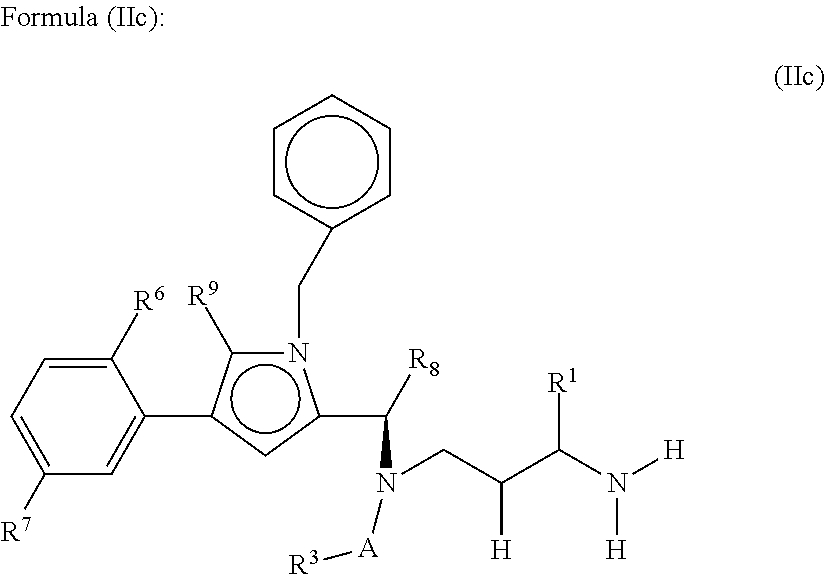
C00018

C00019

C00020
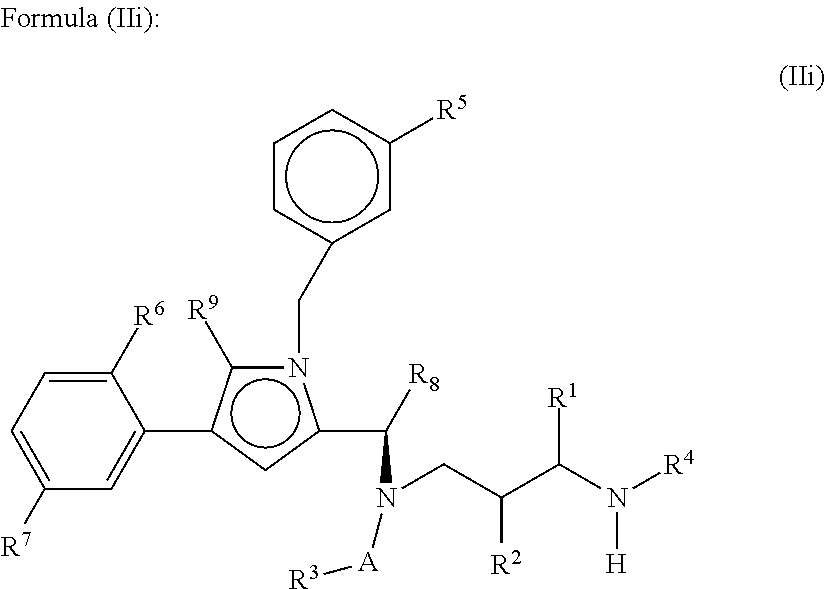
C00021

C00022

C00023

C00024

C00025

C00026
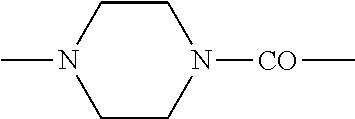
C00027

C00028

C00029

C00030

C00031

C00032

C00033

C00034

C00035

C00036

C00037

C00038

C00039

C00040

C00041

C00042

C00043

C00044

C00045

C00046

C00047

C00048

C00049

C00050

C00051

C00052

C00053

C00054

C00055

C00056

C00057

C00058

C00059

C00060

C00061

C00062

C00063

C00064

C00065

C00066

C00067

C00068

C00069

C00070

C00071

C00072

C00073

C00074

C00075
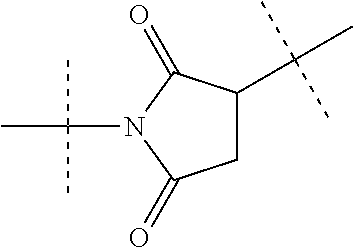
C00076
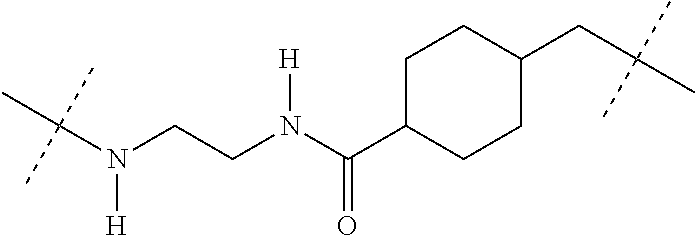
C00077

C00078

C00079

C00080

C00081

C00082

C00083

C00084

C00085

C00086

C00087

C00088

C00089
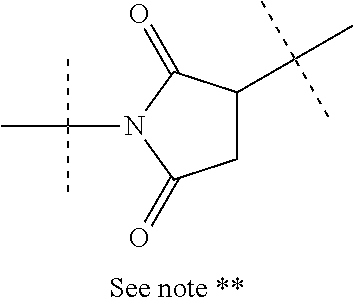
C00090

C00091

C00092

C00093

C00094

C00095

C00096

C00097

C00098

C00099

C00100

C00101

C00102

C00103

C00104

C00105

C00106

C00107

C00108

C00109

C00110

C00111

C00112

C00113

C00114

C00115
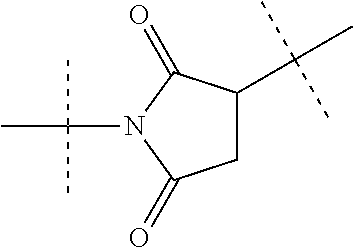
C00116

C00117

C00118

C00119
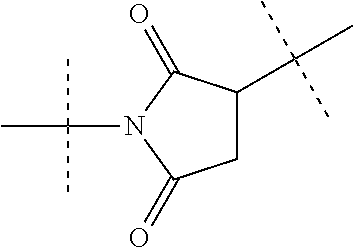
C00120
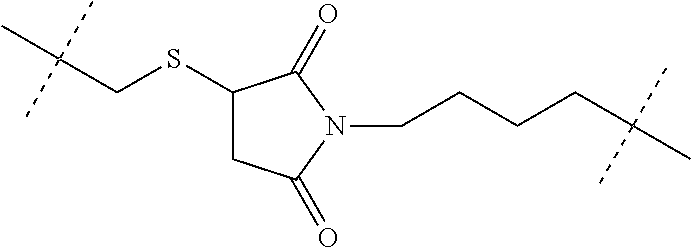
C00121

C00122

C00123

C00124

C00125

C00126
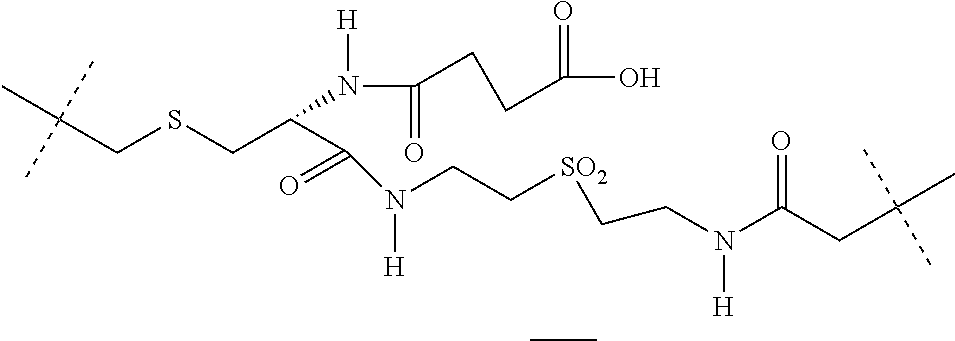
C00127

C00128

C00129

C00130

C00131
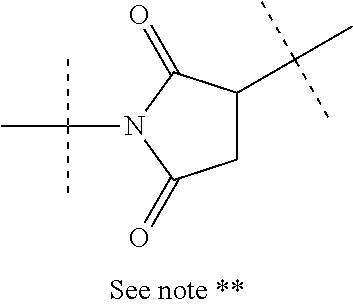
C00132

C00133

C00134

C00135

C00136
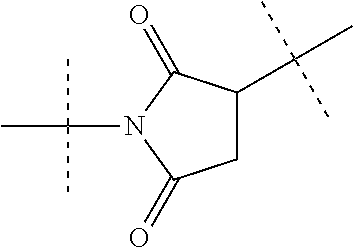
C00137

C00138
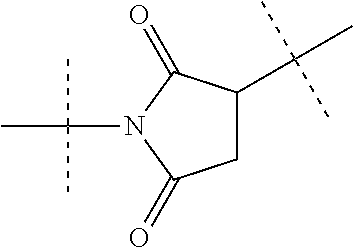
C00139

C00140

C00141

C00142

C00143

C00144

C00145

C00146
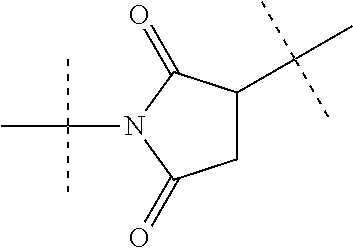
C00147

C00148

C00149

C00150
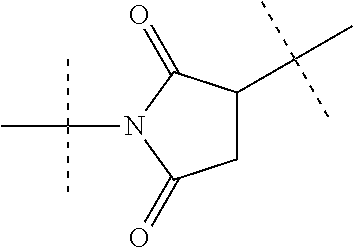
C00151

C00152

C00153

C00154

C00155

C00156

C00157

C00158

C00159

C00160
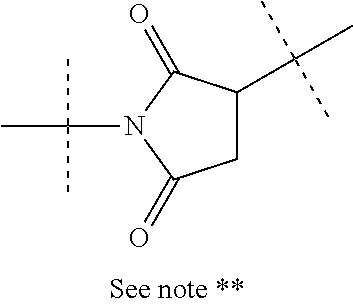
C00161
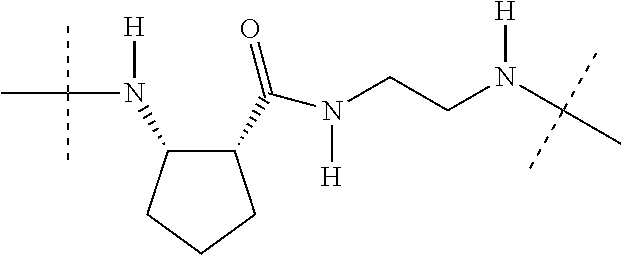
C00162

C00163

C00164

C00165

C00166

C00167

C00168

C00169
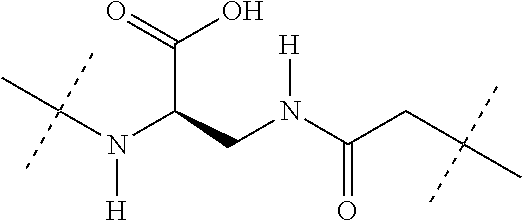
C00170
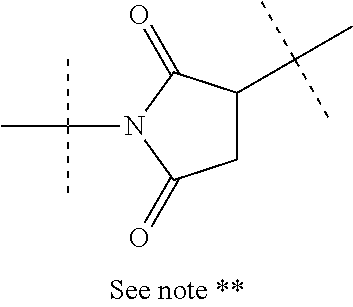
C00171

C00172

C00173

C00174

C00175

C00176

C00177

C00178

C00179
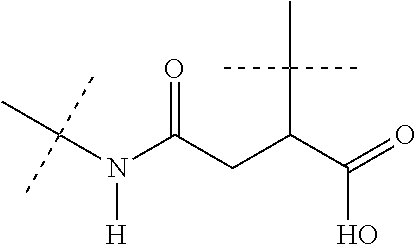
C00180

C00181

C00182

C00183

C00184

C00185

C00186

C00187

C00188

C00189

C00190

C00191

C00192

C00193

C00194

C00195

C00196

C00197

C00198

C00199

C00200

C00201

C00202

C00203

C00204
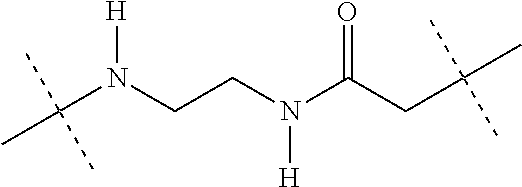
C00205
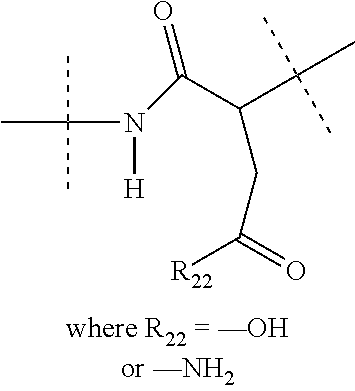
C00206

C00207

C00208

C00209

C00210

C00211
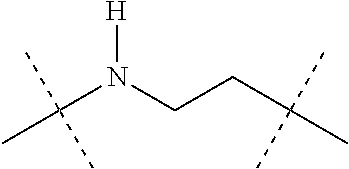
C00212

C00213
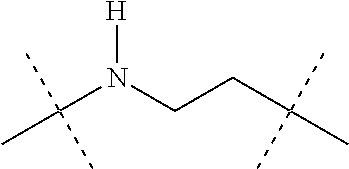
C00214

C00215

C00216

C00217

C00218

C00219

C00220

C00221

C00222

C00223

C00224
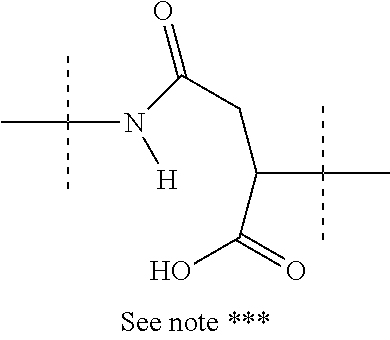
C00225

C00226

C00227

C00228

C00229

C00230
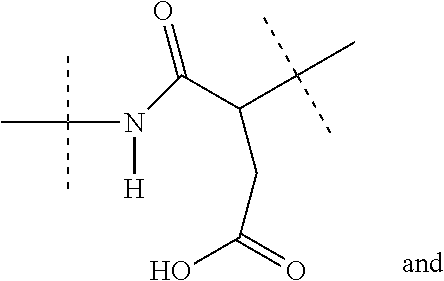
C00231

C00232
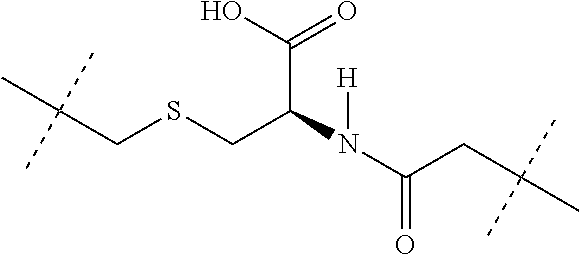
C00233
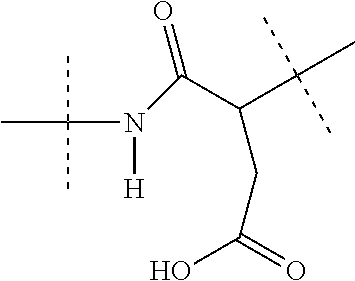
C00234

C00235

C00236

C00237

C00238
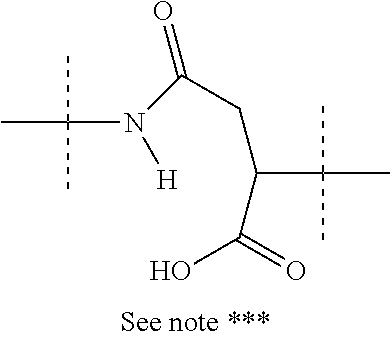
C00239

C00240
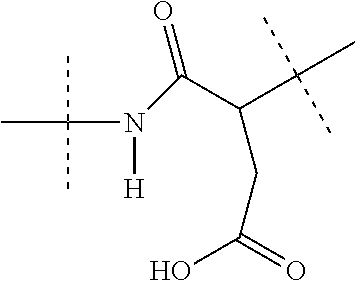
C00241

C00242

C00243

C00244

C00245

C00246

C00247
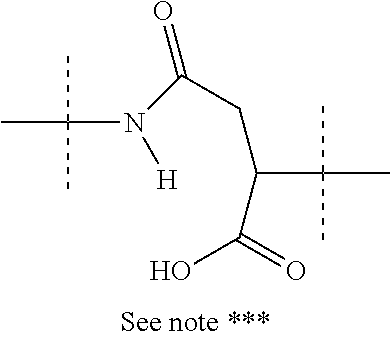
C00248

C00249
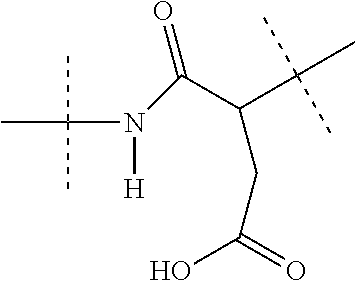
C00250

C00251

C00252

C00253

C00254

C00255

C00256

C00257

C00258

C00259

C00260

C00261

C00262

C00263
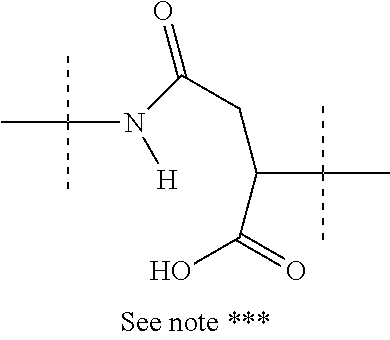
C00264

C00265
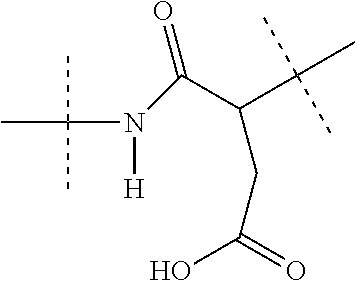
C00266

C00267
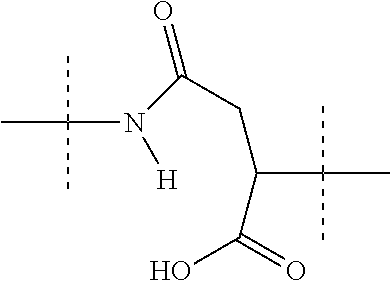
C00268

C00269

C00270

C00271

C00272

C00273

C00274
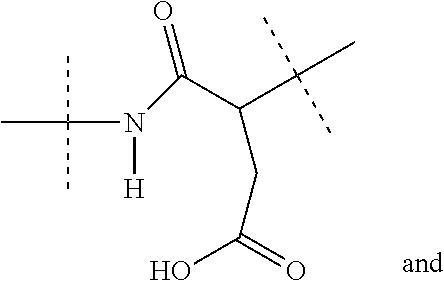
C00275

C00276

C00277

C00278

C00279

C00280

C00281

C00282

C00283
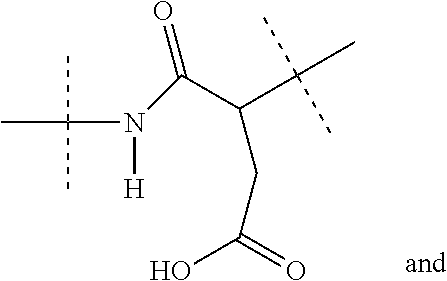
C00284

C00285

C00286

C00287

C00288

C00289

C00290

C00291

C00292

C00293

C00294
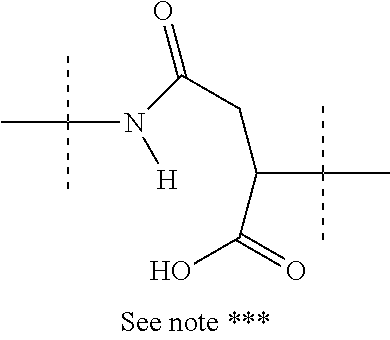
C00295
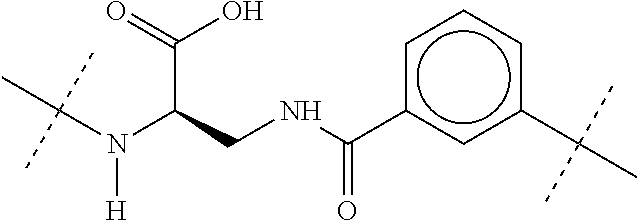
C00296

C00297

C00298

C00299

C00300

C00301
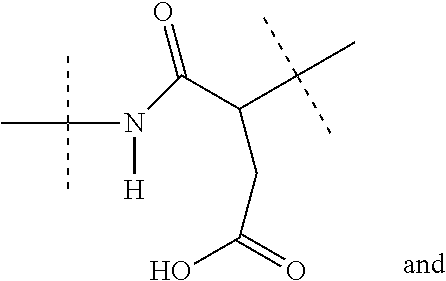
C00302

C00303

C00304

C00305
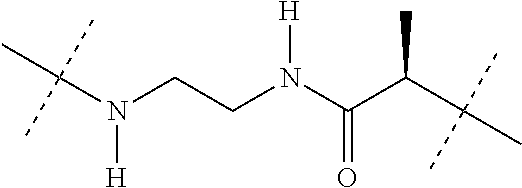
C00306

C00307

C00308

C00309

C00310

C00311

C00312

C00313

C00314

C00315

C00316

C00317

C00318
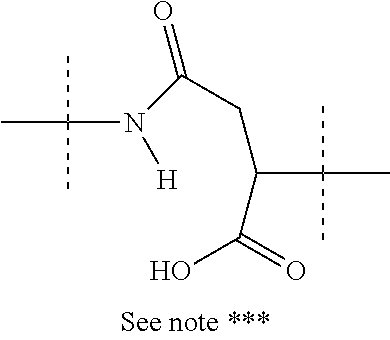
C00319

C00320
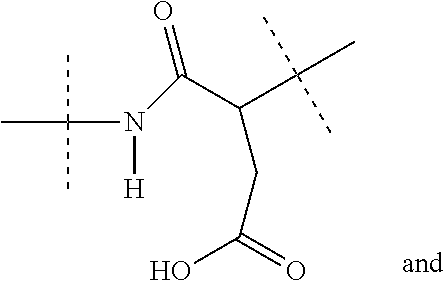
C00321
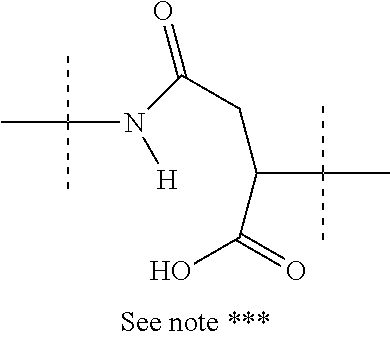
C00322

C00323
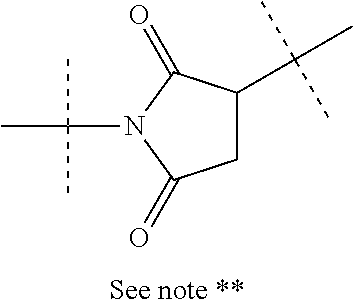
C00324

C00325

C00326

C00327

C00328

C00329

C00330

C00331

C00332
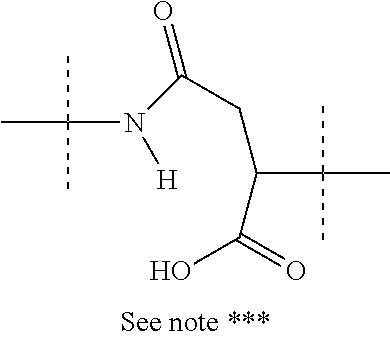
C00333

C00334

C00335

C00336

C00337

C00338

C00339

C00340

C00341

C00342

C00343

C00344

C00345

C00346
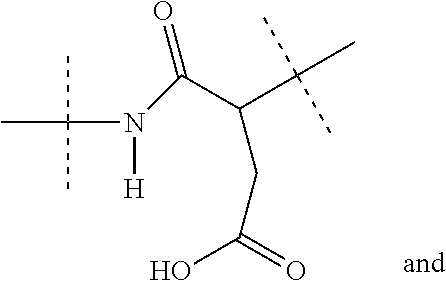
C00347

C00348

C00349

C00350

C00351

C00352

C00353
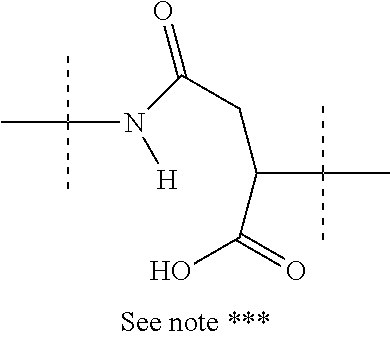
C00354

C00355

C00356
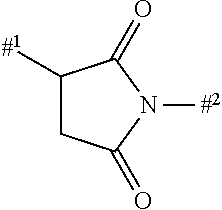
C00357

C00358

C00359

C00360

C00361

C00362

C00363

C00364

C00365

C00366

C00367

C00368

C00369

C00370

C00371

C00372

C00373
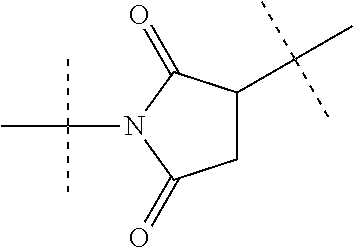
C00374

C00375

C00376

C00377

C00378

C00379
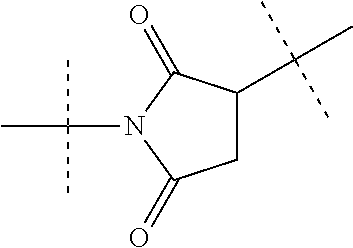
C00380

C00381

C00382
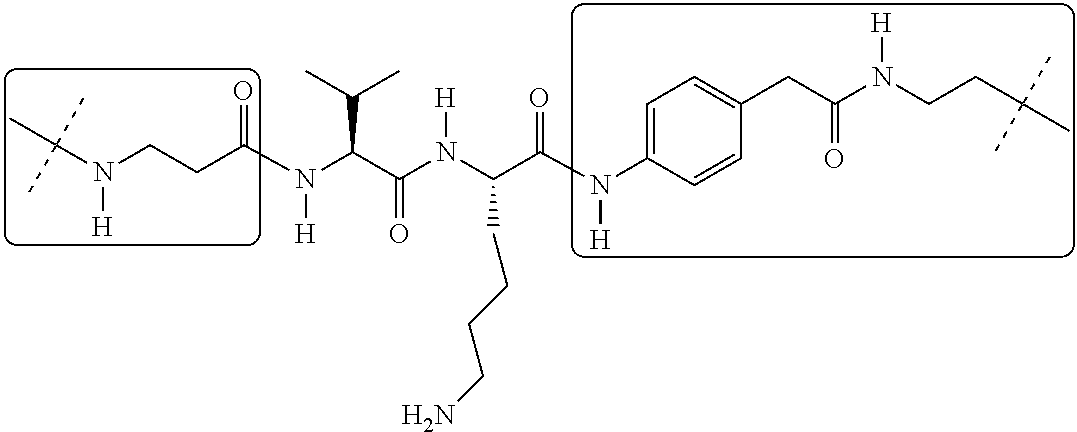
C00383
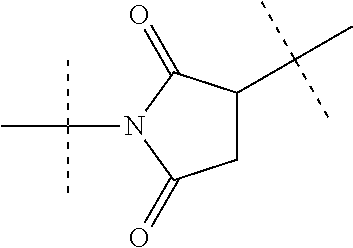
C00384

C00385

C00386

C00387

C00388

C00389
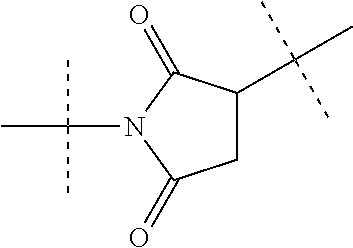
C00390

C00391

C00392

C00393

C00394

C00395

C00396

C00397

C00398

C00399

C00400

C00401

C00402

C00403

C00404

C00405

C00406

C00407

C00408

C00409

C00410

C00411

C00412

C00413
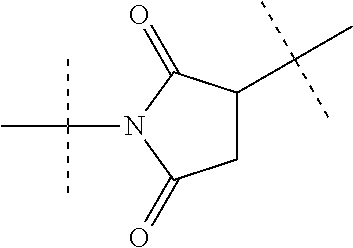
C00414

C00415
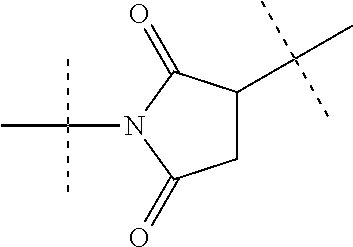
C00416

C00417
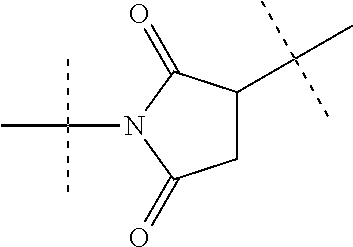
C00418

C00419

C00420

C00421
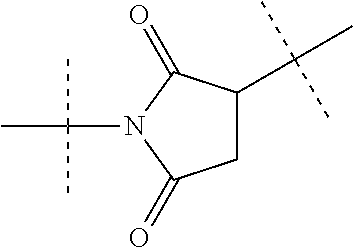
C00422
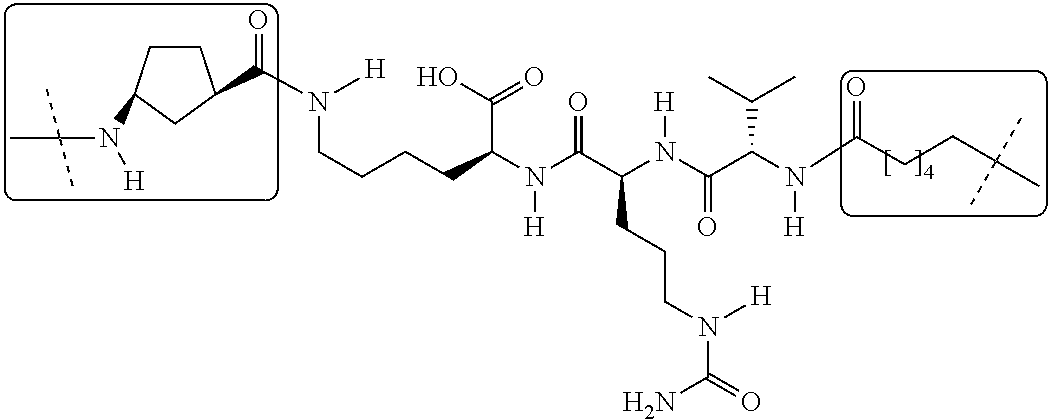
C00423

C00424

C00425

C00426

C00427
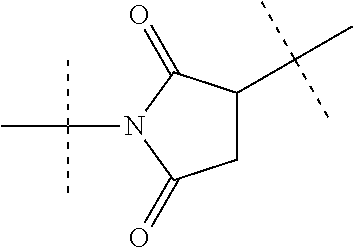
C00428

C00429
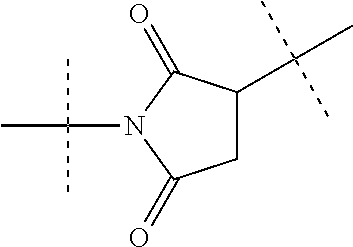
C00430

C00431
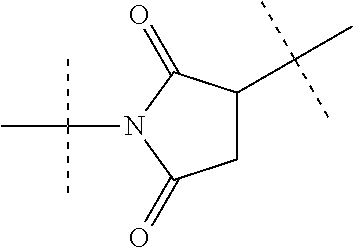
C00432

C00433

C00434

C00435

C00436

C00437

C00438

C00439

C00440

C00441

C00442

C00443

C00444

C00445

C00446

C00447

C00448

C00449

C00450

C00451

C00452

C00453

C00454

C00455
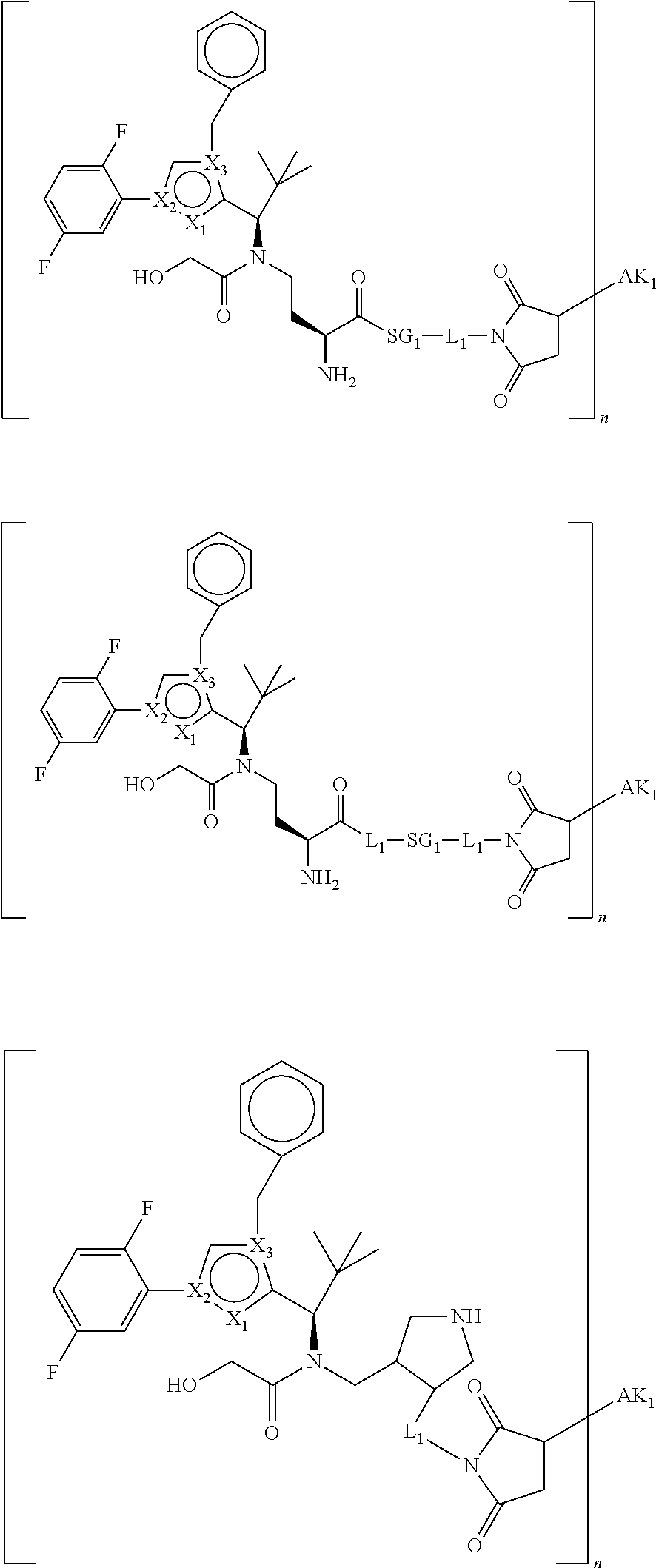
C00456

C00457

C00458

C00459

C00460

C00461

C00462

C00463

C00464

C00465

C00466

C00467

C00468

C00469

C00470

C00471

C00472
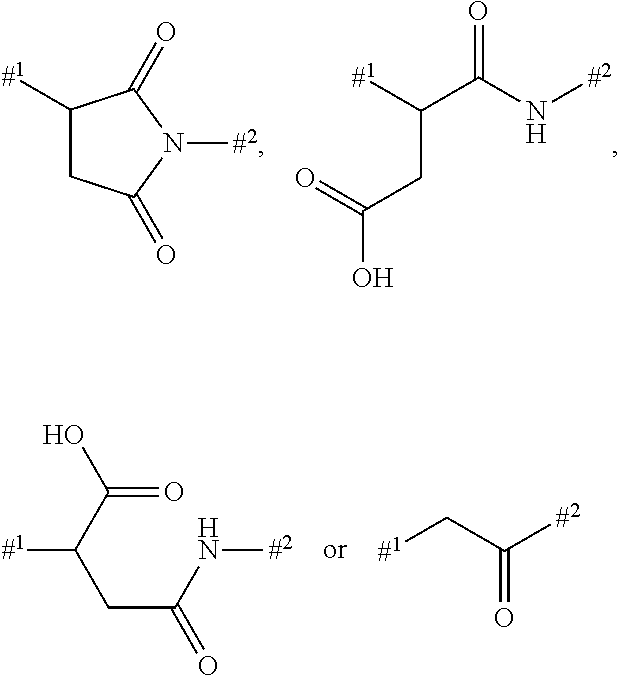
C00473

C00474

C00475

C00476

C00477

C00478

C00479

C00480

C00481

C00482

C00483

C00484

C00485

C00486

C00487

C00488

C00489

C00490

C00491

C00492

C00493

C00494

C00495

C00496
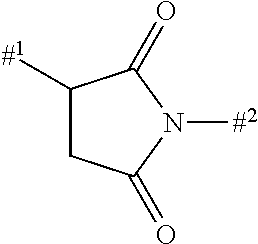
C00497

C00498
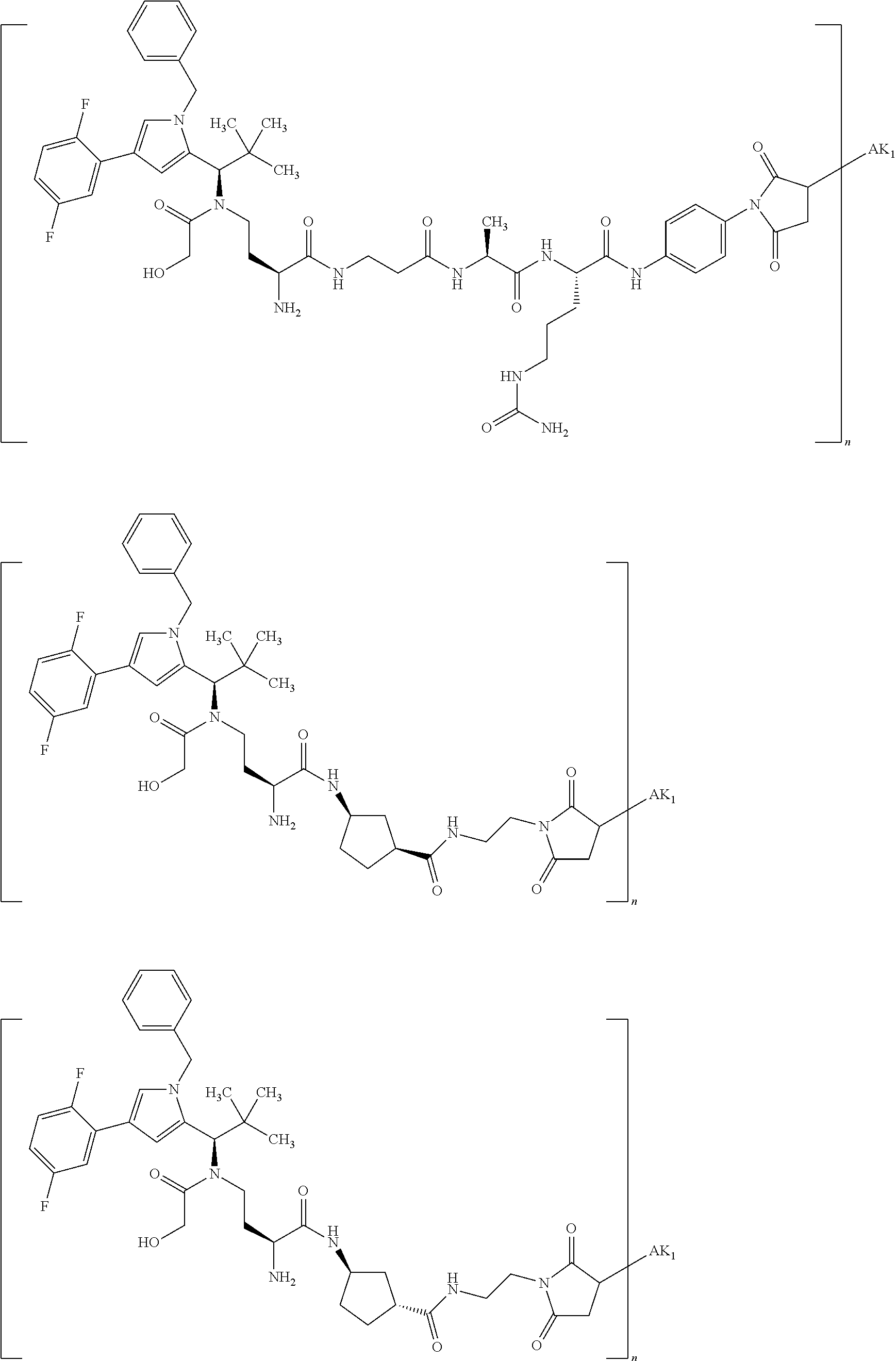
C00499

C00500

C00501

C00502

C00503

C00504

C00505

C00506

C00507

C00508

C00509

C00510

C00511

C00512

C00513

C00514

C00515
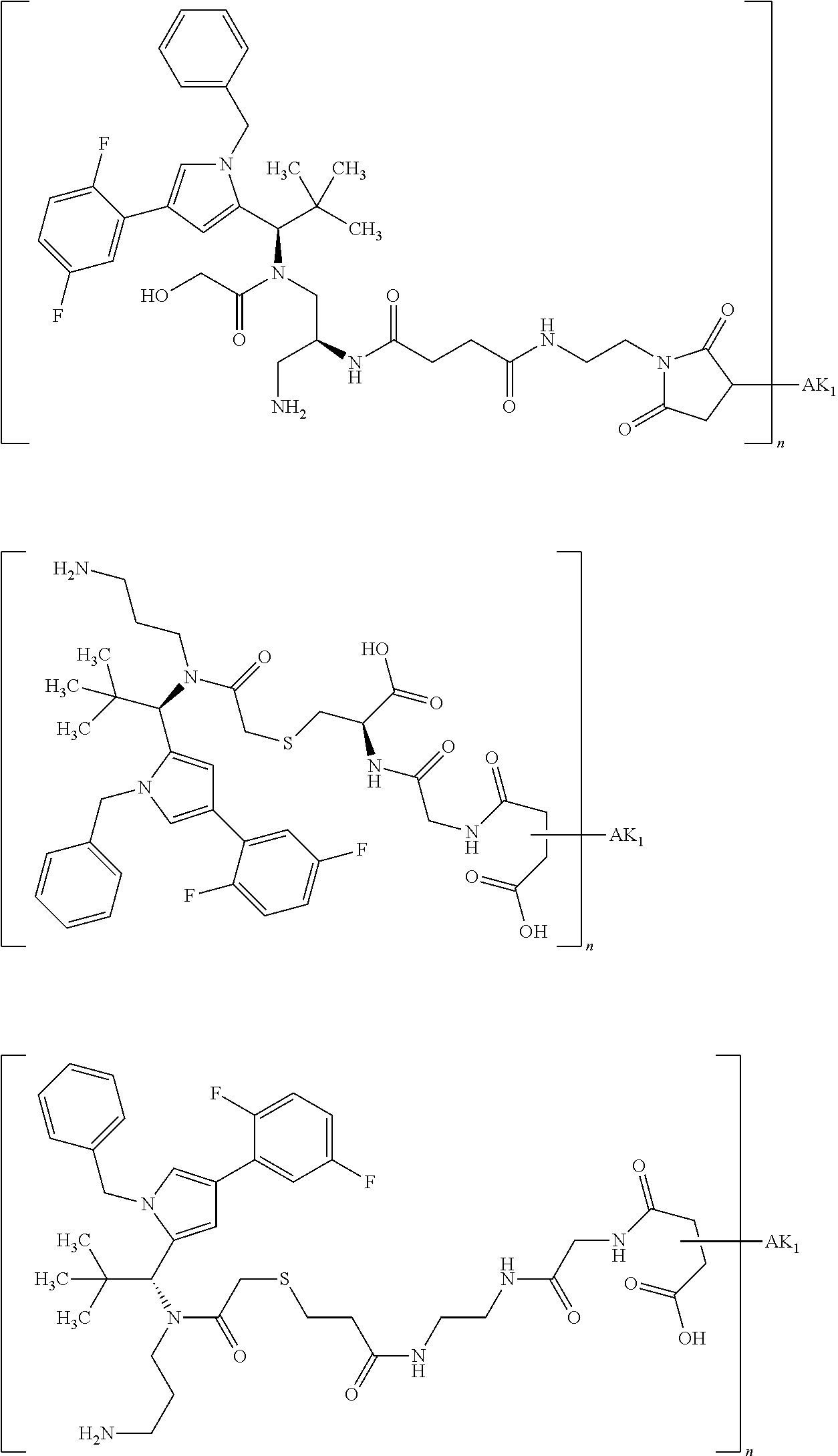
C00516
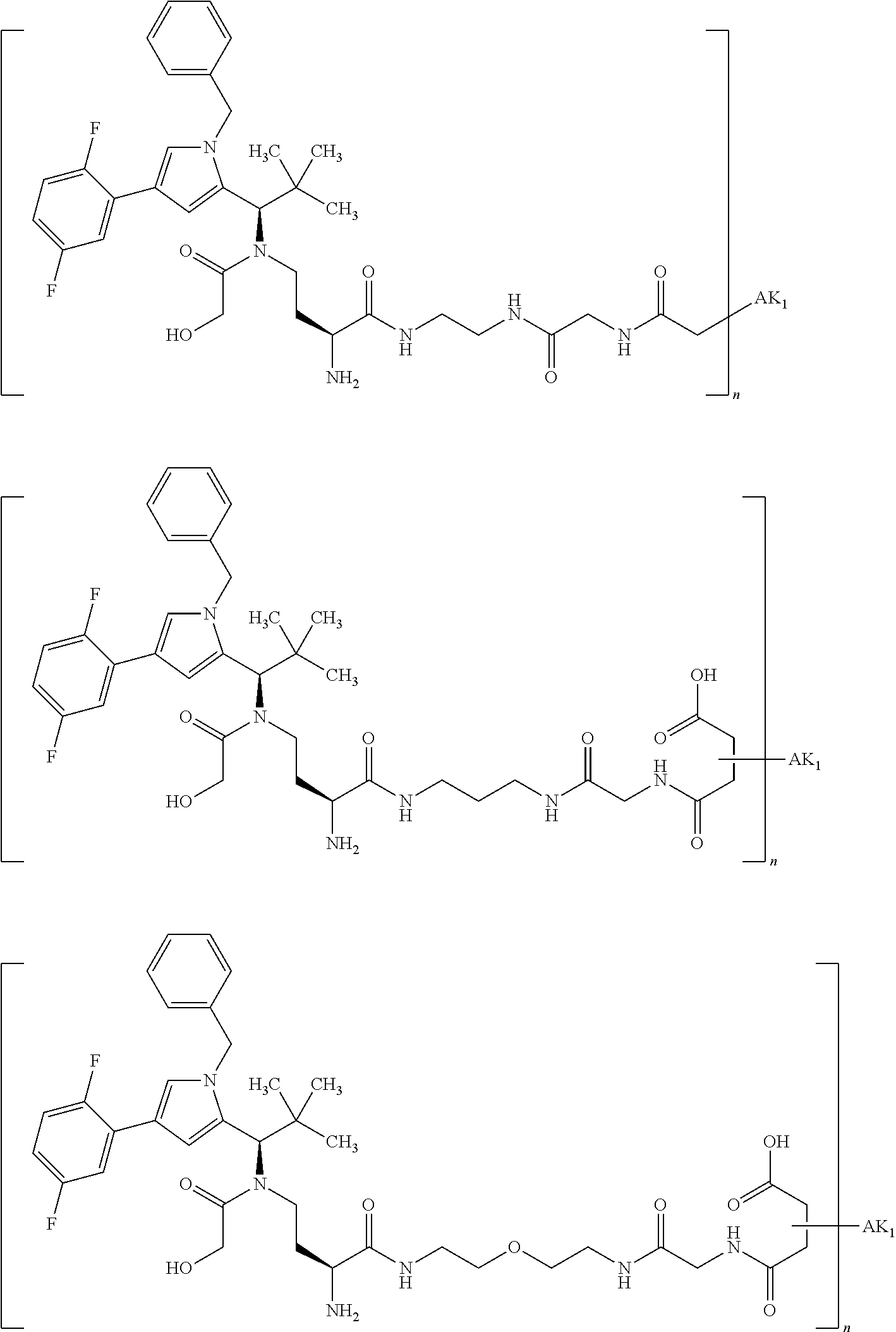
C00517

C00518
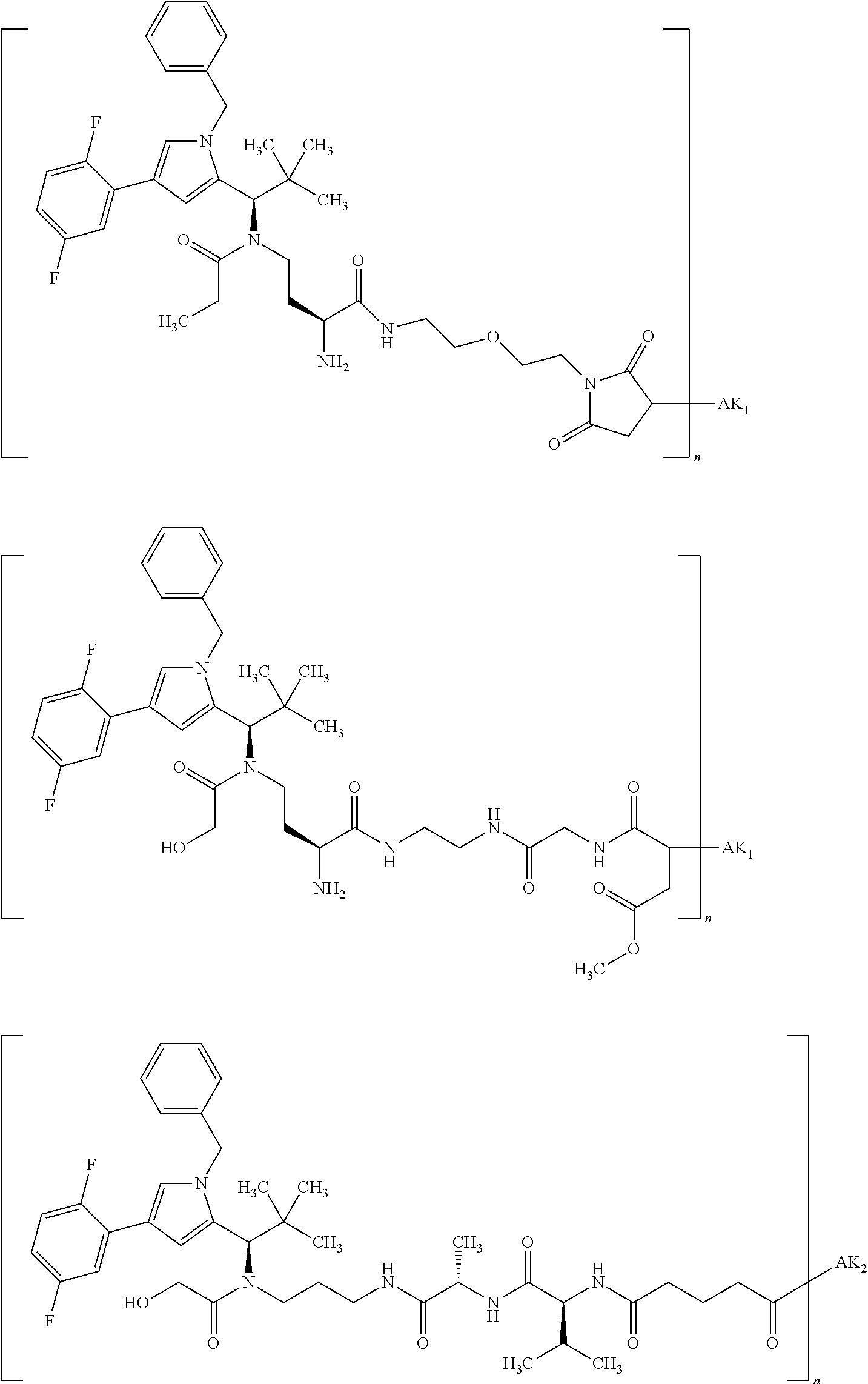
C00519
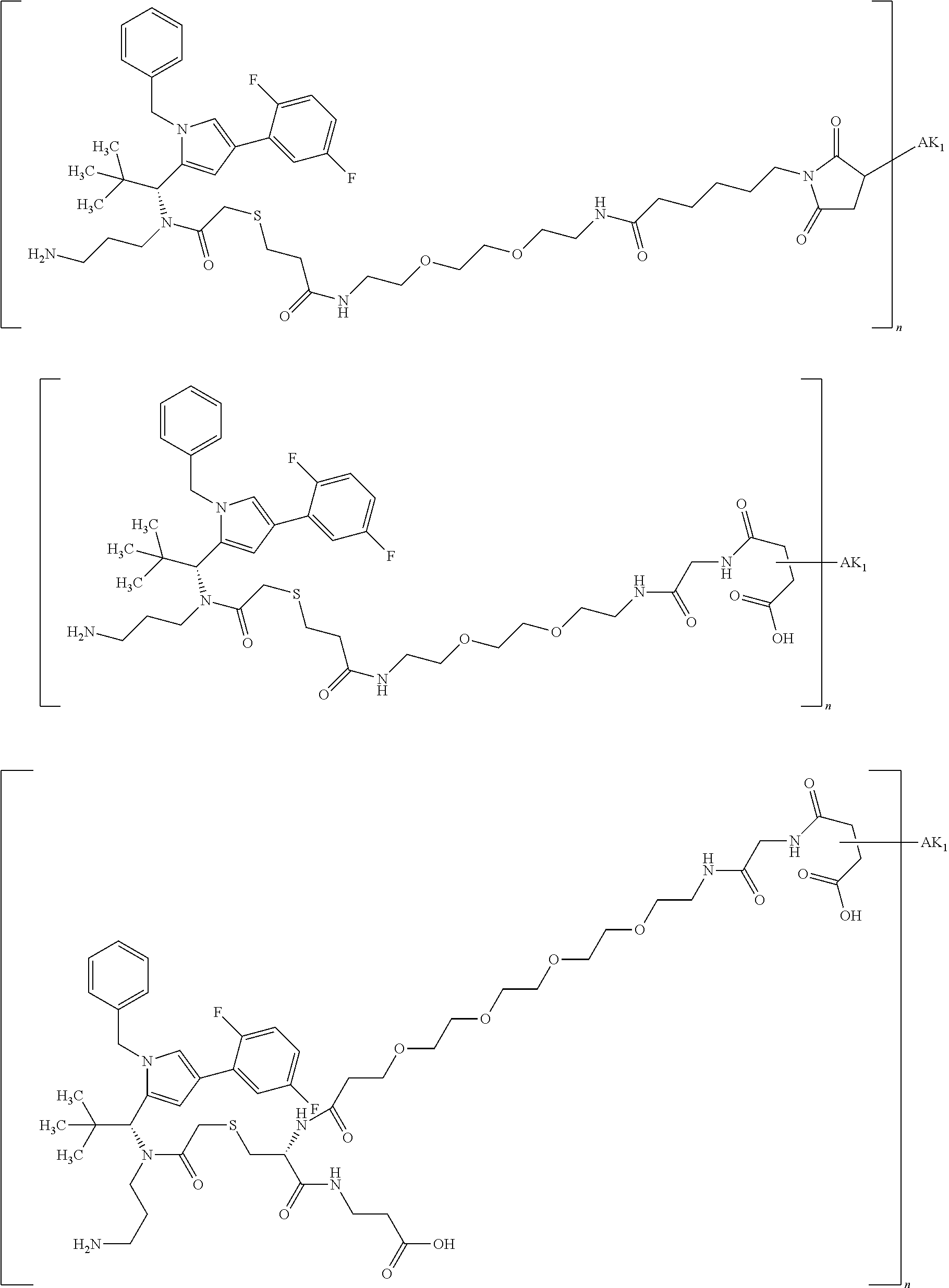
C00520
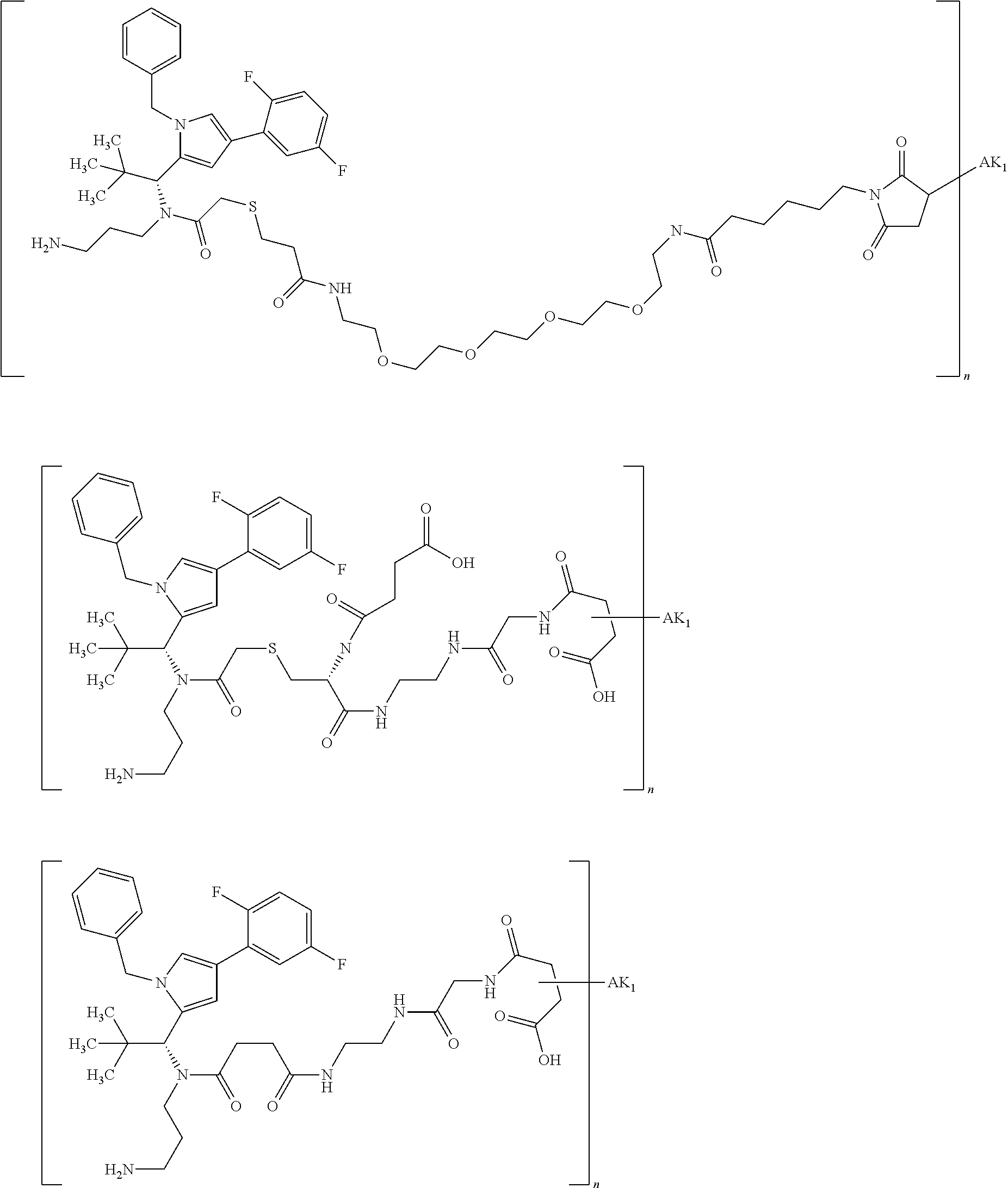
C00521

C00522

C00523
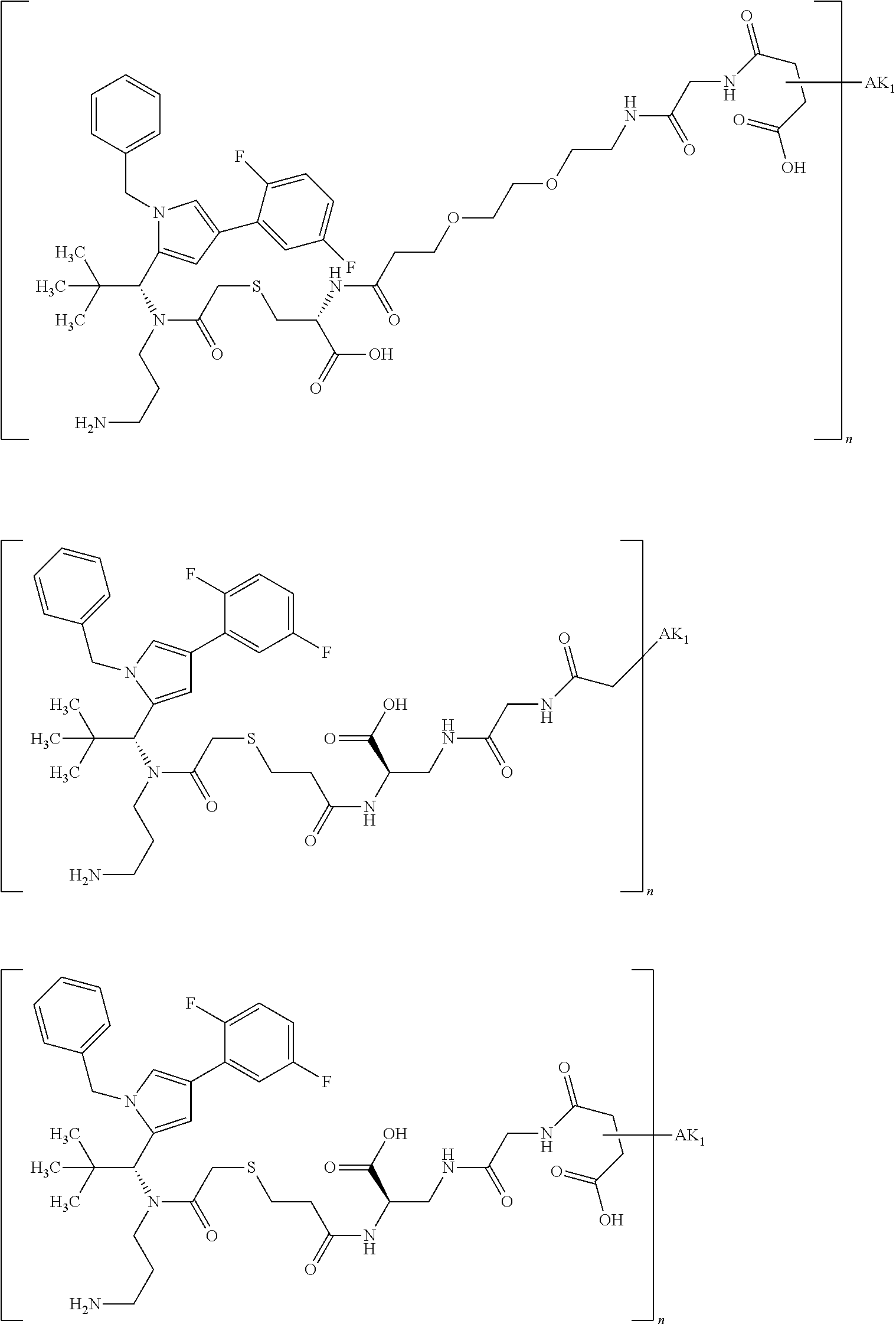
C00524

C00525

C00526

C00527

C00528
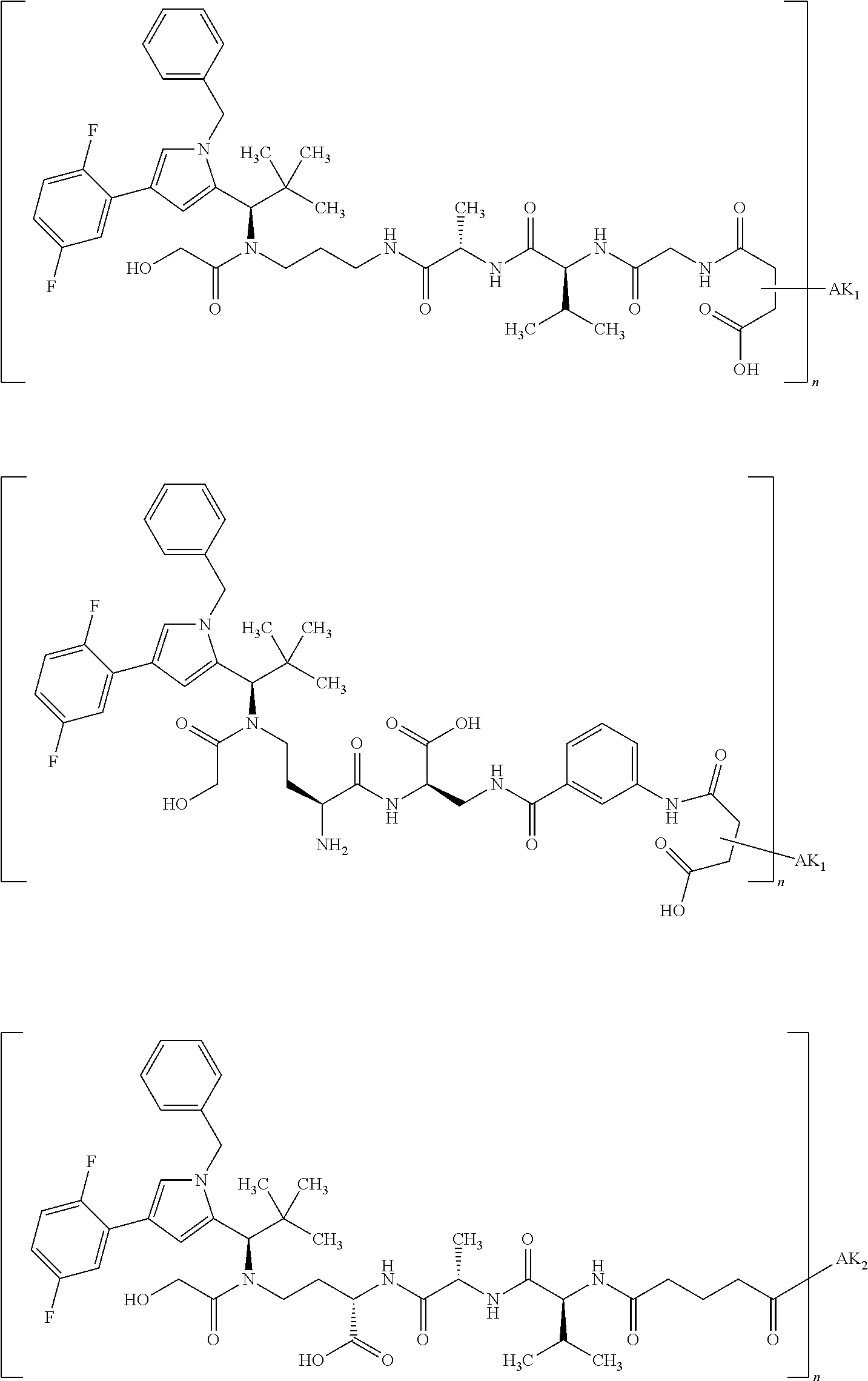
C00529

C00530
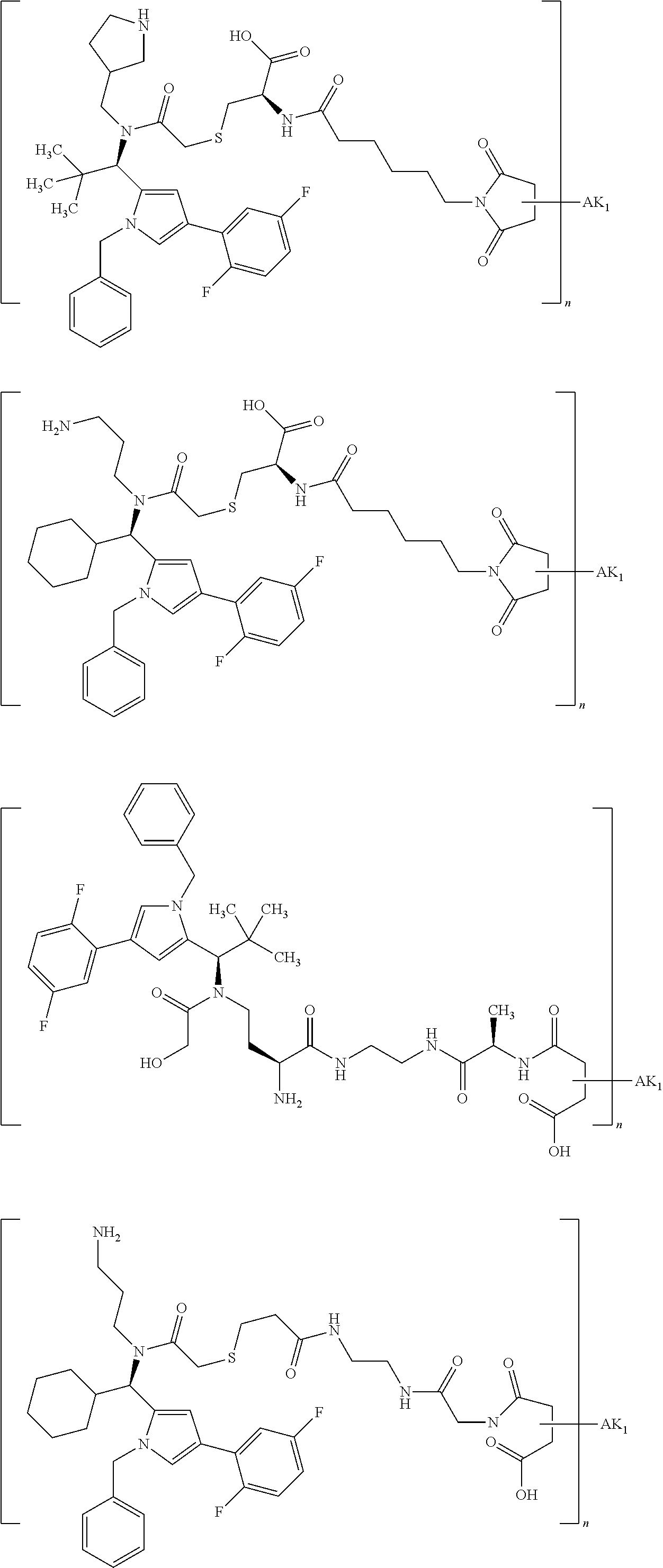
C00531

C00532

C00533
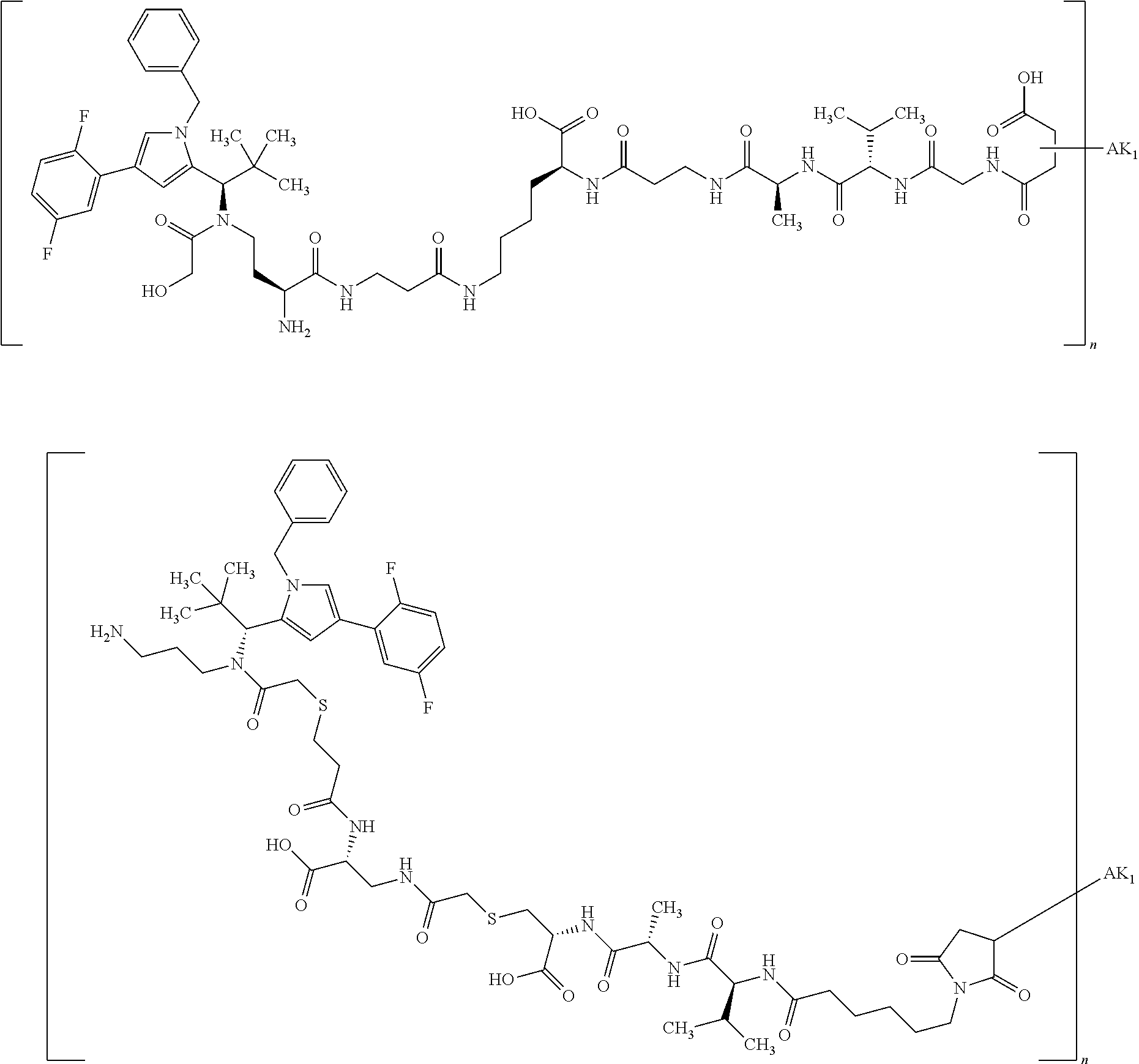
C00534
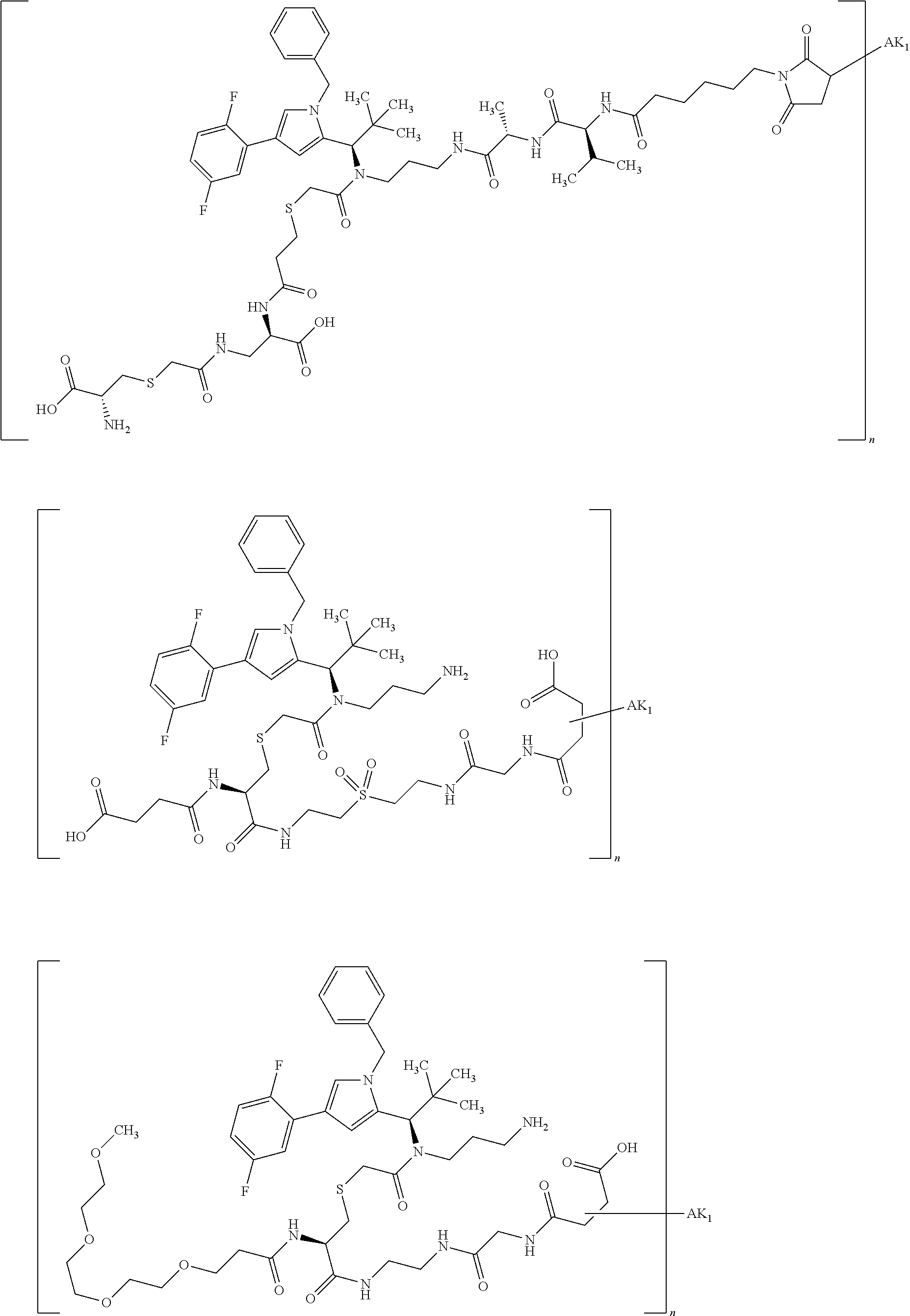
C00535

C00536

C00537

C00538

C00539

C00540

C00541

C00542
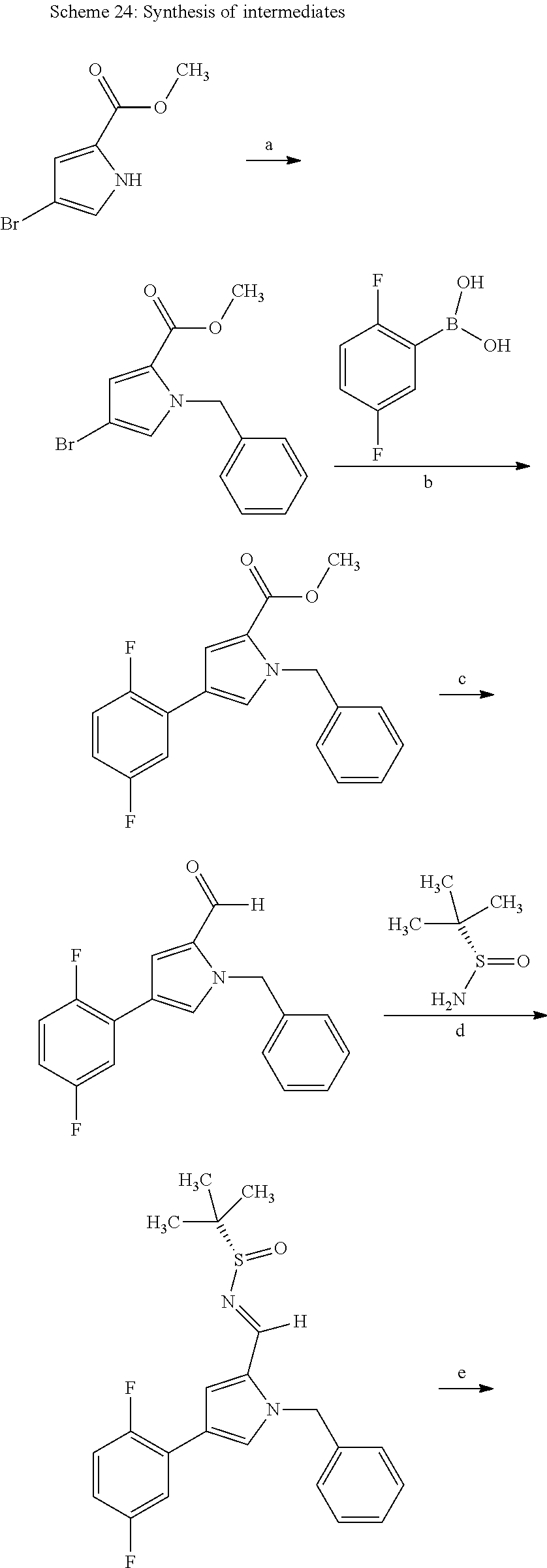
C00543

C00544
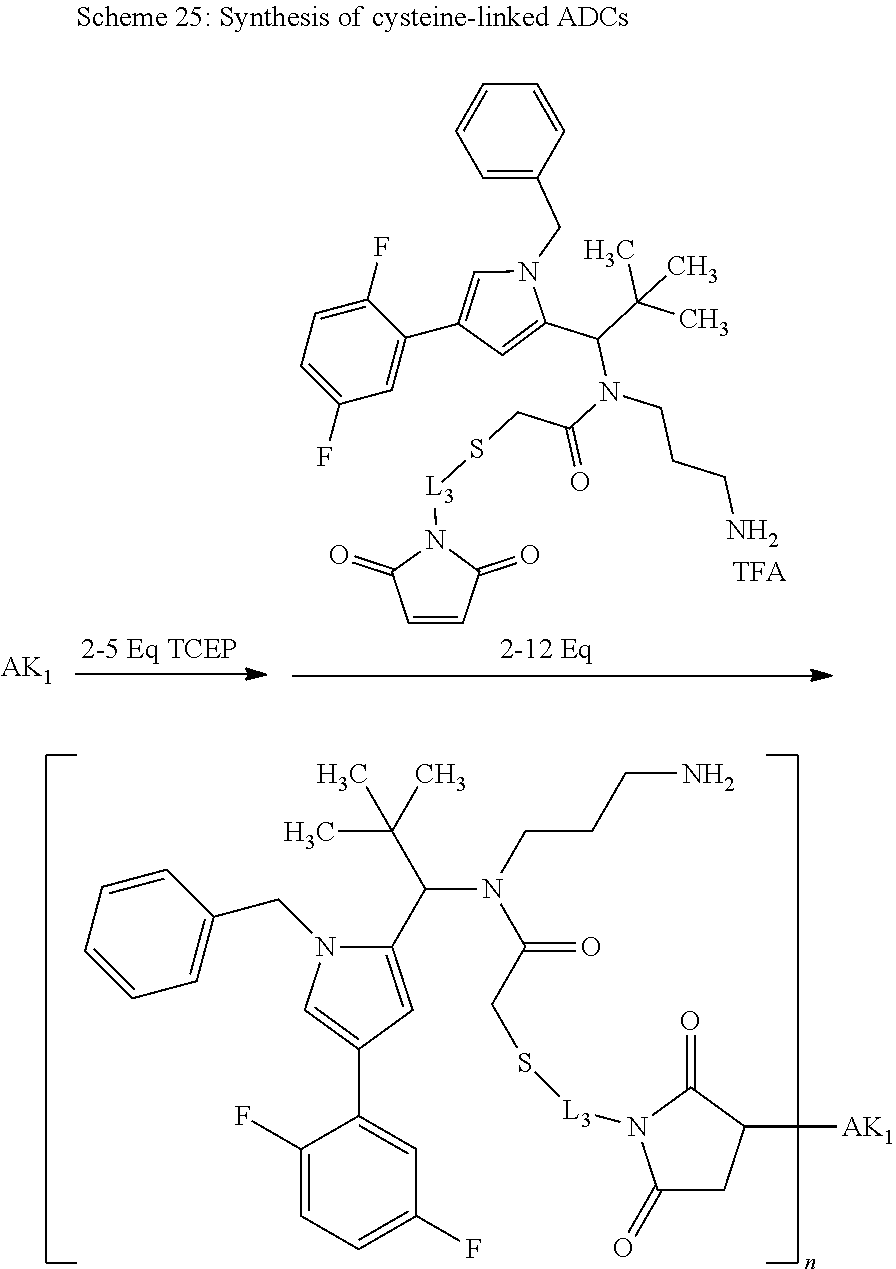
C00545

C00546

C00547

C00548

C00549

C00550

C00551

C00552

C00553

C00554

C00555

C00556

C00557

C00558

C00559

C00560

C00561

C00562

C00563
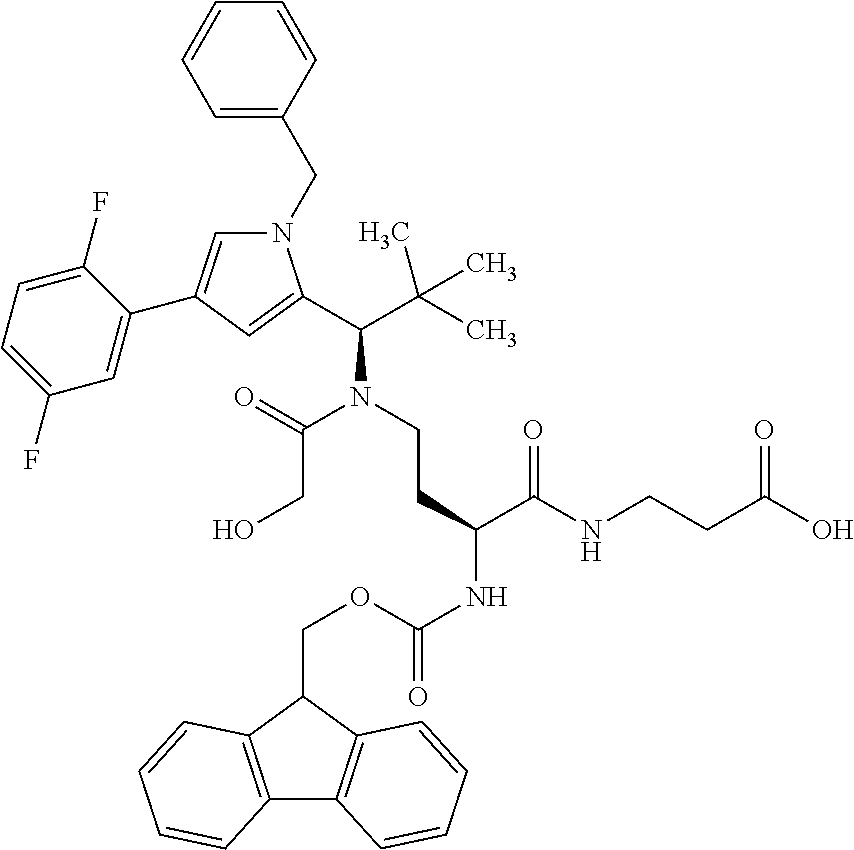
C00564

C00565

C00566

C00567

C00568

C00569

C00570

C00571

C00572

C00573

C00574

C00575
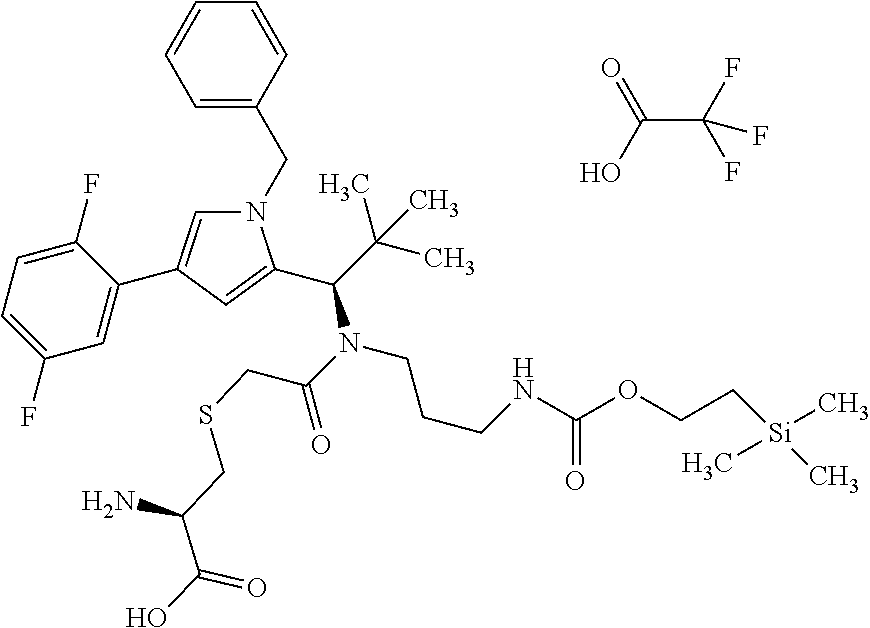
C00576

C00577
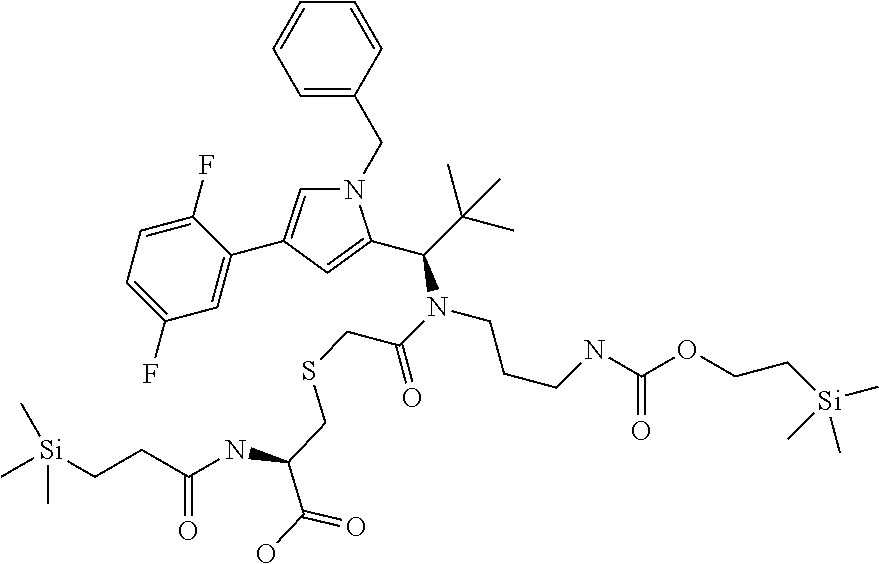
C00578

C00579

C00580

C00581

C00582

C00583

C00584

C00585

C00586
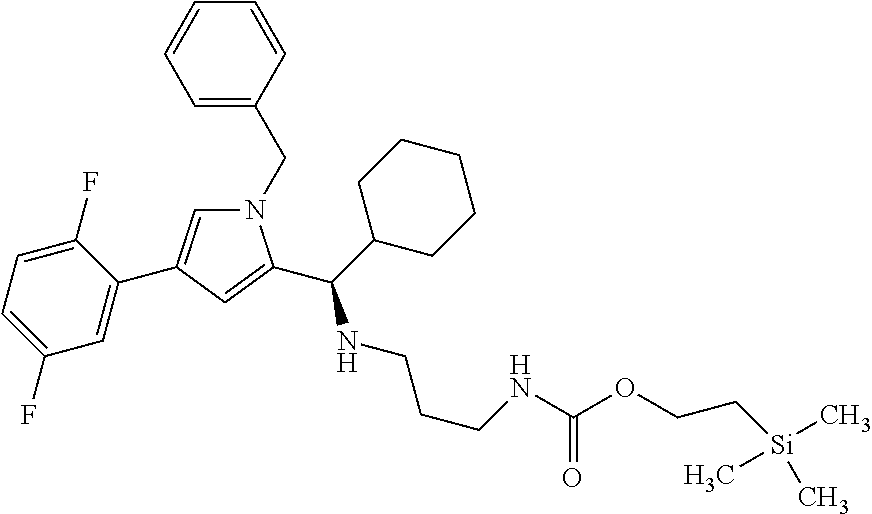
C00587

C00588

C00589

C00590

C00591

C00592

C00593

C00594

C00595

C00596

C00597

C00598
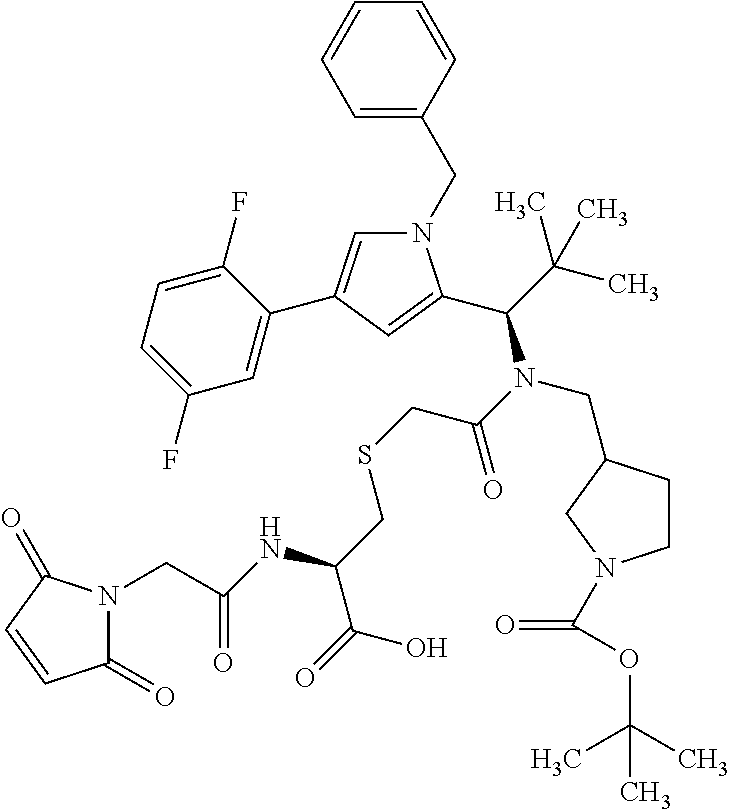
C00599

C00600
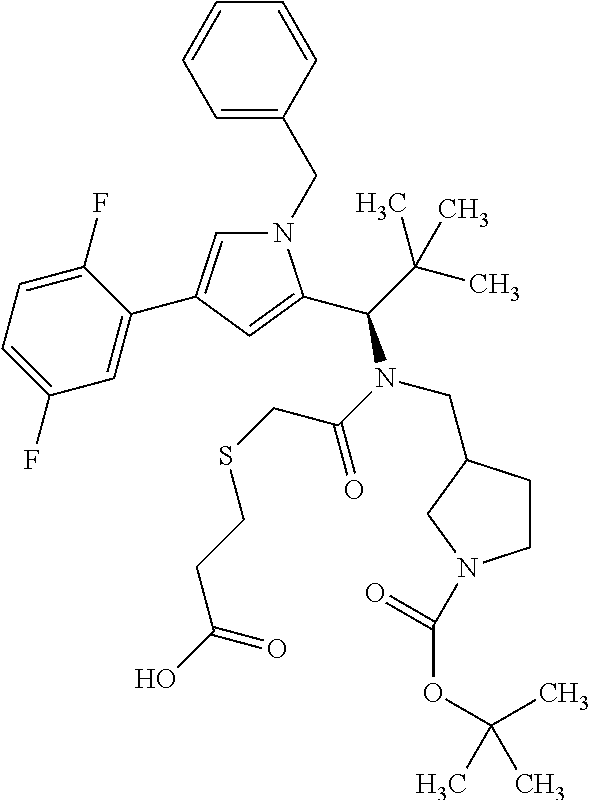
C00601

C00602

C00603

C00604

C00605
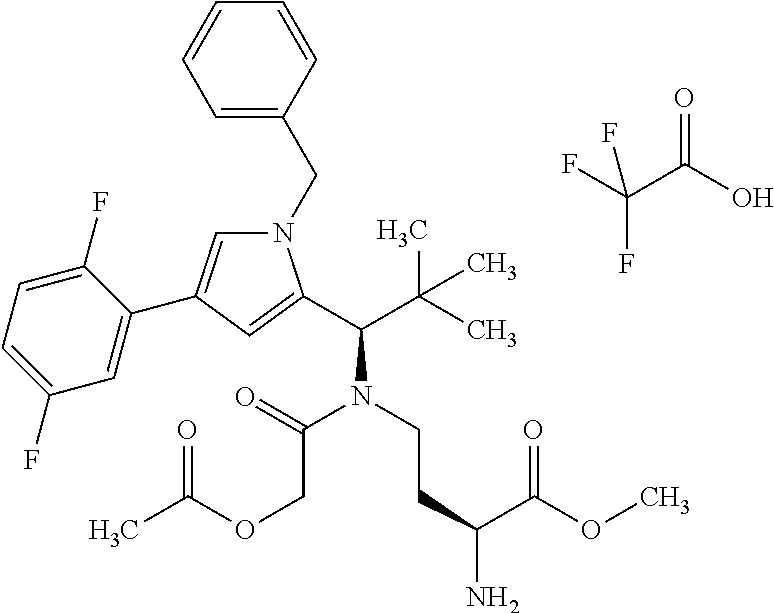
C00606

C00607
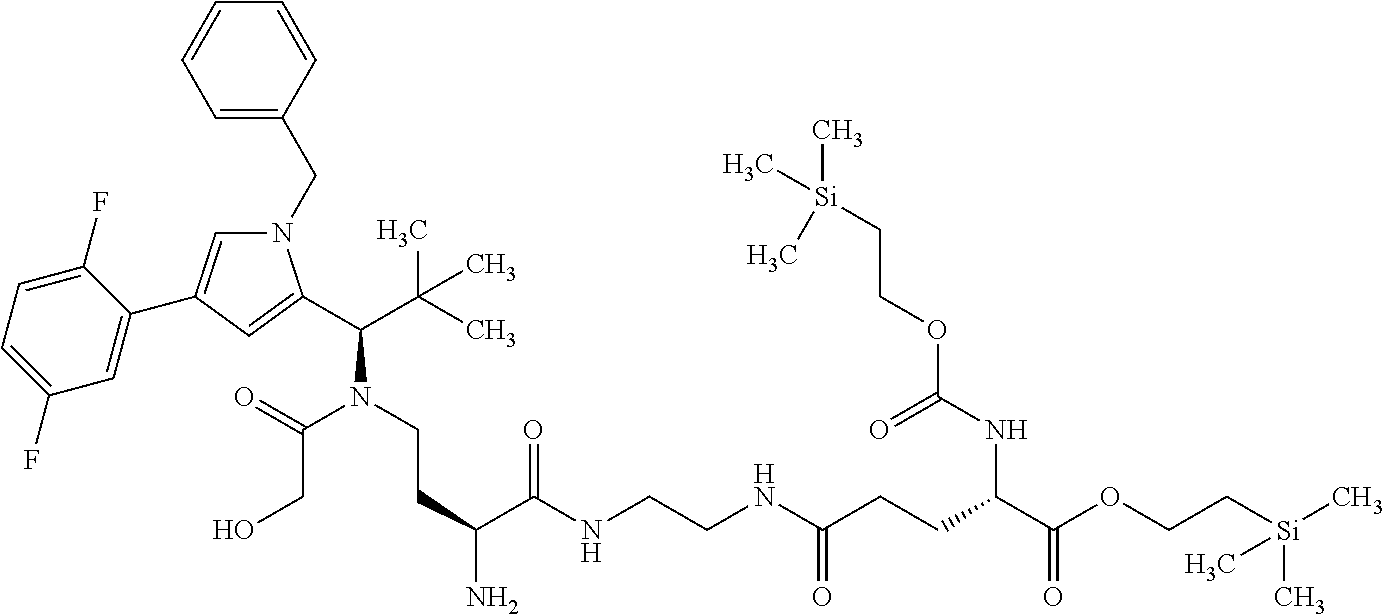
C00608

C00609
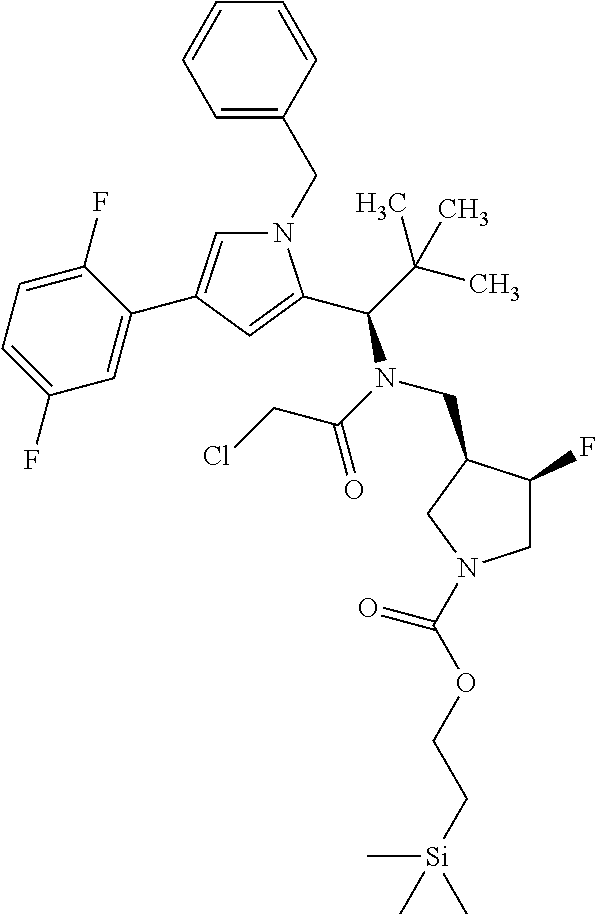
C00610

C00611

C00612

C00613

C00614

C00615

C00616
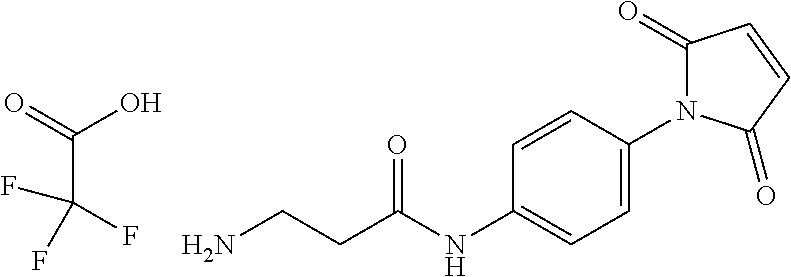
C00617

C00618

C00619
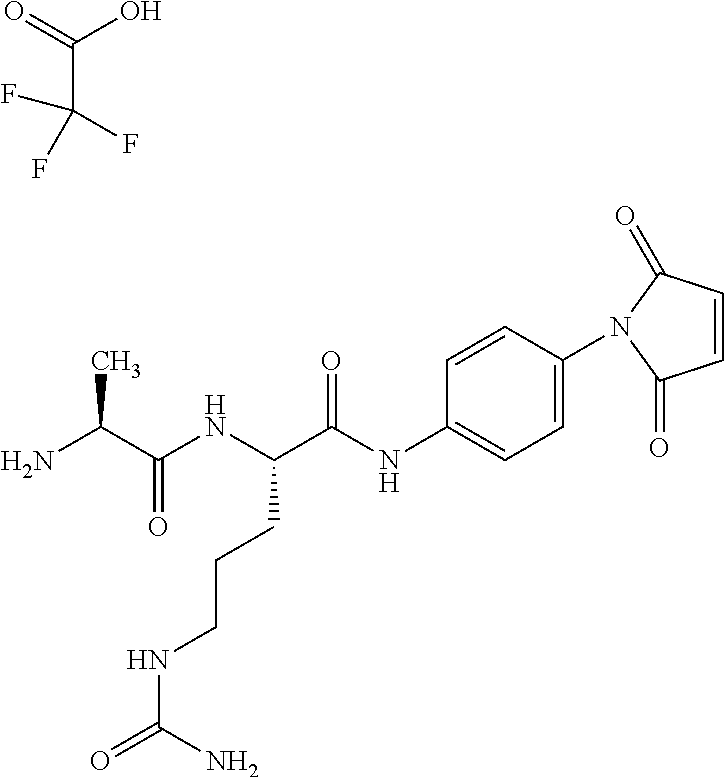
C00620

C00621
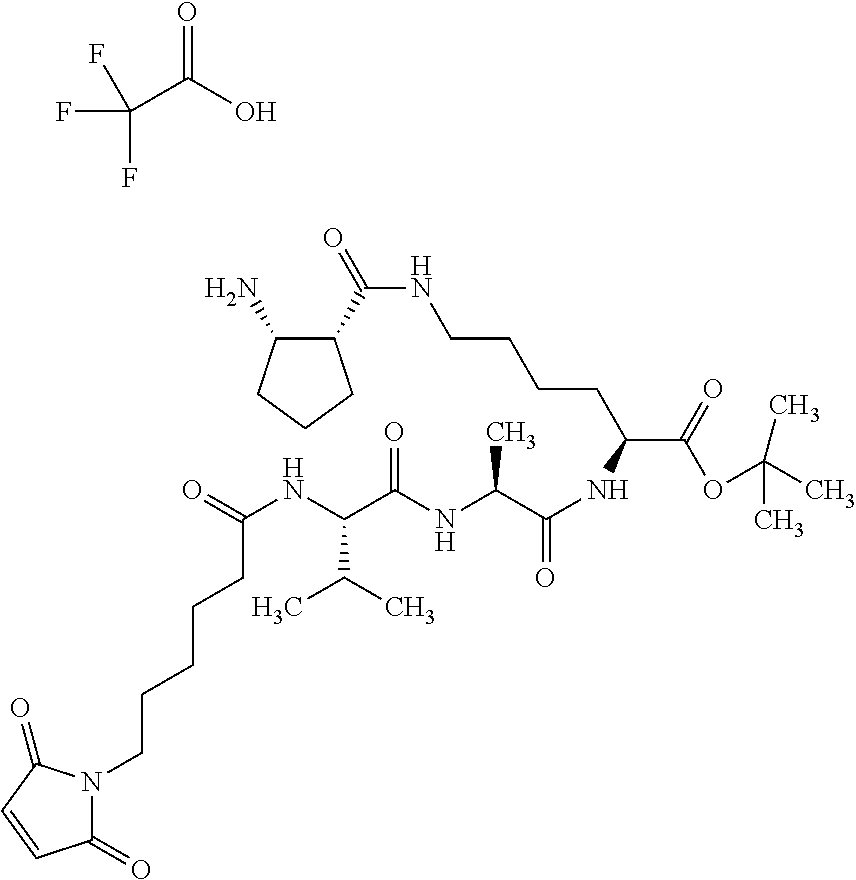
C00622

C00623

C00624

C00625

C00626

C00627

C00628

C00629

C00630
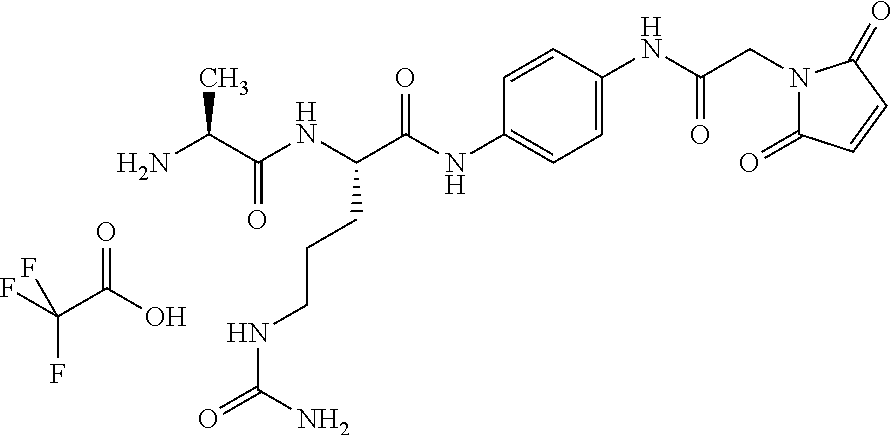
C00631

C00632

C00633

C00634

C00635

C00636

C00637

C00638

C00639

C00640

C00641

C00642

C00643

C00644

C00645
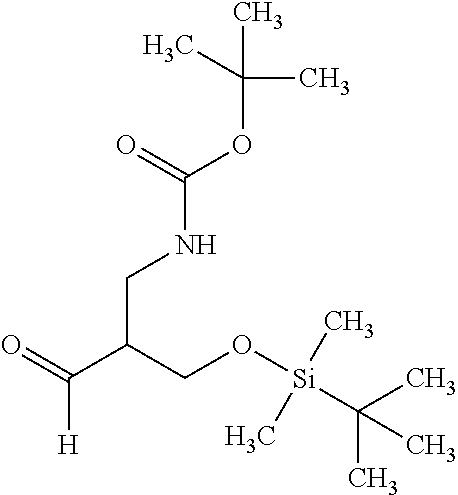
C00646

C00647

C00648

C00649

C00650

C00651

C00652
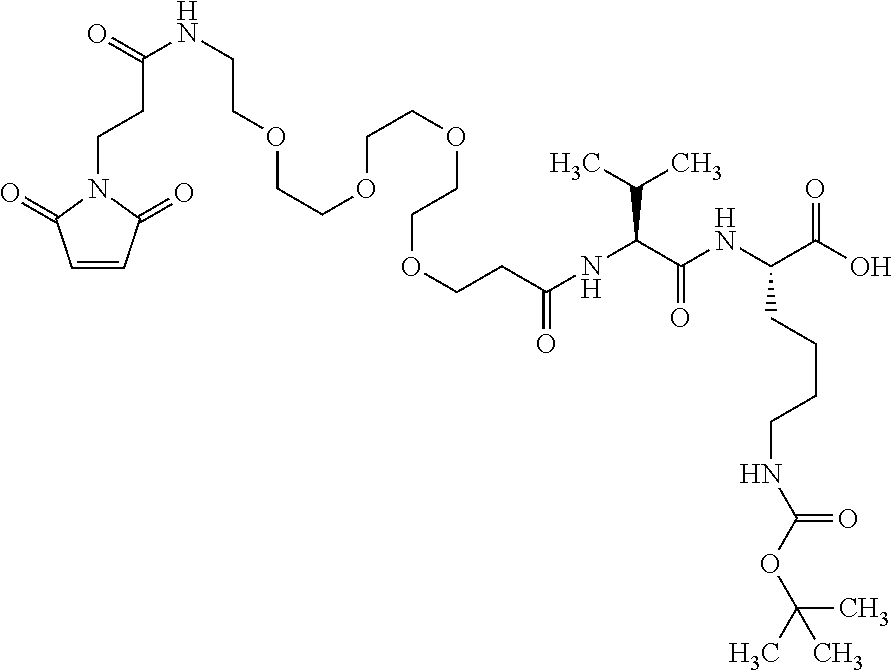
C00653

C00654

C00655

C00656

C00657

C00658

C00659

C00660

C00661
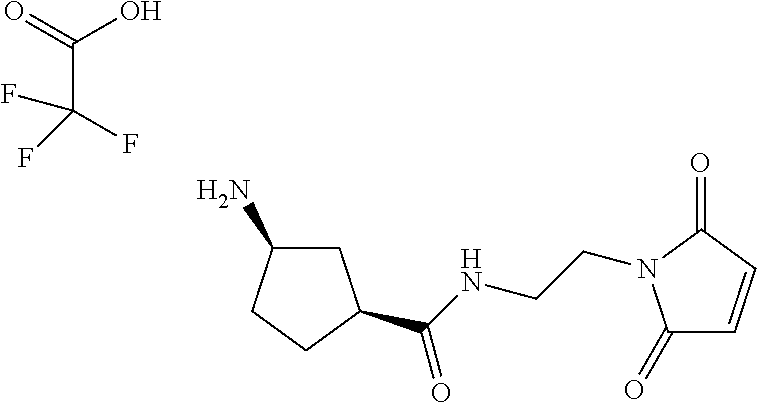
C00662

C00663

C00664

C00665

C00666
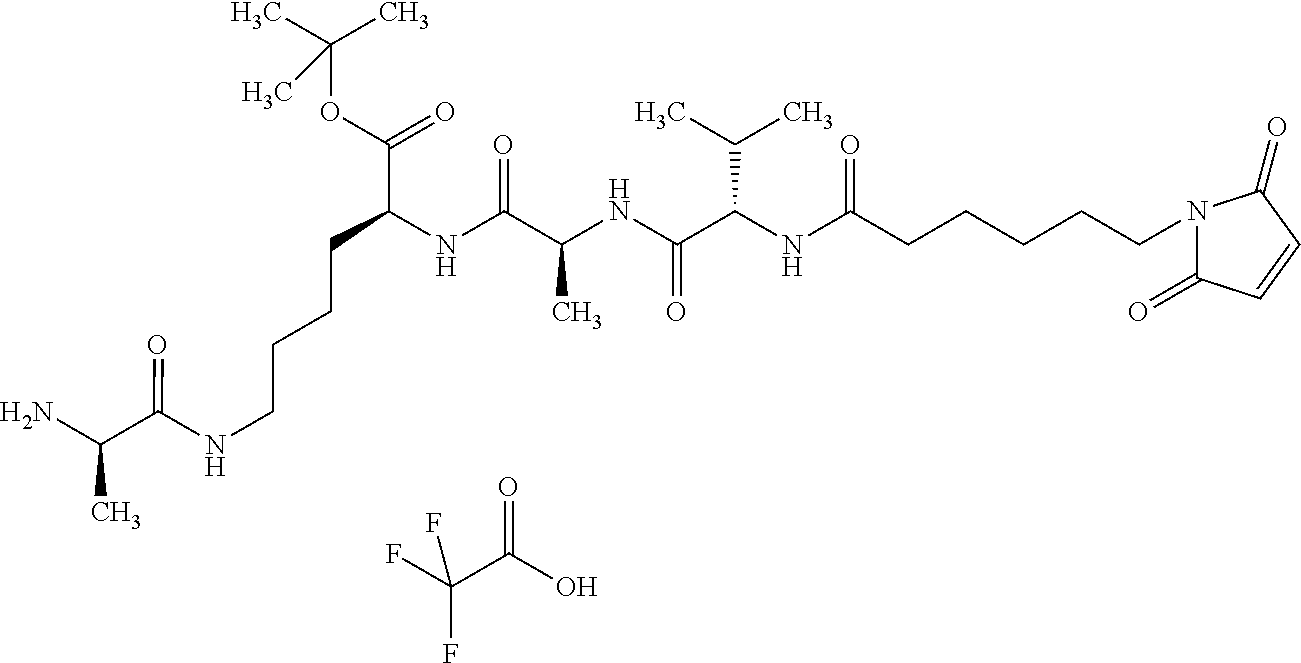
C00667

C00668

C00669

C00670

C00671

C00672

C00673

C00674

C00675
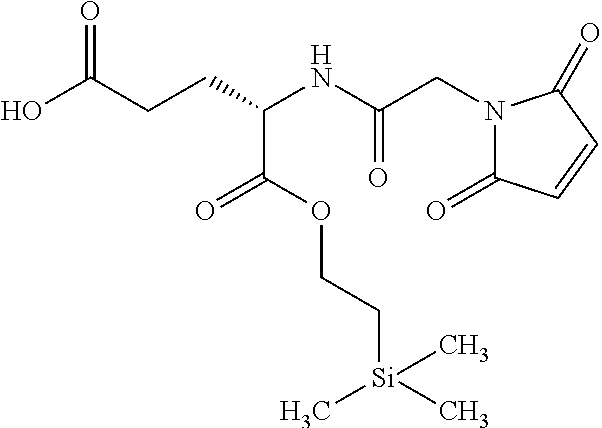
C00676

C00677

C00678

C00679

C00680

C00681

C00682

C00683

C00684

C00685

C00686

C00687

C00688

C00689

C00690

C00691

C00692

C00693

C00694

C00695

C00696

C00697

C00698
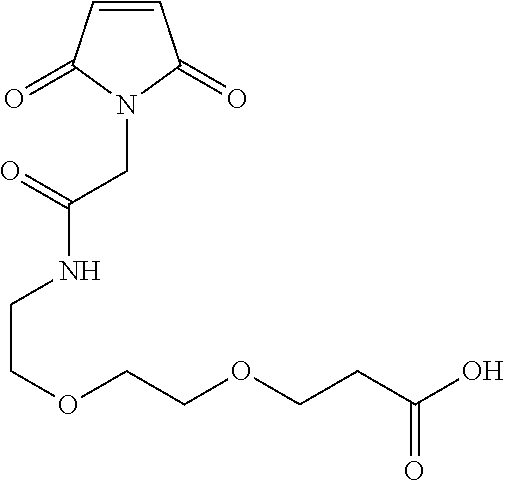
C00699

C00700

C00701

C00702

C00703
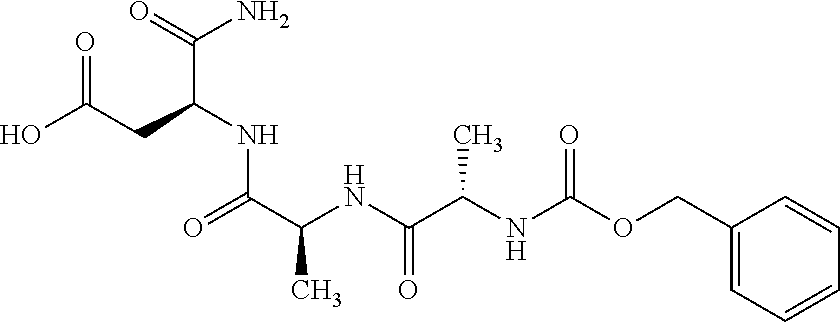
C00704

C00705

C00706

C00707

C00708

C00709

C00710

C00711

C00712

C00713

C00714

C00715

C00716

C00717

C00718

C00719

C00720

C00721
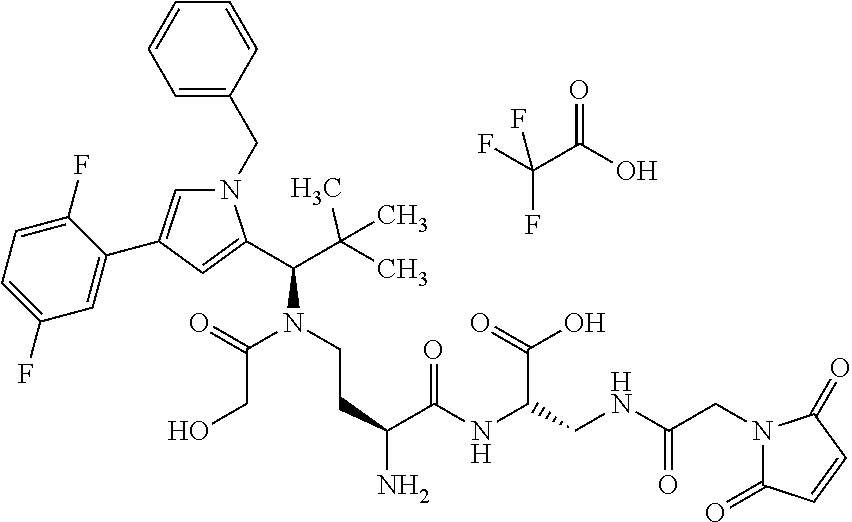
C00722

C00723

C00724

C00725

C00726
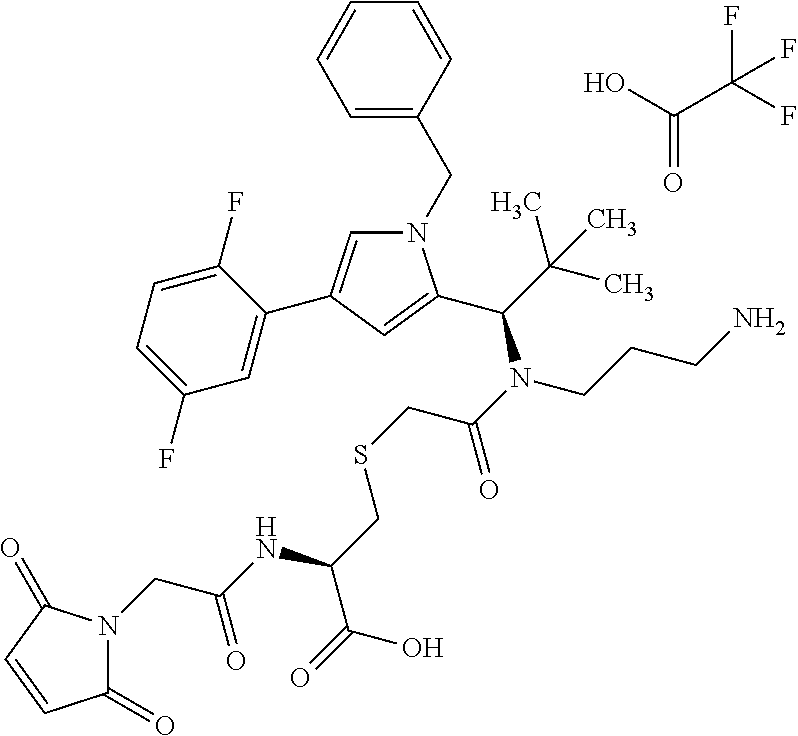
C00727

C00728

C00729
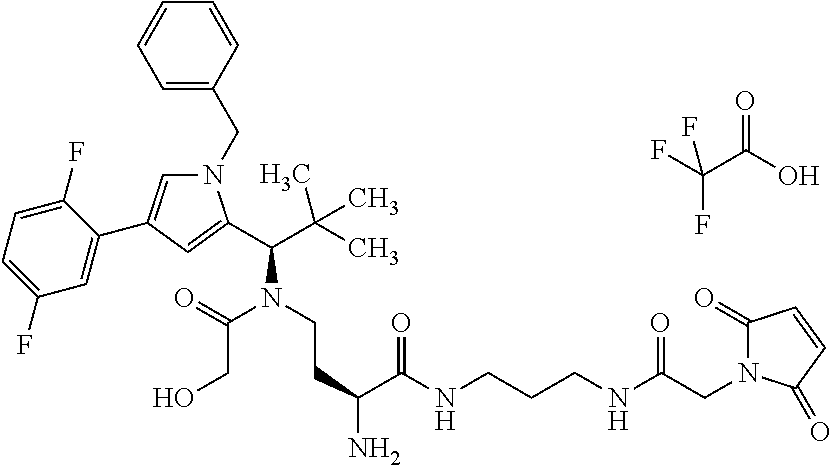
C00730
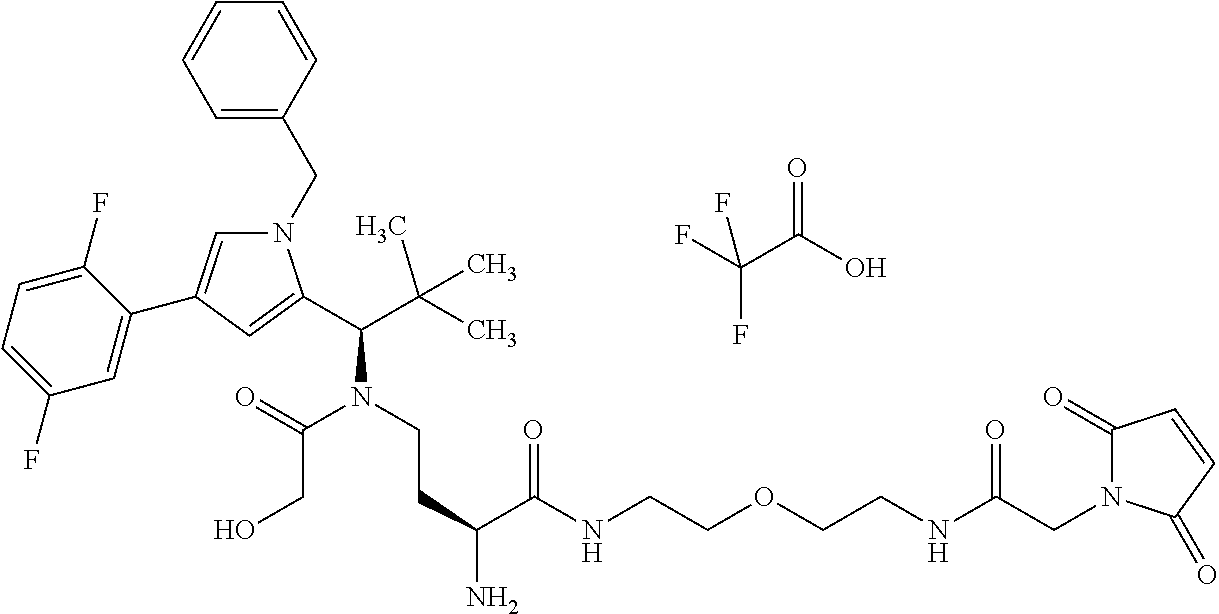
C00731

C00732

C00733

C00734

C00735

C00736

C00737

C00738

C00739

C00740
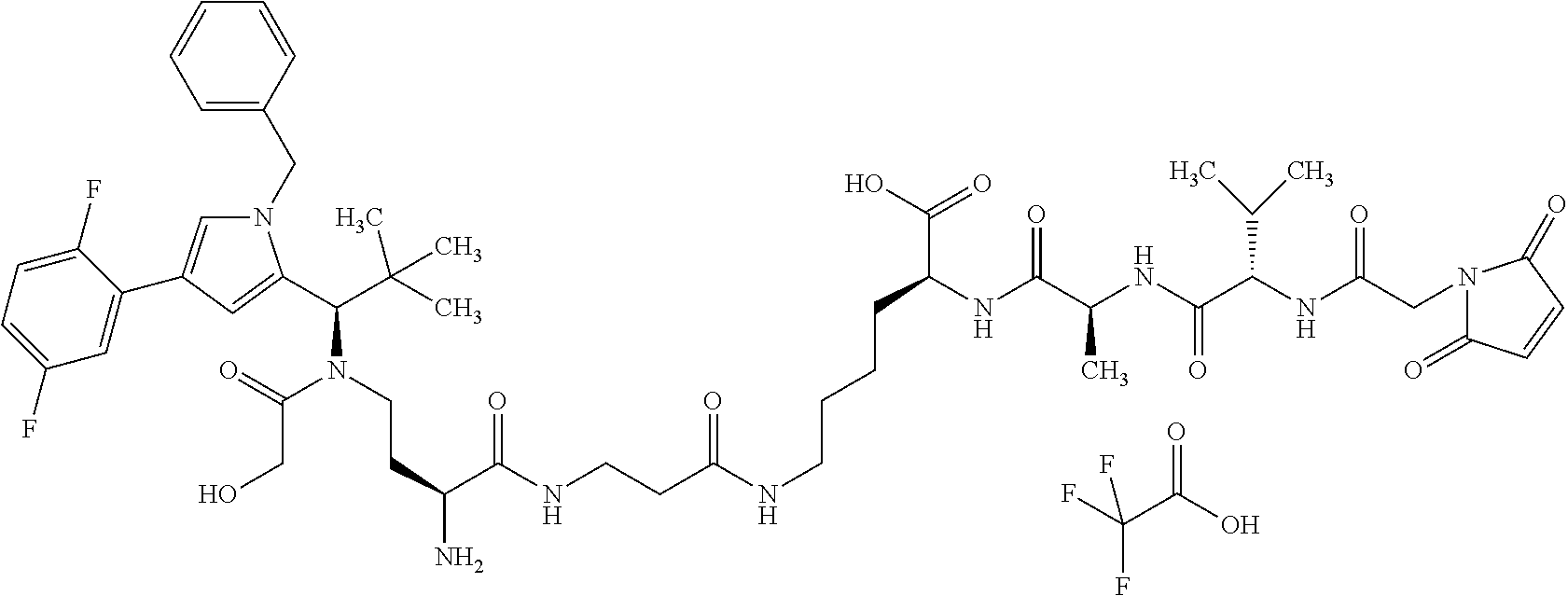
C00741
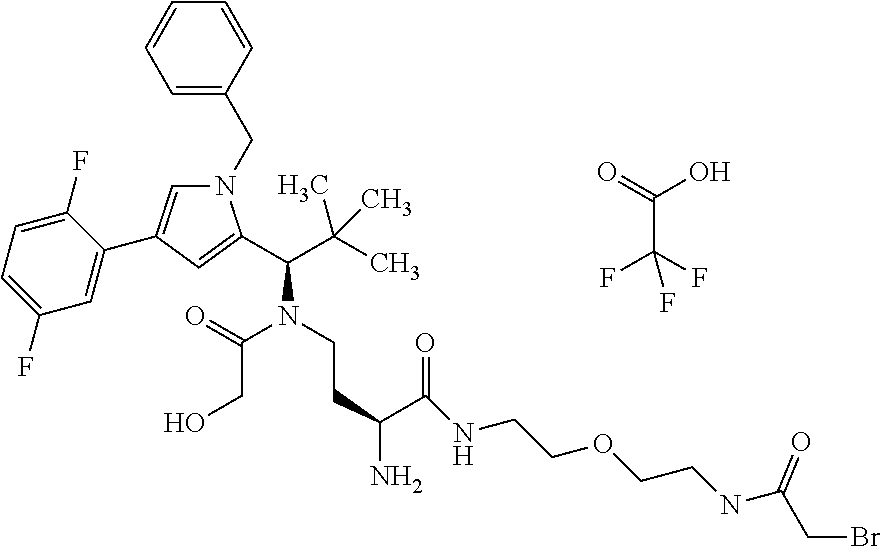
C00742

C00743

C00744

C00745

C00746
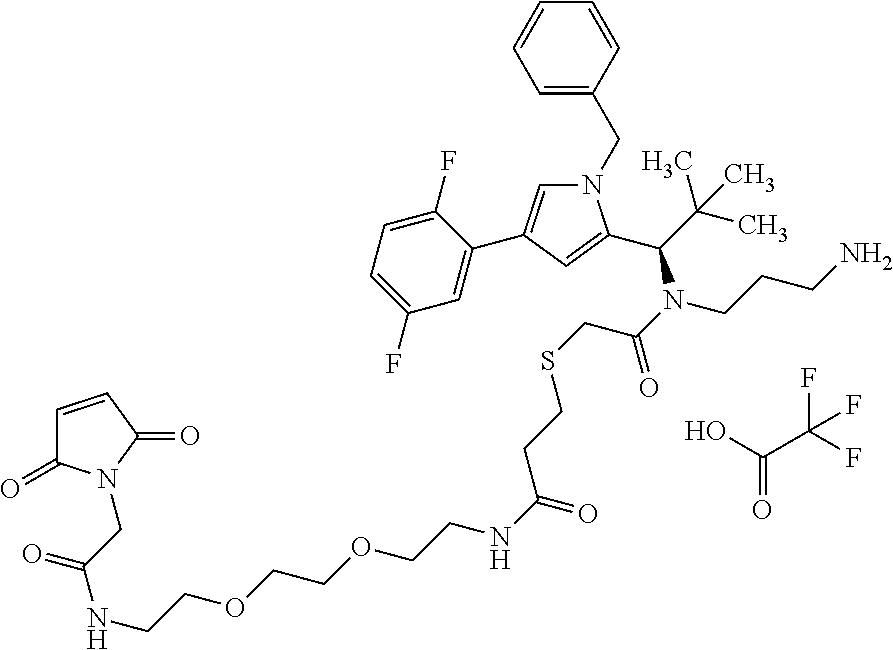
C00747

C00748
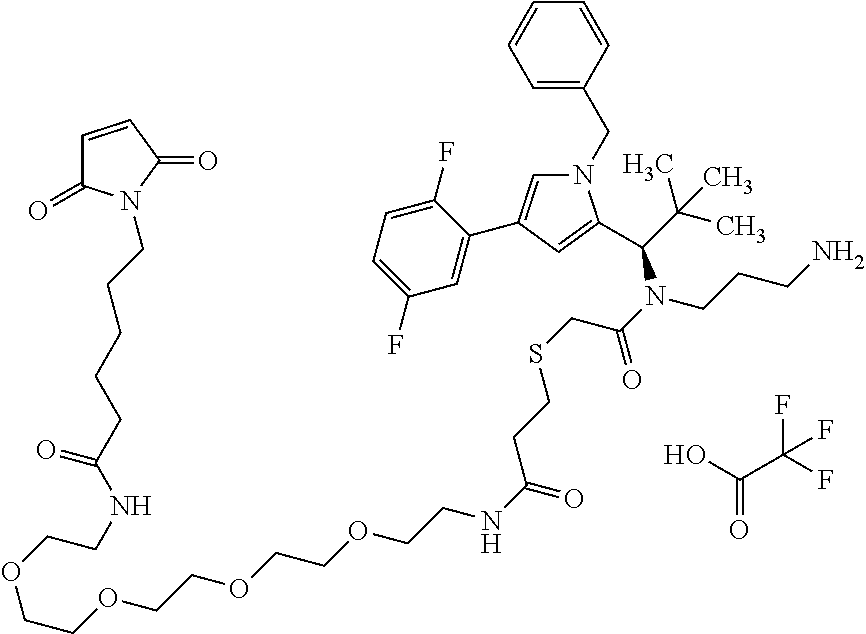
C00749

C00750
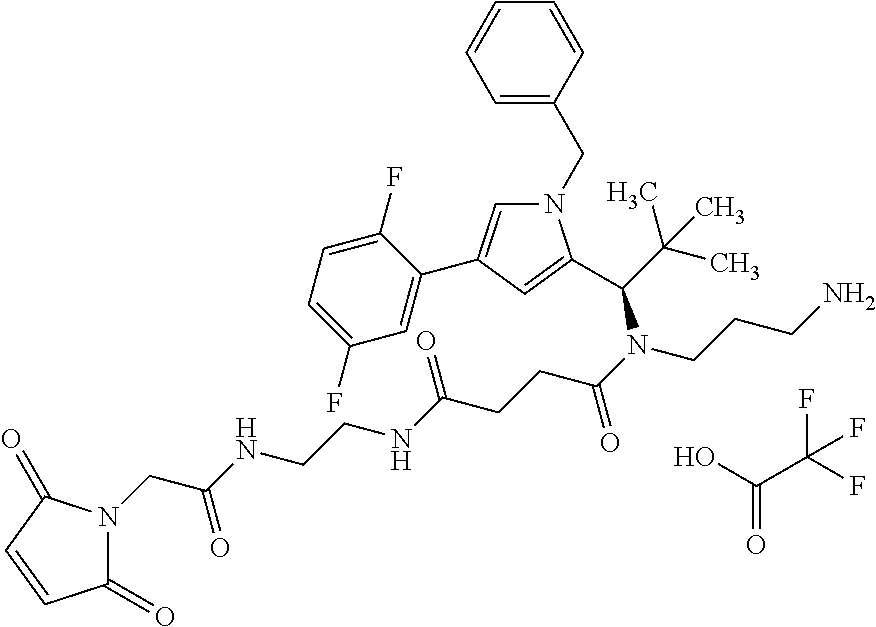
C00751
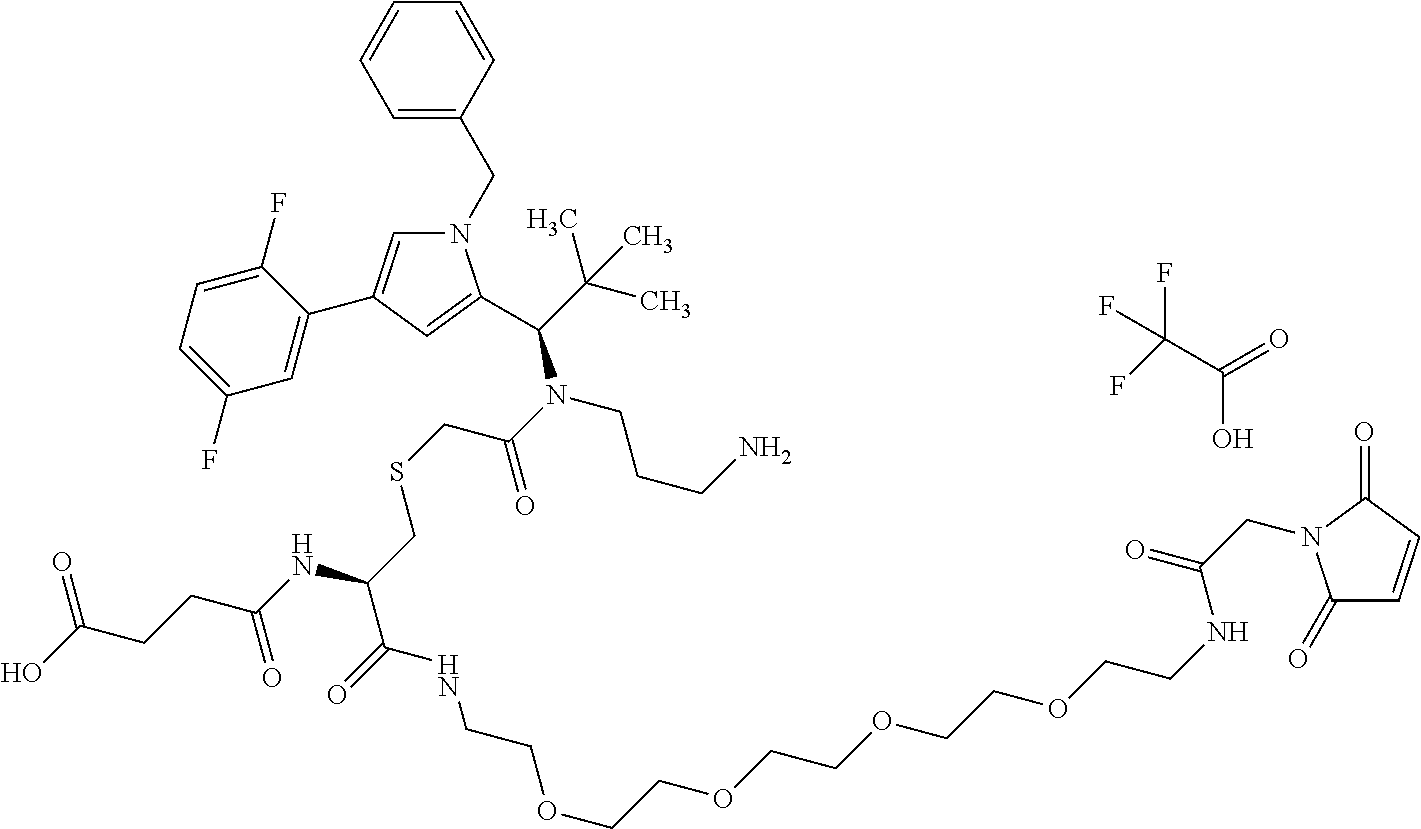
C00752

C00753

C00754

C00755

C00756

C00757

C00758

C00759

C00760

C00761

C00762
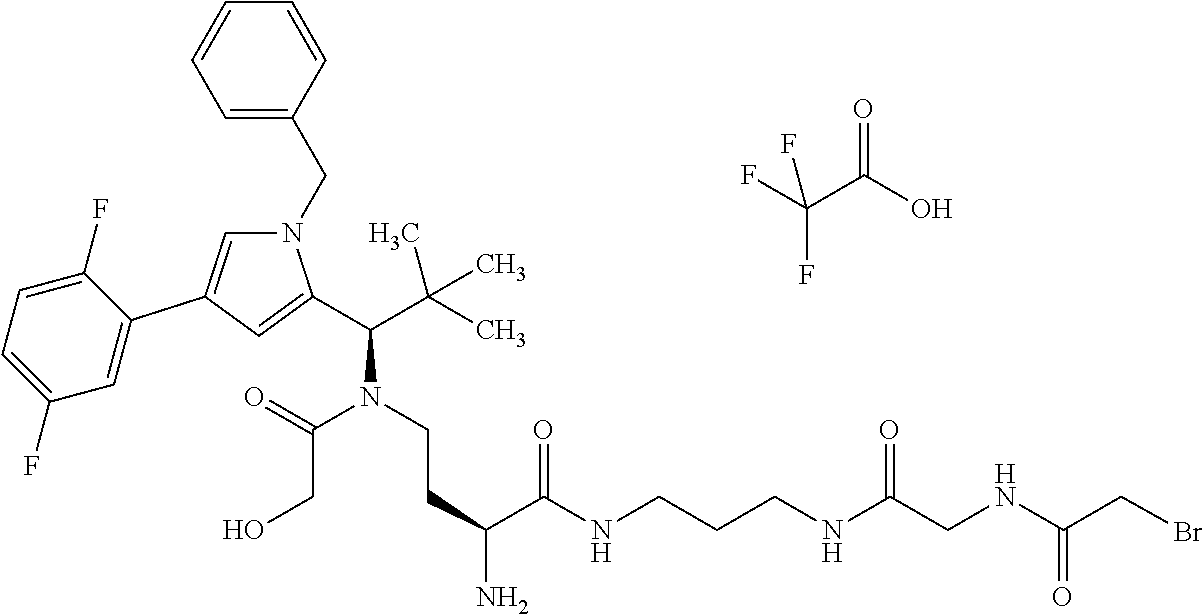
C00763

C00764

C00765

C00766
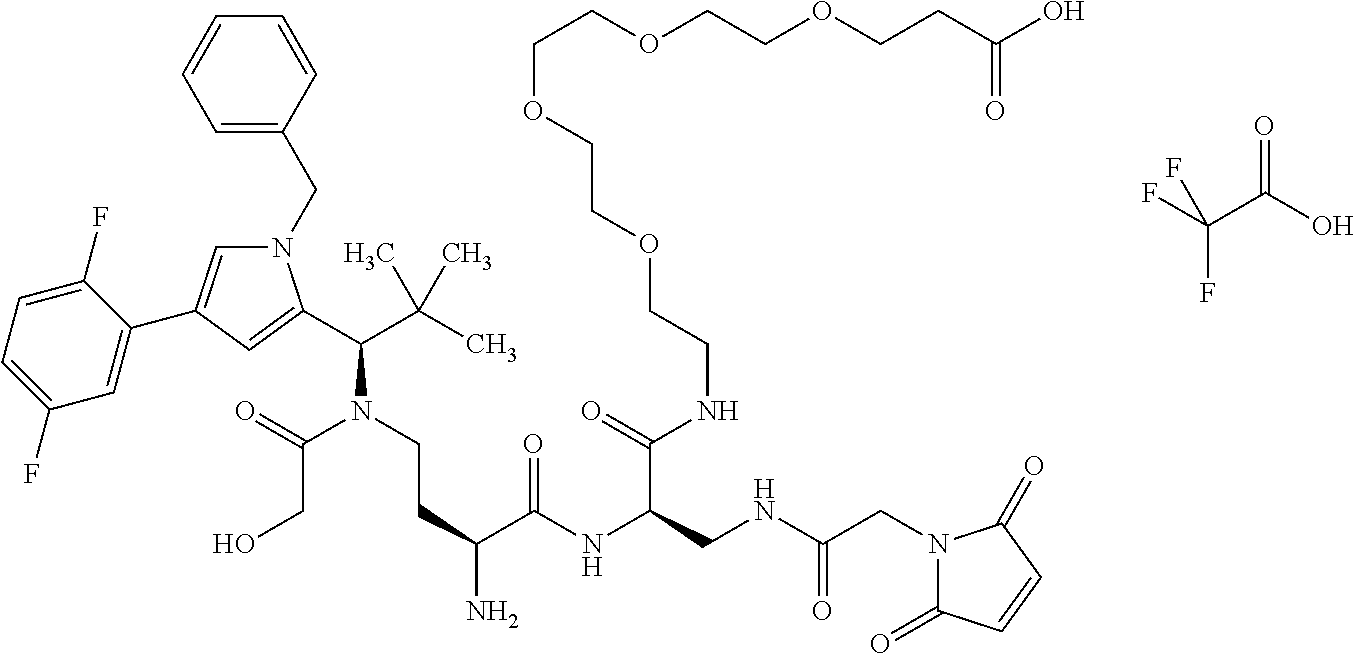
C00767

C00768

C00769

C00770

C00771

C00772

C00773

C00774

C00775

C00776

C00777
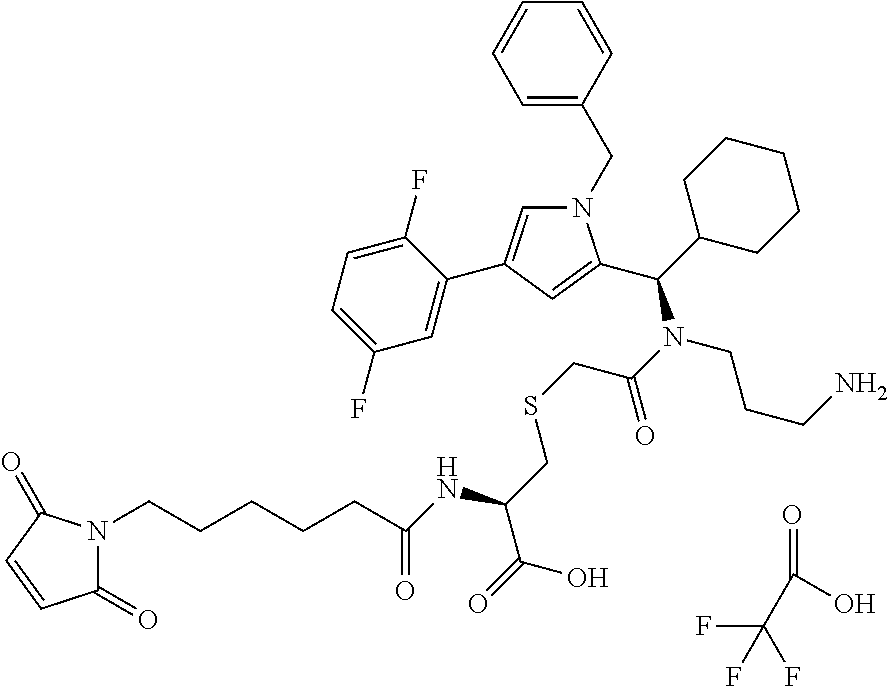
C00778

C00779

C00780

C00781
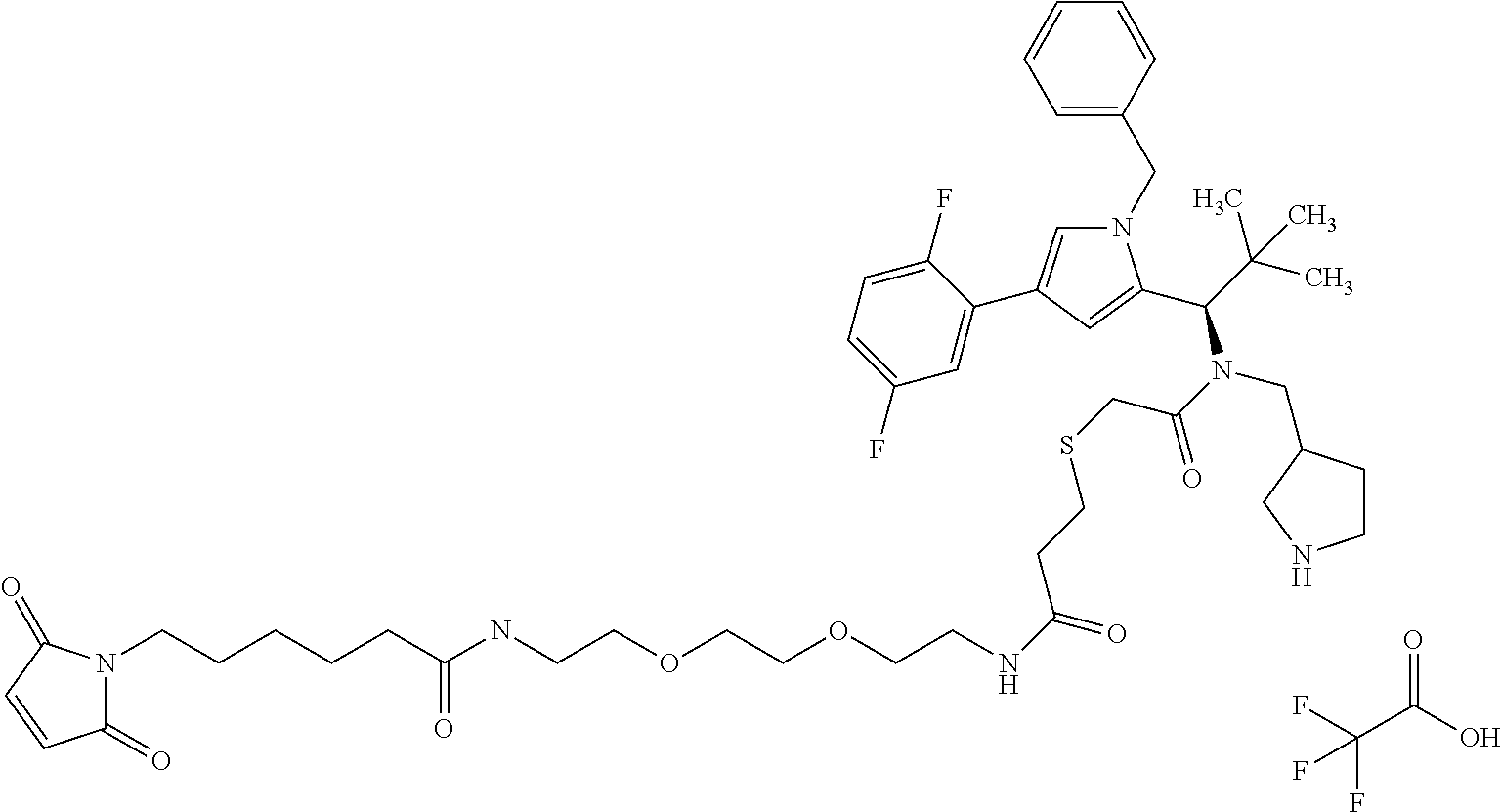
C00782

C00783

C00784

C00785

C00786

C00787
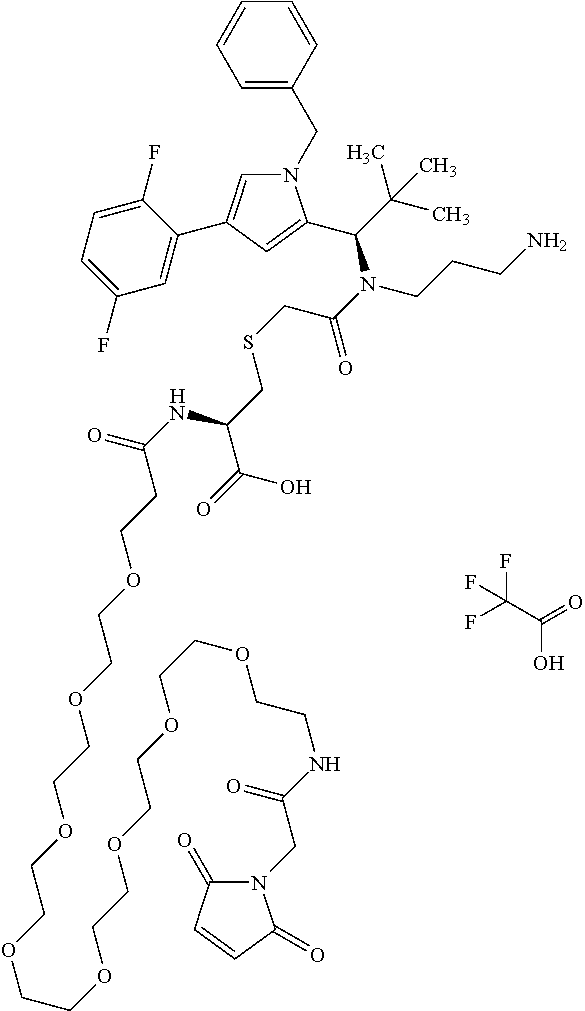
C00788

C00789

C00790

C00791
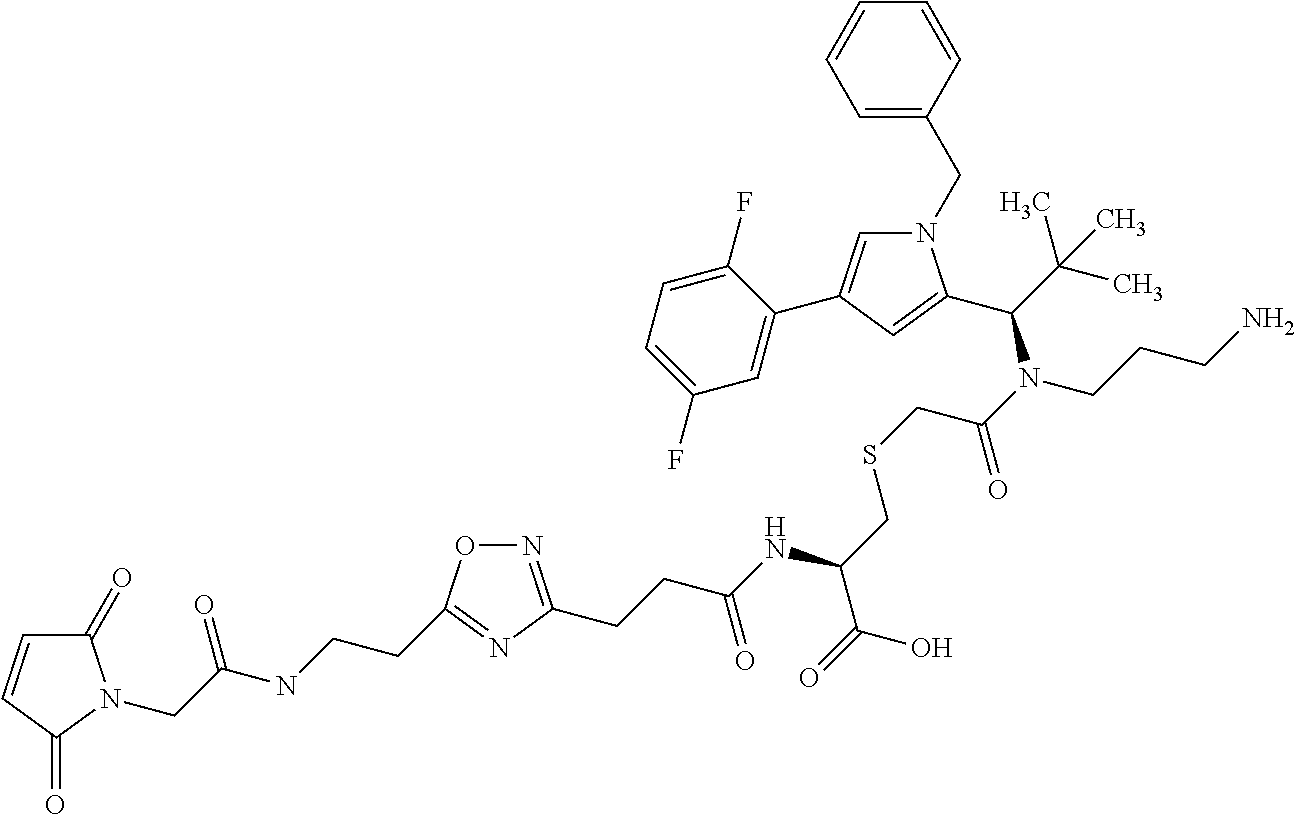
C00792

C00793

C00794

C00795

C00796

C00797

C00798
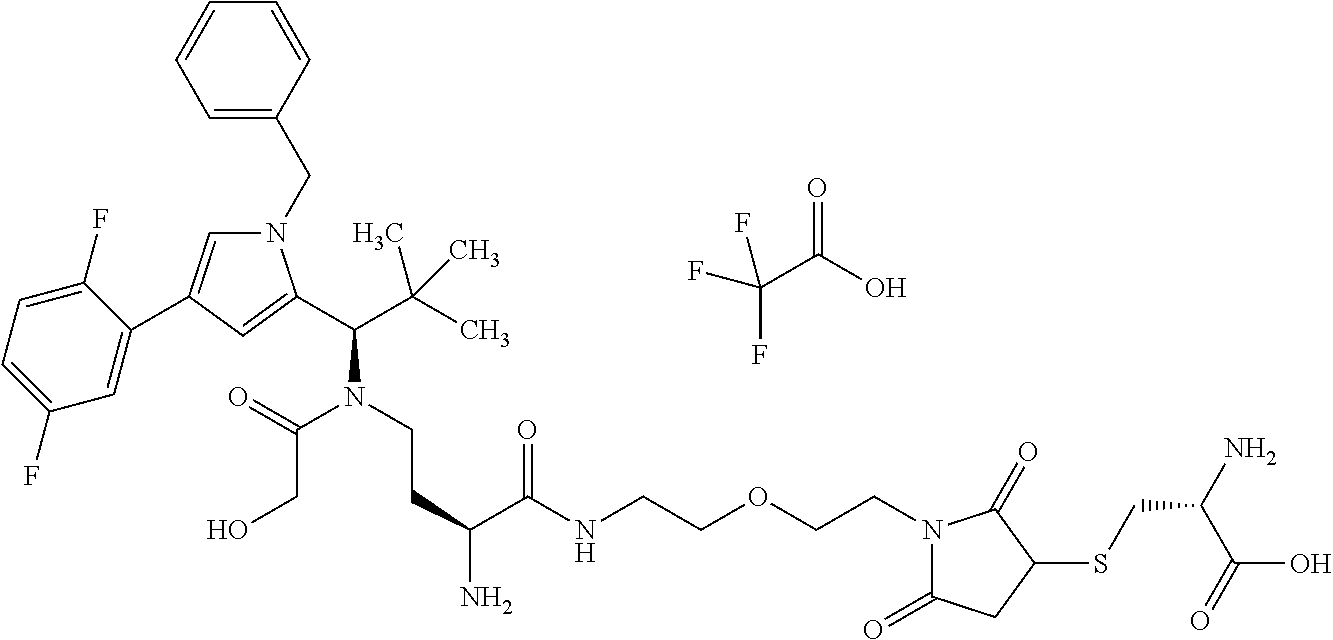
C00799

C00800

C00801

C00802

C00803

C00804

C00805
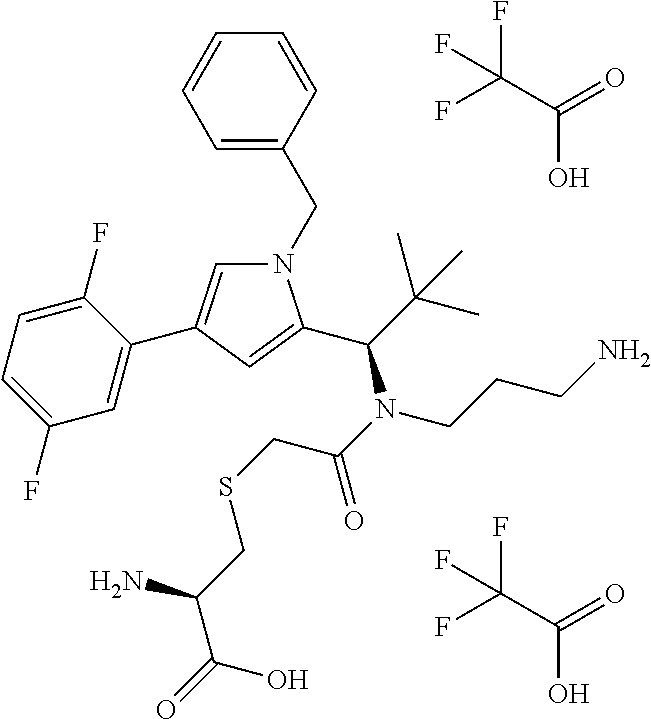
C00806

C00807
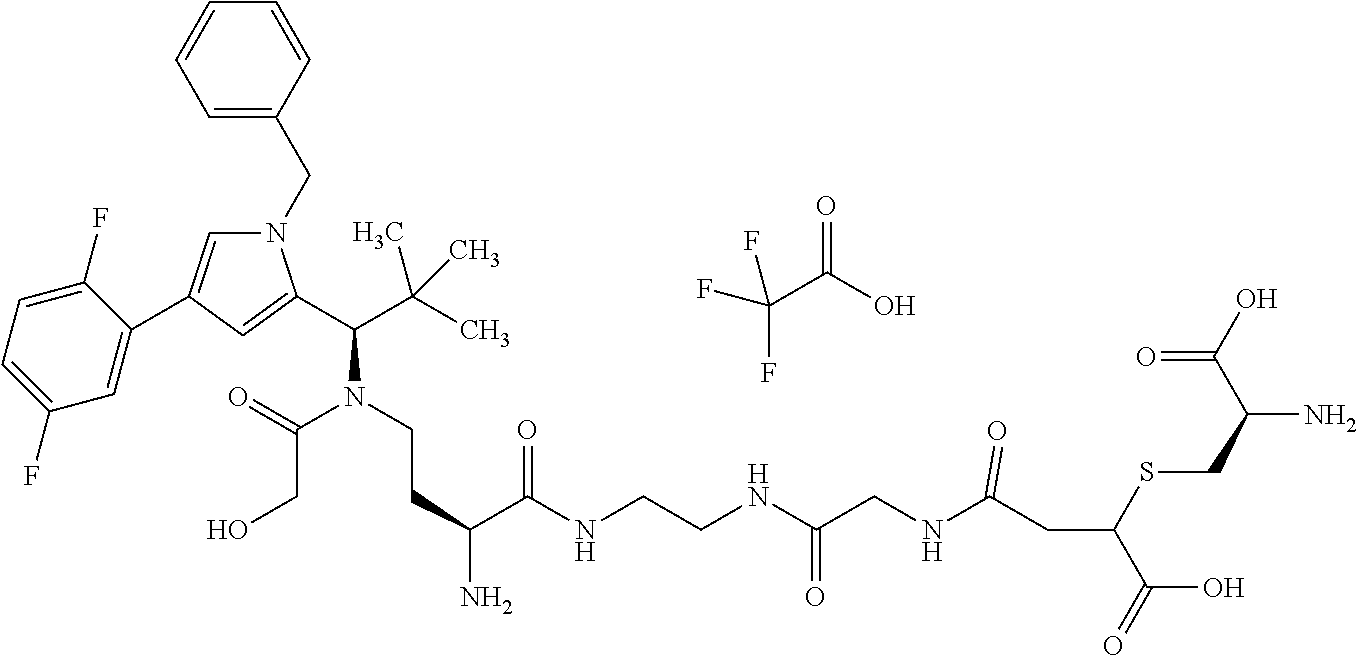
C00808

C00809

C00810

C00811

C00812

C00813

C00814
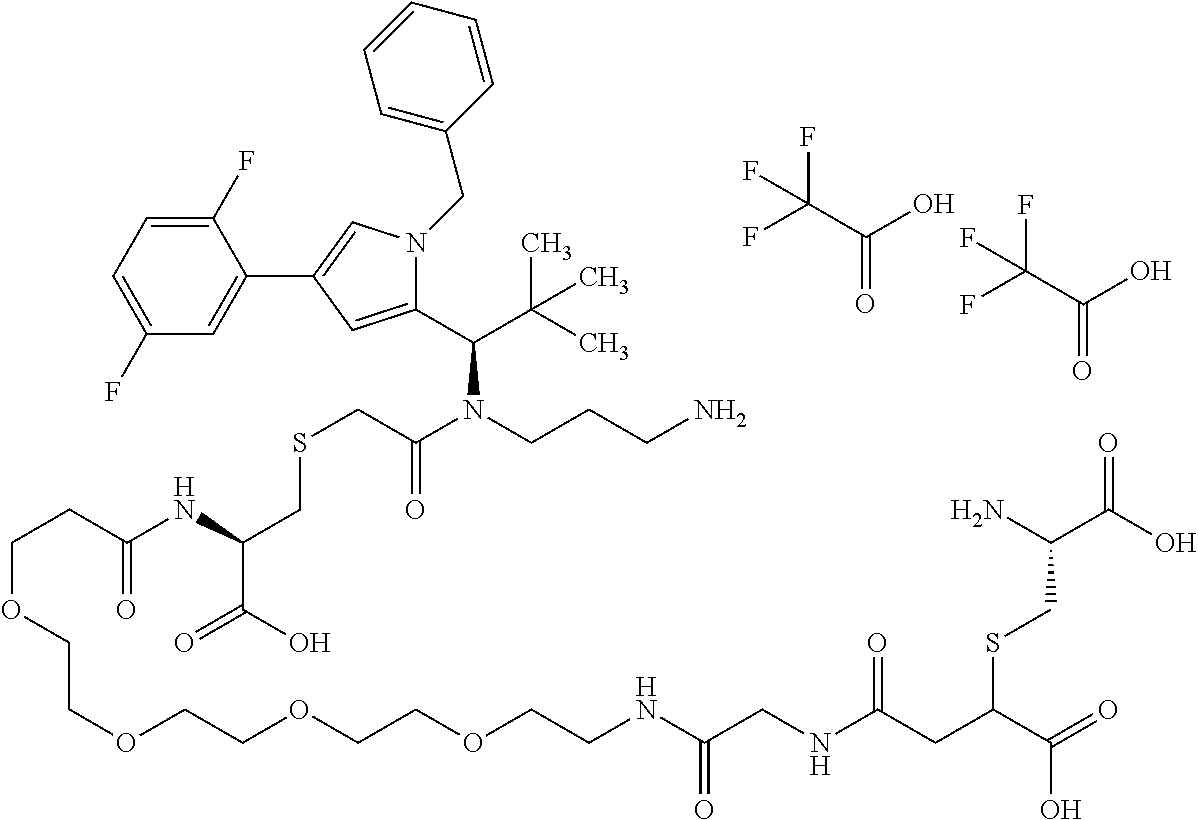
C00815

C00816

C00817

C00818
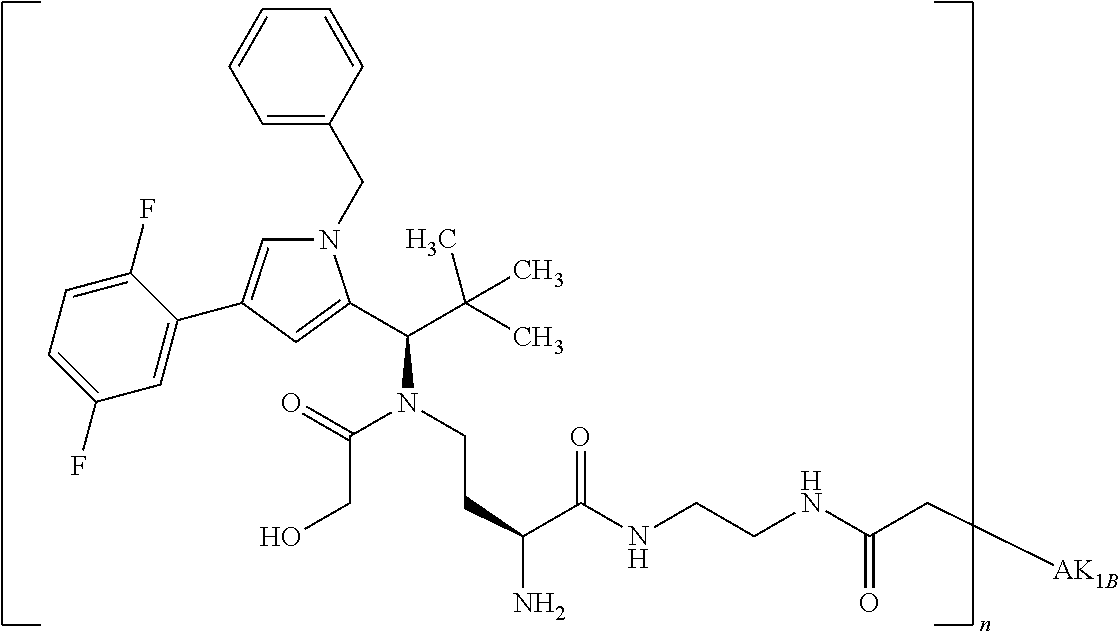
C00819

C00820

C00821

C00822

C00823

C00824

C00825

C00826

C00827
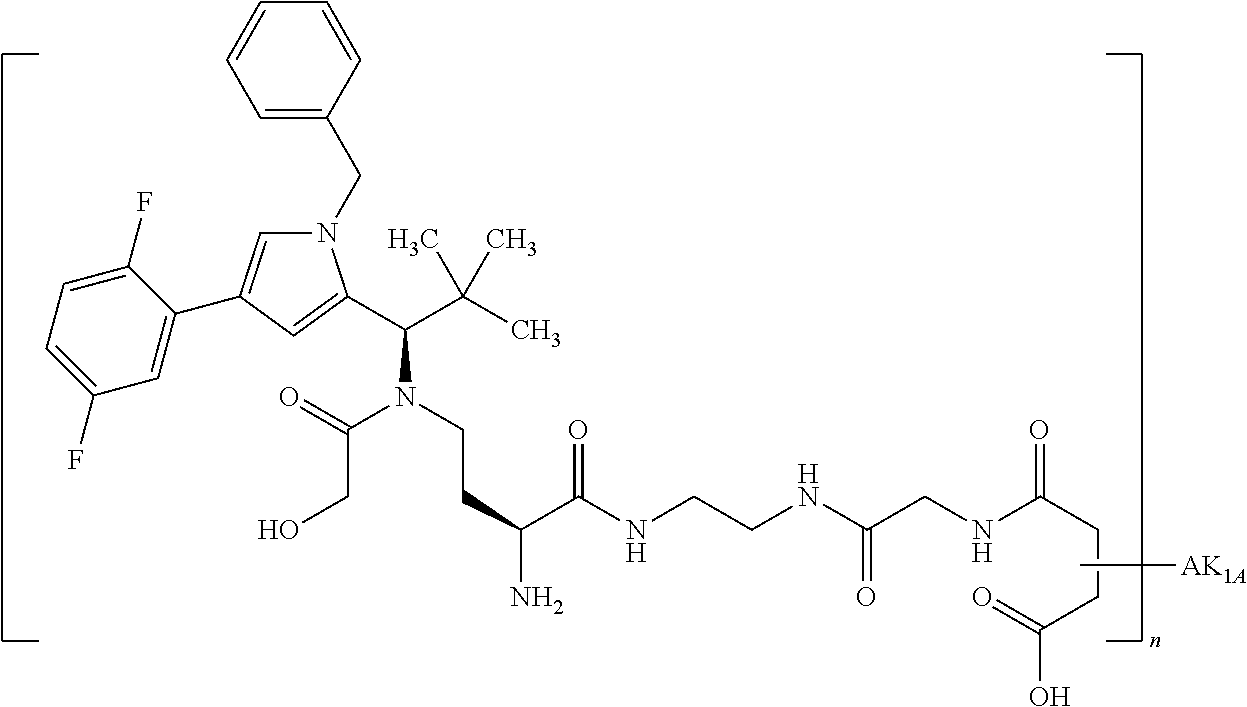
C00828

C00829

C00830

C00831
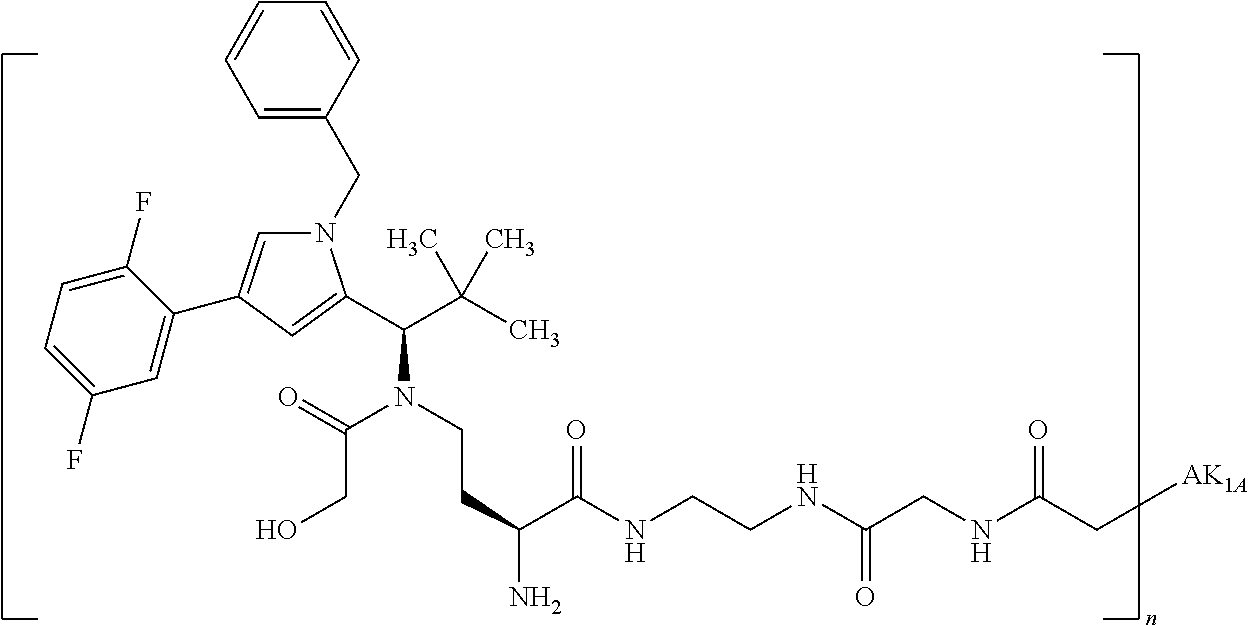
C00832
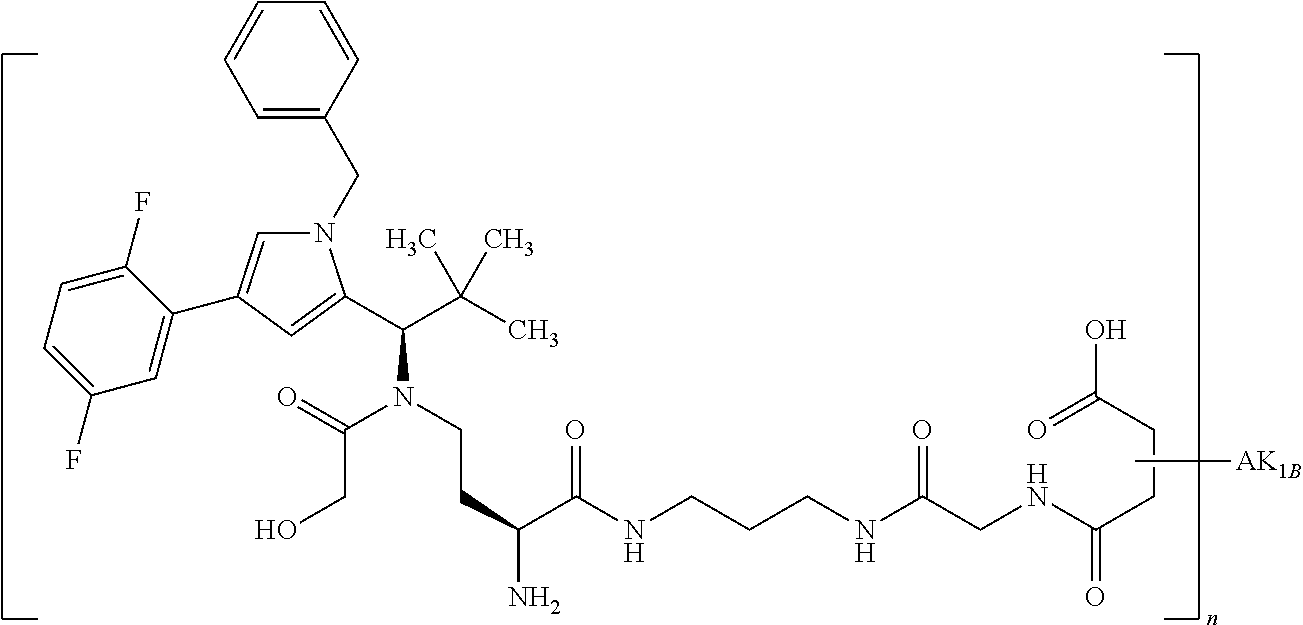
C00833

C00834

C00835

C00836

C00837

C00838
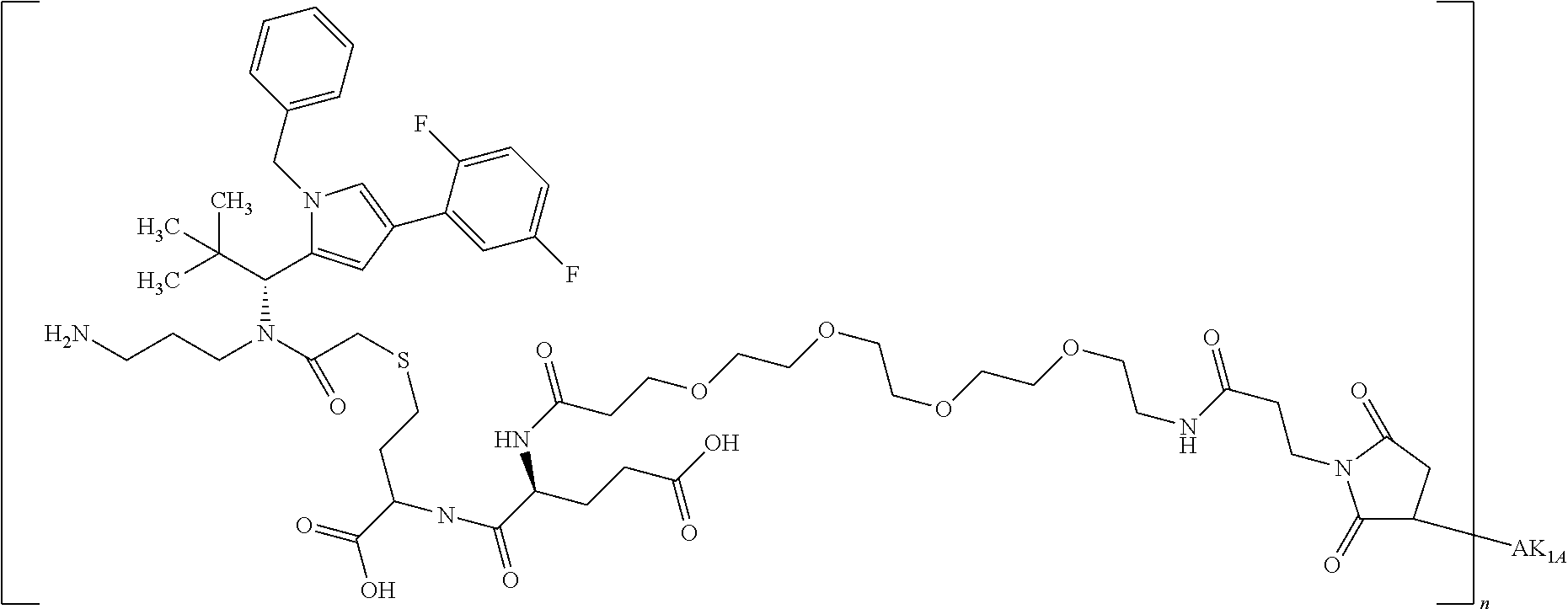
C00839
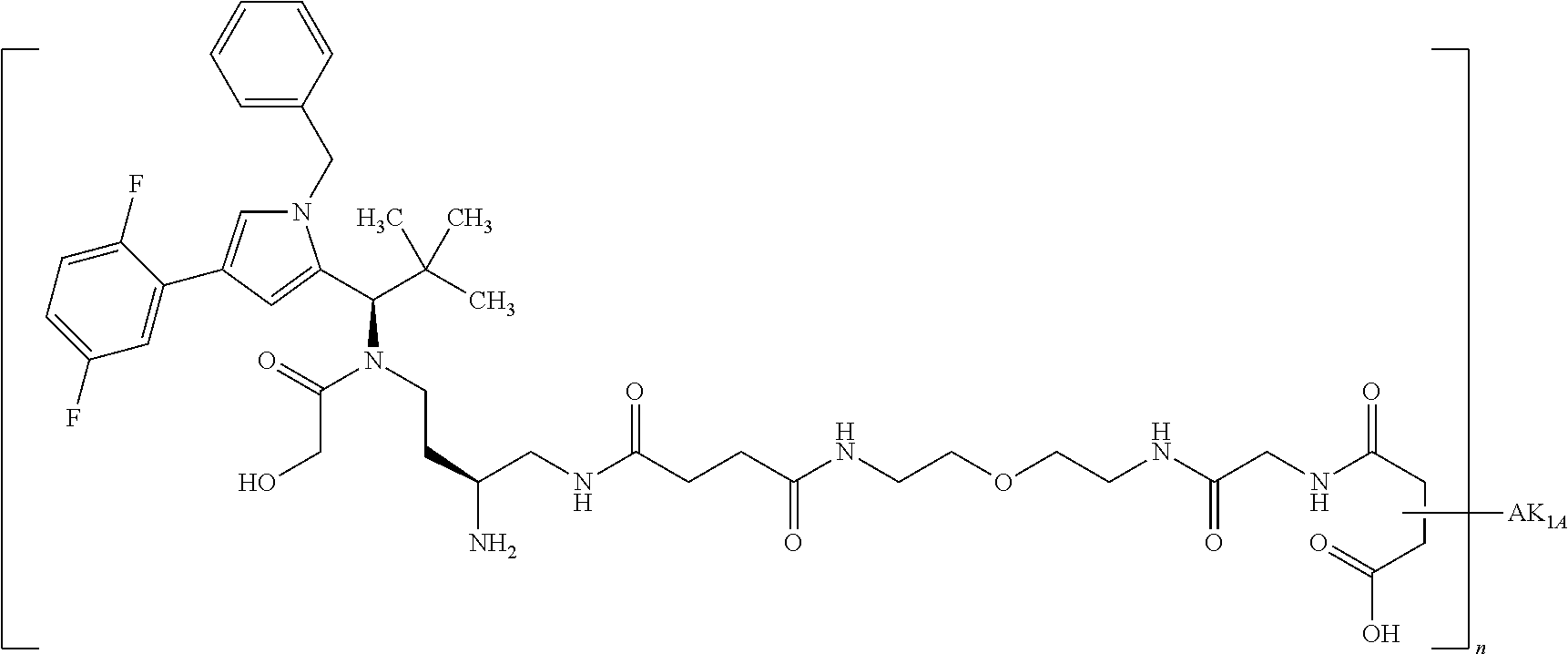
C00840
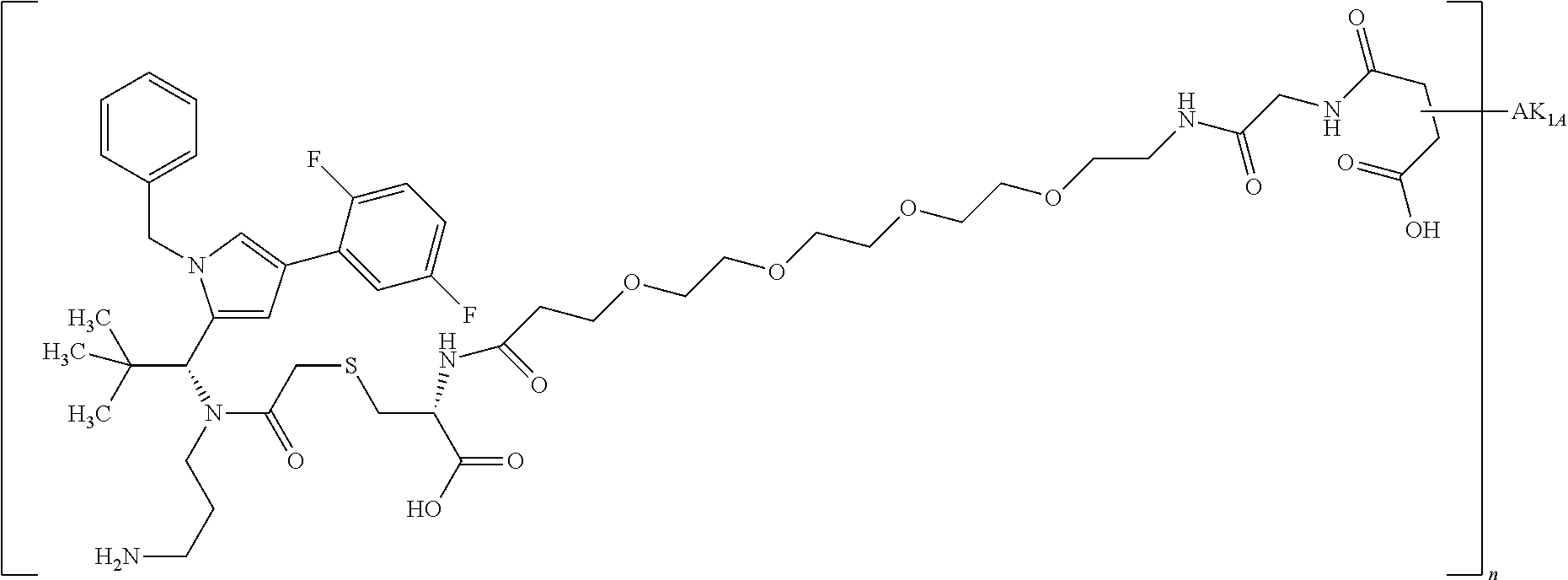
C00841

C00842

C00843

C00844

C00845

C00846
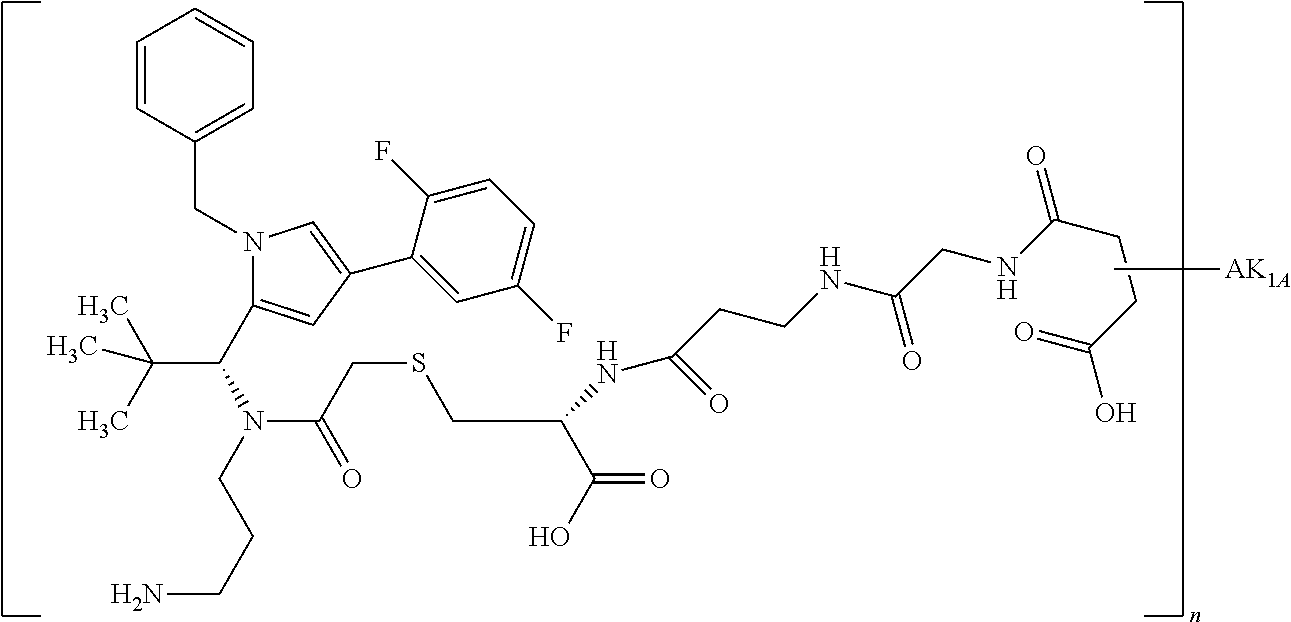
C00847
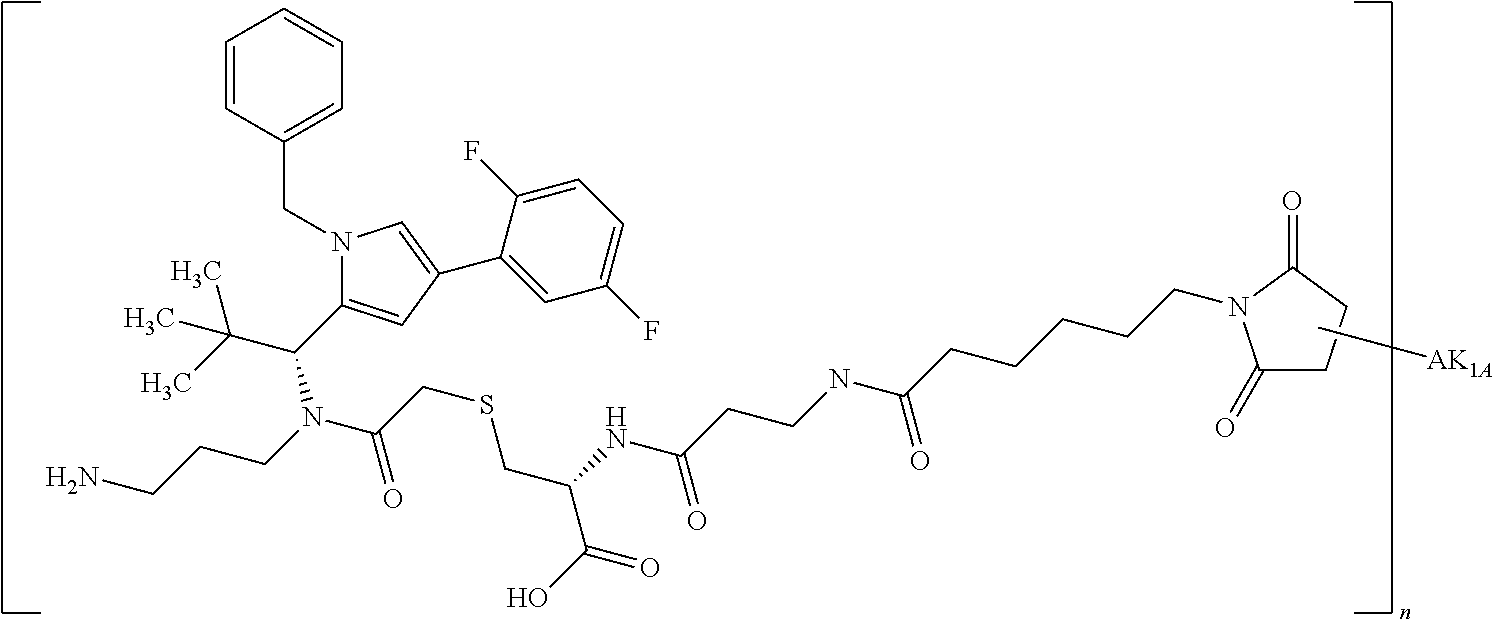
C00848

C00849

C00850

C00851
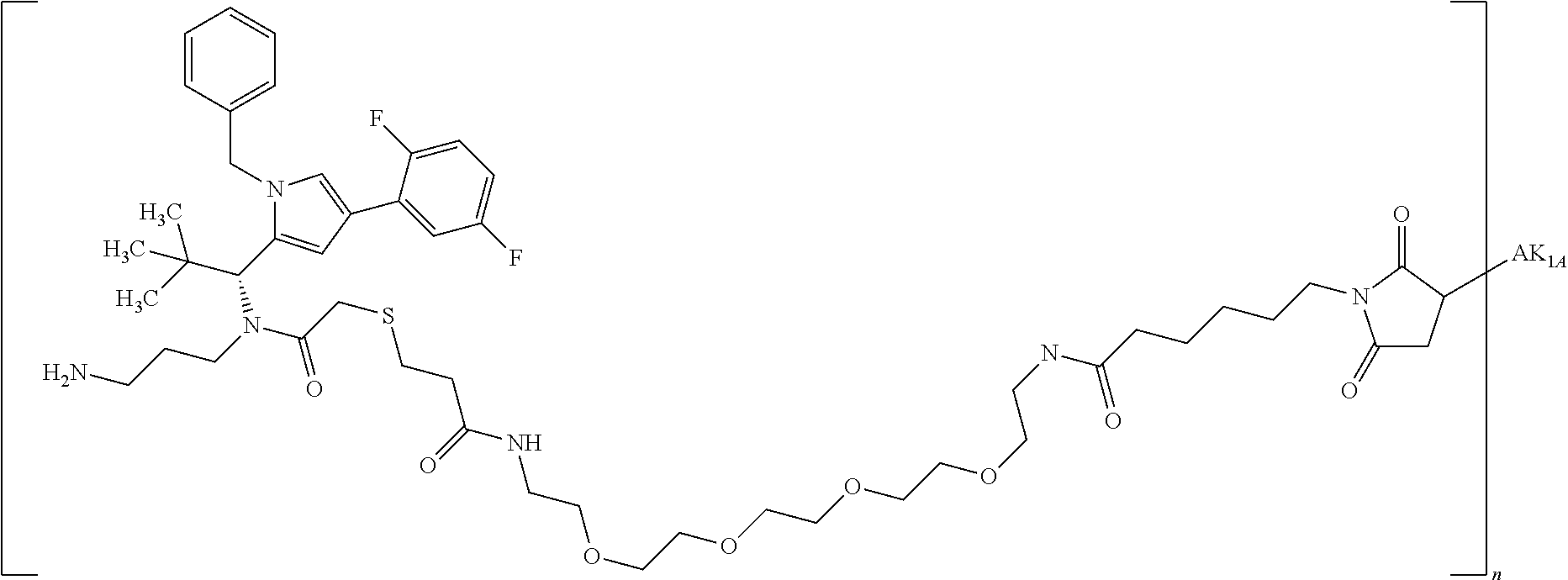
C00852

C00853

C00854

C00855

C00856
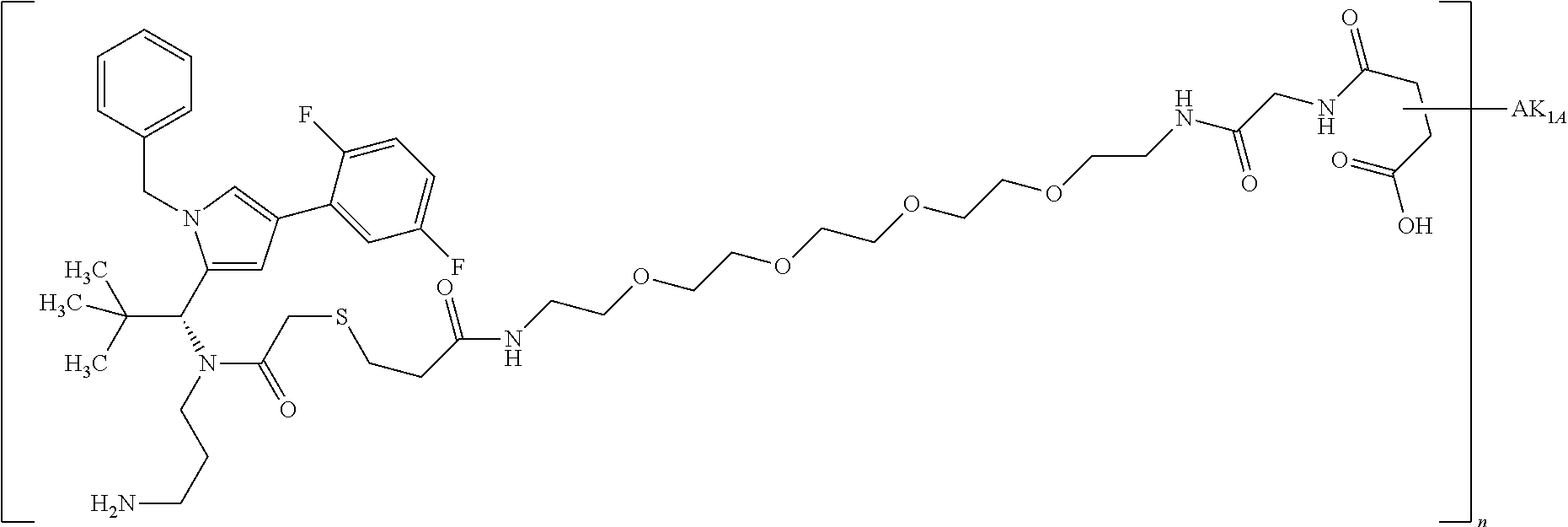
C00857

C00858

C00859

C00860

C00861

C00862

C00863

C00864

C00865

C00866
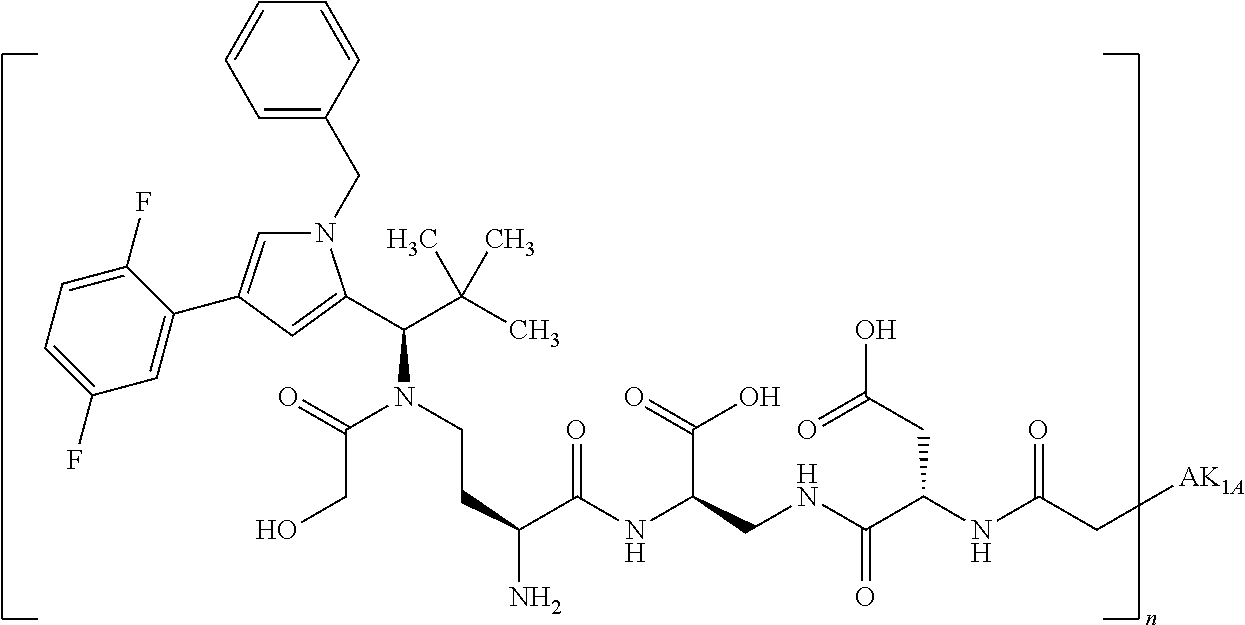
C00867

C00868

C00869

C00870

C00871

C00872

C00873

C00874
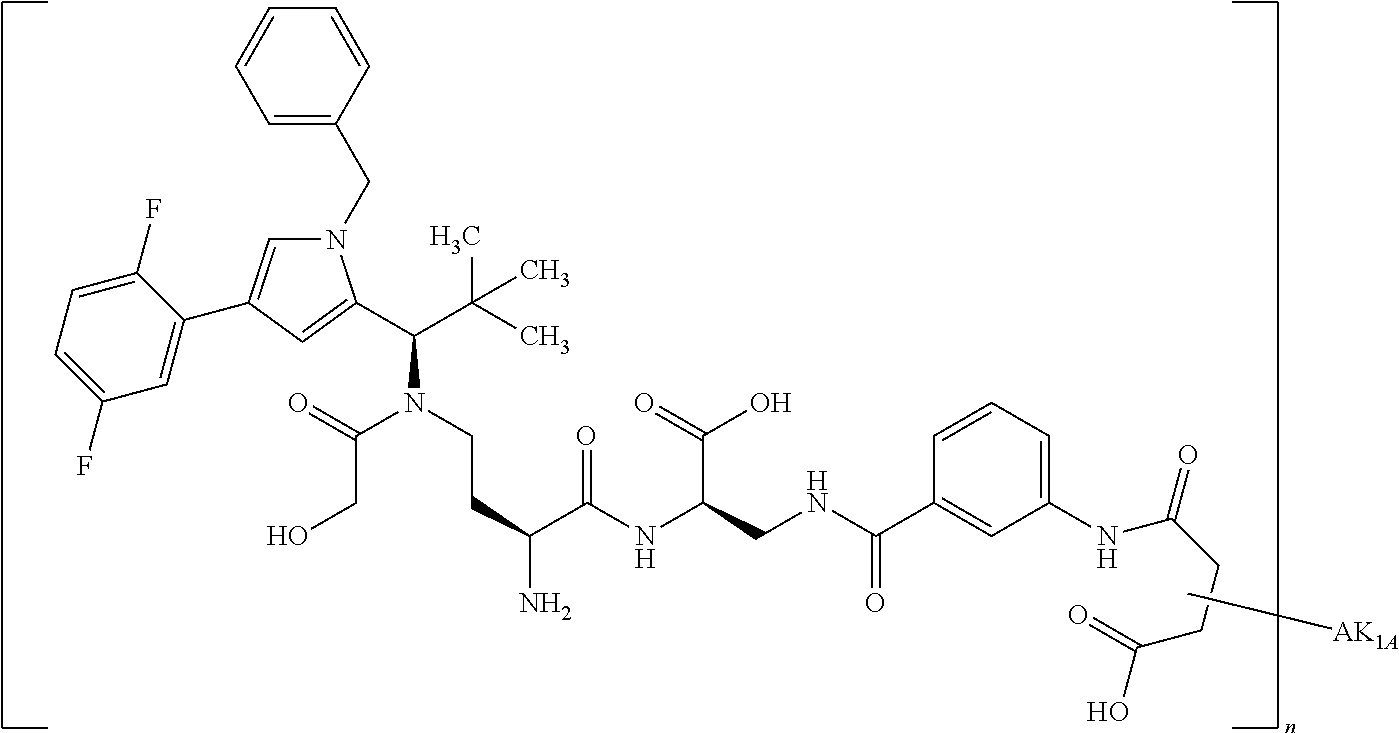
C00875

C00876

C00877
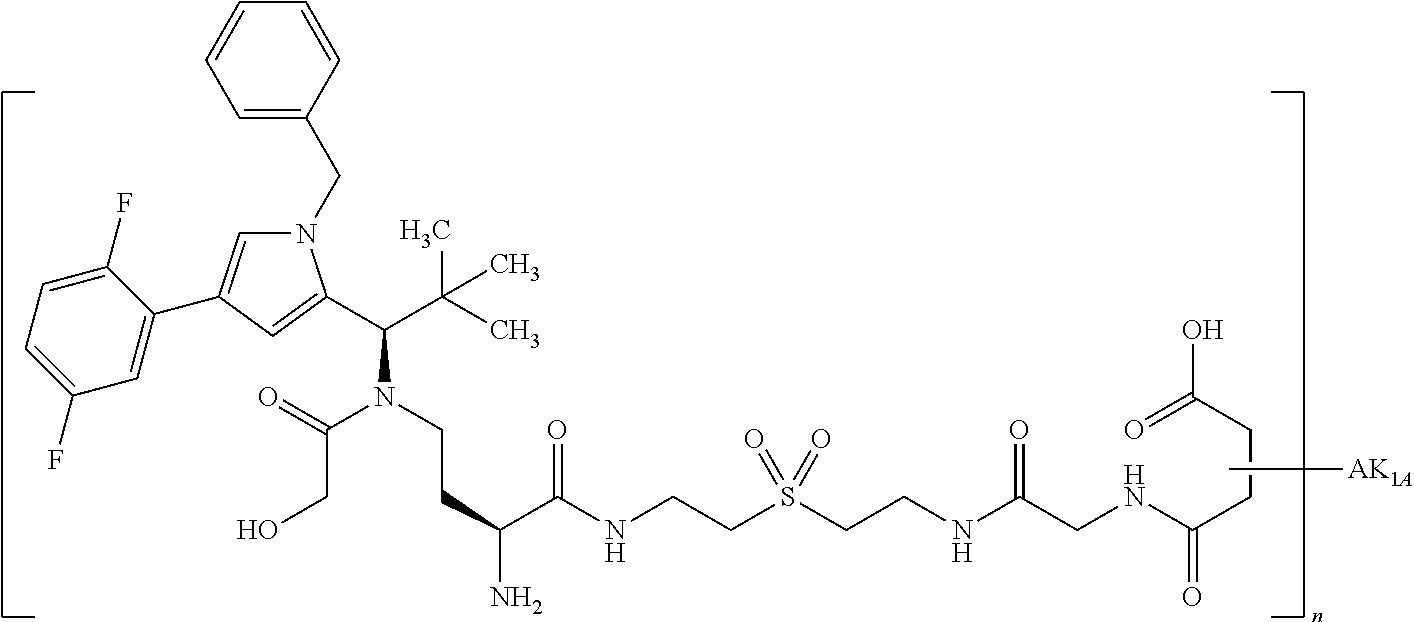
C00878

C00879

C00880

C00881

C00882

C00883

C00884

C00885

C00886

C00887

C00888

C00889

C00890

C00891

C00892

C00893

C00894

C00895

C00896

C00897

C00898

C00899

C00900

C00901

C00902

C00903

C00904

C00905

C00906

C00907

C00908

C00909

C00910

C00911

D00000

D00001
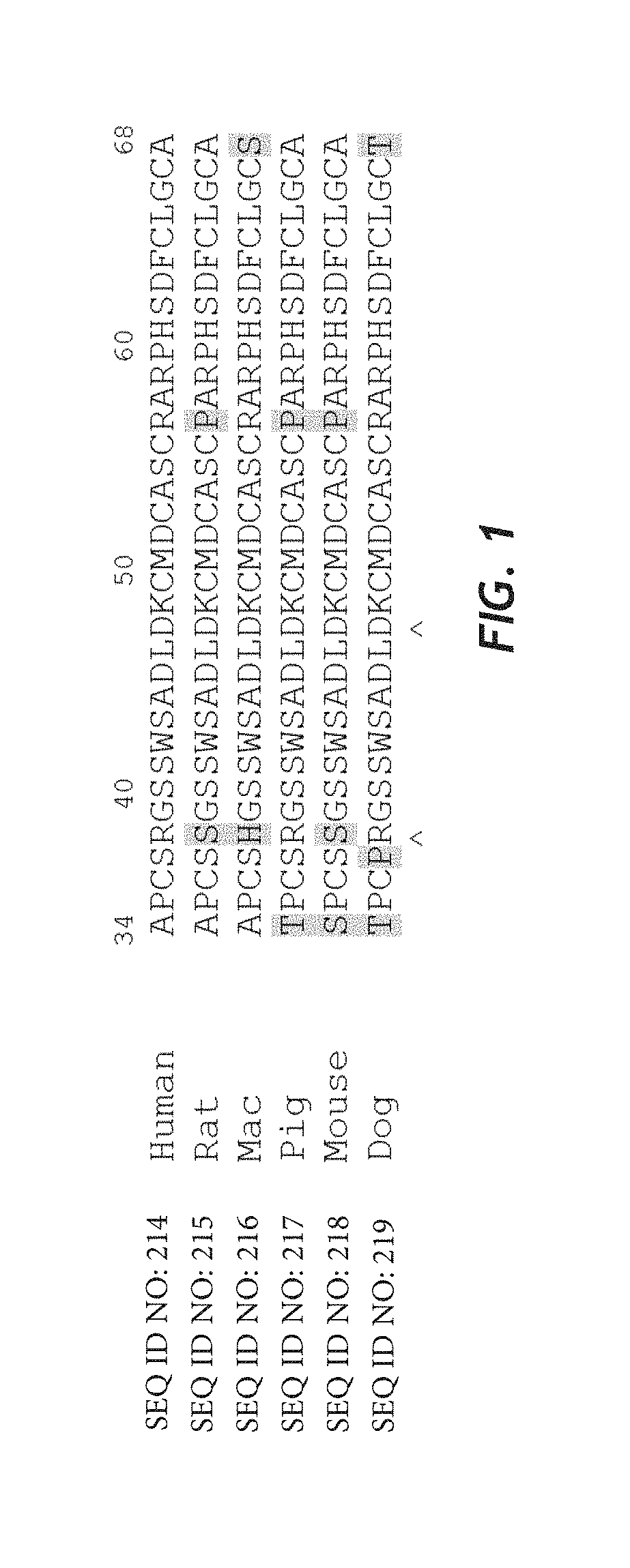
D00002

P00001

S00001
XML
uspto.report is an independent third-party trademark research tool that is not affiliated, endorsed, or sponsored by the United States Patent and Trademark Office (USPTO) or any other governmental organization. The information provided by uspto.report is based on publicly available data at the time of writing and is intended for informational purposes only.
While we strive to provide accurate and up-to-date information, we do not guarantee the accuracy, completeness, reliability, or suitability of the information displayed on this site. The use of this site is at your own risk. Any reliance you place on such information is therefore strictly at your own risk.
All official trademark data, including owner information, should be verified by visiting the official USPTO website at www.uspto.gov. This site is not intended to replace professional legal advice and should not be used as a substitute for consulting with a legal professional who is knowledgeable about trademark law.